My most current blog entry:
Entries in USA Road Trip (21)
Road Trip USA: Five Days Camping in the Buttermilk Country
 Wednesday, February 6, 2019 at 8:21AM
Wednesday, February 6, 2019 at 8:21AM 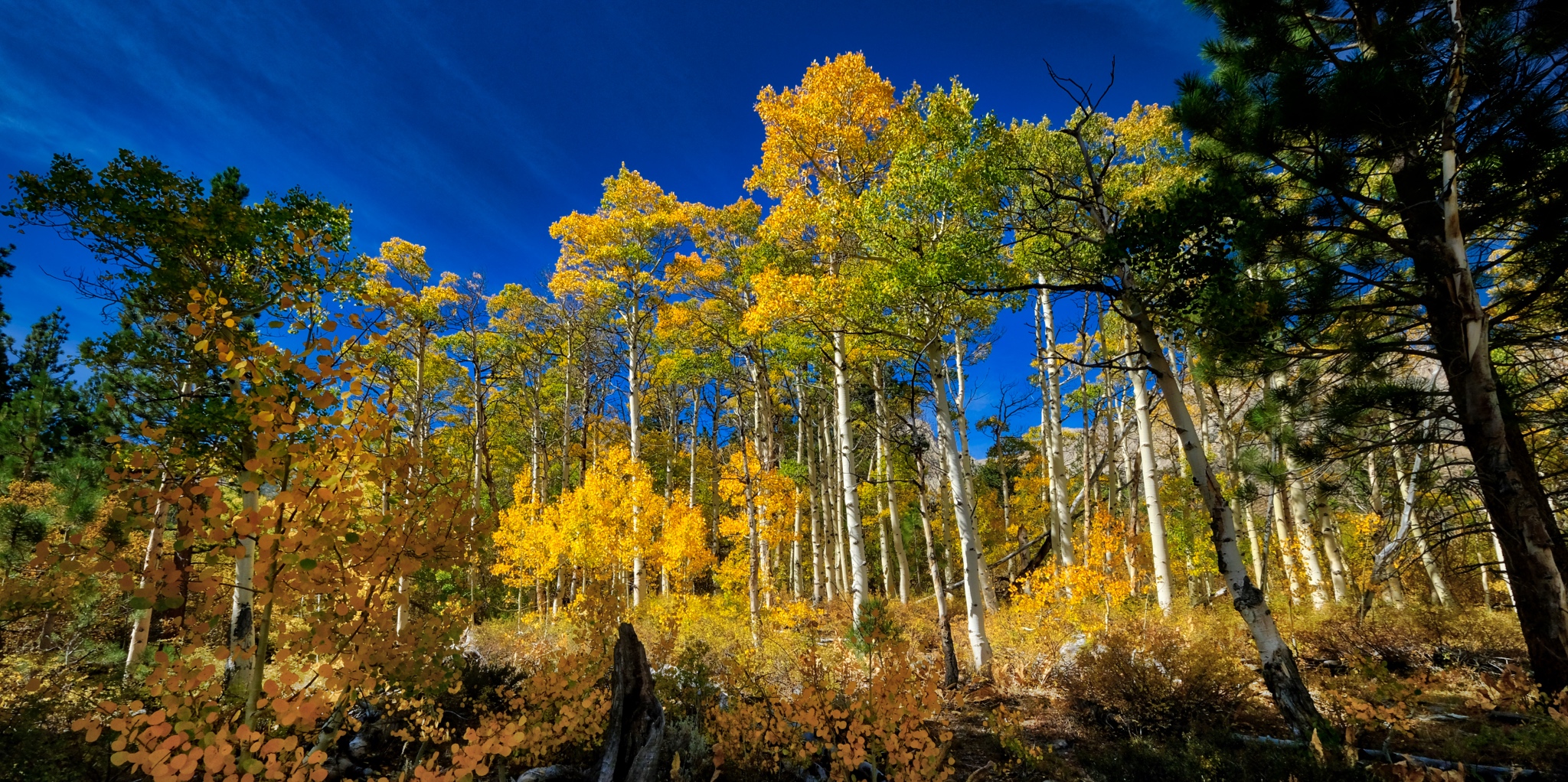

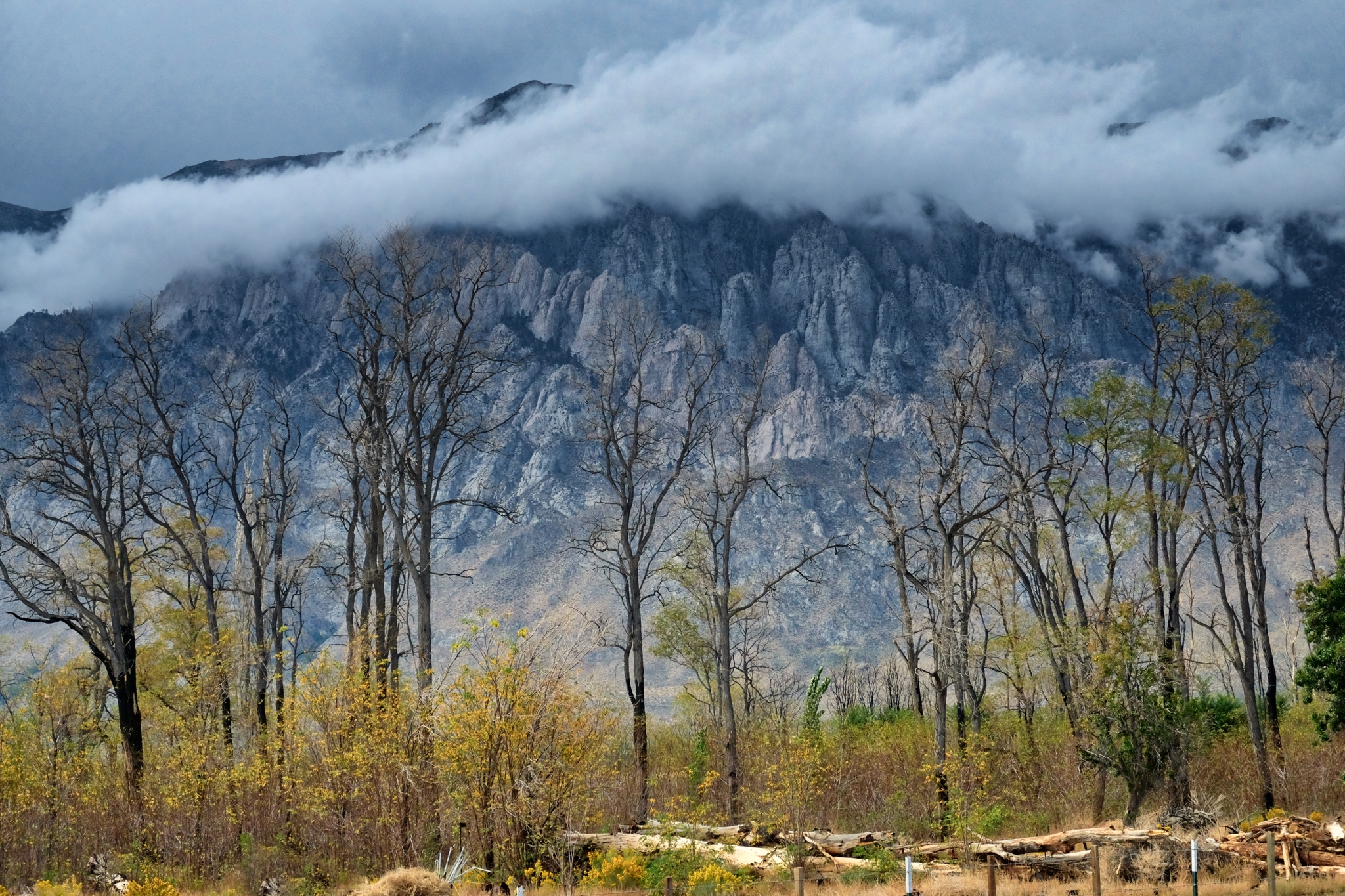

_______________________________________________
DAY ONE: Leaving Swall Meadows for the Buttermilk Country of the Eastern Sierra Nevada Mountains, California. Early September 2018.
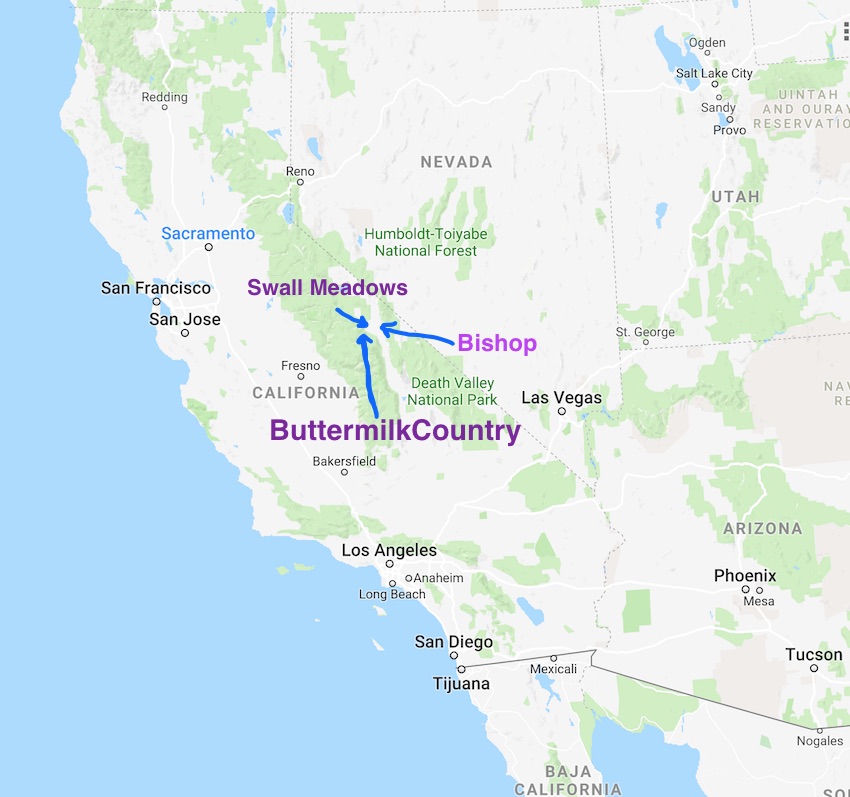 My adventure in the high Buttermilk Country of the far eastern Sierra Nevada Mountains in California began at the home of good friends in Swall Meadows.
My adventure in the high Buttermilk Country of the far eastern Sierra Nevada Mountains in California began at the home of good friends in Swall Meadows.
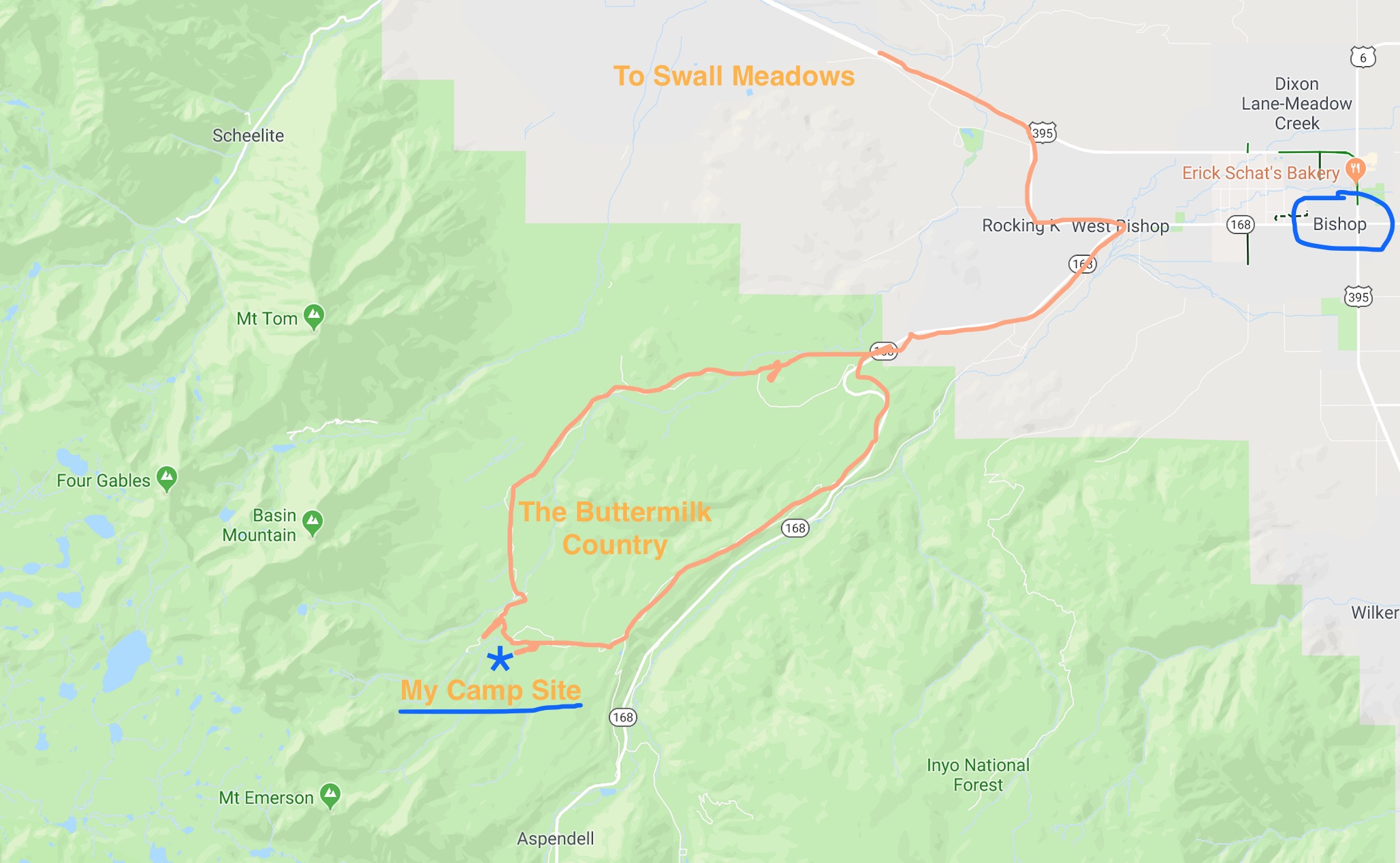 I left the small village of Swall Meadows one clear morning and drove to Bishop, California and then up State Highway 168 before turning up the jeep tracks to my camp site in an aspen grove high in the Buttermilk Country.
I left the small village of Swall Meadows one clear morning and drove to Bishop, California and then up State Highway 168 before turning up the jeep tracks to my camp site in an aspen grove high in the Buttermilk Country.
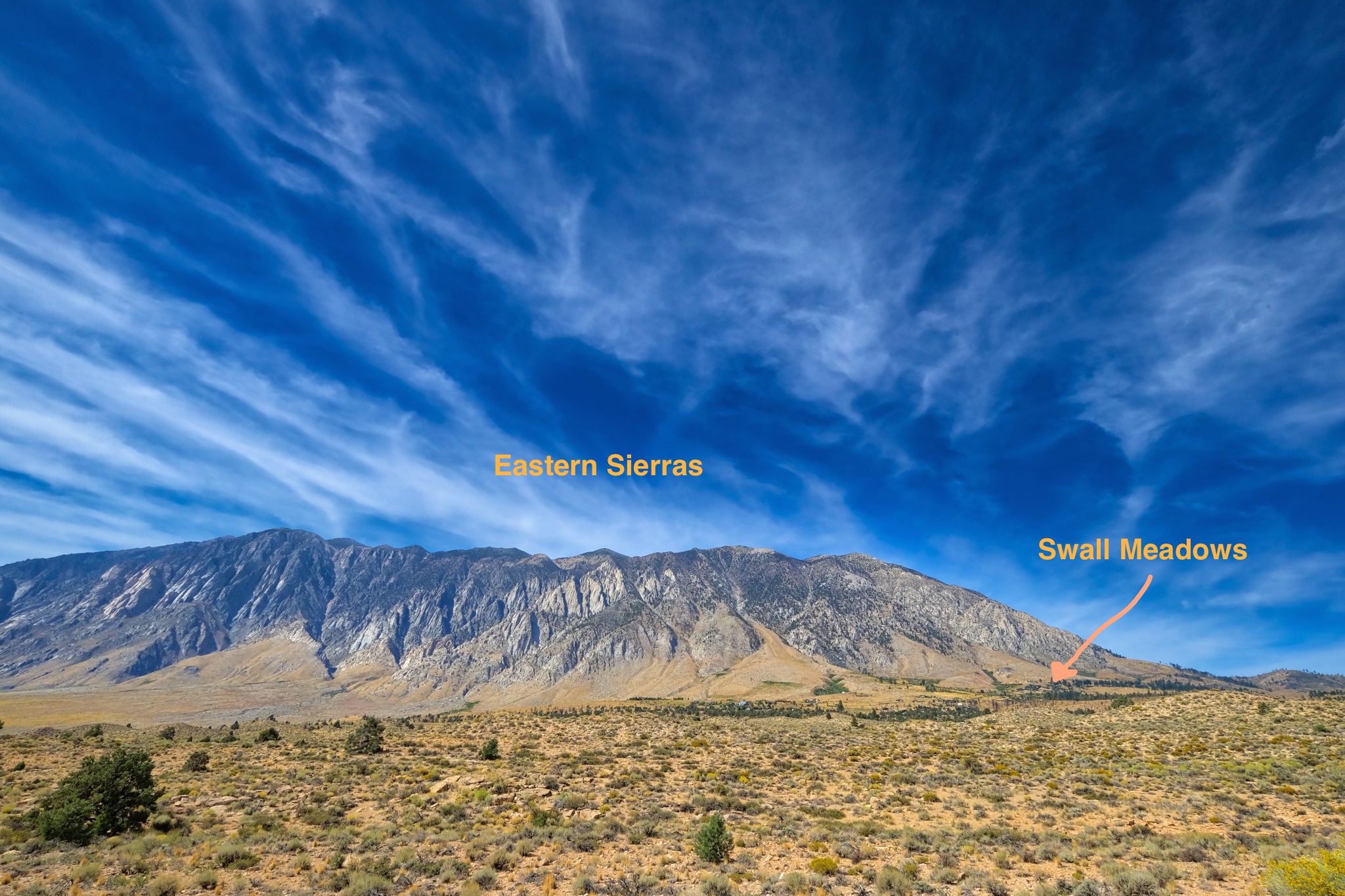 Swall Meadows is beautifully situated at the foot of the eastern Sierra Nevada mountains.
Swall Meadows is beautifully situated at the foot of the eastern Sierra Nevada mountains.
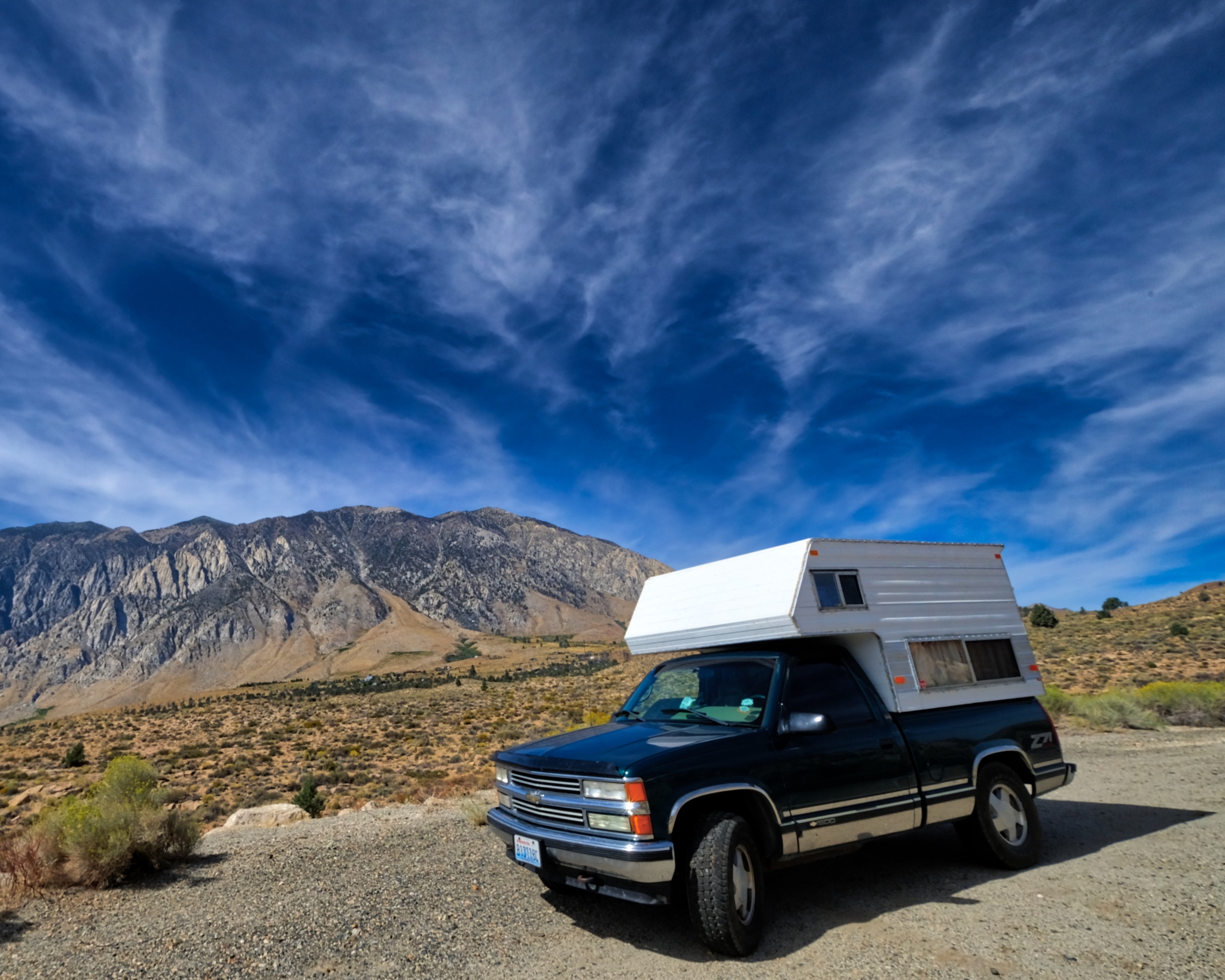 It was a beautiful morning when I set off . . . the camper fully provisioned for many days in the wild.
It was a beautiful morning when I set off . . . the camper fully provisioned for many days in the wild.
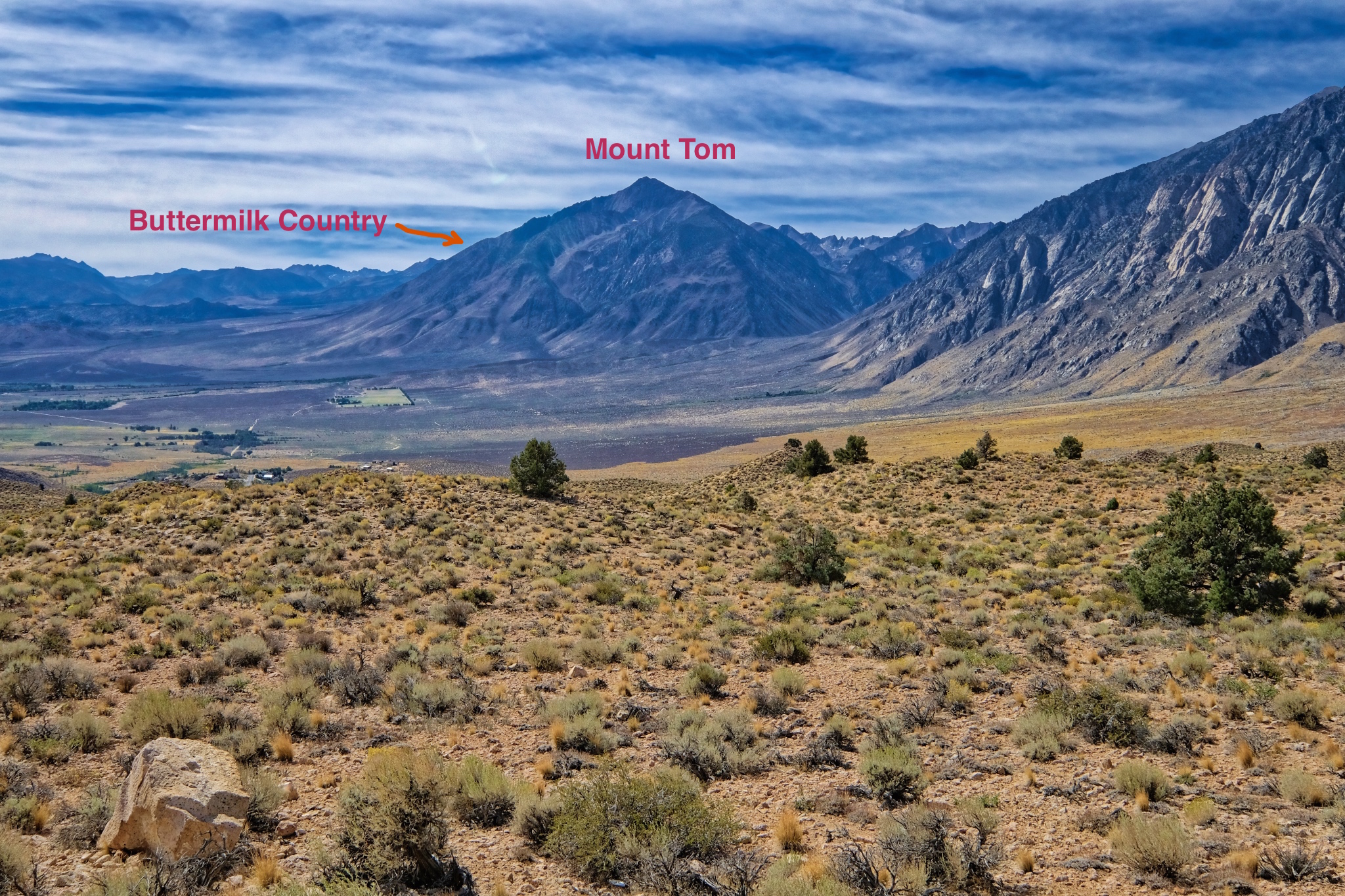 I stopped to get the lay of the land. The Buttermilk Country was on the other side of Mount Tom, up a gradual incline toward the high peaks.
I stopped to get the lay of the land. The Buttermilk Country was on the other side of Mount Tom, up a gradual incline toward the high peaks.
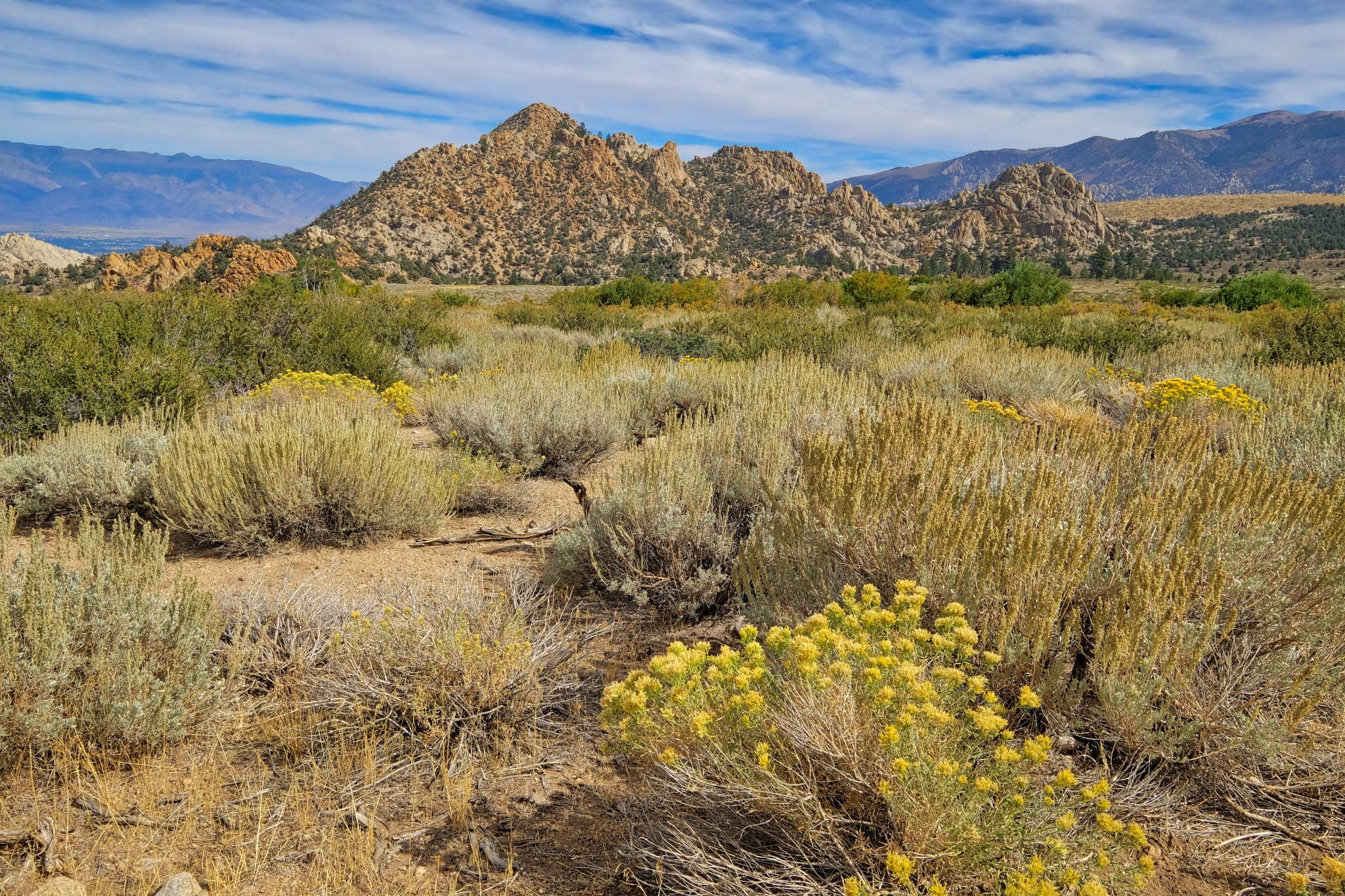 Driving up into the mountains on the sandy and rocky jeep trail.
Driving up into the mountains on the sandy and rocky jeep trail.
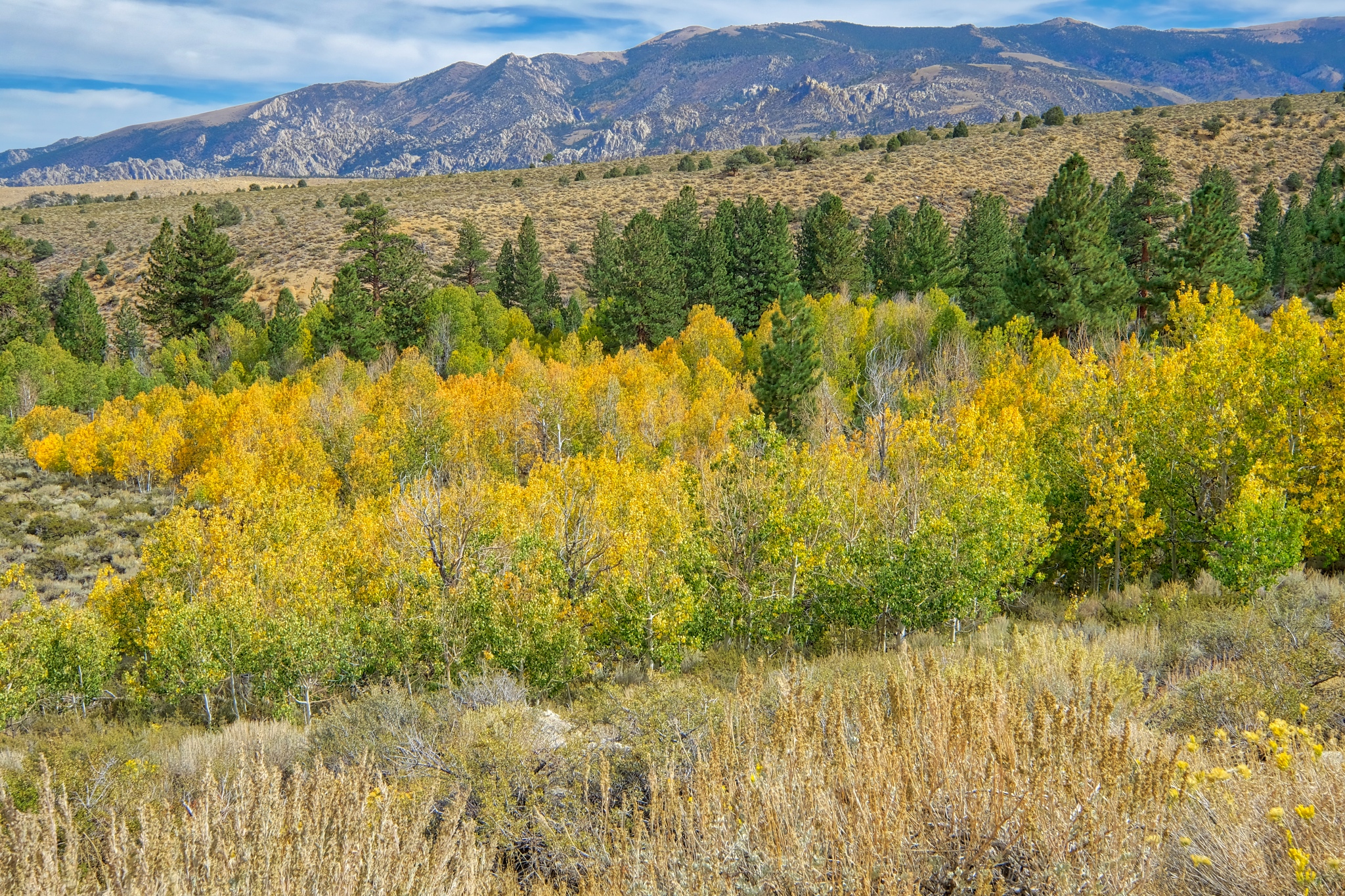 My first view of the aspens along a stream . . . the yellow color is a sign they are a little water stressed . . . and the nights are getting cold up here.
My first view of the aspens along a stream . . . the yellow color is a sign they are a little water stressed . . . and the nights are getting cold up here.
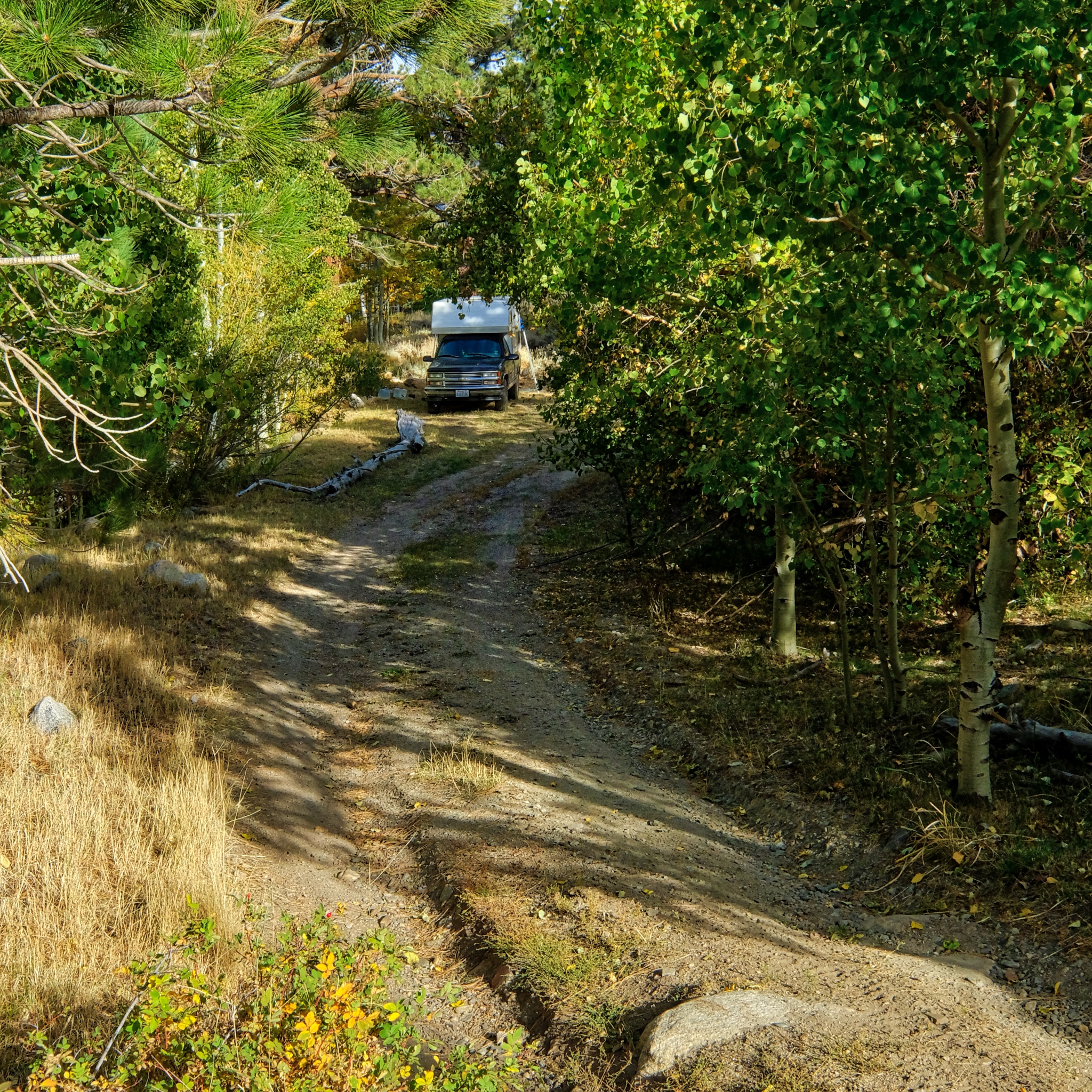 I drove deep into the high country and found a level spot next to a stream along a jeep track in an aspen stand.
I drove deep into the high country and found a level spot next to a stream along a jeep track in an aspen stand.
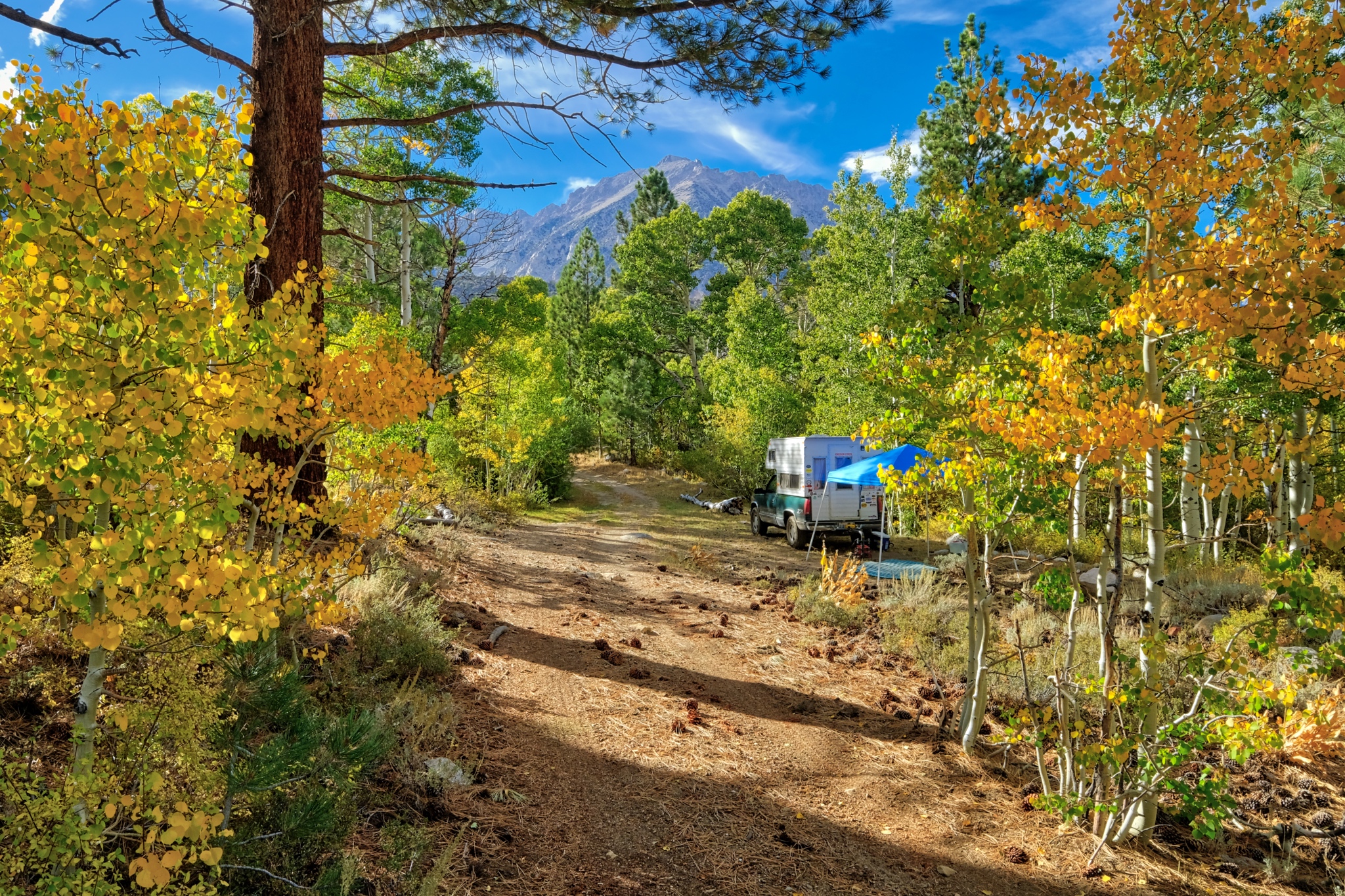 It was late afternoon when I found my flat camp site. I set up the shade tent . . . but left the rest of my setting up for later . . . the steep and clear sunlight begs for a ramble with my camera.
It was late afternoon when I found my flat camp site. I set up the shade tent . . . but left the rest of my setting up for later . . . the steep and clear sunlight begs for a ramble with my camera.
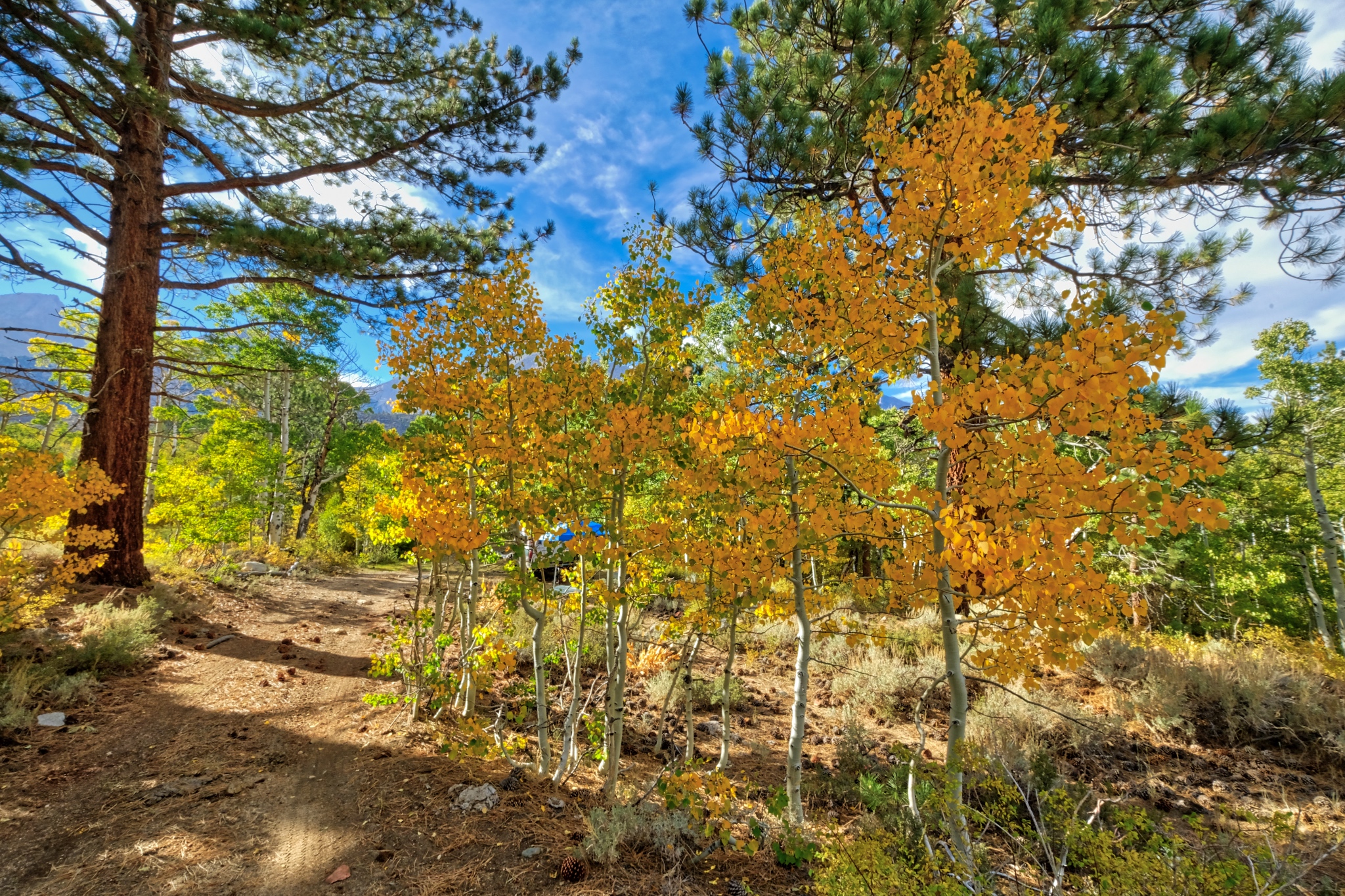 I walked up the jeep track from my camp. A glorious afternoon.
I walked up the jeep track from my camp. A glorious afternoon.
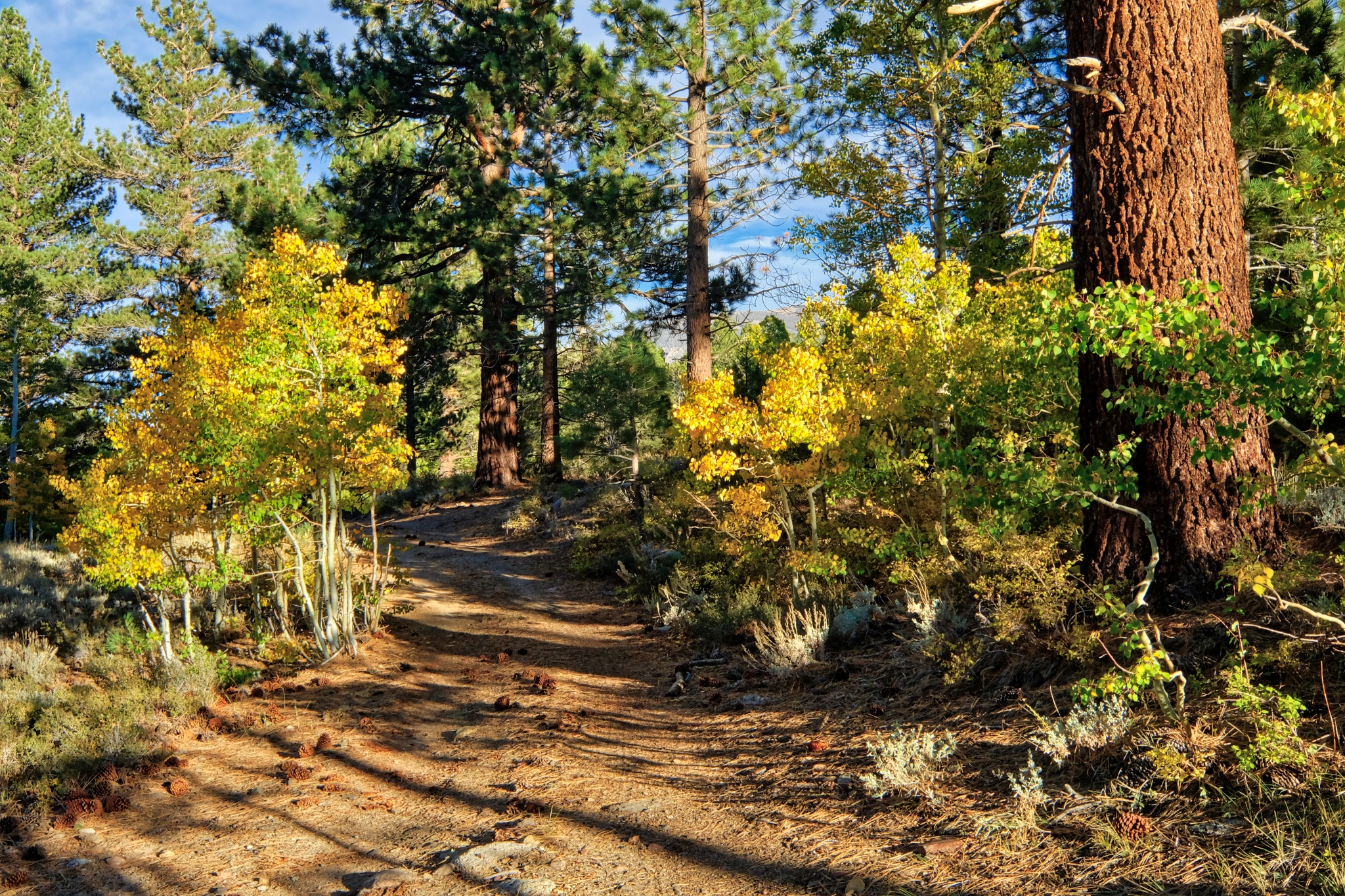 I had found a magical place to camp.
I had found a magical place to camp.
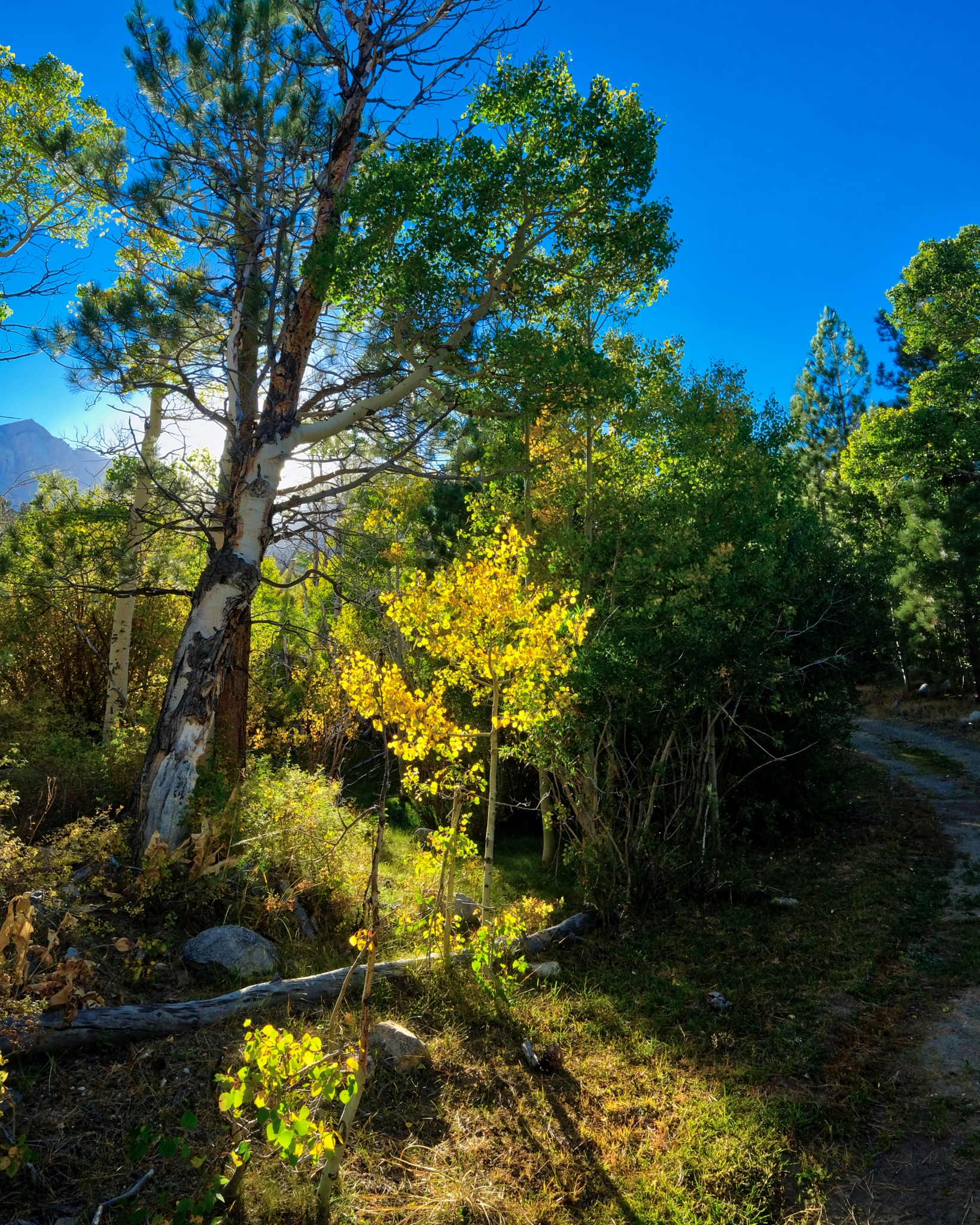 The sun was low in the sky . . . and an early shadow was expected as the sun was going to go behind the nearby high mountains of the Sierra Nevada.
The sun was low in the sky . . . and an early shadow was expected as the sun was going to go behind the nearby high mountains of the Sierra Nevada.
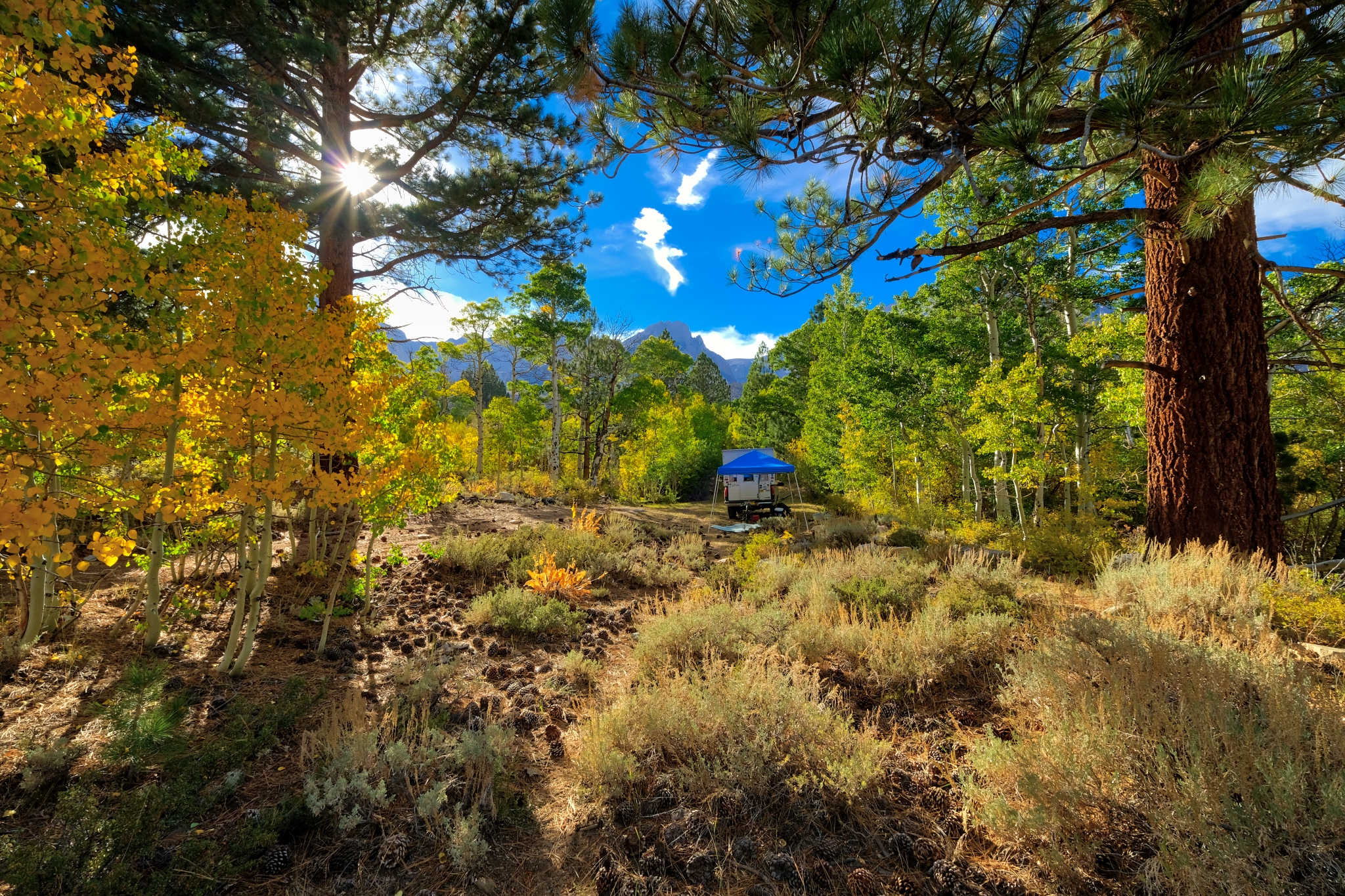 Such incredible light and color.
Such incredible light and color.
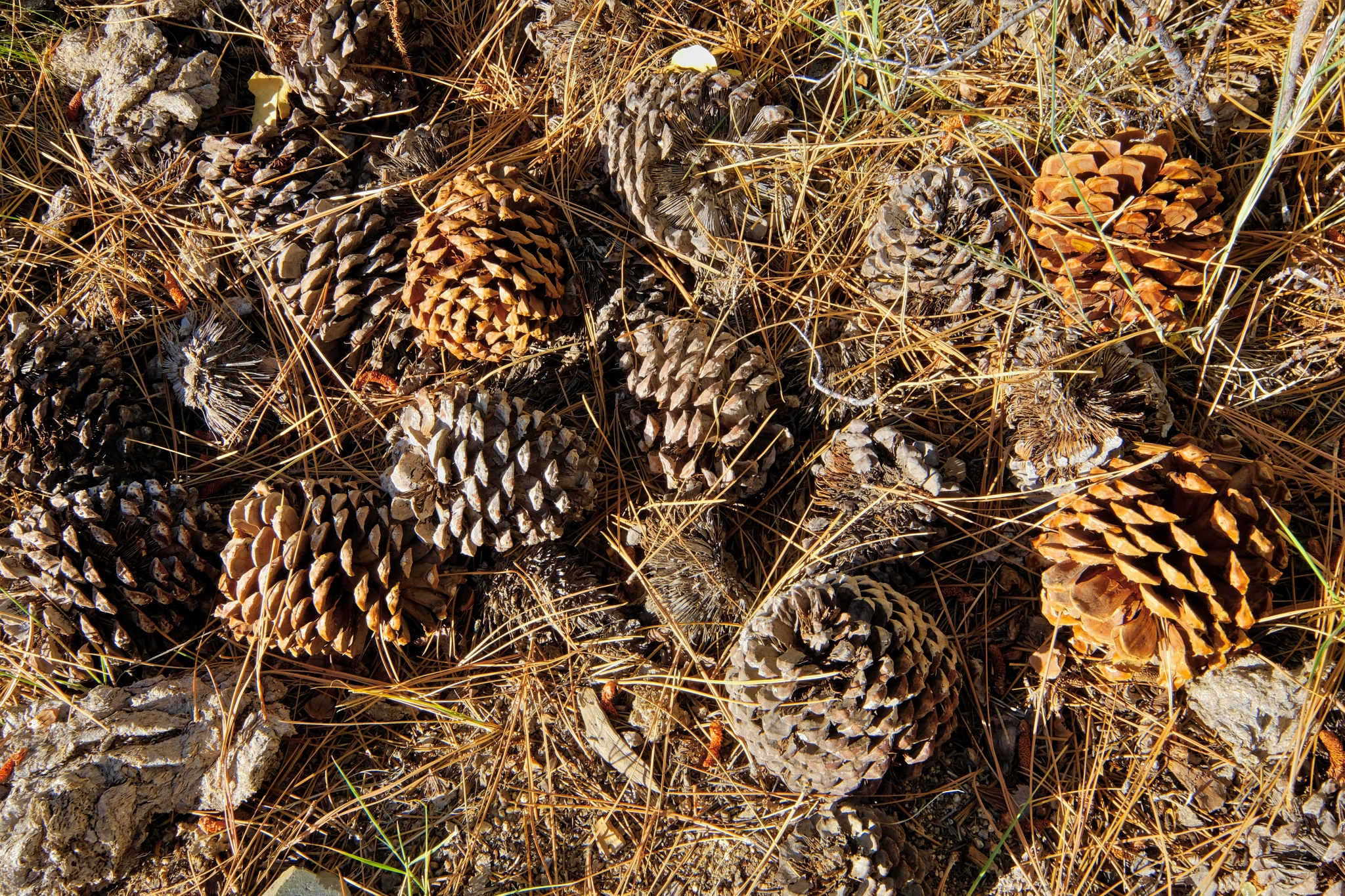 The forest floor under the giant Ponderosa Pines, all cones and needles.
The forest floor under the giant Ponderosa Pines, all cones and needles.
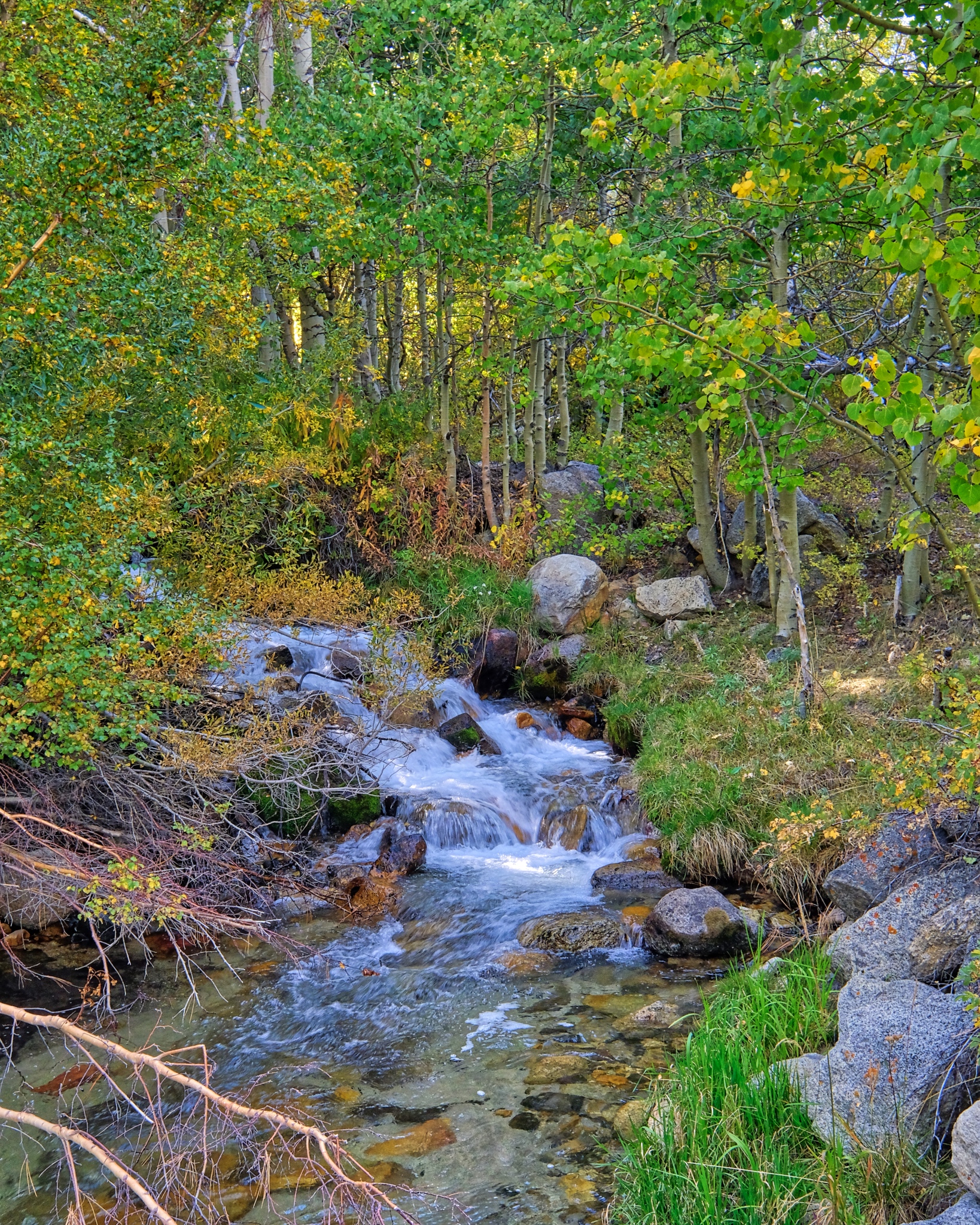 As the mountain shadow descended over the aspen grove, I followed the sound of a babbling stream nearby.
As the mountain shadow descended over the aspen grove, I followed the sound of a babbling stream nearby.
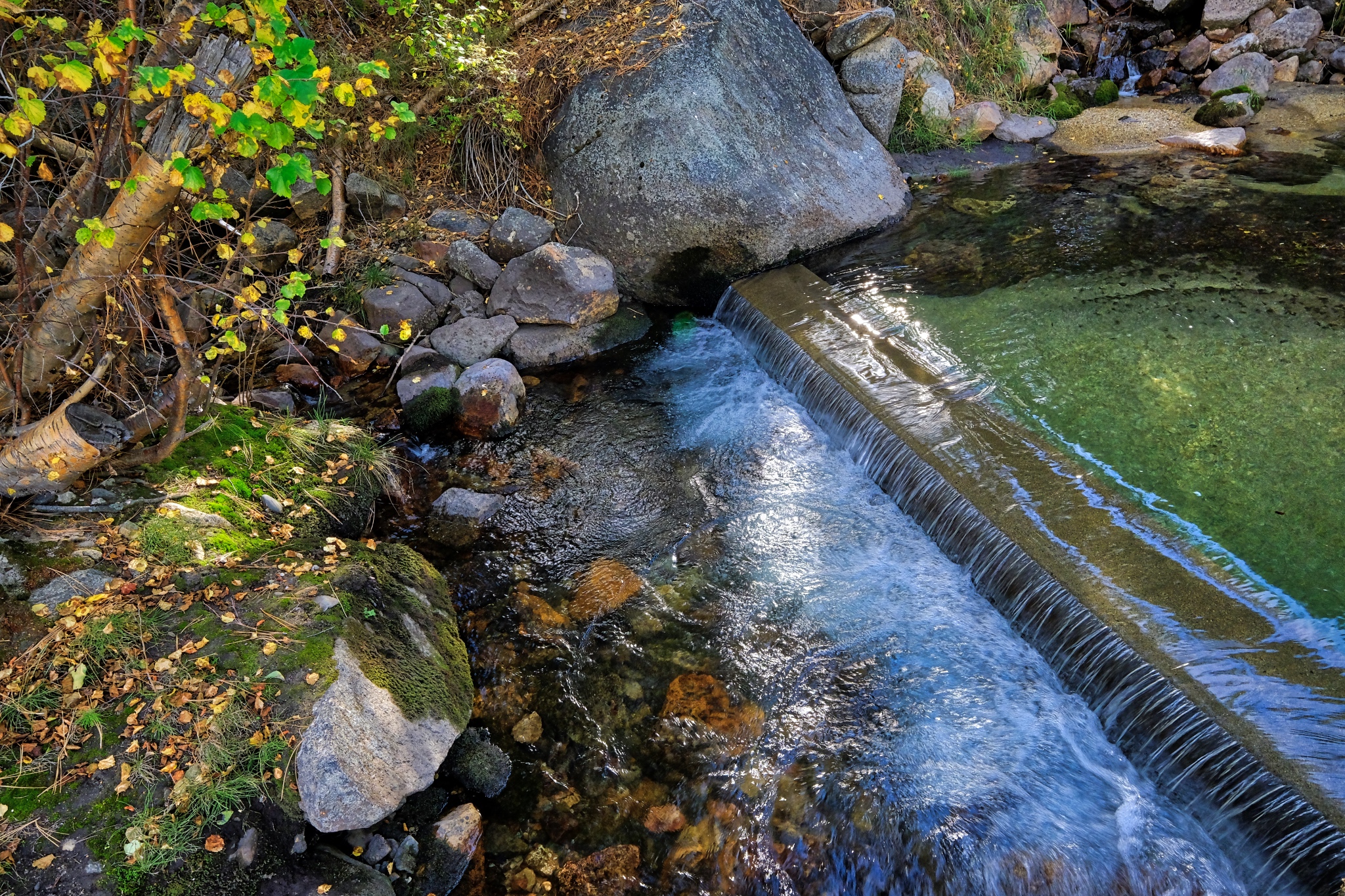 Believe it or not, the water here, at 8800 feet on the eastern slope of the Sierra Nevada mountains, is diverted through a system of pipes and small waterworks like this . . . to serve the city Los Angeles many hundreds of miles away. Gotta have those green lawns!!!
Believe it or not, the water here, at 8800 feet on the eastern slope of the Sierra Nevada mountains, is diverted through a system of pipes and small waterworks like this . . . to serve the city Los Angeles many hundreds of miles away. Gotta have those green lawns!!!
_______________________________________________
DAY TWO: Exploring my immediate surroundings
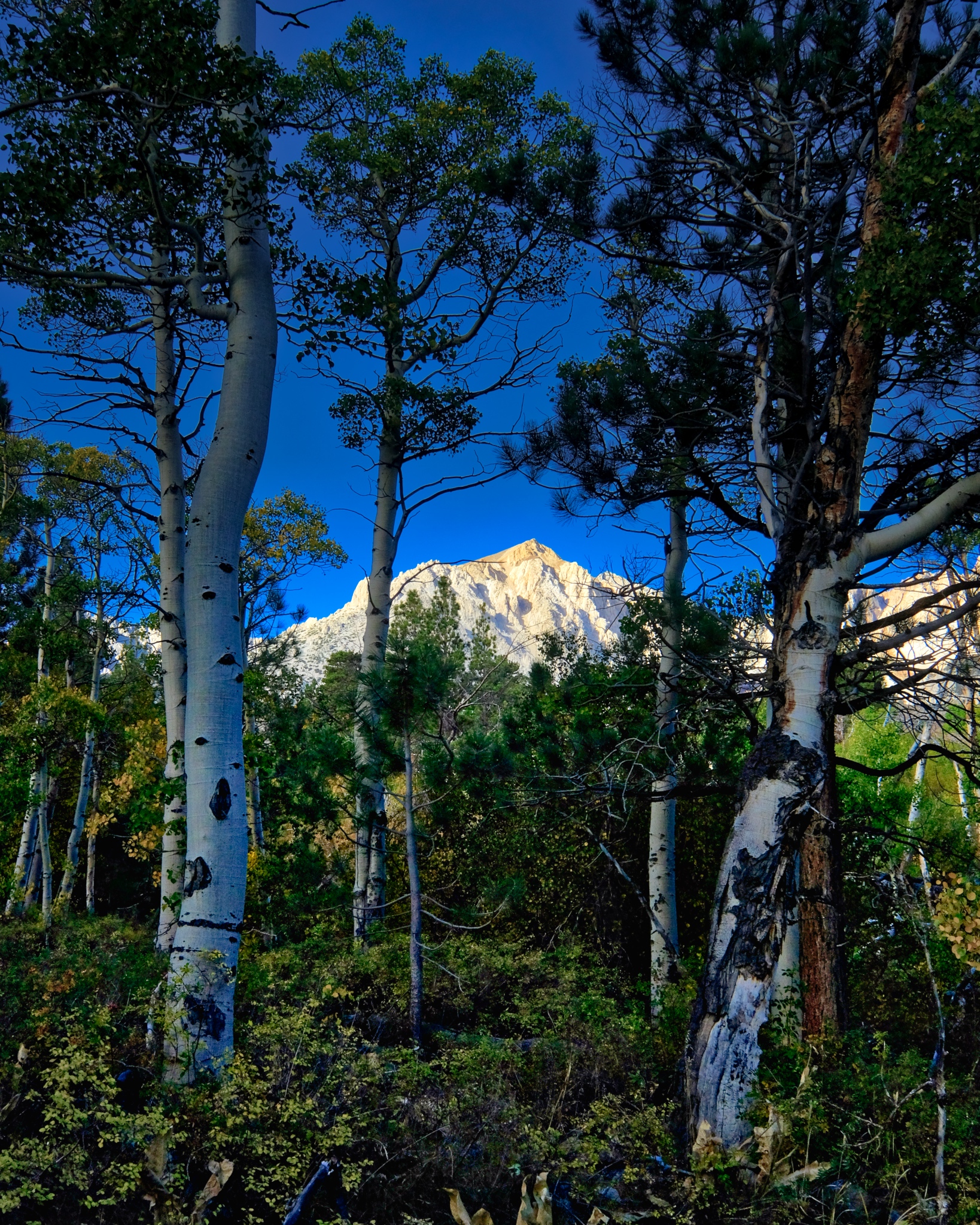 I was up when the first light hit the high peaks.
I was up when the first light hit the high peaks.
 When the light finally hit my little patch of forest . . . the scene was like a fairyland!
When the light finally hit my little patch of forest . . . the scene was like a fairyland!
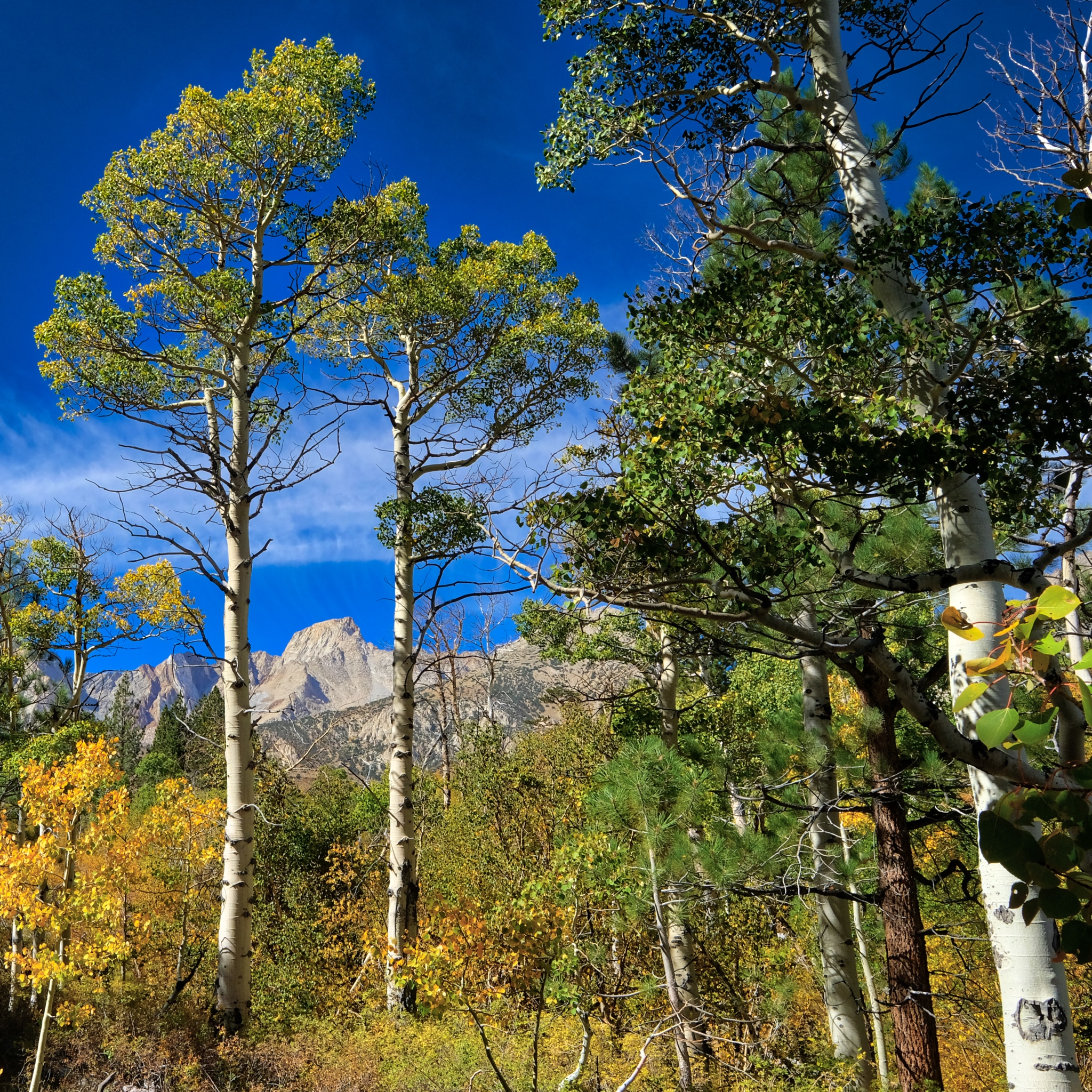 I was camped way up close to the Eastern High Sierra Nevada mountain peaks.
I was camped way up close to the Eastern High Sierra Nevada mountain peaks.
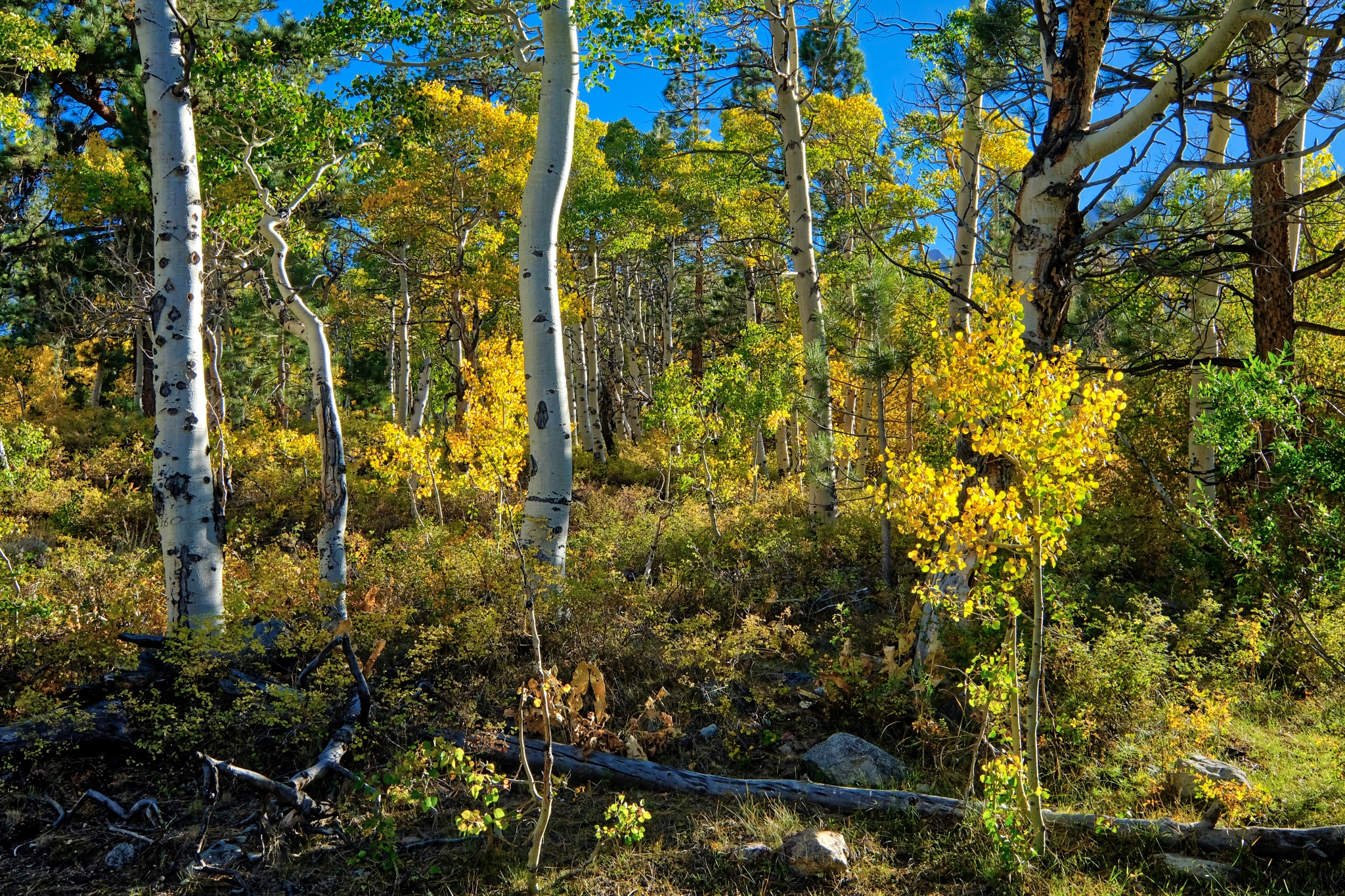 I was camped in a mix of dry Ponderosa Pine, small aspen thicket, and rocky forest.
I was camped in a mix of dry Ponderosa Pine, small aspen thicket, and rocky forest.
 Clear light, bright forest.
Clear light, bright forest.
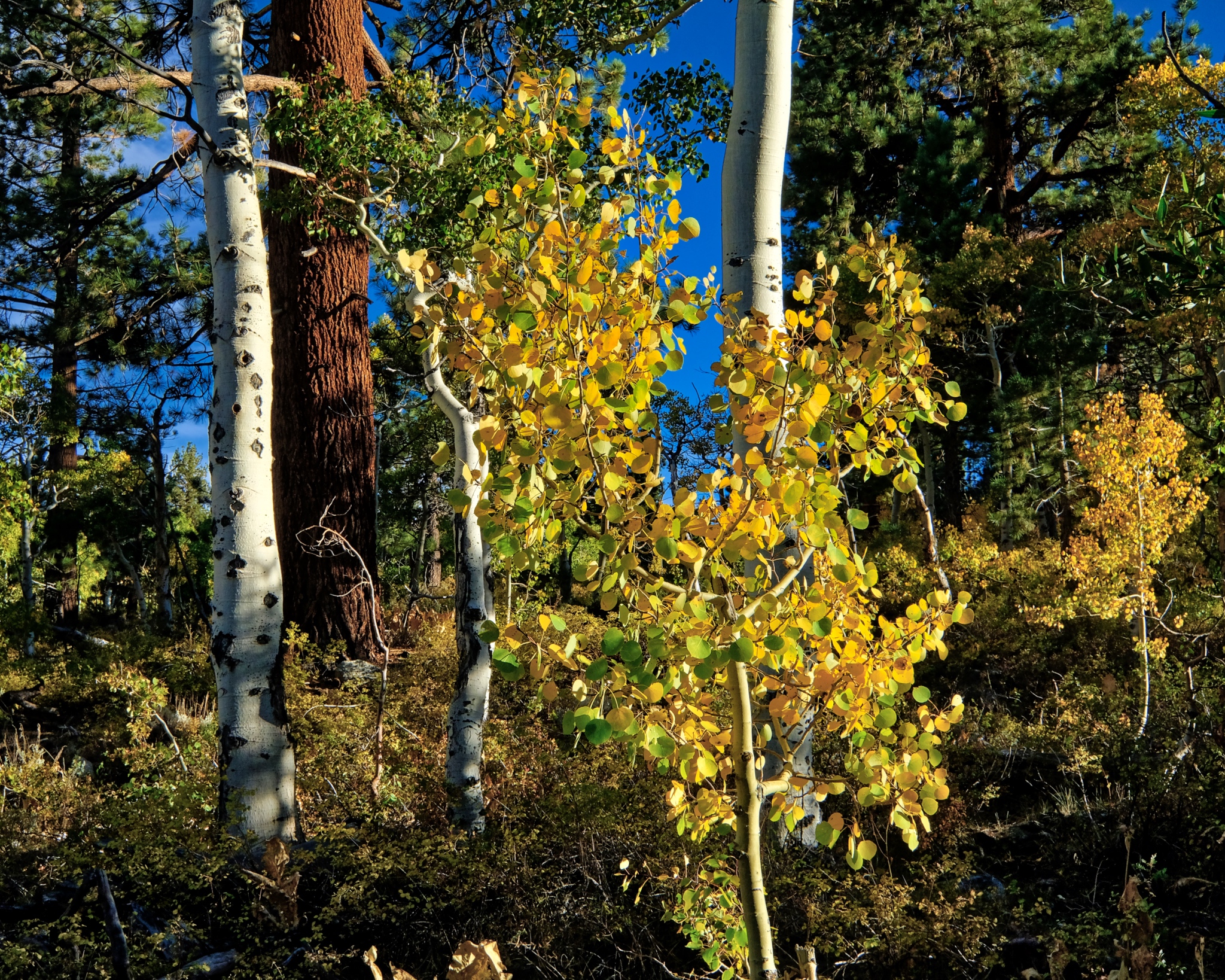 A big mix of trees . . . size and type.
A big mix of trees . . . size and type.
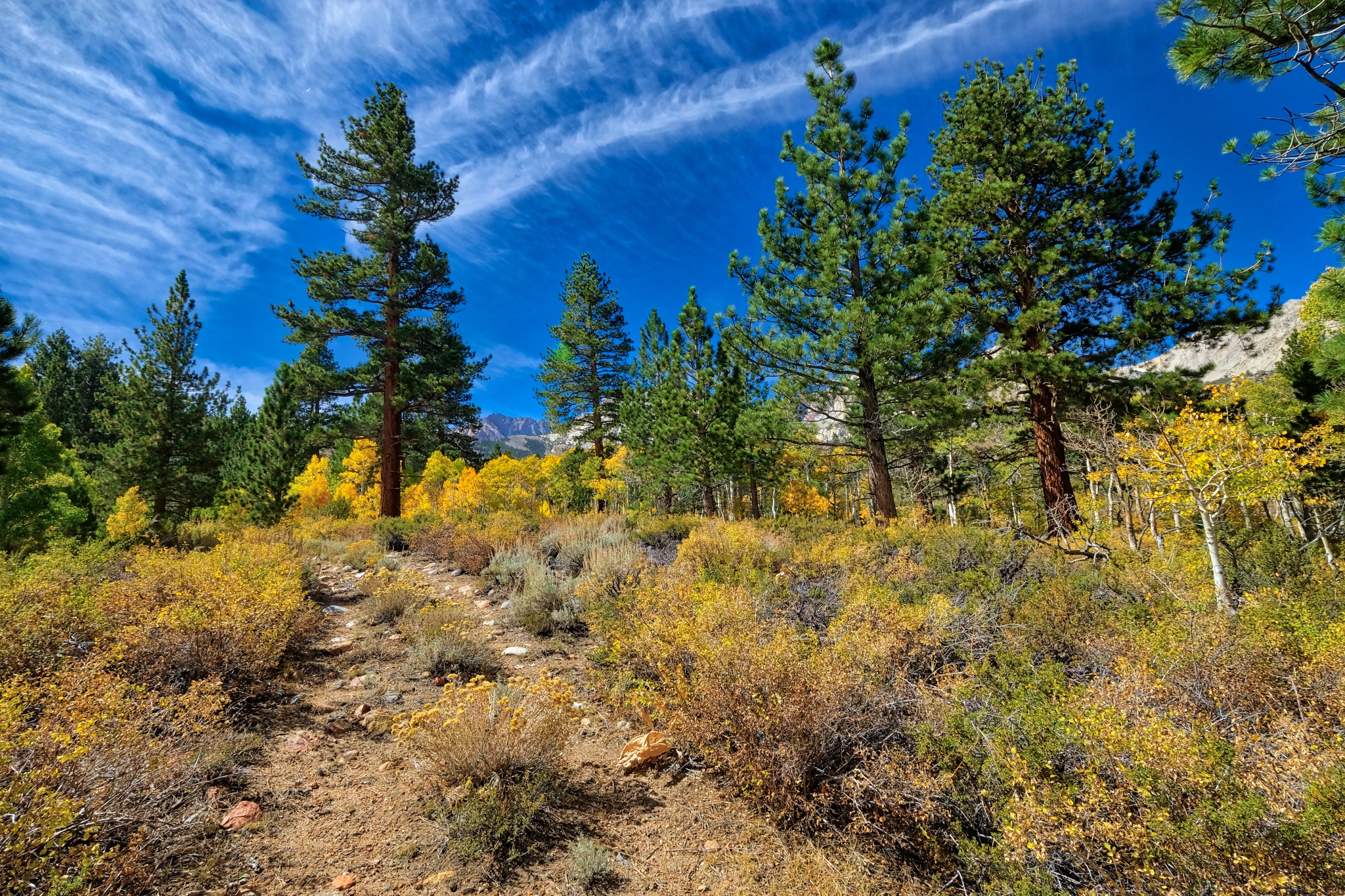 After a light breakfast and coffee, I grabbed my camera for a walkabout near my campsite. I first followed this nearly obscured old jeep track up into a nearby stand of bright aspens.
After a light breakfast and coffee, I grabbed my camera for a walkabout near my campsite. I first followed this nearly obscured old jeep track up into a nearby stand of bright aspens.
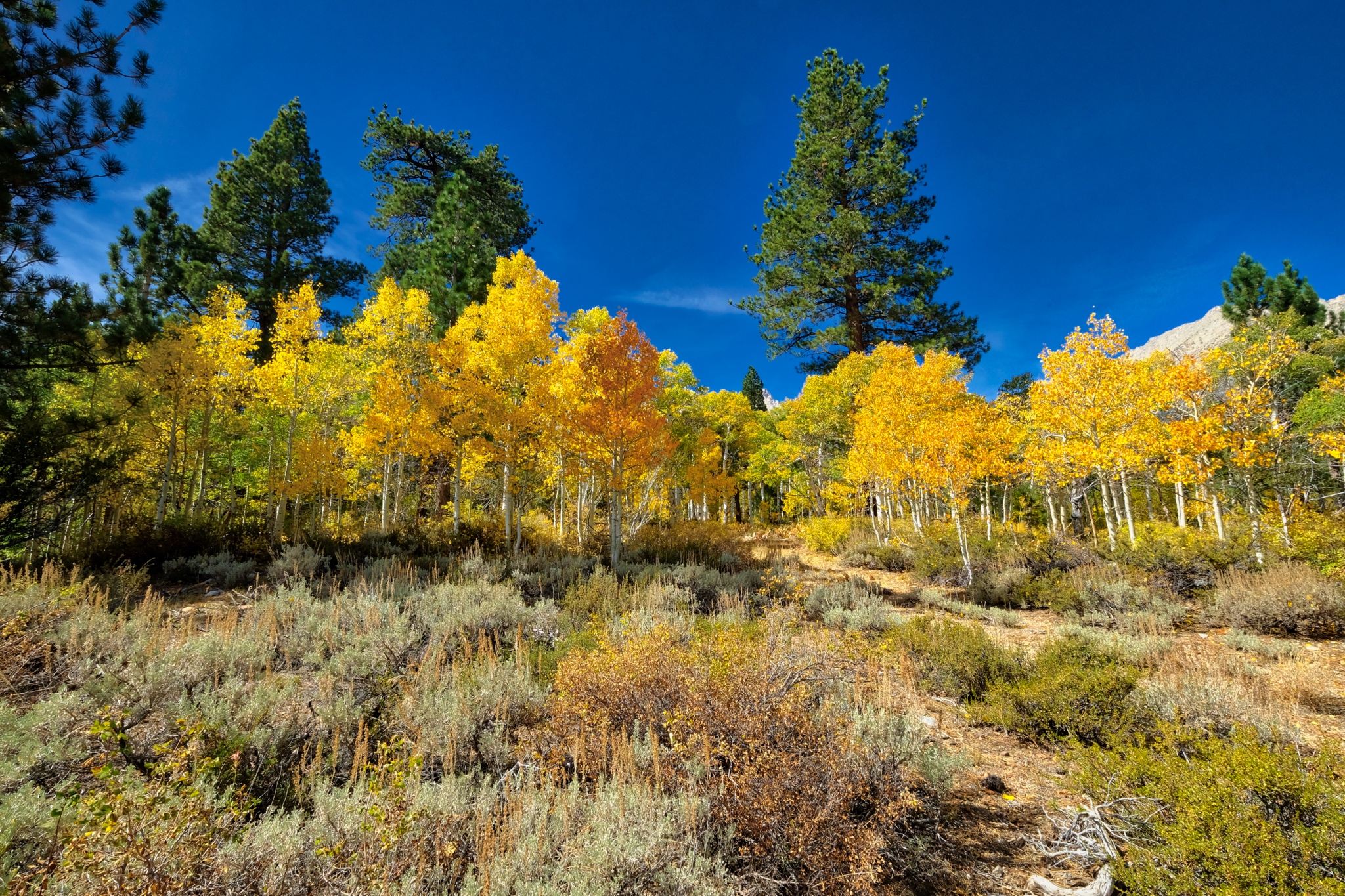 I was amazed by the colors and clarity of light and air.
I was amazed by the colors and clarity of light and air.
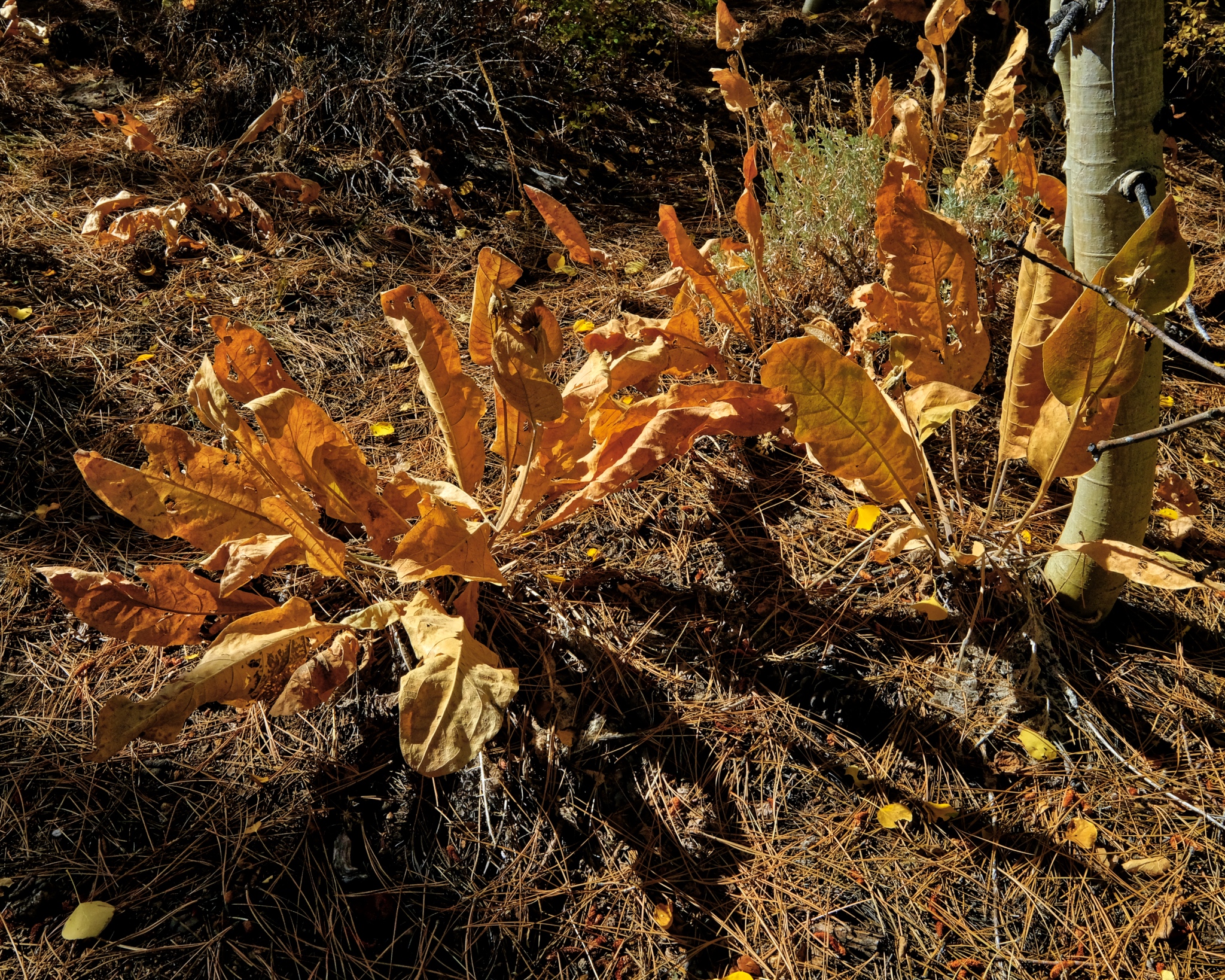 The summers' succulent growth had dried after a long summer in the sun.
The summers' succulent growth had dried after a long summer in the sun.
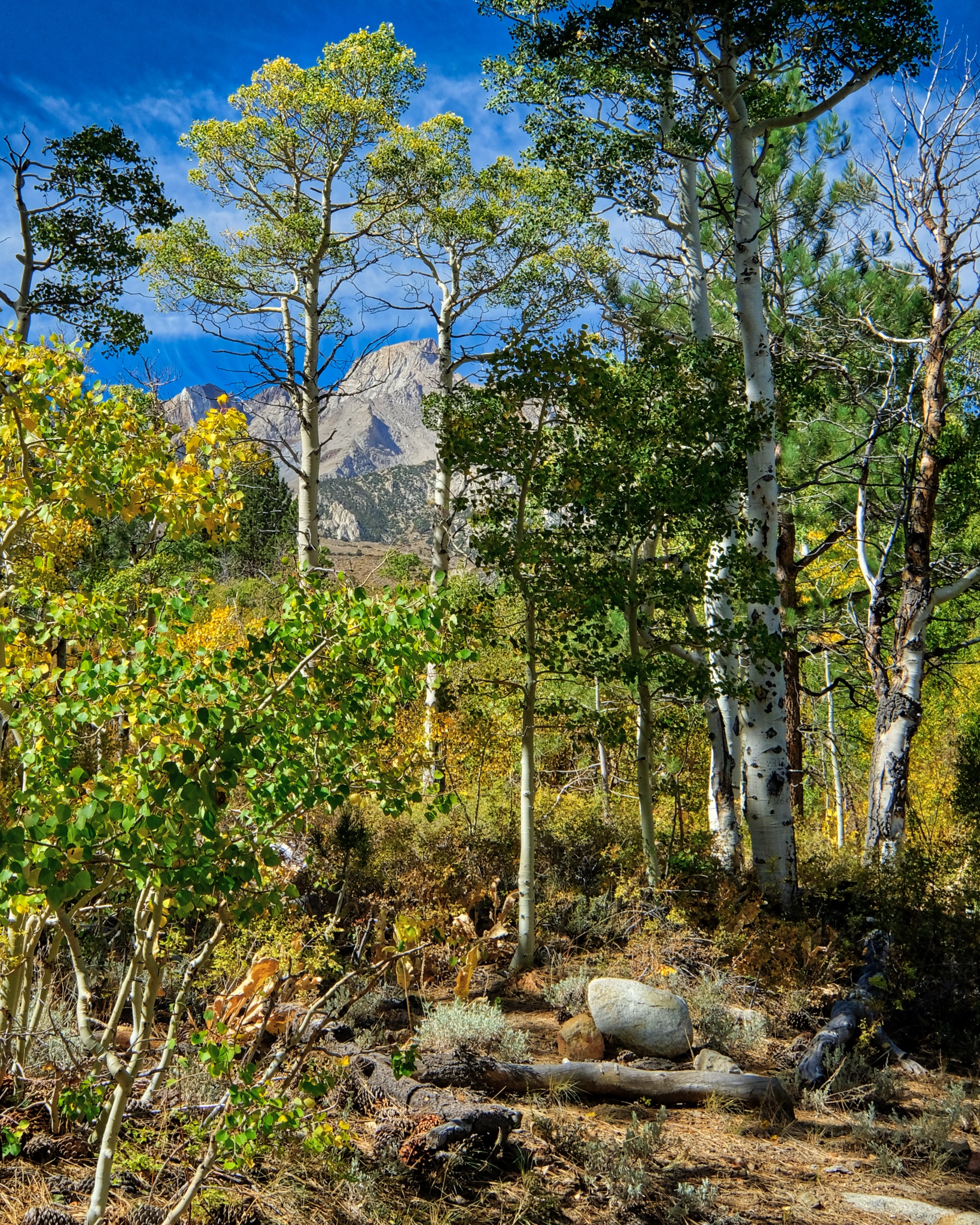 And throughout my walk -- always a quick glimpse of the tall Sierra Nevada.
And throughout my walk -- always a quick glimpse of the tall Sierra Nevada.
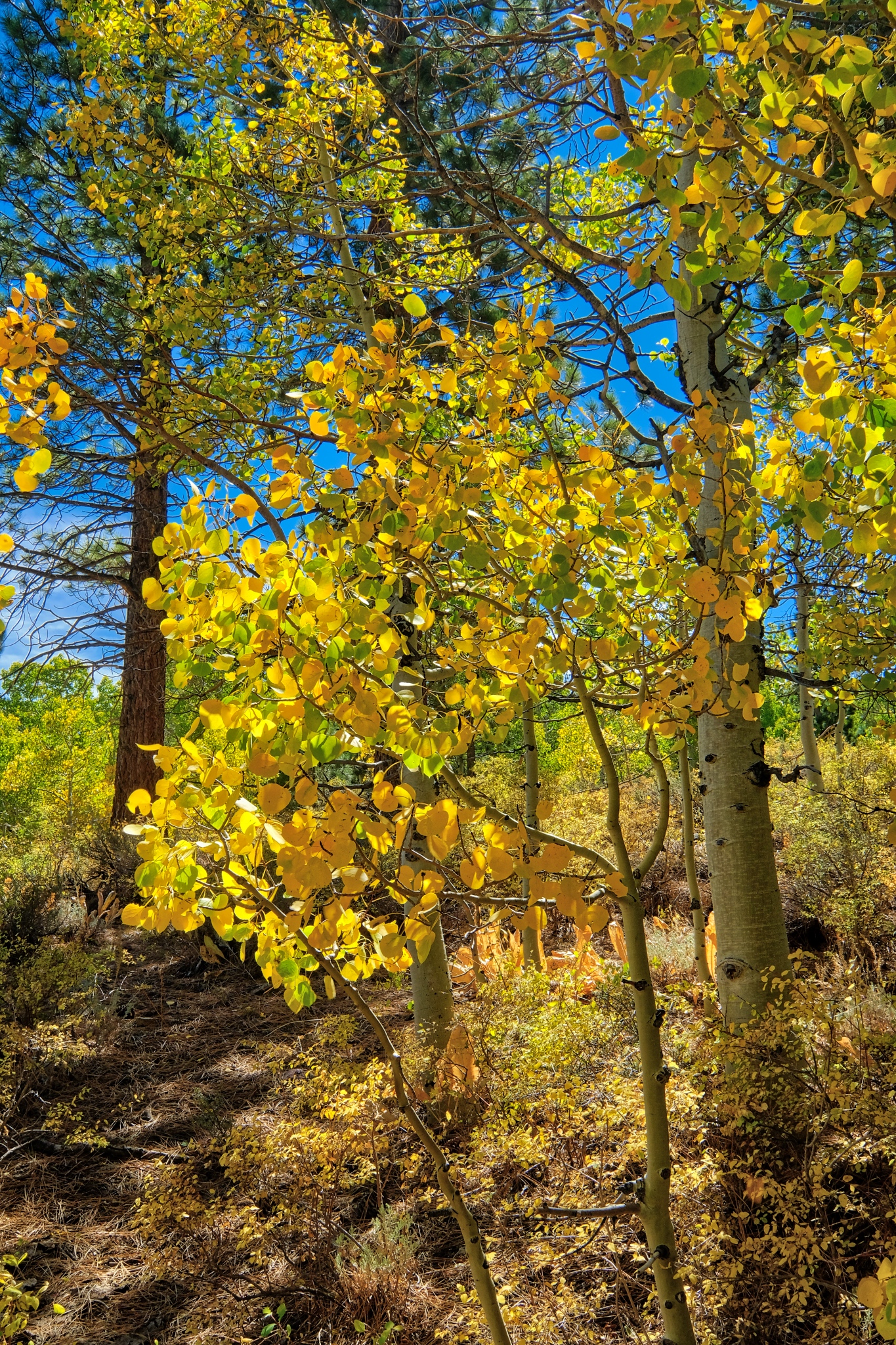 The brightness of the autumn yellow aspen leaves was astonishing. I have not bumped or oversaturated these colors . . . these aspens were THIS bright.
The brightness of the autumn yellow aspen leaves was astonishing. I have not bumped or oversaturated these colors . . . these aspens were THIS bright.
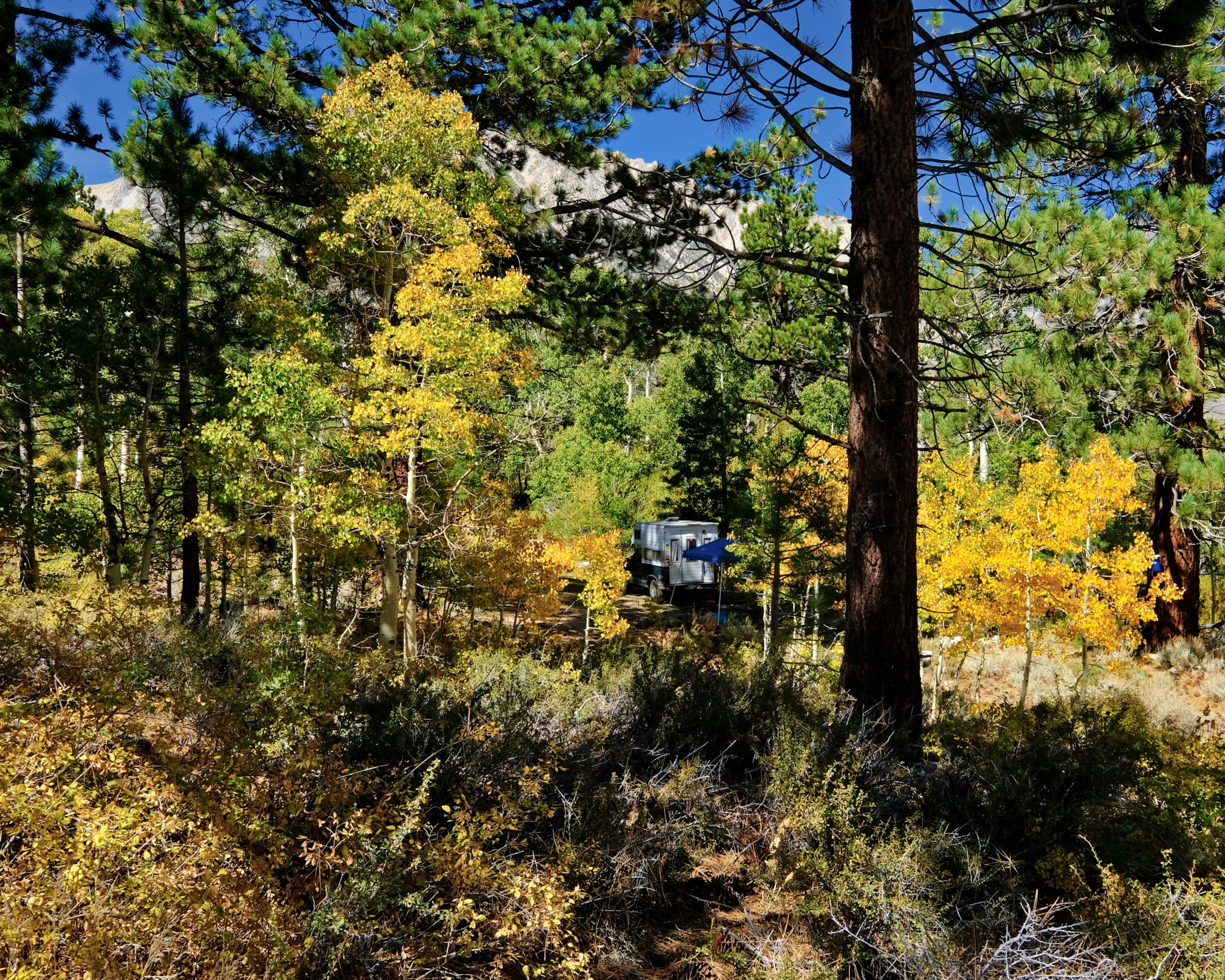 Such a glorious place to camp. This photo brings back such a strong memory for me: This is where I camped up in the high Buttermilk Country.
Such a glorious place to camp. This photo brings back such a strong memory for me: This is where I camped up in the high Buttermilk Country.
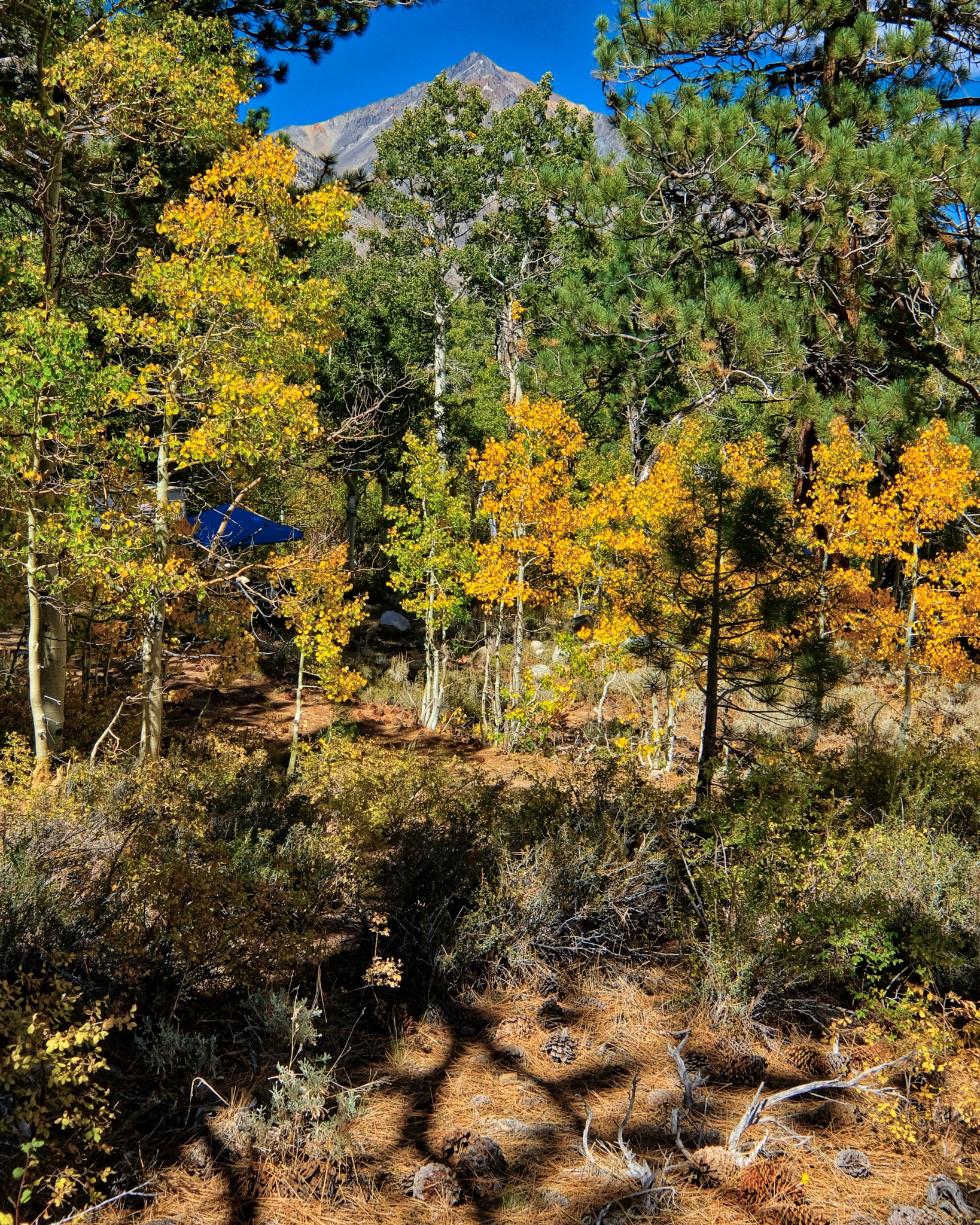 A delightfully cool, clear, and still morning.
A delightfully cool, clear, and still morning.
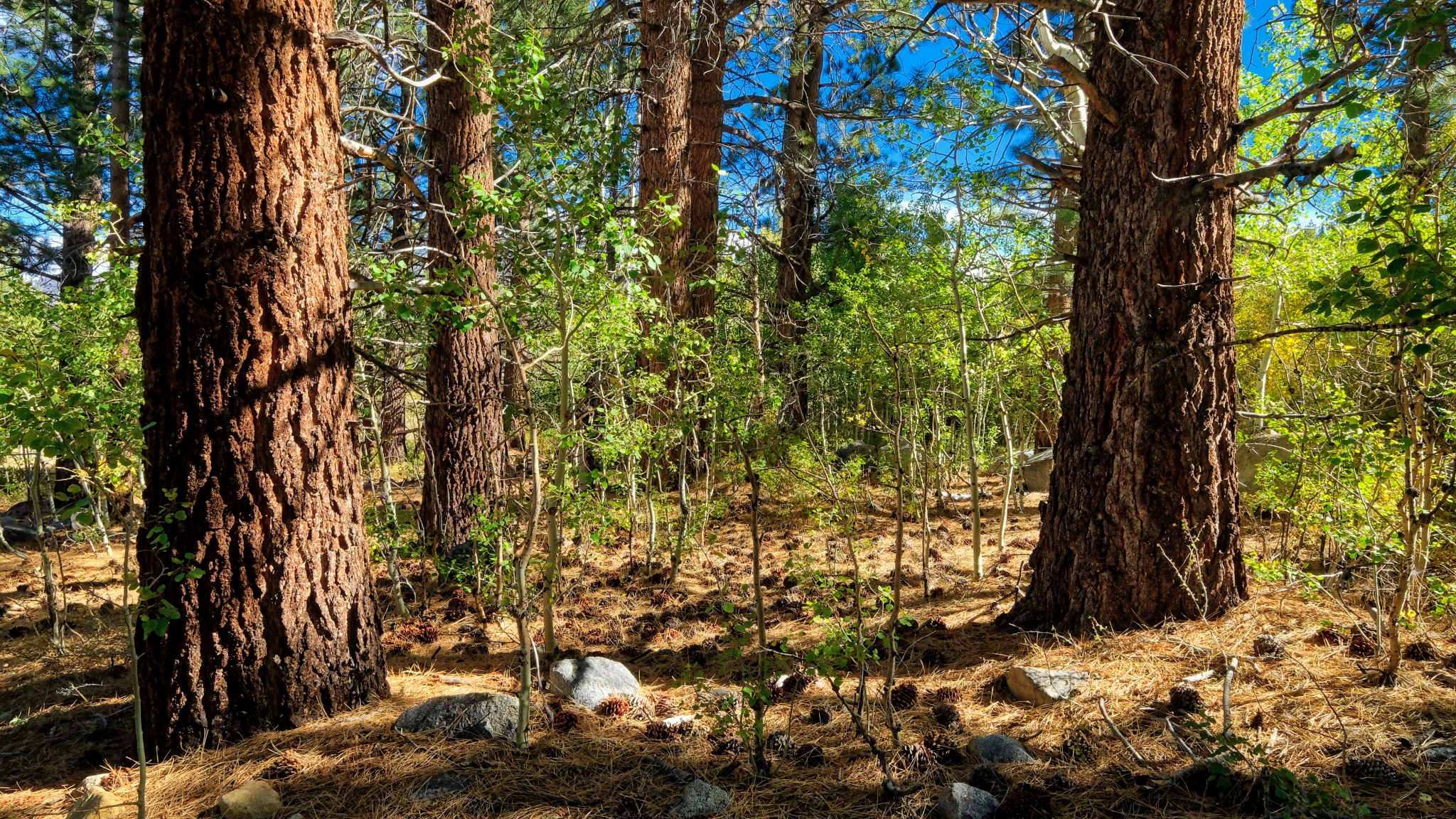 I love the look of these old, grand Ponderosa Pines in the transition from high country to desert.
I love the look of these old, grand Ponderosa Pines in the transition from high country to desert.
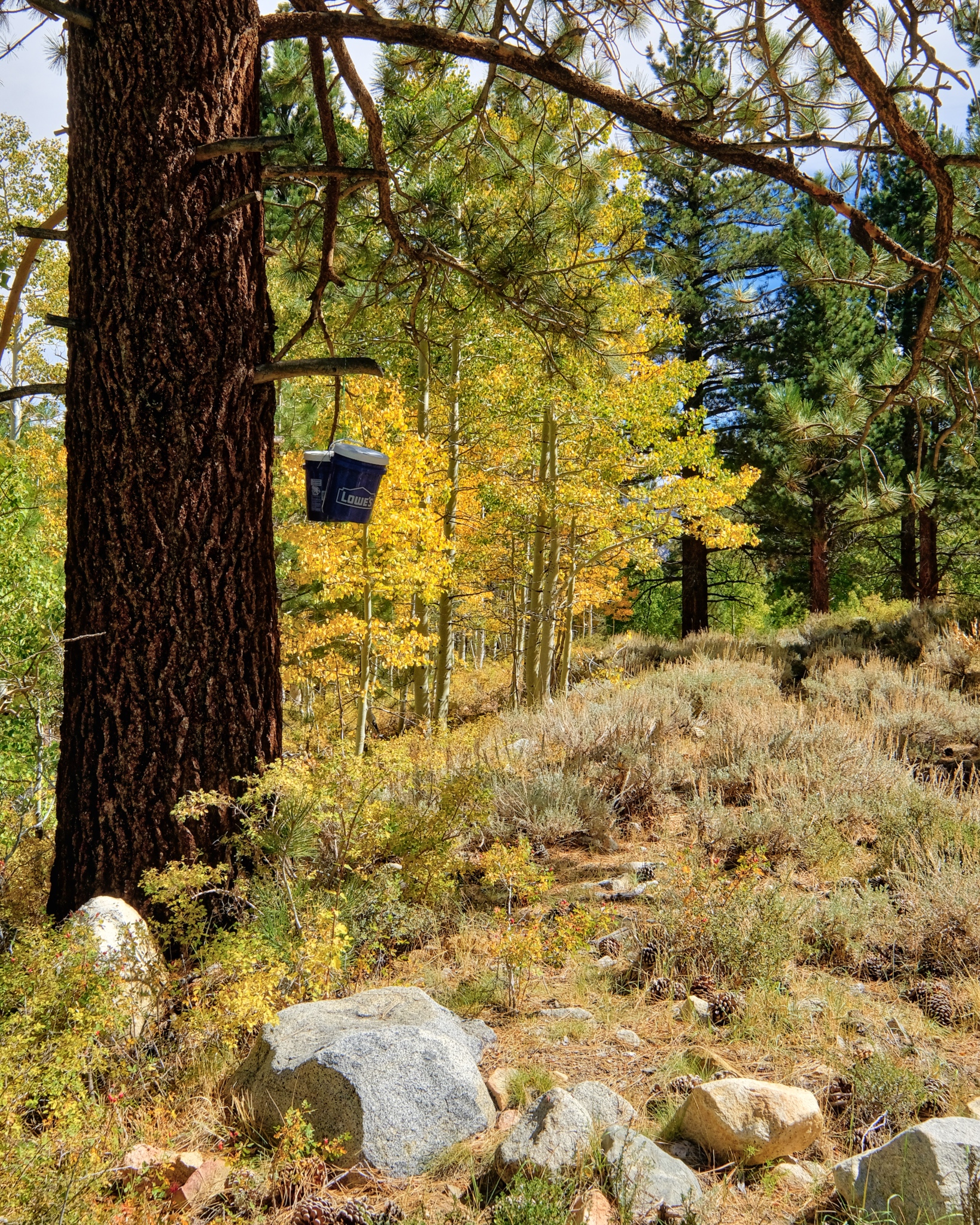 I slung a rope up over a big branch and hoisted my food pails up there . . . bear-proofing?
I slung a rope up over a big branch and hoisted my food pails up there . . . bear-proofing?
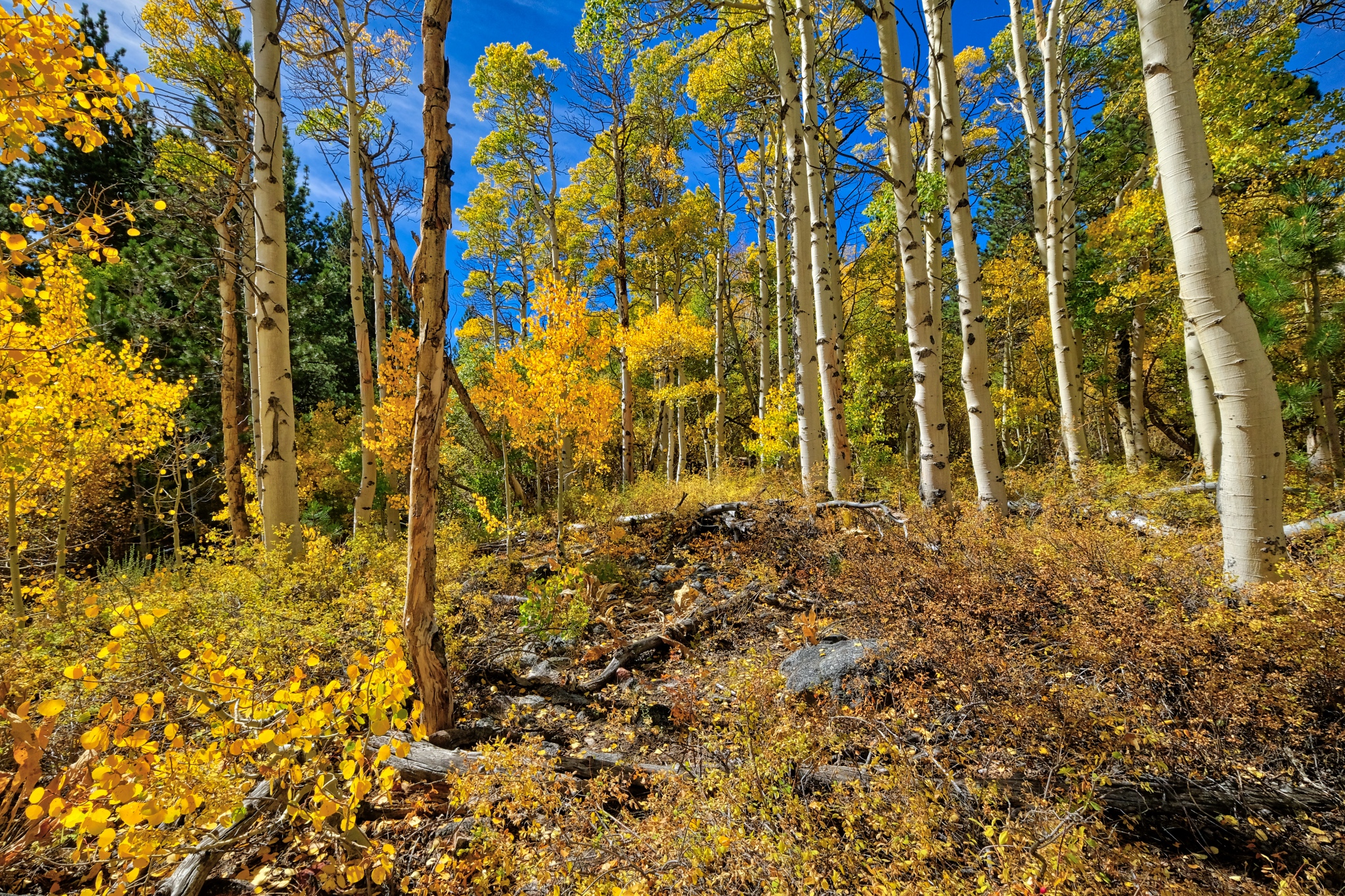 The yellow aspen in the bright, clear morning sun . . . at 8000 ft. elevation.
The yellow aspen in the bright, clear morning sun . . . at 8000 ft. elevation.
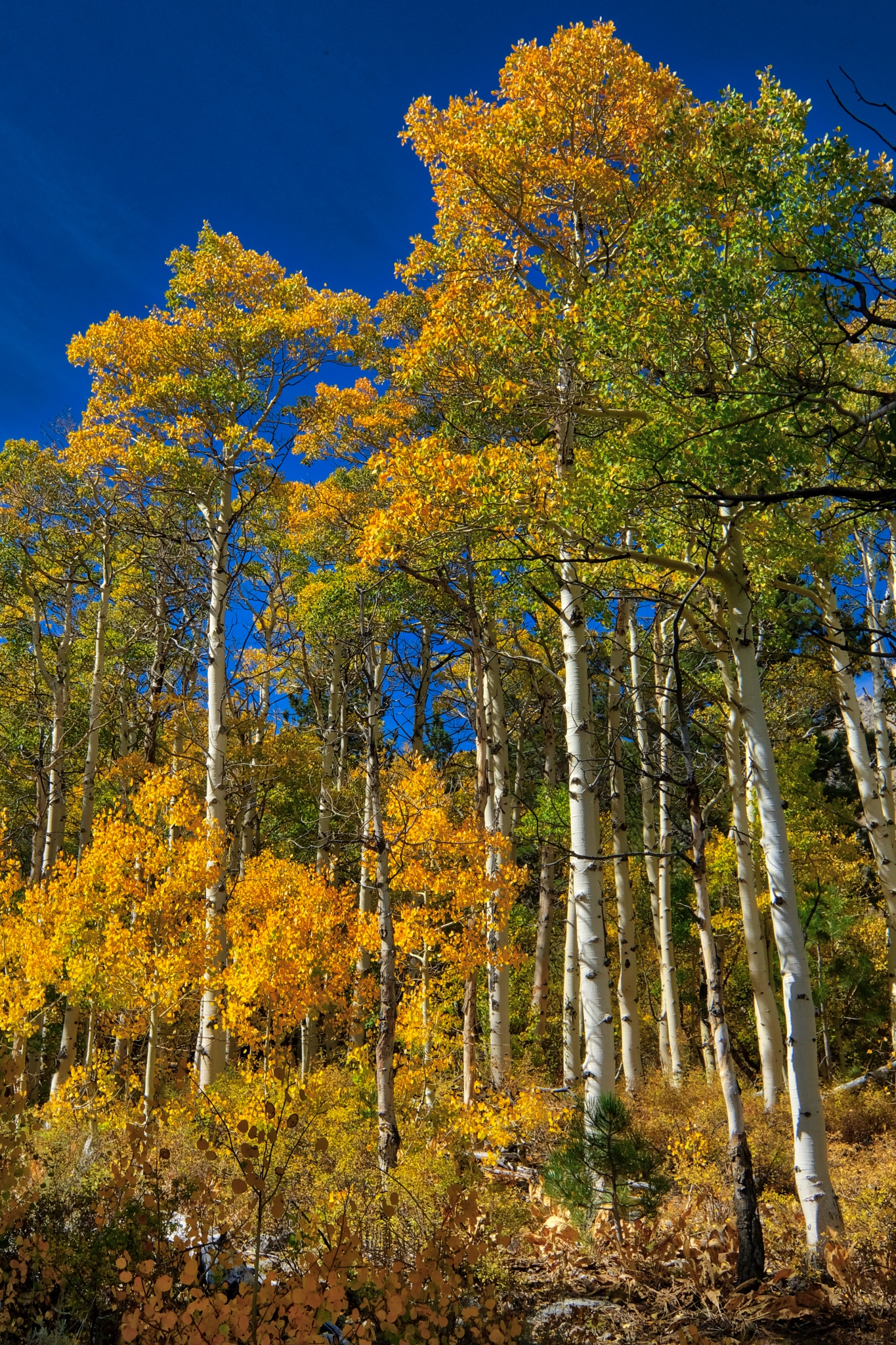 Tall yellow aspens against a deep blue mountain sky.
Tall yellow aspens against a deep blue mountain sky.
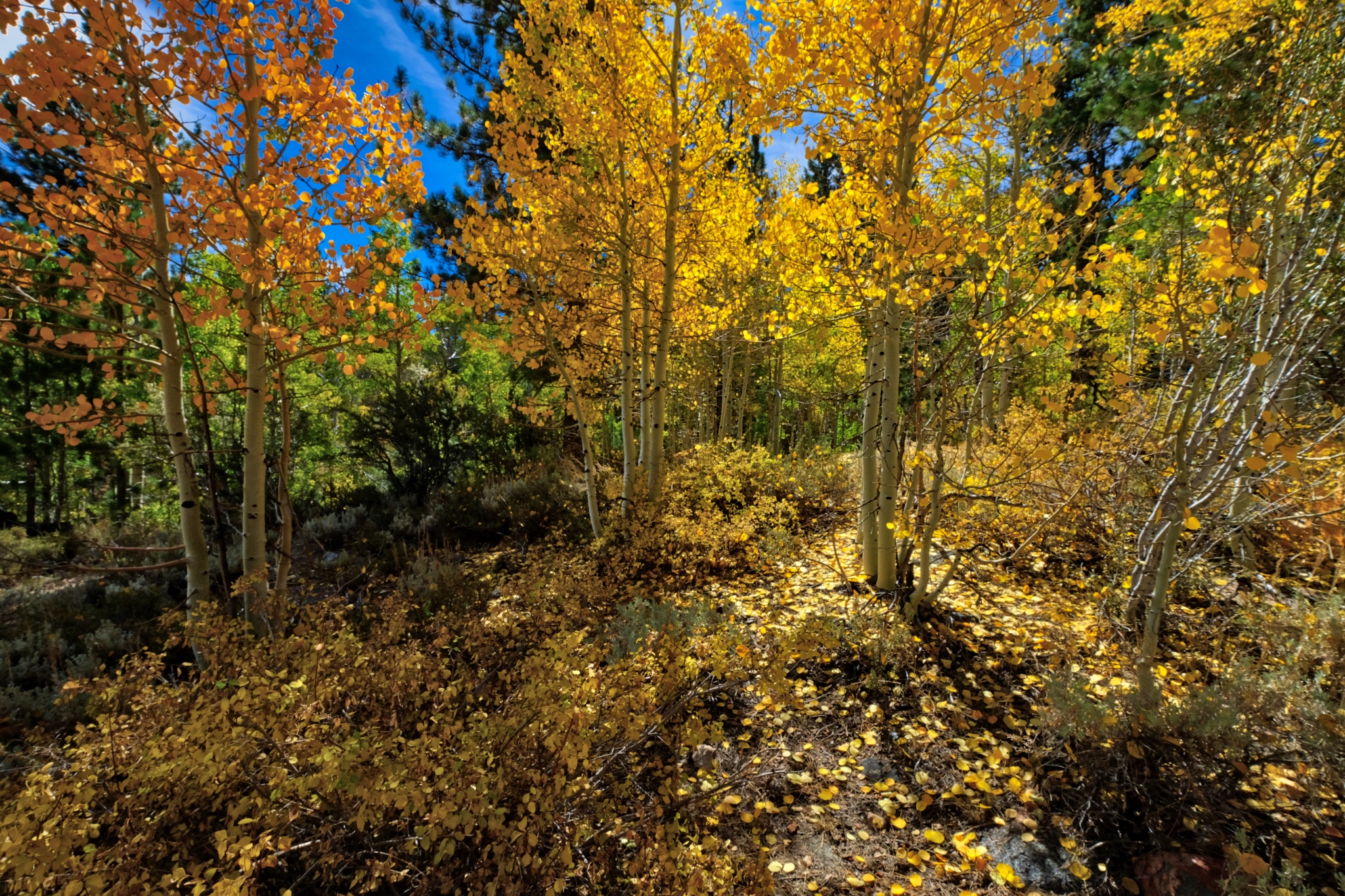 Absolutely quiet; not a breath of air movement . . . only the sound of my boots crunching on the pine needles . . . .
Absolutely quiet; not a breath of air movement . . . only the sound of my boots crunching on the pine needles . . . .
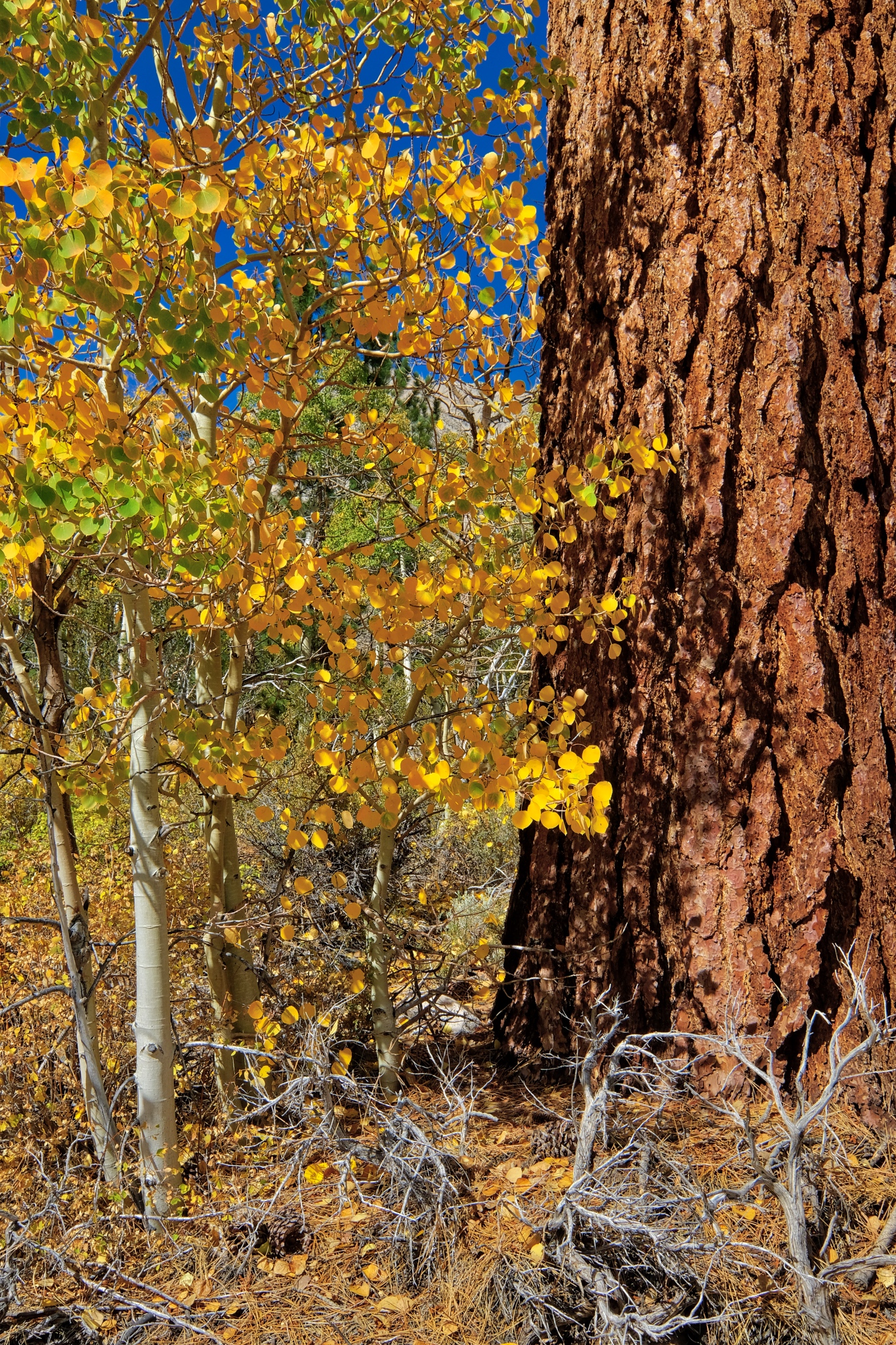 A forest portrait.
A forest portrait.
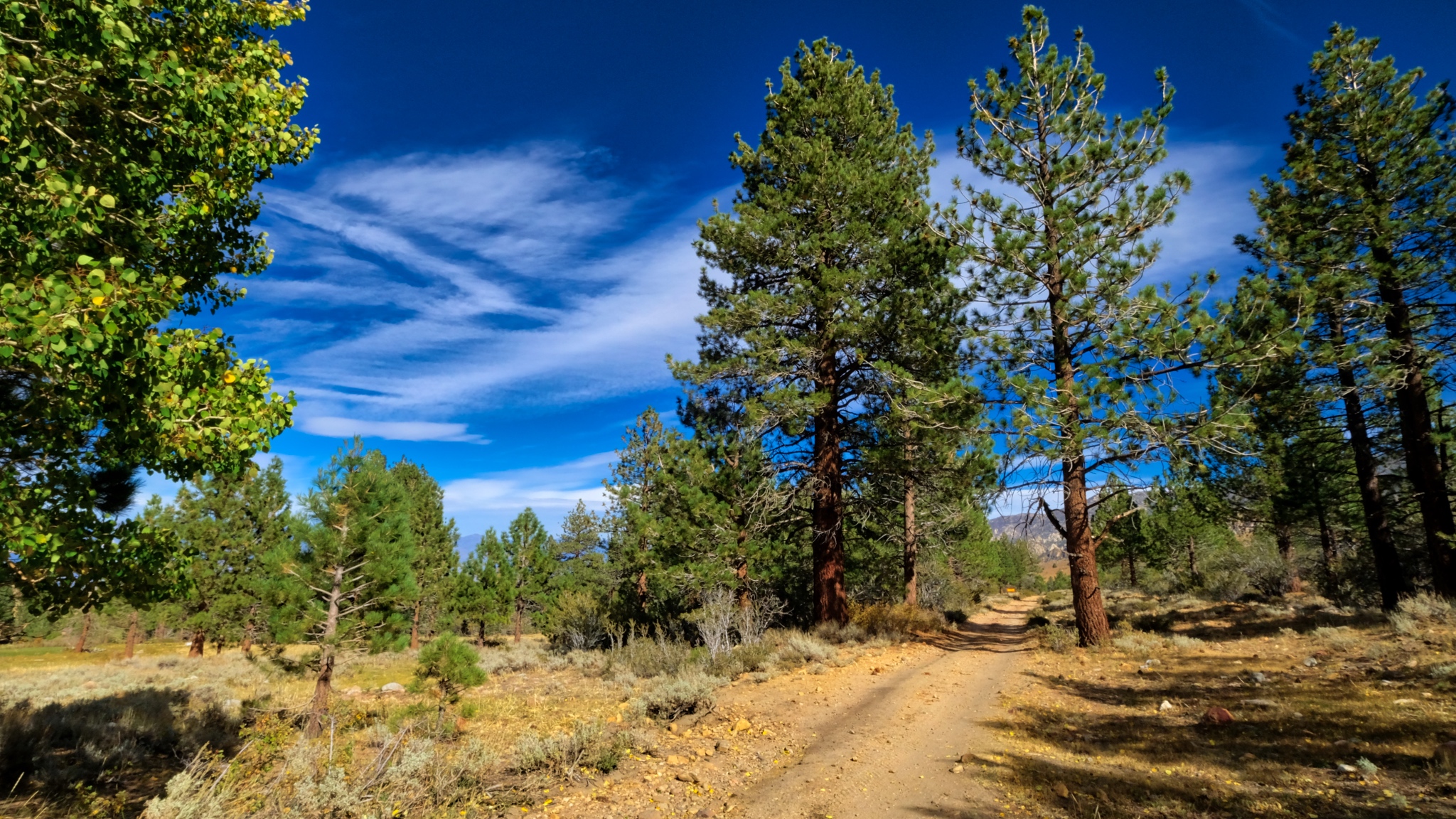 I took a mid-day walk out along the road I came in on . . . heading out of my little grove of pine and aspen.
I took a mid-day walk out along the road I came in on . . . heading out of my little grove of pine and aspen.
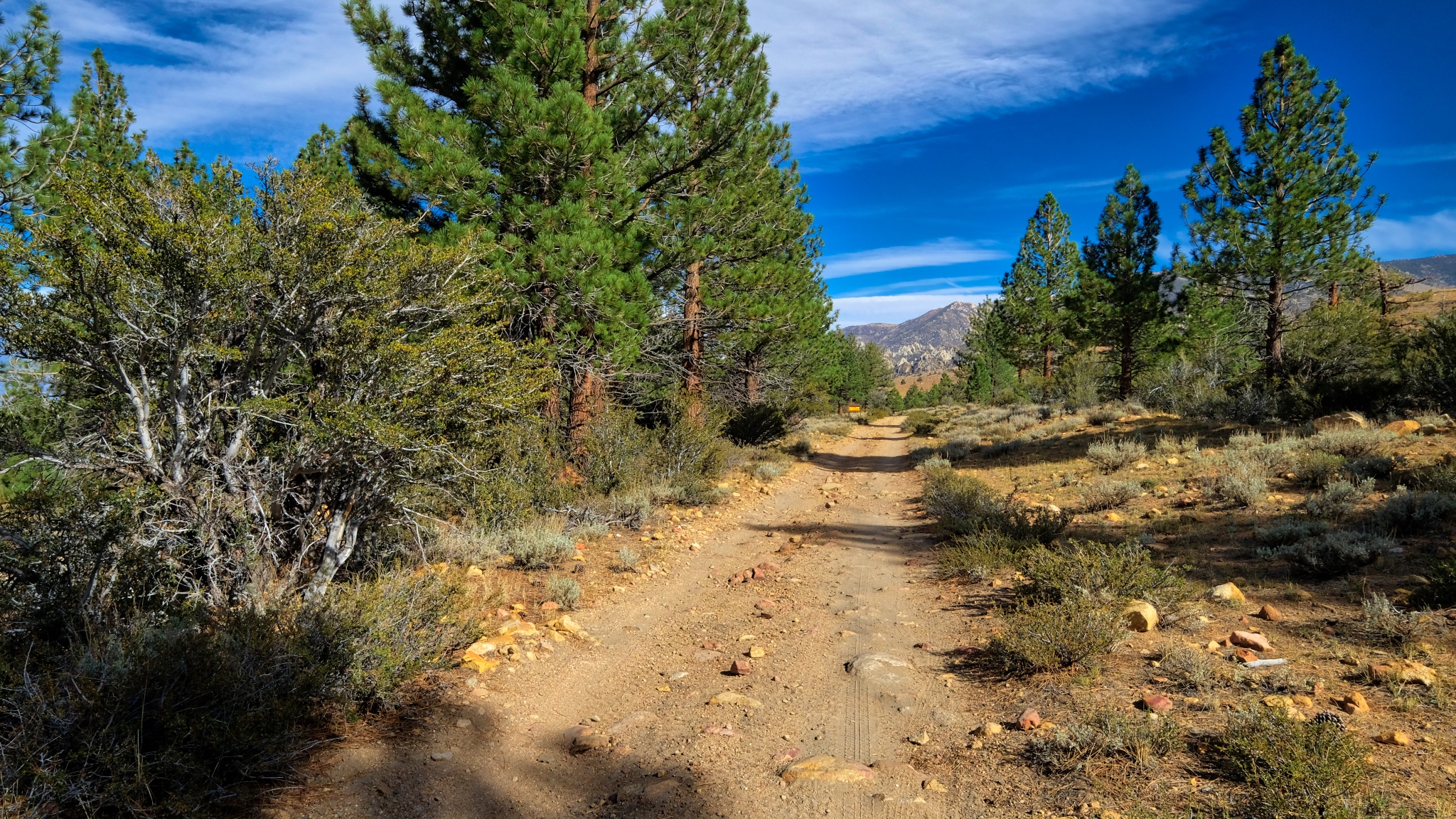 Pretty views opened up as I walked down the hill.
Pretty views opened up as I walked down the hill.
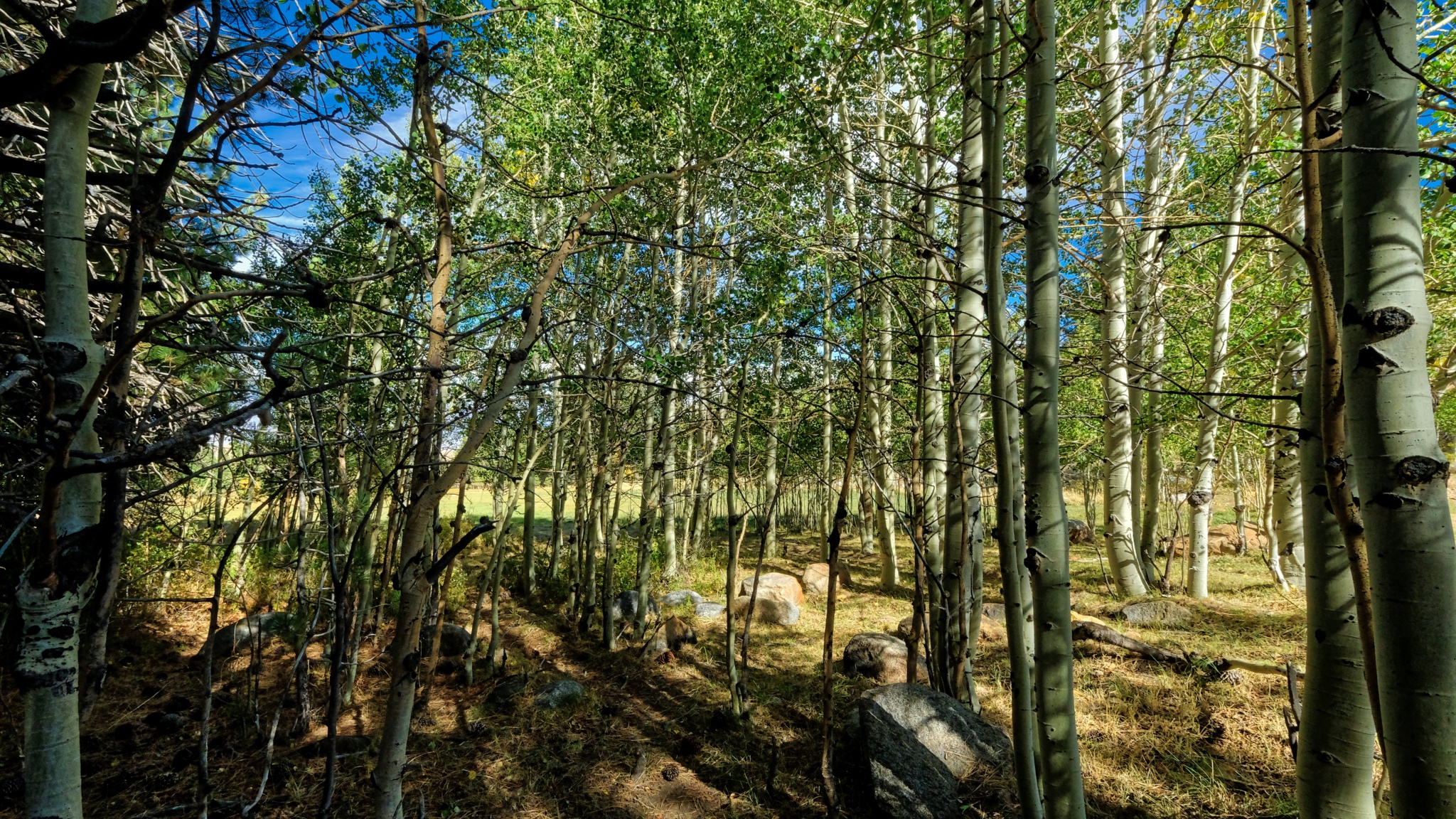 After a drop in elevation of only 200 feet, the aspens were no longer yellow . . . either there is more ater here or the night temperatures have not turned the leaves yet.
After a drop in elevation of only 200 feet, the aspens were no longer yellow . . . either there is more ater here or the night temperatures have not turned the leaves yet.
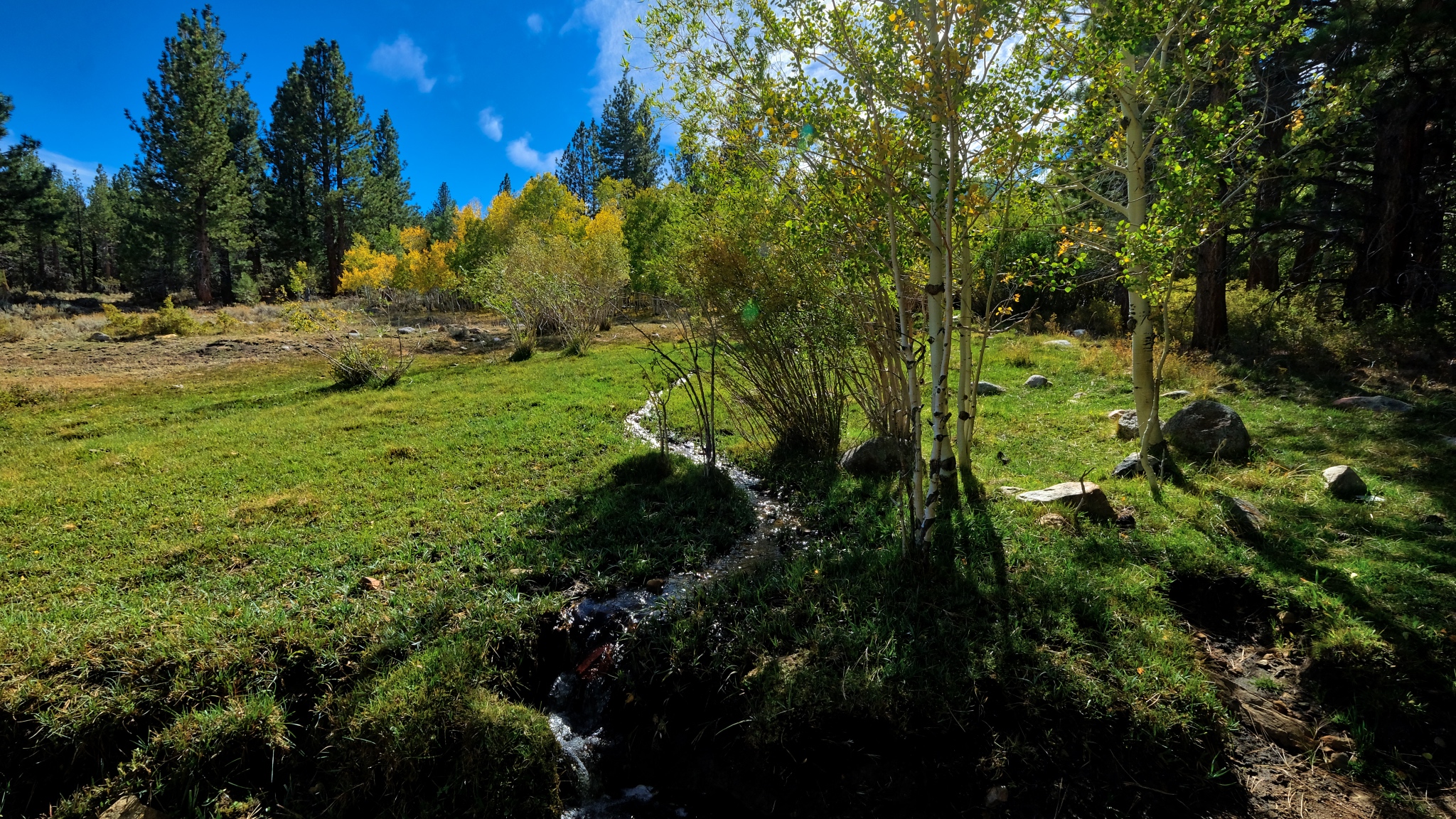 Yes, a soaked meadow above the track . . . a mountain bog and a babbling brook even at this late summer day.
Yes, a soaked meadow above the track . . . a mountain bog and a babbling brook even at this late summer day.
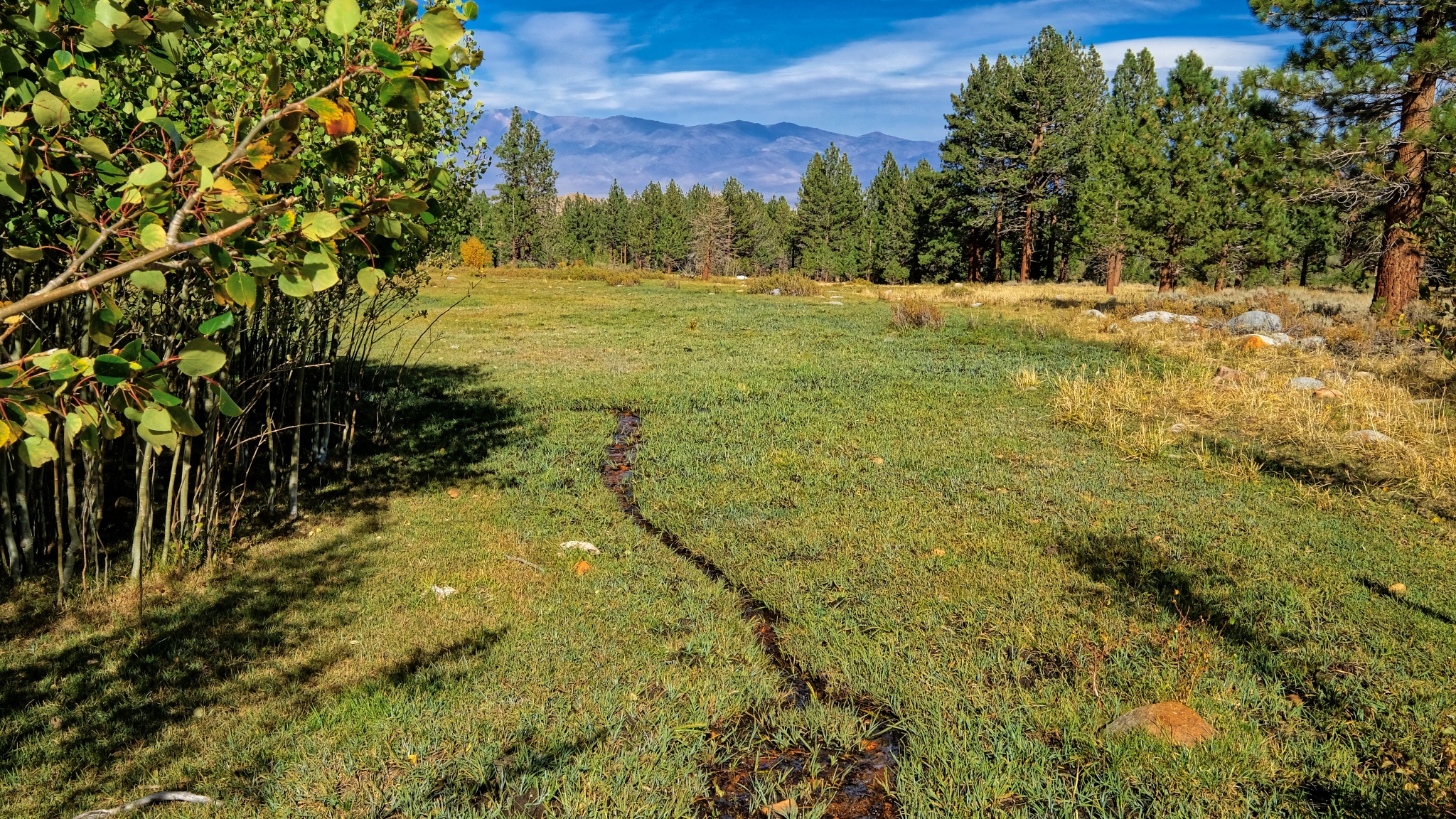 Another wet meadow below the track . . . .
Another wet meadow below the track . . . .
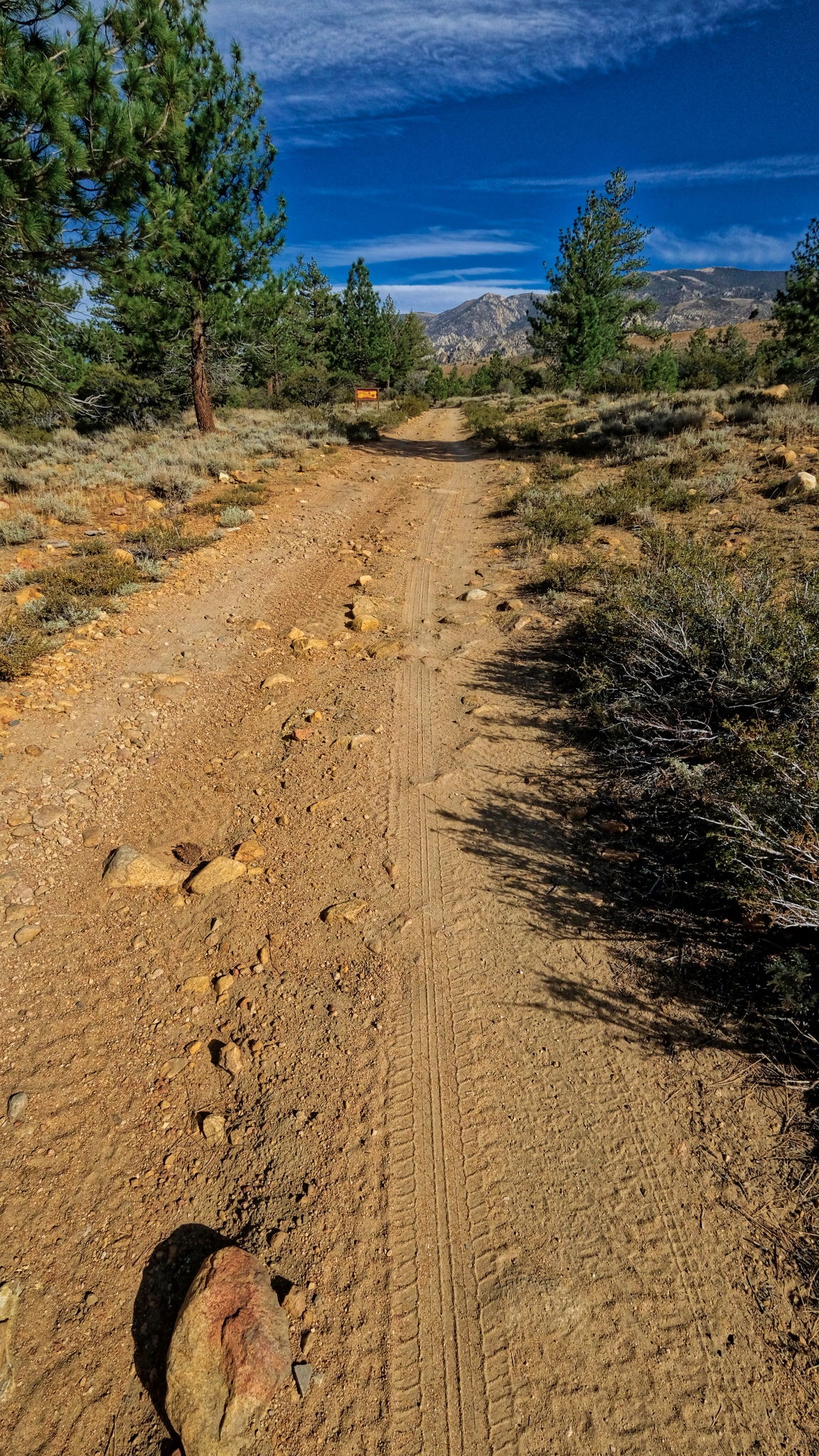 The long track . . . I would hear about one 4X4 a day pass on this jeep track. Although it does not look too rough right here, there are some very bad patches that definitely require four wheel drive and high clearance to get by.
The long track . . . I would hear about one 4X4 a day pass on this jeep track. Although it does not look too rough right here, there are some very bad patches that definitely require four wheel drive and high clearance to get by.
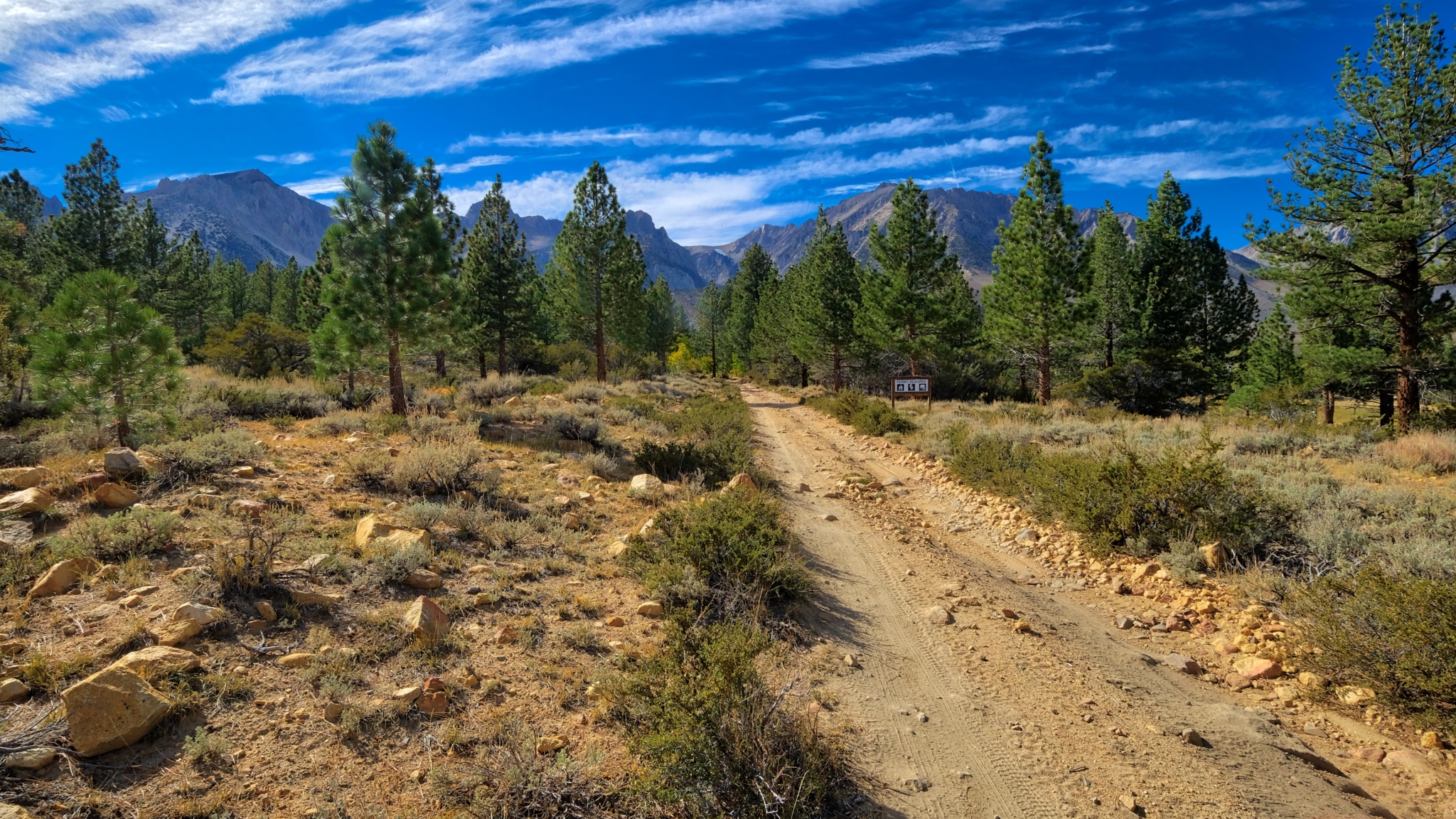 I turned around here and walked back up to my campsite. I would take a much more challenging hike the next day.
I turned around here and walked back up to my campsite. I would take a much more challenging hike the next day.
 I was so pleased when I arrived back at my camper . . . to see the fantastic spot I had found.
I was so pleased when I arrived back at my camper . . . to see the fantastic spot I had found.
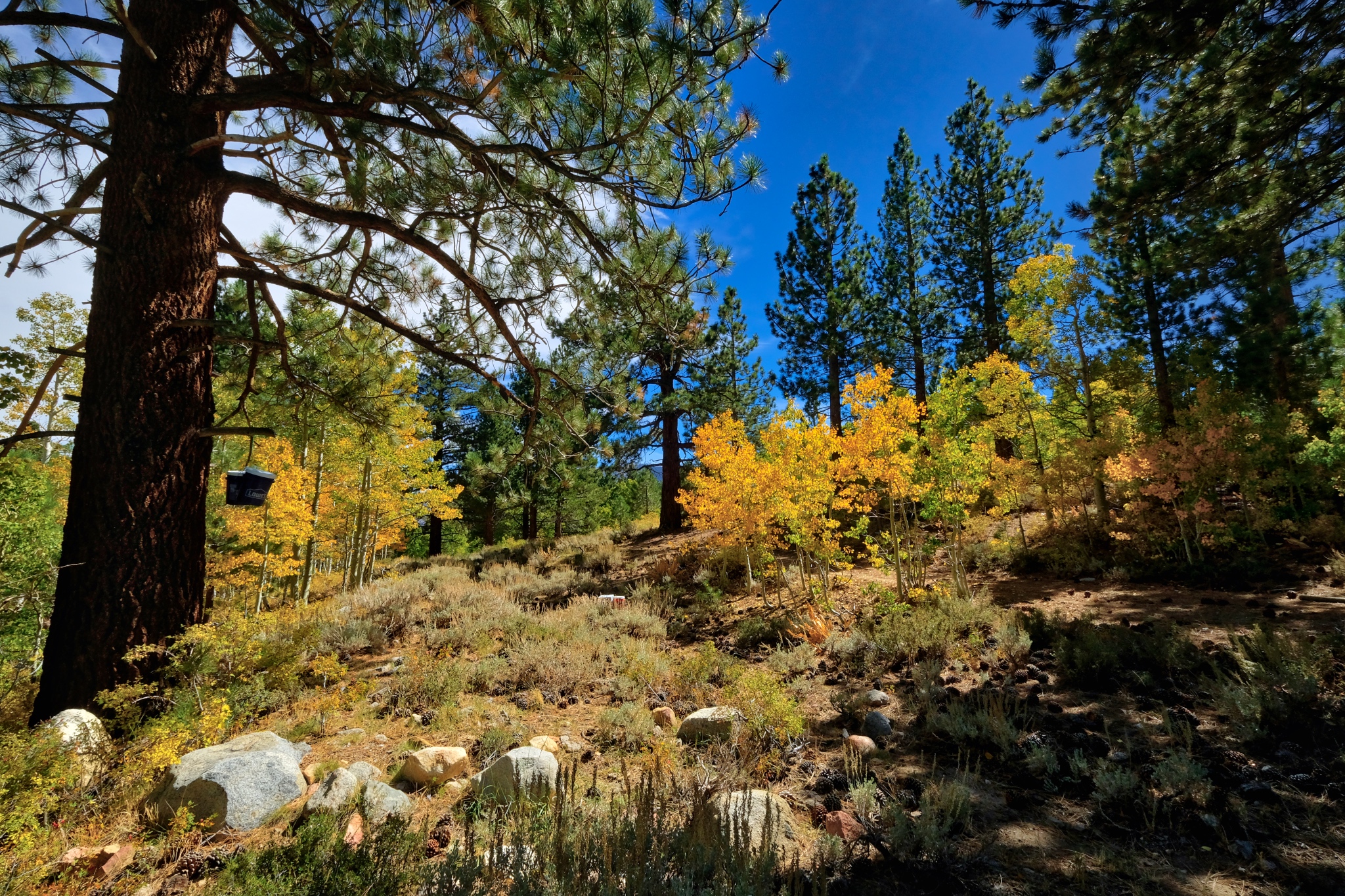 I was happy to sit in my camp chair behind my camper and look at this view . . . for the rest of the day.
I was happy to sit in my camp chair behind my camper and look at this view . . . for the rest of the day.
_______________________________________________
DAY THREE: A WALK OUT OF THE WOODS INTO THE DRYLANDS
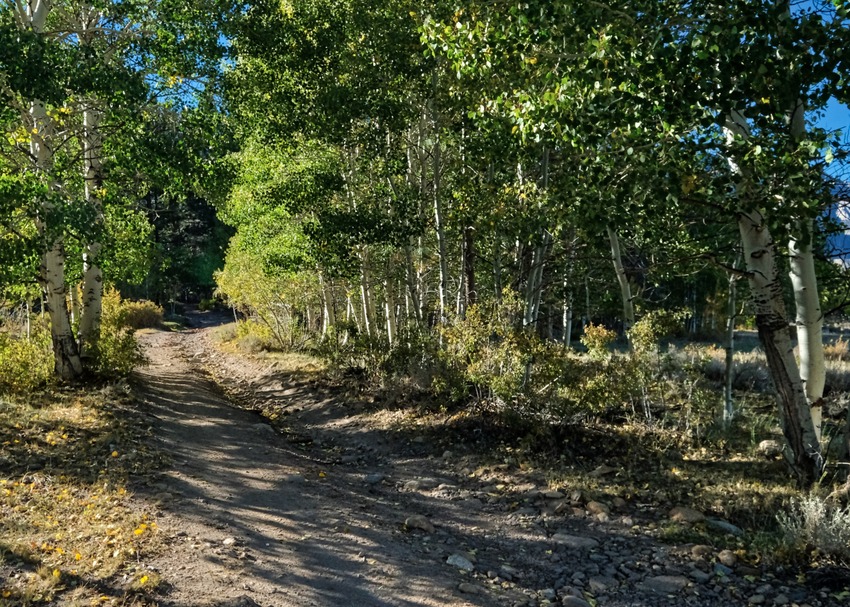 All of my walkabouts begin with walking out of the forest grove where I camp.
All of my walkabouts begin with walking out of the forest grove where I camp.
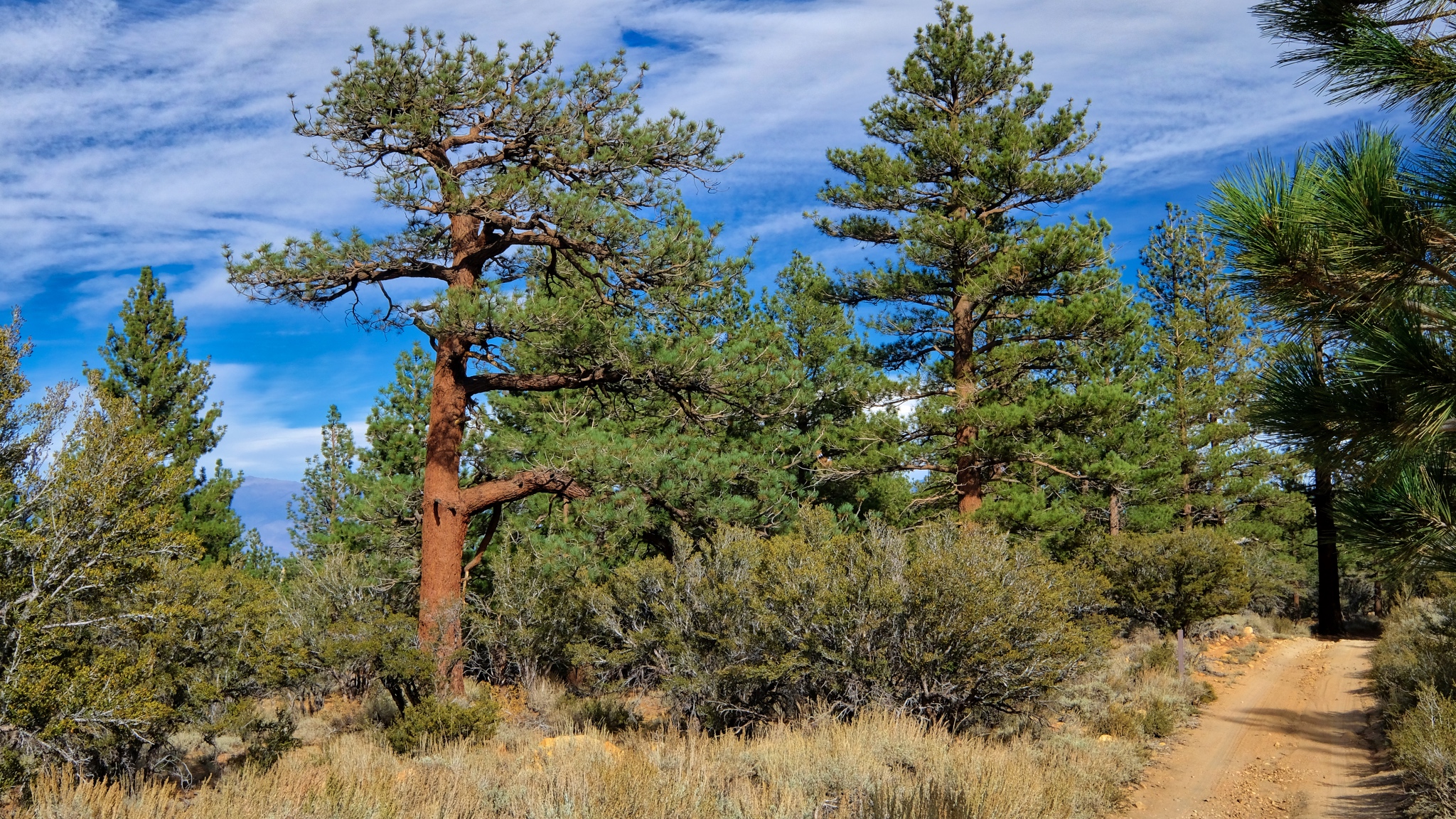 The trees become sparser and the ground drier.
The trees become sparser and the ground drier.
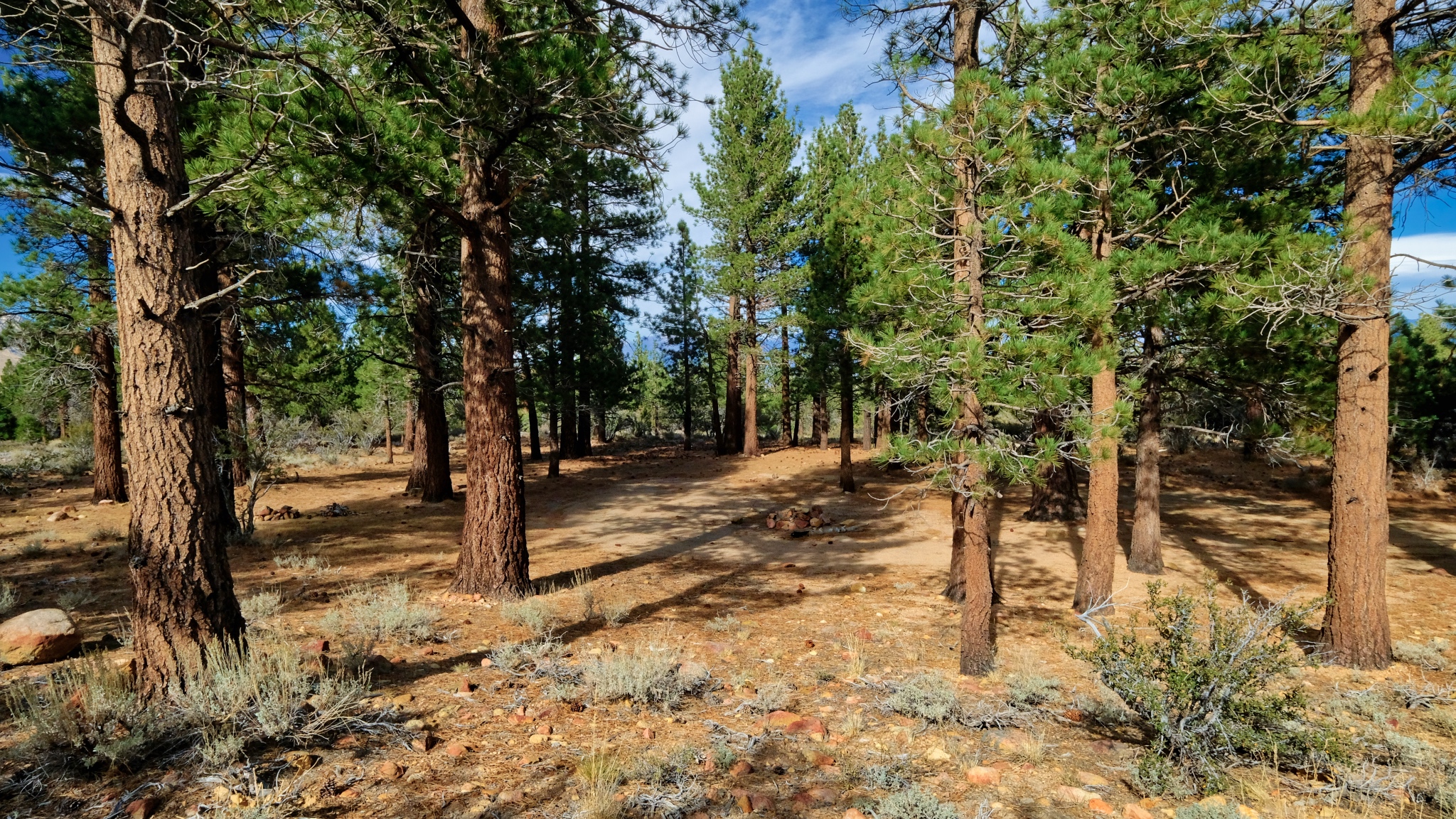 On this walk along the jeep track I noticed a camp site that had been used quite a bit in a stand of ponderosa pines. A nice place for several vehicles on a family outing.
On this walk along the jeep track I noticed a camp site that had been used quite a bit in a stand of ponderosa pines. A nice place for several vehicles on a family outing.
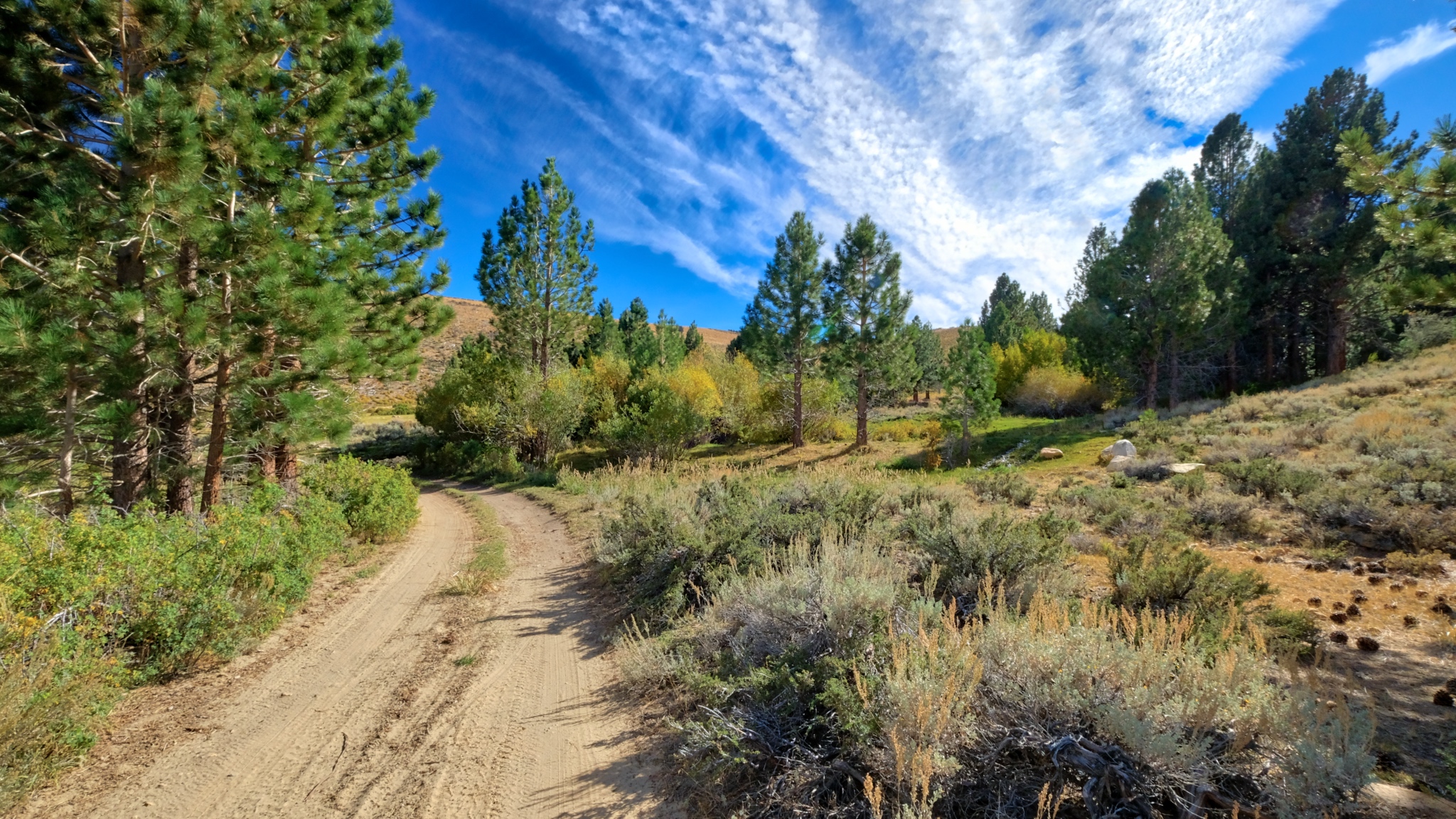 Further out of the woods.
Further out of the woods.
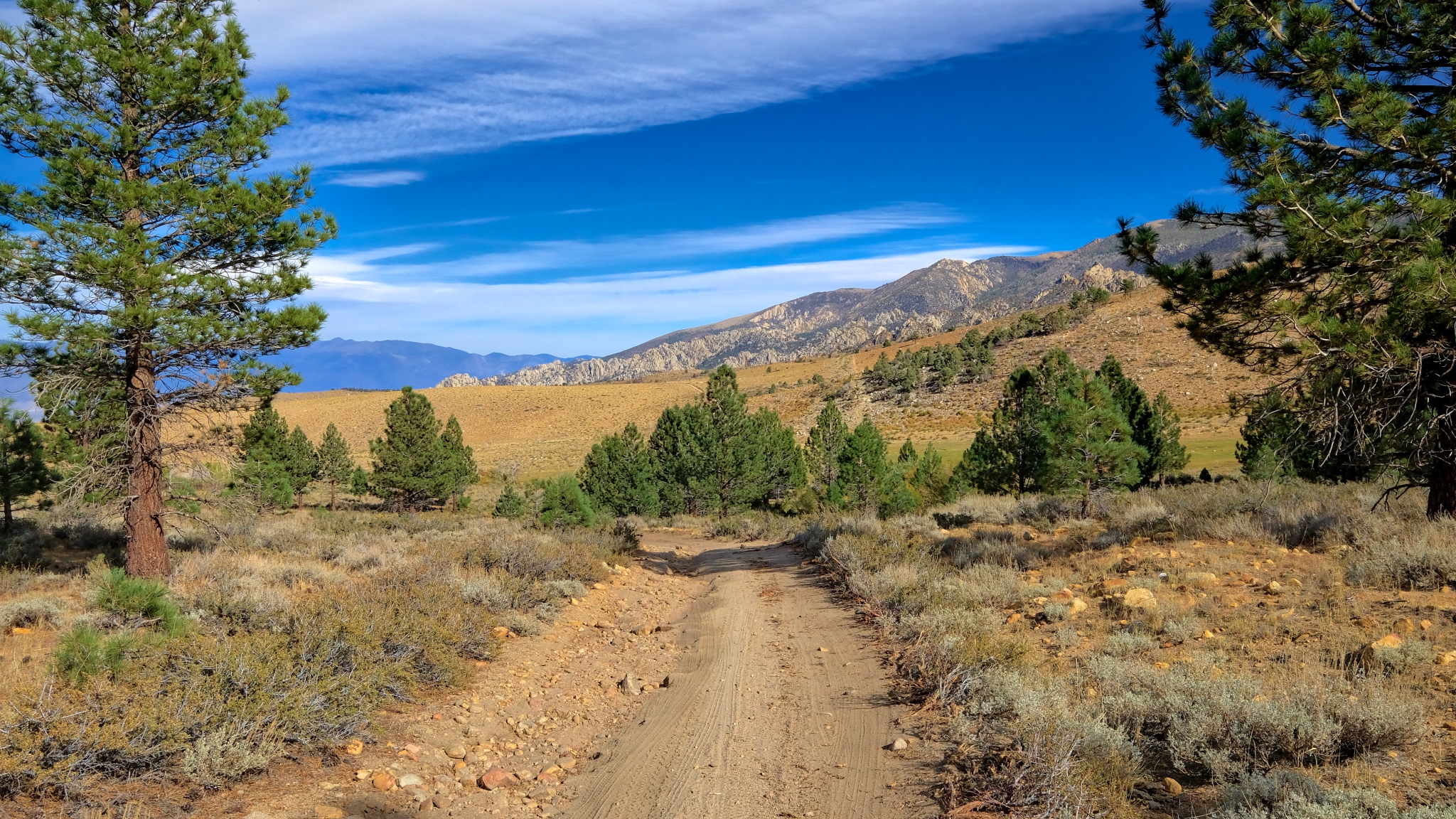 The drylands beyond.
The drylands beyond.
 Further towards the high altitude drylands.
Further towards the high altitude drylands.
 Pines in the dry landscape.
Pines in the dry landscape.
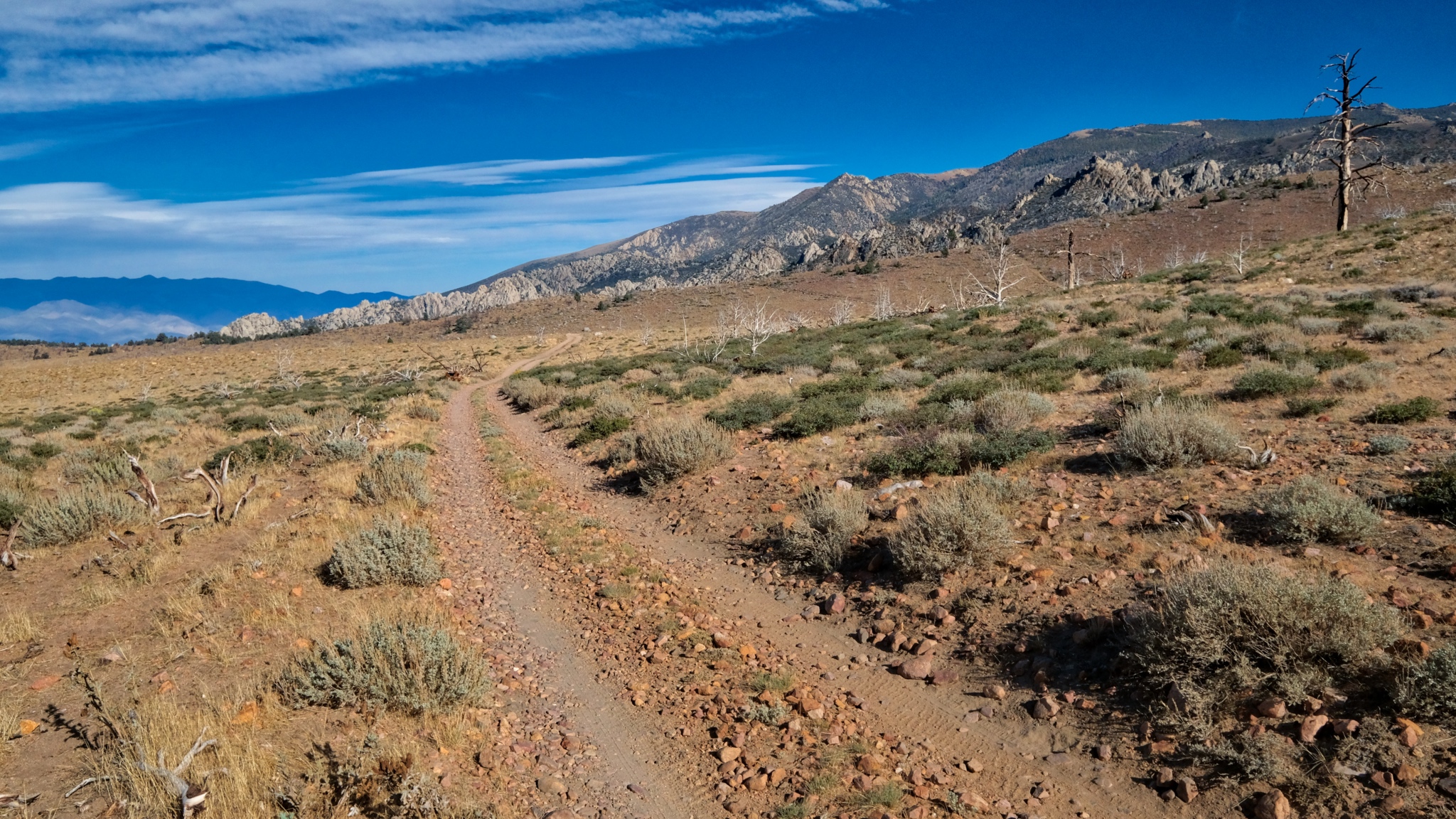 Out ahead a desert track. I have missed this kind of topography during my many years in the wet tropics.
Out ahead a desert track. I have missed this kind of topography during my many years in the wet tropics.
 Contrary to what some may think, there is so much to see out here.
Contrary to what some may think, there is so much to see out here.
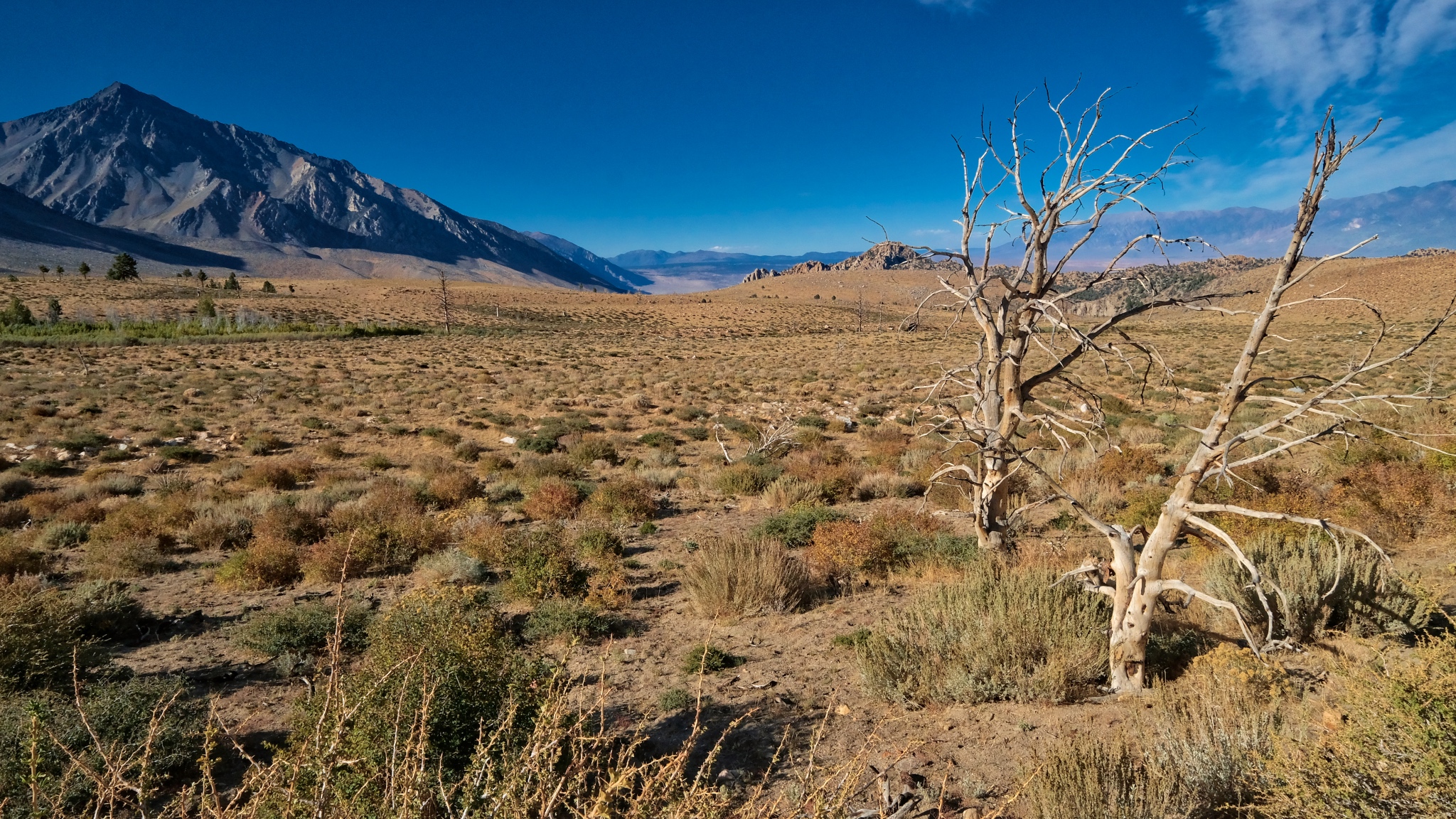 Looking down the valley toward Bishop, California, many miles away and many feel lower in elevation.
Looking down the valley toward Bishop, California, many miles away and many feel lower in elevation.
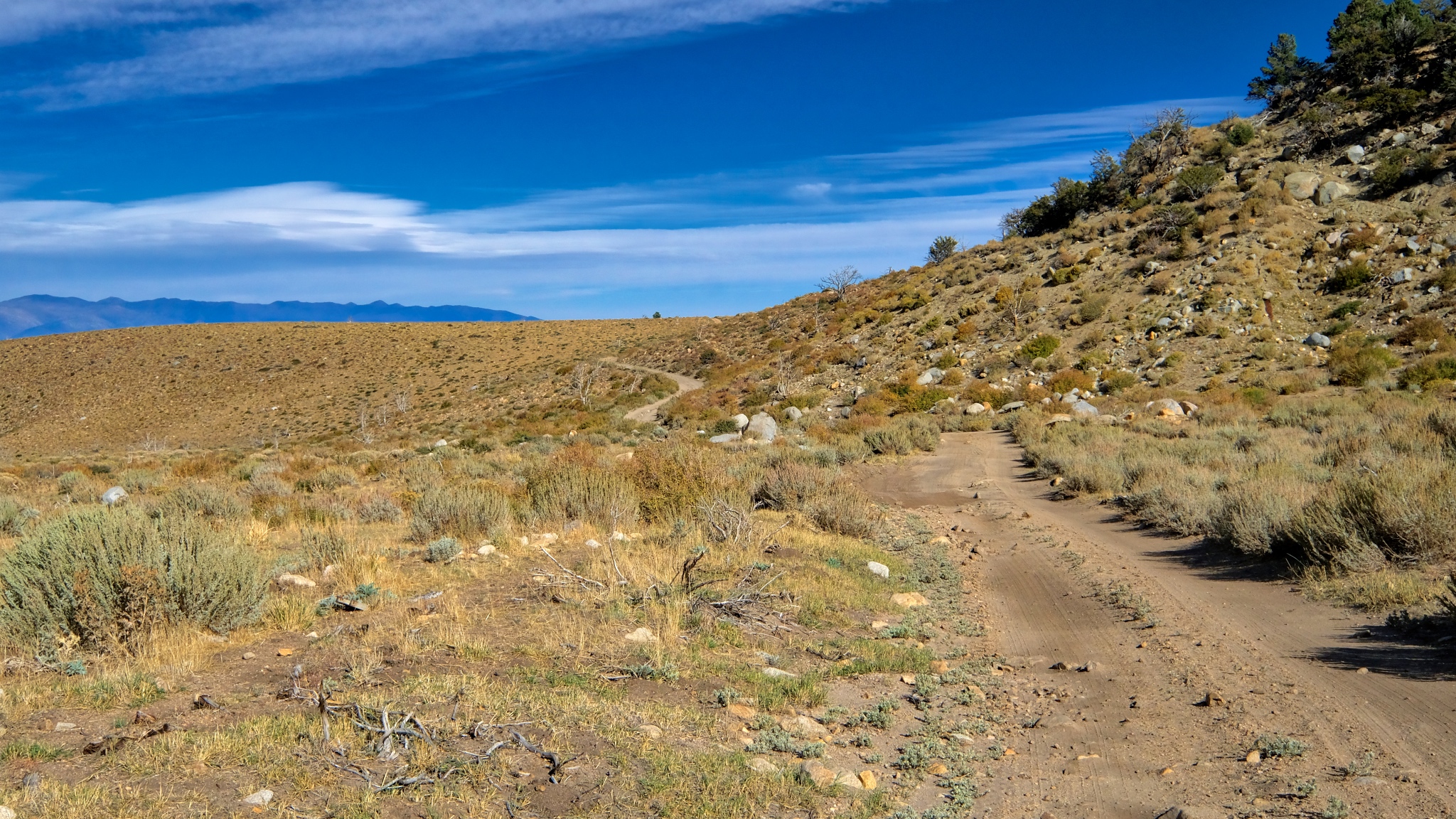 What is over that hill?
What is over that hill?
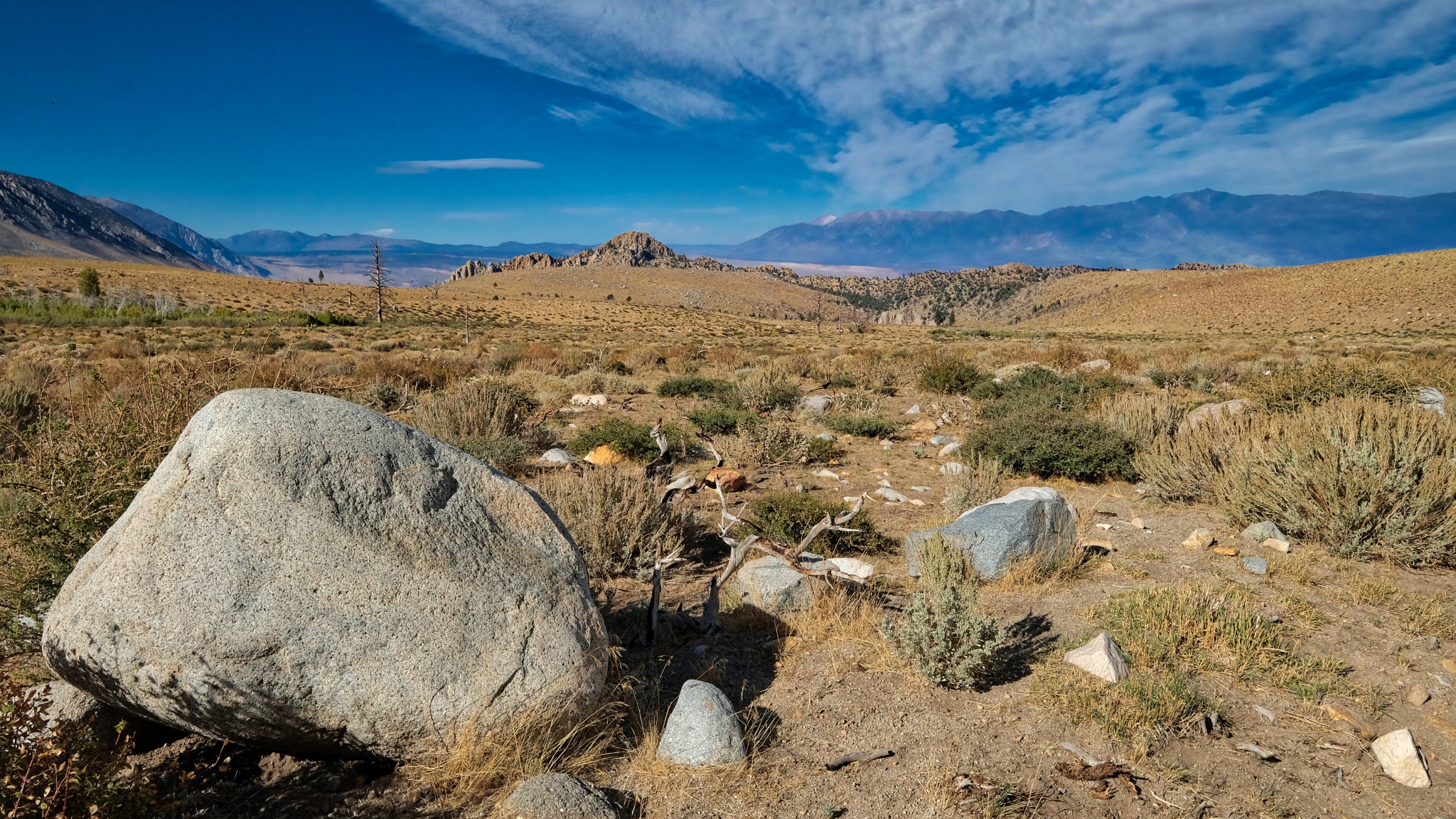 A large erratic stone and a view down valley to the Buttermilk formation of large boulders.
A large erratic stone and a view down valley to the Buttermilk formation of large boulders.
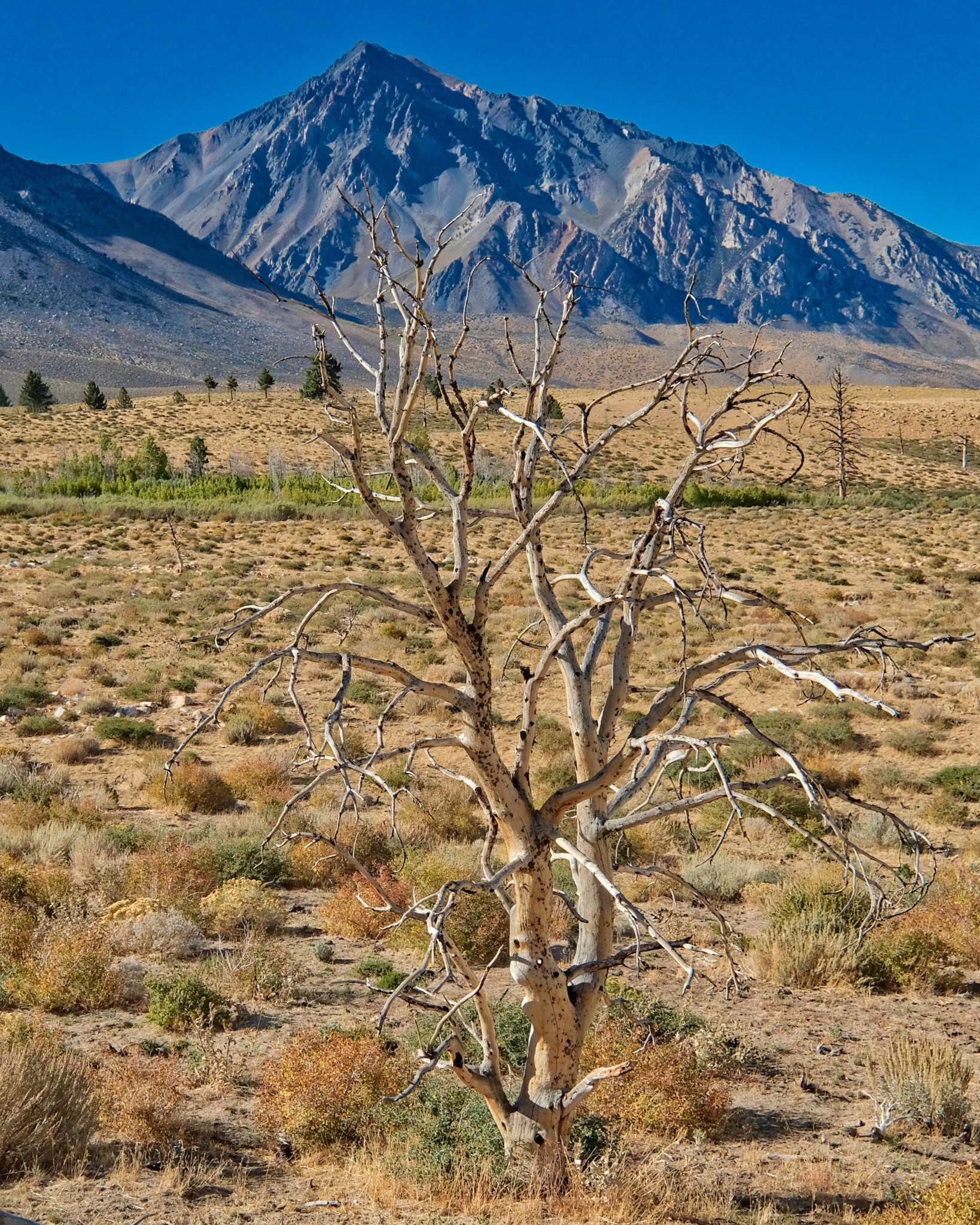 Beautiful view back to Mount Tom.
Beautiful view back to Mount Tom.
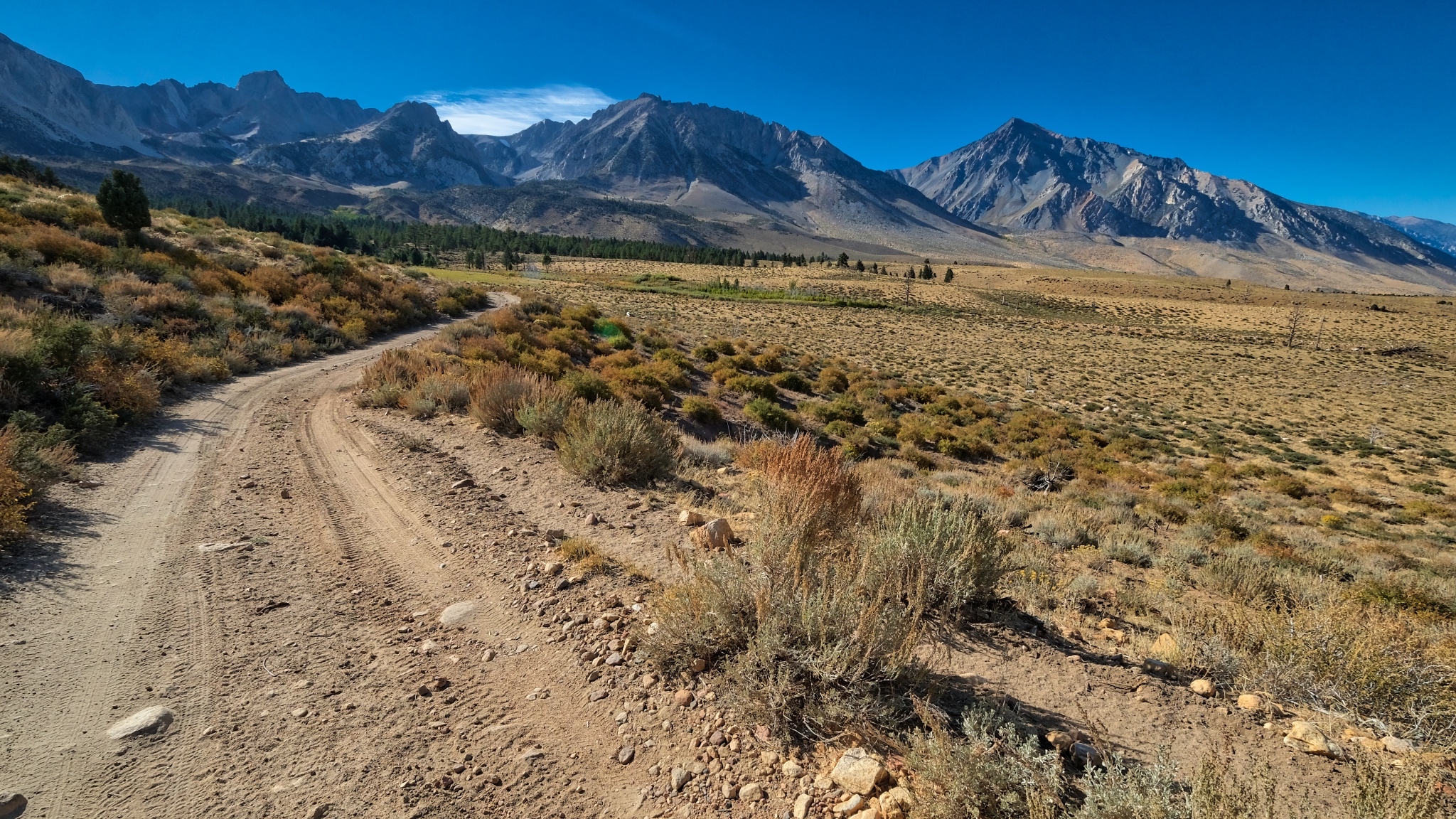 Looking back up the road on my walk I see a beautiful grand view.
Looking back up the road on my walk I see a beautiful grand view.
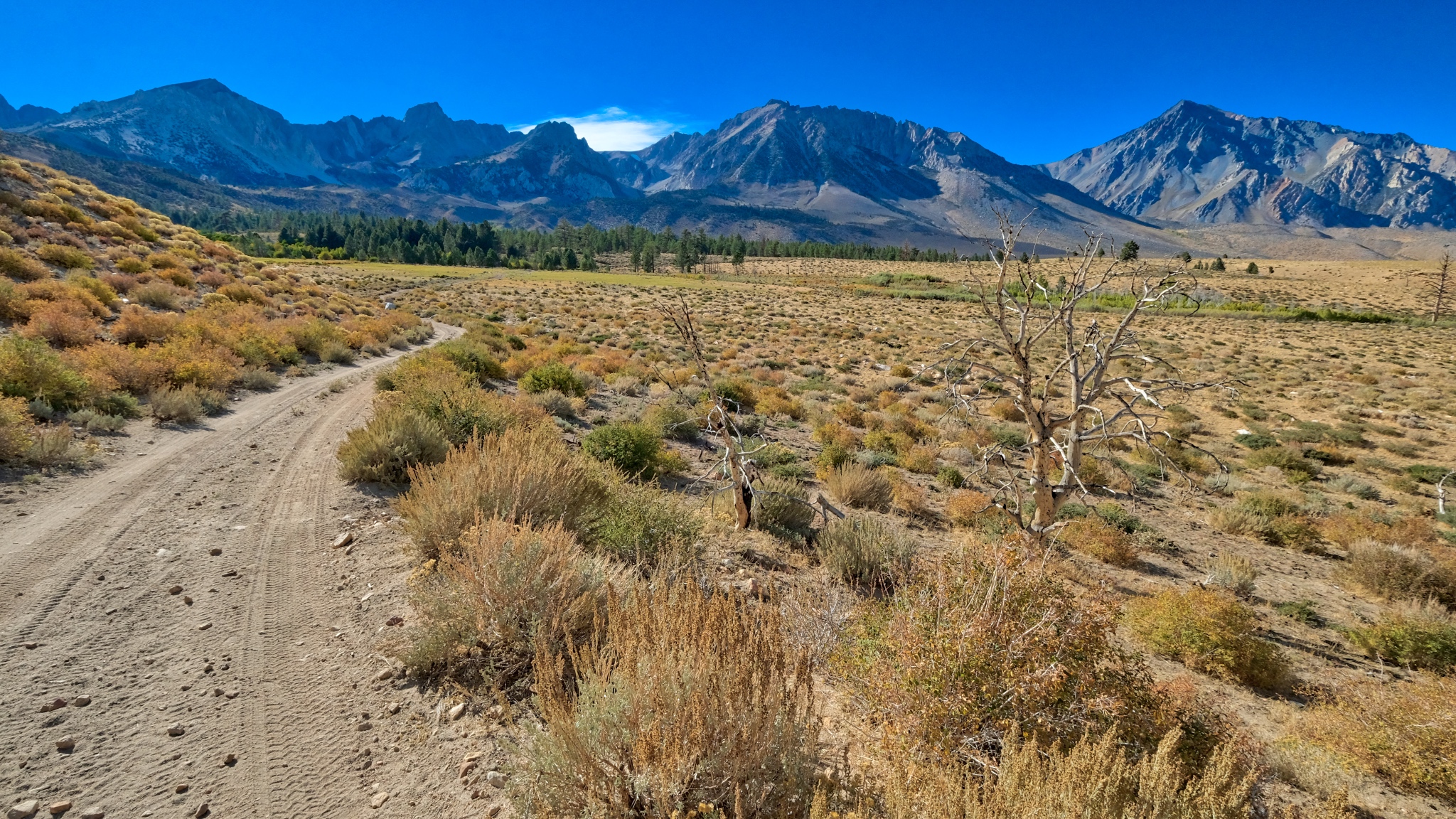 I took a second look back up the jeep track and noticed a hiker coming my way. He was backpacker from nearby Bishop who had been walking, camping and climbing at higher elevation for five days. He stopped for a chat about the local water rights battles involving stream diversion to meet the water needs of an ever-expanding City of Los Angeles. He felt that if any more mountain stream water were diverted 'over the hill', this whole region would become a completely arid region . . . absolutely no plants whatsoever . . . another Death Valley.
I took a second look back up the jeep track and noticed a hiker coming my way. He was backpacker from nearby Bishop who had been walking, camping and climbing at higher elevation for five days. He stopped for a chat about the local water rights battles involving stream diversion to meet the water needs of an ever-expanding City of Los Angeles. He felt that if any more mountain stream water were diverted 'over the hill', this whole region would become a completely arid region . . . absolutely no plants whatsoever . . . another Death Valley.
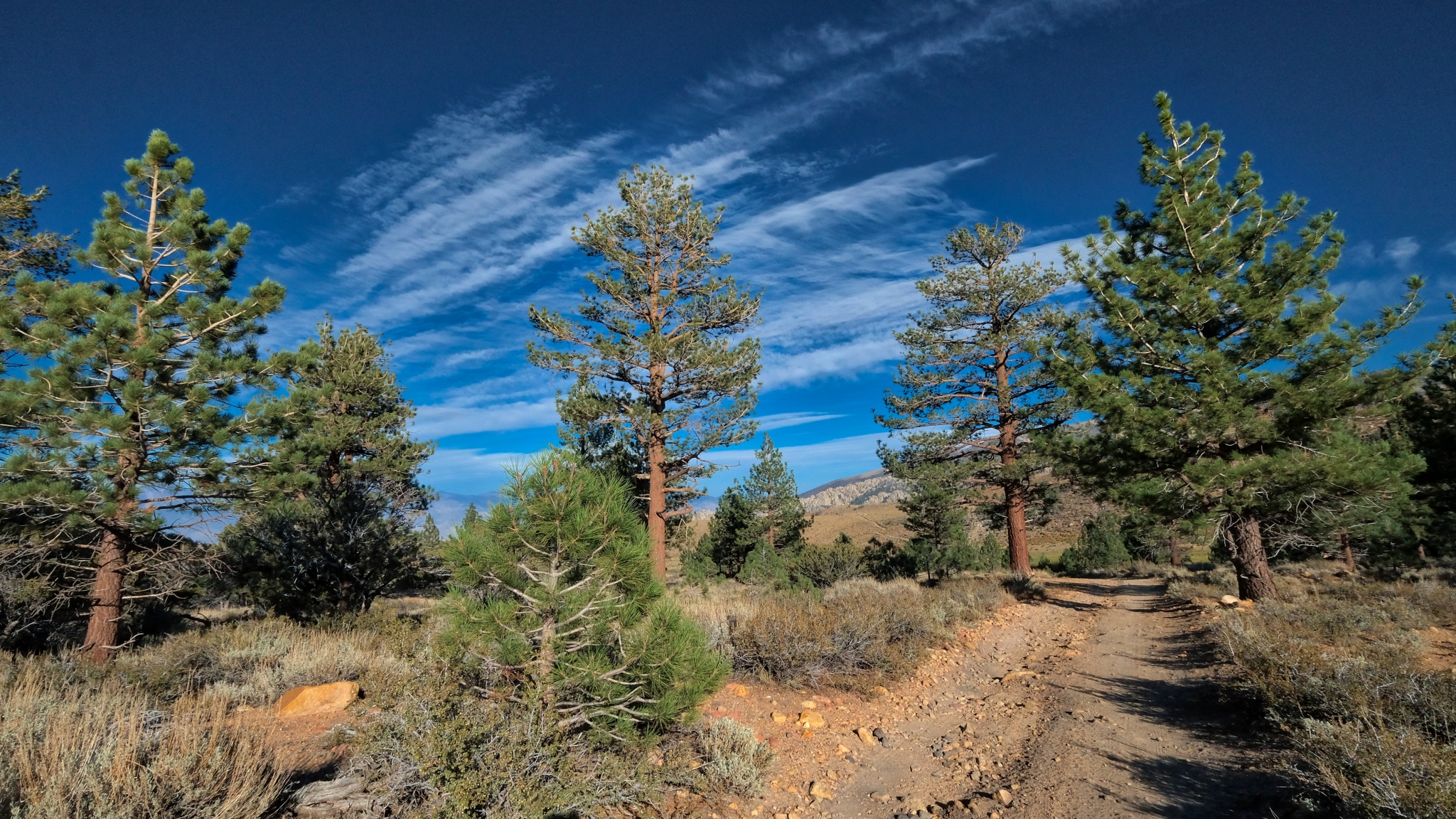 I sat out in the desert sage awhile before walking back into my stand of trees in a powerfully clear afternoon light.
I sat out in the desert sage awhile before walking back into my stand of trees in a powerfully clear afternoon light.
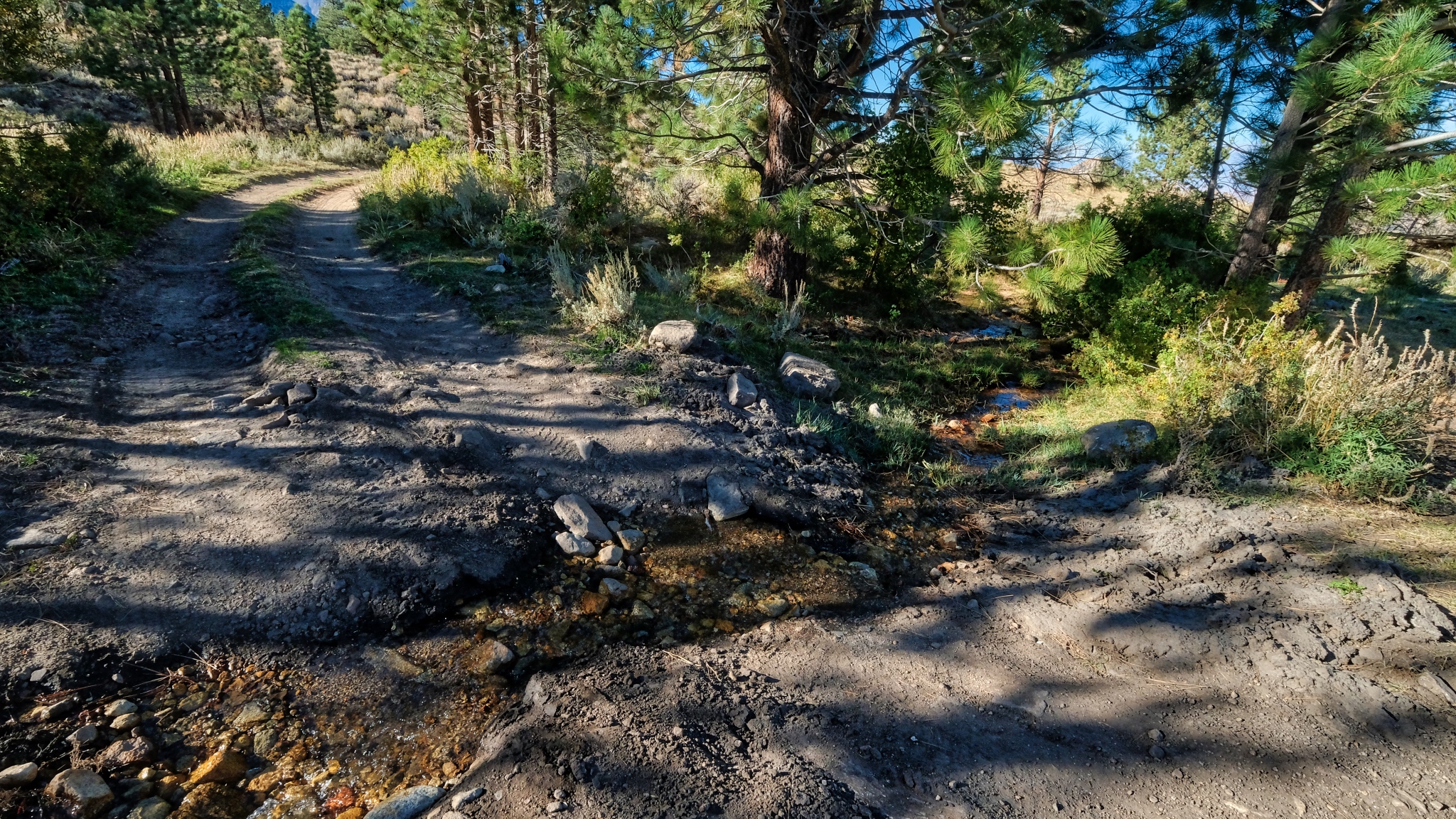 A little stream crossed the track as I entered the dry woods.
A little stream crossed the track as I entered the dry woods.
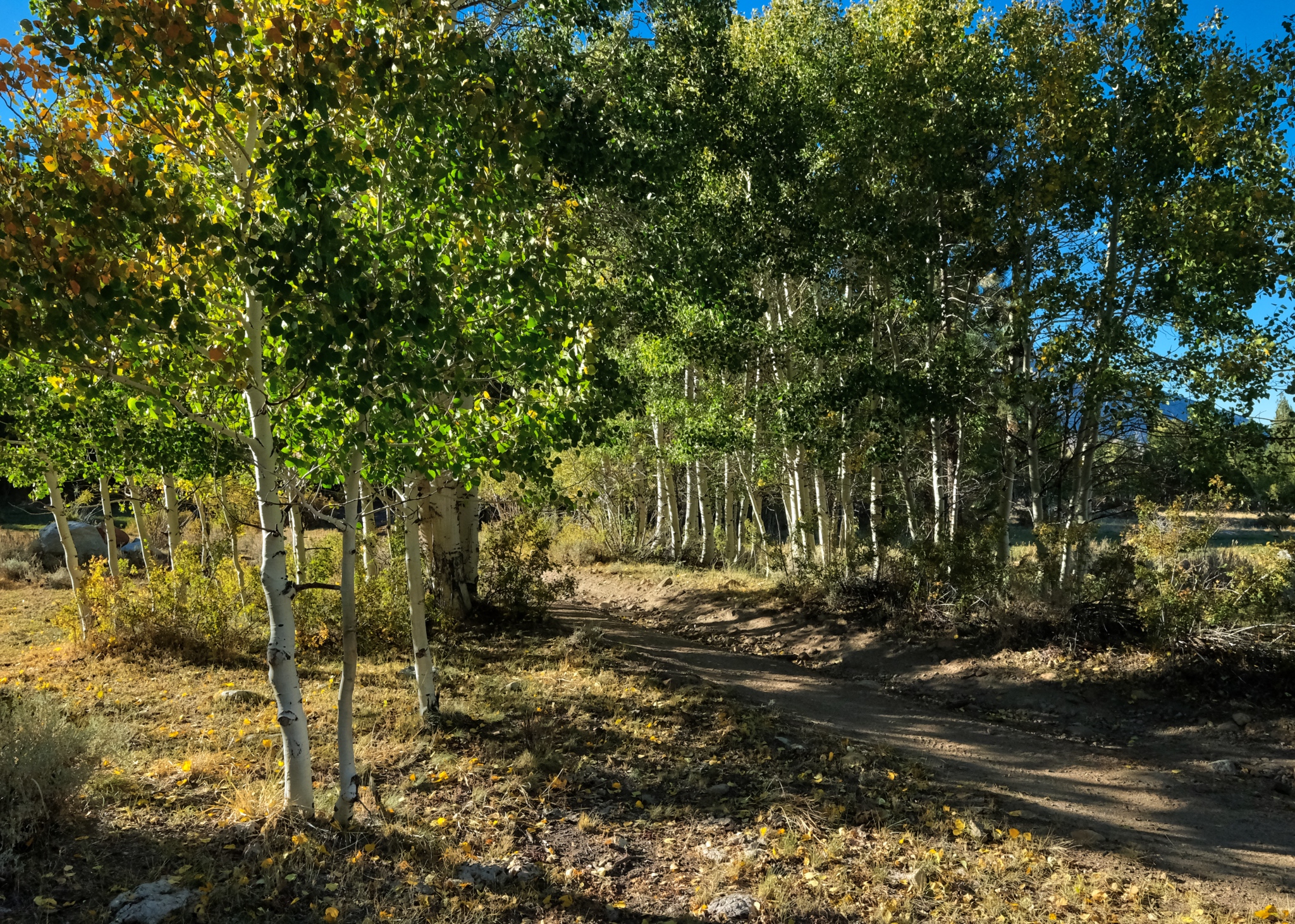 On my way back up to my campsite I couldn't help but notice that the sun was now backlighting the bright aspen leaves.
On my way back up to my campsite I couldn't help but notice that the sun was now backlighting the bright aspen leaves.
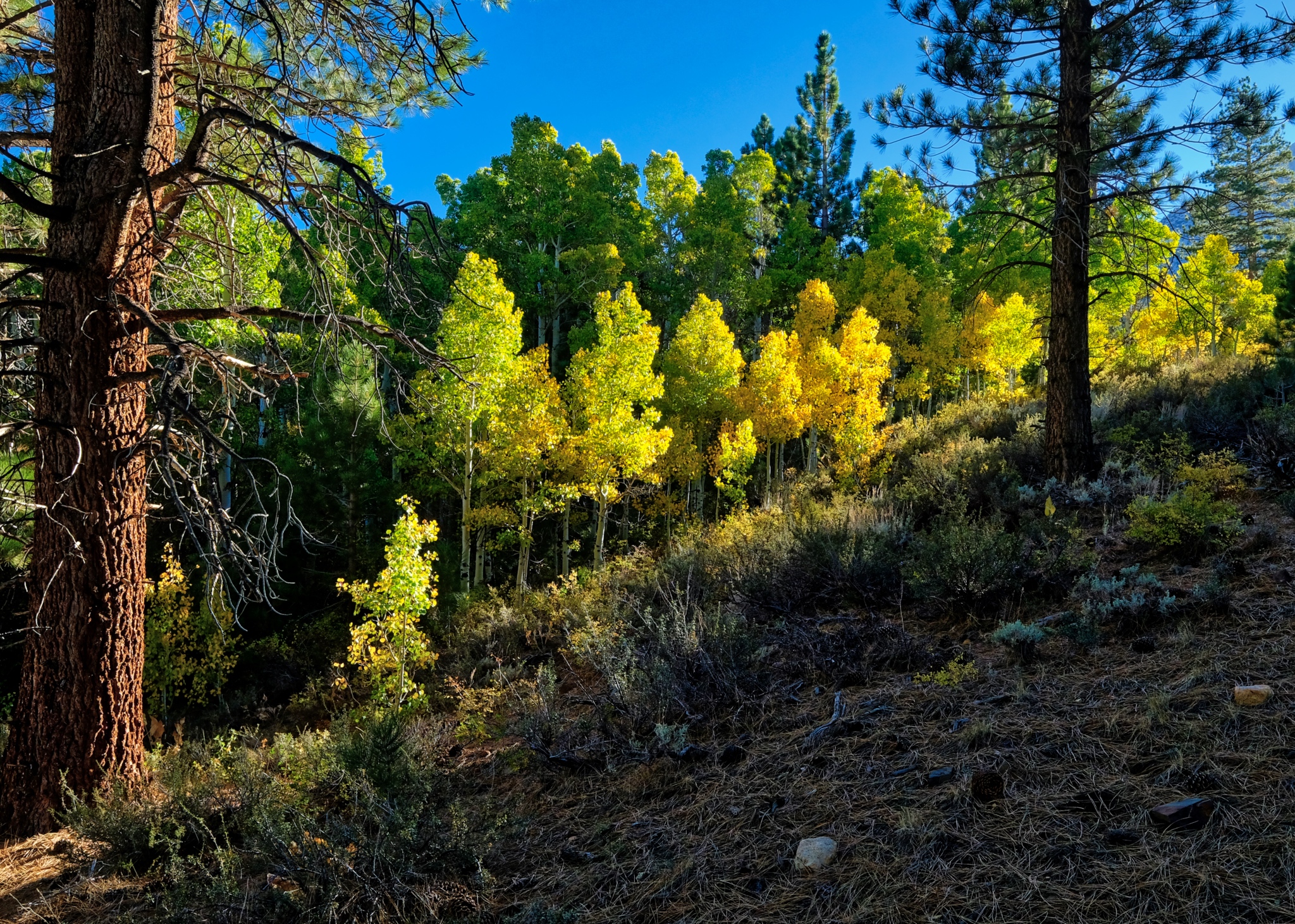 I have to say that this view nearly took my breath away! Rare natural beauty I will remember for the rest of my life!
I have to say that this view nearly took my breath away! Rare natural beauty I will remember for the rest of my life!
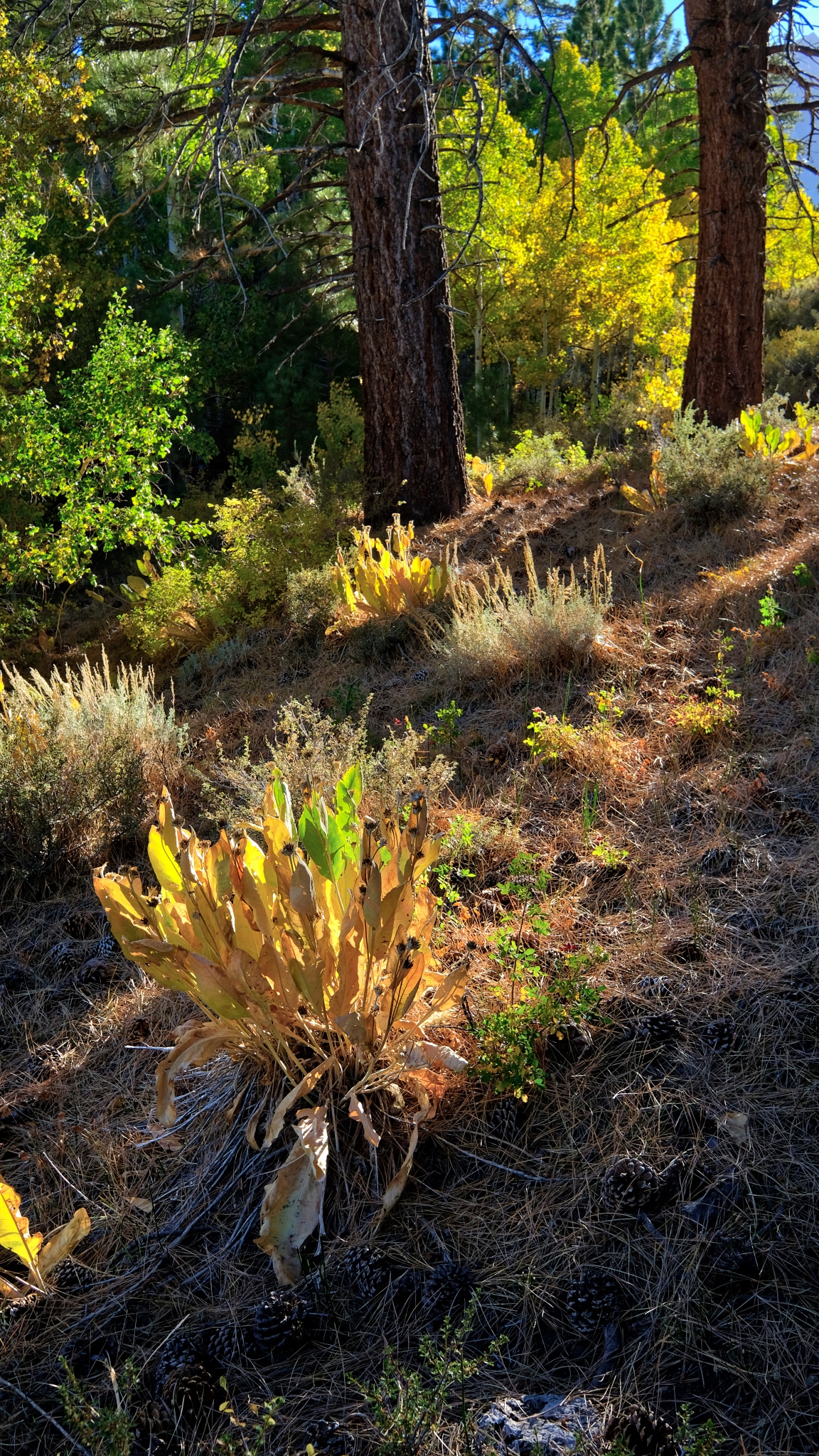 I stopped all along my return walk and marveled at the light and beauty.
I stopped all along my return walk and marveled at the light and beauty.
 I took many, many photos of this backlit stand of yellow aspens, each with different camera settings to make sure I captured the perfect image. My posting here, on my photo blog, is only at 850px wide . . . but the uncropped version of this photo is amazingly sharp.
I took many, many photos of this backlit stand of yellow aspens, each with different camera settings to make sure I captured the perfect image. My posting here, on my photo blog, is only at 850px wide . . . but the uncropped version of this photo is amazingly sharp.
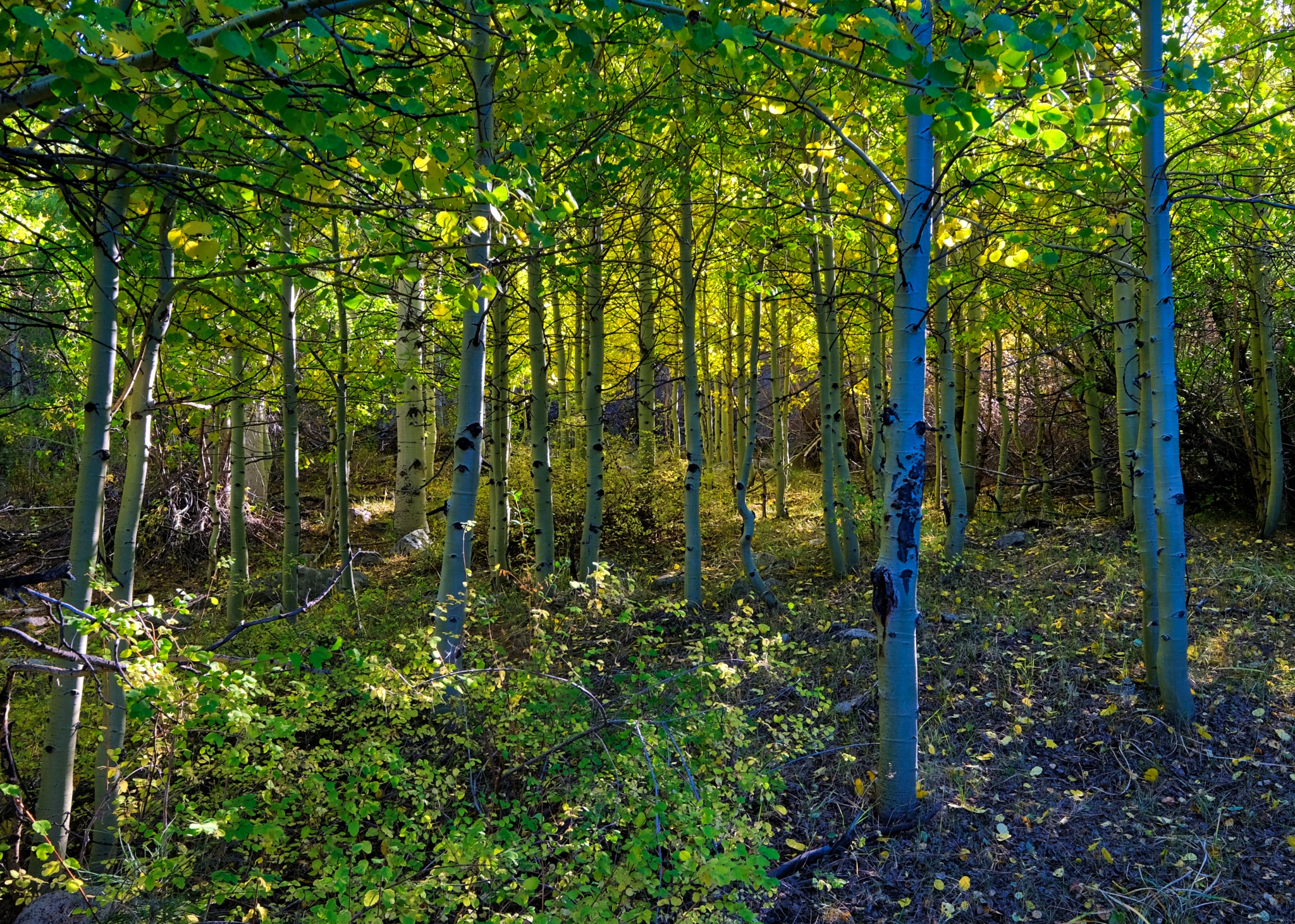 I deviated off the jeep track a few times to stand in the middle of the bright aspens.
I deviated off the jeep track a few times to stand in the middle of the bright aspens.
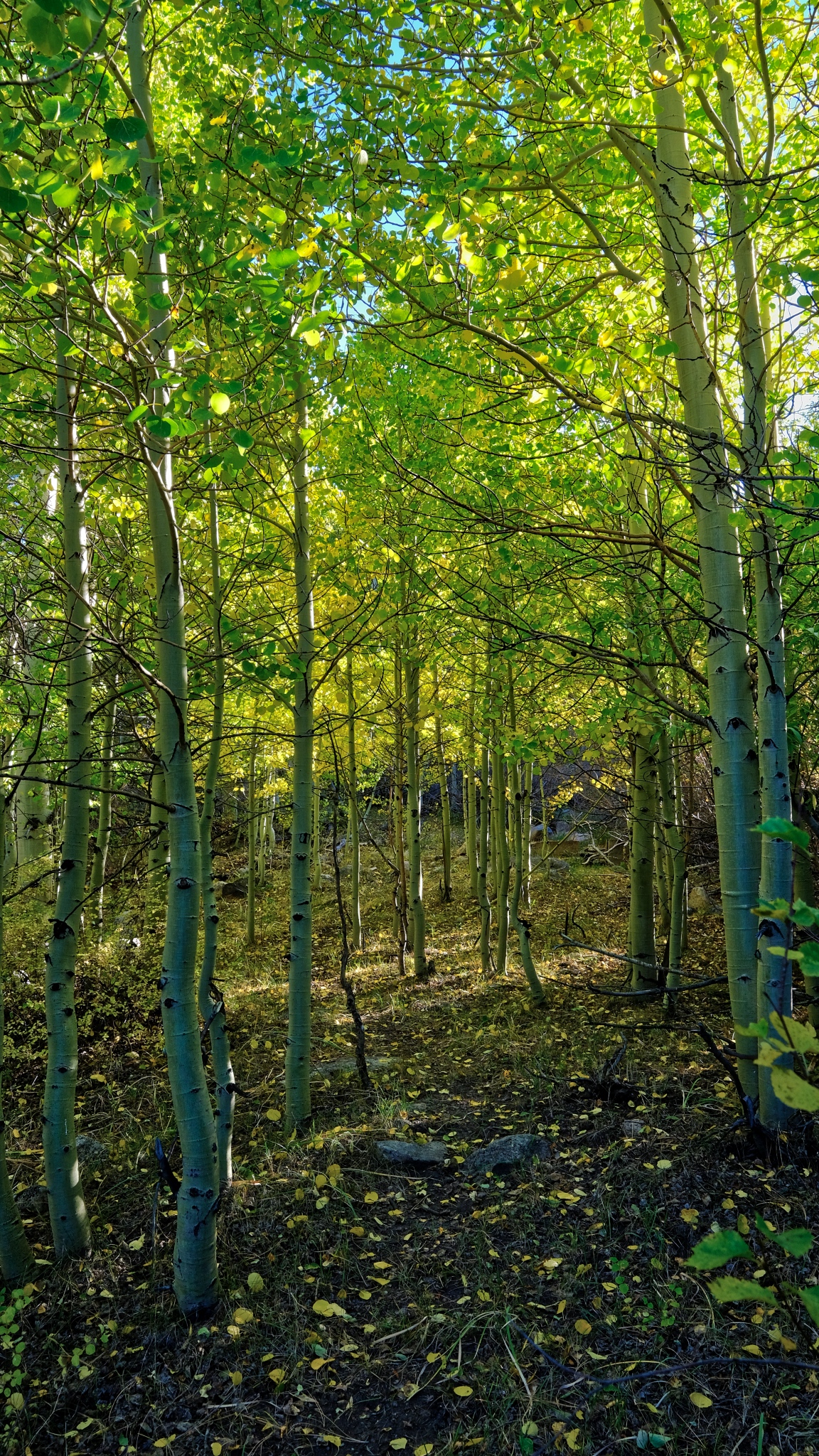 I could have stood right here FOREVER.
I could have stood right here FOREVER.
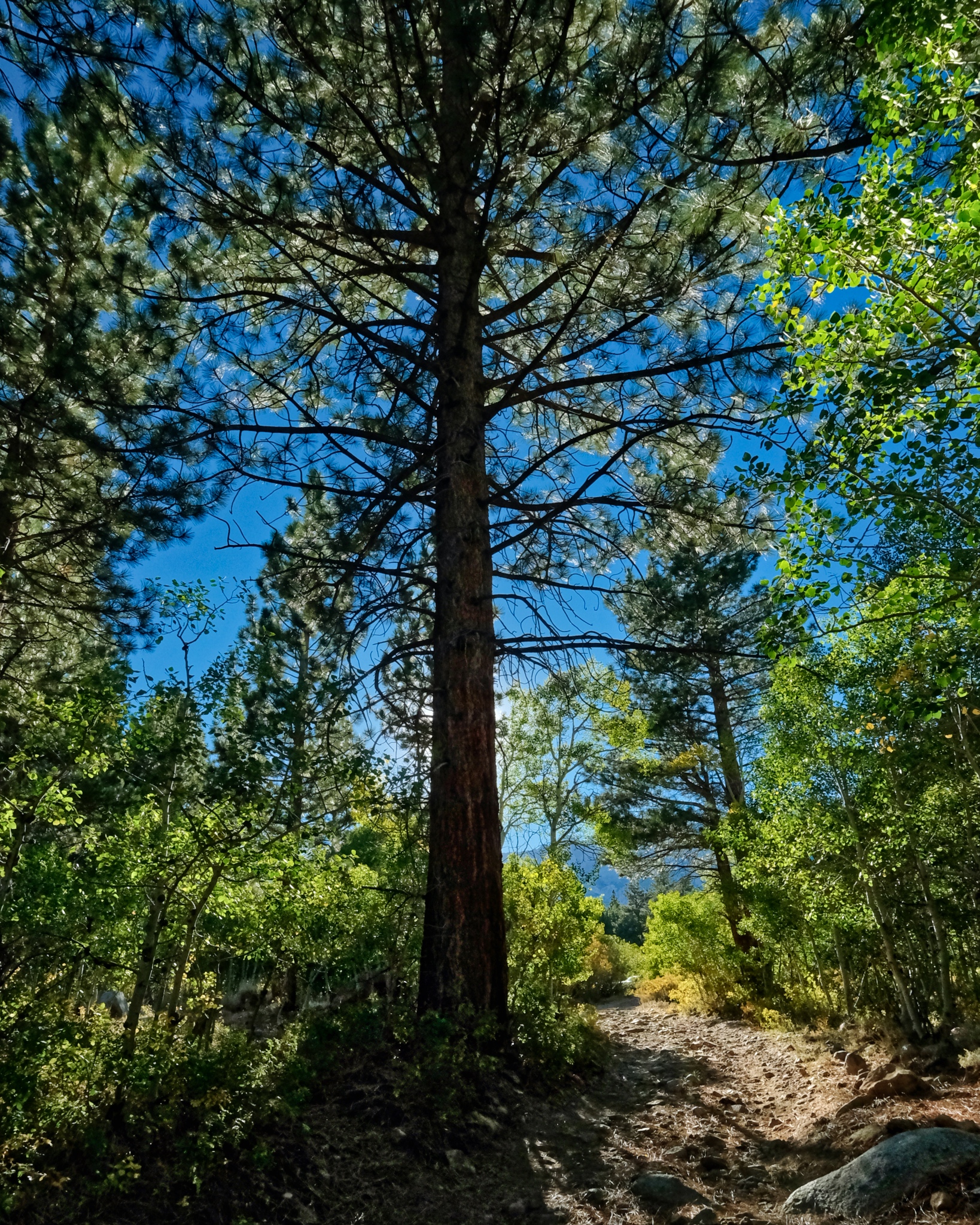 I took a photo about once every ten steps, such was the natural beauty and the fantastic light.
I took a photo about once every ten steps, such was the natural beauty and the fantastic light.
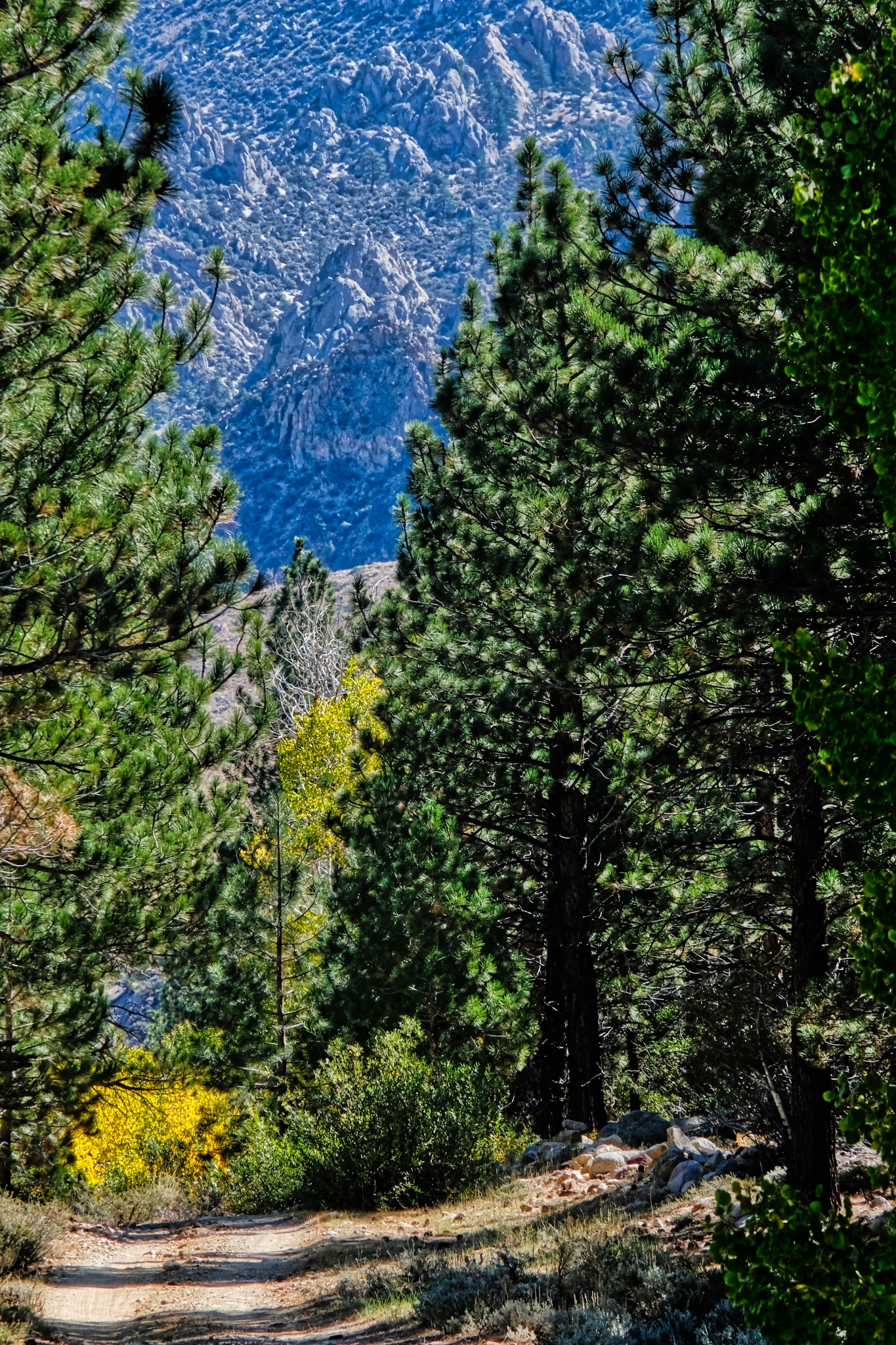 When I got back to my camper I changed to a very long lens (335mm) to capture this compressed depth of field photo of the jeep track and the rocky hills many miles away.
When I got back to my camper I changed to a very long lens (335mm) to capture this compressed depth of field photo of the jeep track and the rocky hills many miles away.
__________________________________________
DAY FOUR: OUT OF CAMP AND UP INTO THE MOUNTAINS
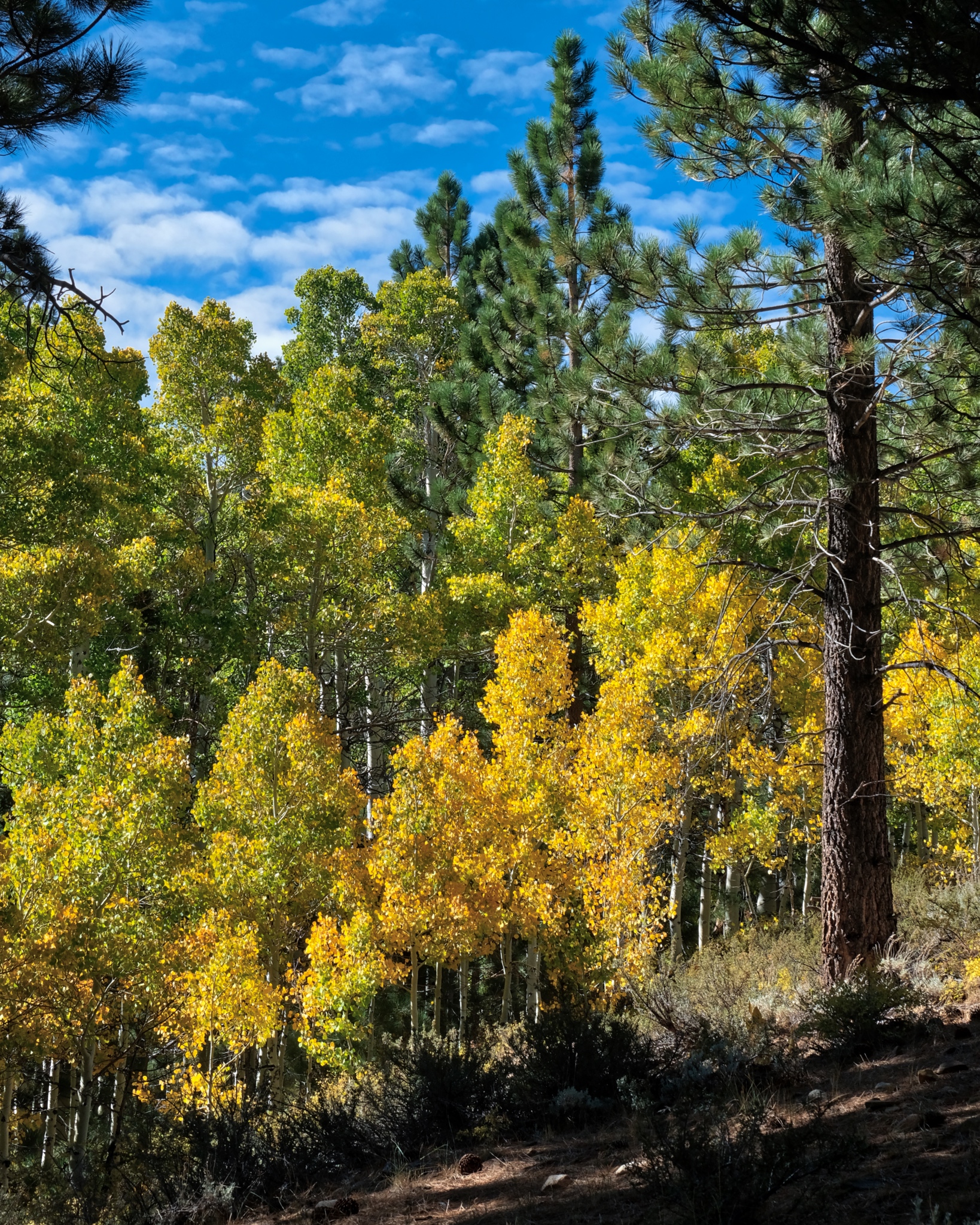 I woke up late and stepped out into this: another bright clear day high in the Sierra Nevada Mountains.
I woke up late and stepped out into this: another bright clear day high in the Sierra Nevada Mountains.
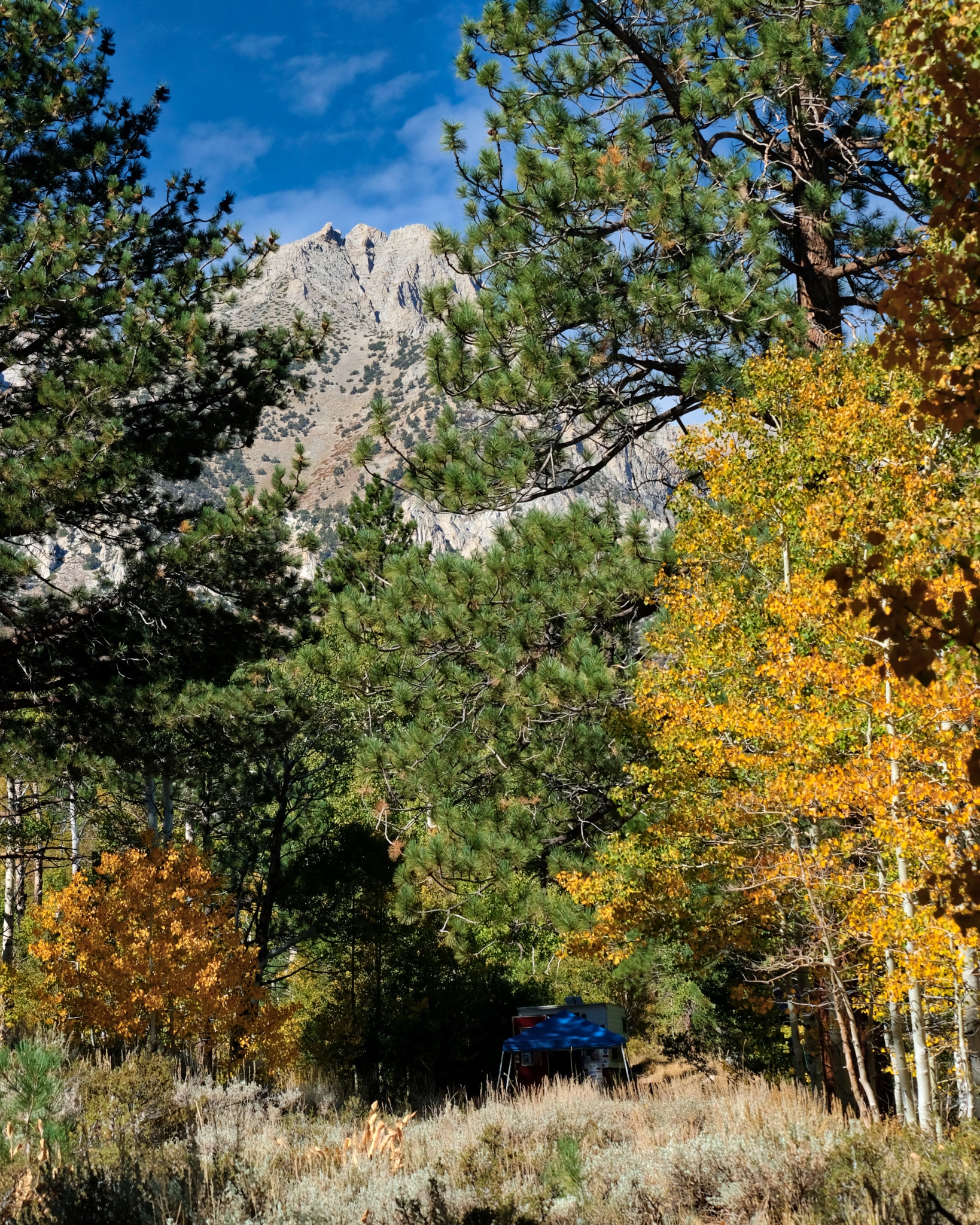 Over breakfast and good coffee, I looked out through the forest and caught glimpses of the high peaks that surrounded me.
Over breakfast and good coffee, I looked out through the forest and caught glimpses of the high peaks that surrounded me.
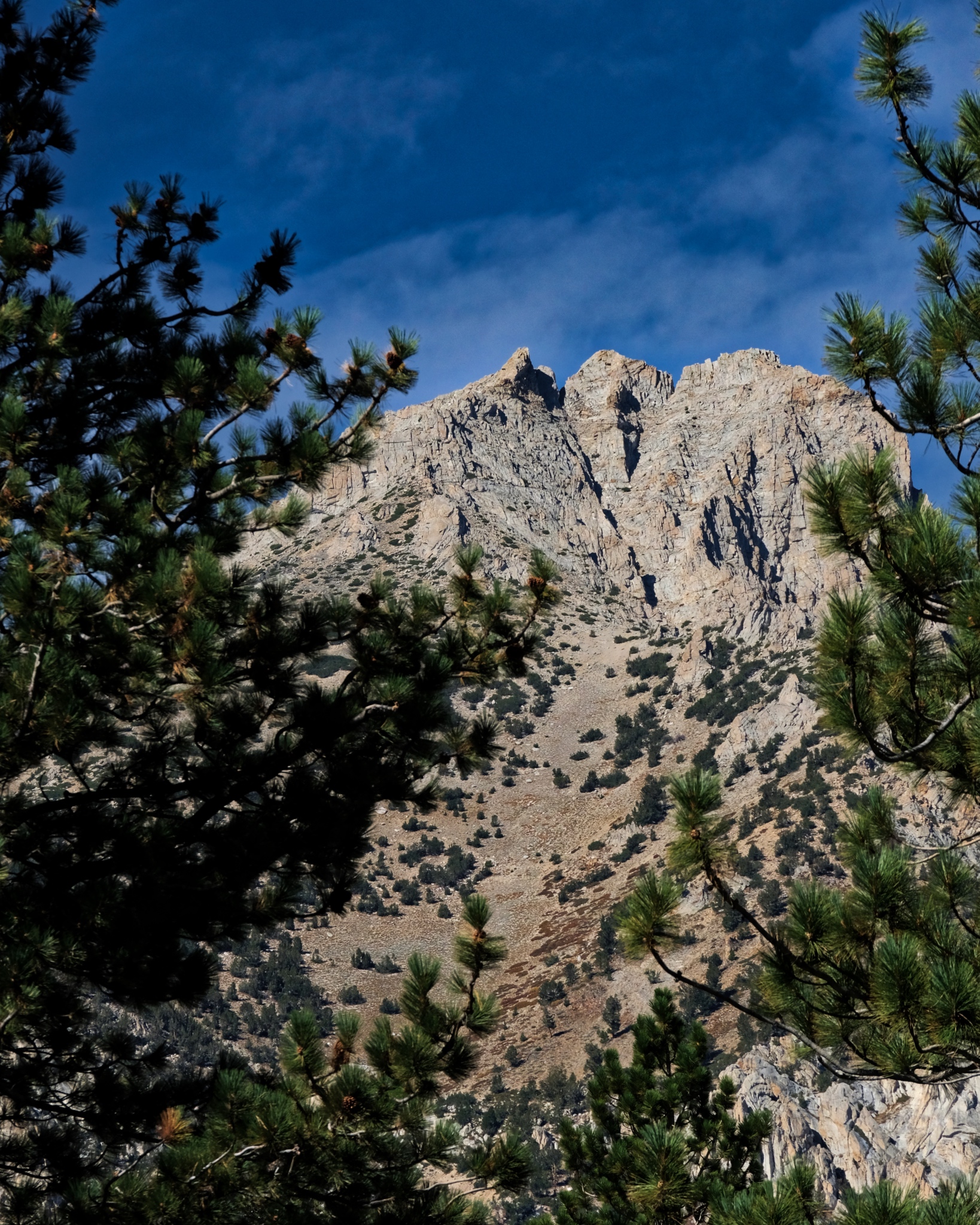 I decided I would walk up a jeep track I had driven in on . . . it looked like it went up to the base of these mountain slopes.
I decided I would walk up a jeep track I had driven in on . . . it looked like it went up to the base of these mountain slopes.
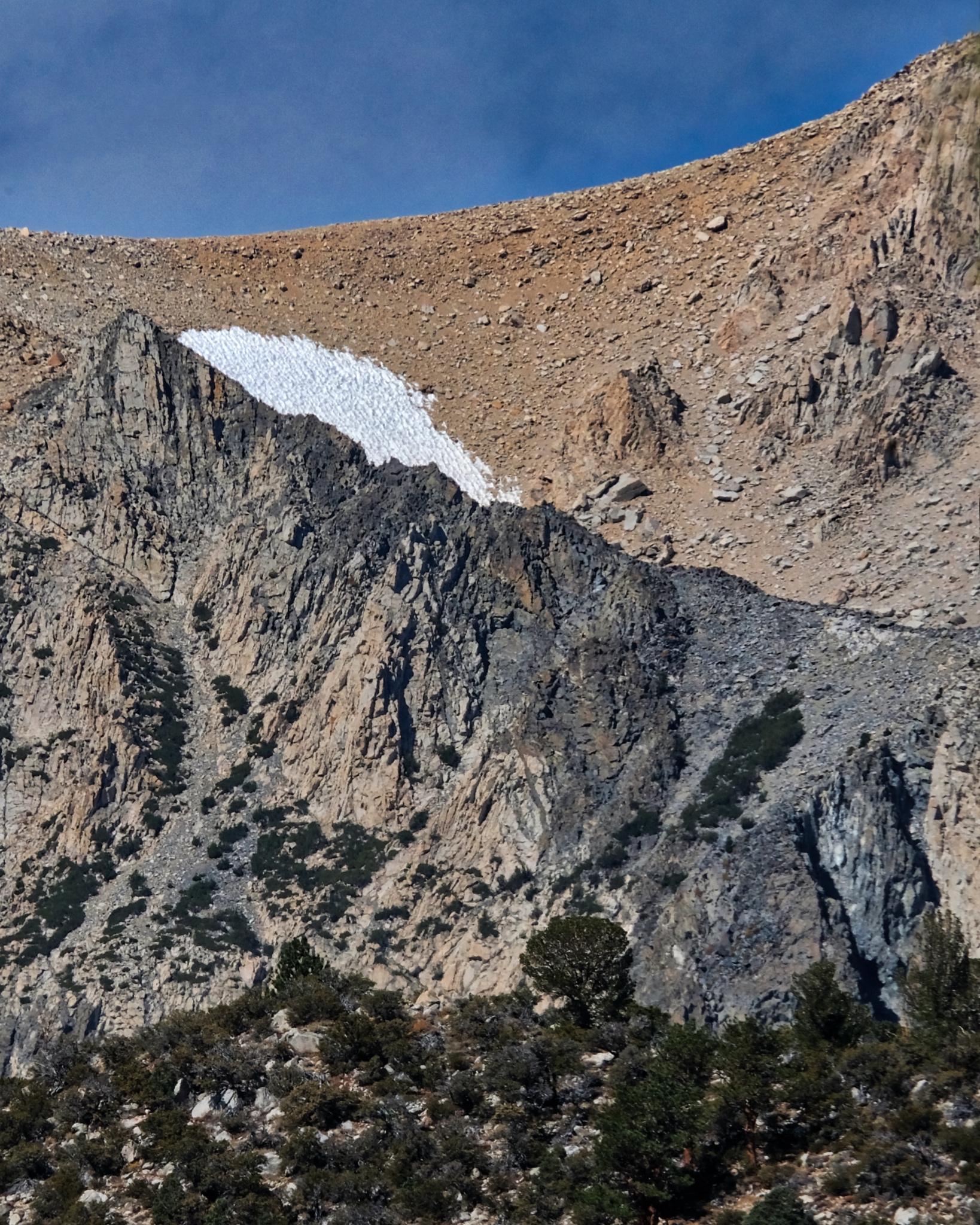 It was early September and there were only a few remaining patches of snow high up left from last winter.
It was early September and there were only a few remaining patches of snow high up left from last winter.
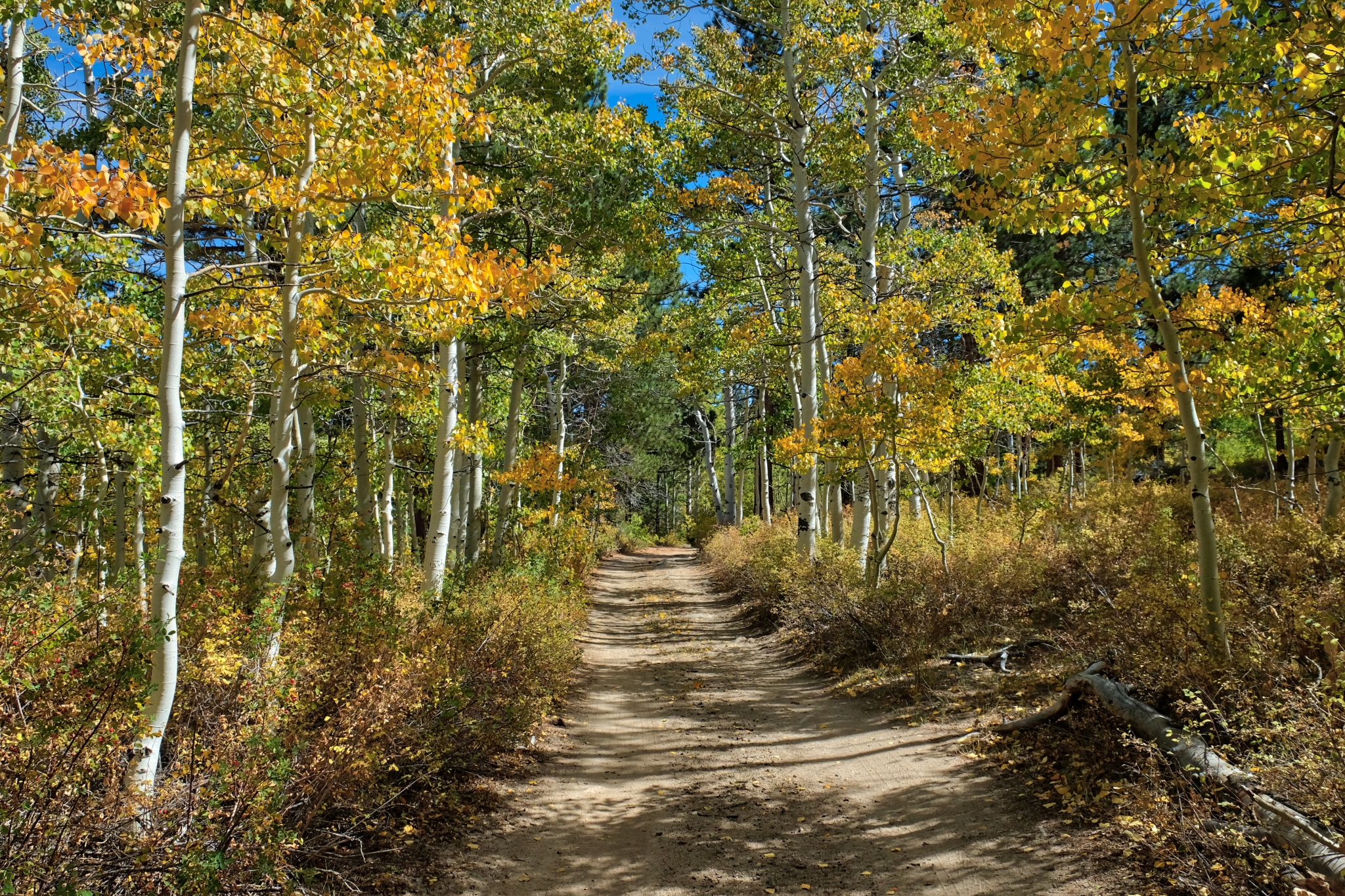 After cleaning up, and making the campsite bear-proof, I set off on my forest track in the other direction.
After cleaning up, and making the campsite bear-proof, I set off on my forest track in the other direction.
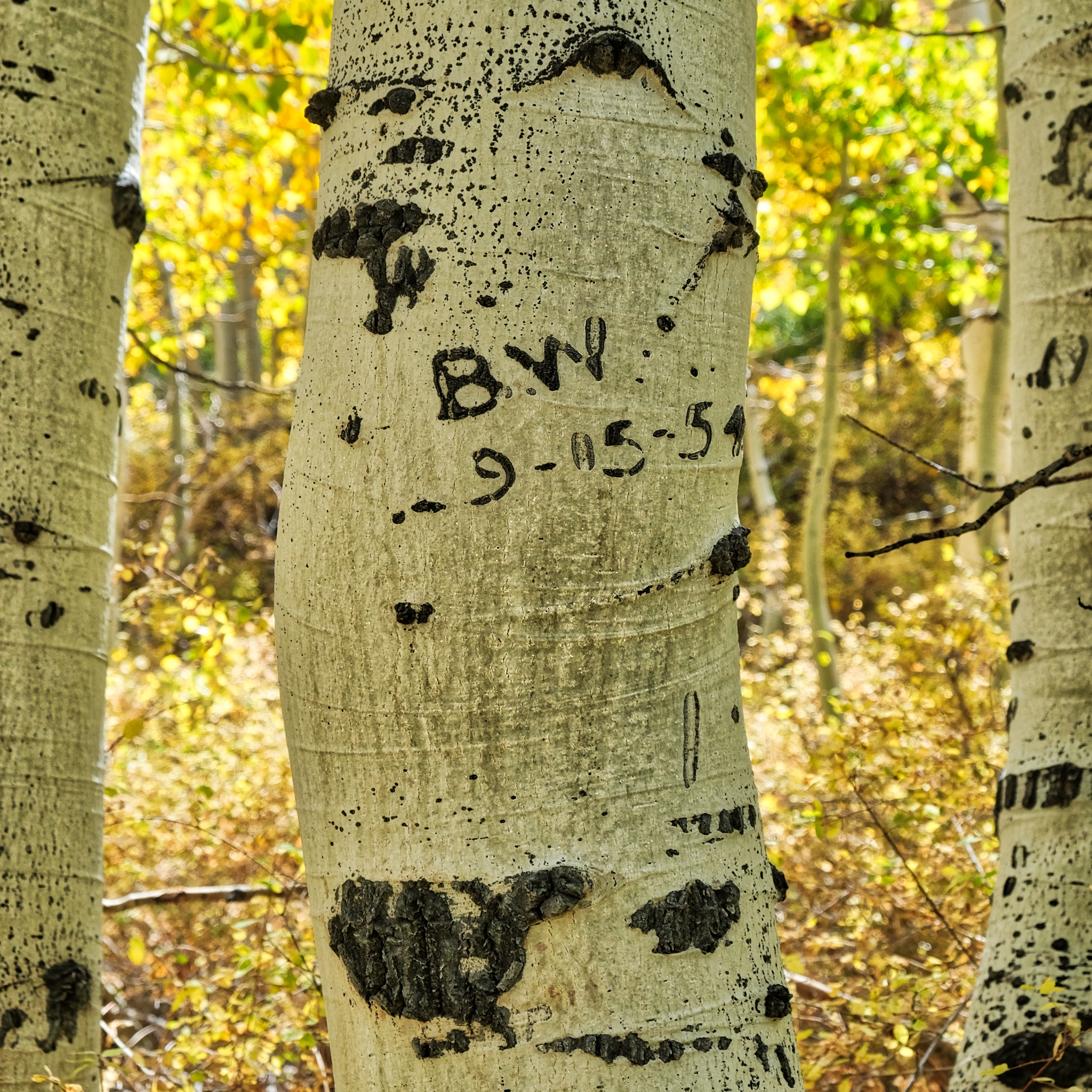 I already knew I wasn't the first person to experience the beauty of this place, but I found it interesting that "B.W" was here exactly 64 years ago . . . to the day (9/5/1954 to 9/5/2018)! So they must have been here at the time of the yellow leaves too!
I already knew I wasn't the first person to experience the beauty of this place, but I found it interesting that "B.W" was here exactly 64 years ago . . . to the day (9/5/1954 to 9/5/2018)! So they must have been here at the time of the yellow leaves too!
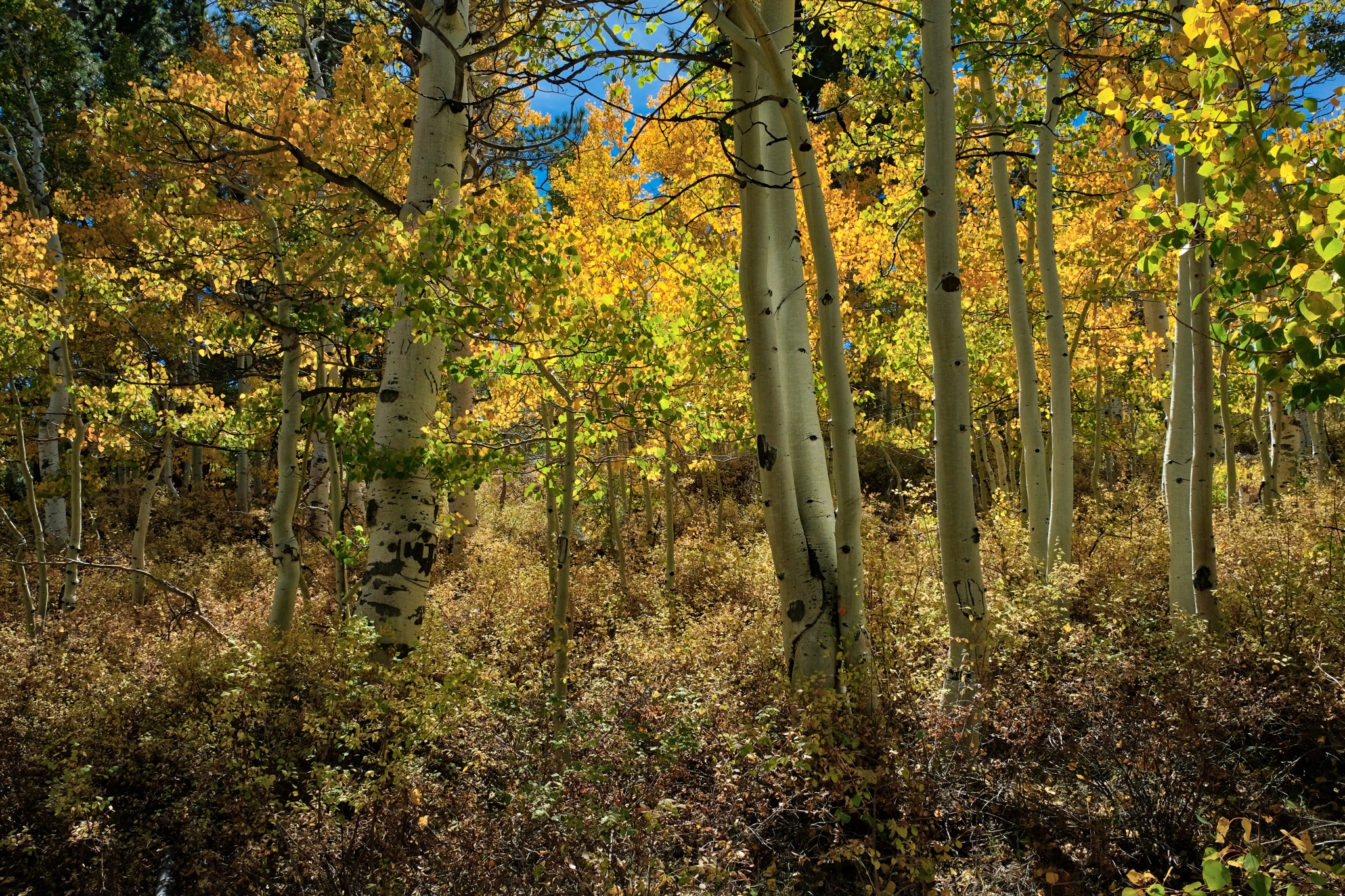 To say it was another glorious day would be understatement!
To say it was another glorious day would be understatement!
 This time as I walked out of my aspen woods I was walking uphill. I was glad I had four-wheel-drive coming in . . . the road is very rough.
This time as I walked out of my aspen woods I was walking uphill. I was glad I had four-wheel-drive coming in . . . the road is very rough.
 The mountains revealed themselves as I left the aspen stand.
The mountains revealed themselves as I left the aspen stand.
 It might be easy to get lost up here as there are several jeep tracks going in all directions, but they were well marked, and matched my Google Maps. [I had surprisingly good 4G reception throughout my stay in the mountains!]
It might be easy to get lost up here as there are several jeep tracks going in all directions, but they were well marked, and matched my Google Maps. [I had surprisingly good 4G reception throughout my stay in the mountains!]
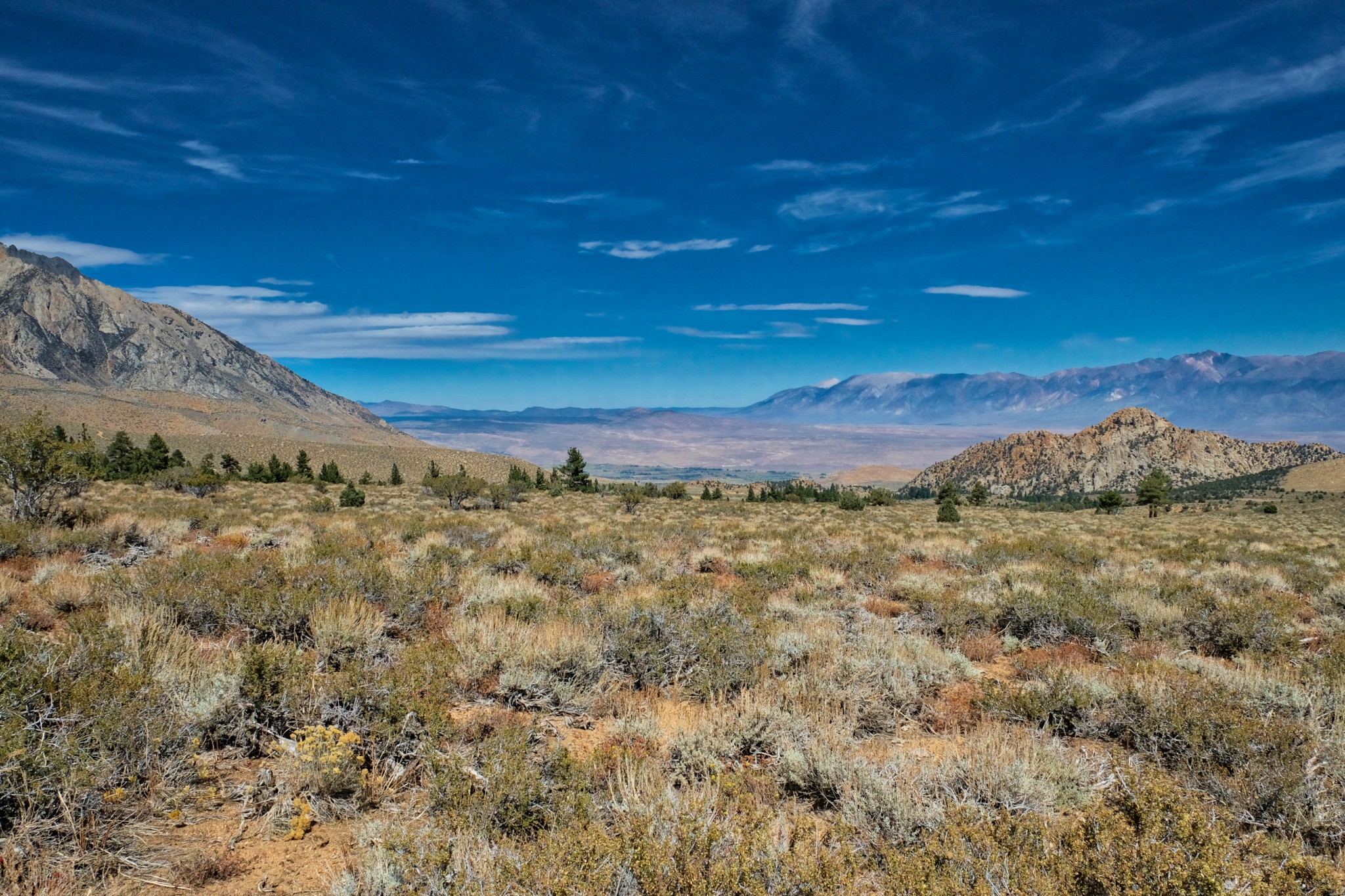 Looking to the right, I had a huge view down to the valley below and the Boundary Range mountains (the Nevada boarder) well beyond.
Looking to the right, I had a huge view down to the valley below and the Boundary Range mountains (the Nevada boarder) well beyond.
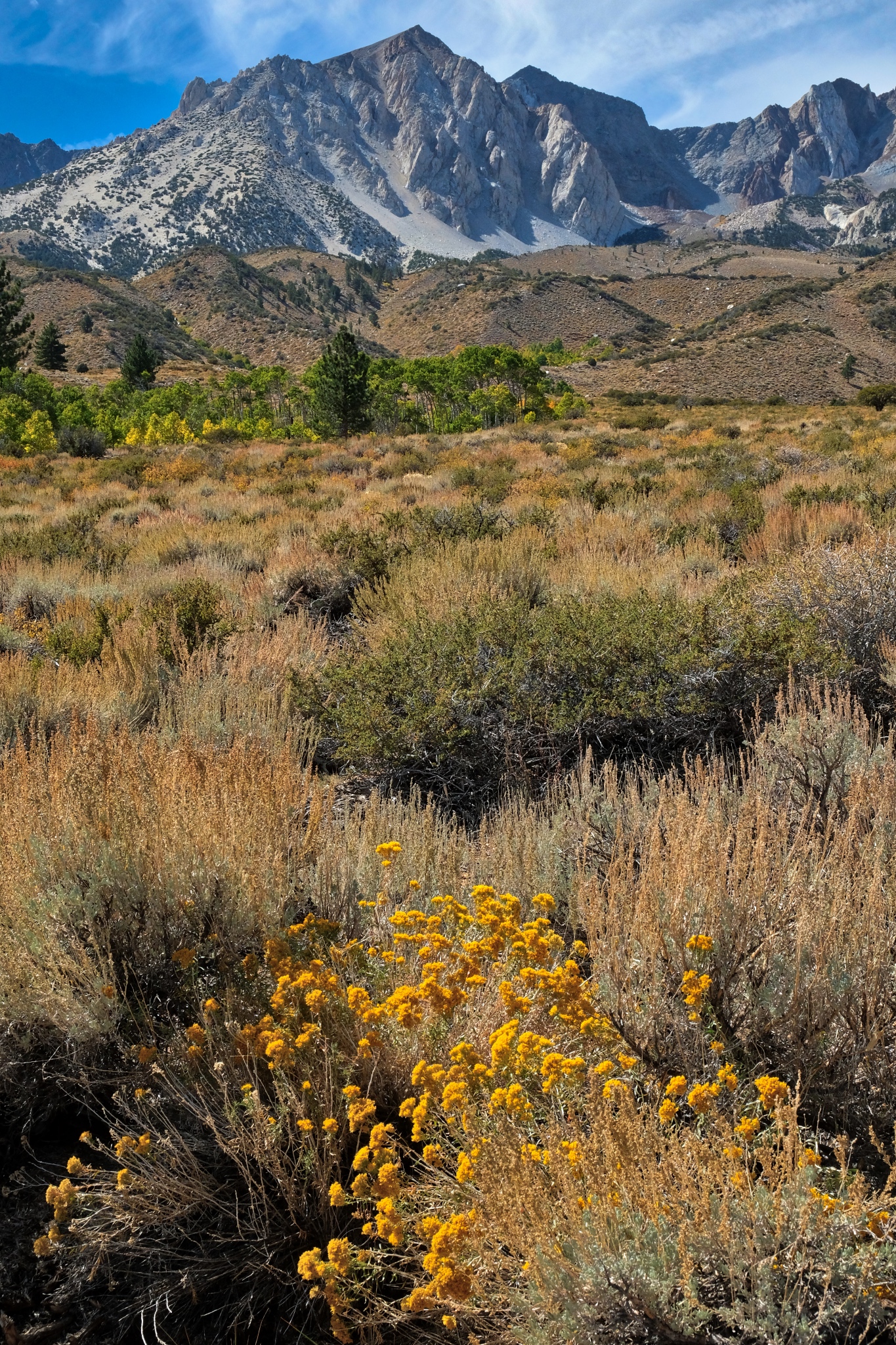 Looking to the left I had a view of flowering panoramas framed by high mountains. This might be the most beautiful spot I have stood in my entire life!
Looking to the left I had a view of flowering panoramas framed by high mountains. This might be the most beautiful spot I have stood in my entire life!
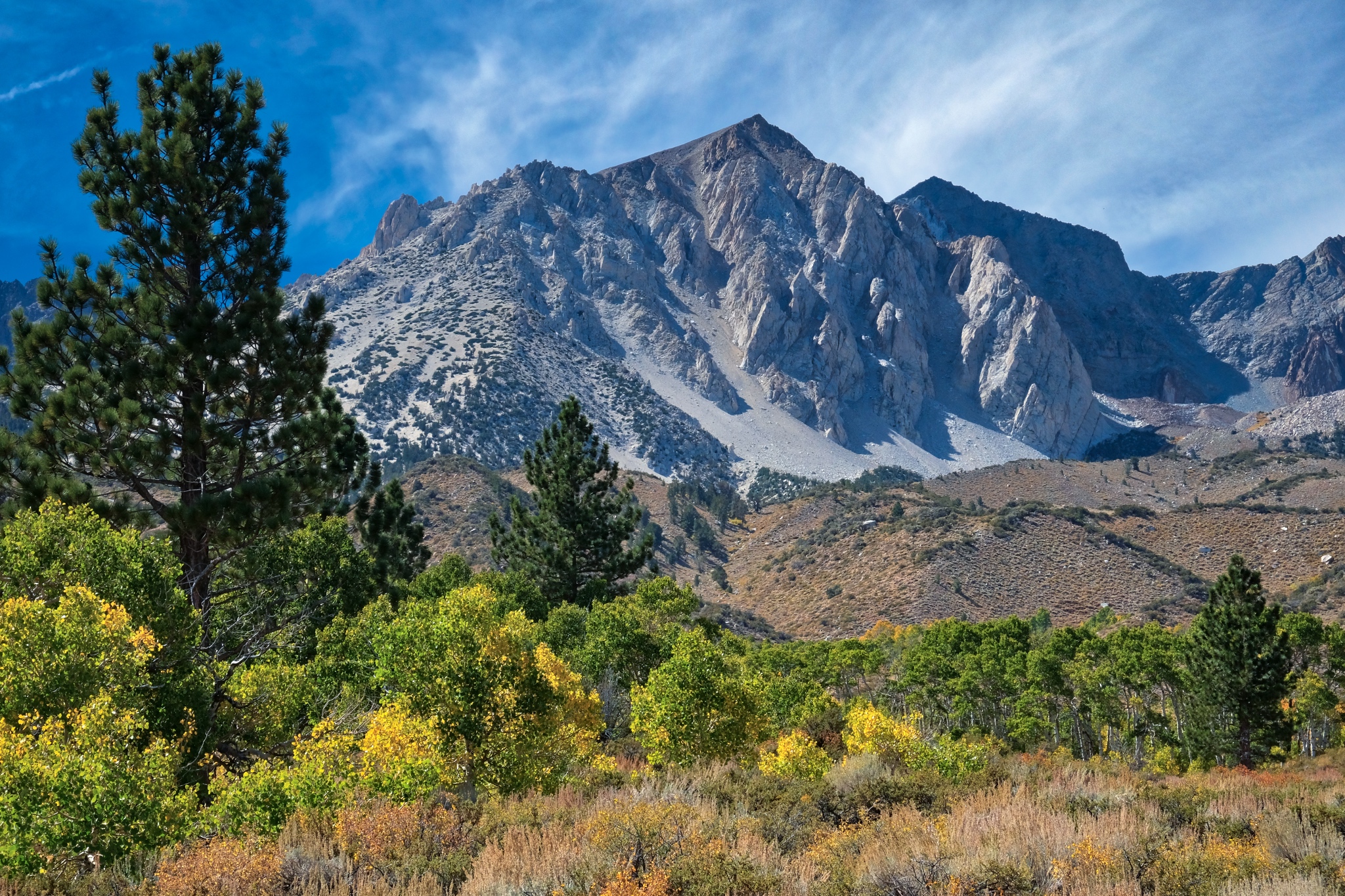 I took a track that would lead me in this direction.
I took a track that would lead me in this direction.
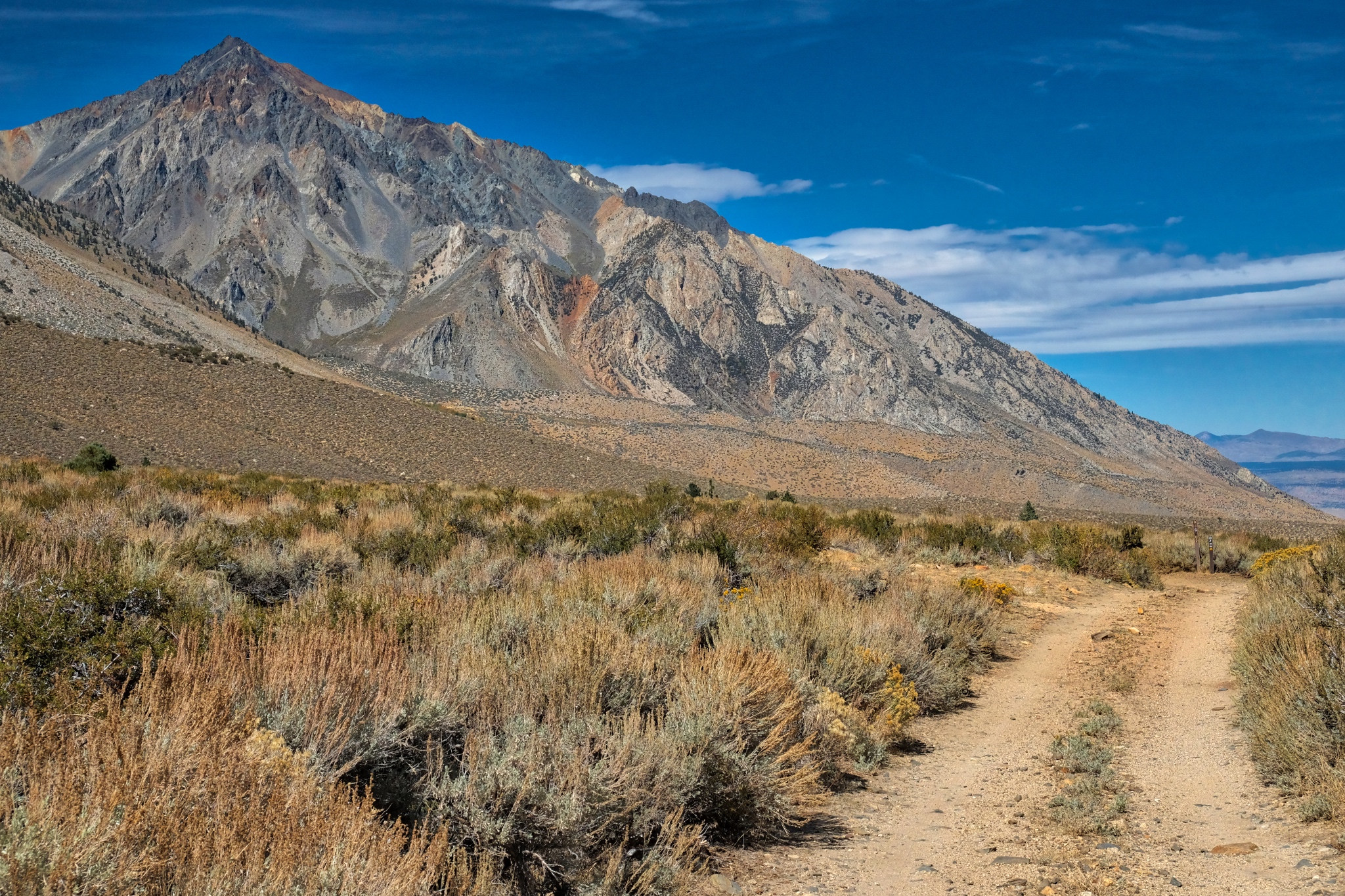 The jeep track with Mount Tom in front. If you look closely you can see the traces of an old manganese mine. The brown/orange streaks are rich deposits of manganese which now sit in protected National Forest land.
The jeep track with Mount Tom in front. If you look closely you can see the traces of an old manganese mine. The brown/orange streaks are rich deposits of manganese which now sit in protected National Forest land.
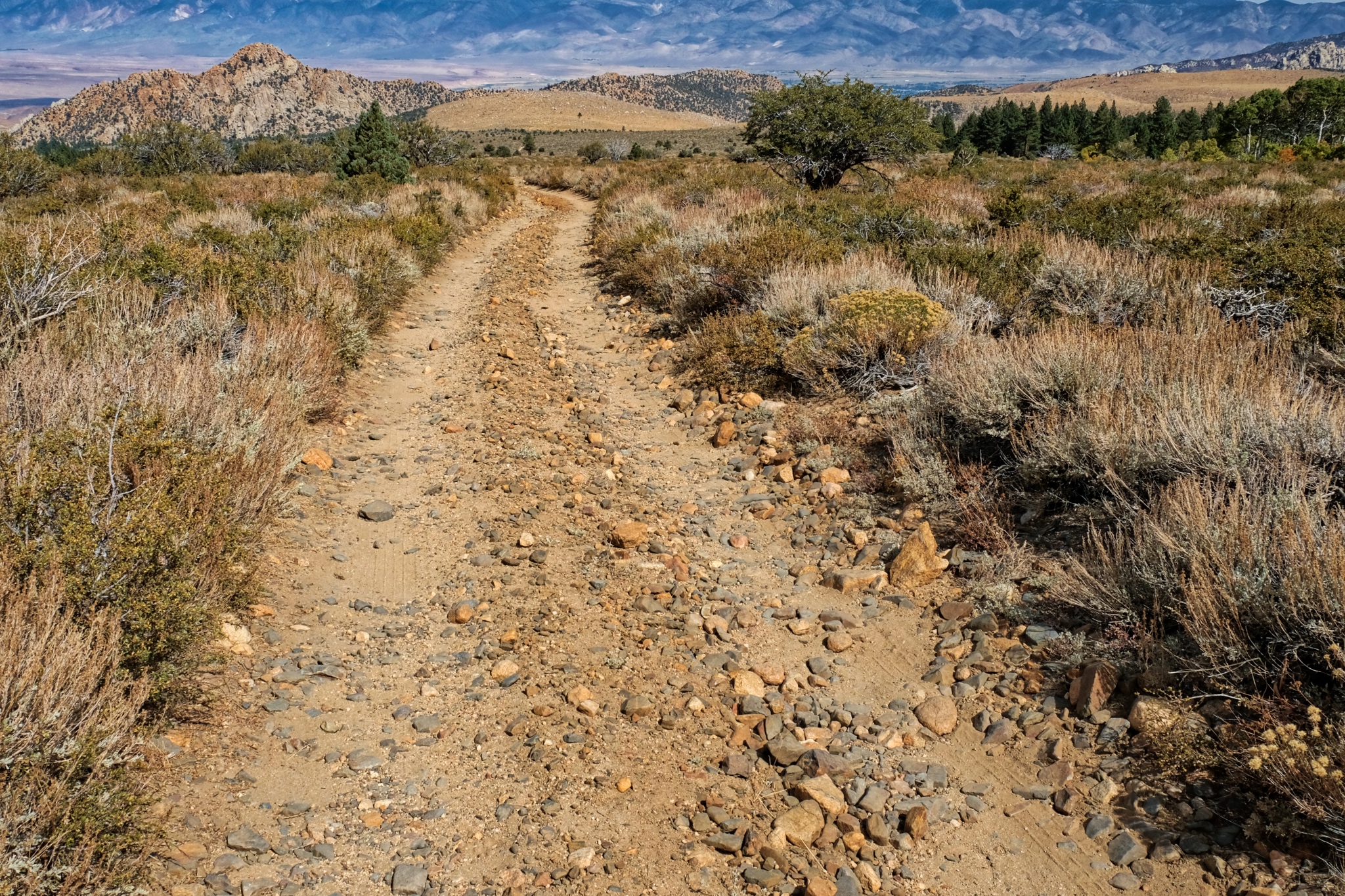 I came to a 'T' in the track . . . this way went back down the valley and to the paved road into Bishop . . .
I came to a 'T' in the track . . . this way went back down the valley and to the paved road into Bishop . . .
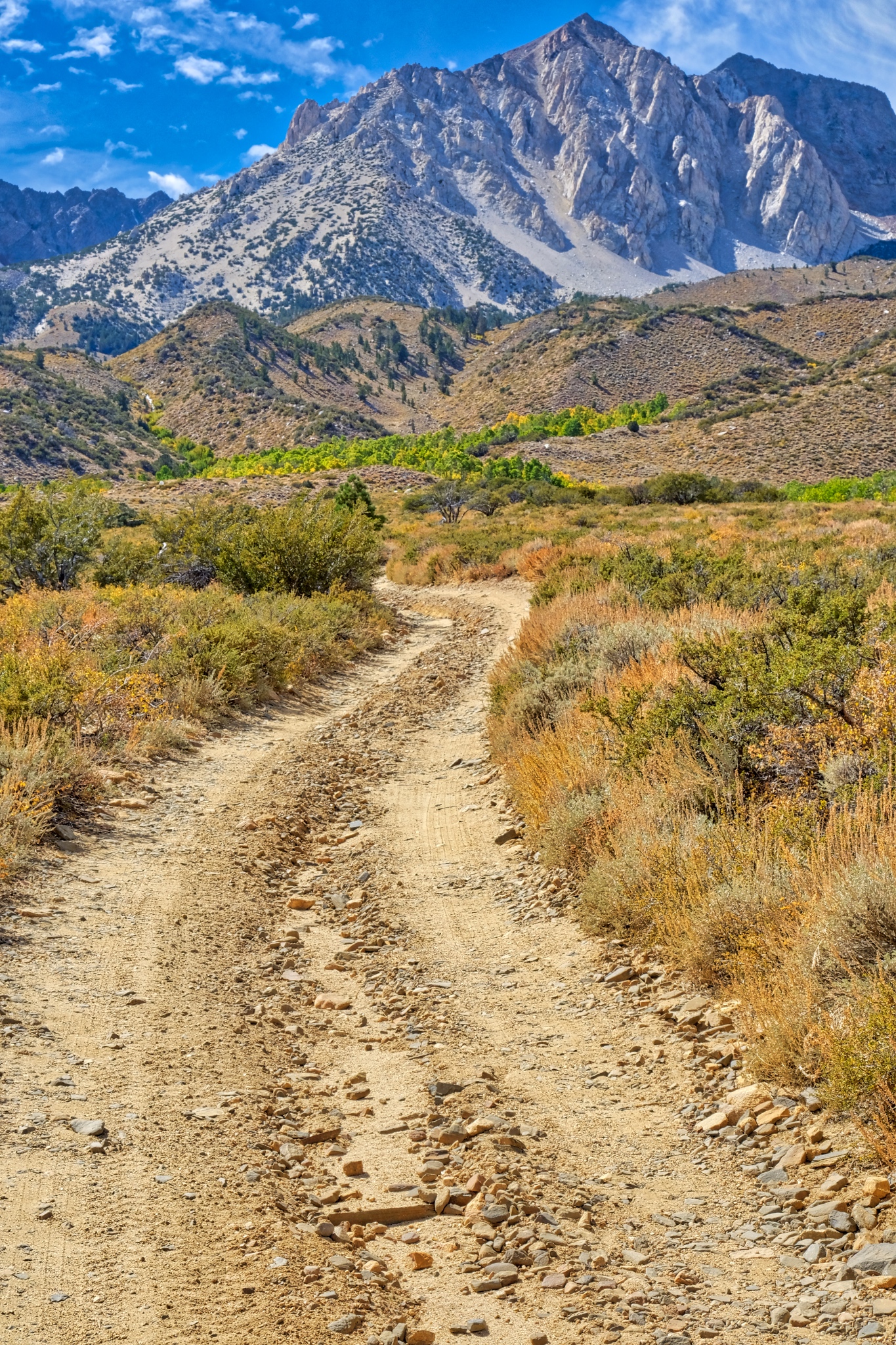 . . . and this direction, the one I took, went up into the mountains.
. . . and this direction, the one I took, went up into the mountains.
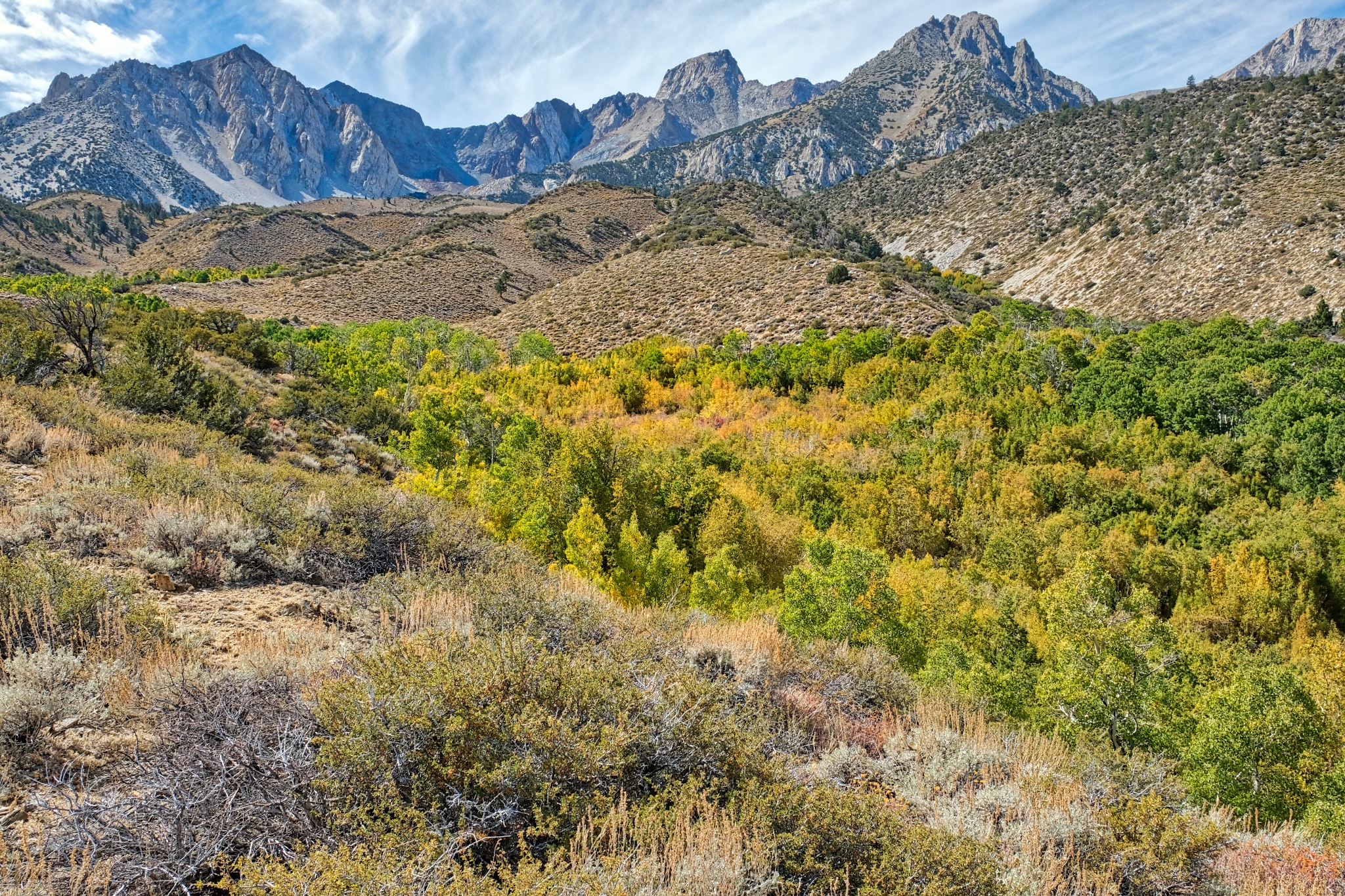 As I walked further toward the mountains I gained a view of a hidden valley full of aspens.
As I walked further toward the mountains I gained a view of a hidden valley full of aspens.
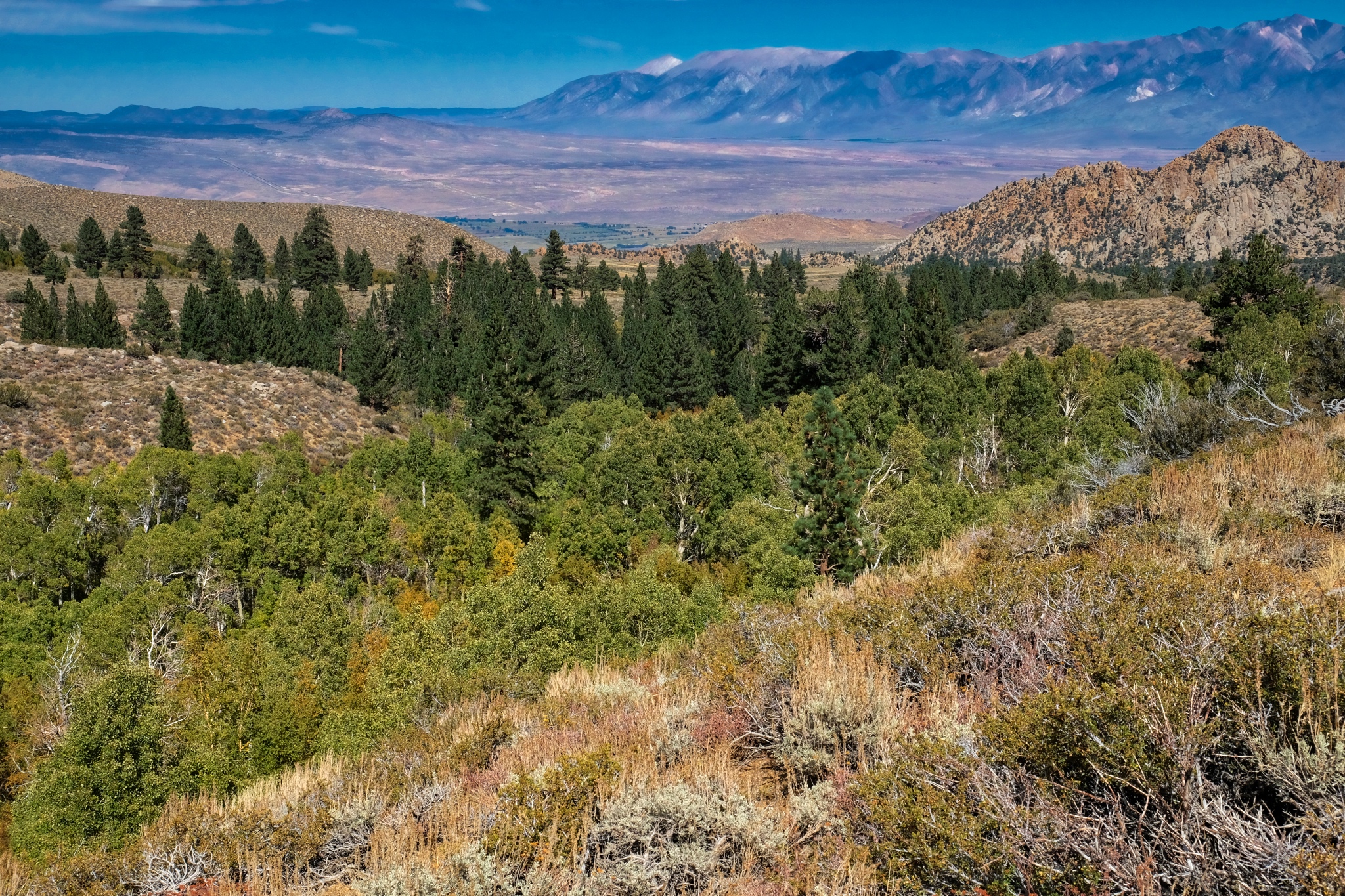 A look down into the hidden aspen grove, but I did not see any path to get down . . .
A look down into the hidden aspen grove, but I did not see any path to get down . . .
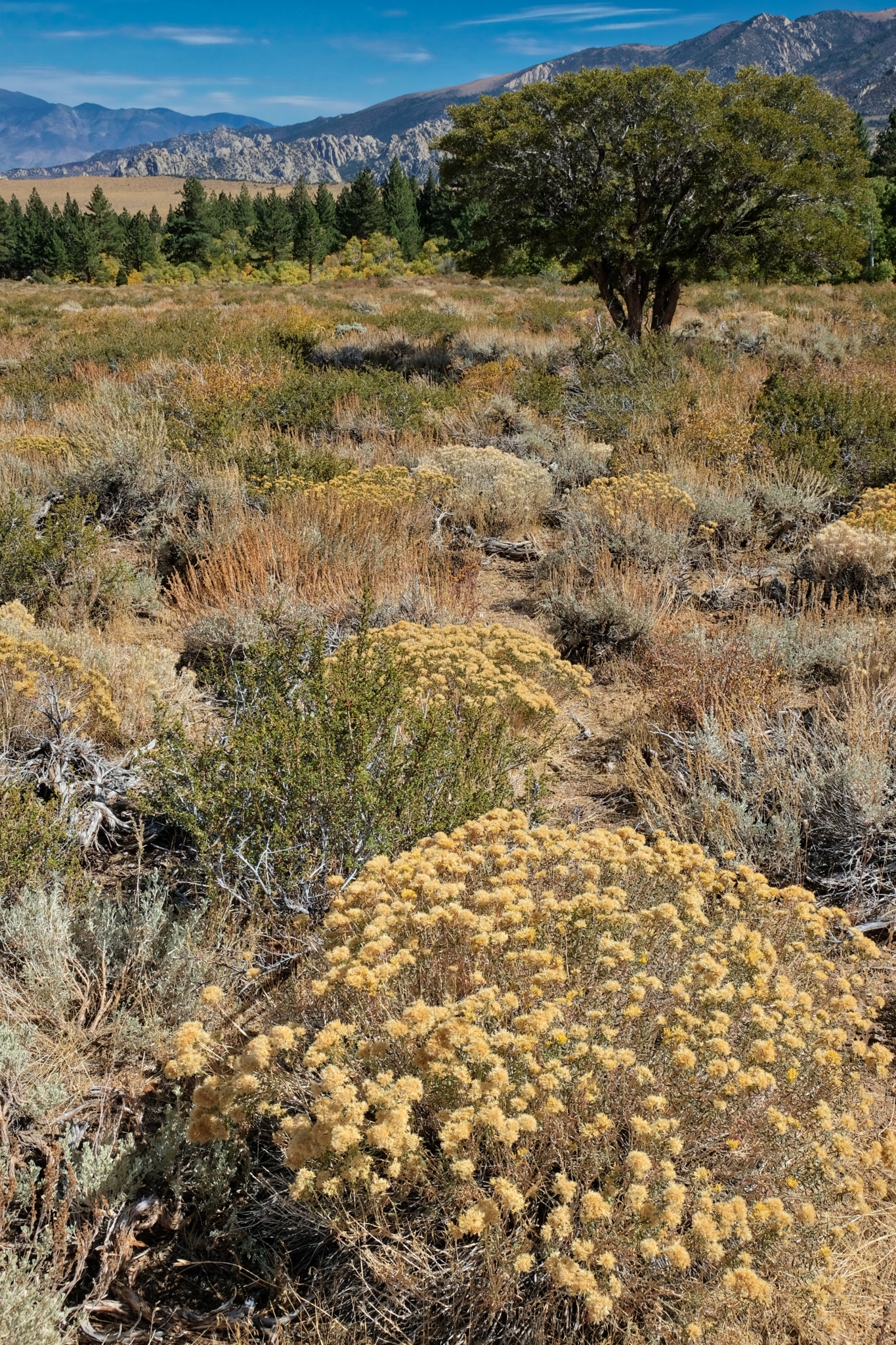 Looking back across the late summer wild and wonderful flora at this altitude was extraordinary.
Looking back across the late summer wild and wonderful flora at this altitude was extraordinary.
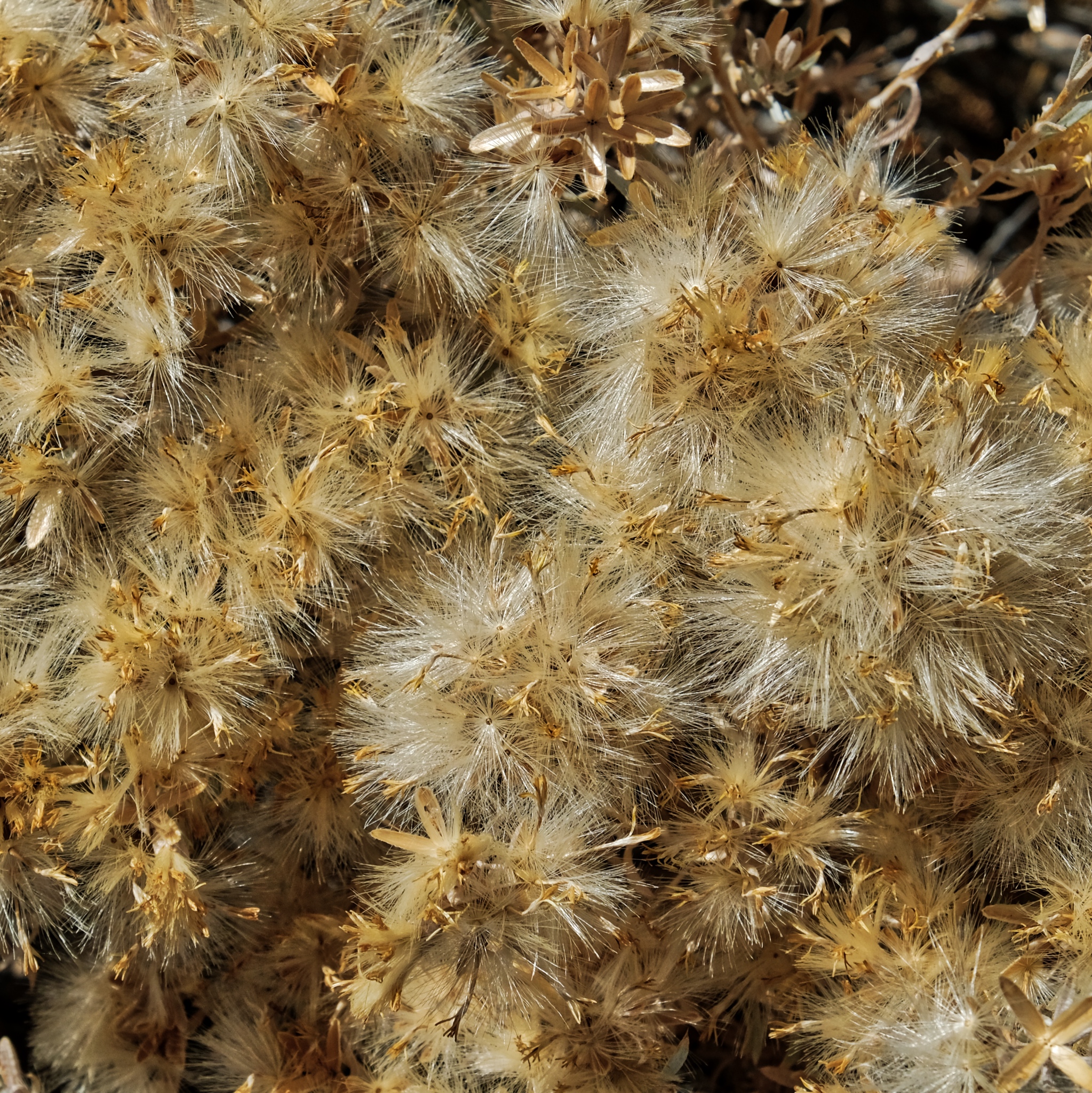 The dried flowers with their seeds readying for dispersal.
The dried flowers with their seeds readying for dispersal.
 Such a beautiful place.
Such a beautiful place.
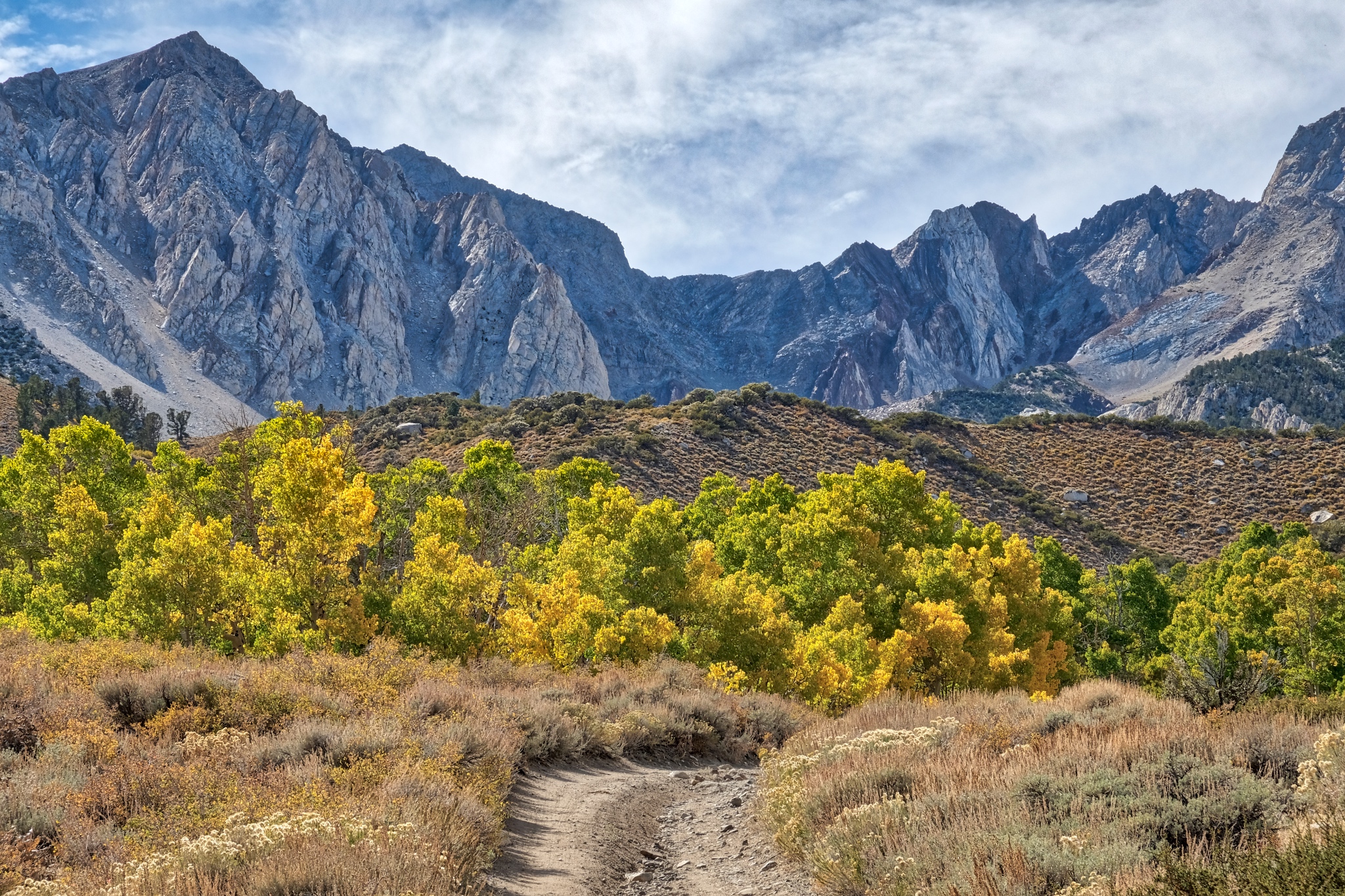 Further and further up in altitude toward the high peaks.
Further and further up in altitude toward the high peaks.
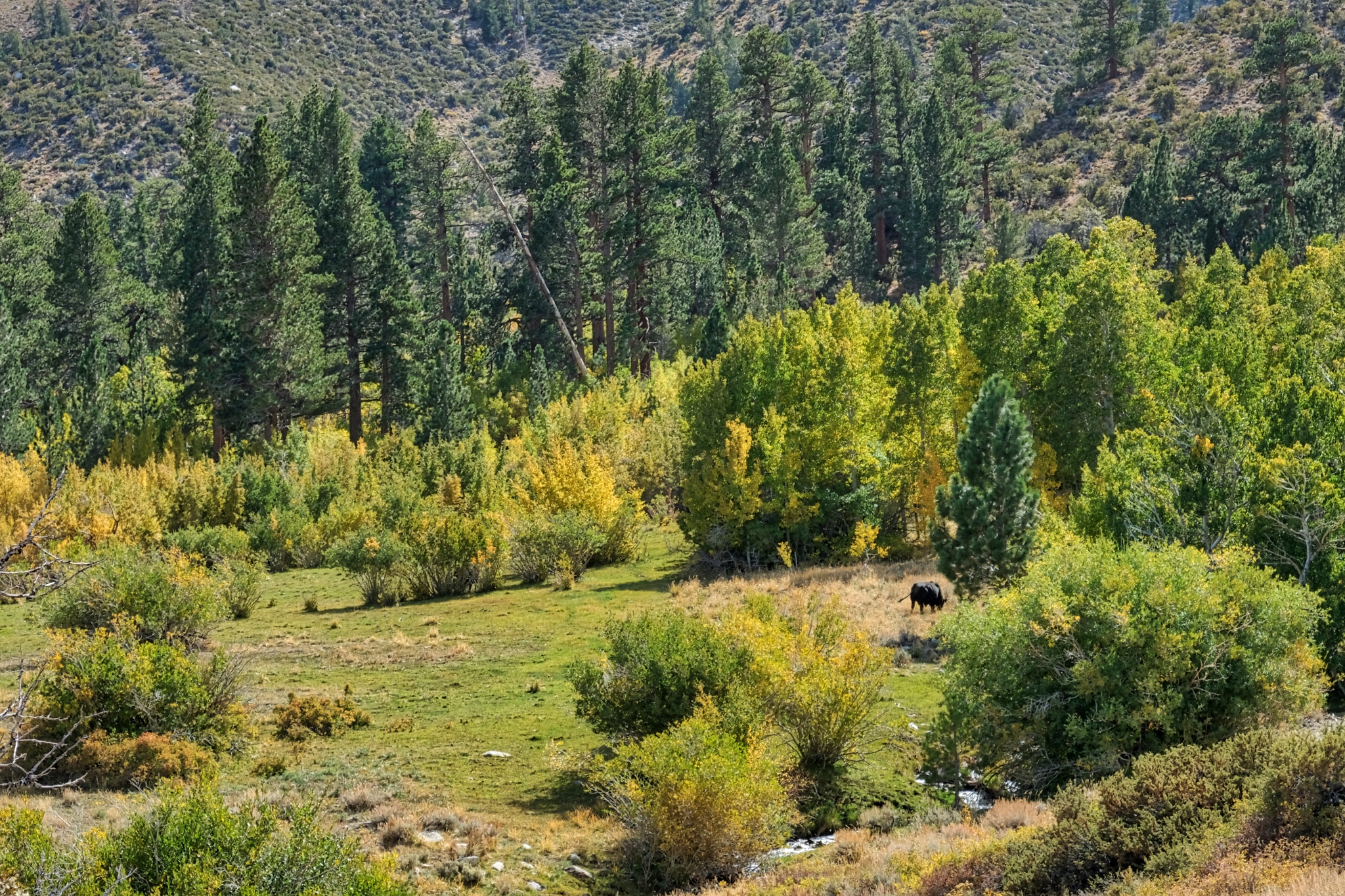 I had been seeing salt licks here and there near the road and wondered if there were still any cows grazing this high up . . . yep, there was one cow, way up here grazing in a lush green spot.
I had been seeing salt licks here and there near the road and wondered if there were still any cows grazing this high up . . . yep, there was one cow, way up here grazing in a lush green spot.
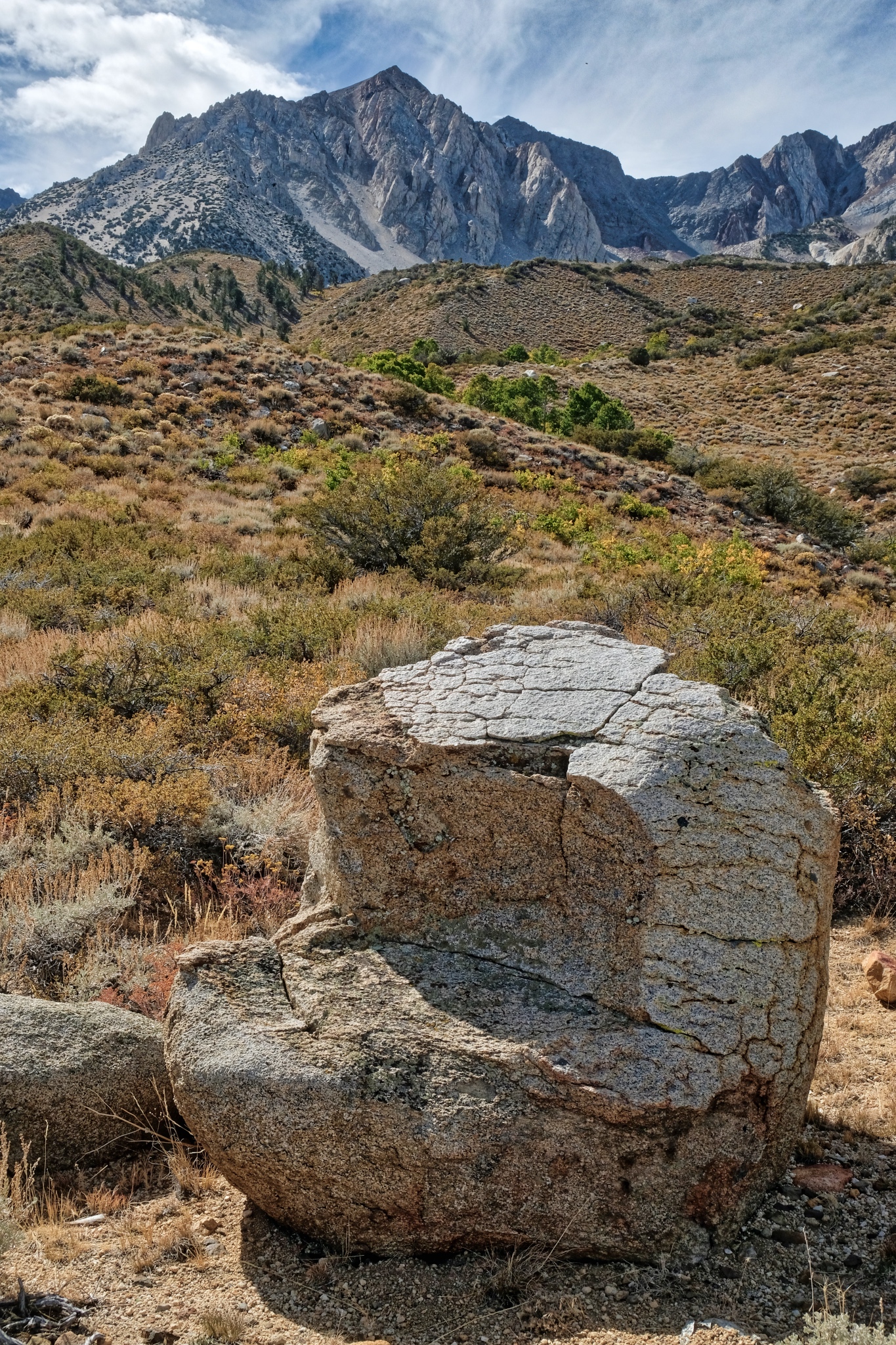 I took a rest on this perfect 'chair' stone! Very comfortable.
I took a rest on this perfect 'chair' stone! Very comfortable.
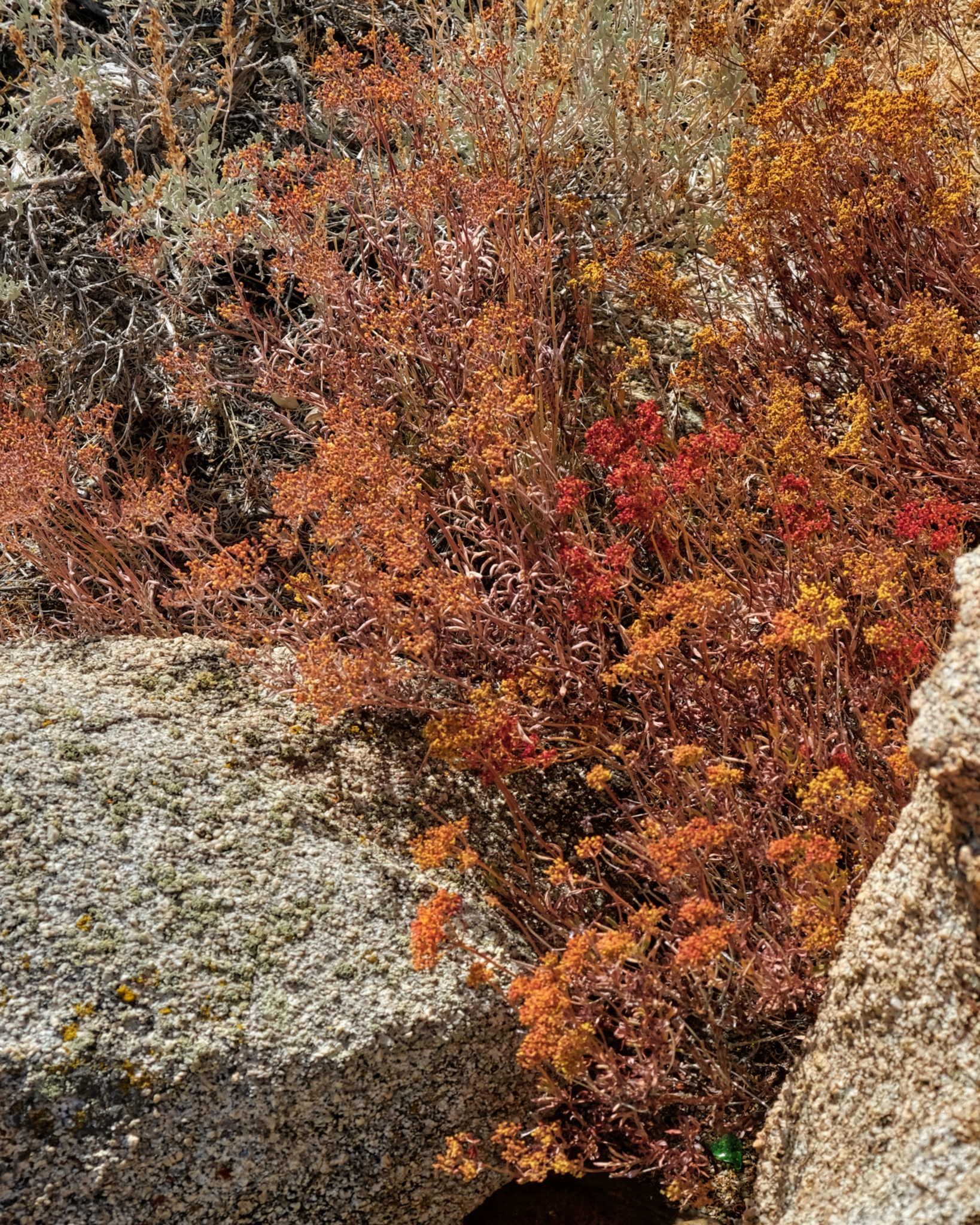 I took may time enjoying the amazing wildflowers at this altitude.
I took may time enjoying the amazing wildflowers at this altitude.
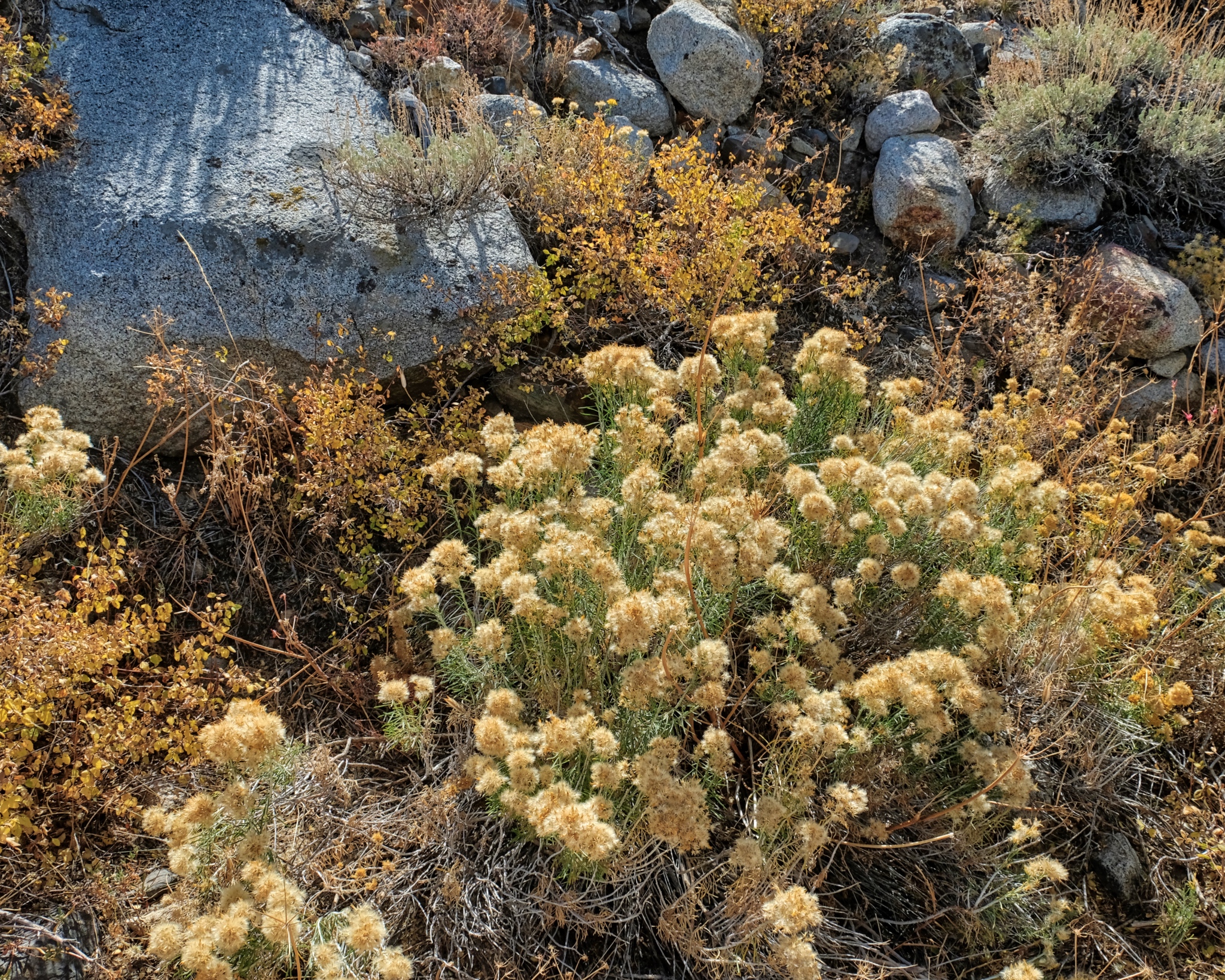 There were many outstanding compositions to photograph here.
There were many outstanding compositions to photograph here.
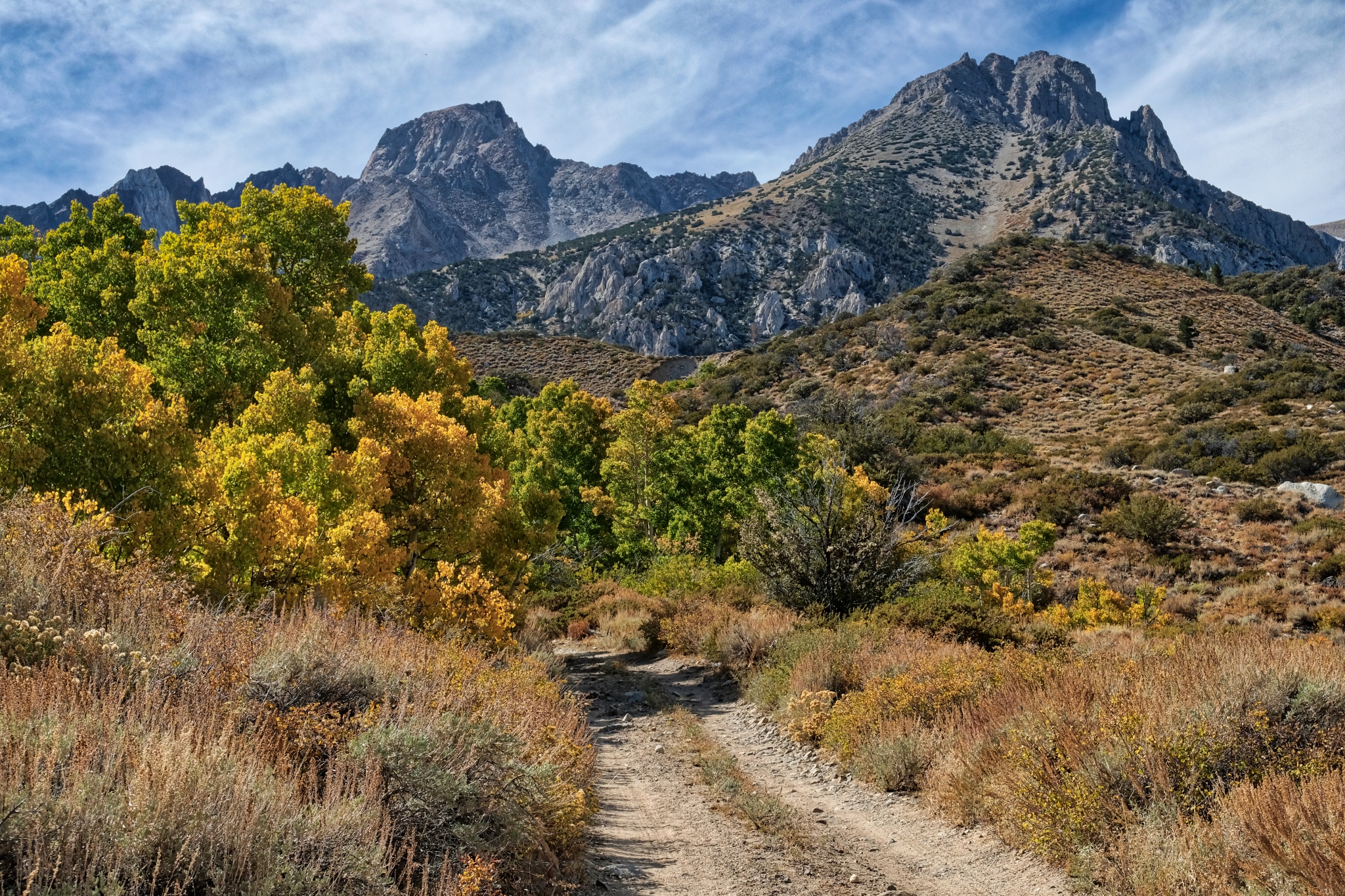 And up and up I went . . .
And up and up I went . . .
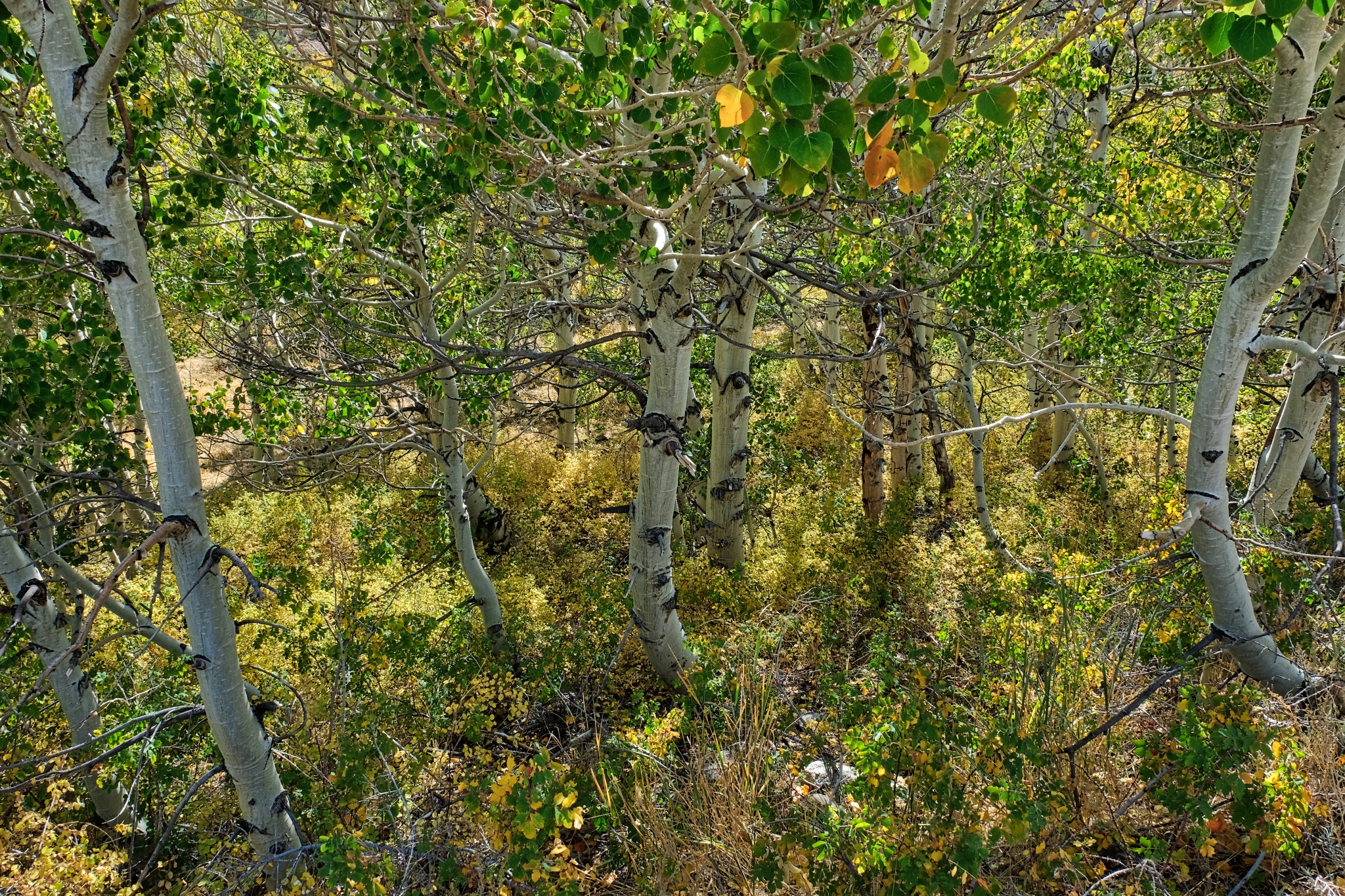 This was the last of the aspens, or any trees, before the tree line.
This was the last of the aspens, or any trees, before the tree line.
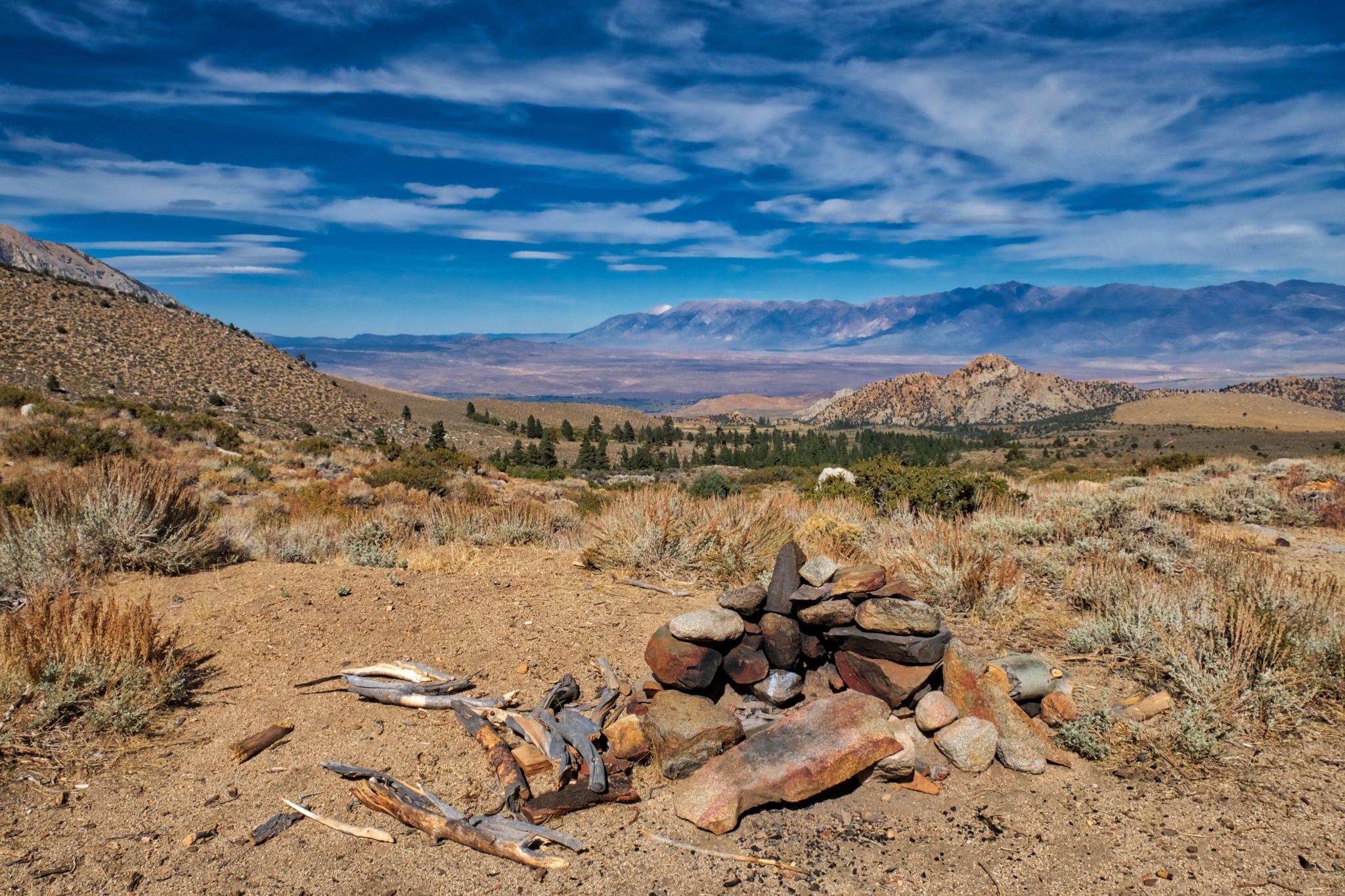 This is as far as I went up the old jeep track: a camp site with an incredible view back down the mountain. I considered moving my camp up here, but was glad I didn't . . . . there was a big wind storm the next night and my camper and tent would have been blown off the mountain!
This is as far as I went up the old jeep track: a camp site with an incredible view back down the mountain. I considered moving my camp up here, but was glad I didn't . . . . there was a big wind storm the next night and my camper and tent would have been blown off the mountain!
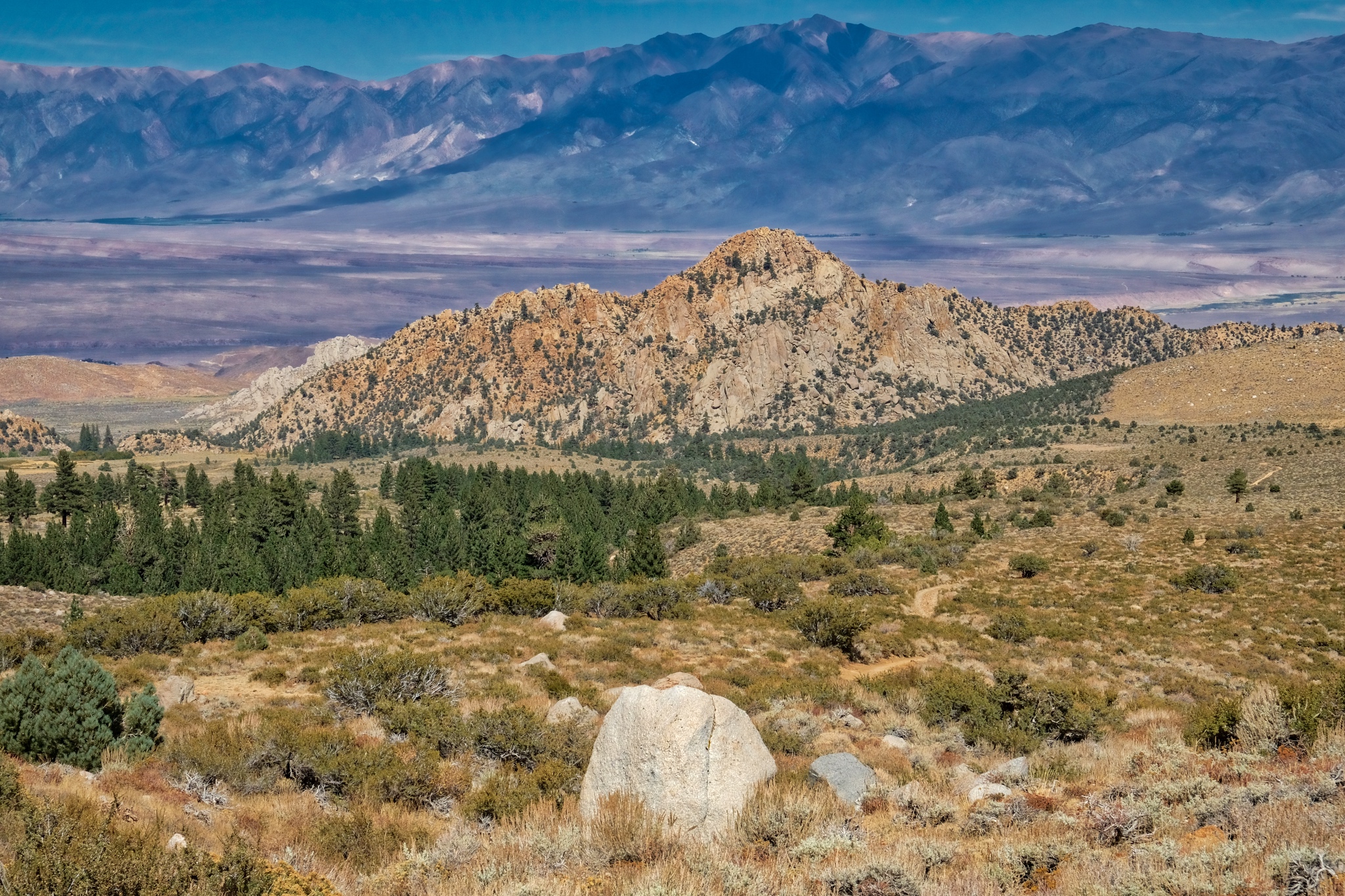 A view I will never forget!
A view I will never forget!
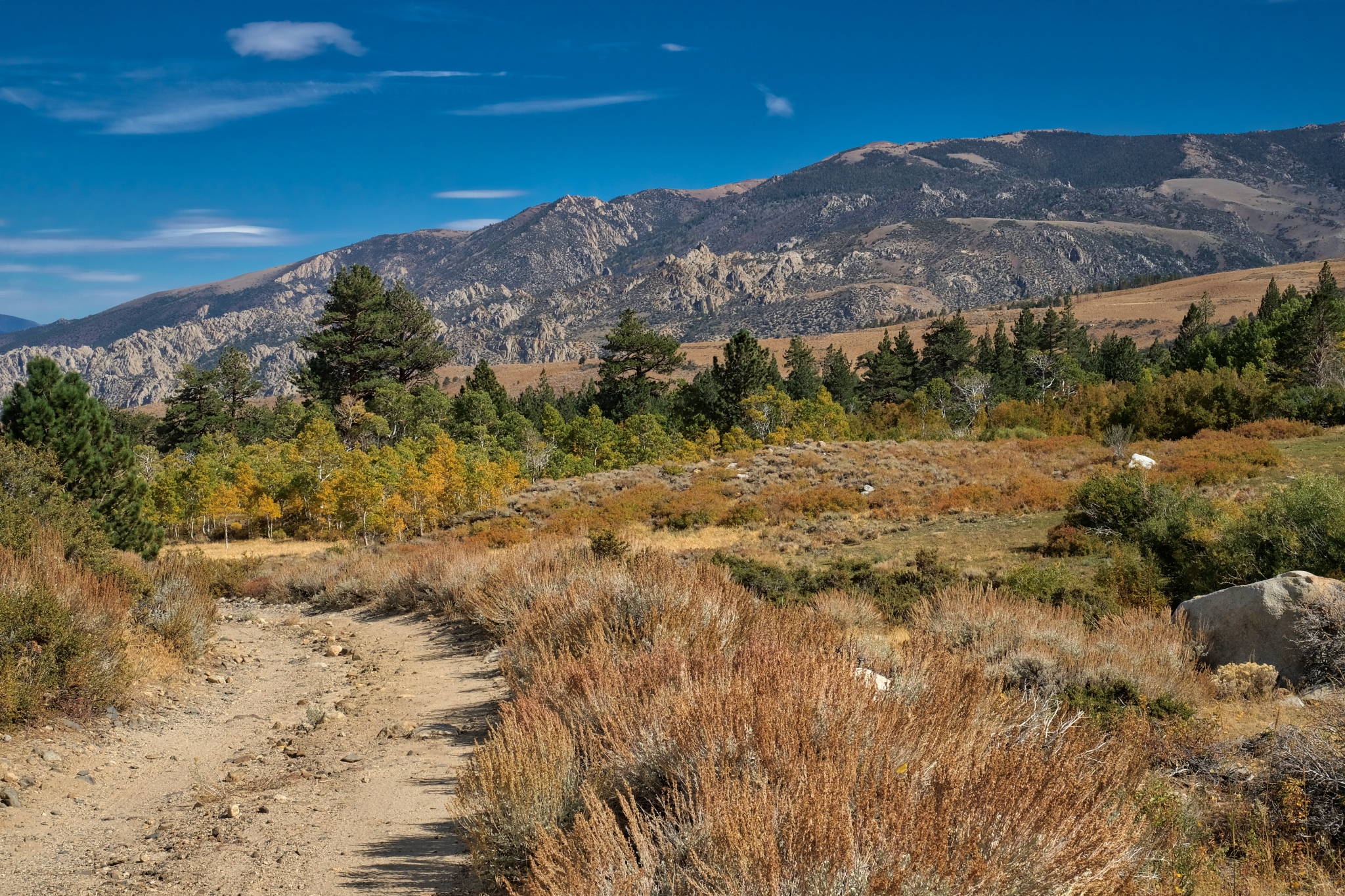 So, I turned around and walked back down the track toward my camp site.
So, I turned around and walked back down the track toward my camp site.
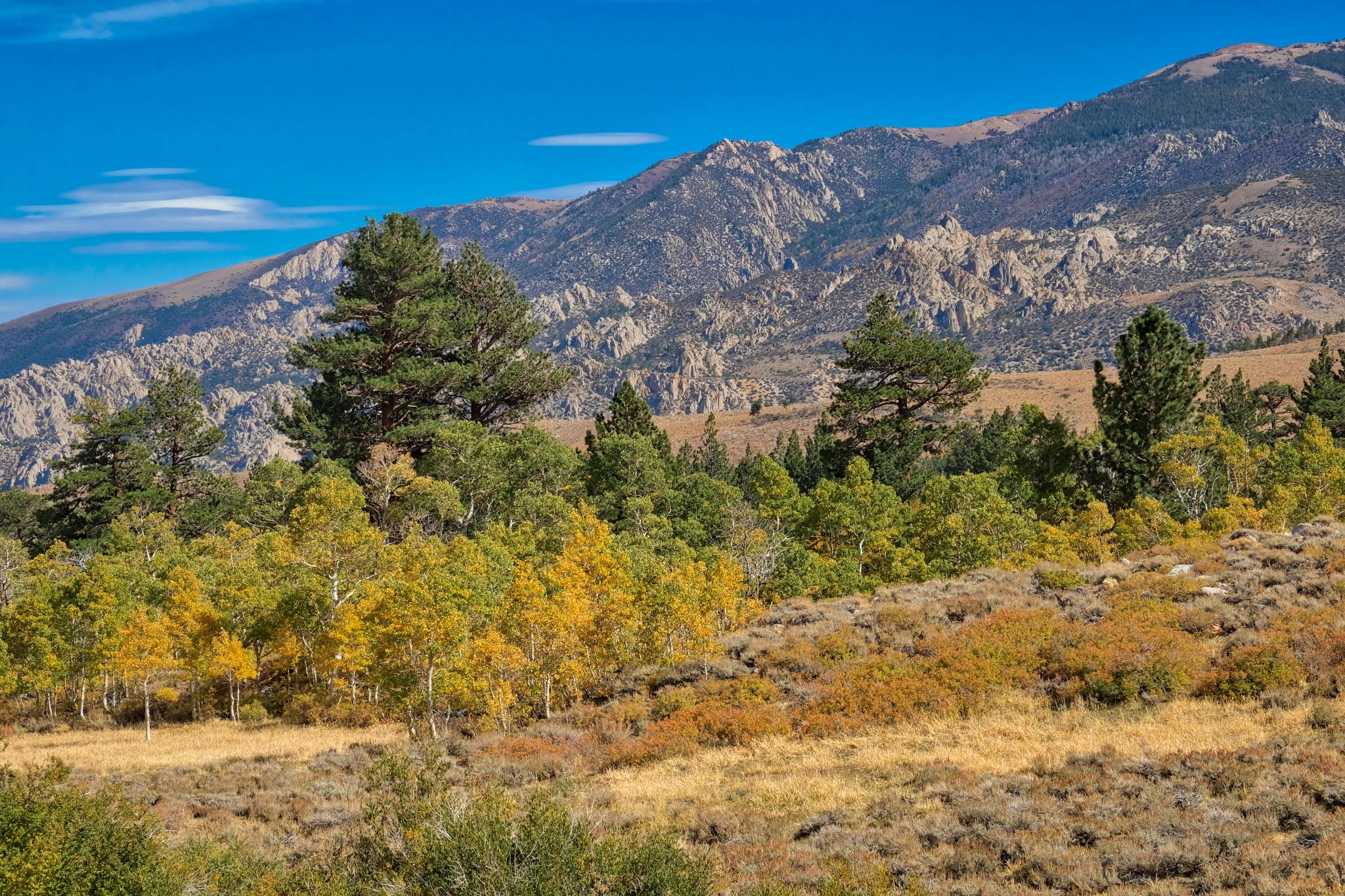 My aspen grove does not look very large from up here . . . I believe the tallest pine was next to my camper.
My aspen grove does not look very large from up here . . . I believe the tallest pine was next to my camper.
 I enjoyed another view of Mount Tom on the way back down.
I enjoyed another view of Mount Tom on the way back down.
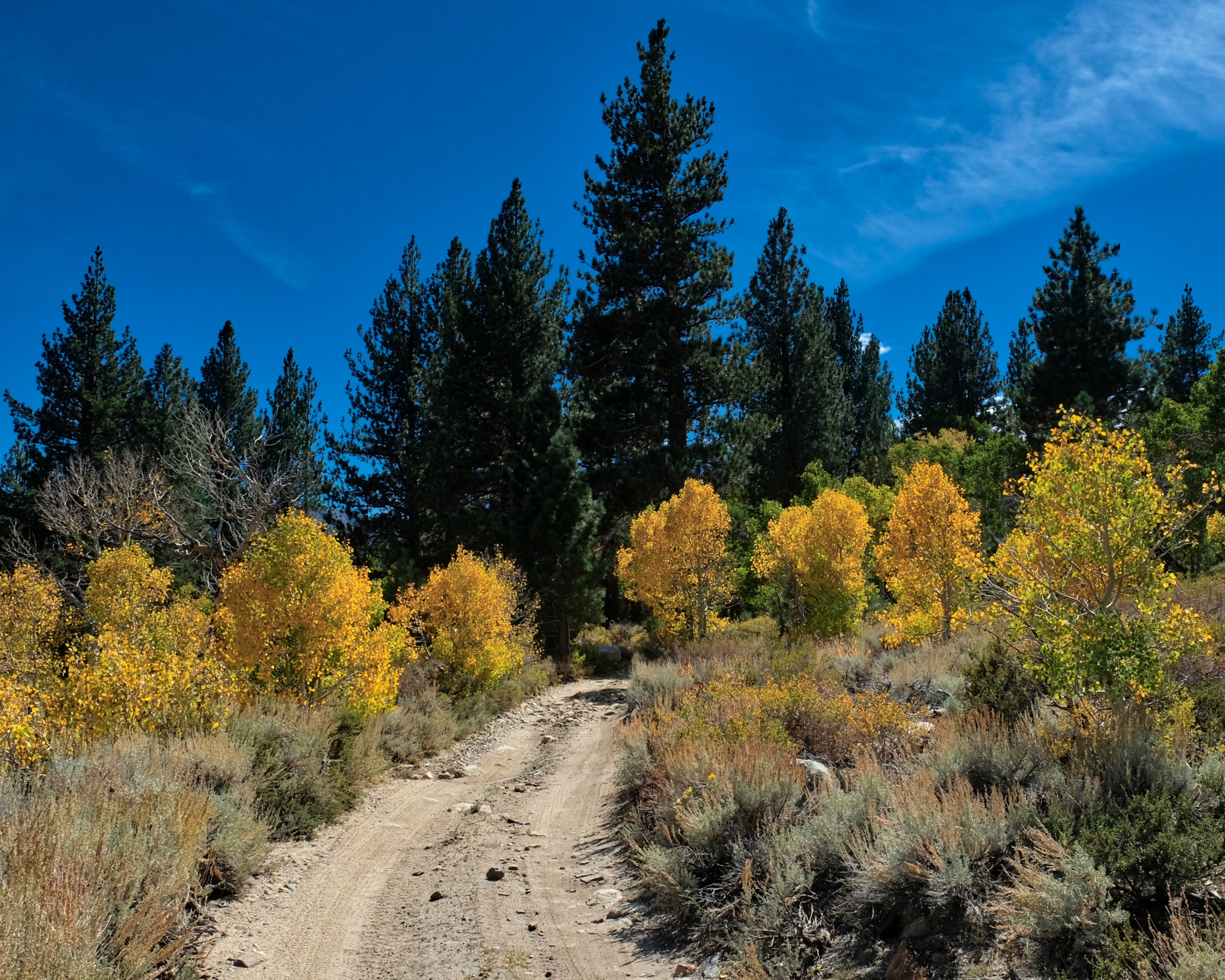 I walked back into the stand of aspens and my camp.
I walked back into the stand of aspens and my camp.
 I took my time walking back in my woods.
I took my time walking back in my woods.
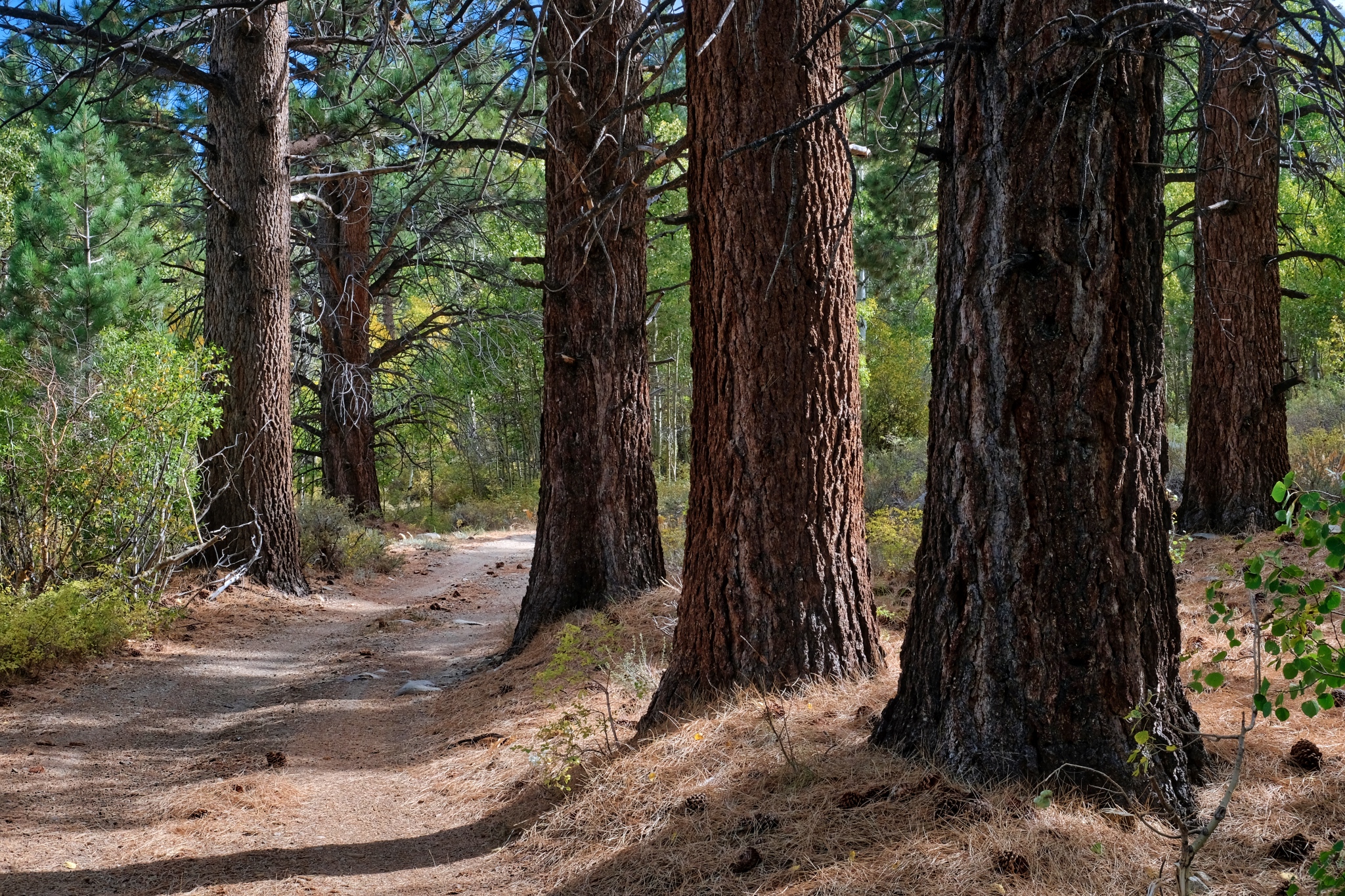 There were some large pines that surrounded the aspens.
There were some large pines that surrounded the aspens.
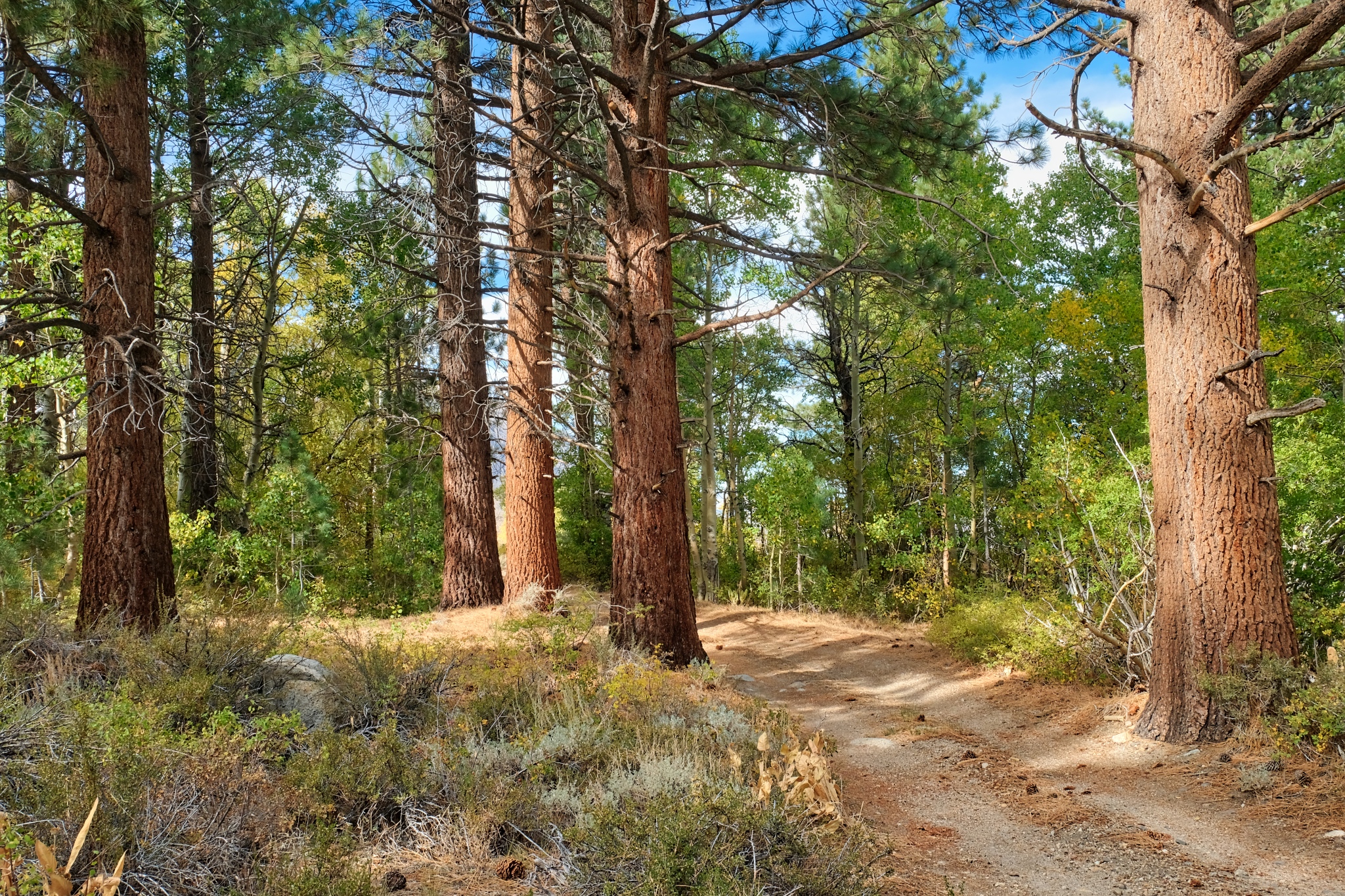 Another clear and bright day. Wonderful light!
Another clear and bright day. Wonderful light!
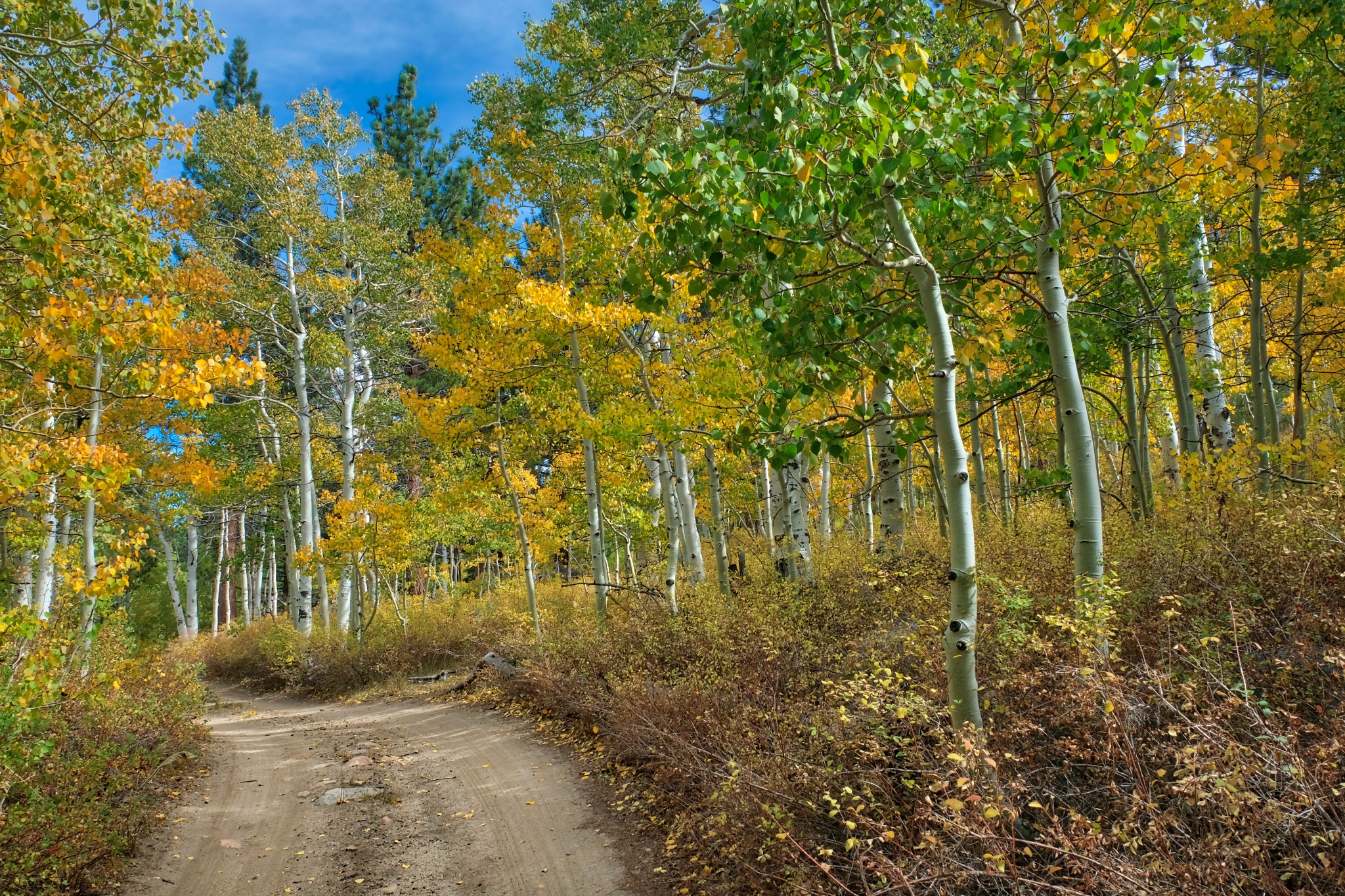 Beyond the pines and into the bright yellow aspens. Marvelous.
Beyond the pines and into the bright yellow aspens. Marvelous.
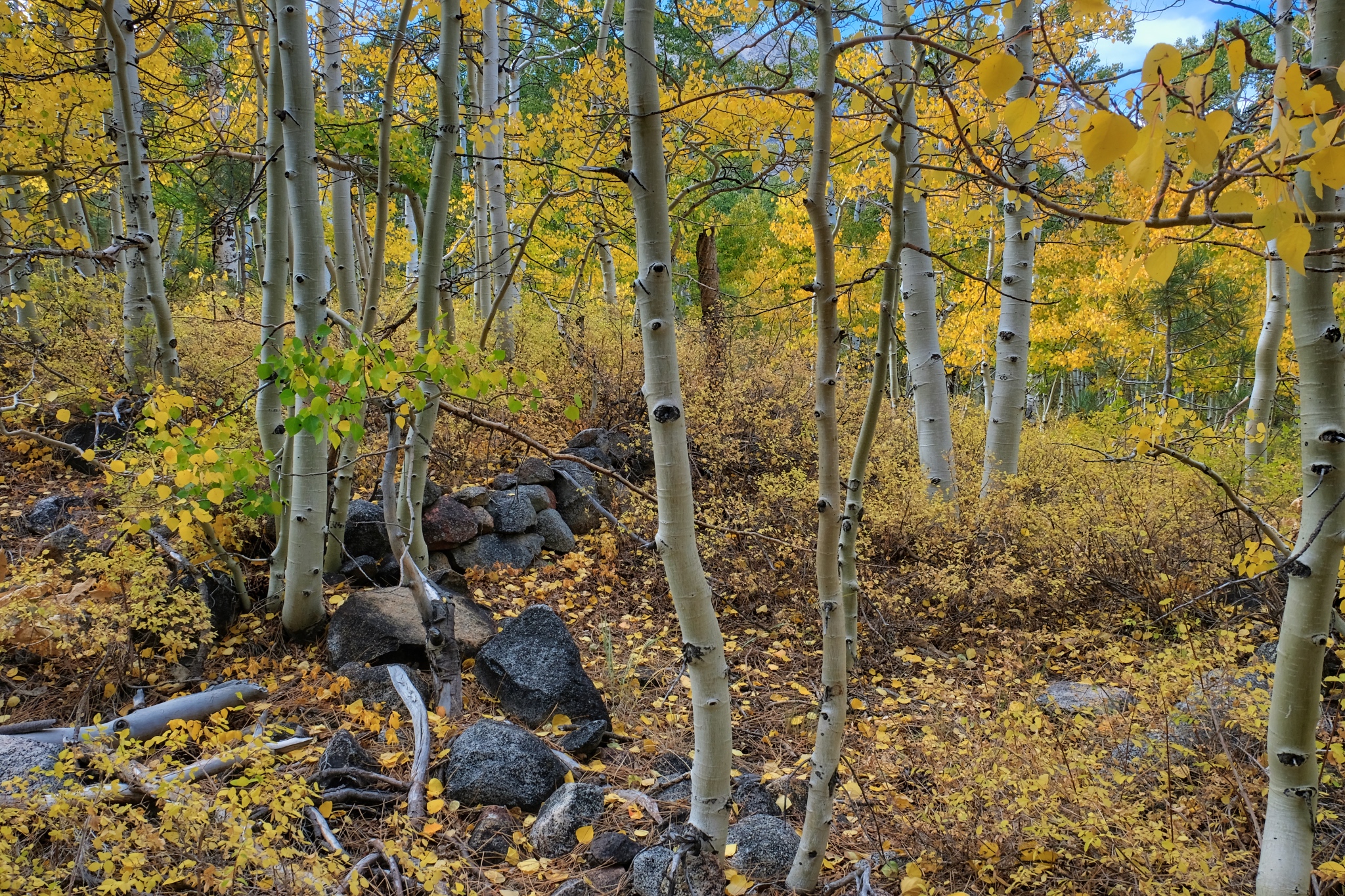 Not far from my camp I found the foundation stones for what must have been a settlers cabin or hunting lodge.
Not far from my camp I found the foundation stones for what must have been a settlers cabin or hunting lodge.
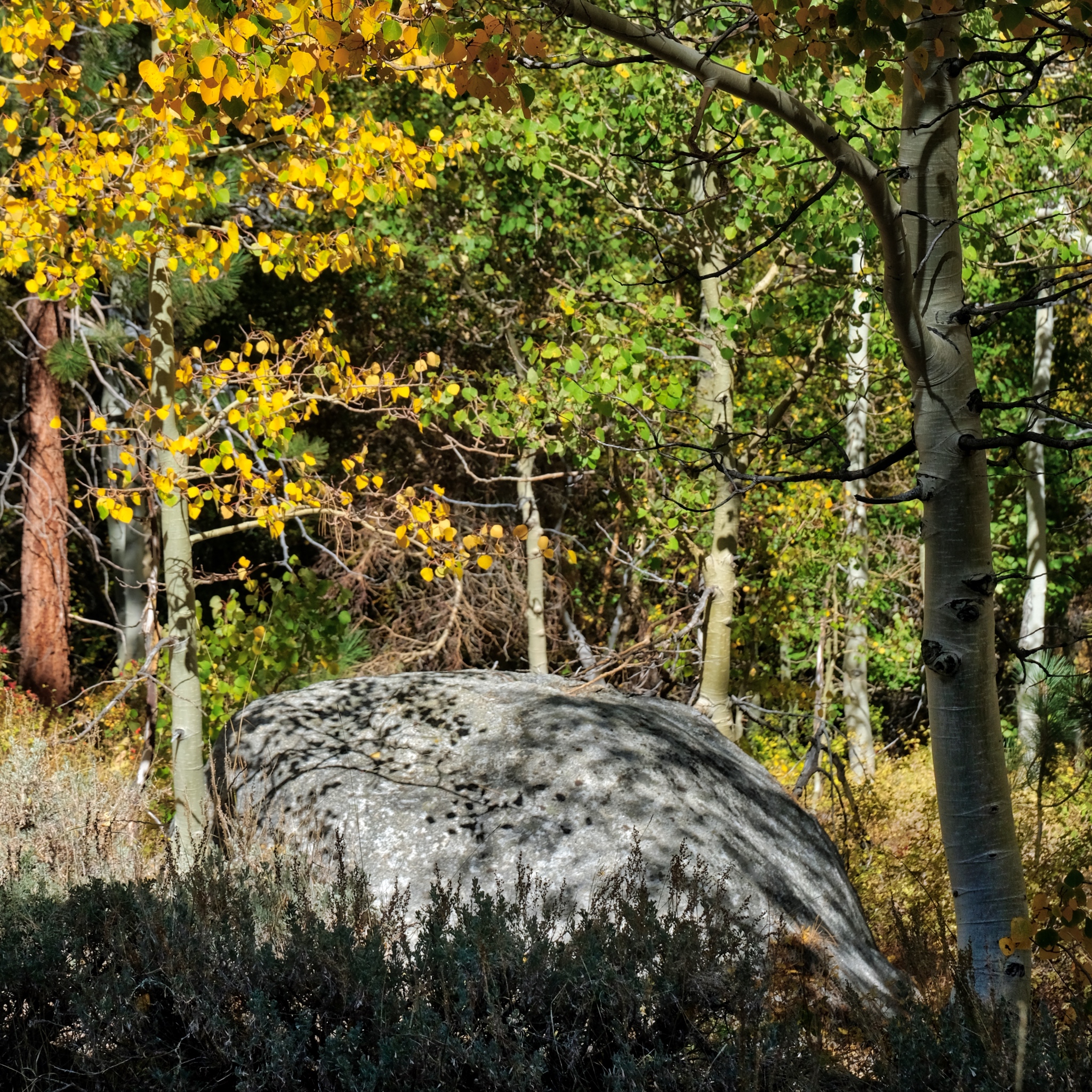 Nearing my campsite.
Nearing my campsite.
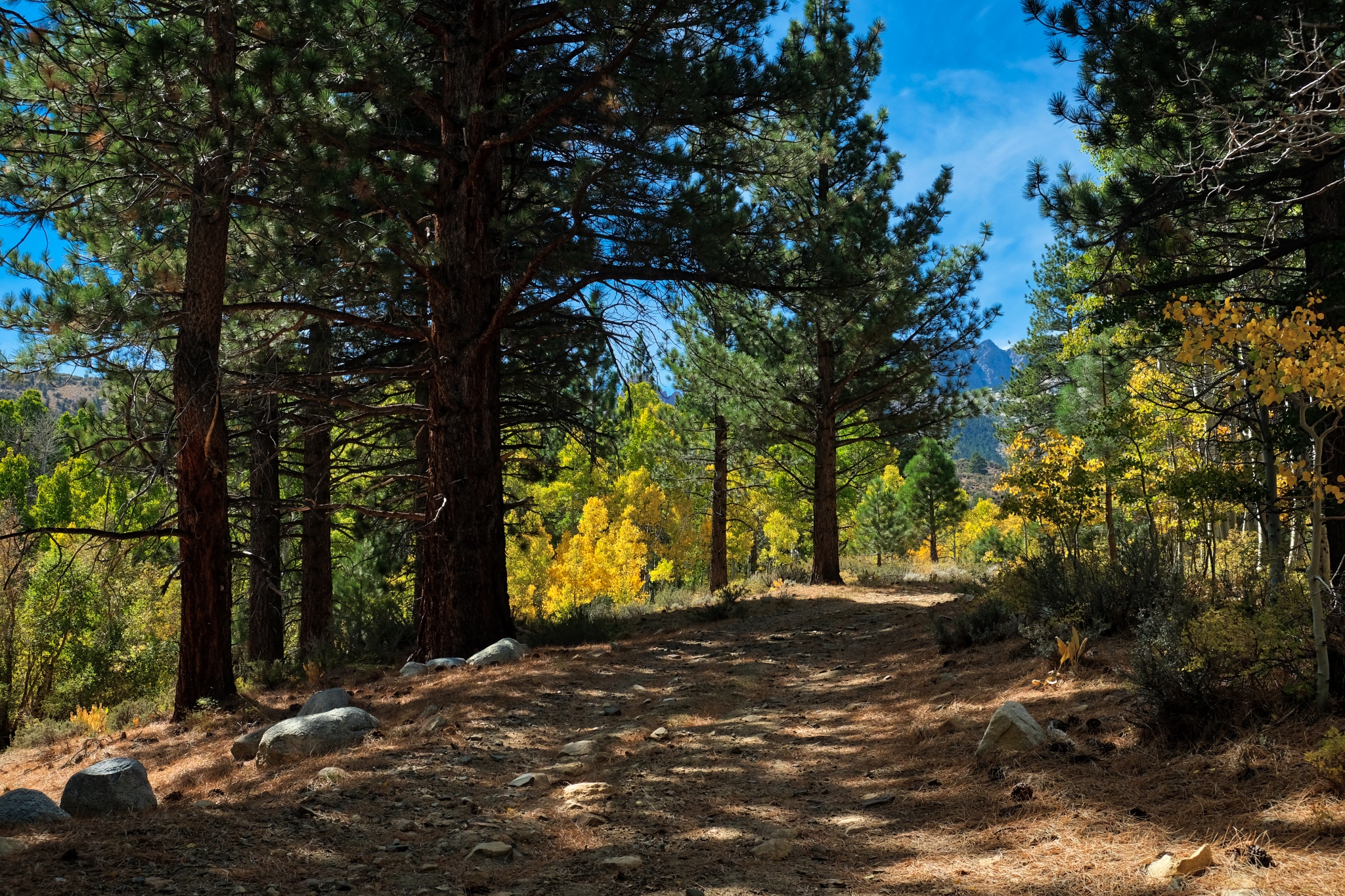 Up this obscured jeep track and then my camper . . . I was hungry!
Up this obscured jeep track and then my camper . . . I was hungry!
________________________________
DAY FIVE: A LONG WALK DOWN A STREAM BED
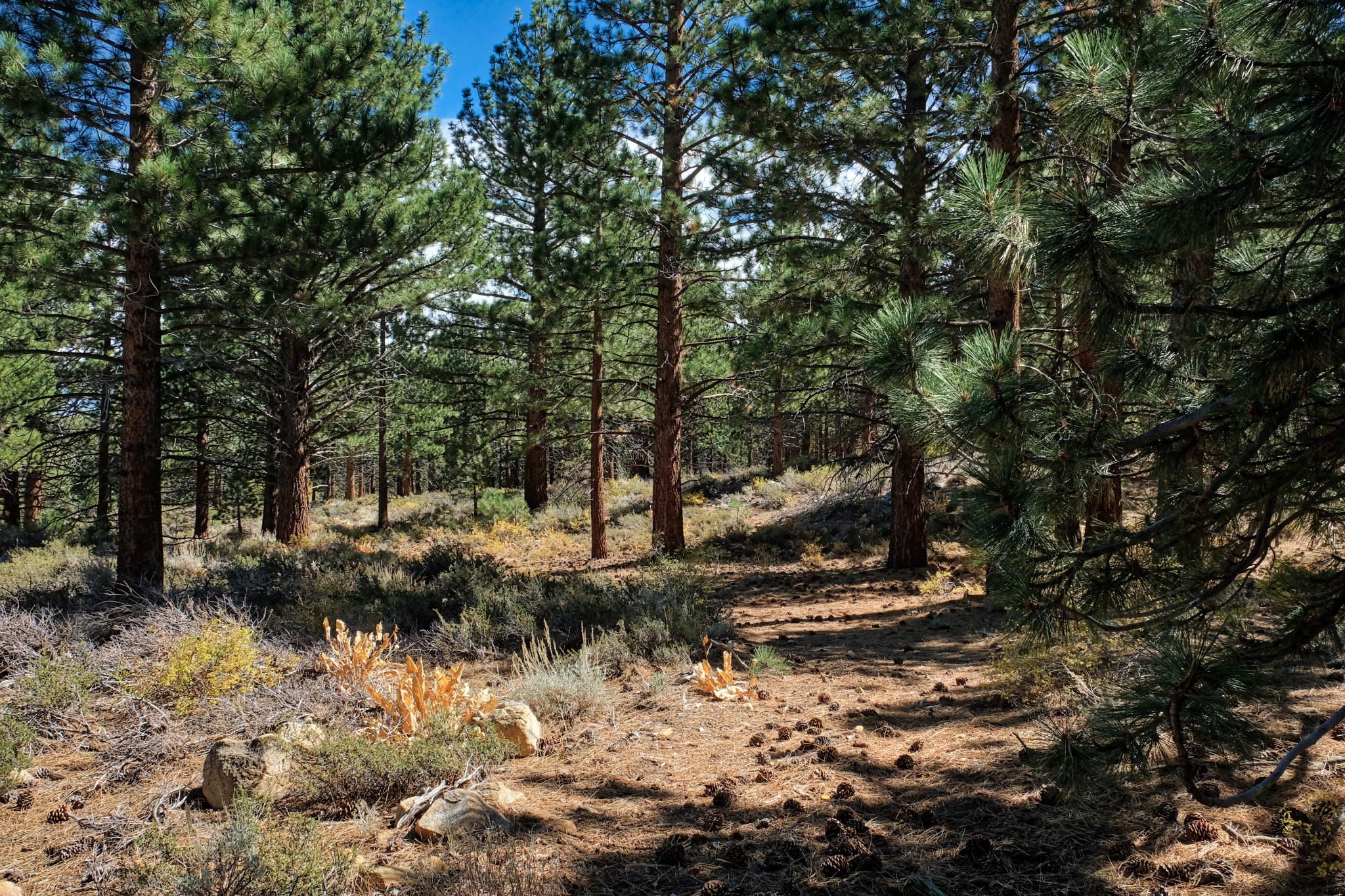 The hiker I encountered two days ago kindly gave me a NFS map of the area. I saw a small dotted line on the map and decided to see if I could find it . . . it appeared to lead to a stream and rock formations. I found the trail: an unused jeep track.
The hiker I encountered two days ago kindly gave me a NFS map of the area. I saw a small dotted line on the map and decided to see if I could find it . . . it appeared to lead to a stream and rock formations. I found the trail: an unused jeep track.
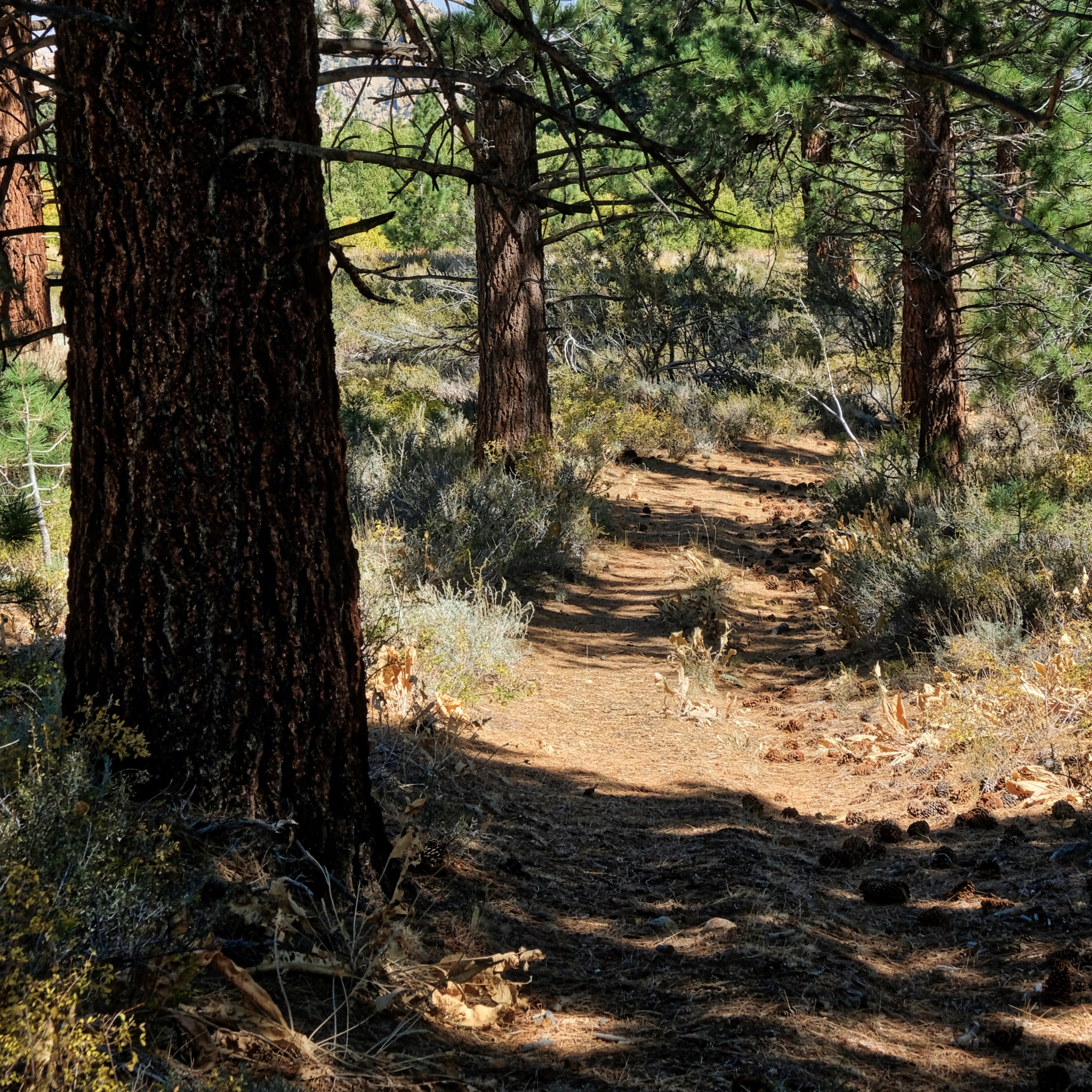 It was such a thrill to walk out this old disused track . . . where does it lead?
It was such a thrill to walk out this old disused track . . . where does it lead?
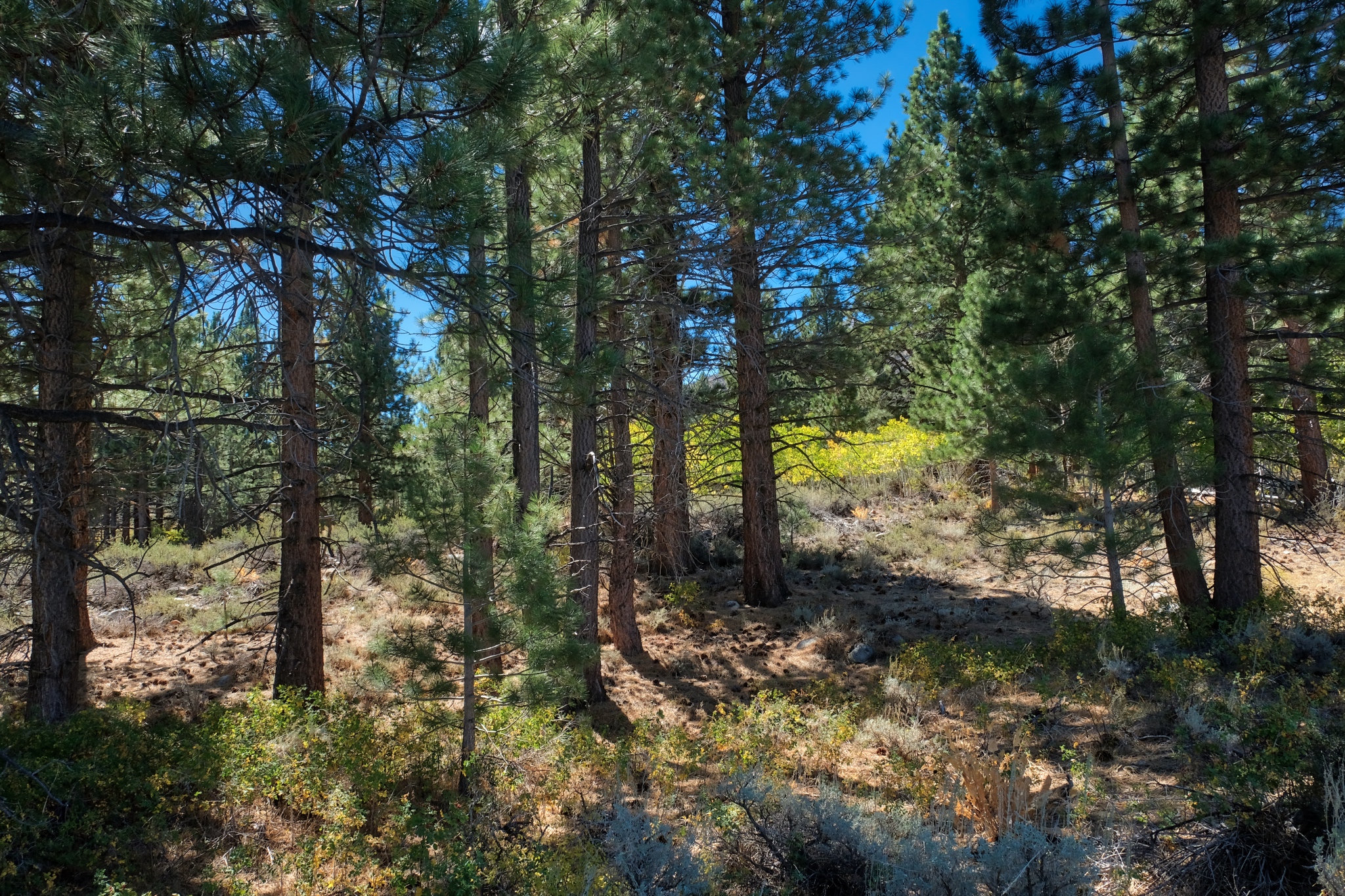 The old jeep track went through a dry pine forest . . . .
The old jeep track went through a dry pine forest . . . .
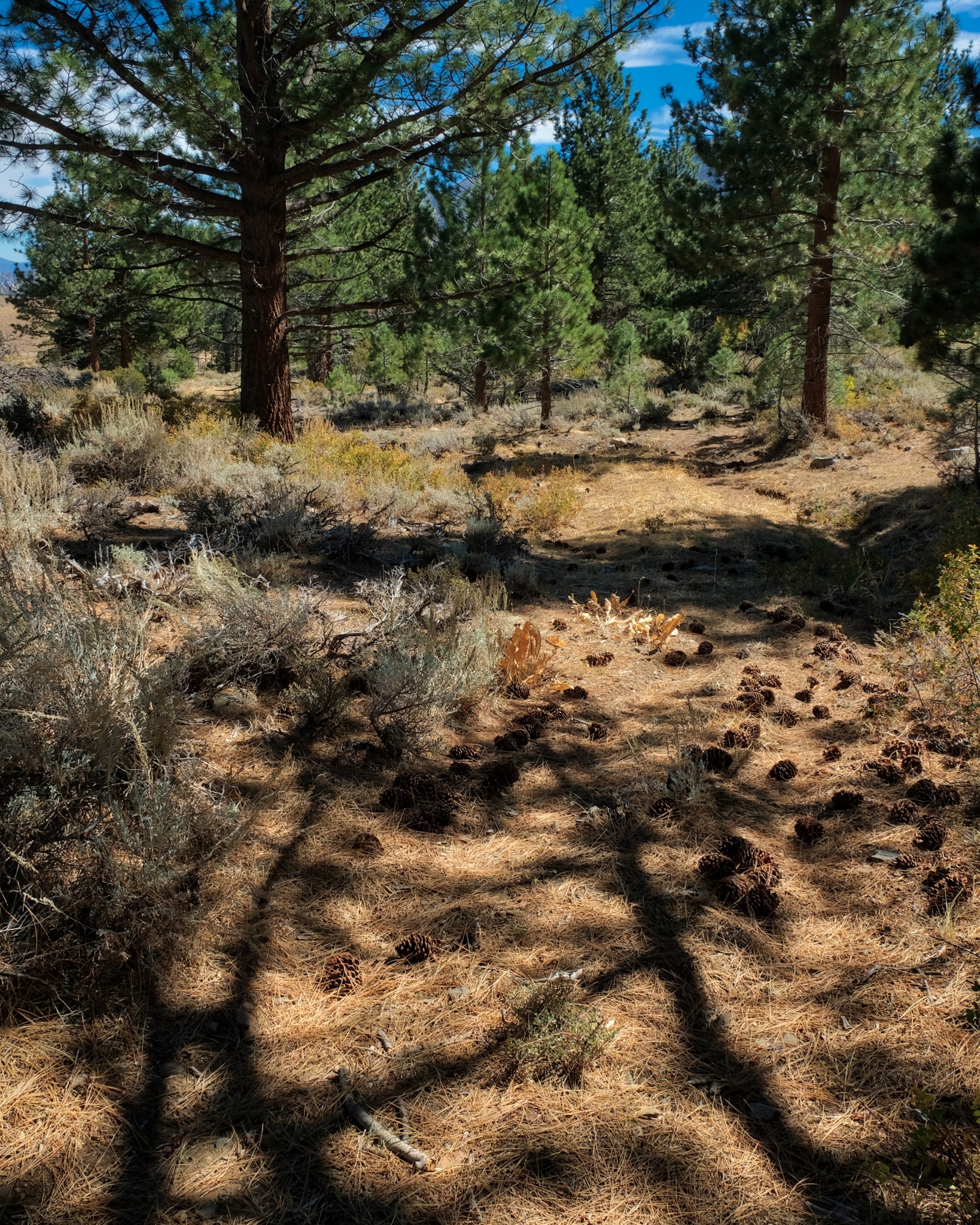 . . . through a carpet of pine needles and cones.
. . . through a carpet of pine needles and cones.
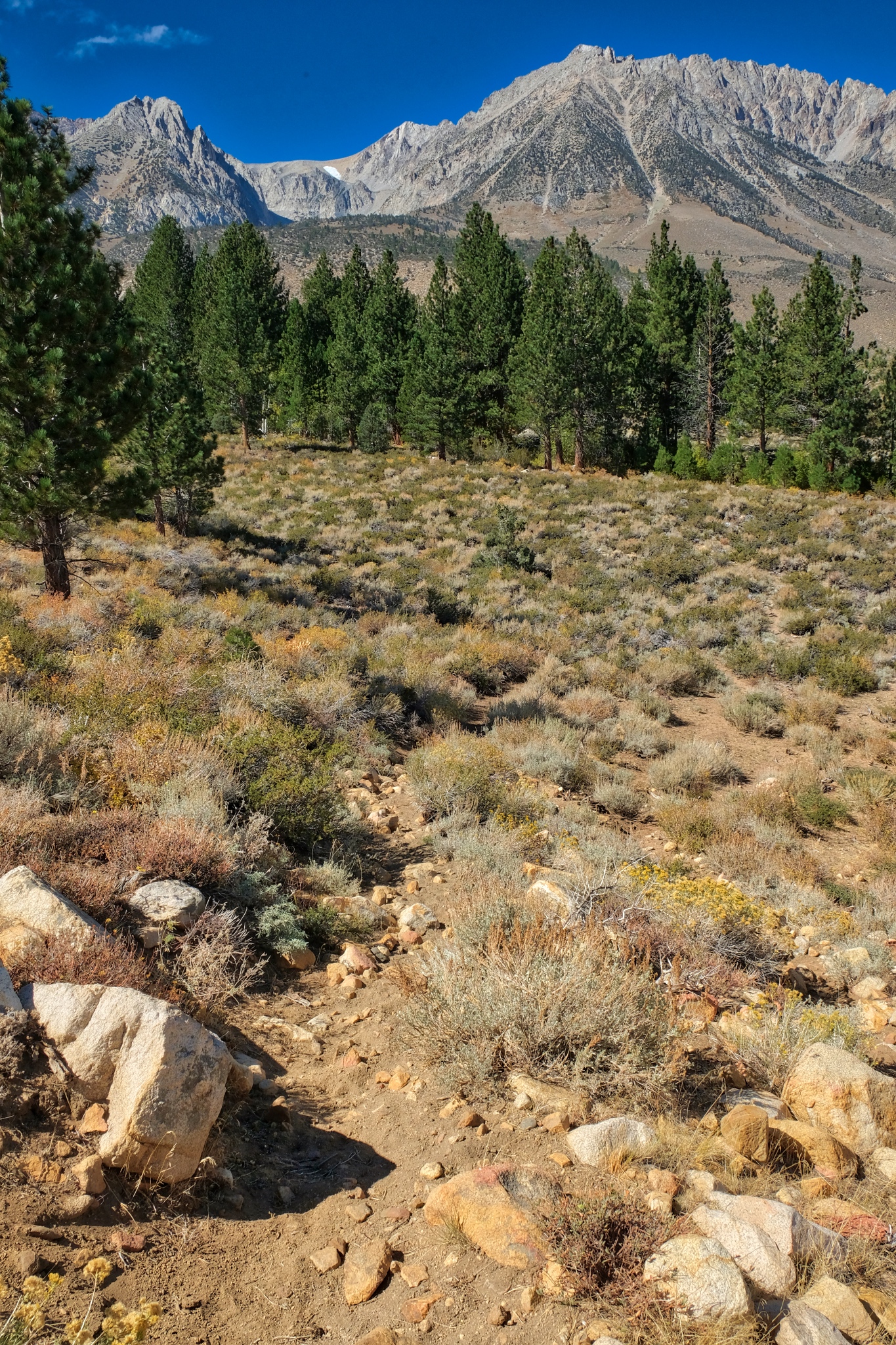 The track left the pine woods and I arrived in the arid scenery . . . and more views of the Sierra Nevadas.
The track left the pine woods and I arrived in the arid scenery . . . and more views of the Sierra Nevadas.
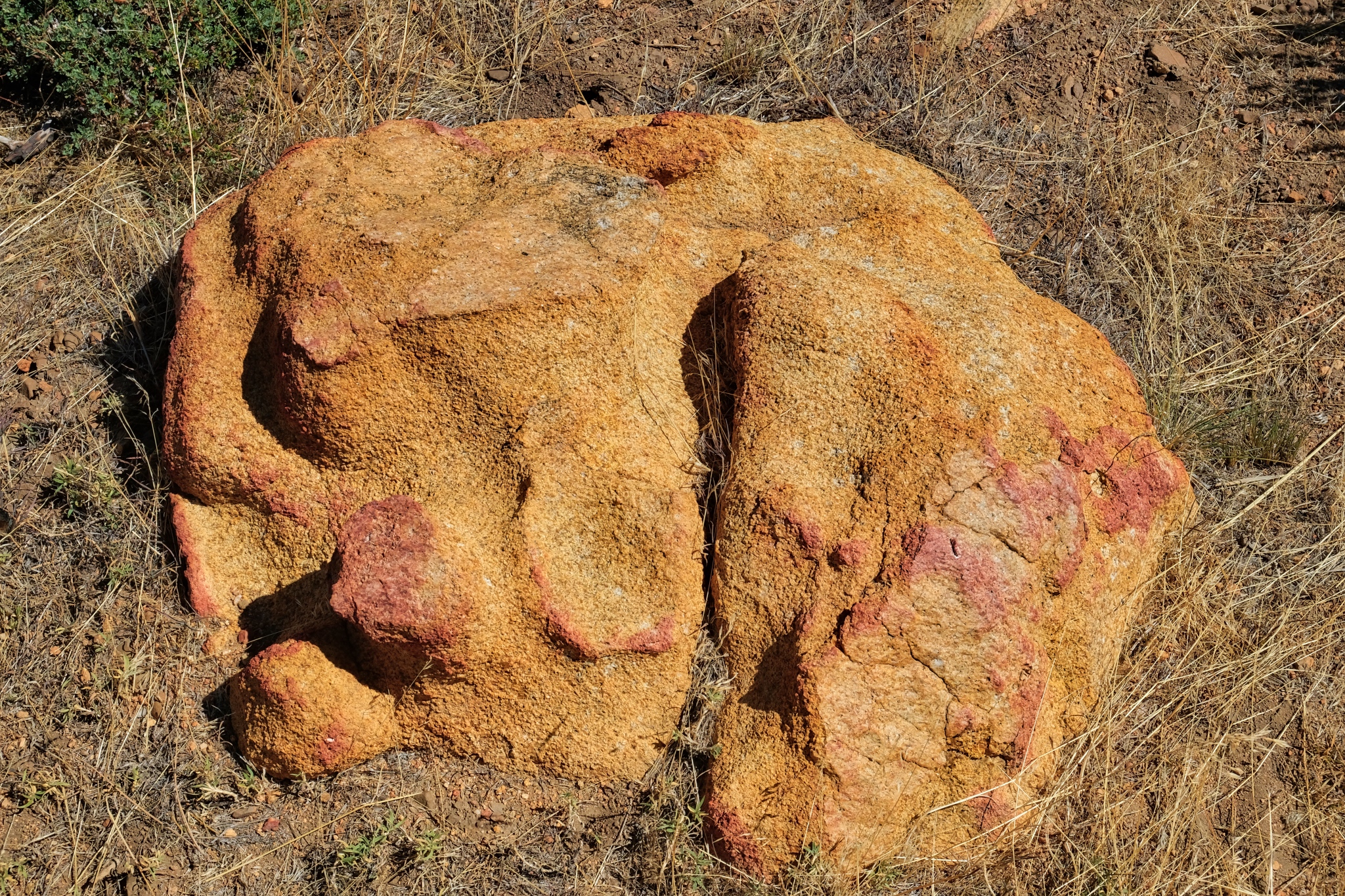 When you are rambling out n the drylands with no particular place to go, you sometimes stumble on interesting objects. This stone was like nothing else I saw in the area . . . just sitting there.
When you are rambling out n the drylands with no particular place to go, you sometimes stumble on interesting objects. This stone was like nothing else I saw in the area . . . just sitting there.
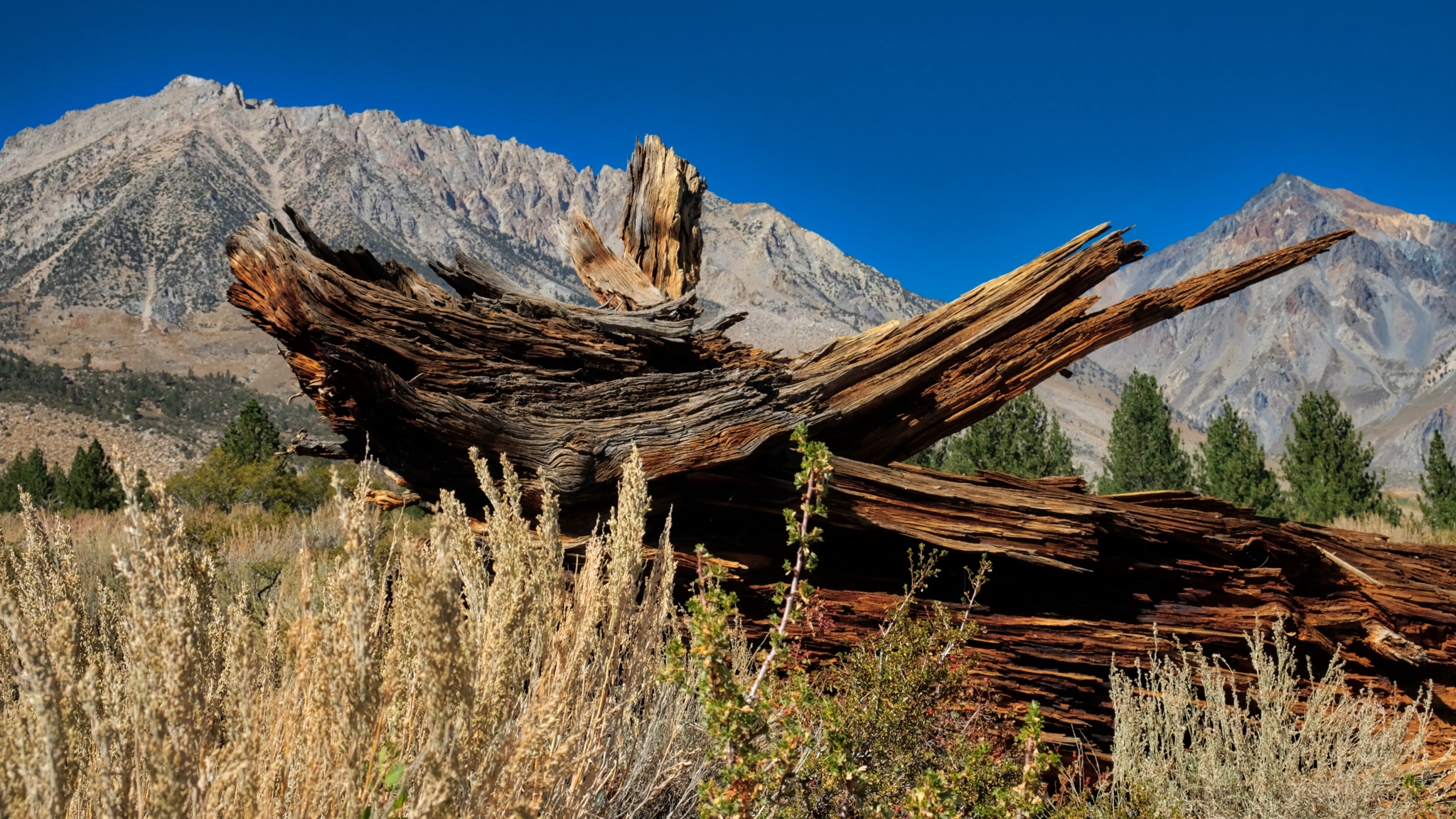 The snag of a burnt pine.
The snag of a burnt pine.
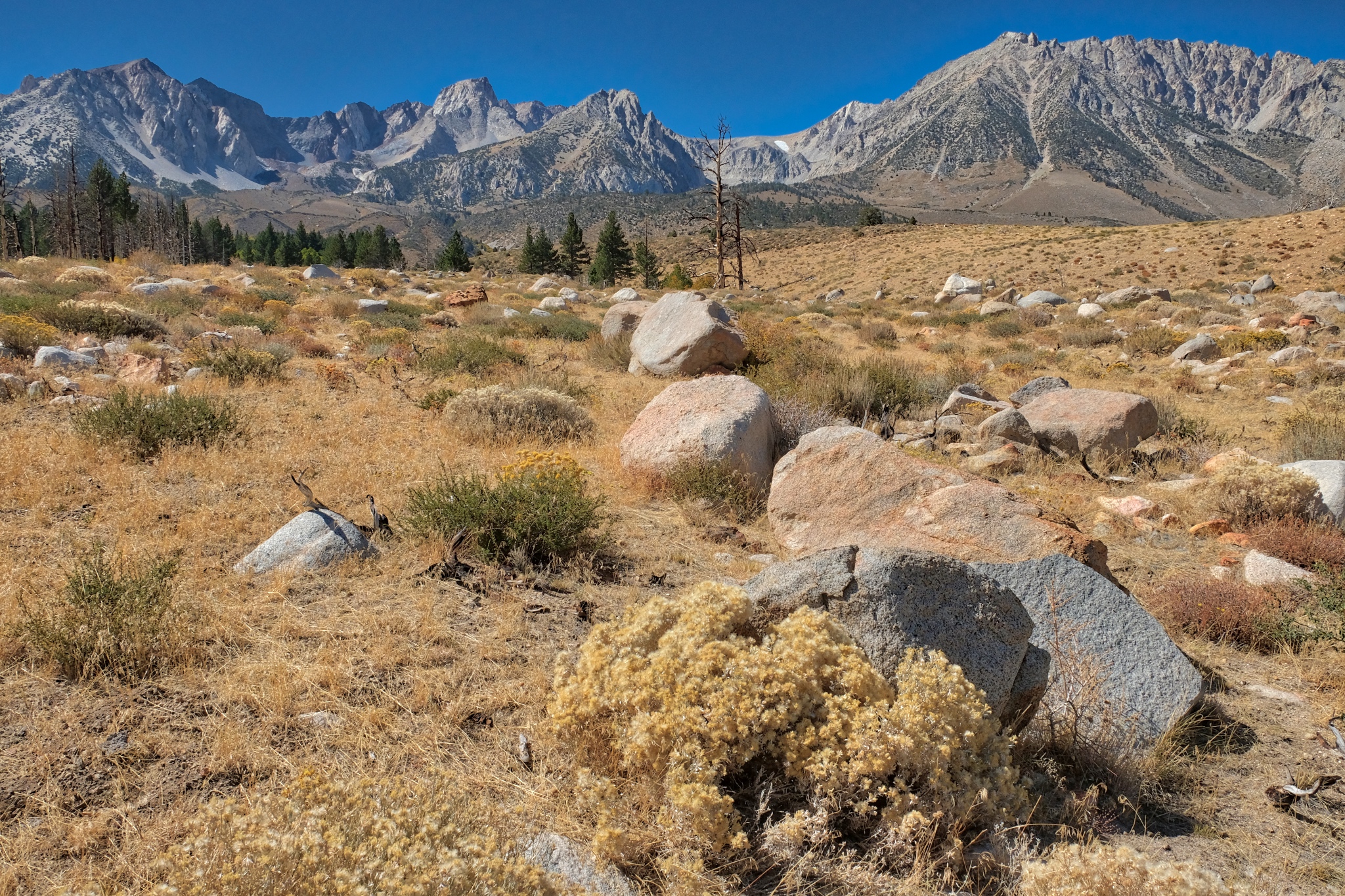 Eventually the trail disappeared and I was left to wander around among the stones. Wonderful. It was a clear day, but the temperature had fallen . . . to the low 50s(f) today.
Eventually the trail disappeared and I was left to wander around among the stones. Wonderful. It was a clear day, but the temperature had fallen . . . to the low 50s(f) today.
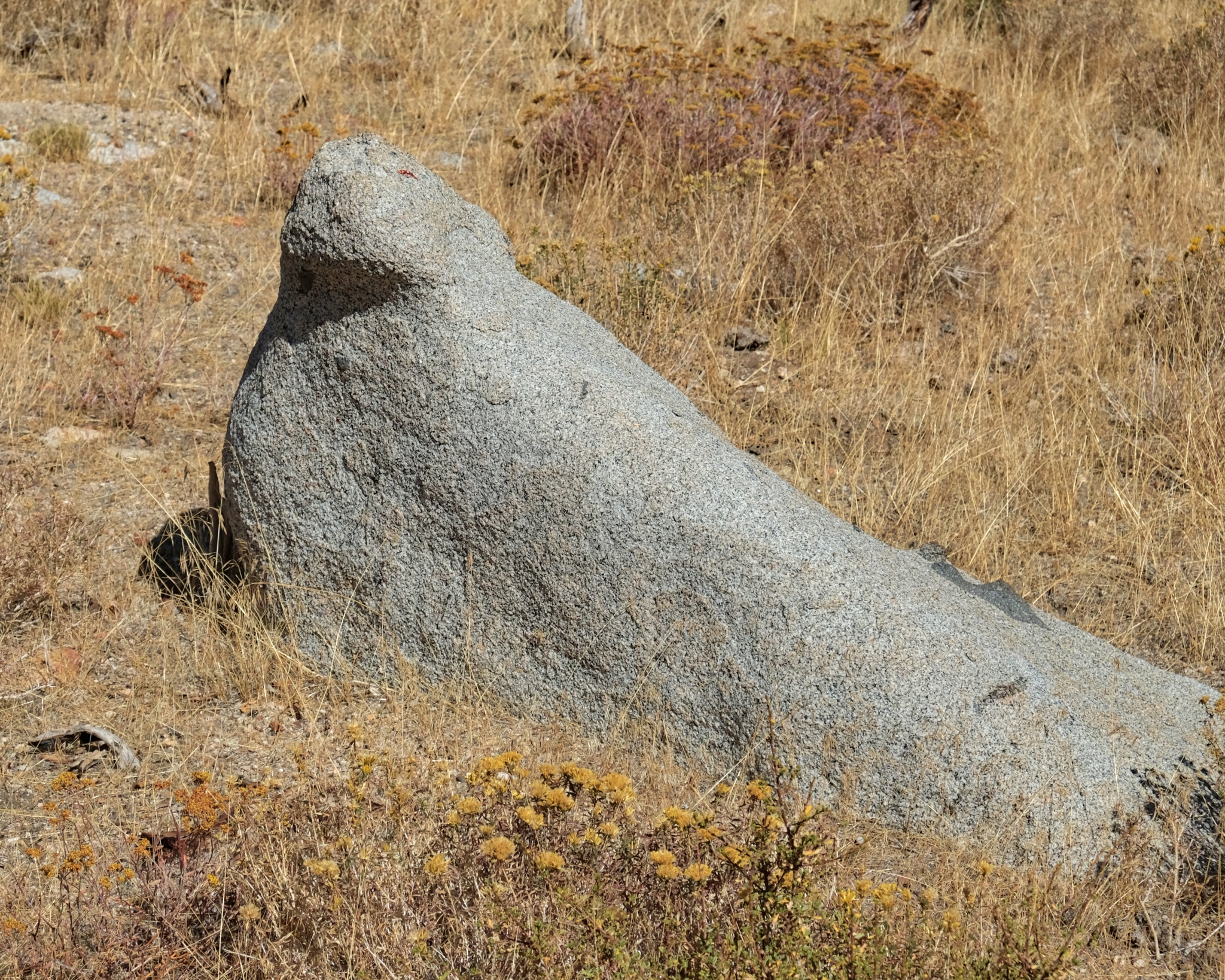 I enjoyed trying to suss out the geological processes that formed particular stones.
I enjoyed trying to suss out the geological processes that formed particular stones.
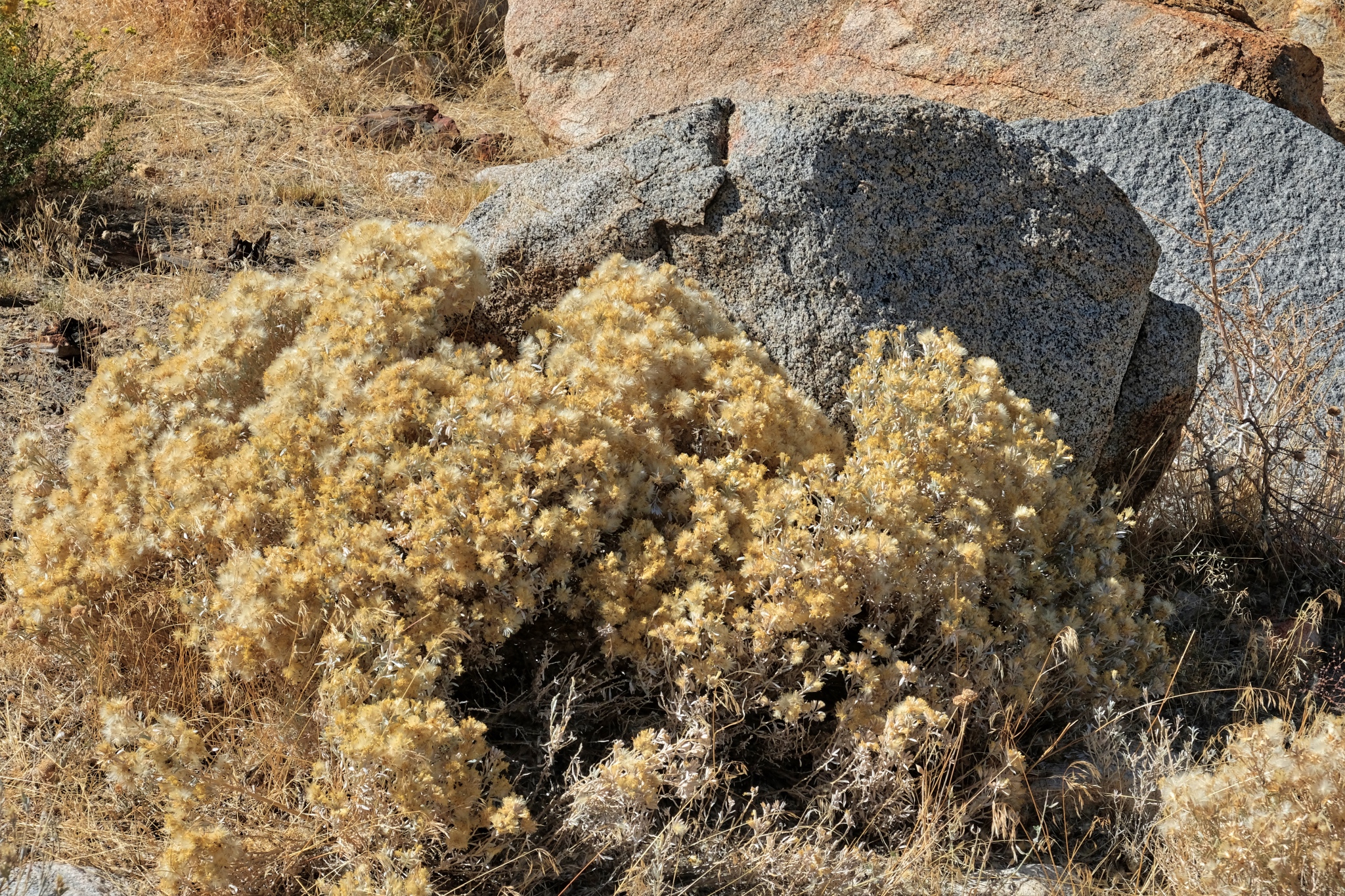 Some of the flora was different at this lower elevation and greater exposure.
Some of the flora was different at this lower elevation and greater exposure.
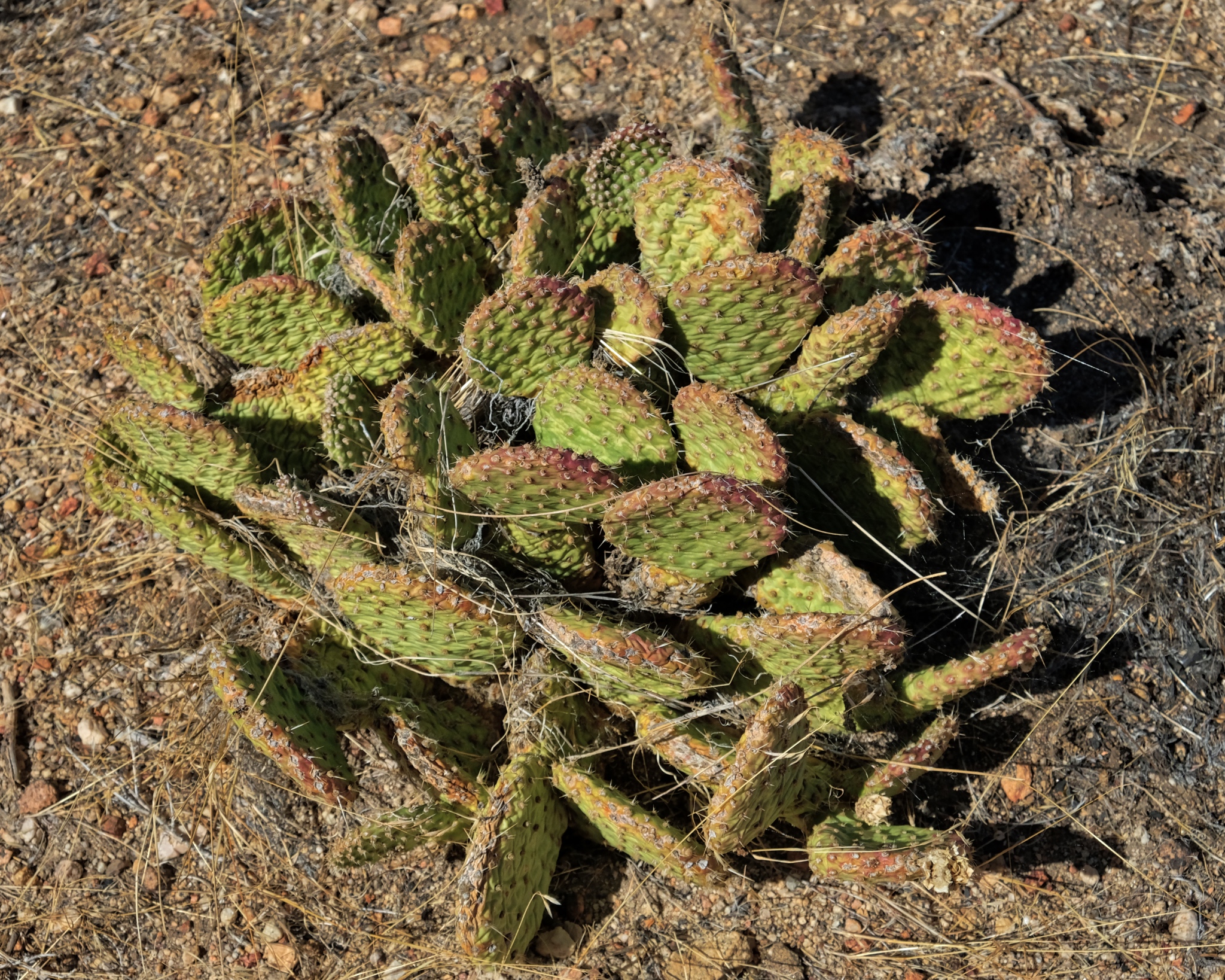 There were even a few cactus plants. This area is covered in deep snow for many months of the year, so this cactus species must be very well adapted.
There were even a few cactus plants. This area is covered in deep snow for many months of the year, so this cactus species must be very well adapted.
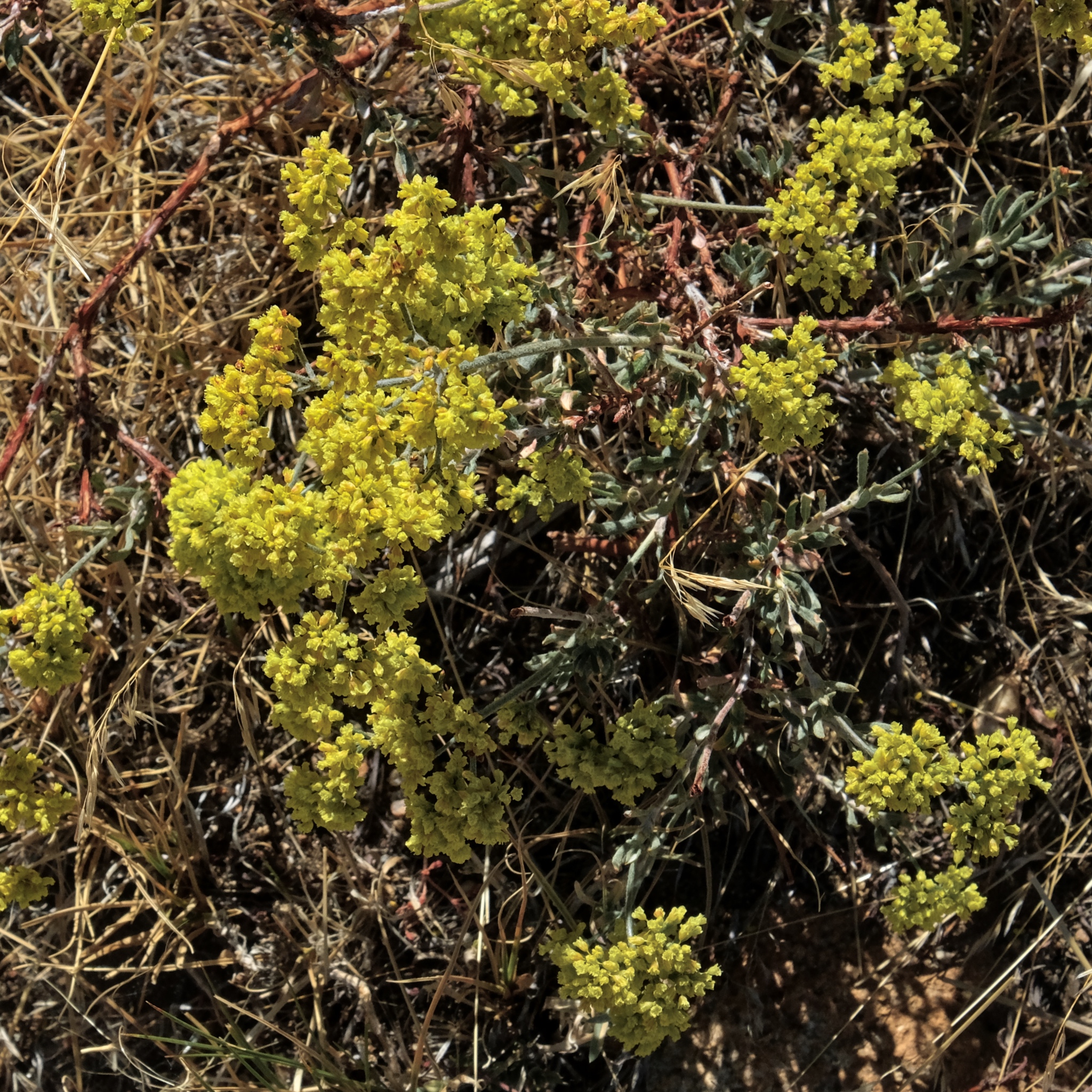 I found it remarkable that there were still flowers at this late date. Snow was expected here any day, ending the summer/fall season for good.
I found it remarkable that there were still flowers at this late date. Snow was expected here any day, ending the summer/fall season for good.
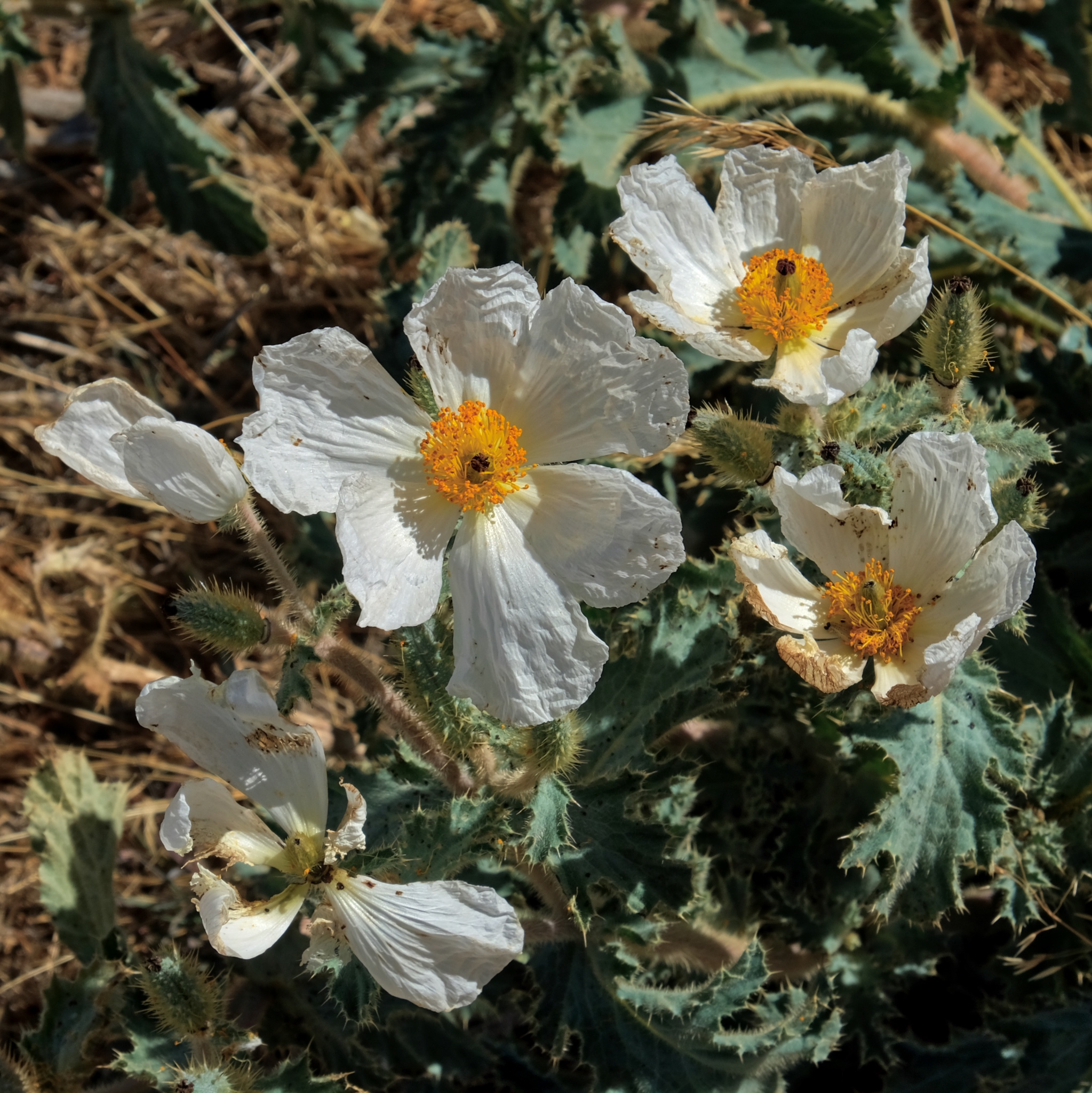 I expect these seeds are meant to last over the winter, under the snow, until the temperature, light, and moisture are right for their germination.
I expect these seeds are meant to last over the winter, under the snow, until the temperature, light, and moisture are right for their germination.
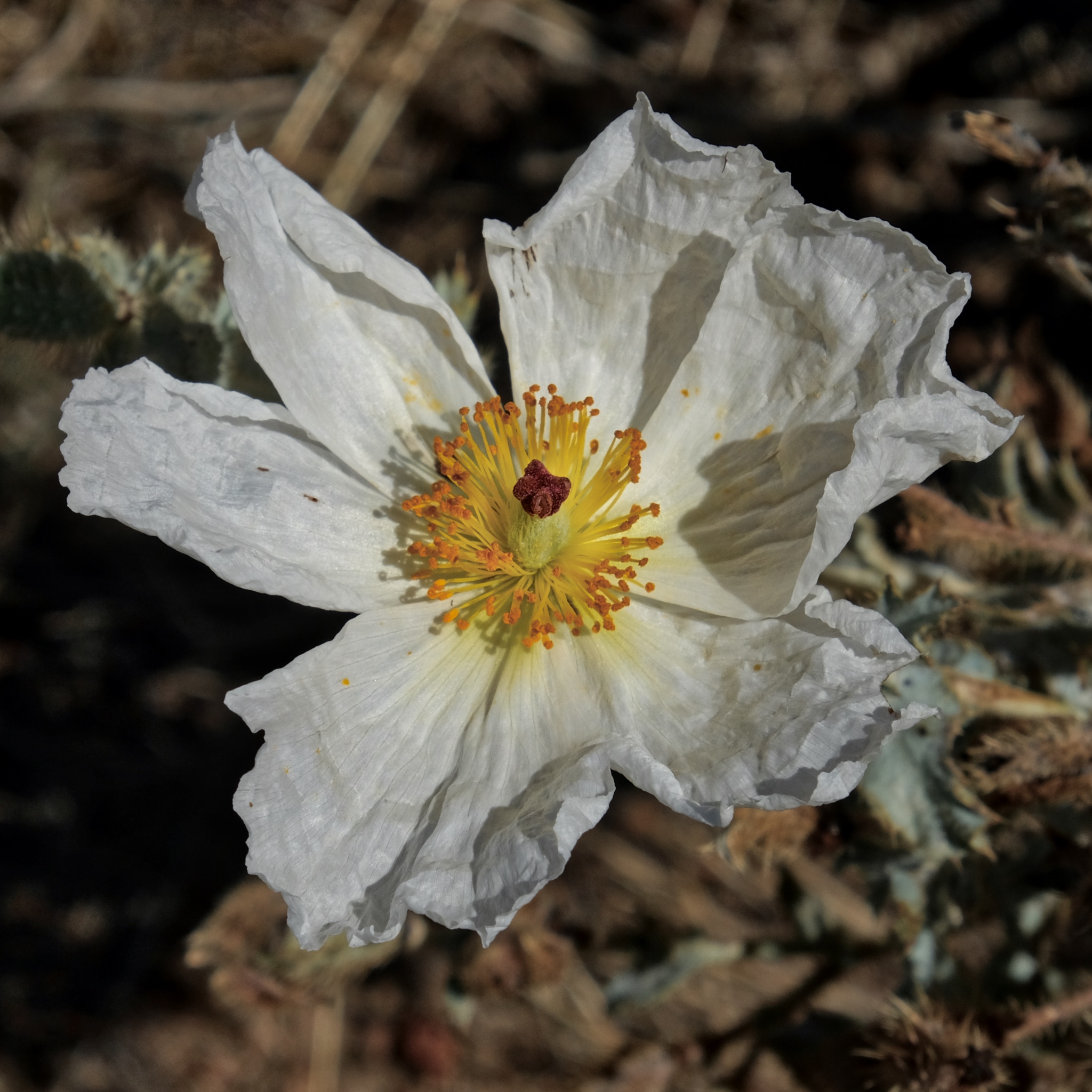 Absolutely beautiful.
Absolutely beautiful.
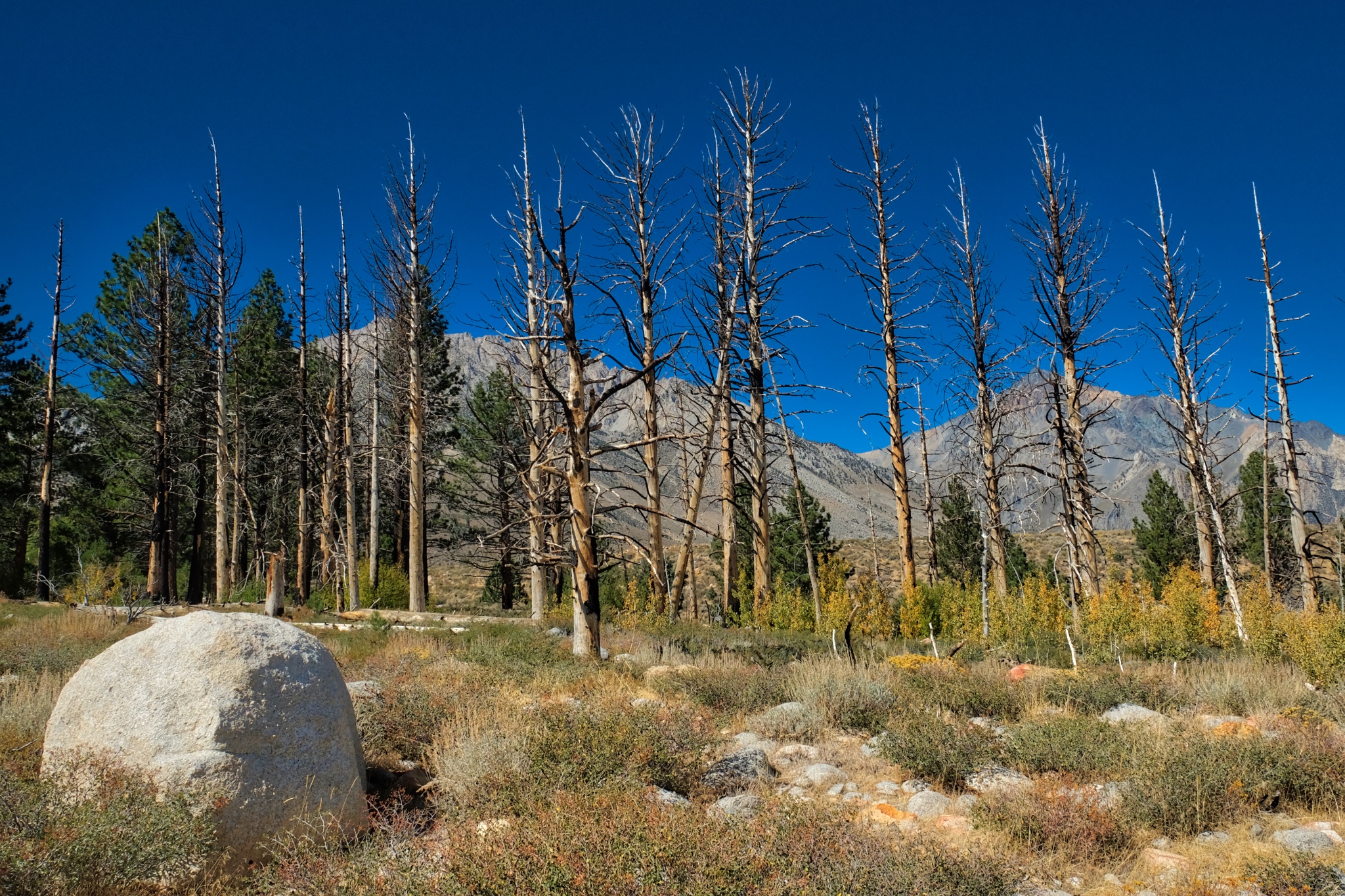 I followed my USFS map to where a stream was indicated and discovered there had been a fire in the recent past. This is the point the fire ended and the unburned trees resumed.
I followed my USFS map to where a stream was indicated and discovered there had been a fire in the recent past. This is the point the fire ended and the unburned trees resumed.
 A giant burned snag towering over the arid scenery.
A giant burned snag towering over the arid scenery.
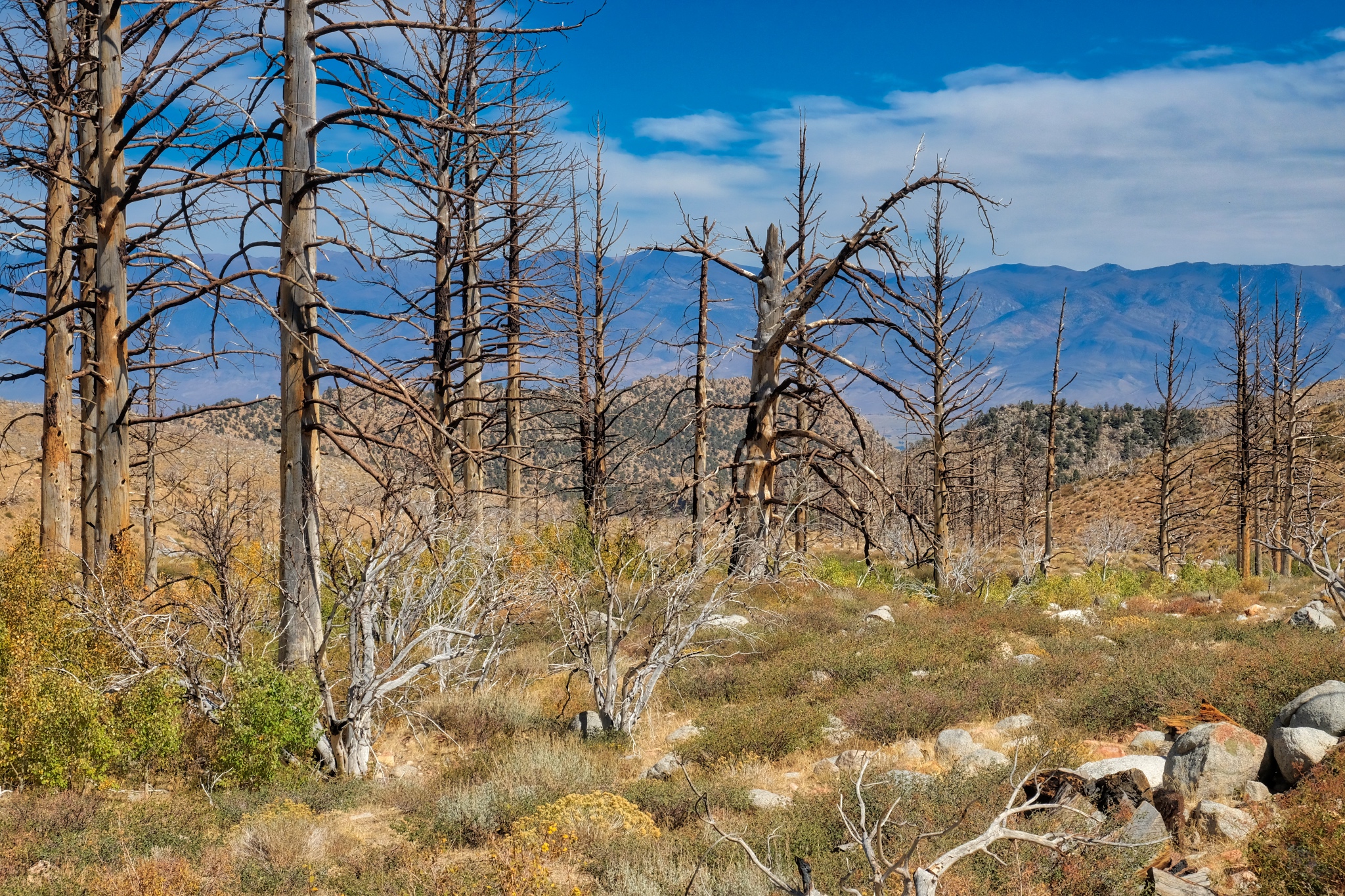 I continued to follow the burnt tree line down the valley. There was a small trickle of water in the streambed.
I continued to follow the burnt tree line down the valley. There was a small trickle of water in the streambed.
 A strange beauty permeates these old snags . . . perhaps it is the clarity of light that enhances a sense of connectedness to actuality.
A strange beauty permeates these old snags . . . perhaps it is the clarity of light that enhances a sense of connectedness to actuality.
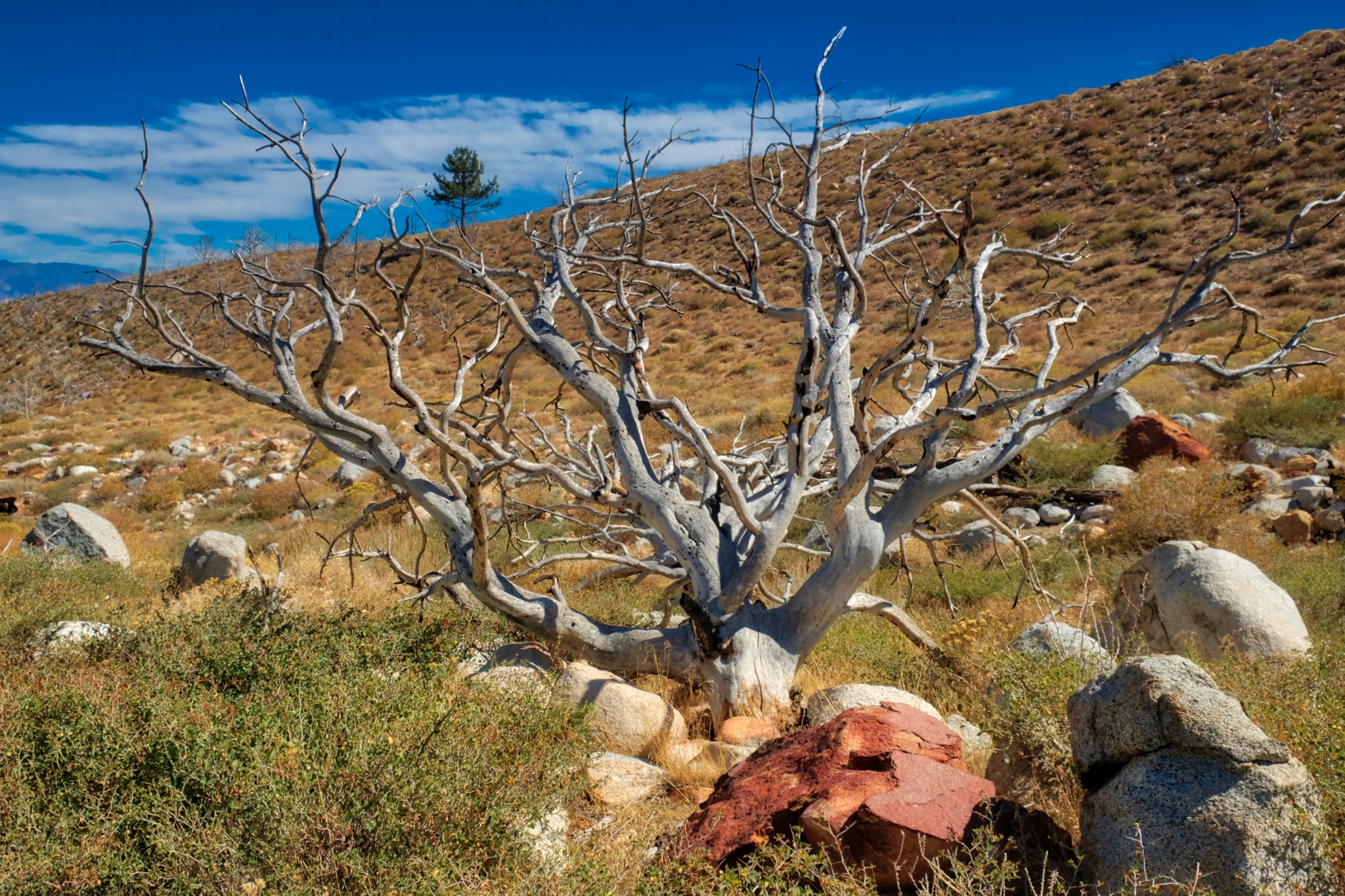 I walked all morning beside the stream amid the remnants of the old burn.
I walked all morning beside the stream amid the remnants of the old burn.
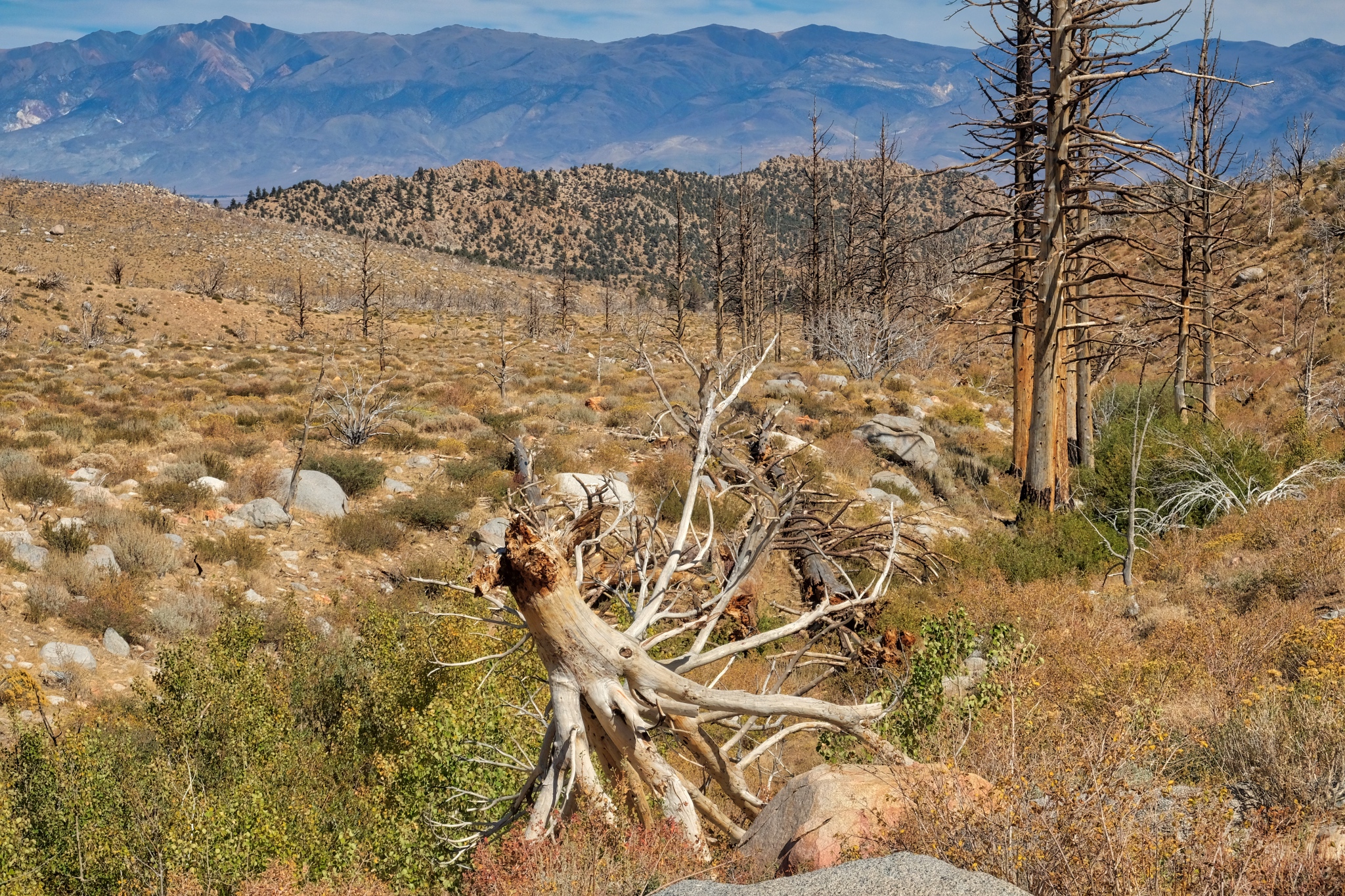 I crossed over the stream here.
I crossed over the stream here.
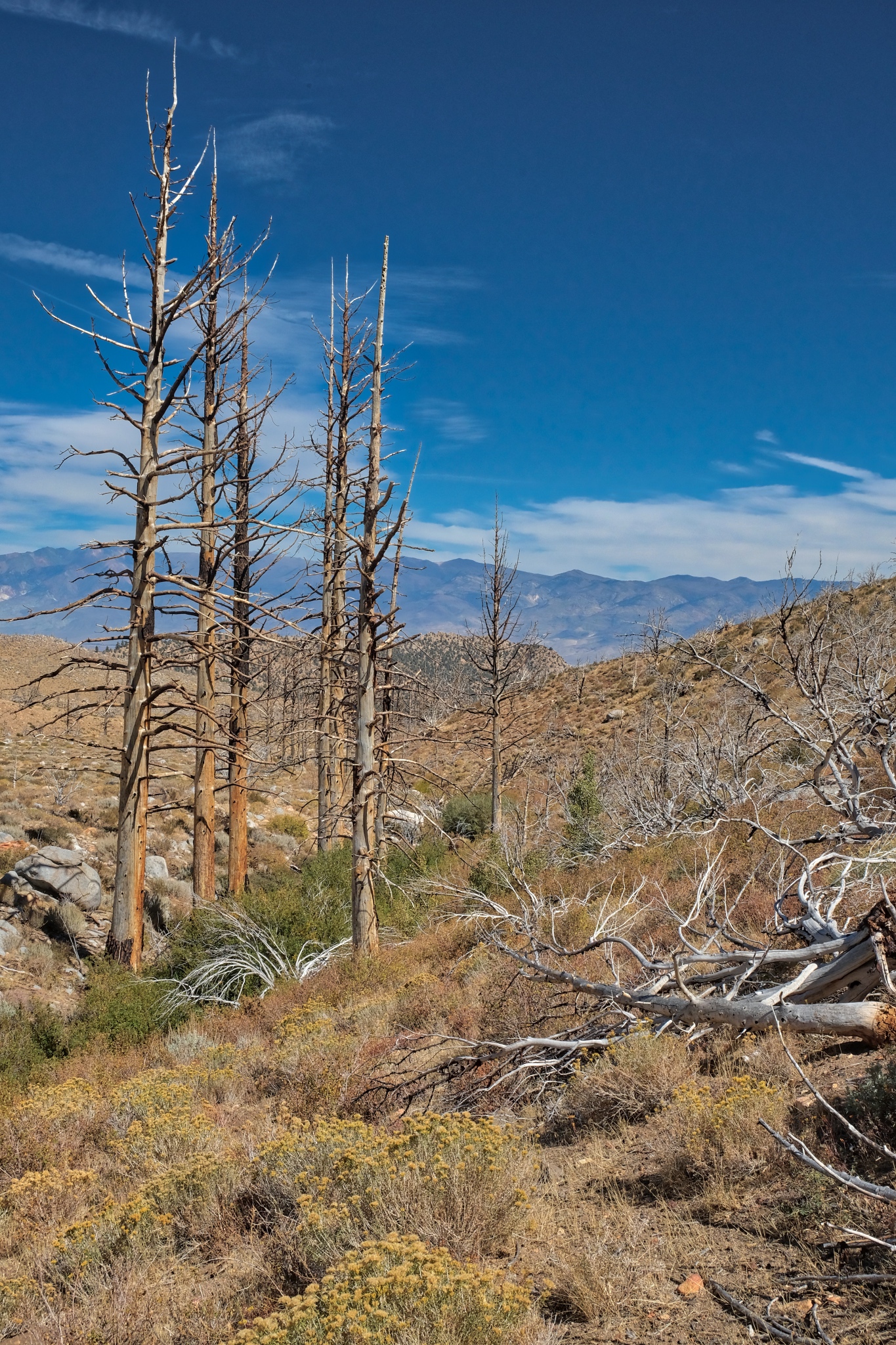 Another beautiful day.
Another beautiful day.
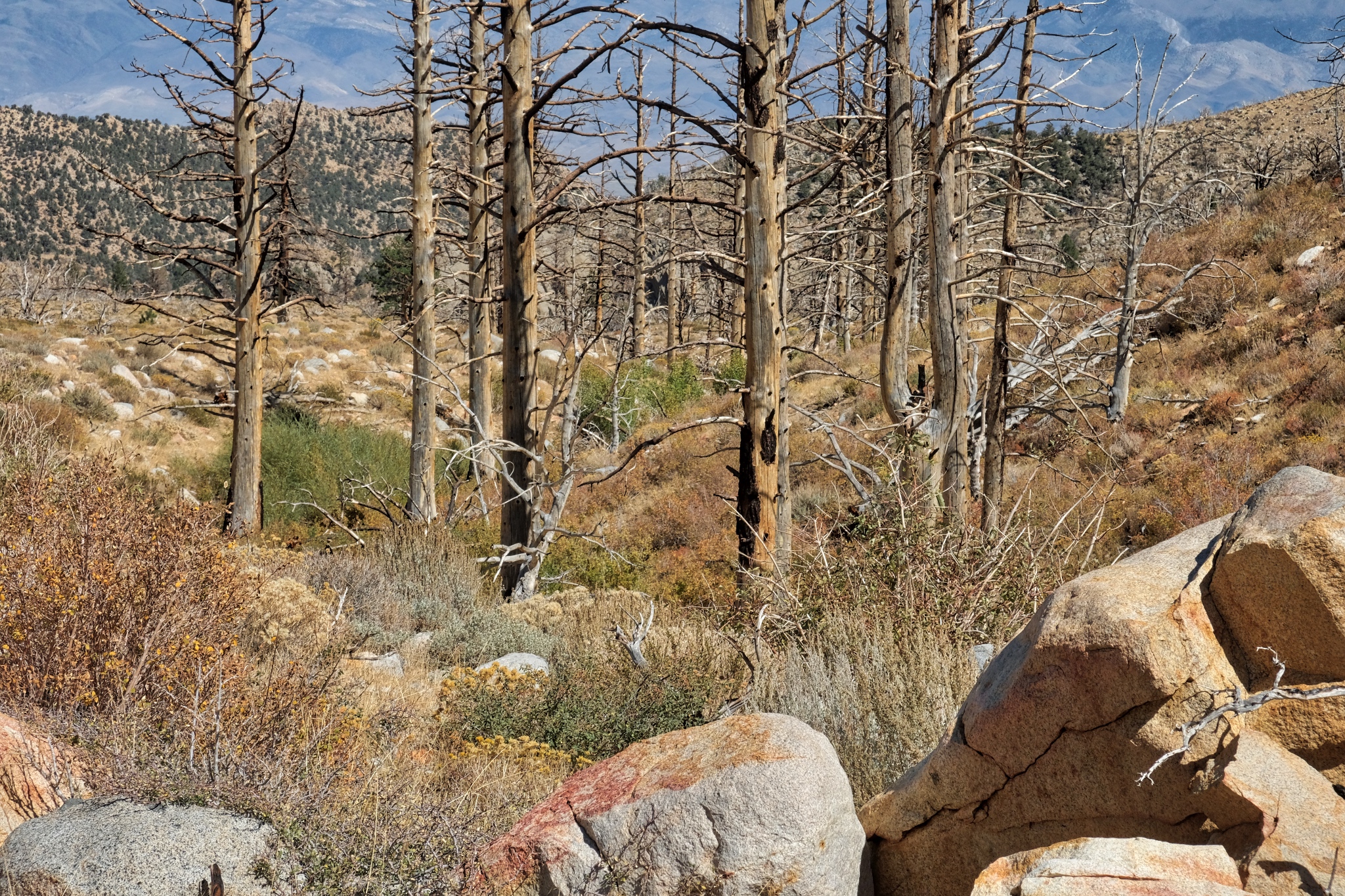 At this point I am just picking my way between the stones and the brush . . . there is no trail . . . but it is very beautiful.
At this point I am just picking my way between the stones and the brush . . . there is no trail . . . but it is very beautiful.
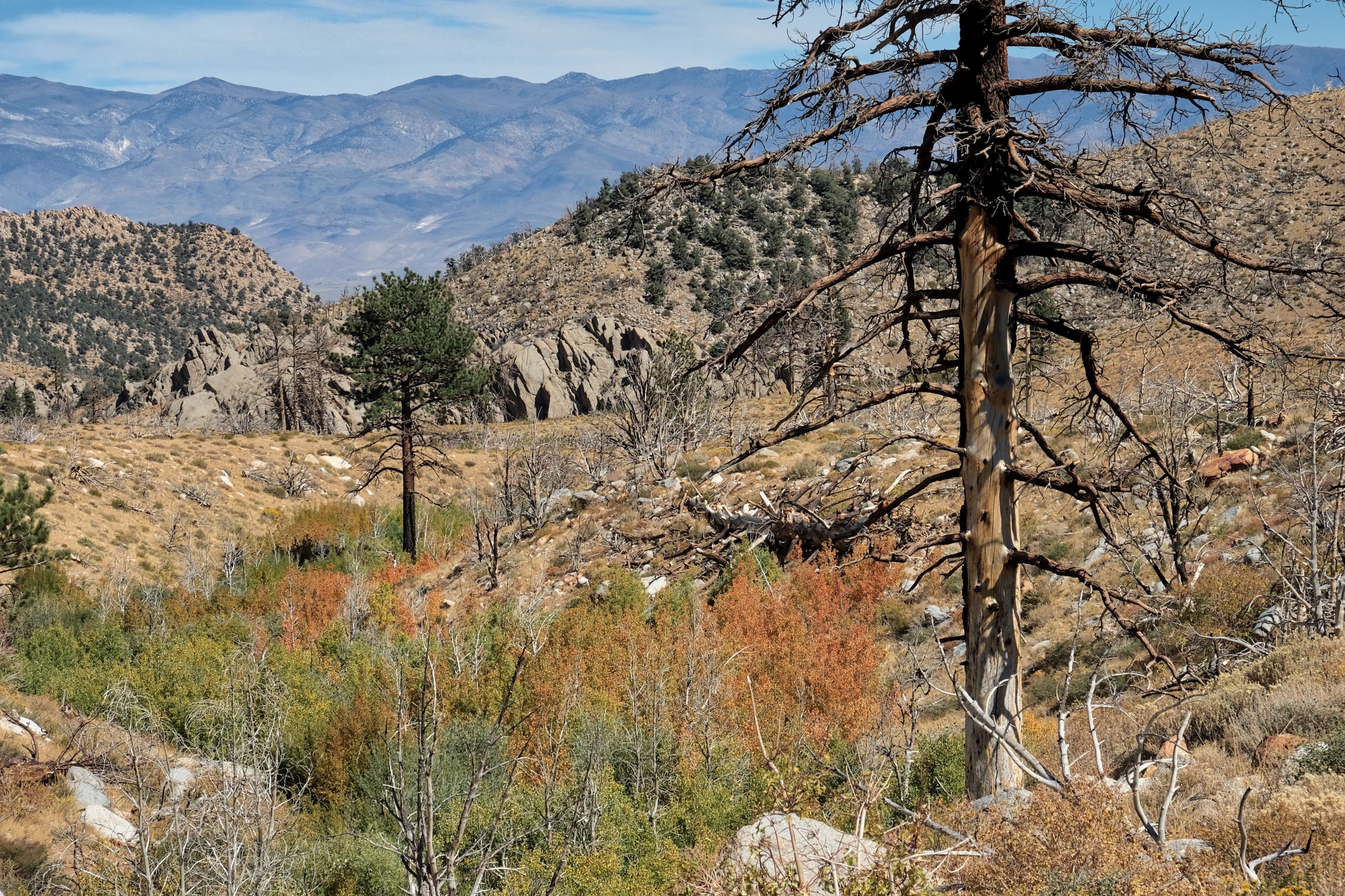 I made it this far down the valley. I had hoped to get to those large boulder formations in the distance, but I grossly miscalculated the distance and the time it would take.
I made it this far down the valley. I had hoped to get to those large boulder formations in the distance, but I grossly miscalculated the distance and the time it would take.
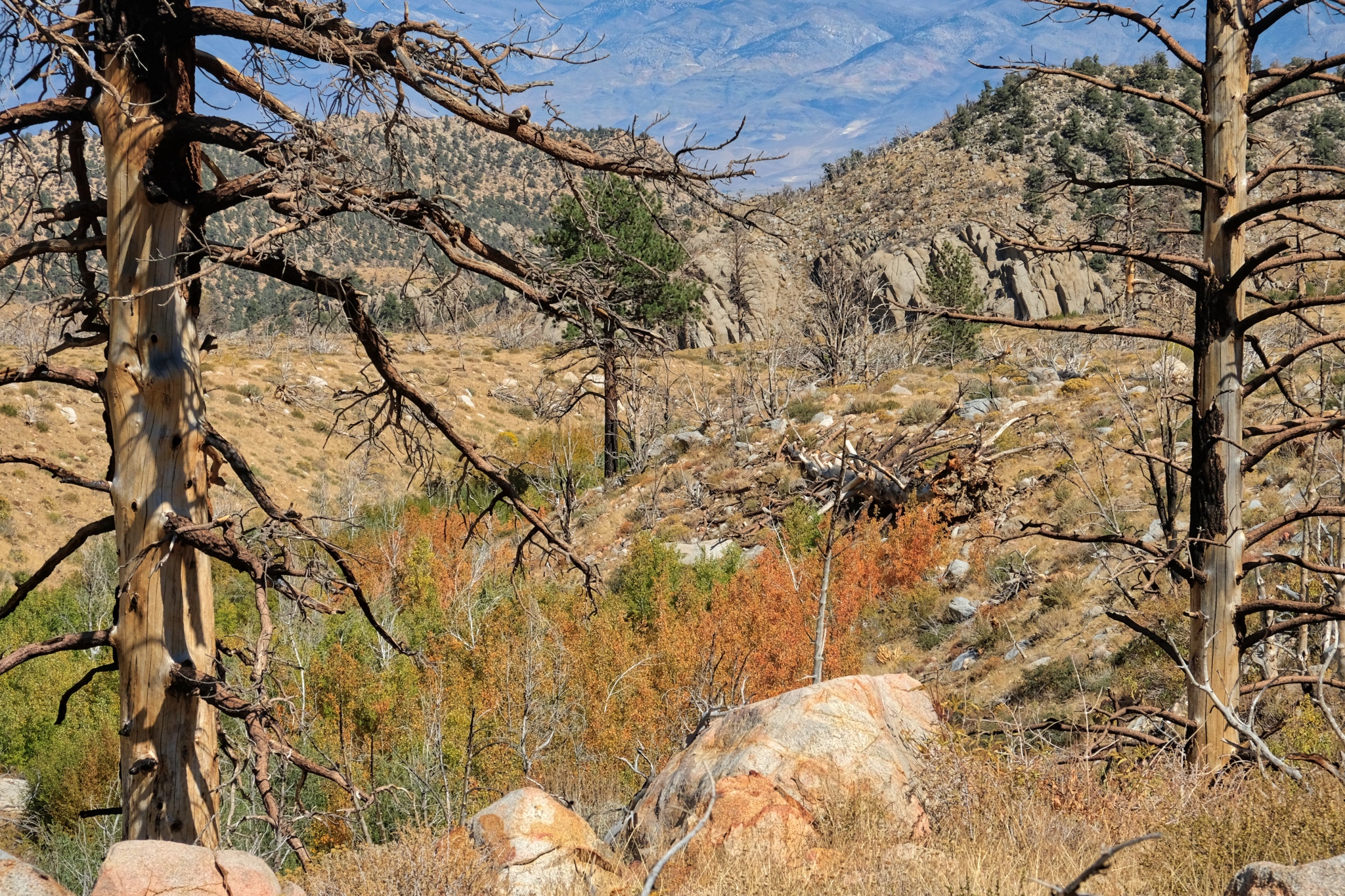 I sat here and ate my packed lunch and drank a bottle of tea. I was not disappointed I had not made it all the way to the boulder formation . . . there was no shortage of beauty right here.
I sat here and ate my packed lunch and drank a bottle of tea. I was not disappointed I had not made it all the way to the boulder formation . . . there was no shortage of beauty right here.
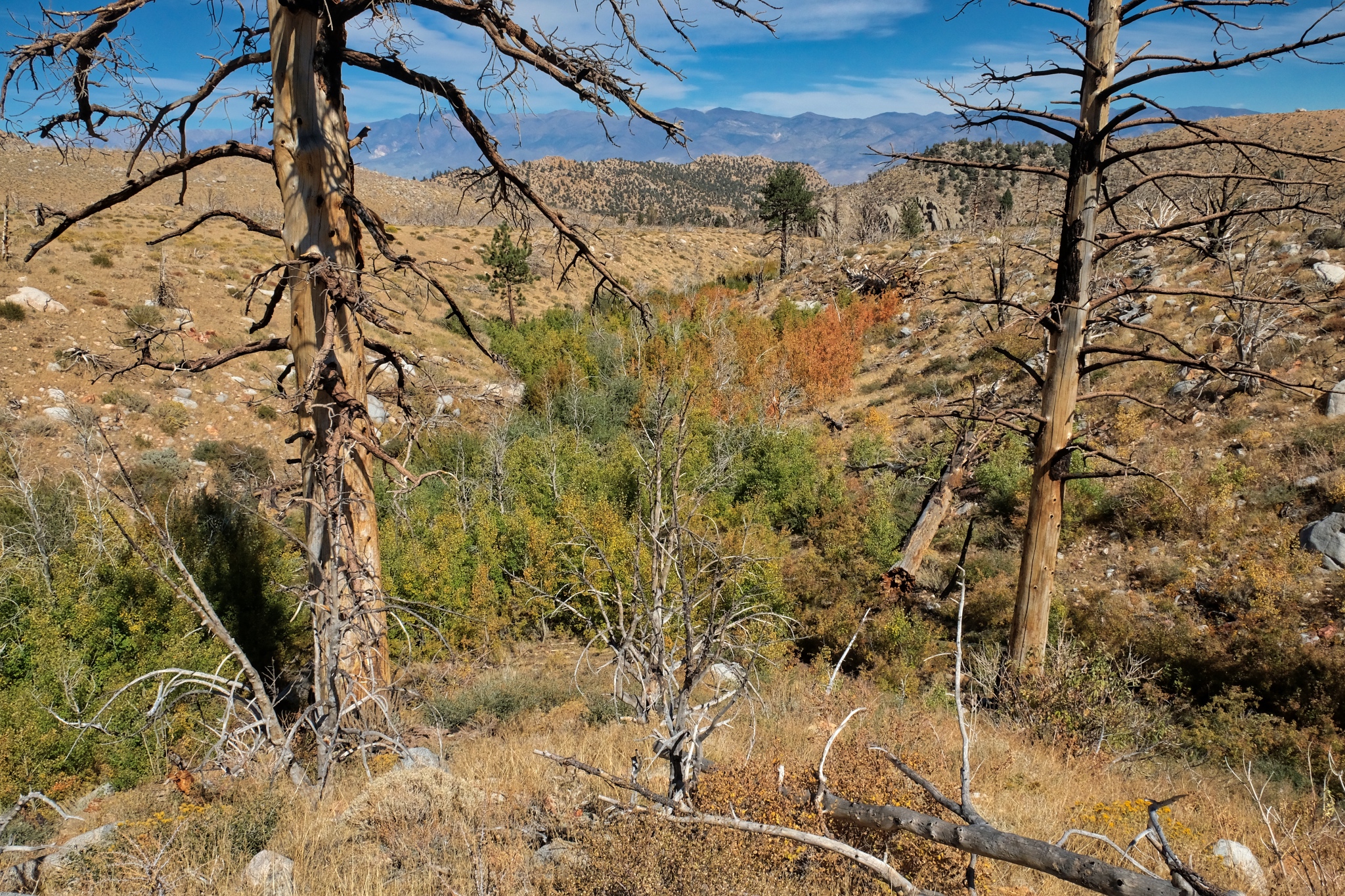 My last look down the valley streambed (I believe it to be 'Birch Creek' from the maps).
My last look down the valley streambed (I believe it to be 'Birch Creek' from the maps).
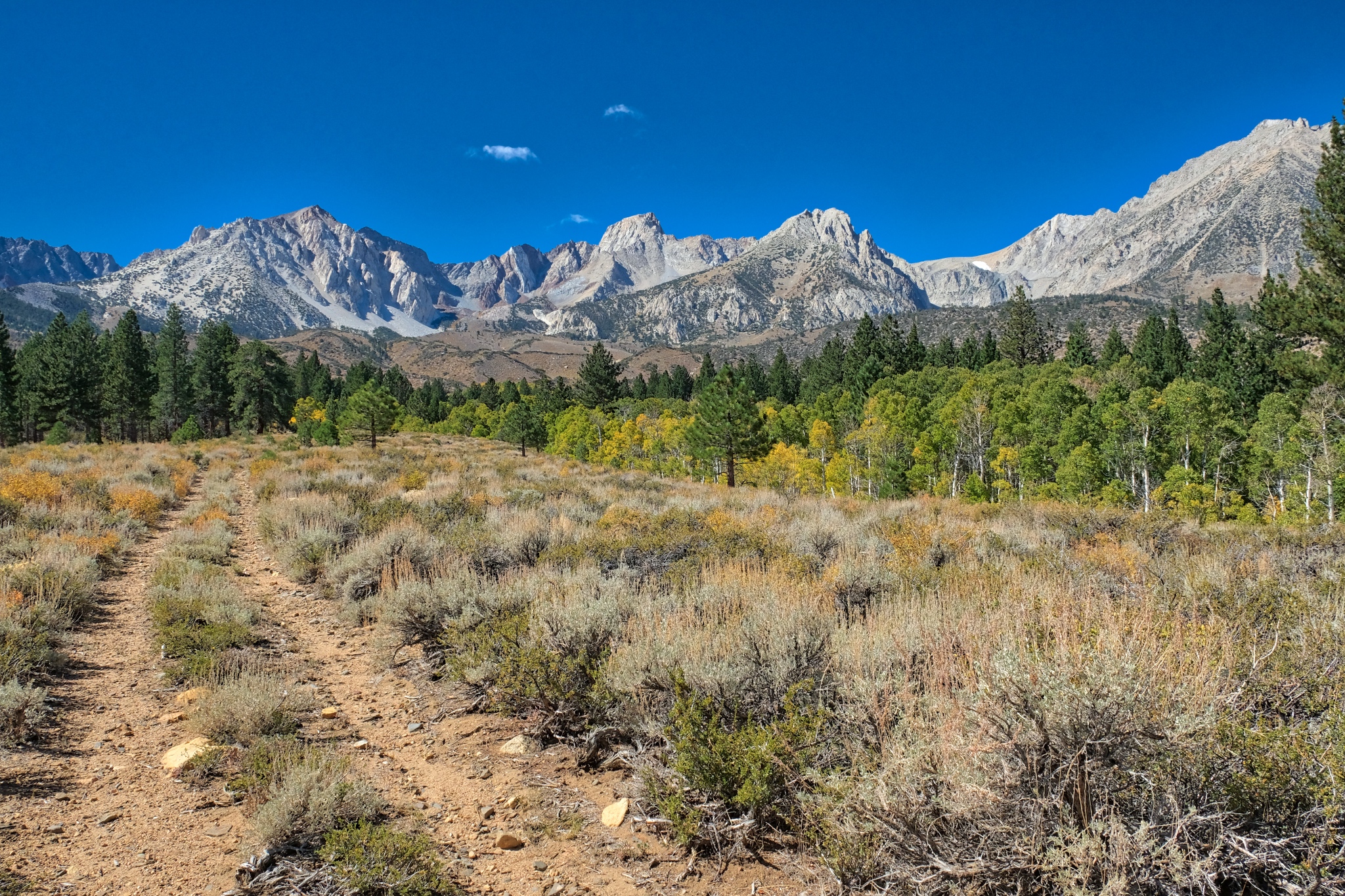 The walk back to camp on the abandoned jeep track was marvelous, with the grand mountain view always up ahead.
The walk back to camp on the abandoned jeep track was marvelous, with the grand mountain view always up ahead.
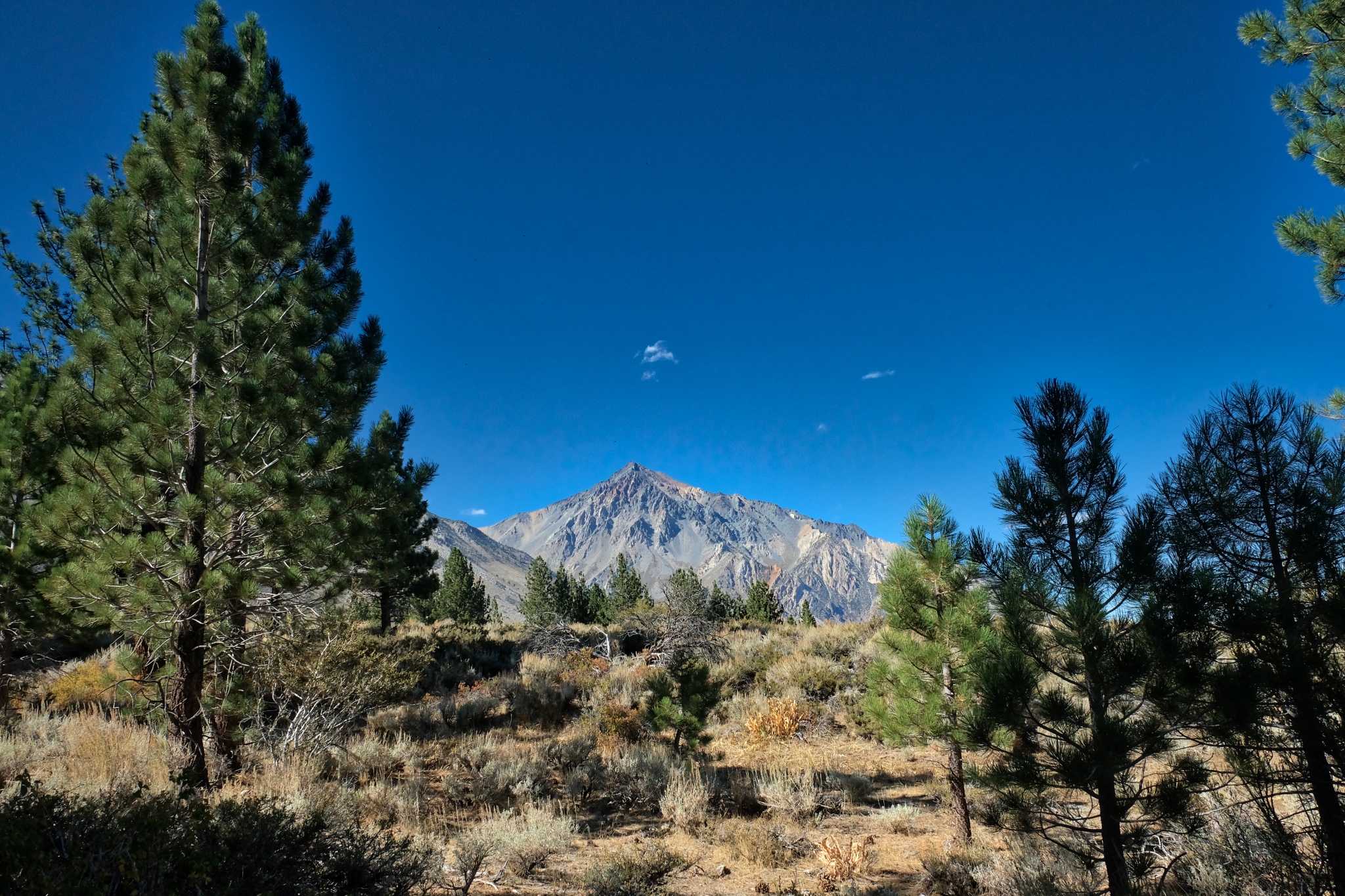 Although I have lived in the tropics for 30+ years, this is still my favorite countryside.
Although I have lived in the tropics for 30+ years, this is still my favorite countryside.
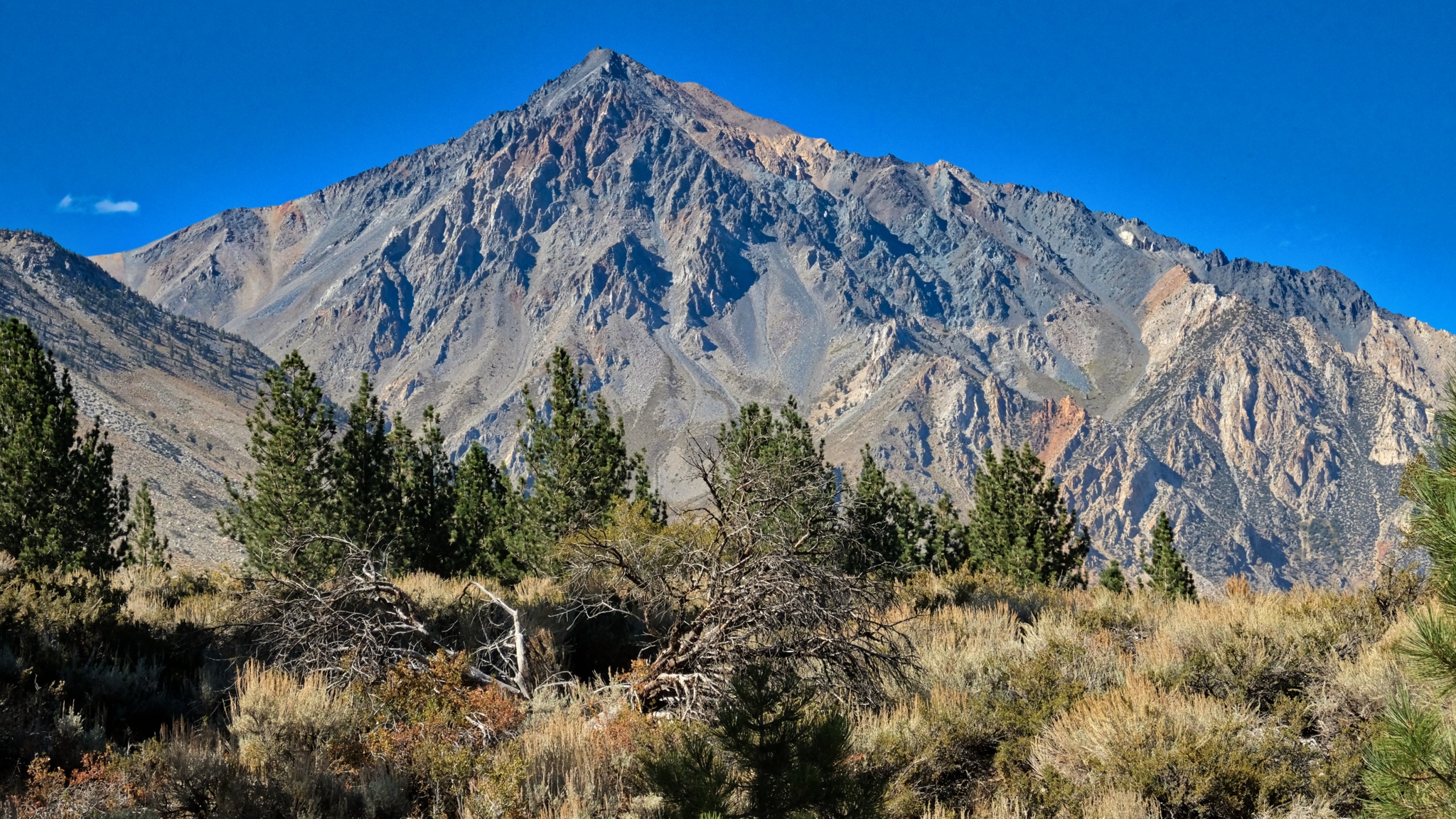 Mount Tom . . . always present in this stunningly clear air.
Mount Tom . . . always present in this stunningly clear air.
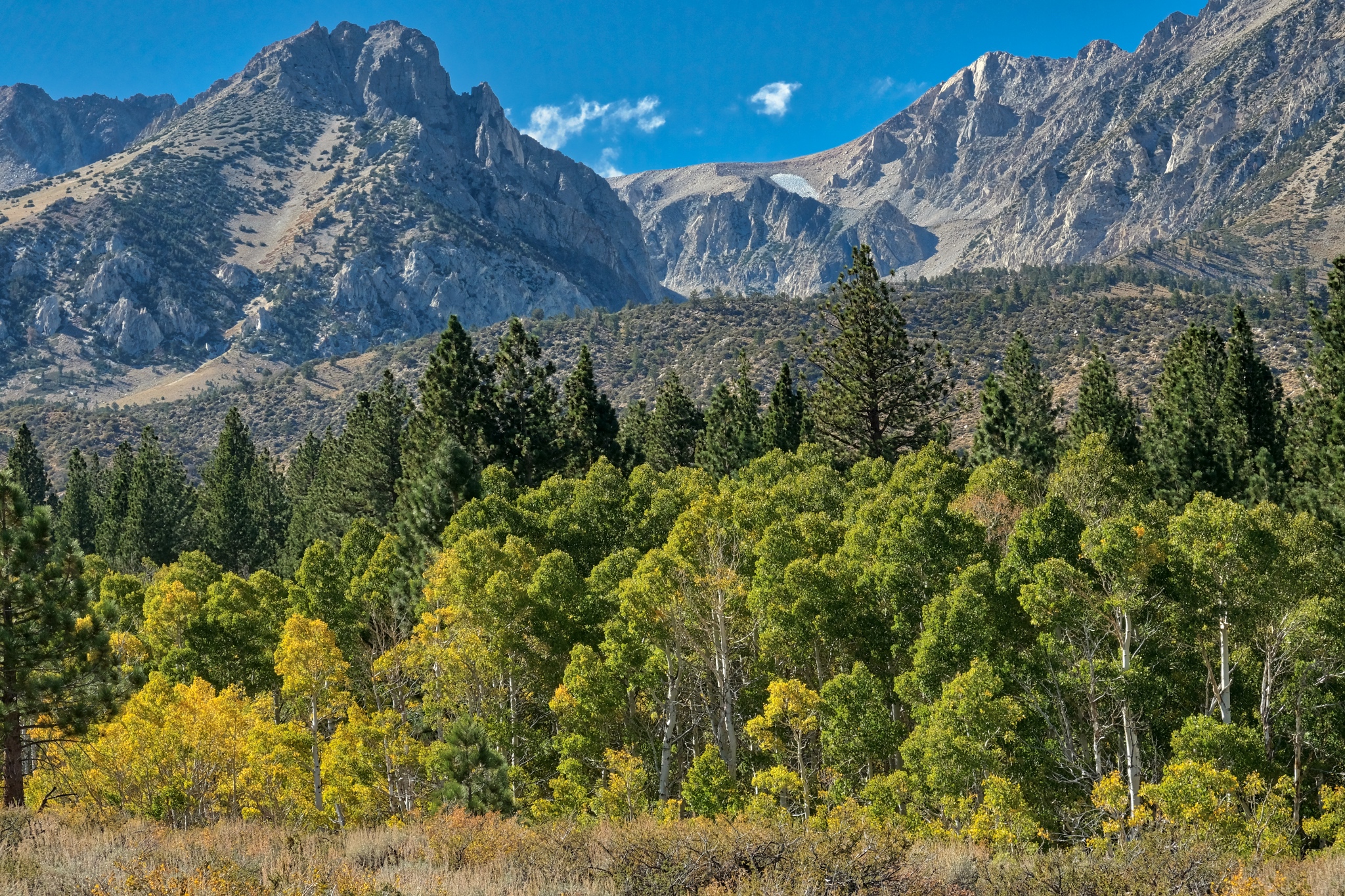 Nearing my camp in this stand of aspens.
Nearing my camp in this stand of aspens.
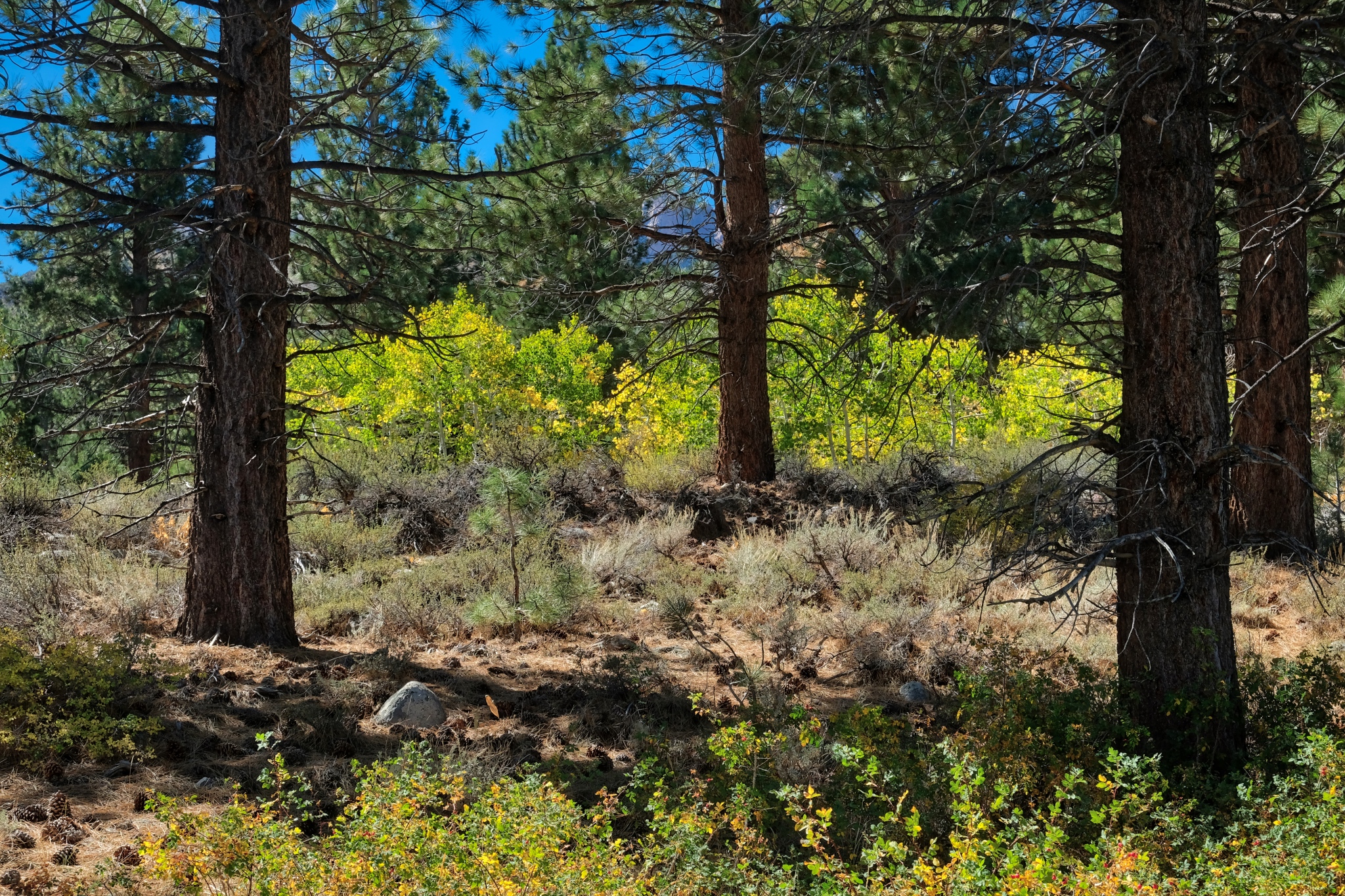 Back into my dry woods.
Back into my dry woods.
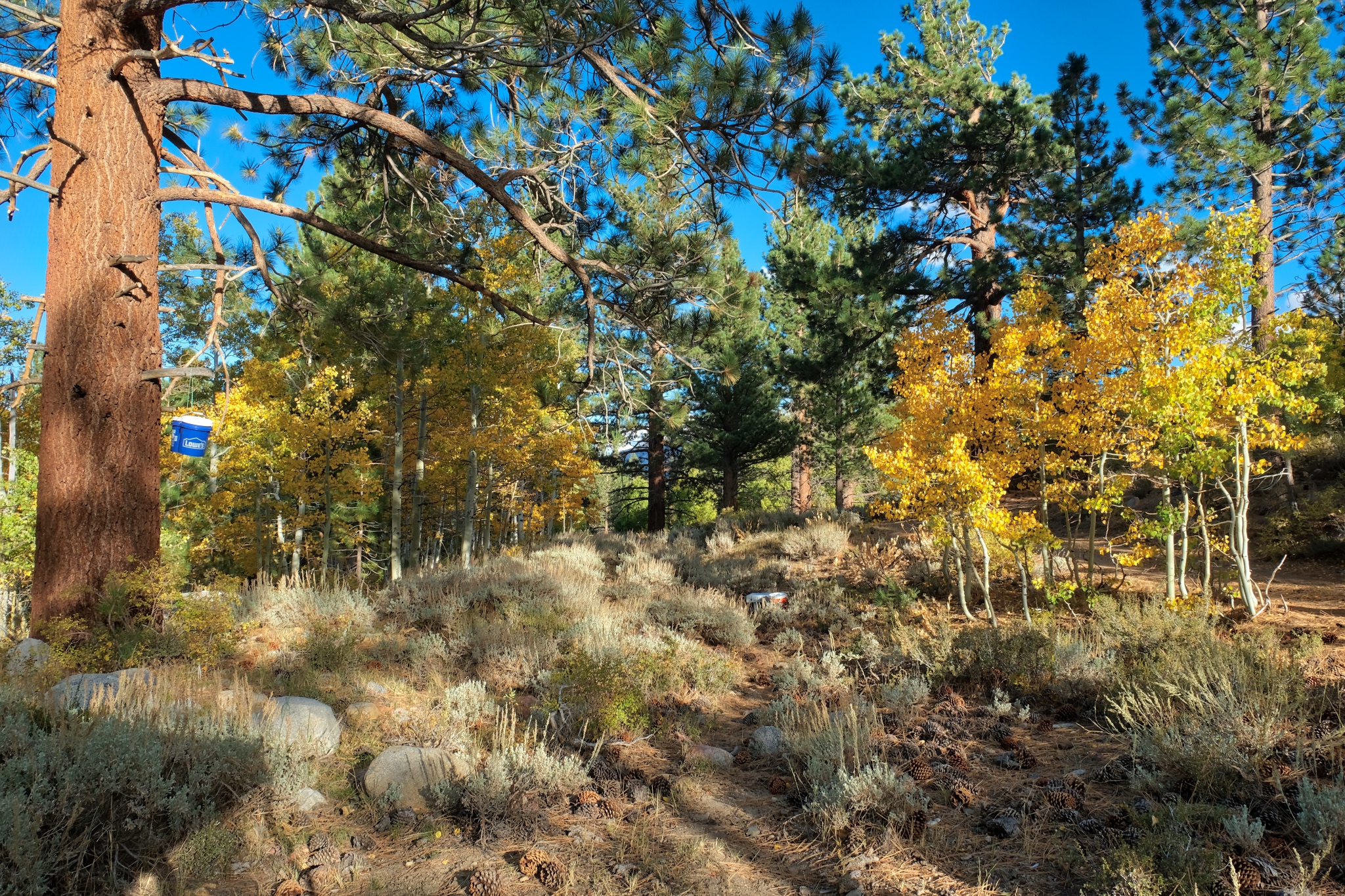 I was happy to be back in my camp. The weather report was for a big storm to blow in that night with strong winds and snow likely. I was a little concerned about driving down the mountain in the snow and ice . . . if it came.
I was happy to be back in my camp. The weather report was for a big storm to blow in that night with strong winds and snow likely. I was a little concerned about driving down the mountain in the snow and ice . . . if it came.
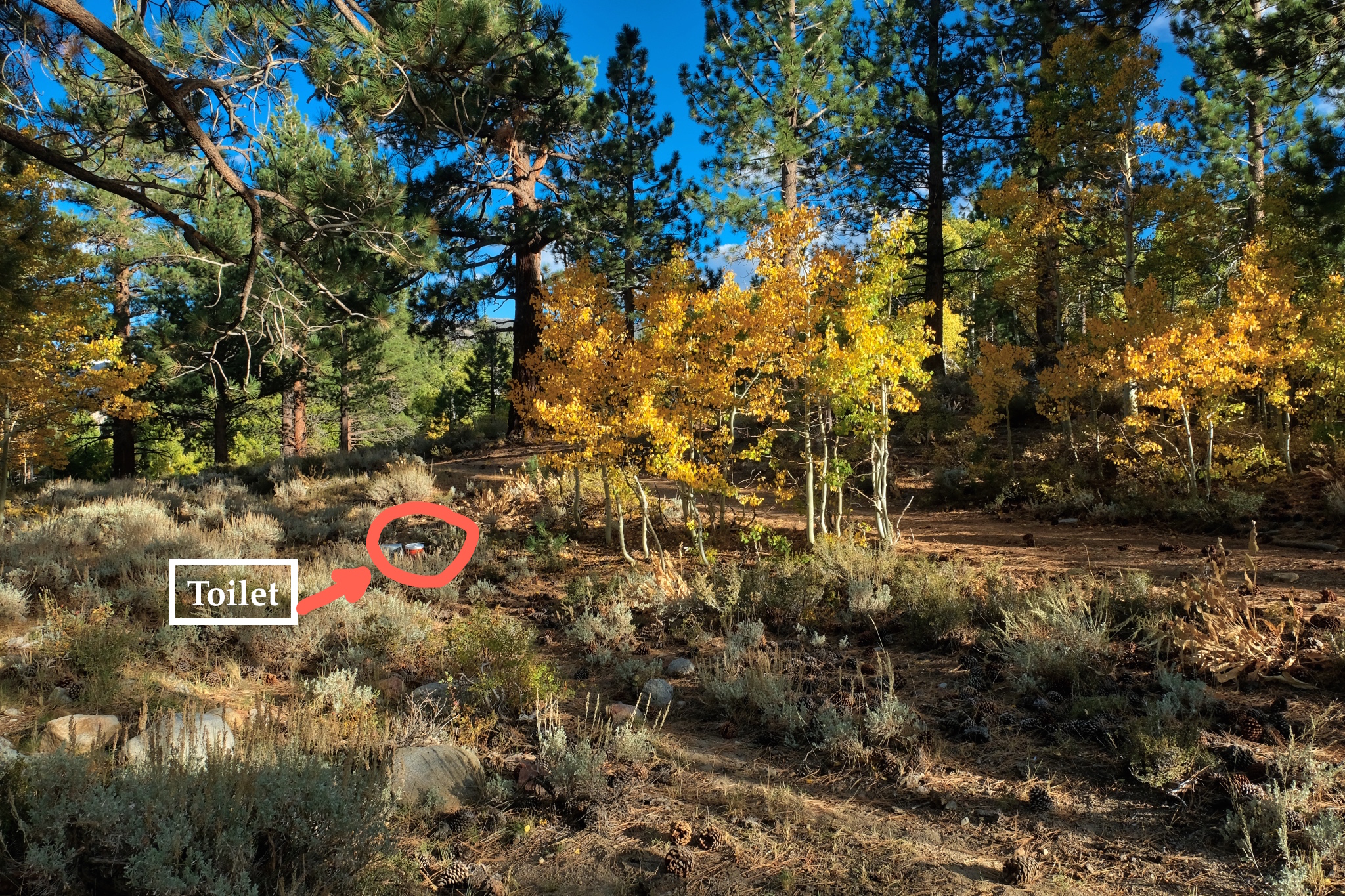 A magnificent place for a portable recycling throne!!!!
A magnificent place for a portable recycling throne!!!!
_________________________________________________
DAY SIX: DEPARTURE . . . BACK TO SWALL MEADOWS
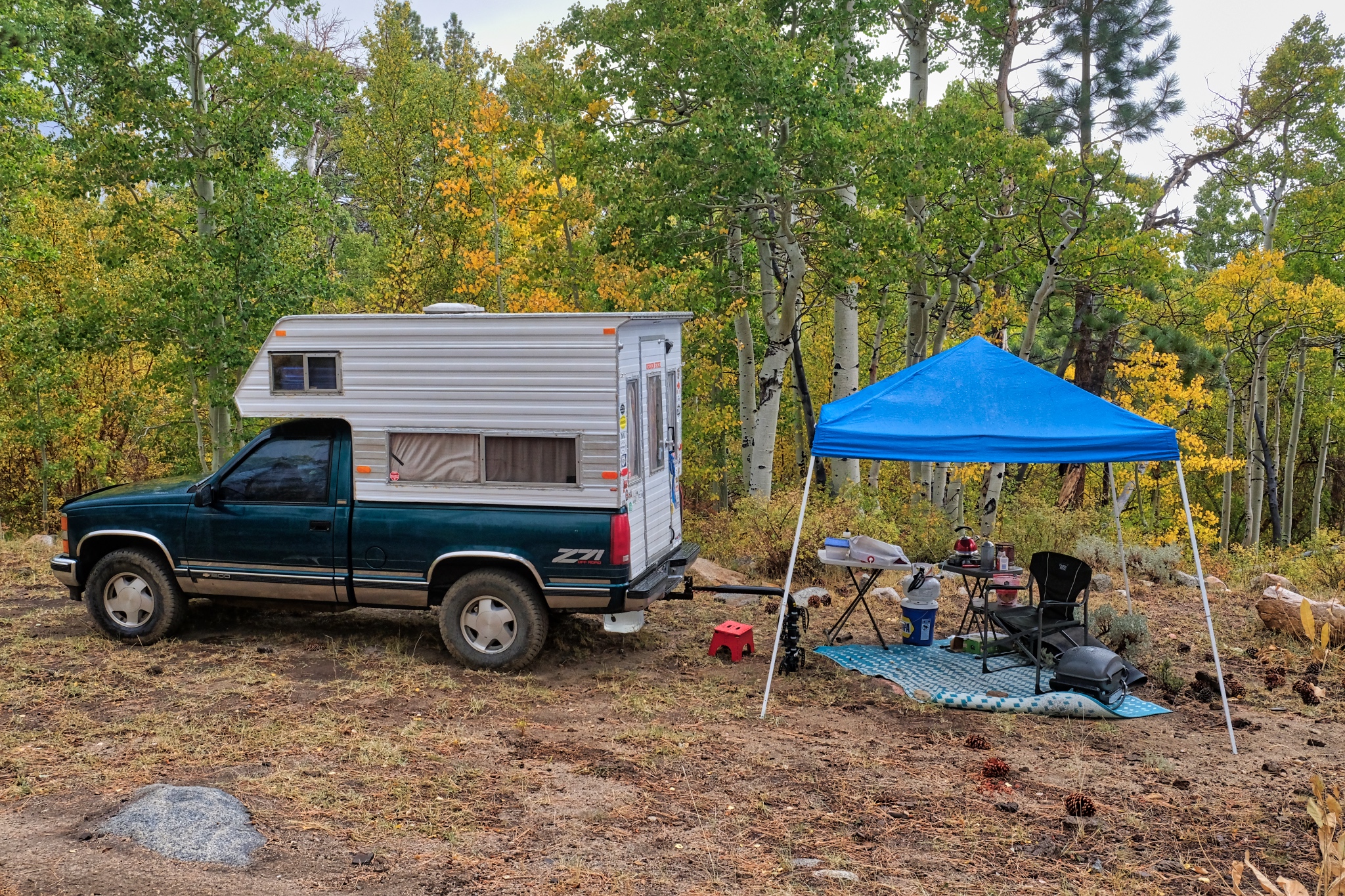 The morning of my departure was bitter cold (28f) with a mix of rain and sleet falling on my camp. I quickly packed it all back up into my camper.
The morning of my departure was bitter cold (28f) with a mix of rain and sleet falling on my camp. I quickly packed it all back up into my camper.
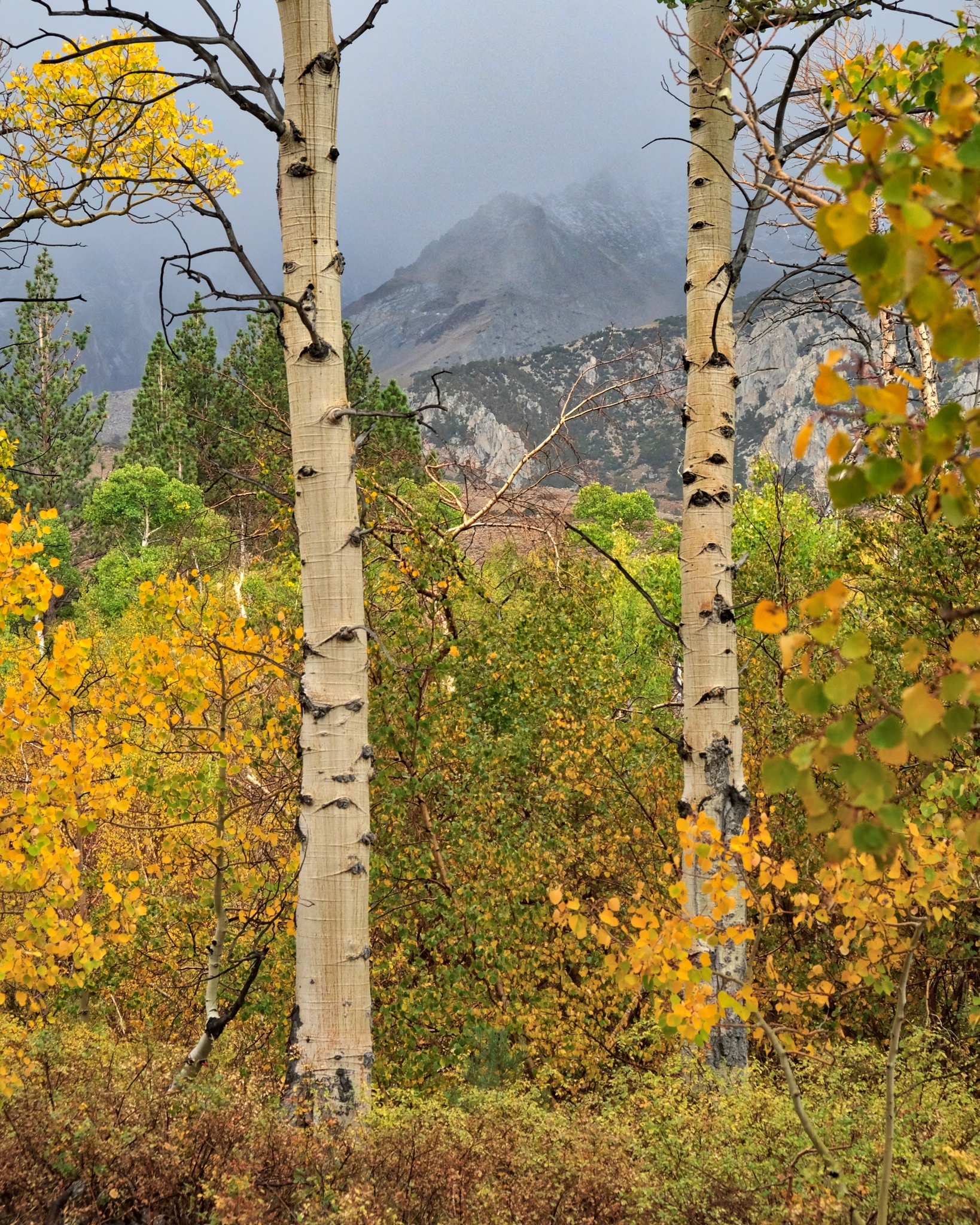 Wisps of snow on the high peaks.
Wisps of snow on the high peaks.
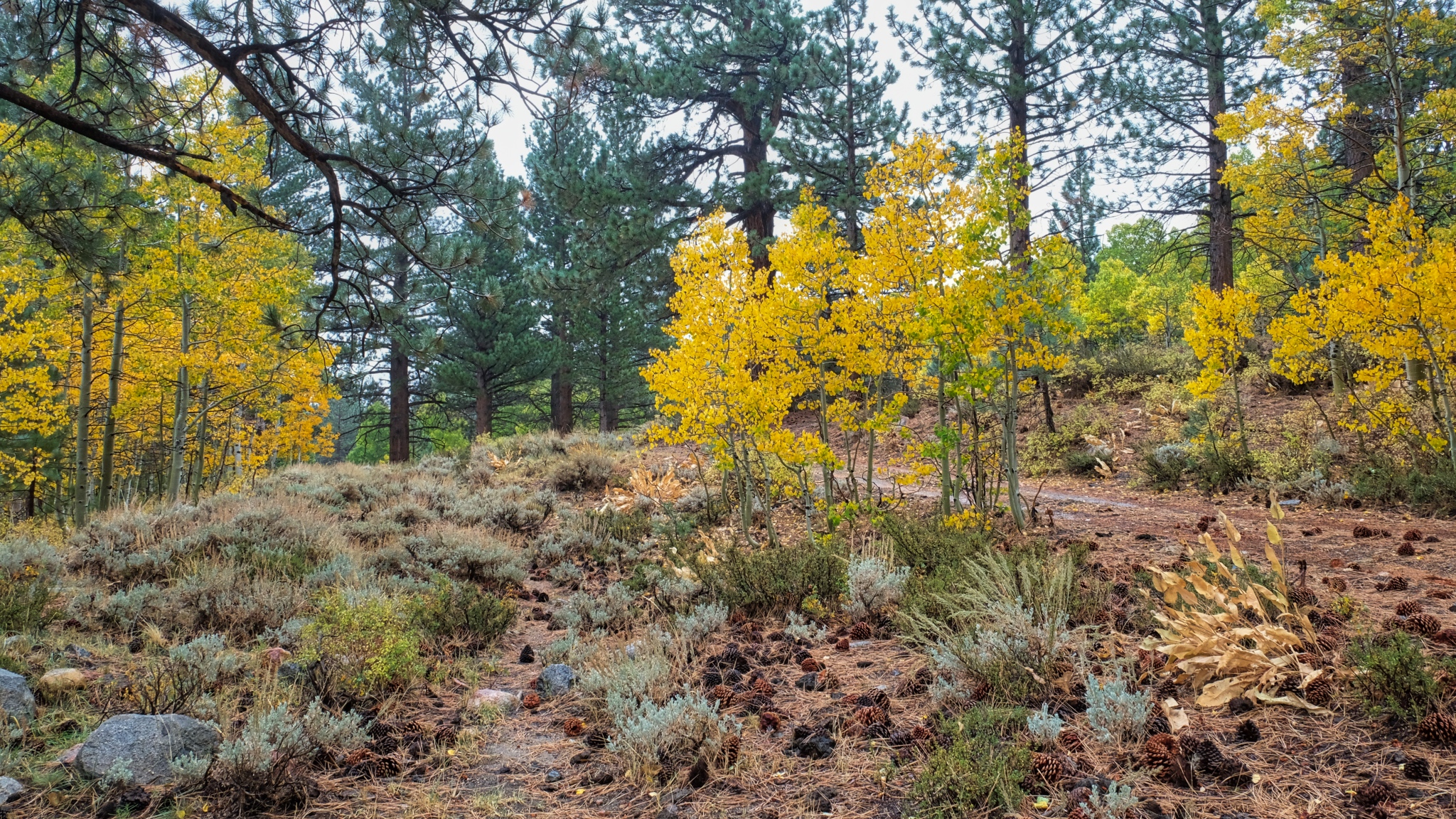 I left no trace at my campsite.
I left no trace at my campsite.
 My last look up to the mountains before I drove out of The Buttermilk Country. The first snow . . .
My last look up to the mountains before I drove out of The Buttermilk Country. The first snow . . .
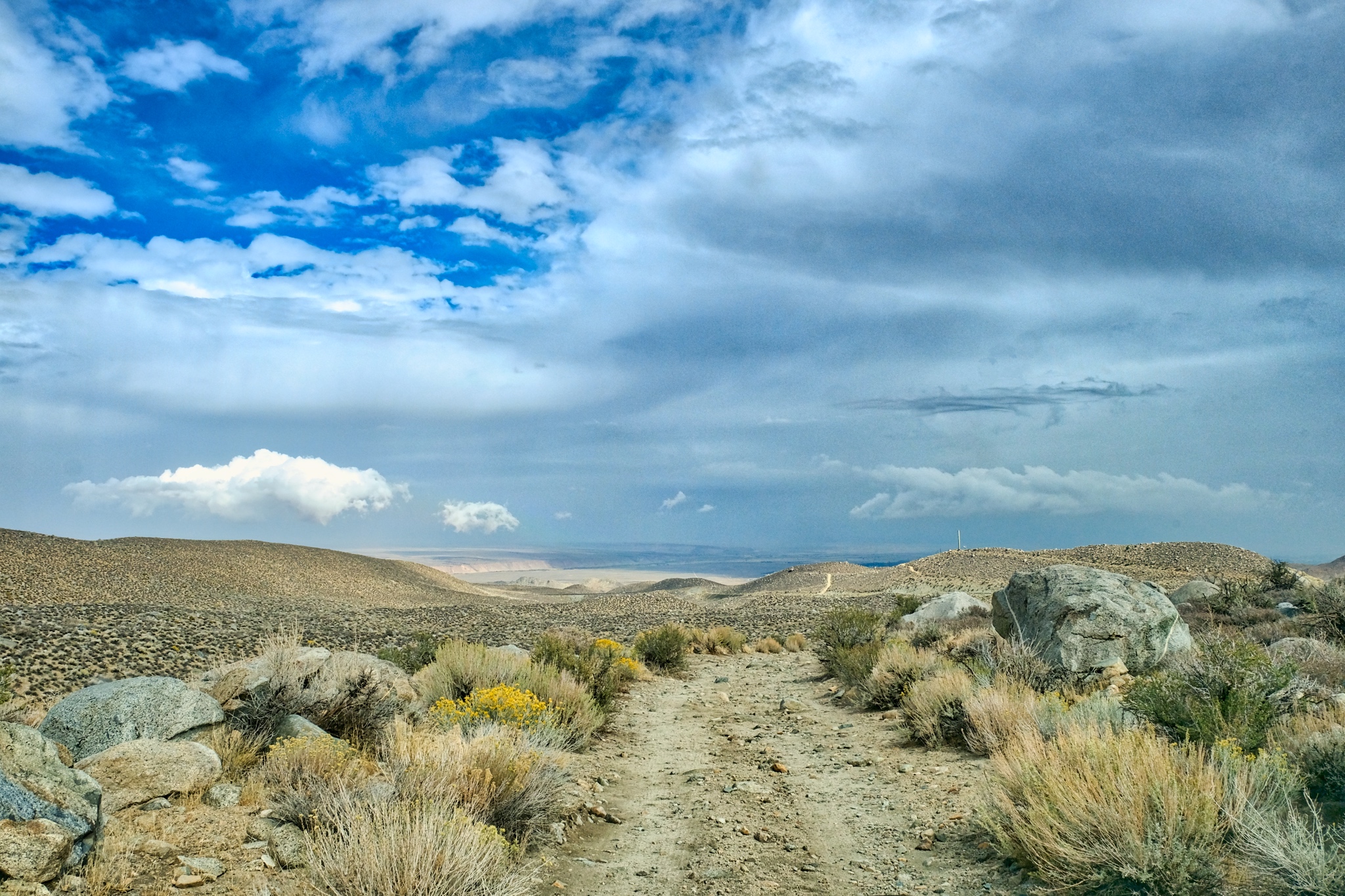 I took the southern route on the Buttermilk Country Loop down the mountain.
I took the southern route on the Buttermilk Country Loop down the mountain.
 The road out was a little frightening in a few places.
The road out was a little frightening in a few places.
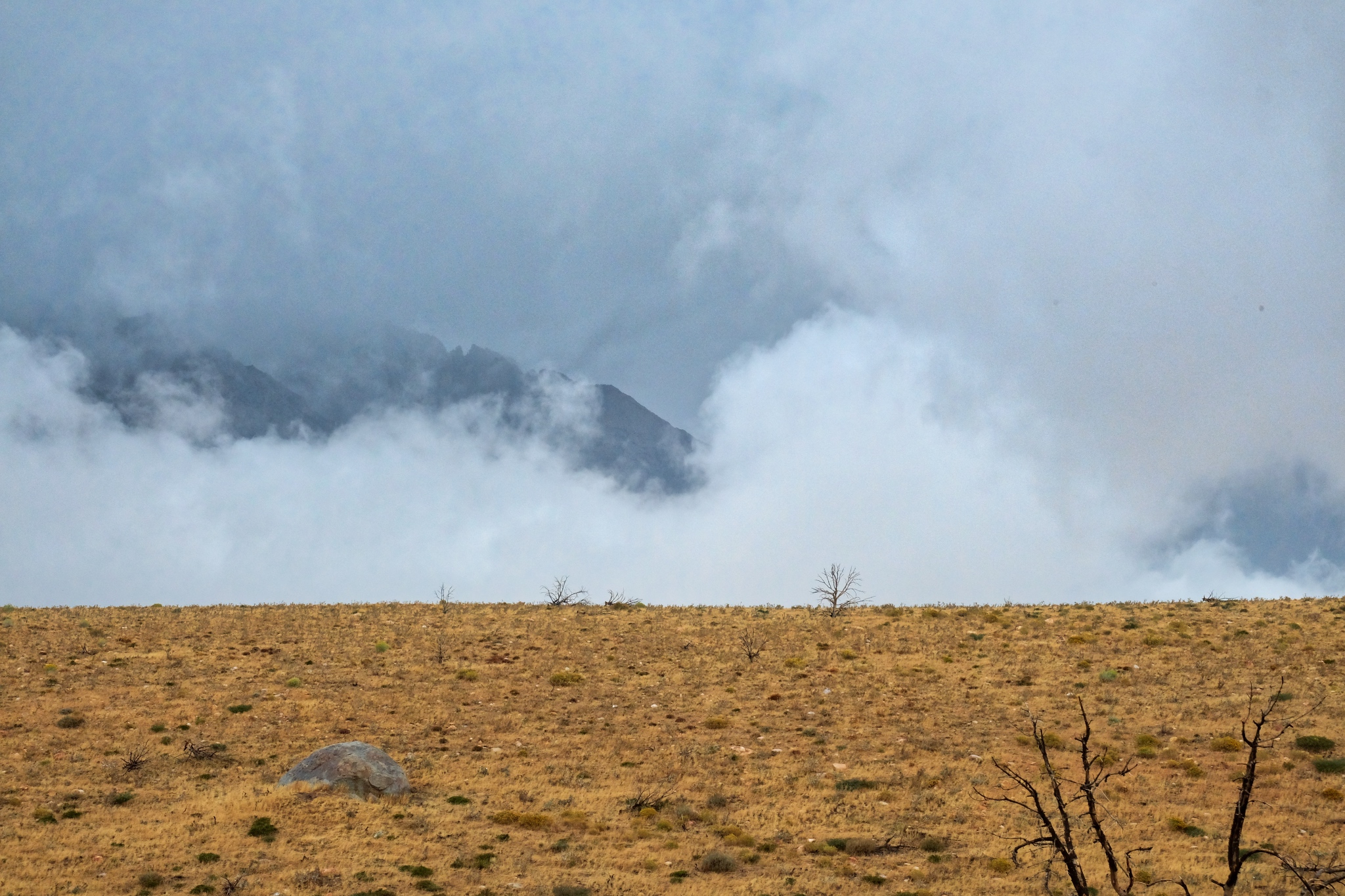 Looking toward Mount Tom, shrouded in clouds.
Looking toward Mount Tom, shrouded in clouds.
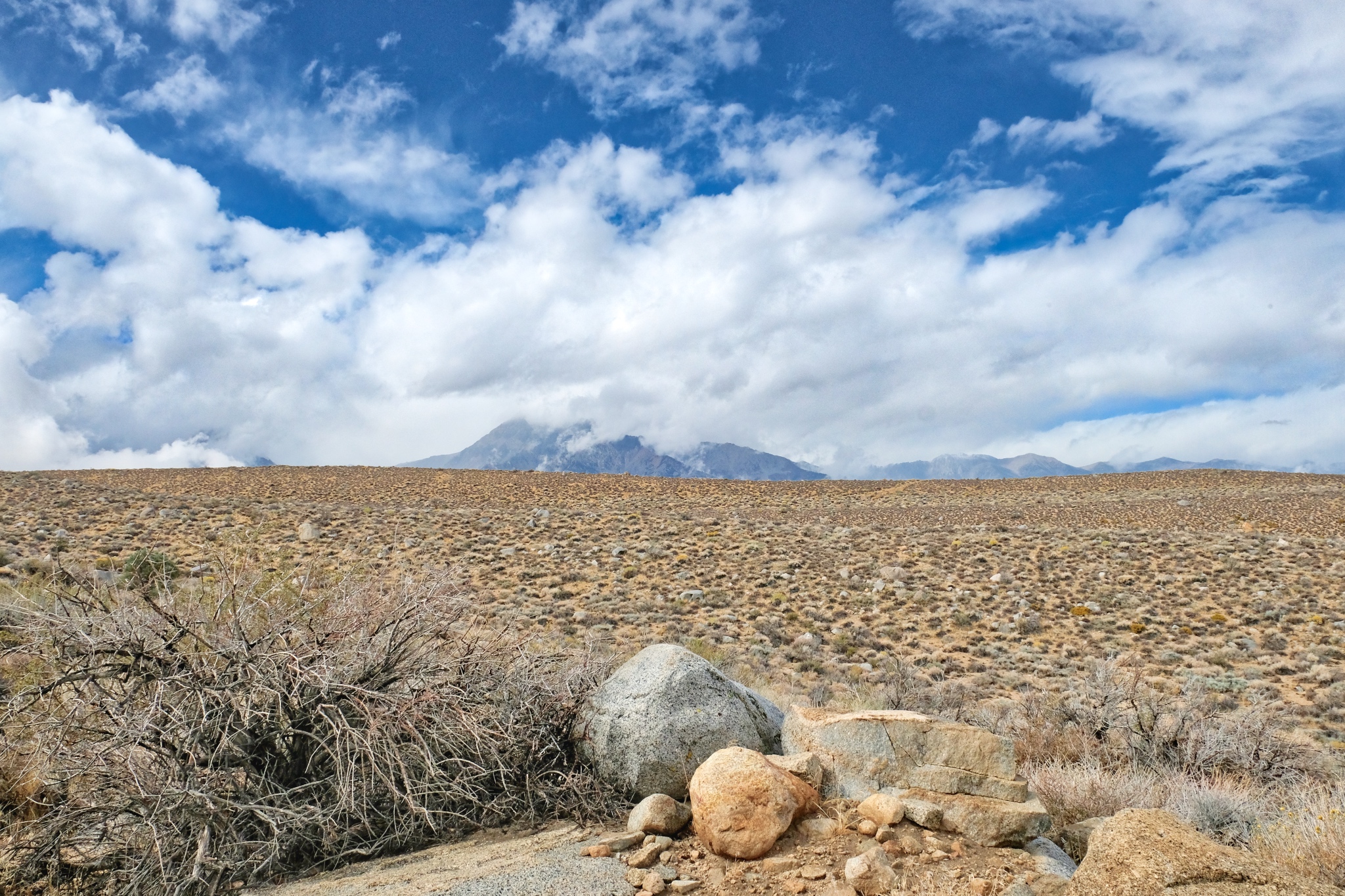 The 'back way' off the mountain goes across this dry plane.
The 'back way' off the mountain goes across this dry plane.
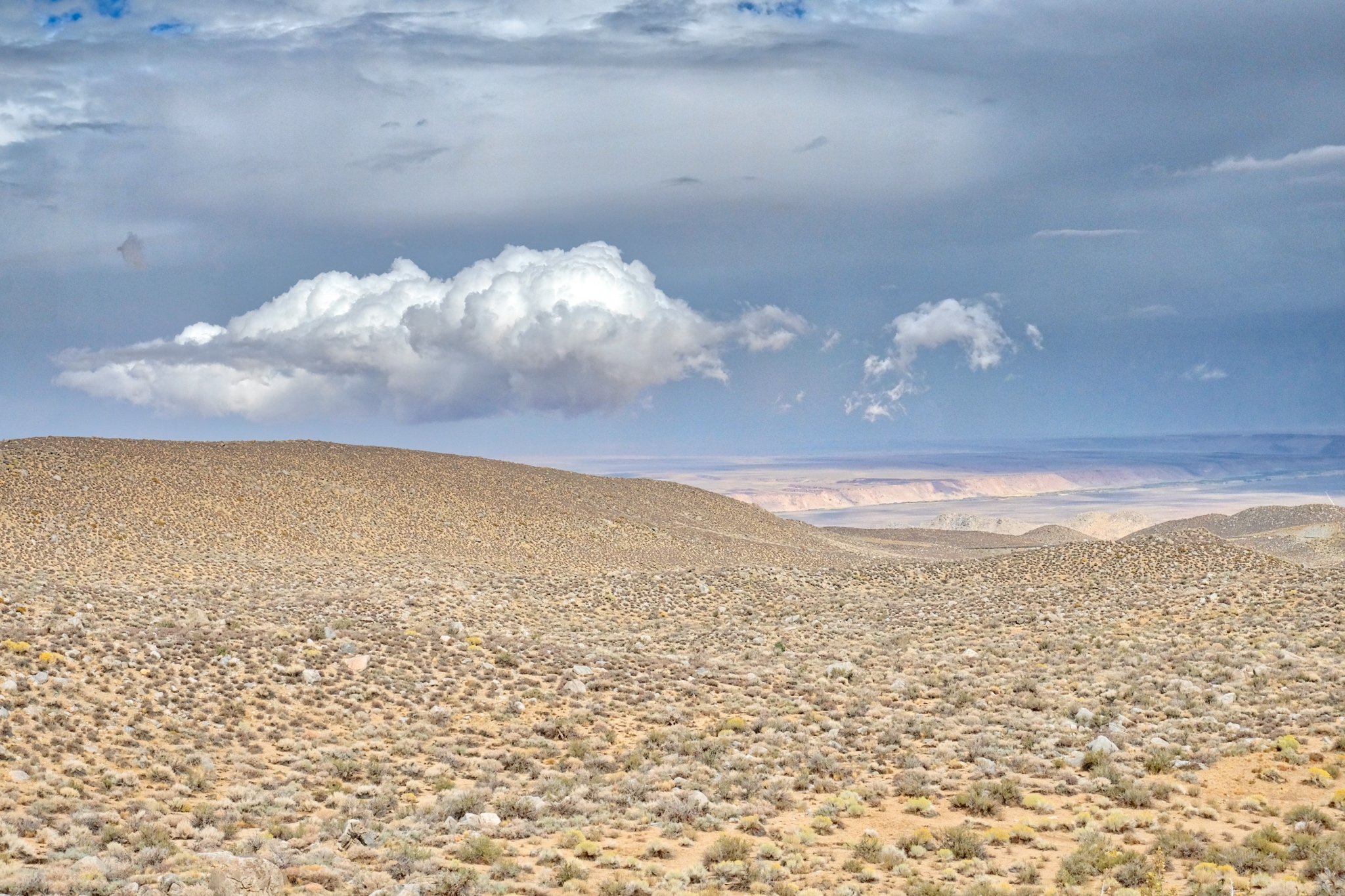 Beautiful clouds were hanging over Bishop, California.
Beautiful clouds were hanging over Bishop, California.
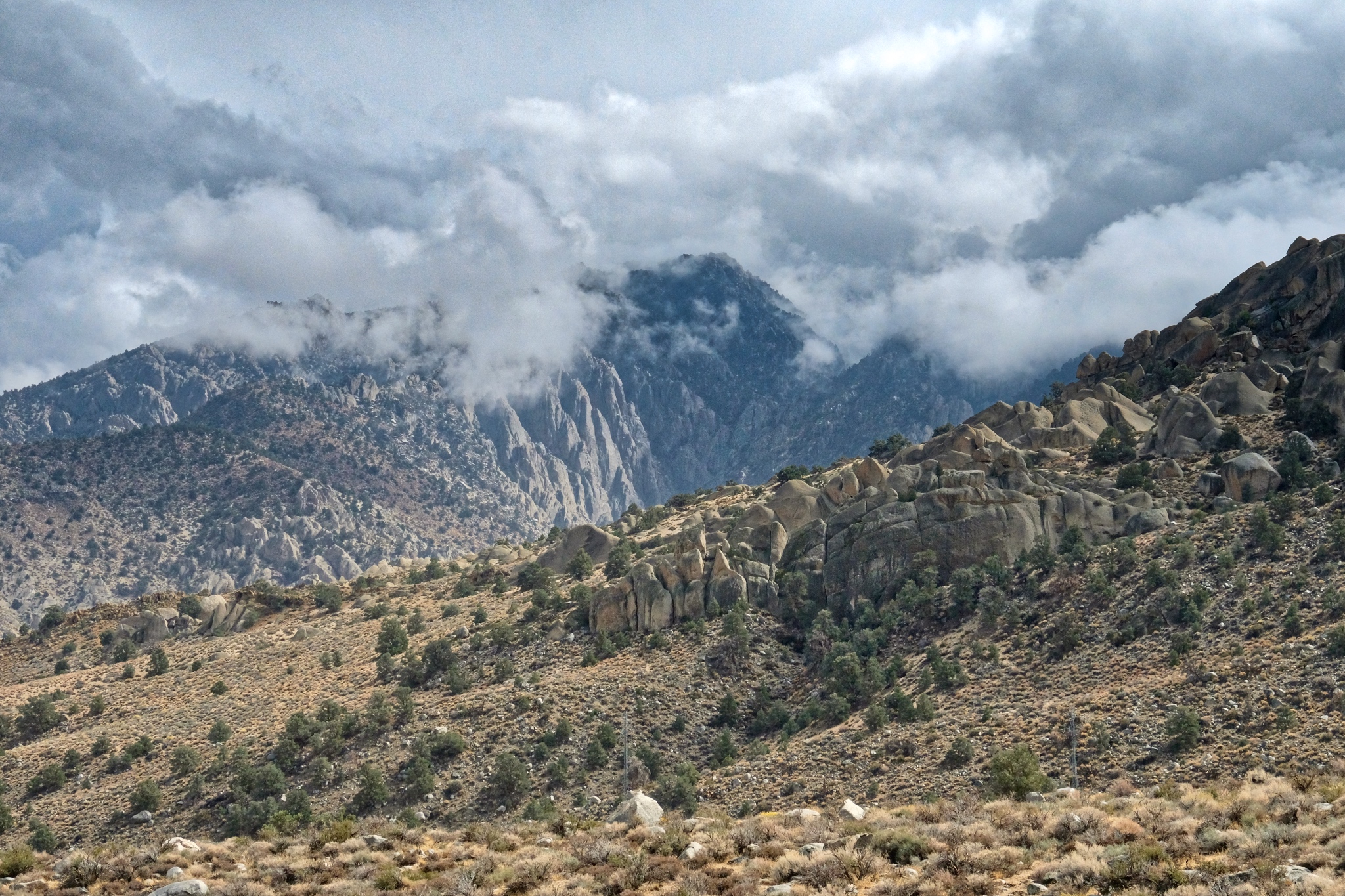 Nearing the paved road . . . I have been looking at these rocky hills from my camp for days and now I see them up close.
Nearing the paved road . . . I have been looking at these rocky hills from my camp for days and now I see them up close.
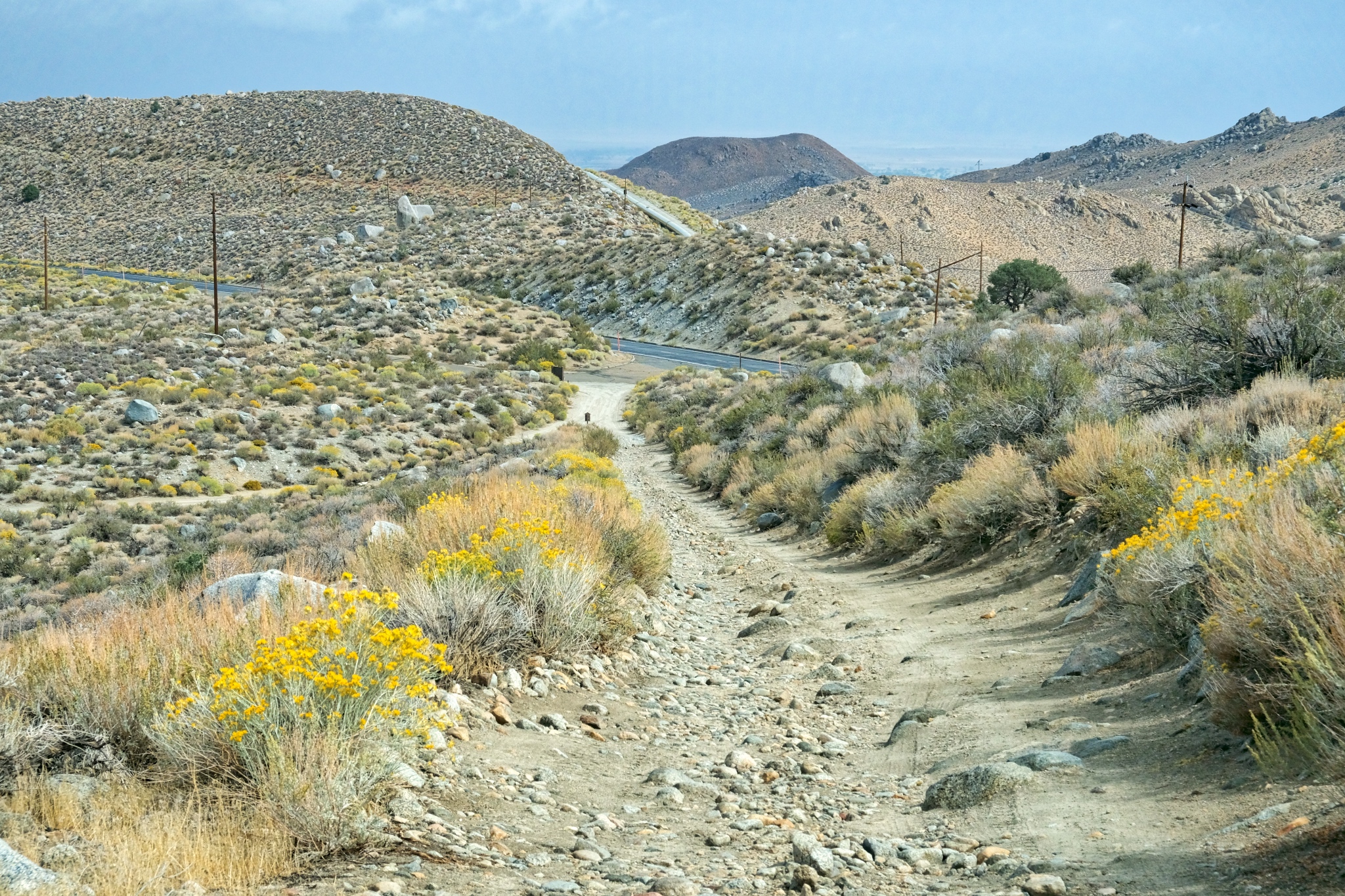 The last steep hill to the paved Route 168. Civilization at last.
The last steep hill to the paved Route 168. Civilization at last.
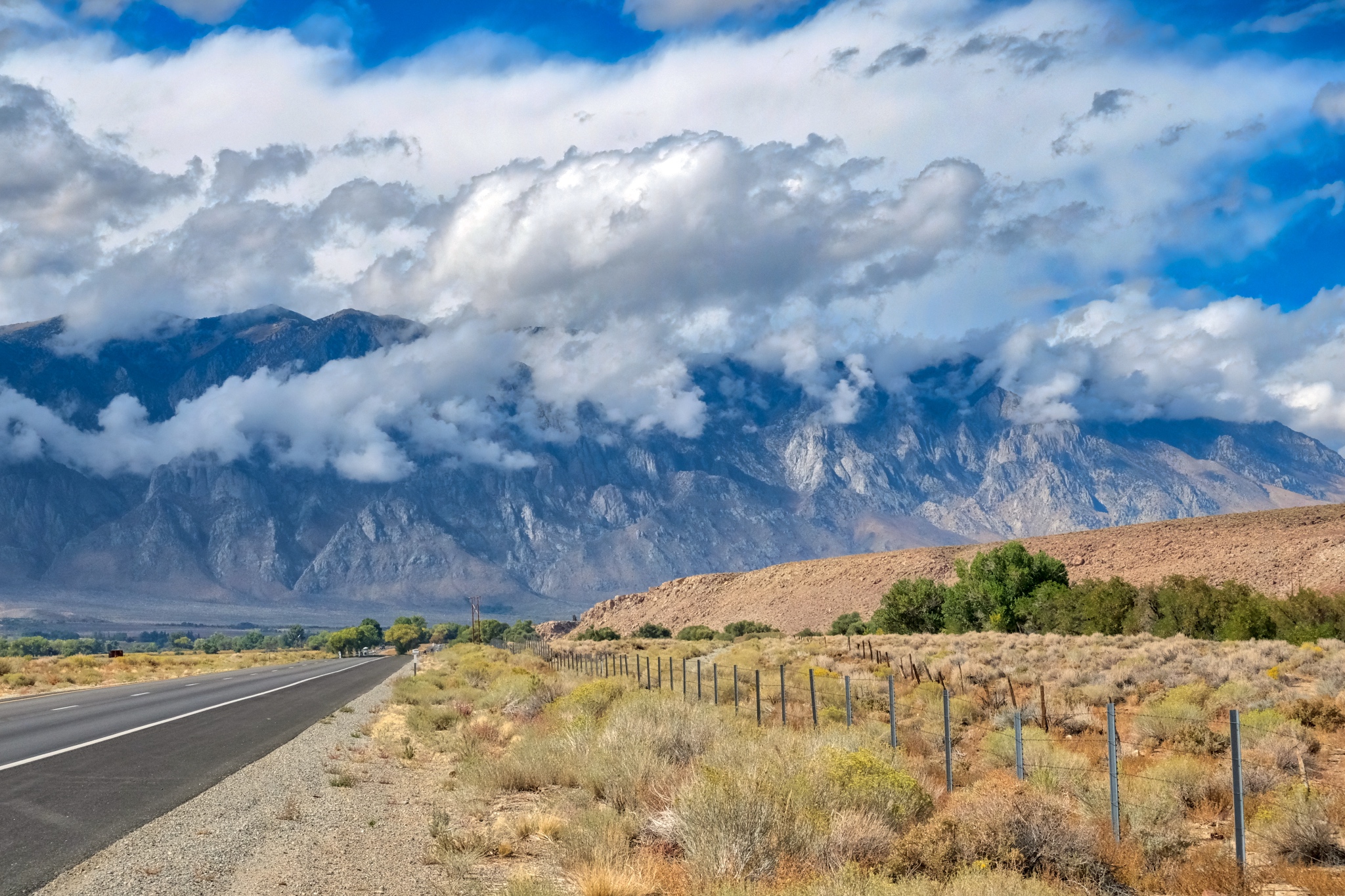 My drive north on US395 was unbelievably beautiful.
My drive north on US395 was unbelievably beautiful.
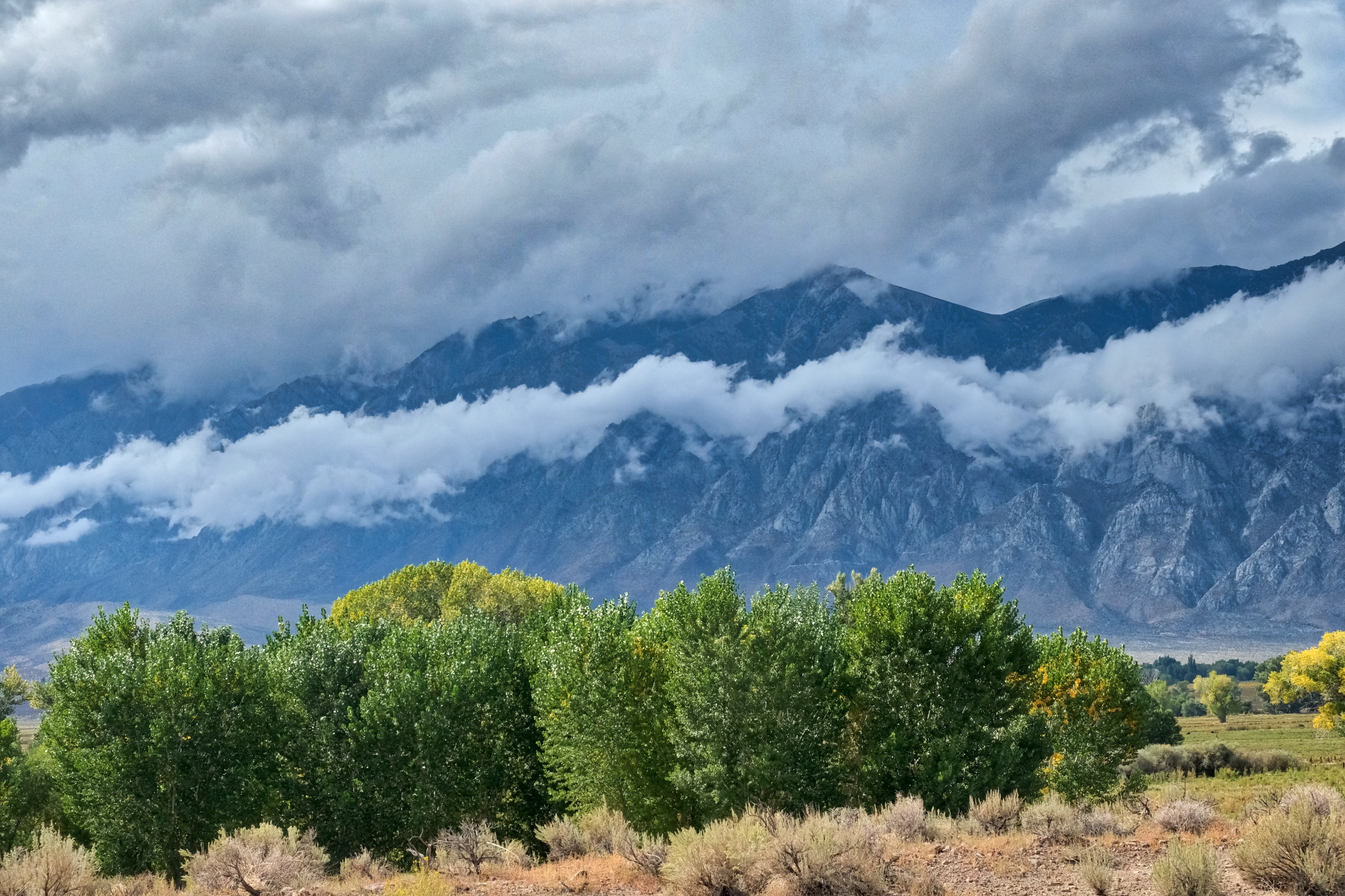 A ribbon of cloud dressed the front slope of the Eastern Sierra Nevada Moutains. WOW!
A ribbon of cloud dressed the front slope of the Eastern Sierra Nevada Moutains. WOW!
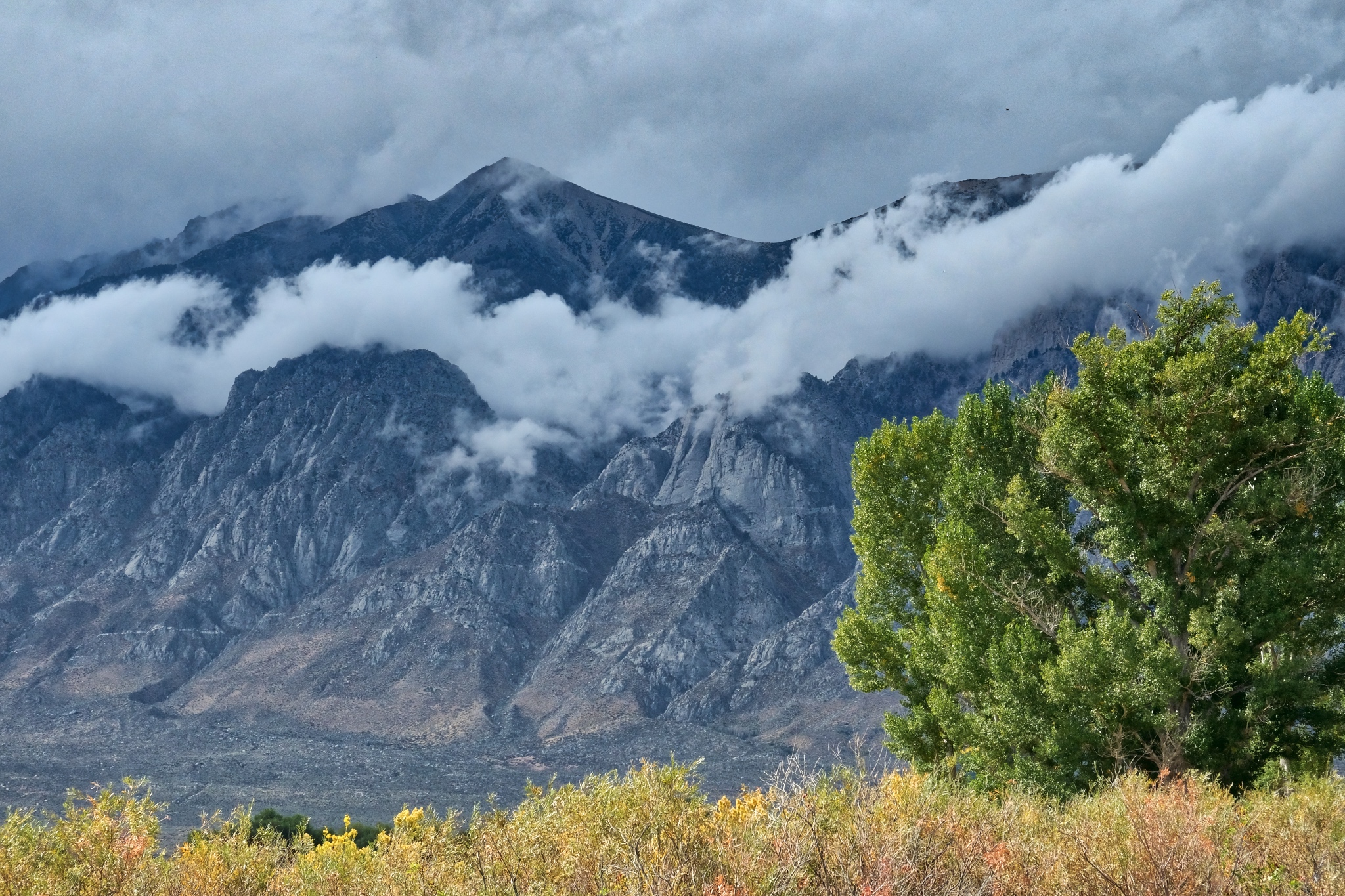 Incredible.
Incredible.
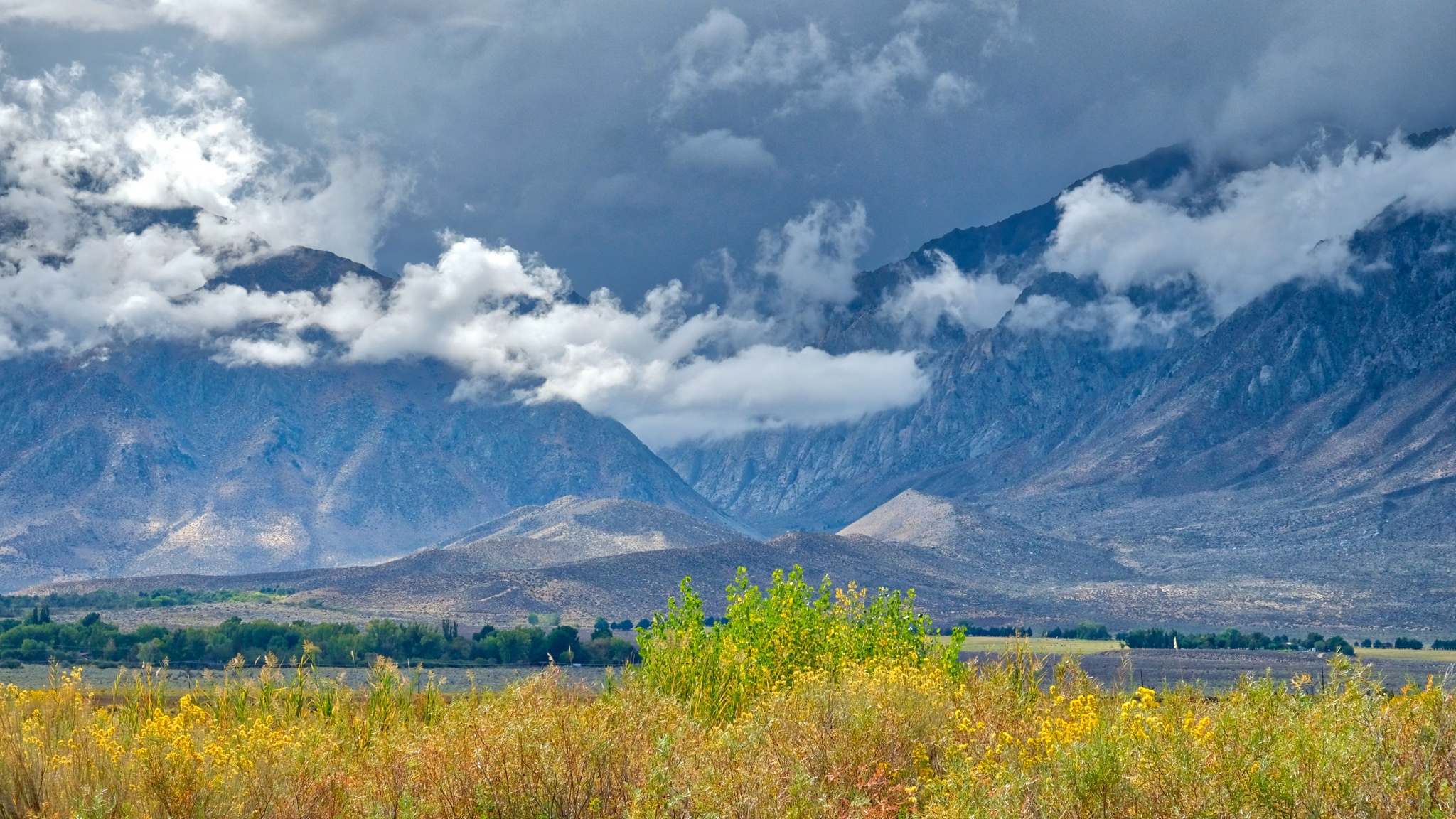 Back up the river canyons, the mountains in an early Autumn storm.
Back up the river canyons, the mountains in an early Autumn storm.
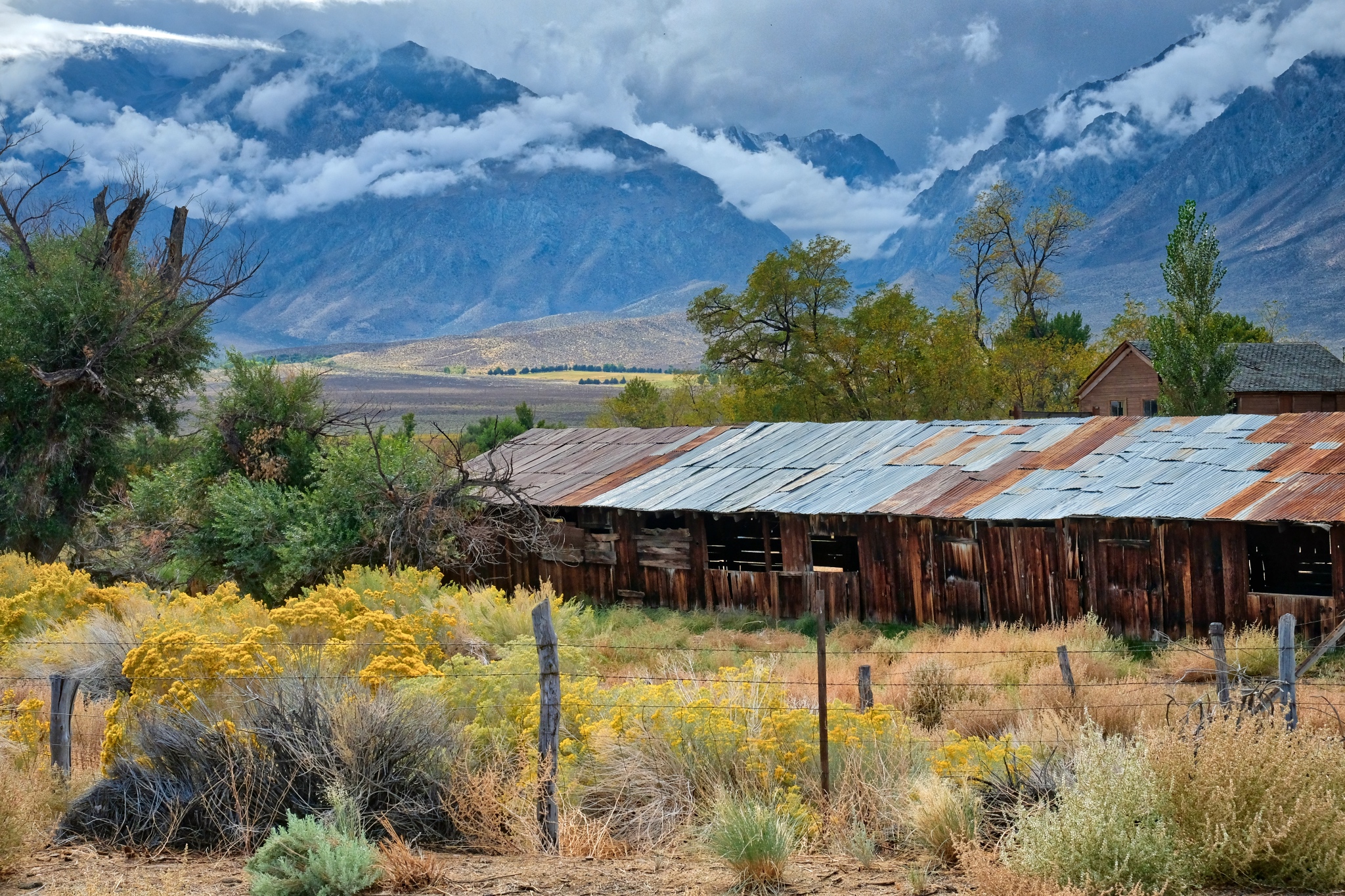 Part of a weathered old homestead on the valley floor.
Part of a weathered old homestead on the valley floor.
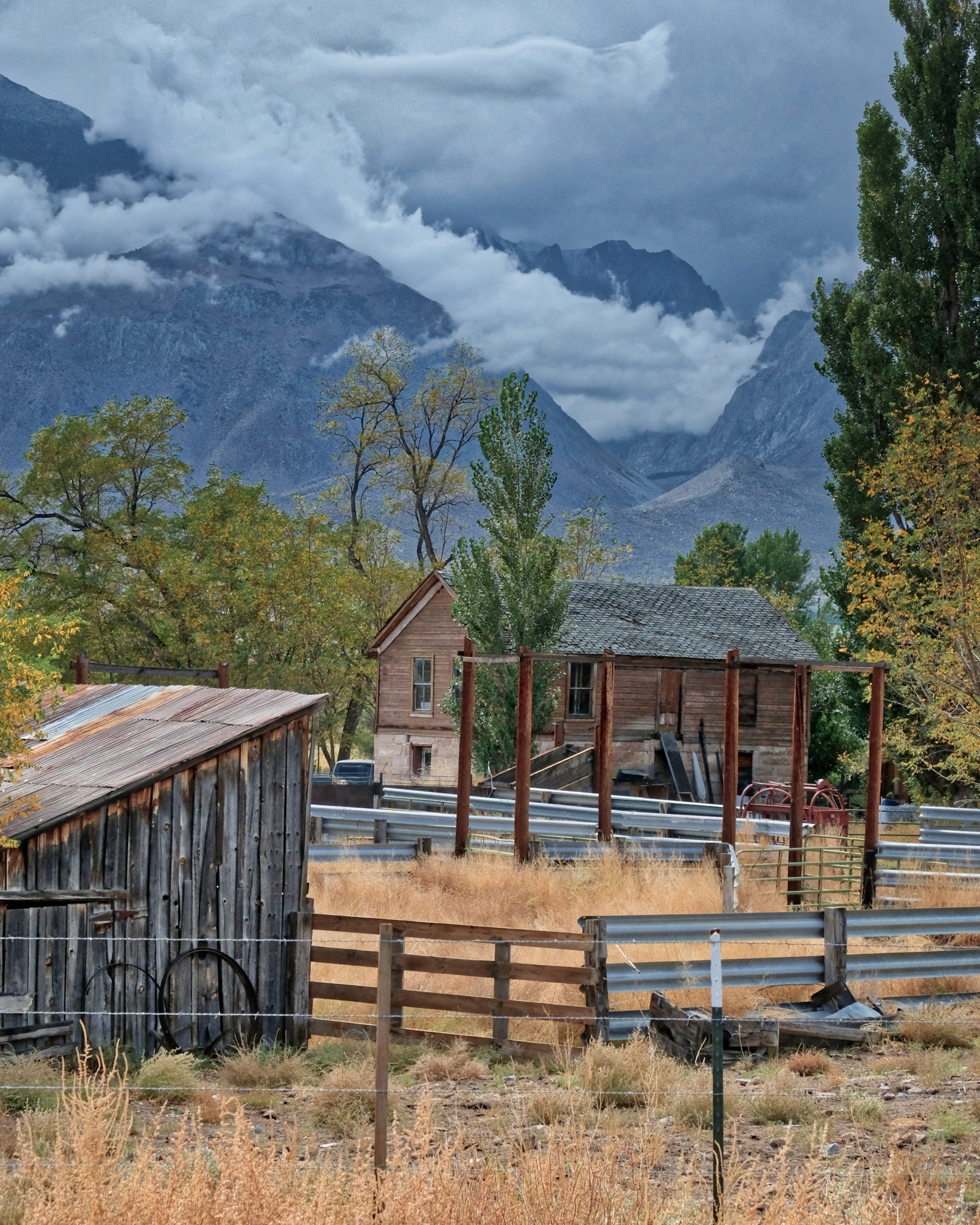 I could live here . . .
I could live here . . .
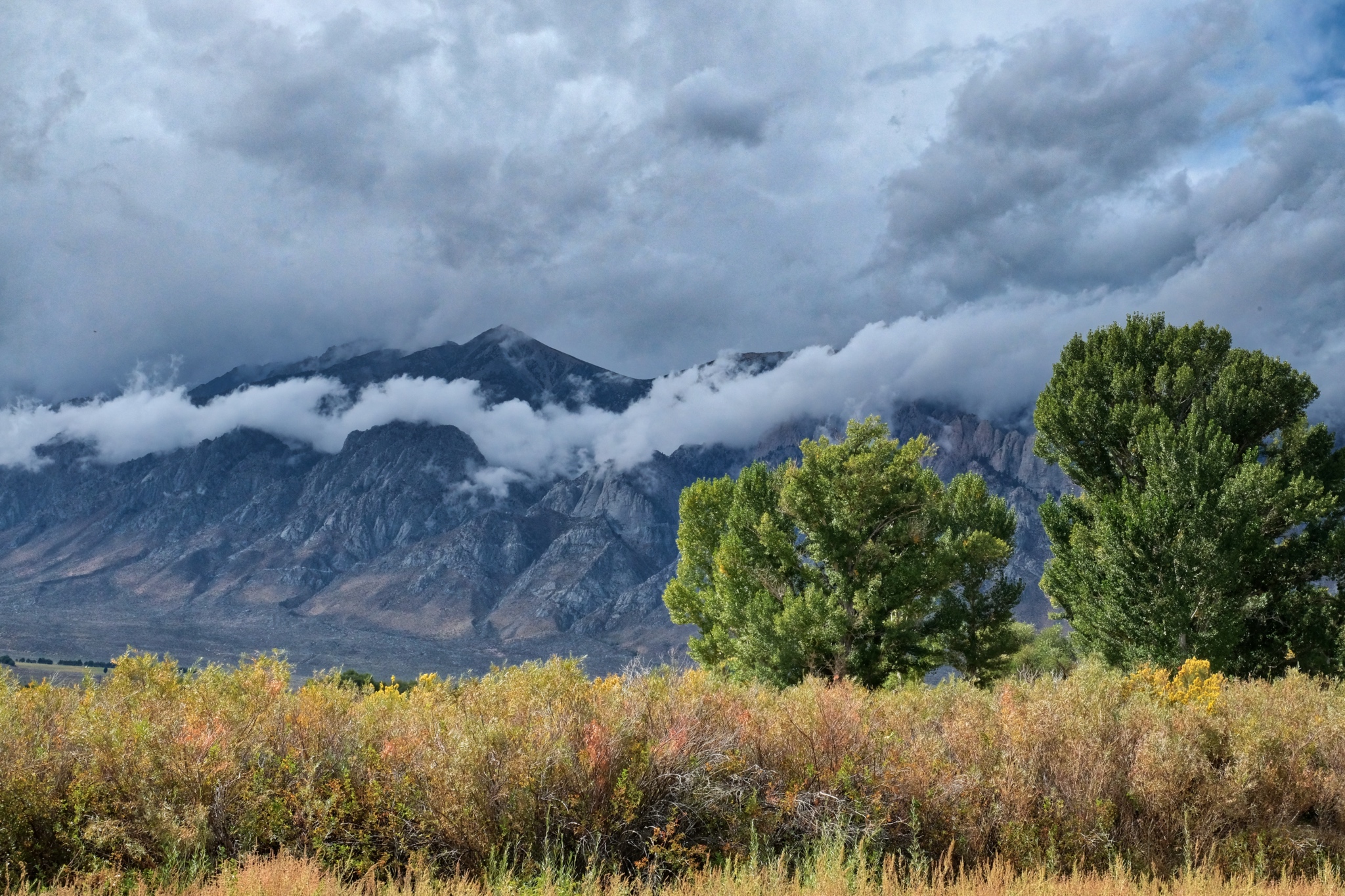 A painterly scene . . . glorious.
A painterly scene . . . glorious.
 Stunning beauty. I must have stopped 10 times along the road back to Swall Meadows.
Stunning beauty. I must have stopped 10 times along the road back to Swall Meadows.
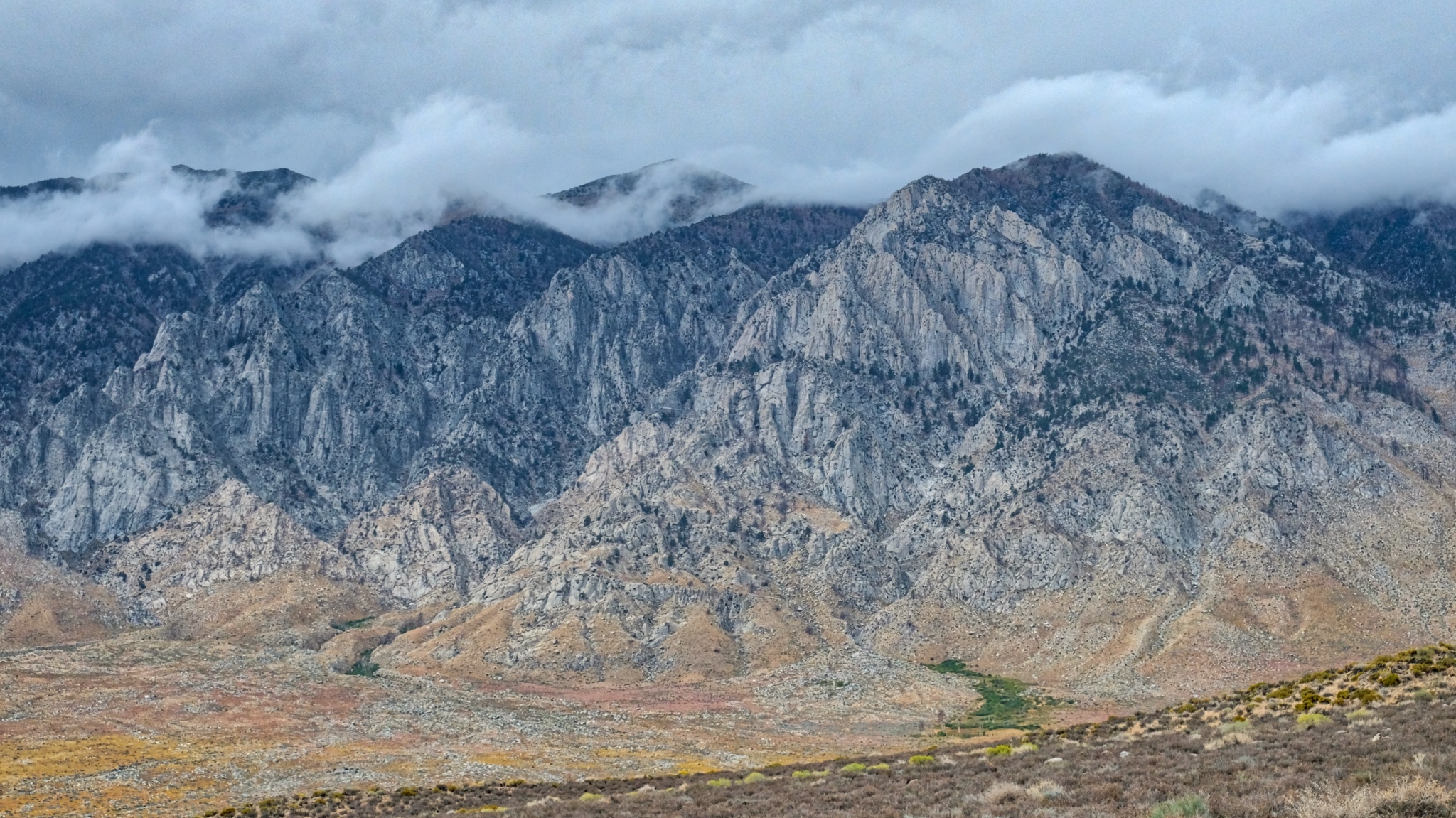 Nearing Swall Meadows.
Nearing Swall Meadows.
 Looking back to from where I have come. I could not have waited an additional day to go camping here . . . I managed the last week of dry/warm camping in the mountains for the year. Yes Paradise!
Looking back to from where I have come. I could not have waited an additional day to go camping here . . . I managed the last week of dry/warm camping in the mountains for the year. Yes Paradise!
Road Trip USA: Bonneville, Utah to Swall Meadows, California
 Thursday, January 31, 2019 at 5:08AM
Thursday, January 31, 2019 at 5:08AM In early September 2018, after camping/spectating at the World of Speed land speed event on the Bonneville Salt Flats, I drove at a 45 degree angle across the state Nevada to get to Swall Meadows, California in the Eastern Sierras.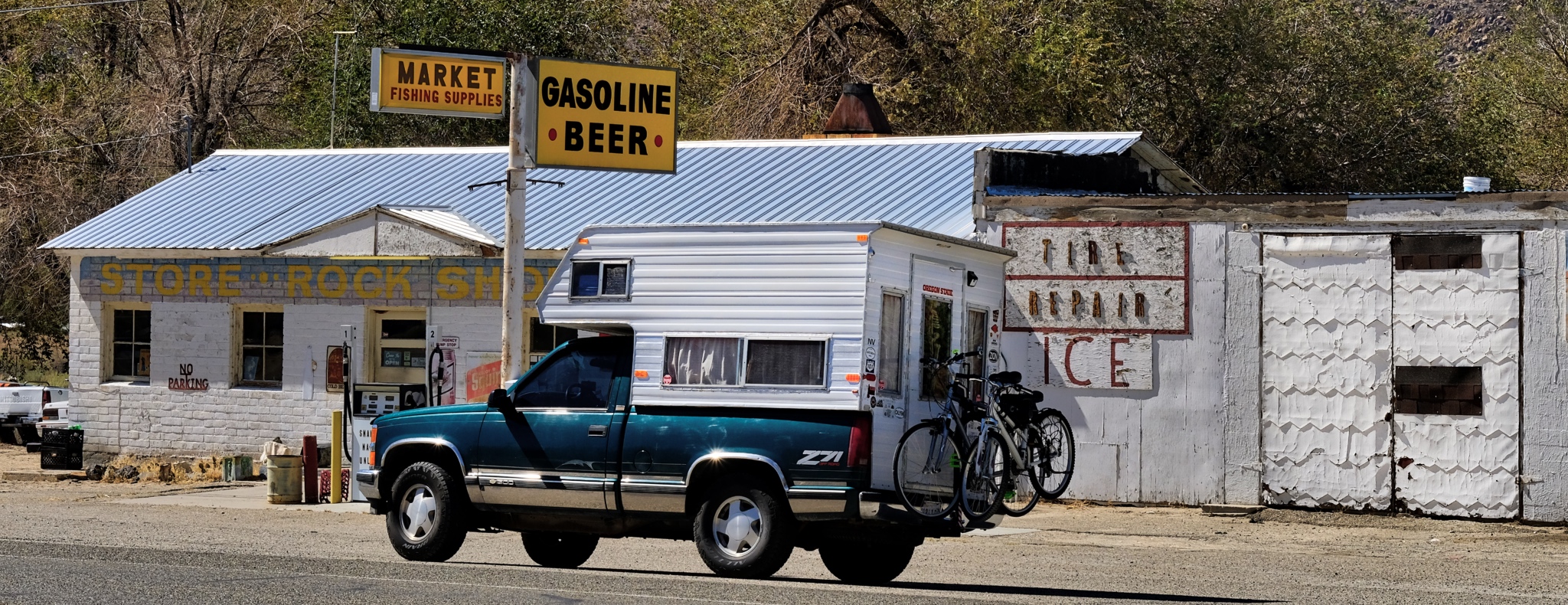
On the road again!!!
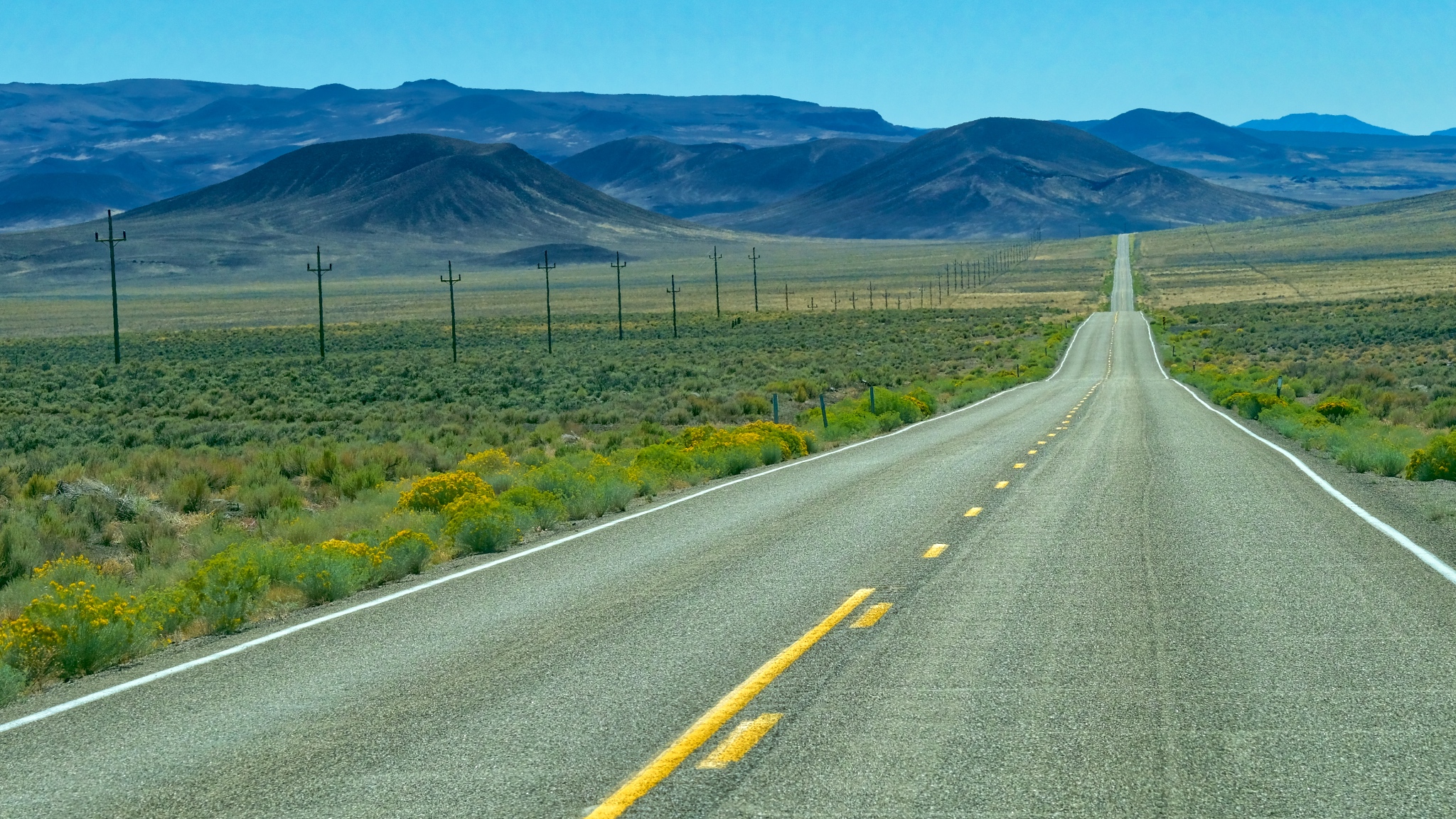 The road out of Utah went through some very deserted landscape. There were miles and miles between any sign of human activity.
The road out of Utah went through some very deserted landscape. There were miles and miles between any sign of human activity.
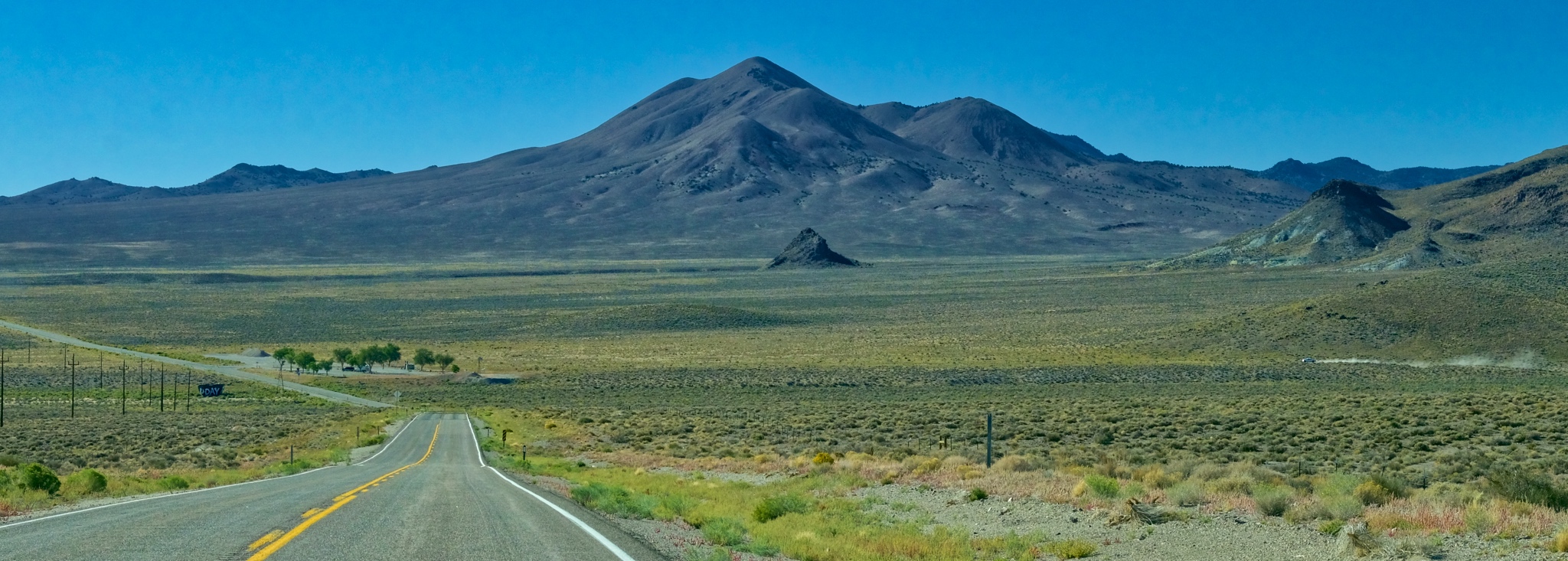 A little human activity after the first hundred miles . . . a roadside stop up ahead on the right.
A little human activity after the first hundred miles . . . a roadside stop up ahead on the right.
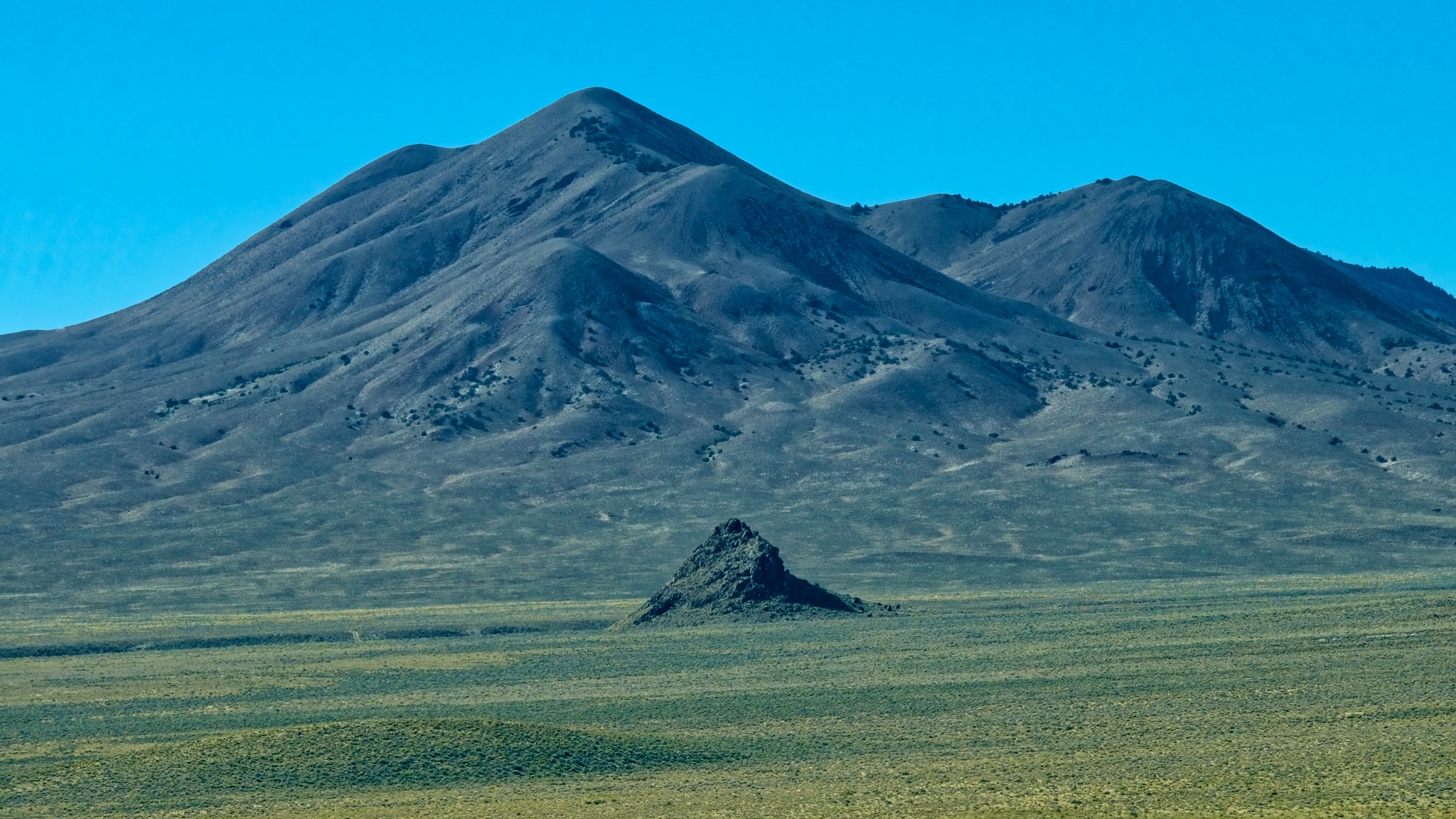 I suppose these geological features exist all over the world, but they would be obscured by forests and towns, and farms. Out here, in this high scrubland, every little remnant of a cinder cone still stands out.
I suppose these geological features exist all over the world, but they would be obscured by forests and towns, and farms. Out here, in this high scrubland, every little remnant of a cinder cone still stands out.
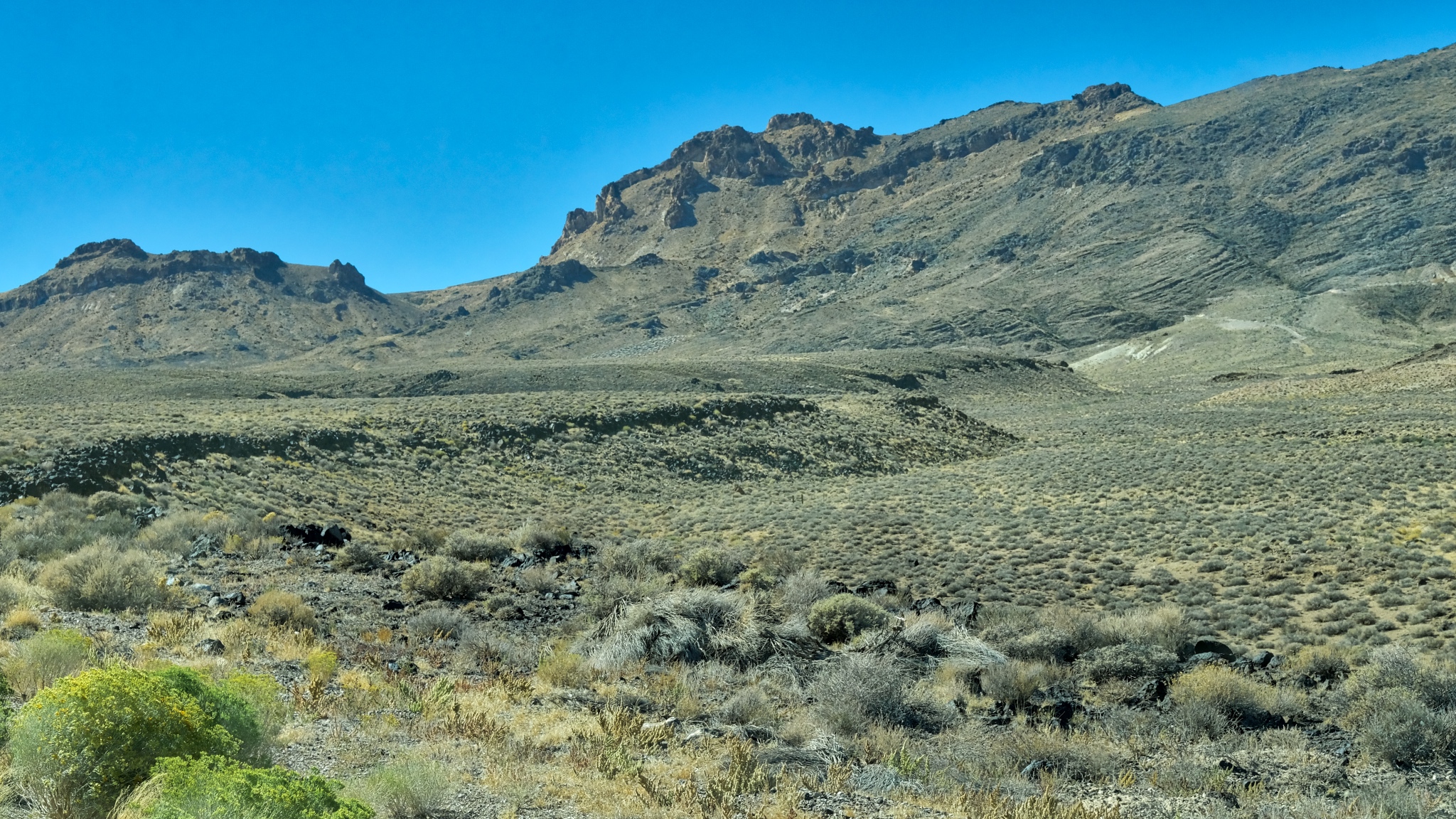 I absolutely love this type of landscape . . . and I don't know why . . . maybe the expression "high lonesome" explains it. I feel pulled to just wander around these hills . . . for years.
I absolutely love this type of landscape . . . and I don't know why . . . maybe the expression "high lonesome" explains it. I feel pulled to just wander around these hills . . . for years.
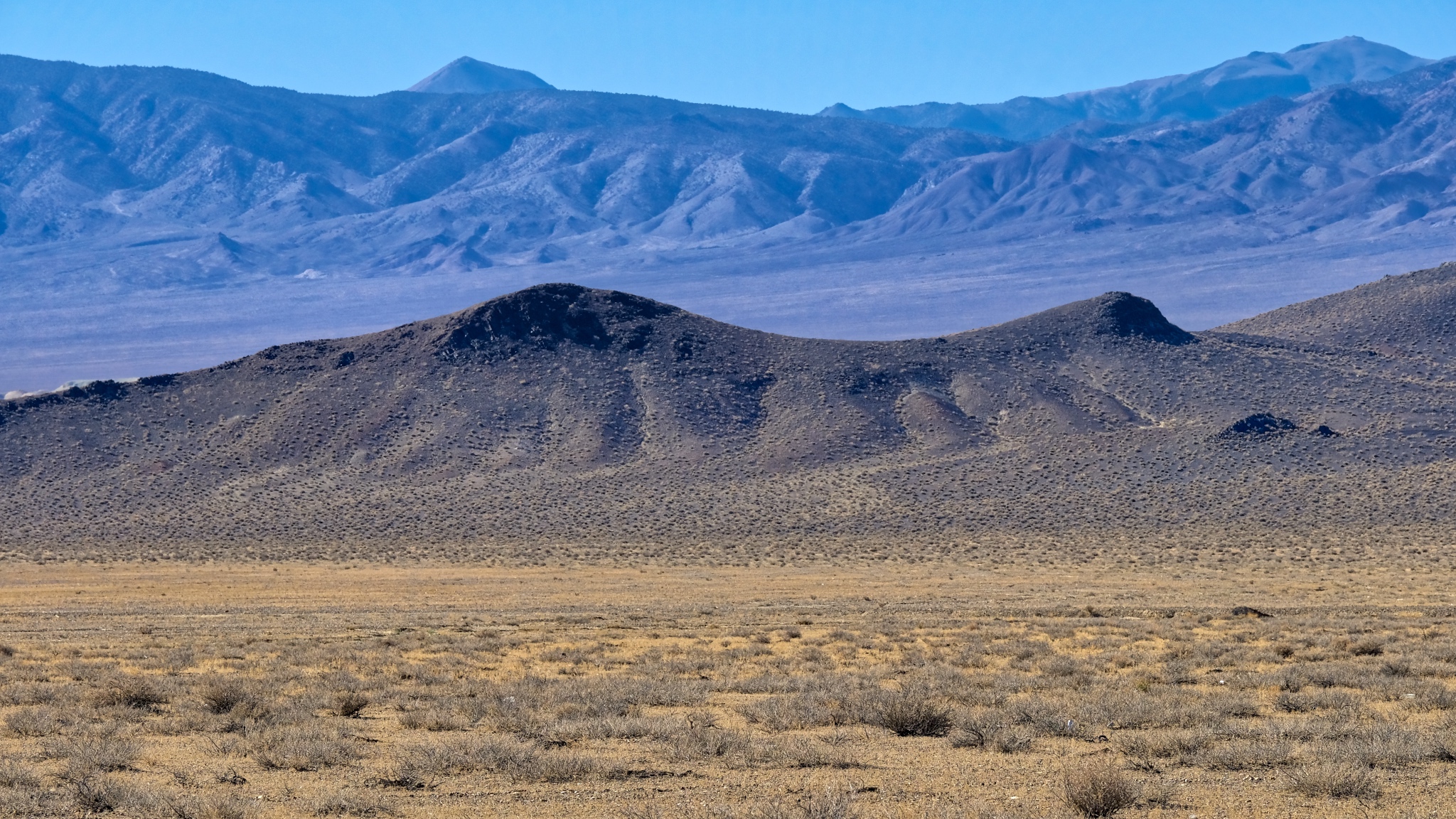 An endless expanse of an endless variety of shapes and colorful vistas.
An endless expanse of an endless variety of shapes and colorful vistas.
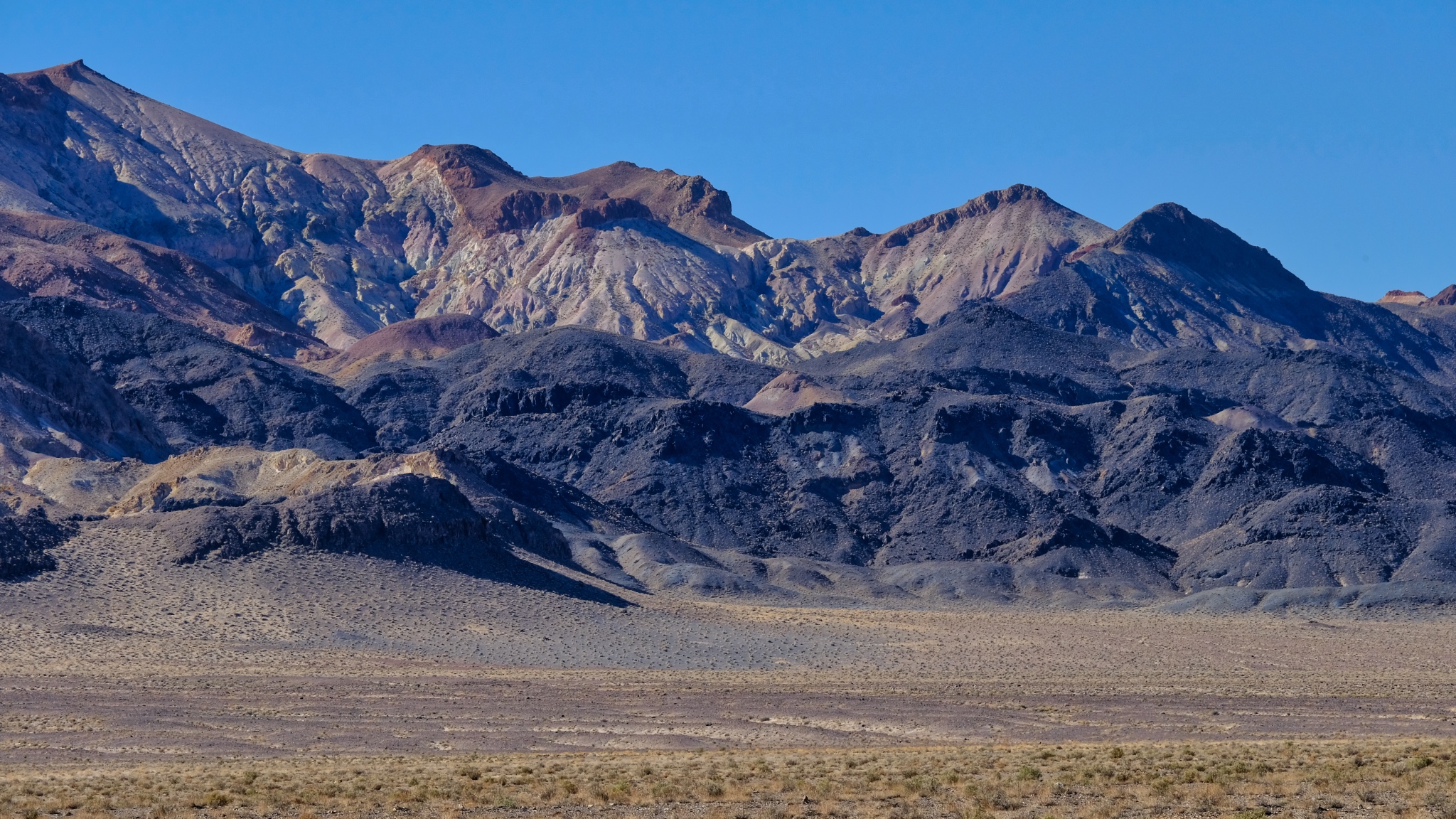 Here and there can be seen traces of former mining operations in the scars on the mountains.
Here and there can be seen traces of former mining operations in the scars on the mountains.
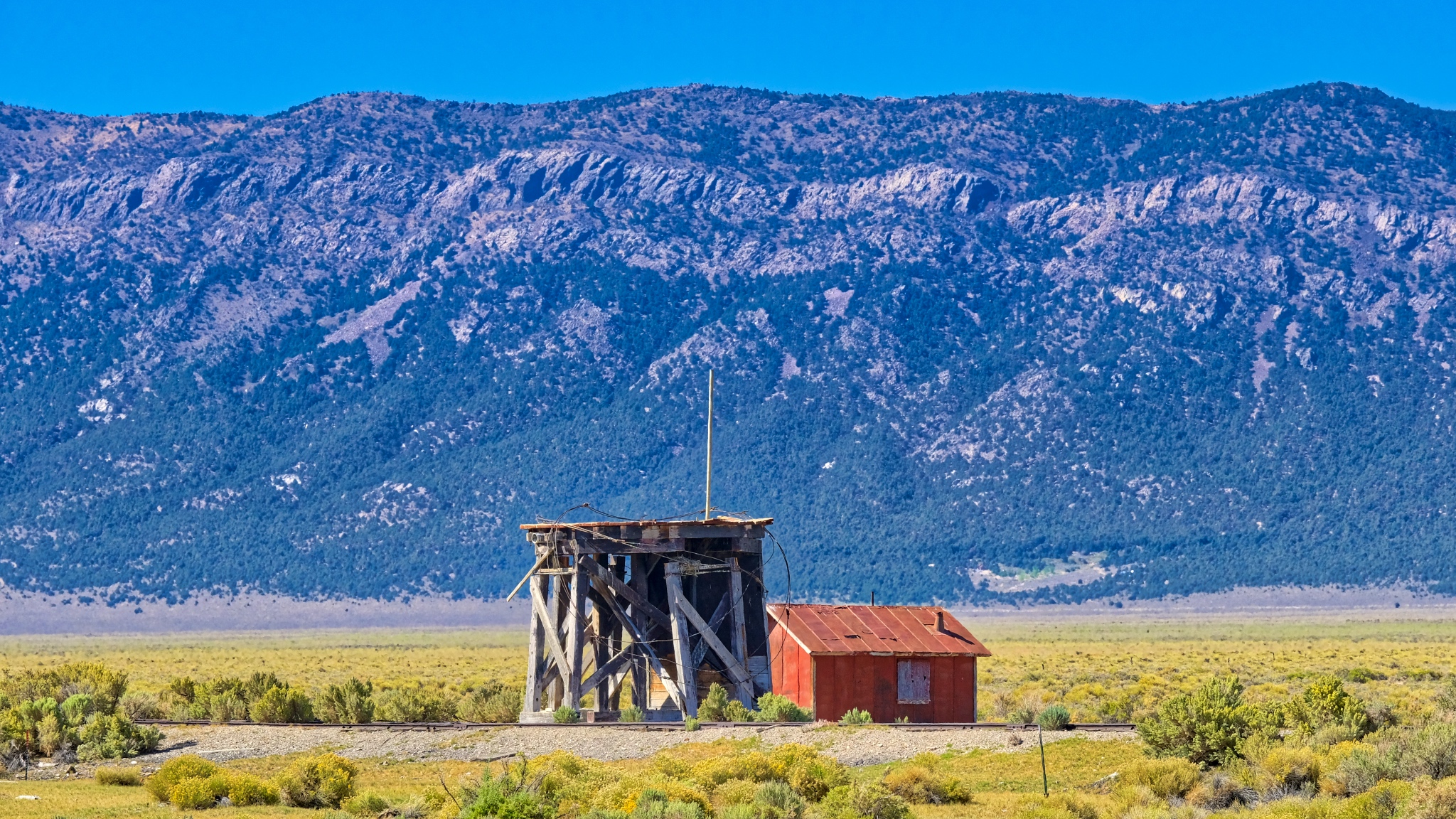 An abandoned water tower servicing an abandoned rail spur near Cherry Creek, Nevada.
An abandoned water tower servicing an abandoned rail spur near Cherry Creek, Nevada.
 I passed by many roads I didn't have time to explore.
I passed by many roads I didn't have time to explore.
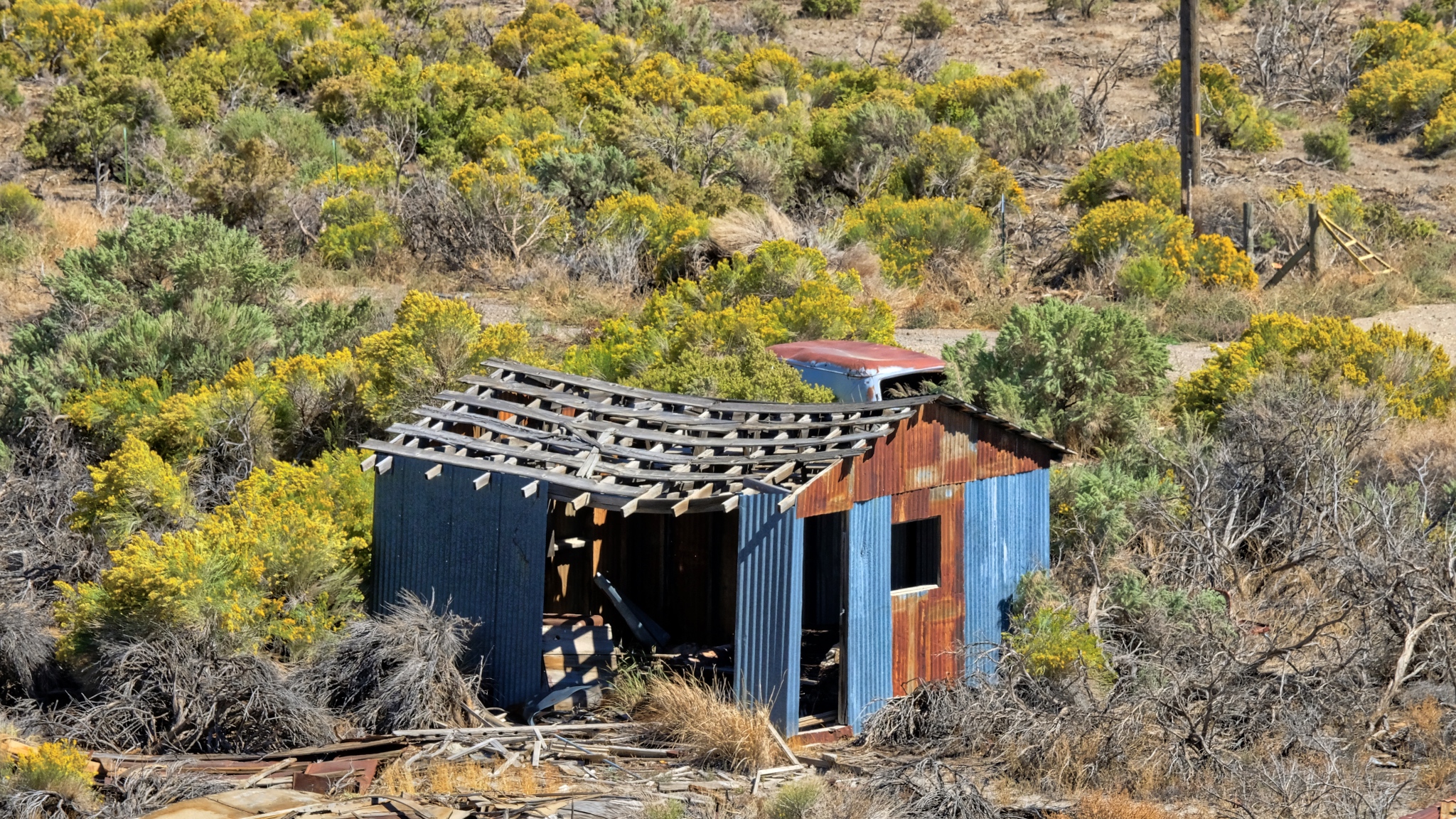 A story for each abandoned shack out here . . . a story never to be told.
A story for each abandoned shack out here . . . a story never to be told.
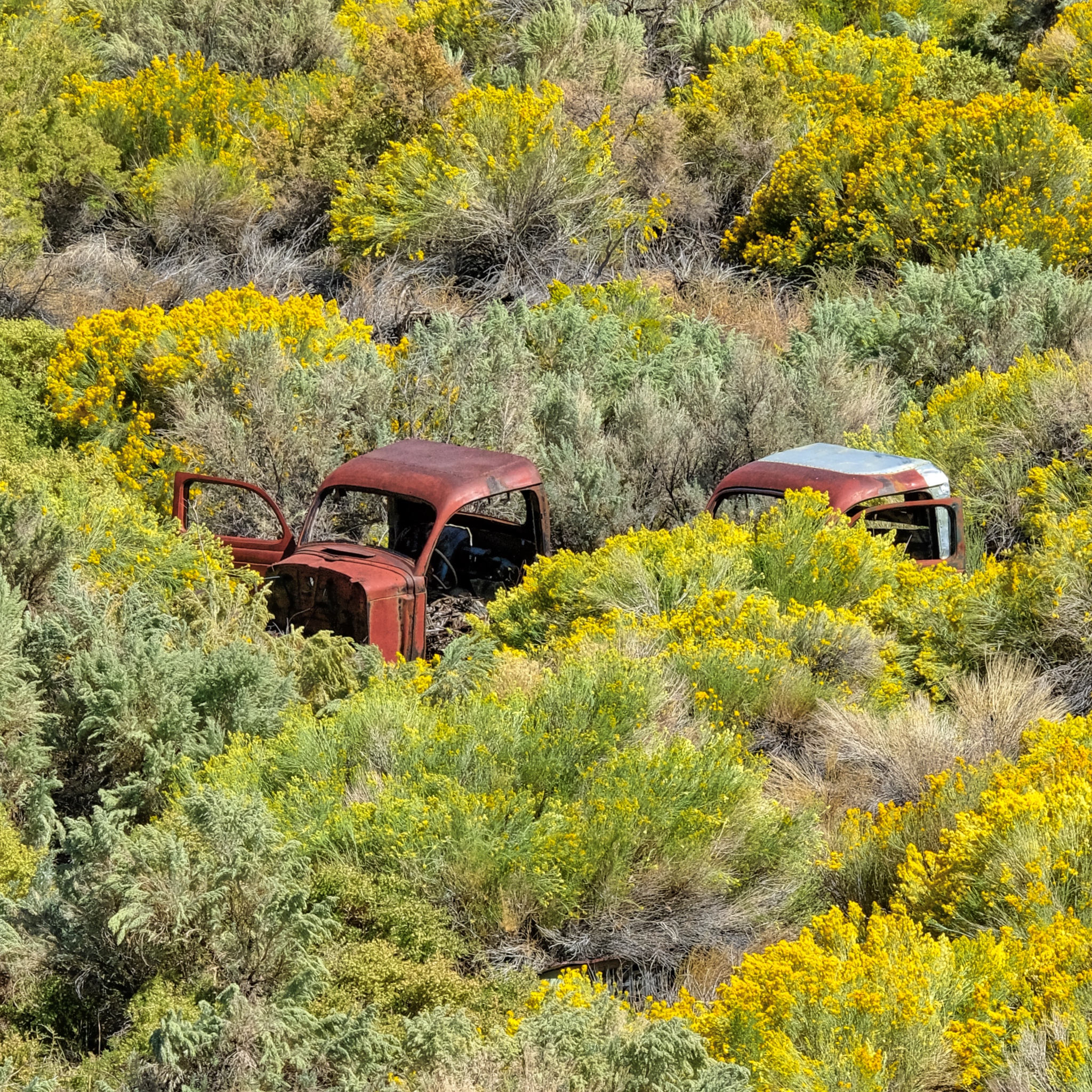 Used and left behind. I'm surprised the hot rodders and rat rodders haven't scavenged these old truck cabs.
Used and left behind. I'm surprised the hot rodders and rat rodders haven't scavenged these old truck cabs.
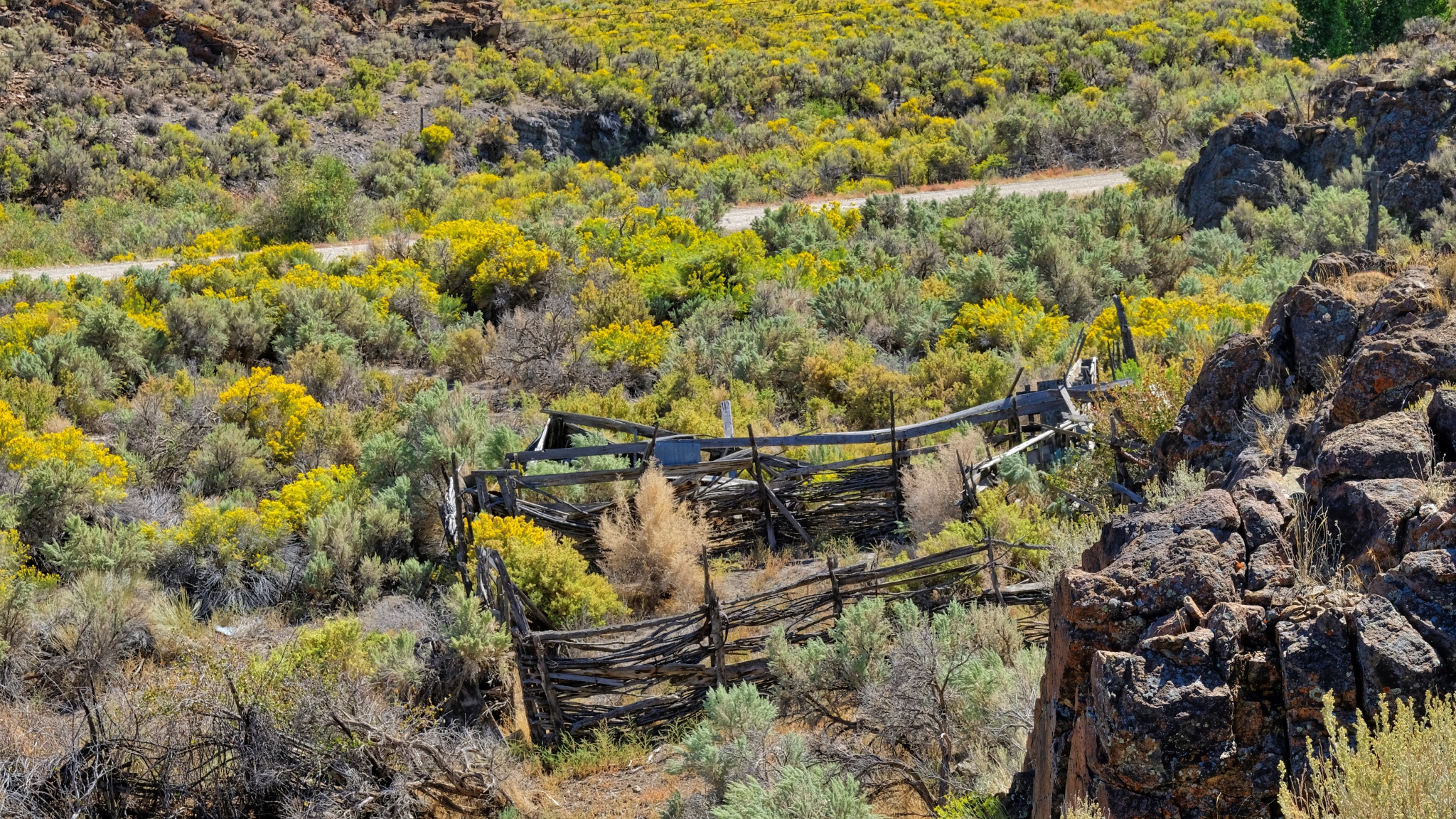 Hopes of ranching left behind with the decaying split beams.
Hopes of ranching left behind with the decaying split beams.
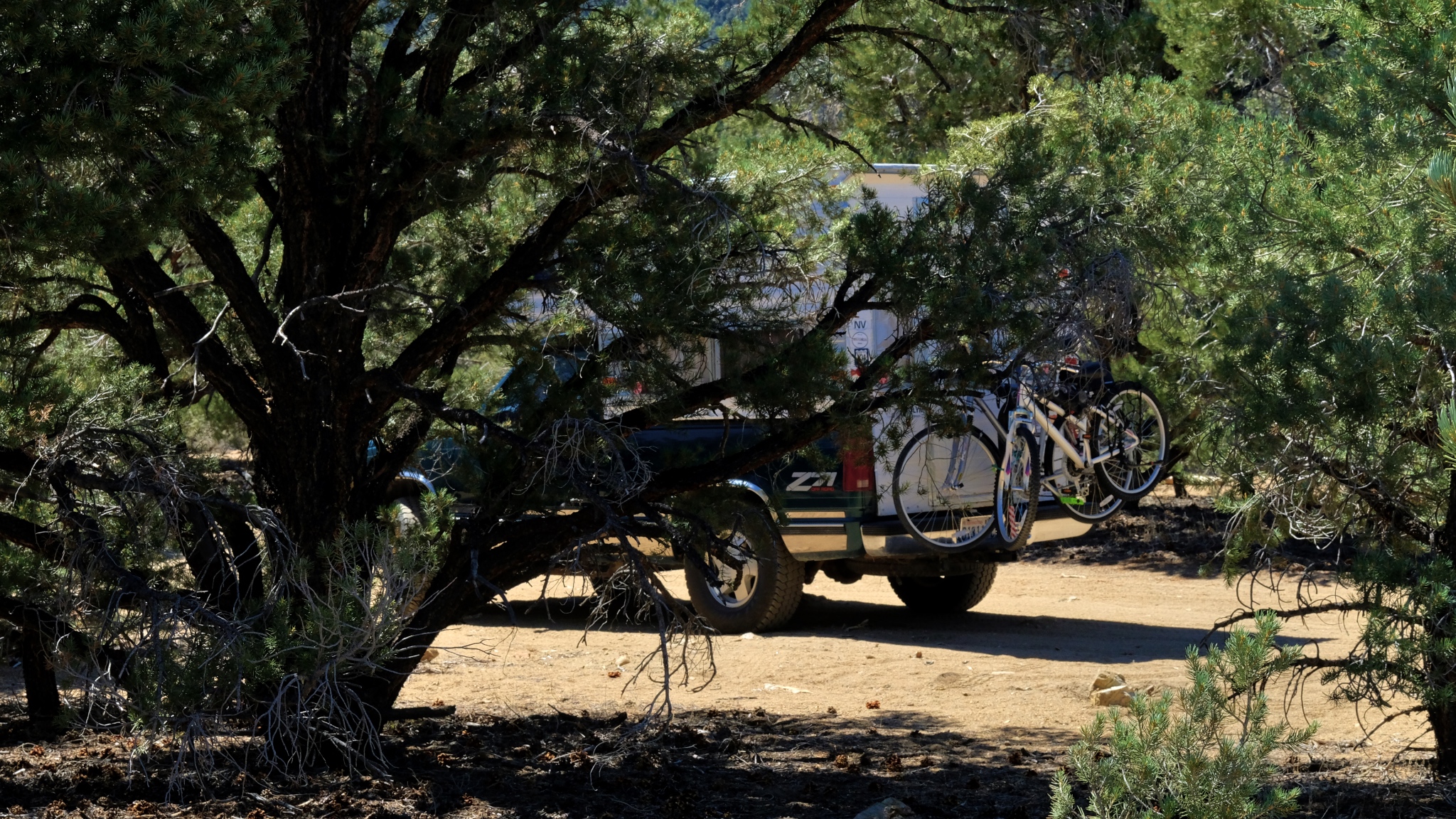 It is good to have four wheel drive when nature calls.
It is good to have four wheel drive when nature calls.
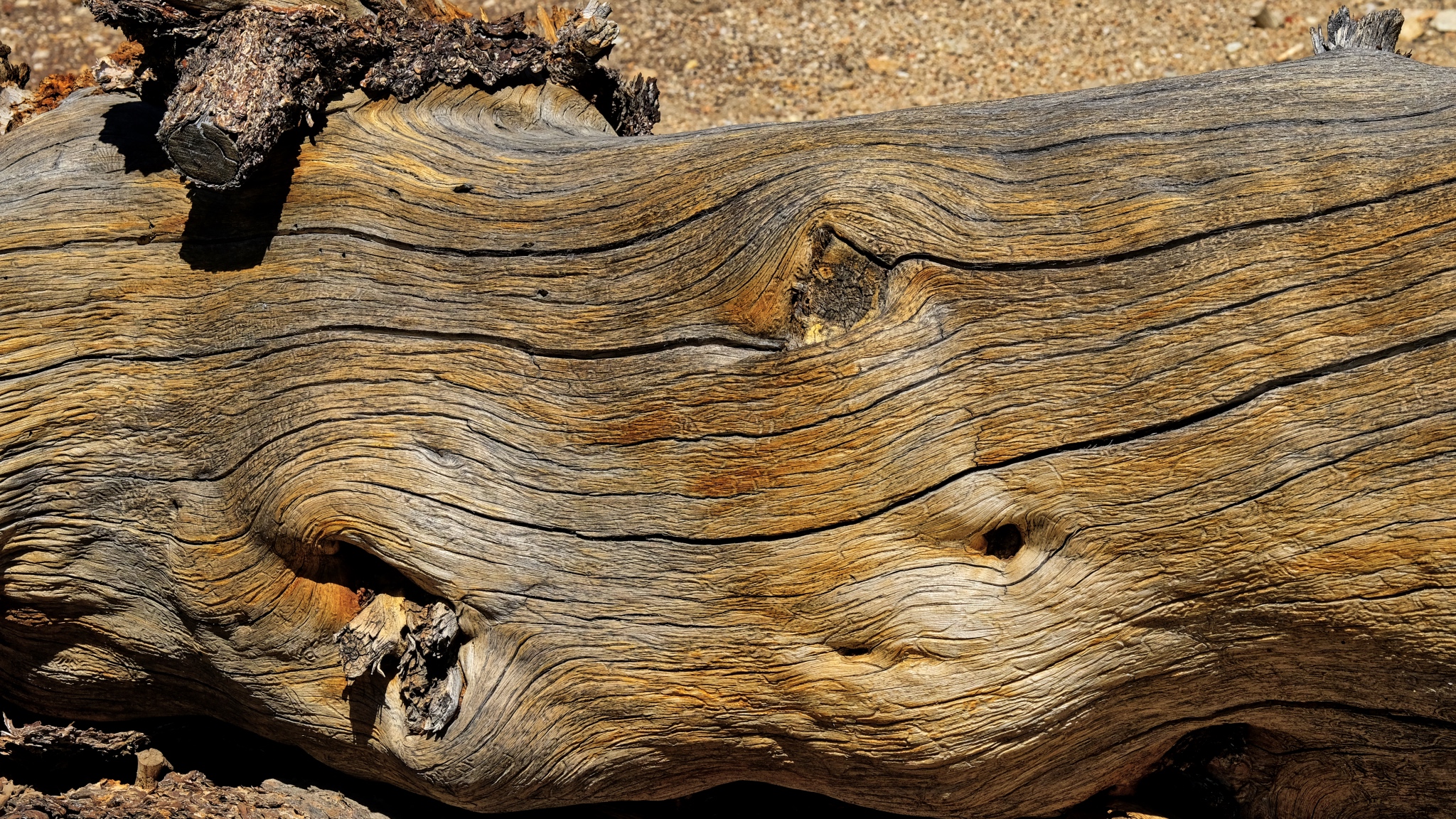 An ancient bristle cone pine trunk.
An ancient bristle cone pine trunk.
 A left behind moon on a clear Nevada morning.
A left behind moon on a clear Nevada morning.
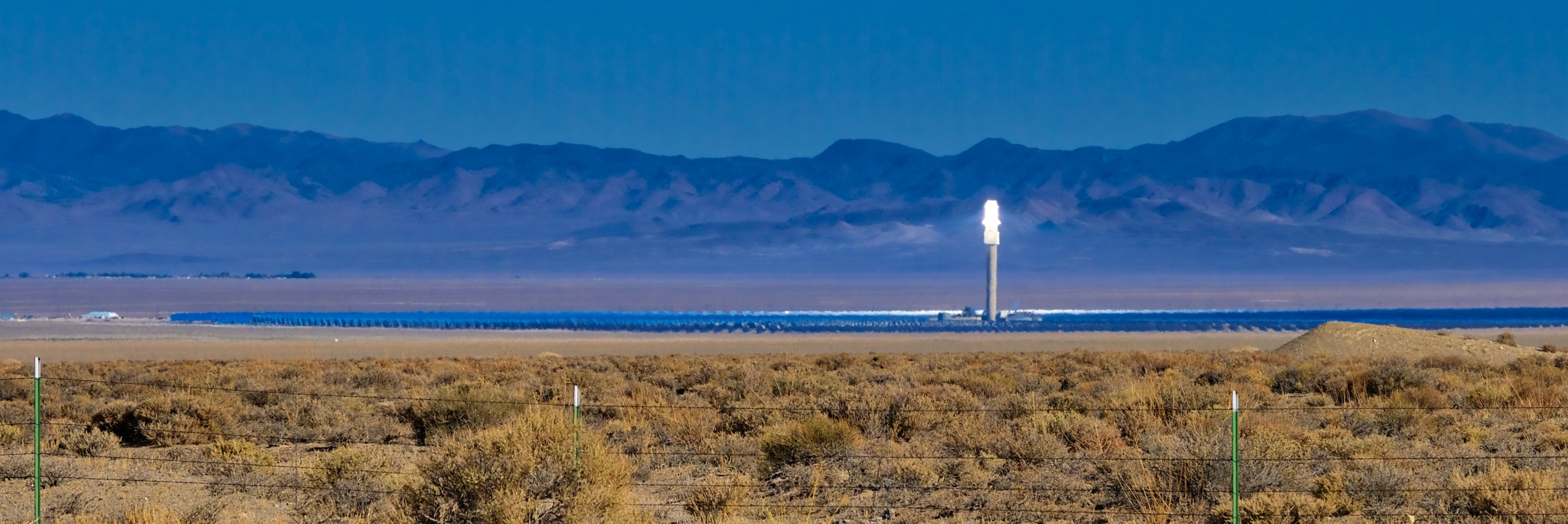 A solar reflector energy farm way out in the desert. Amazing technology . . . you could almost smell the fried birds from the road!
A solar reflector energy farm way out in the desert. Amazing technology . . . you could almost smell the fried birds from the road!
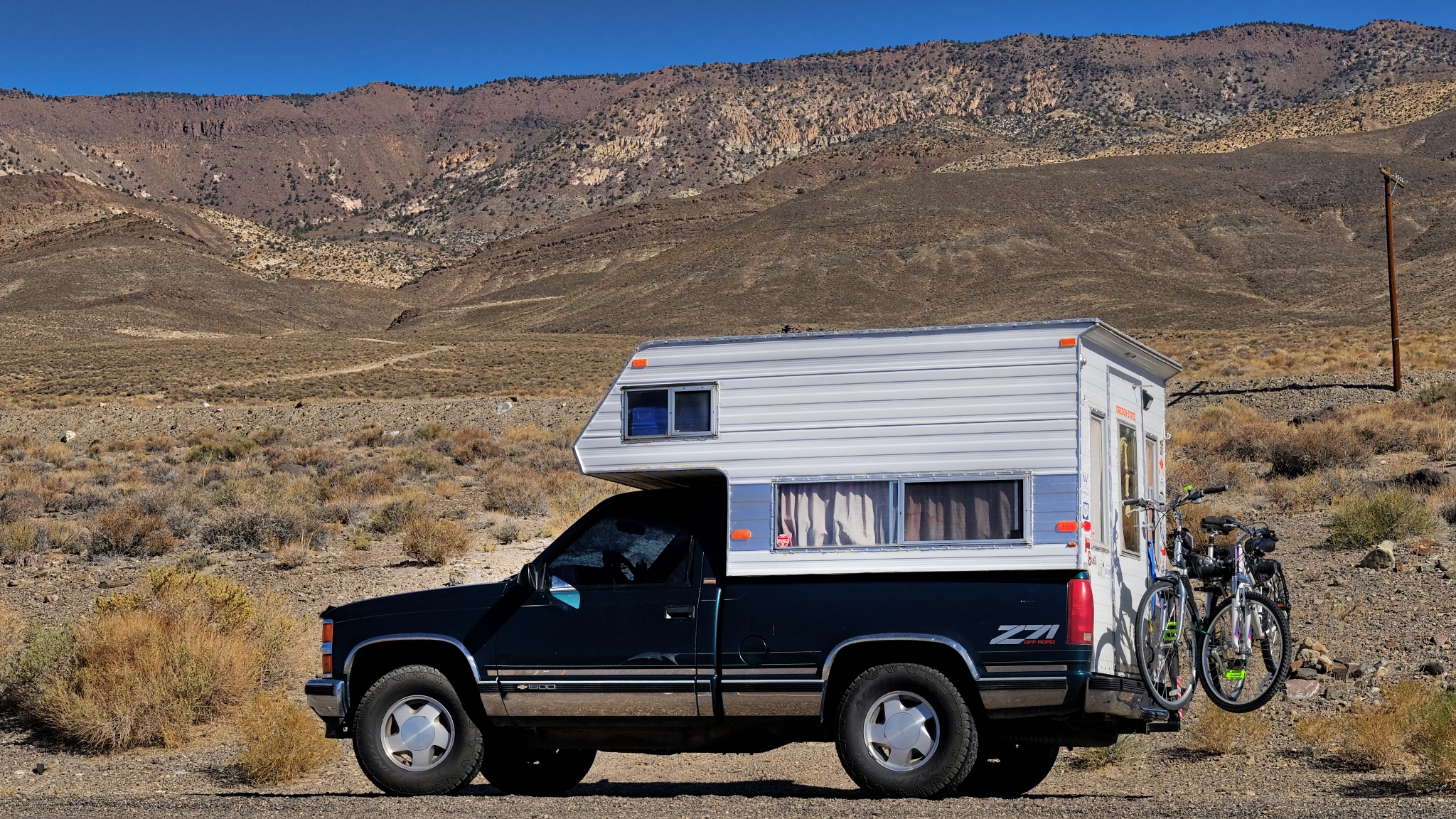 Loving my life on the road!
Loving my life on the road!
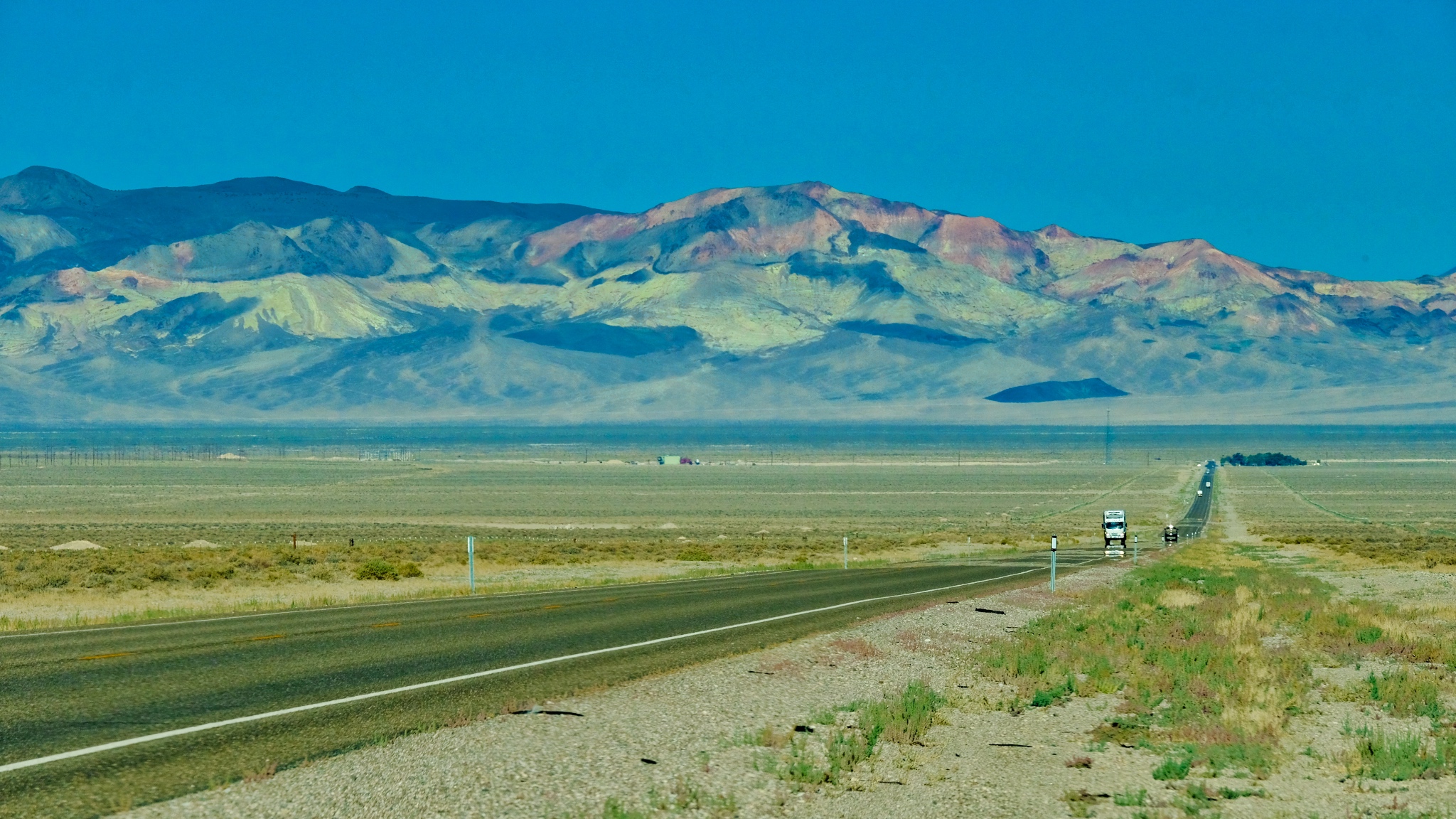 A long road to an other abandoned mountainside mine.
A long road to an other abandoned mountainside mine.
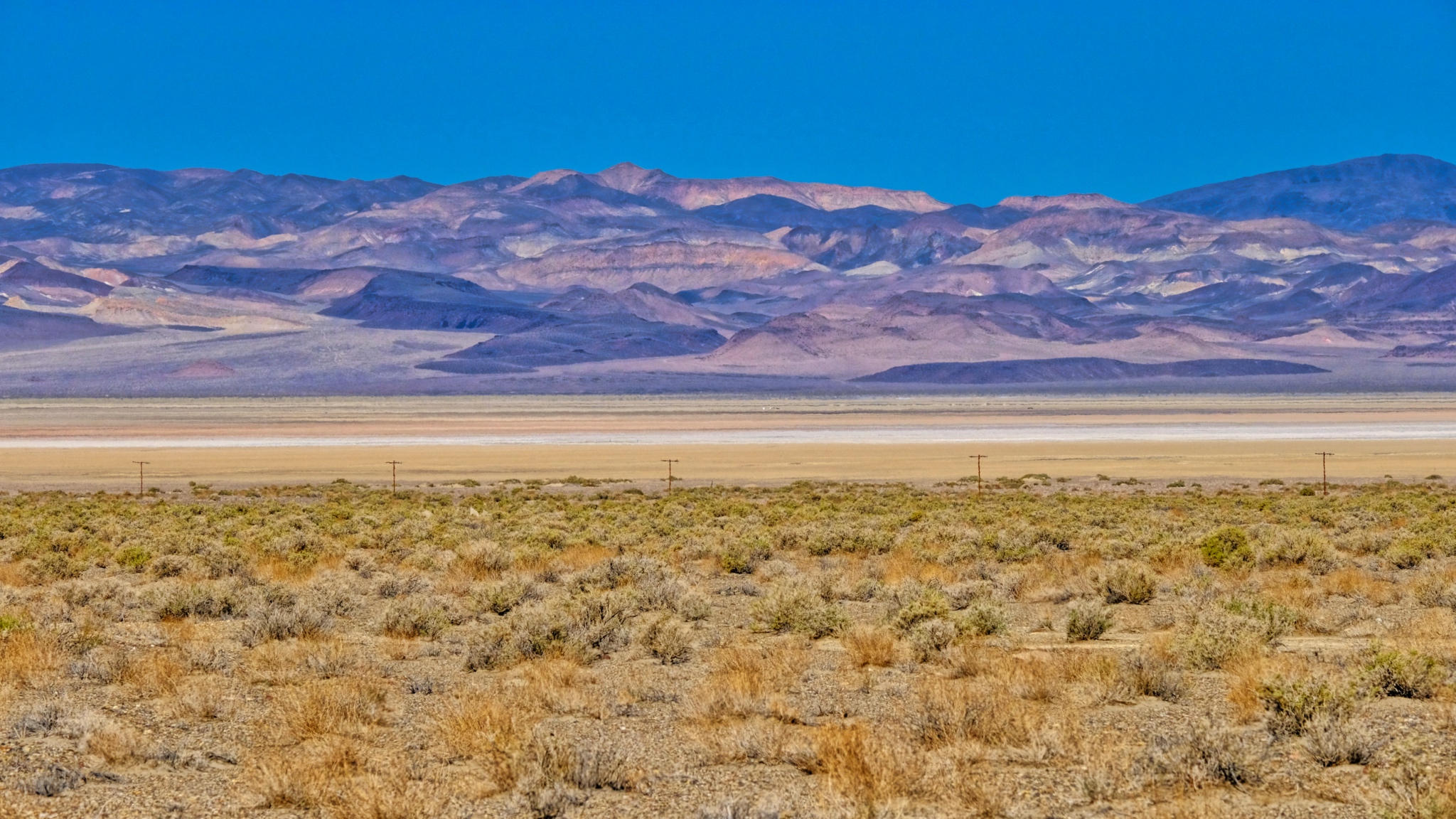 Scrub brush, dry lake, and mineral rich mountains.
Scrub brush, dry lake, and mineral rich mountains.
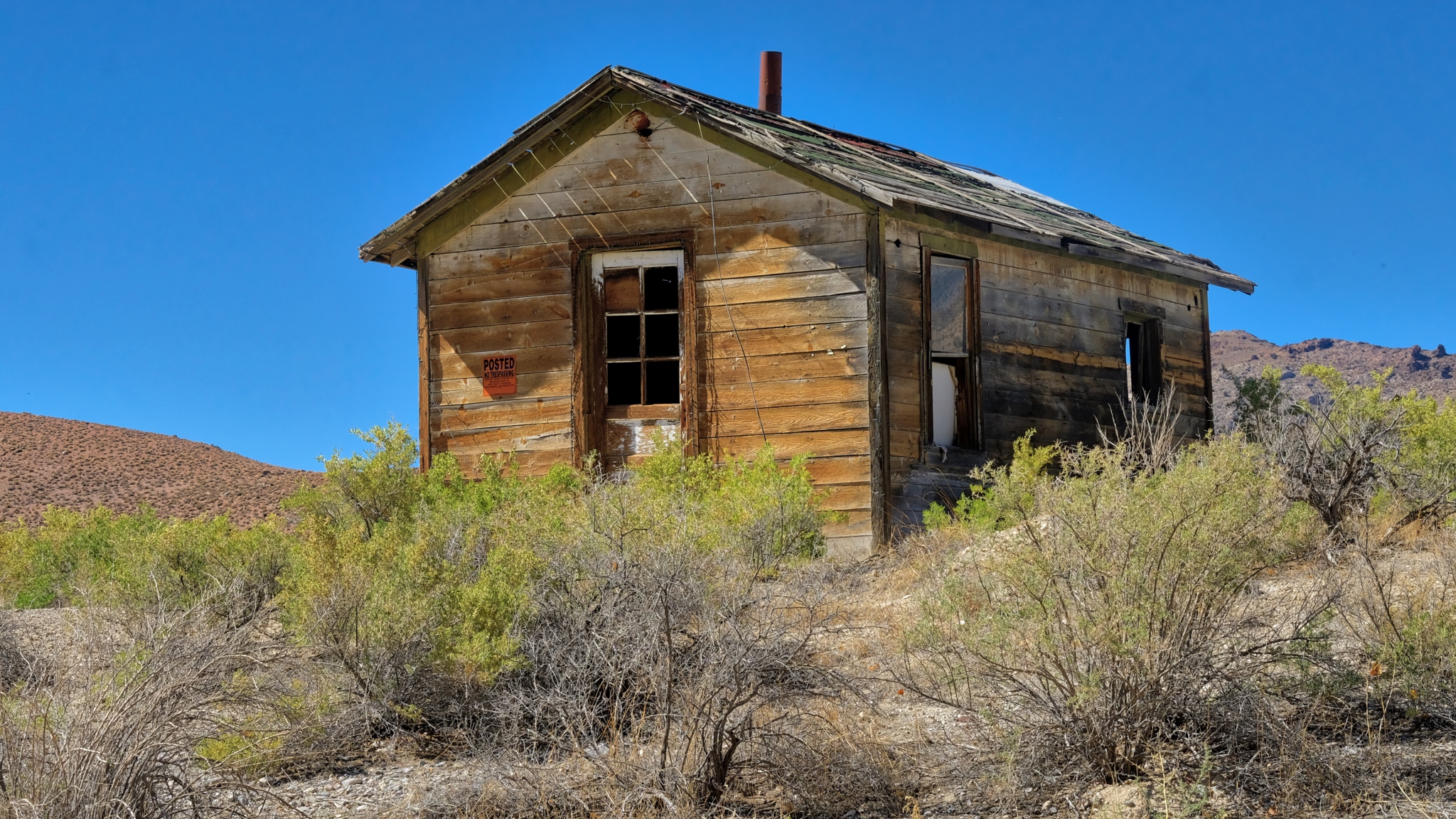 With so few structures around, I stopped at each one . . .
With so few structures around, I stopped at each one . . .
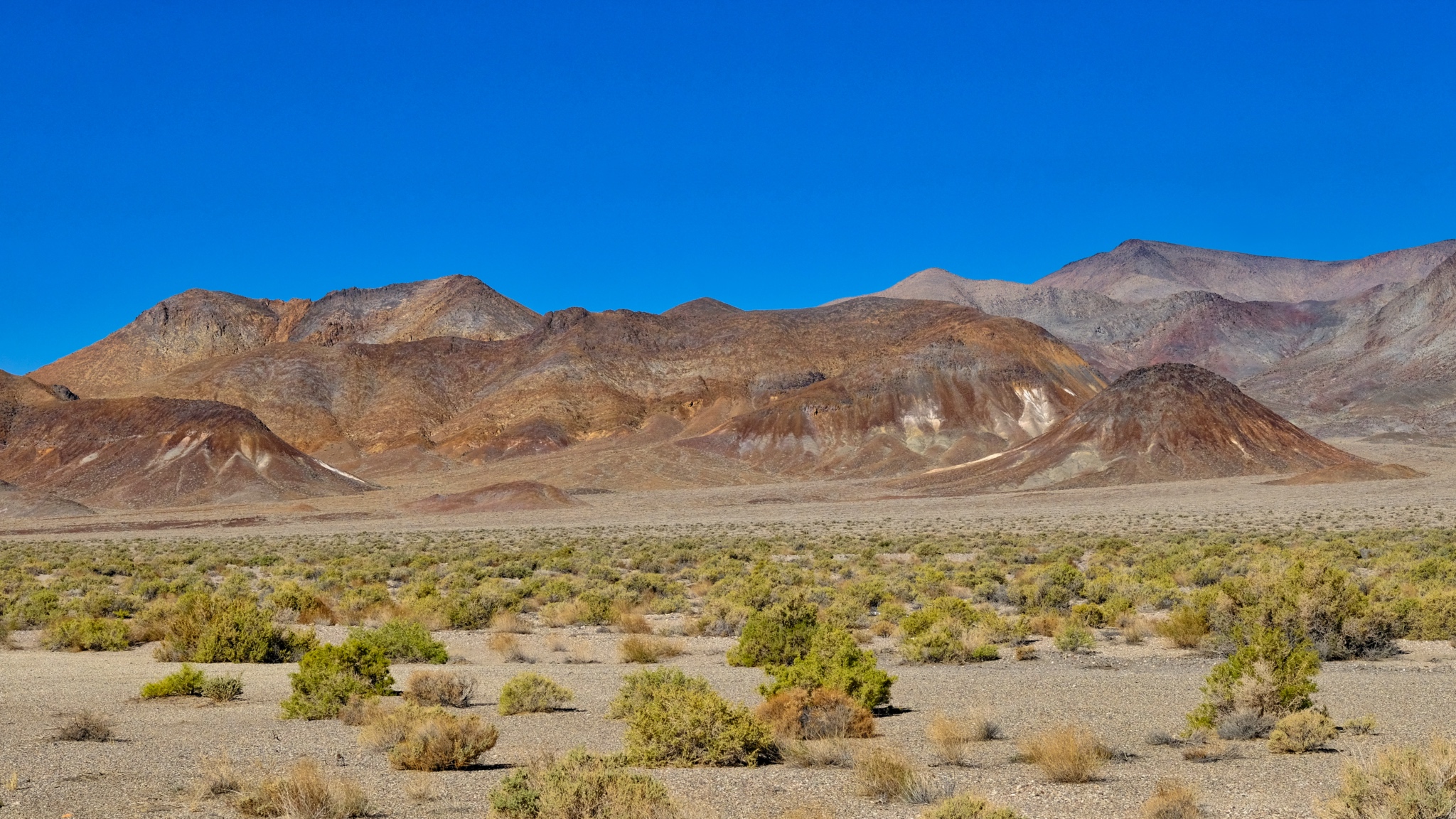 Mineral rich hills . . . another abandoned mining operation.
Mineral rich hills . . . another abandoned mining operation.
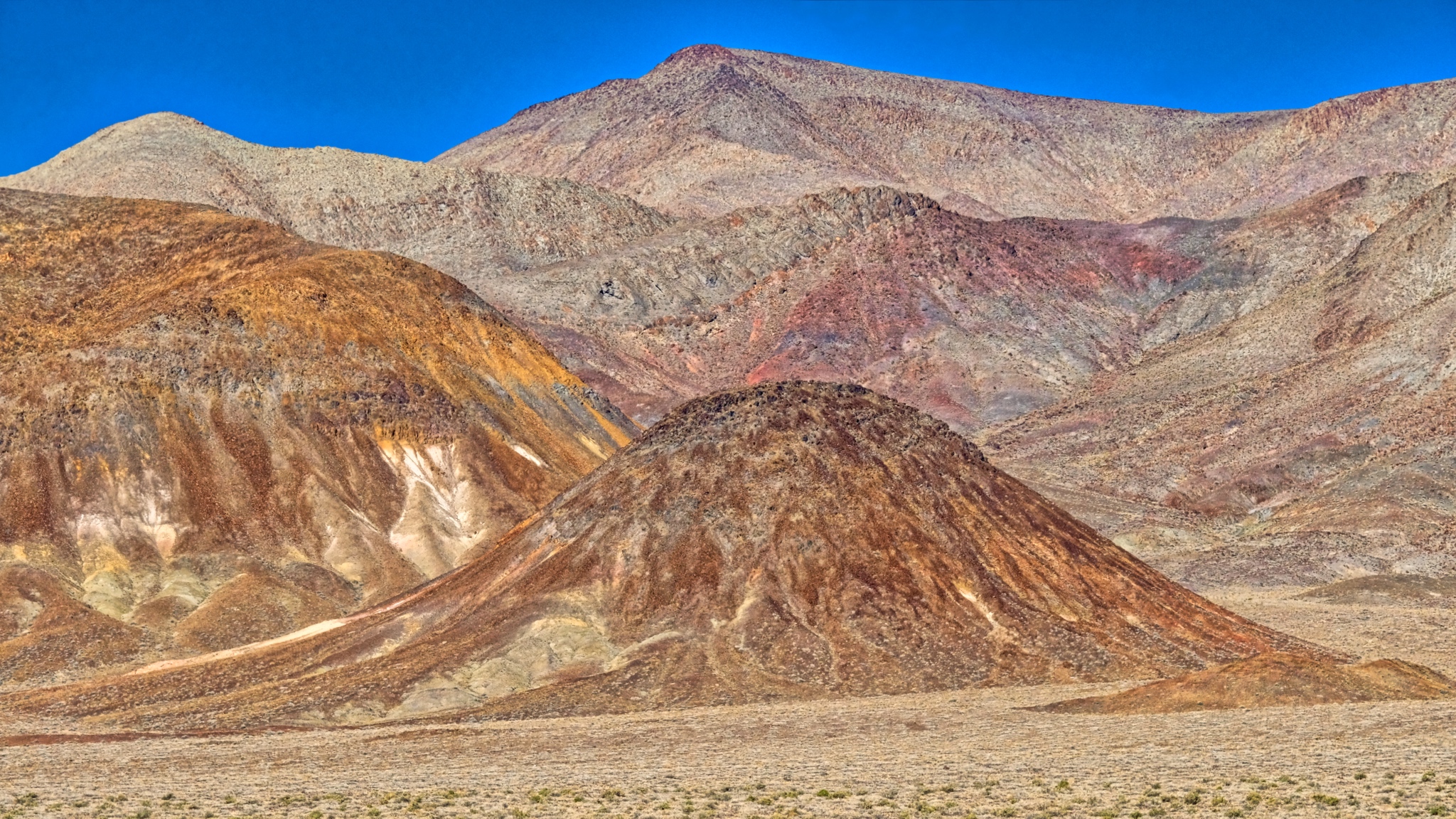 Strange hills left behind to weather after mining. This looks like a tungsten vein.
Strange hills left behind to weather after mining. This looks like a tungsten vein.
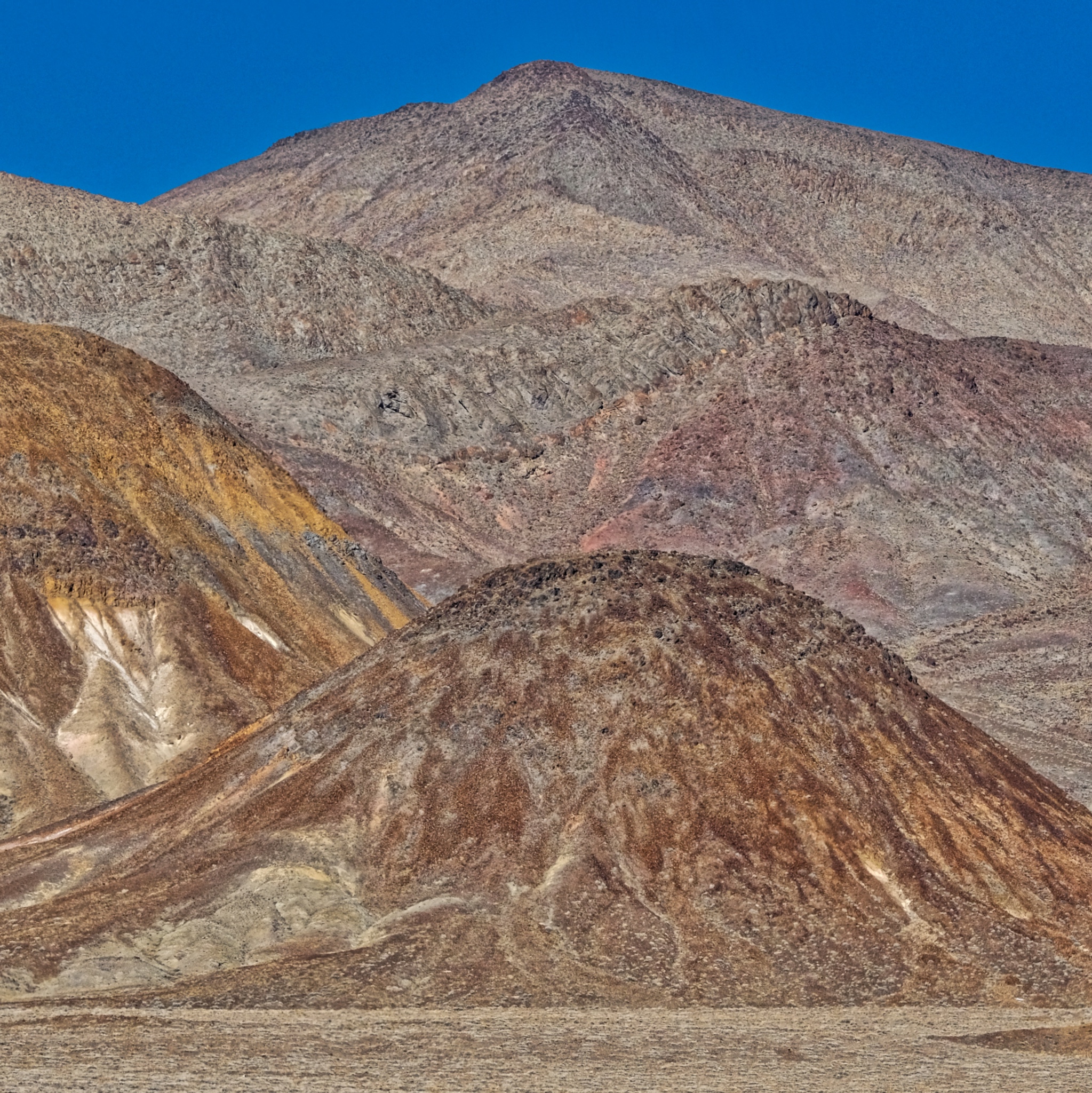 The colors, shapes, and textures of these mined hills were simply fantastic.
The colors, shapes, and textures of these mined hills were simply fantastic.
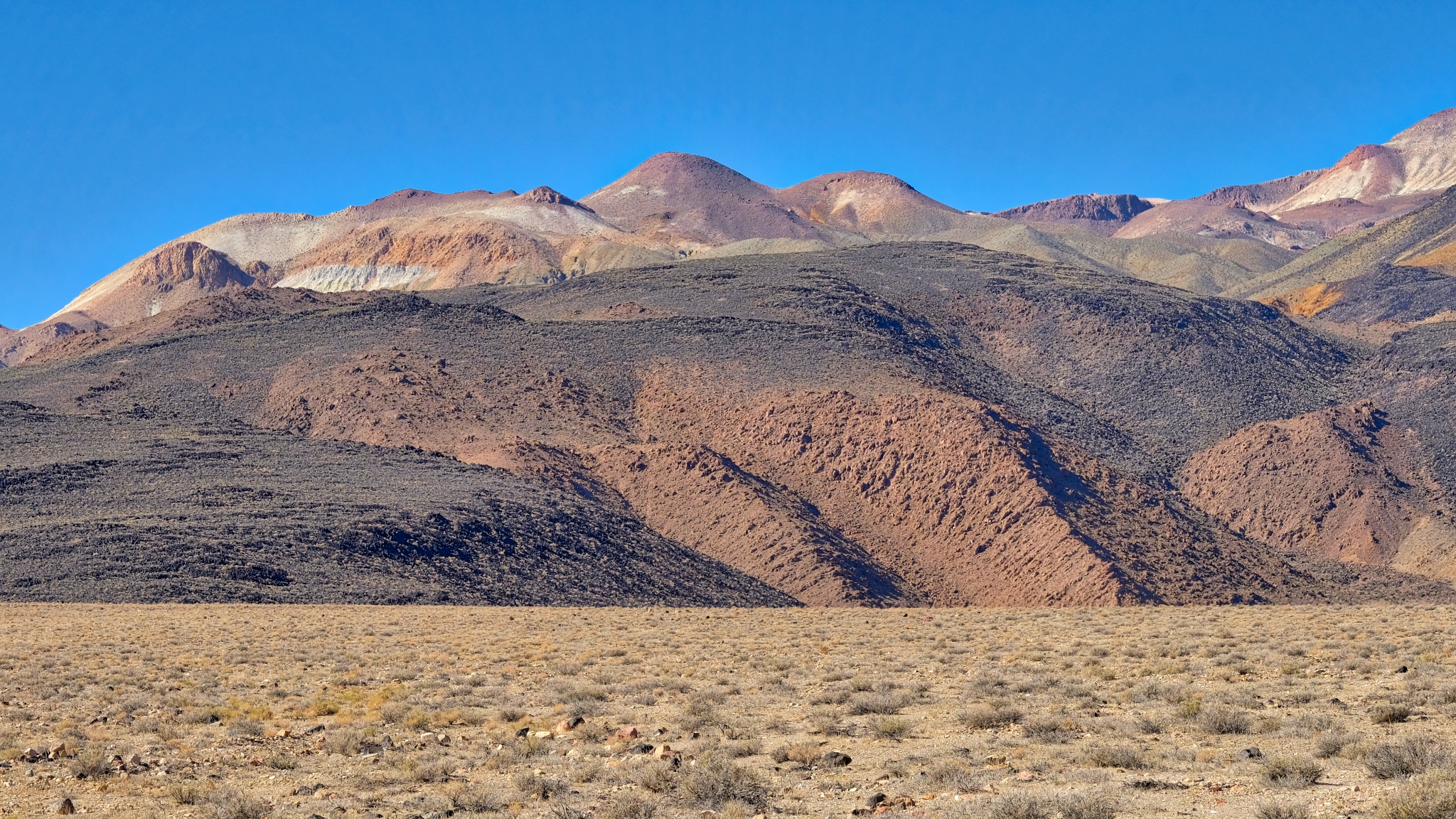 Geology everywhere (of course).
Geology everywhere (of course).
 Along the highway a gypsum deposit.
Along the highway a gypsum deposit.
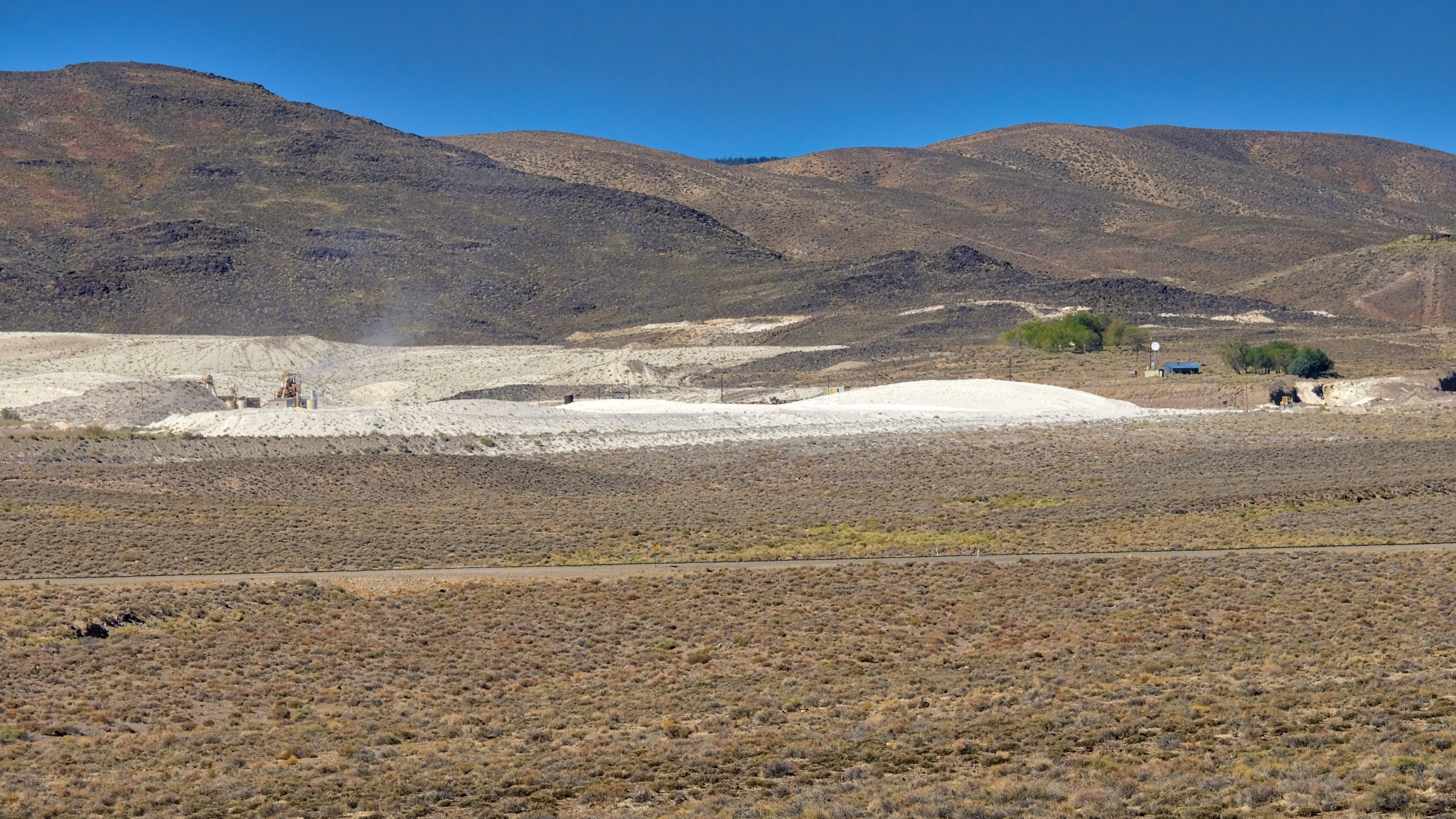 An active gypsum mine.
An active gypsum mine.
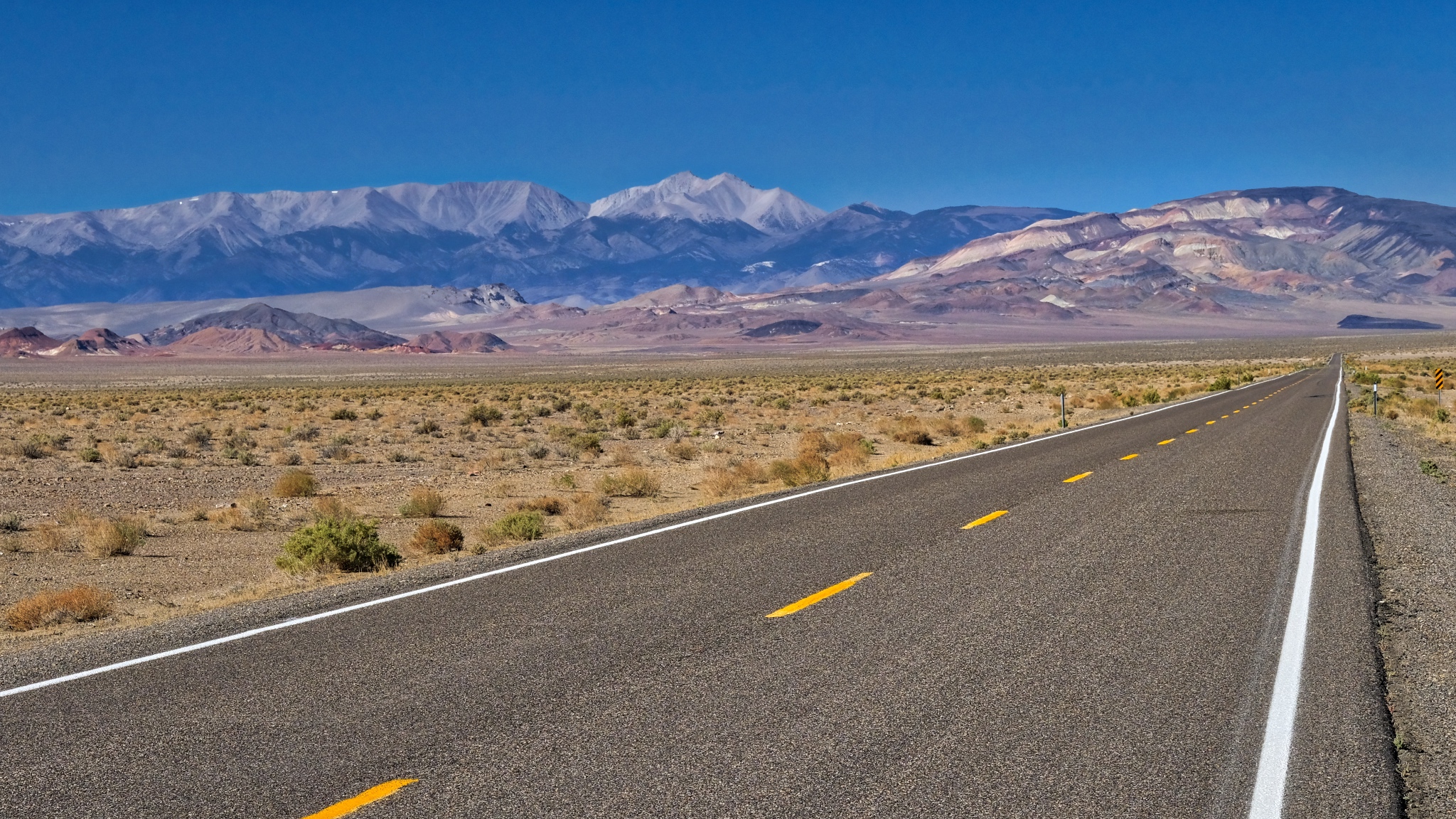 Coming up on the Boundary Range, which separates Nevada from California.
Coming up on the Boundary Range, which separates Nevada from California.
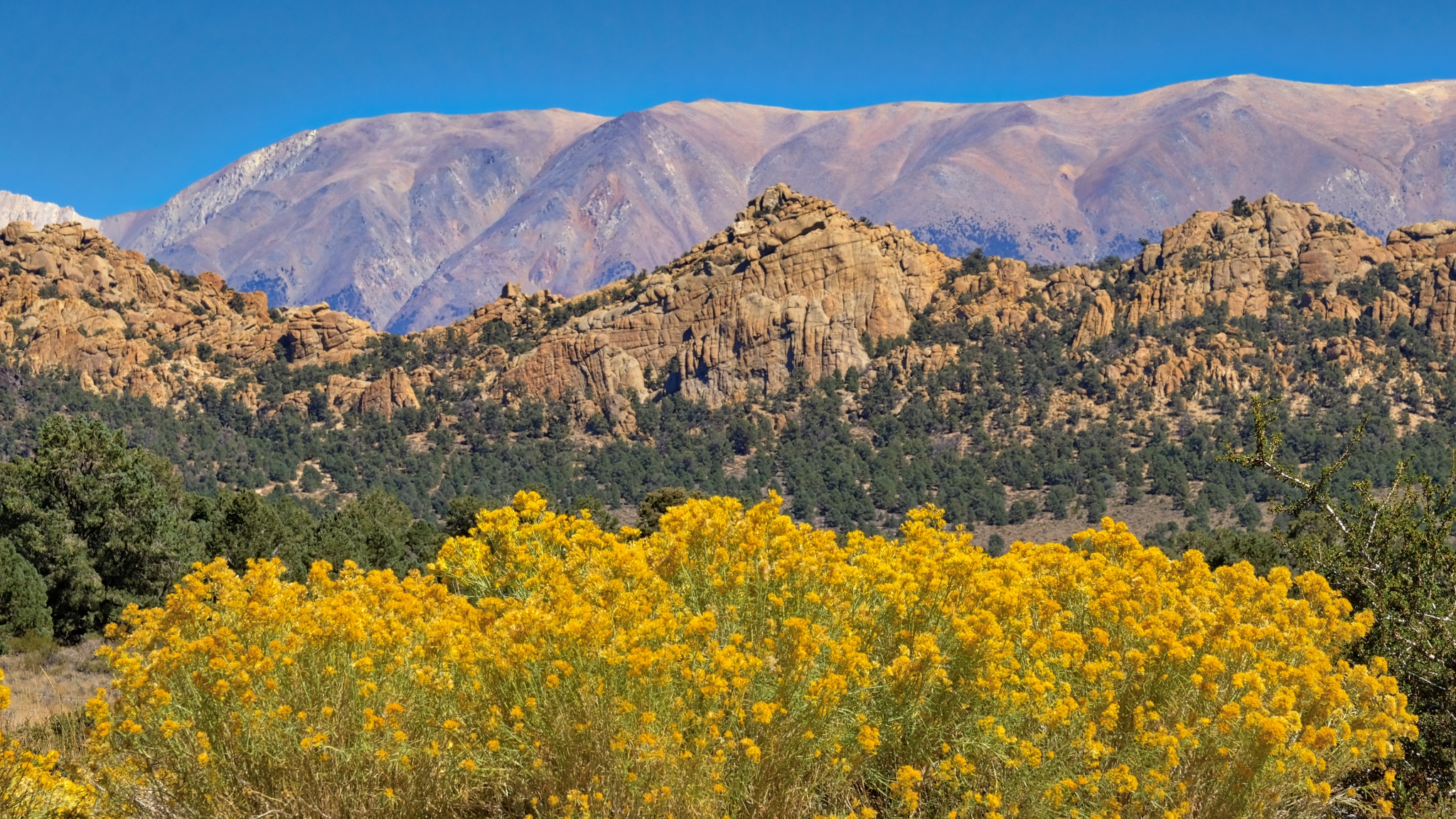 Some stunning flowering scenes as I began to gain in elevation into the Boundary Range.
Some stunning flowering scenes as I began to gain in elevation into the Boundary Range.
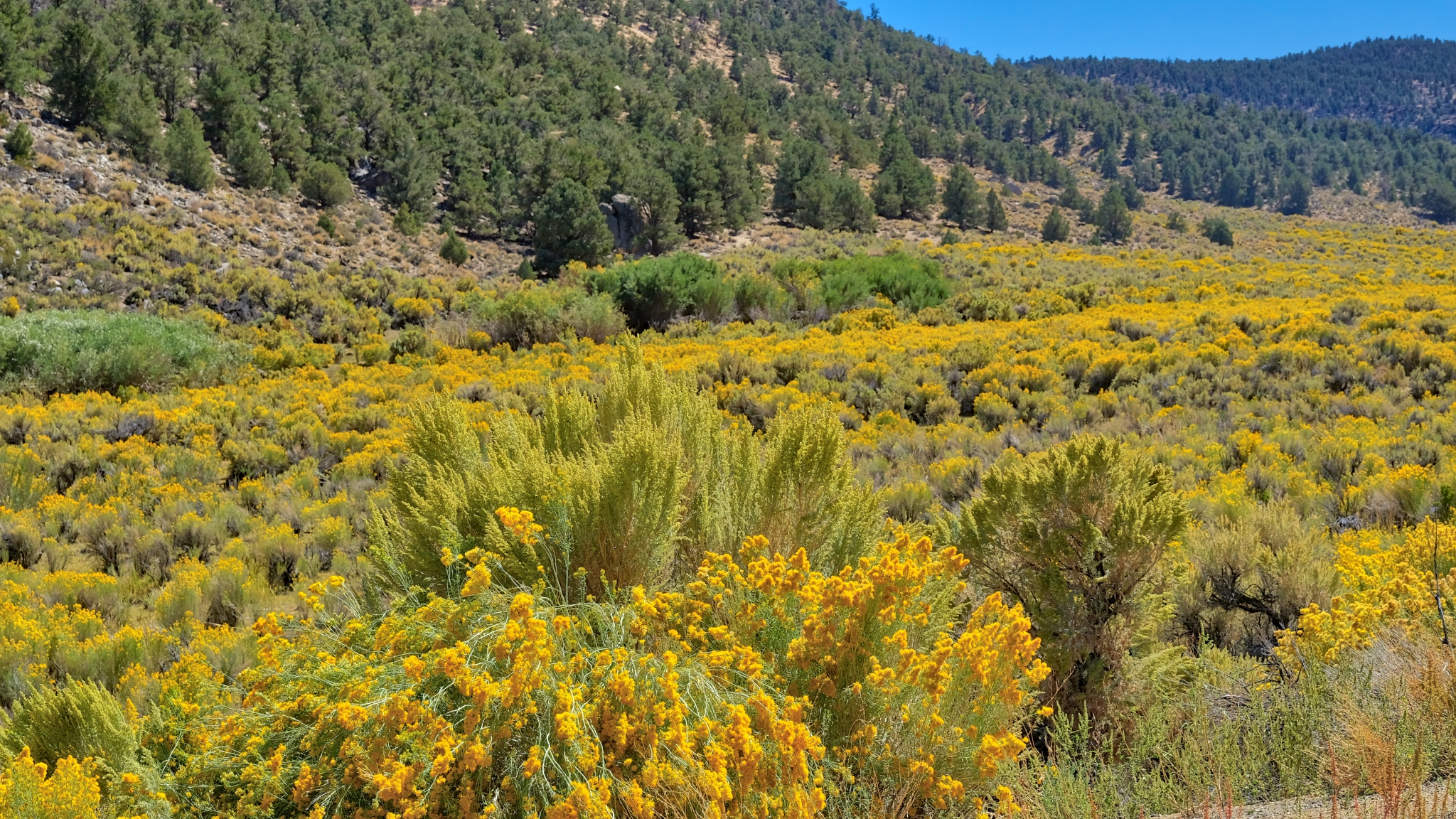 Up and over a mountain pass through a sea of yellow!
Up and over a mountain pass through a sea of yellow!
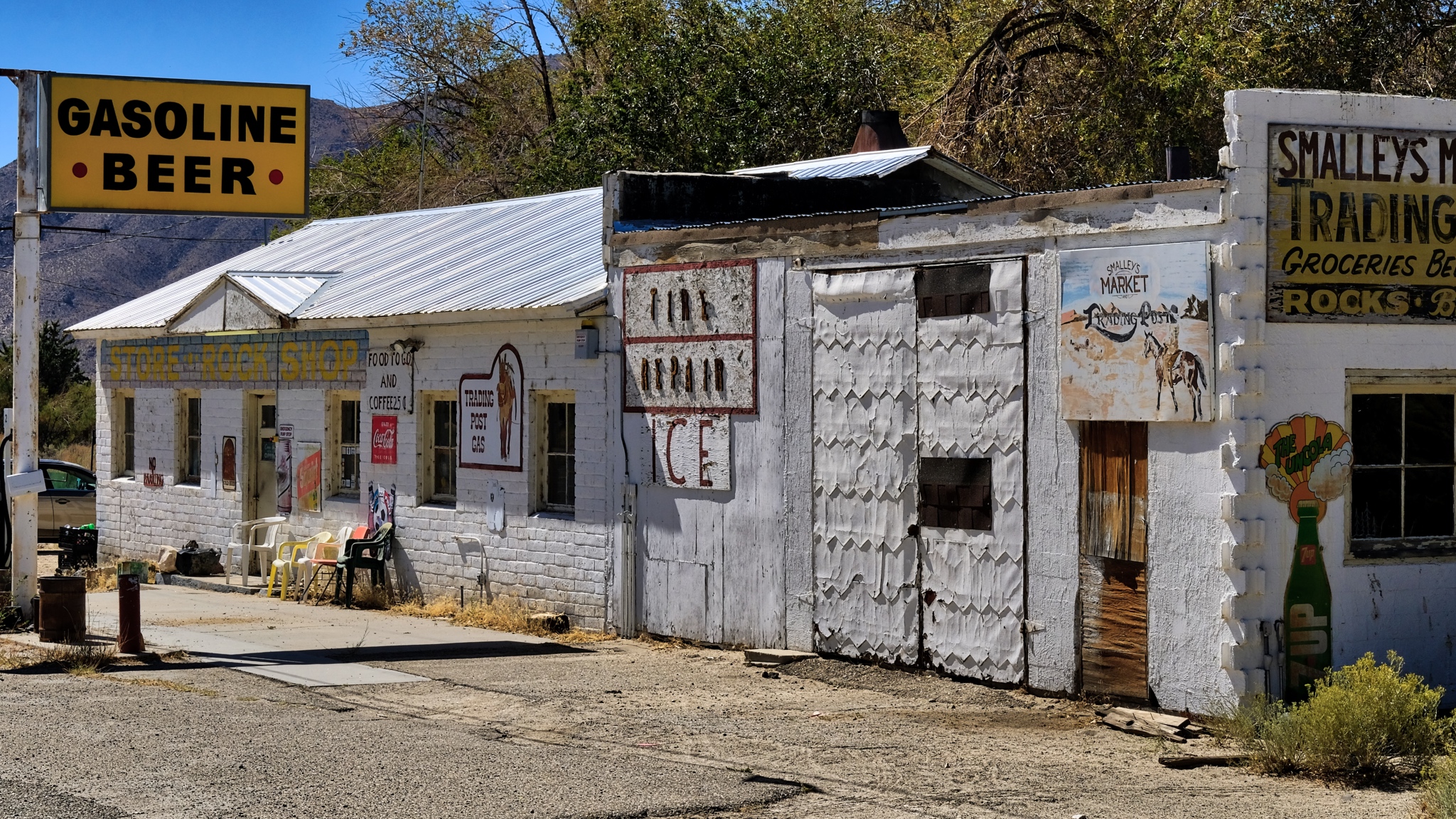 There were a few wide spots in the road along the way . . . here in Benton, California.
There were a few wide spots in the road along the way . . . here in Benton, California.
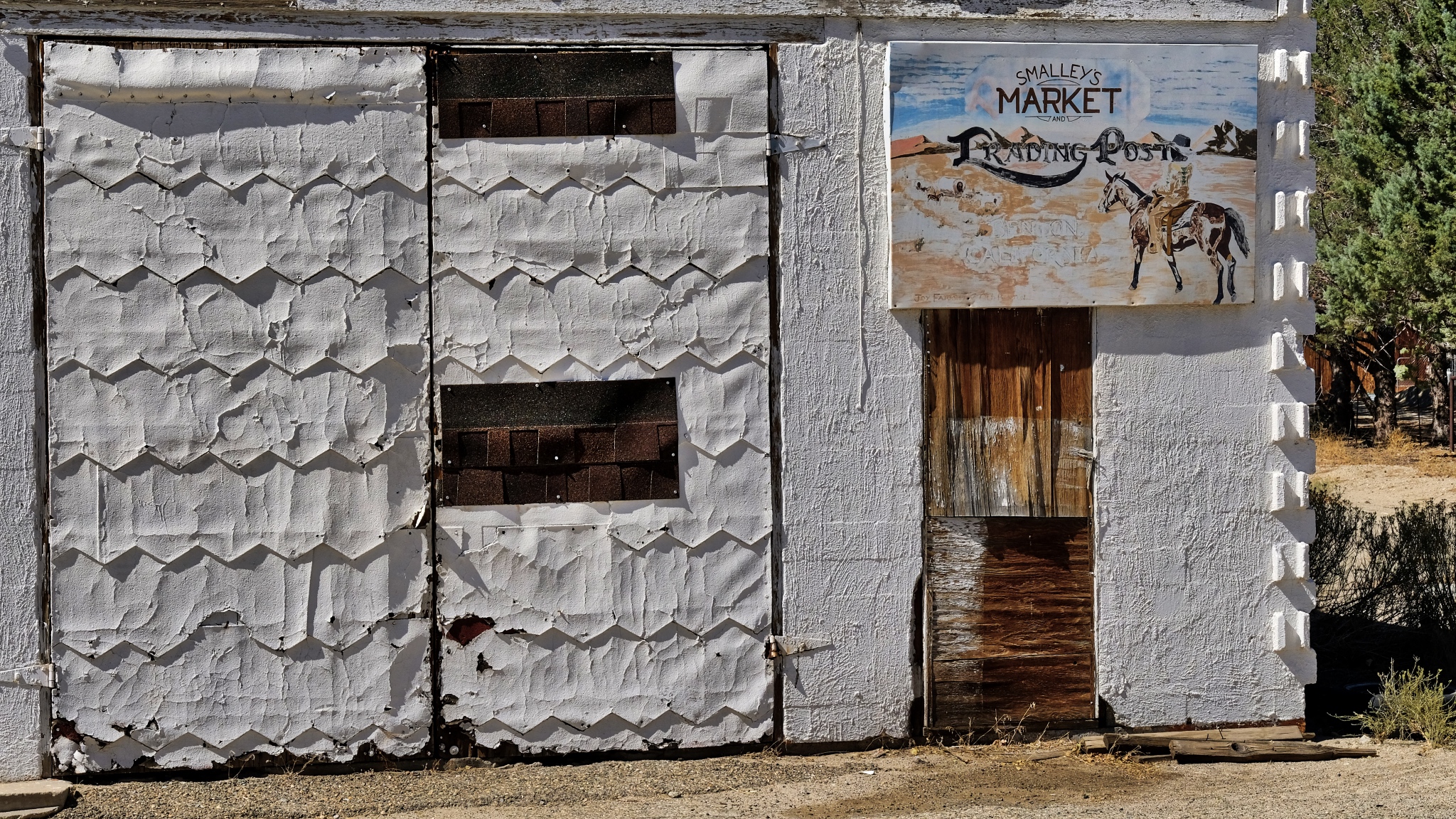 Fabulous textures of age.
Fabulous textures of age.
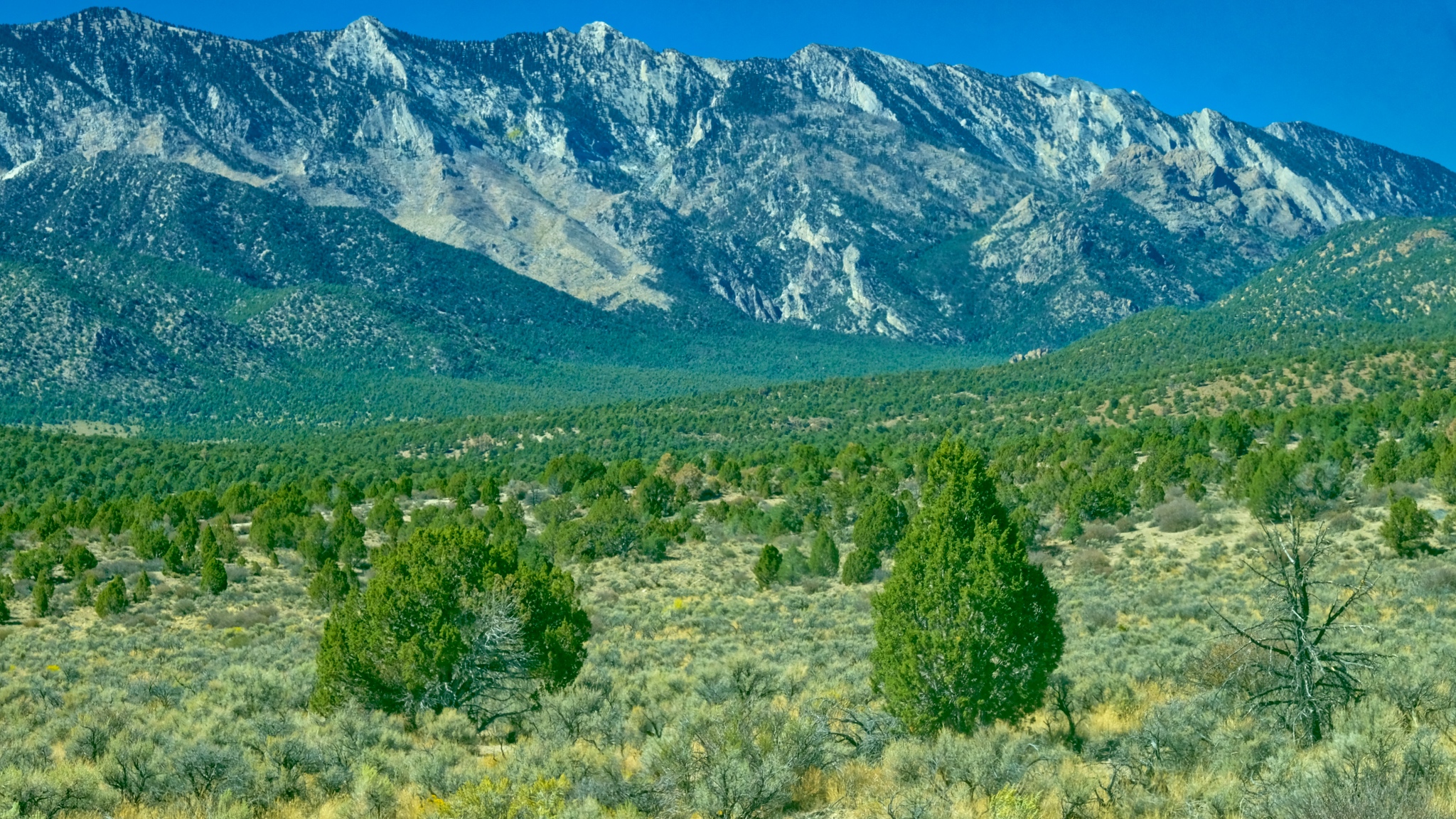 After Benton (and Benton Hot Springs), the GPS took me down 120 miles of gravel road to my destination. I was very happy about it too!
After Benton (and Benton Hot Springs), the GPS took me down 120 miles of gravel road to my destination. I was very happy about it too!
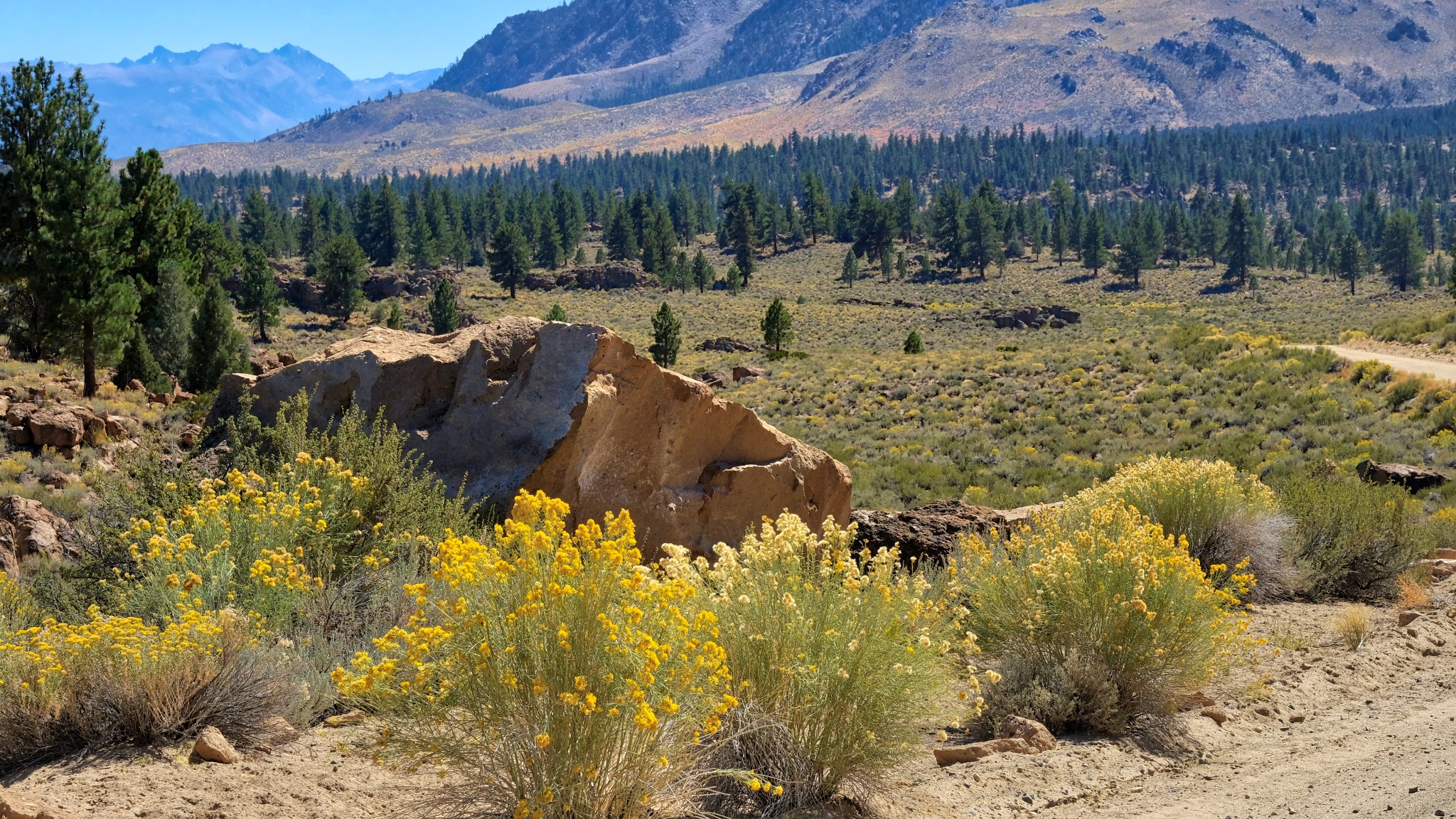 100 miles of this! I took my time.
100 miles of this! I took my time.
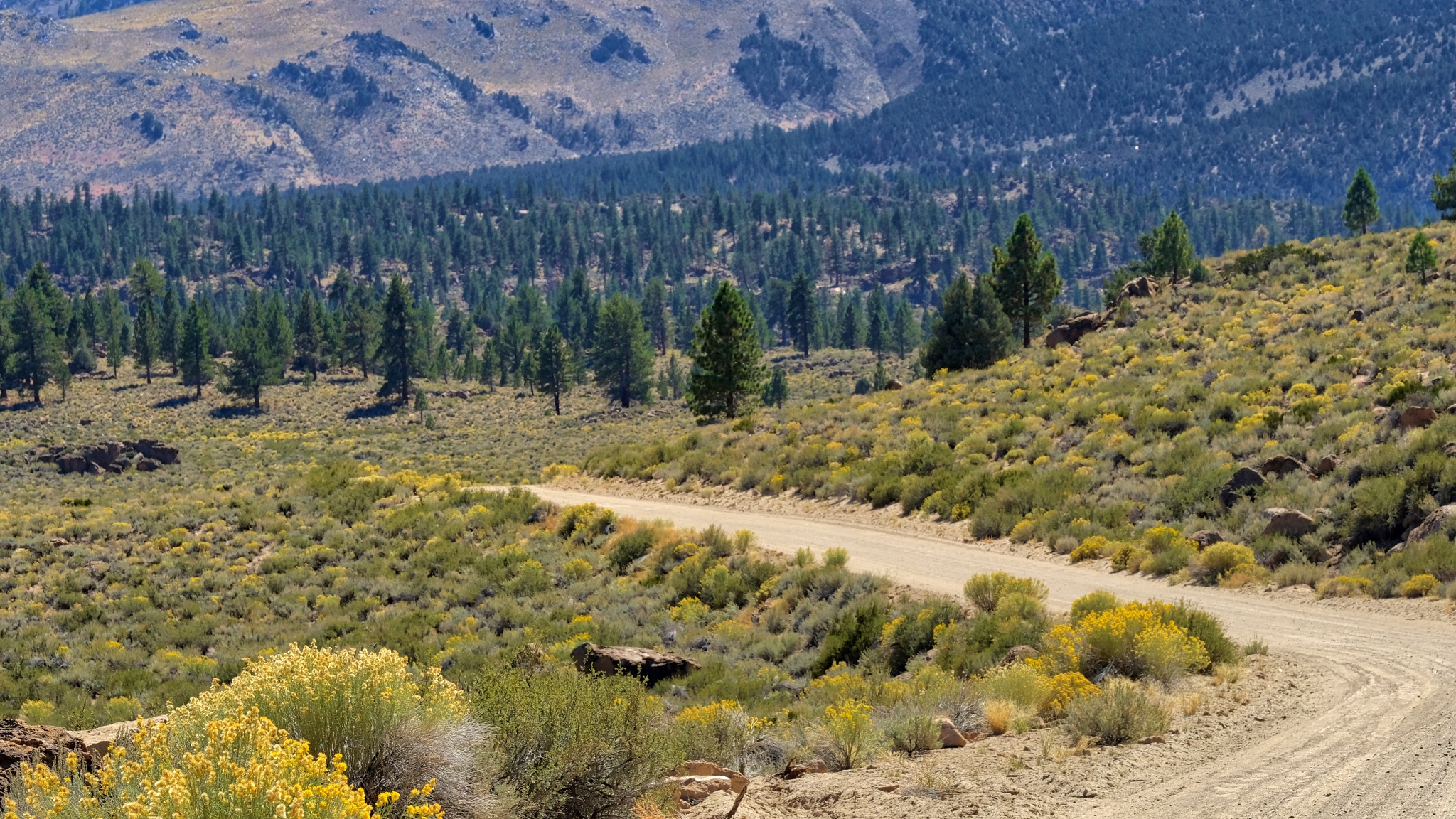 I drove for two hours on this gravel road and did not encounter a single other vehicle.
I drove for two hours on this gravel road and did not encounter a single other vehicle.
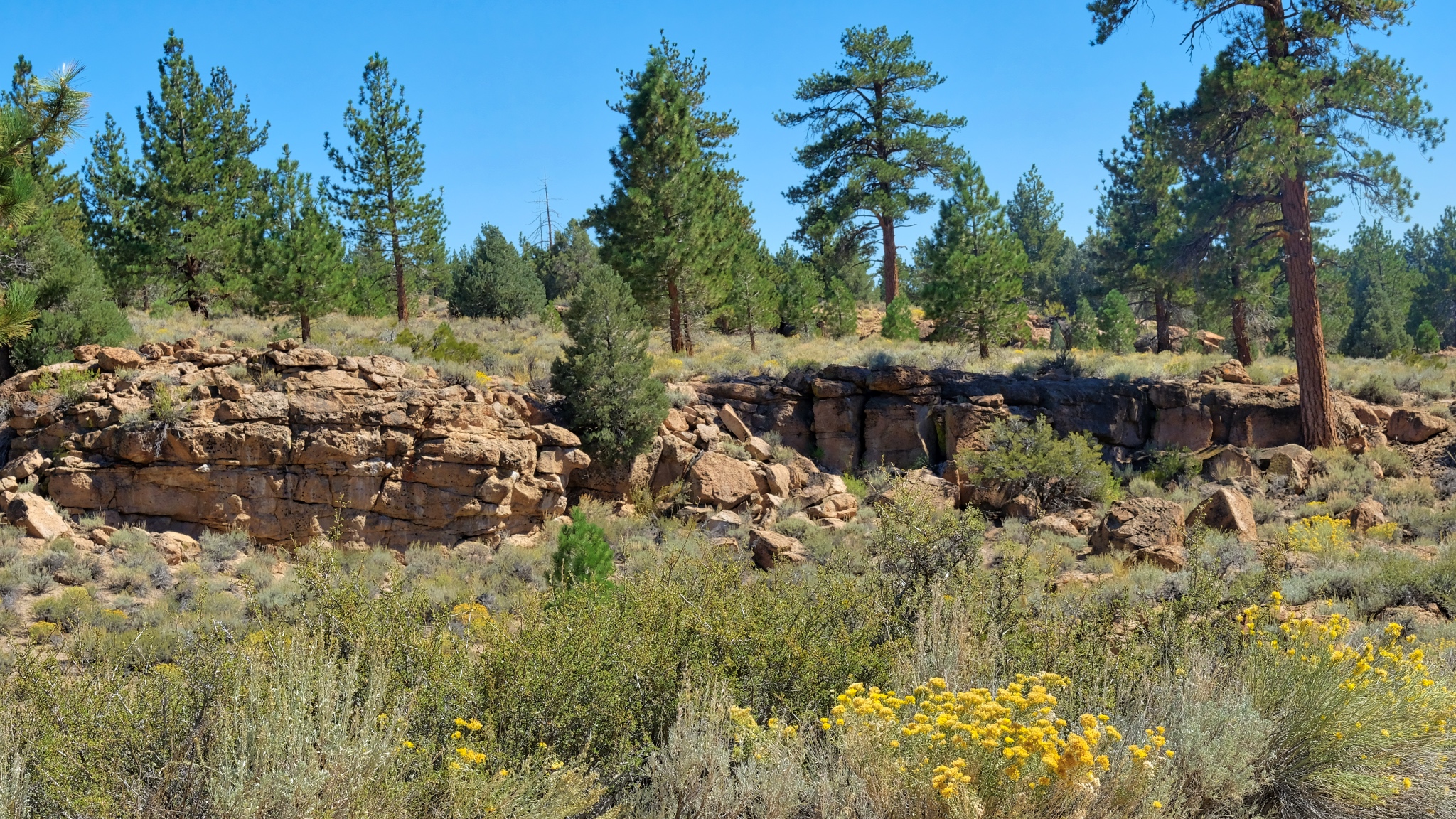 The trees became larger the more altitude I gained.
The trees became larger the more altitude I gained.
 Up and over and up and over many steep passes . . . .
Up and over and up and over many steep passes . . . .
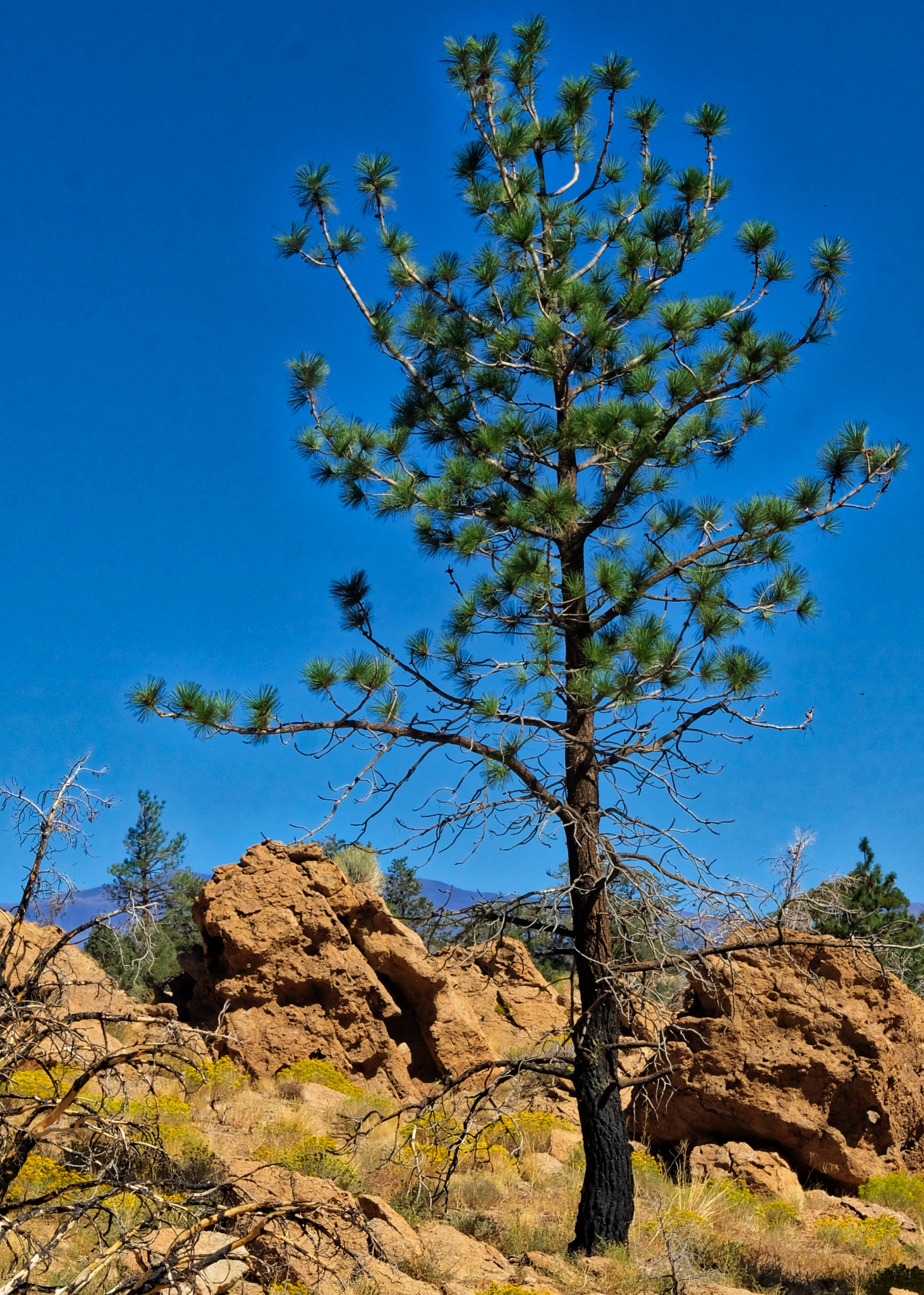 And on such a beautiful day . . . .
And on such a beautiful day . . . .
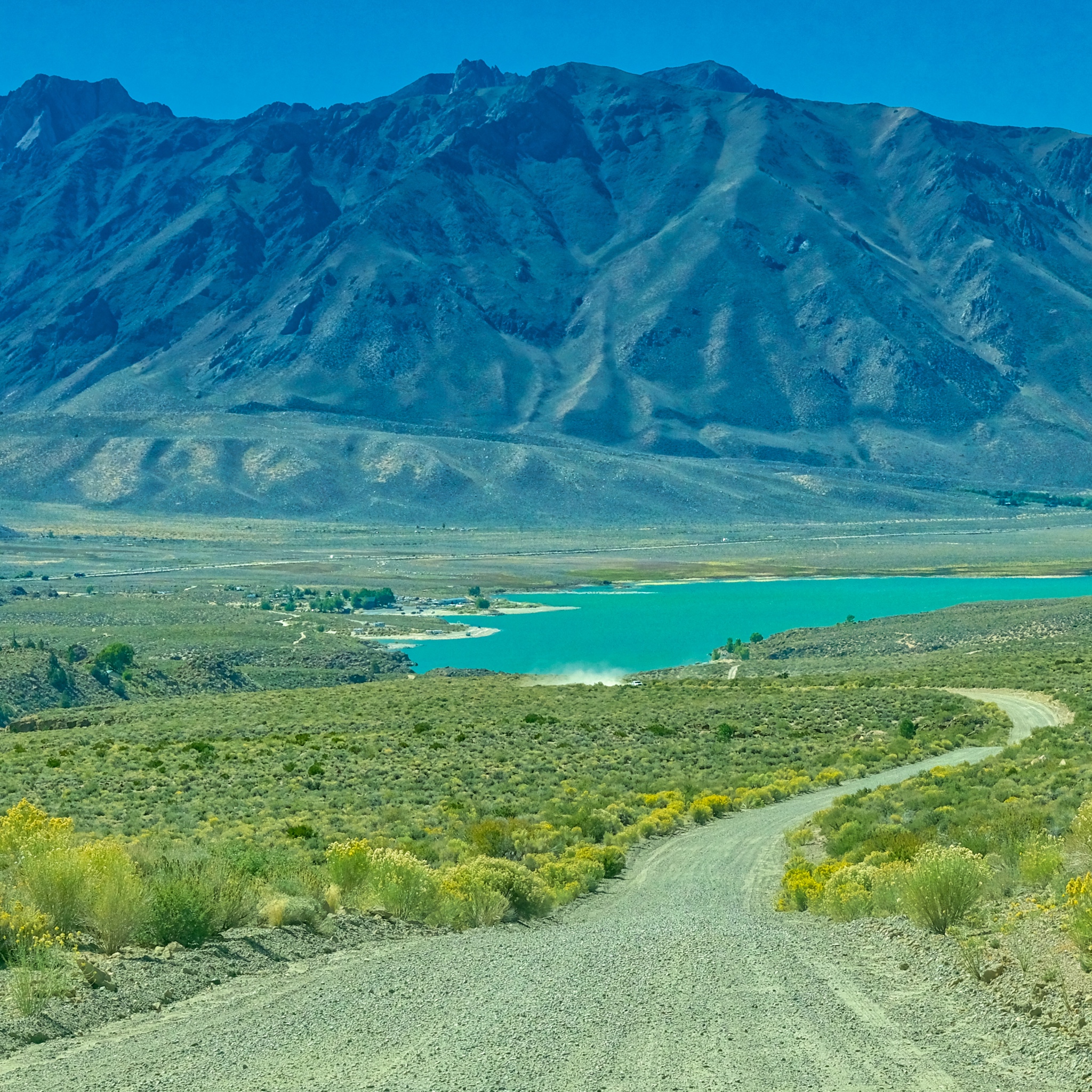 After two hours on Owens George Road I crested a hill to see Crowley Lake, just 15 miles from my final destination.
After two hours on Owens George Road I crested a hill to see Crowley Lake, just 15 miles from my final destination.
 Civilization At Last!!!!!
Civilization At Last!!!!!
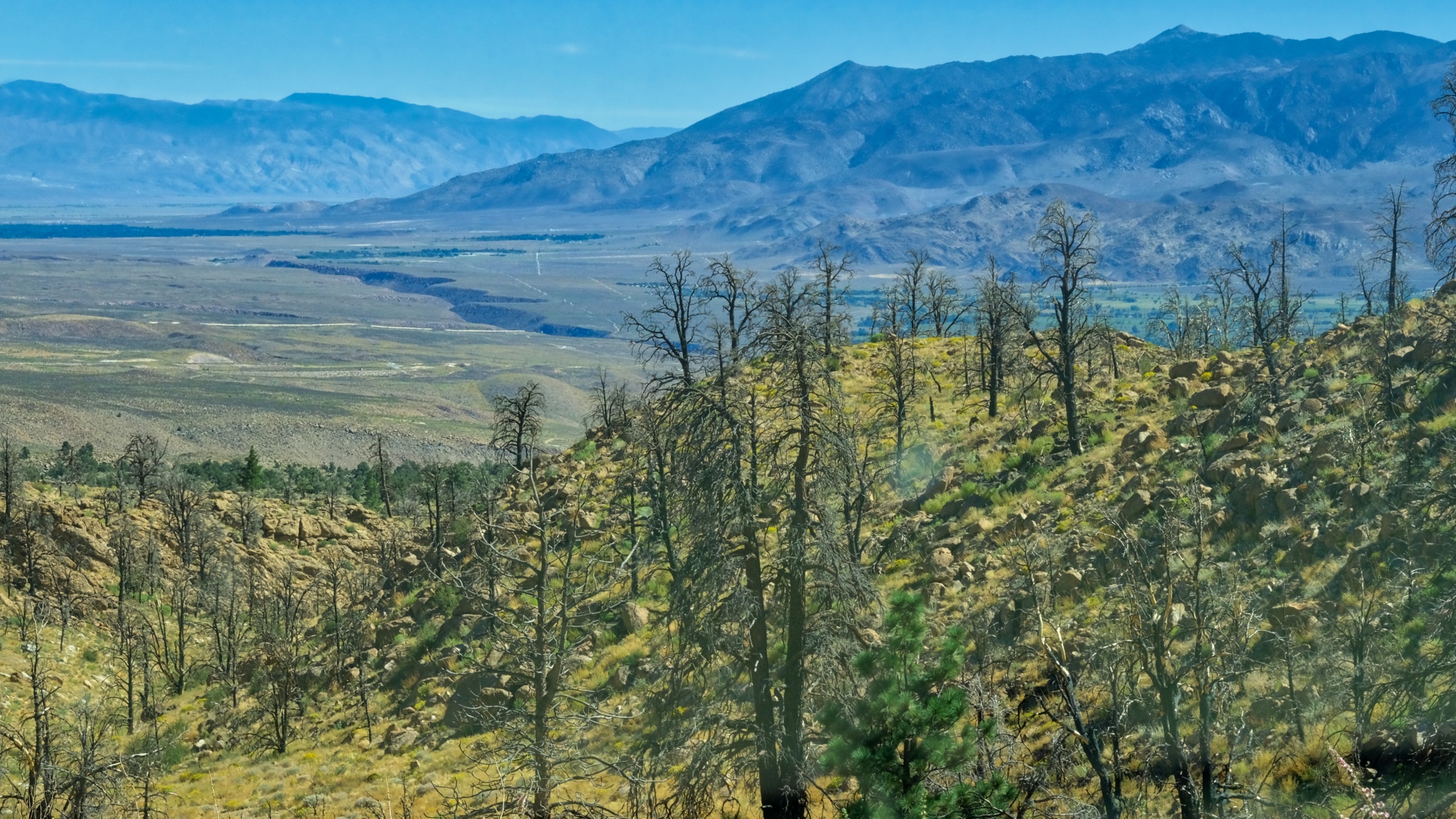 The view approaching Swall Meadows; looking toward Bishop, California in a recent burn.
The view approaching Swall Meadows; looking toward Bishop, California in a recent burn.
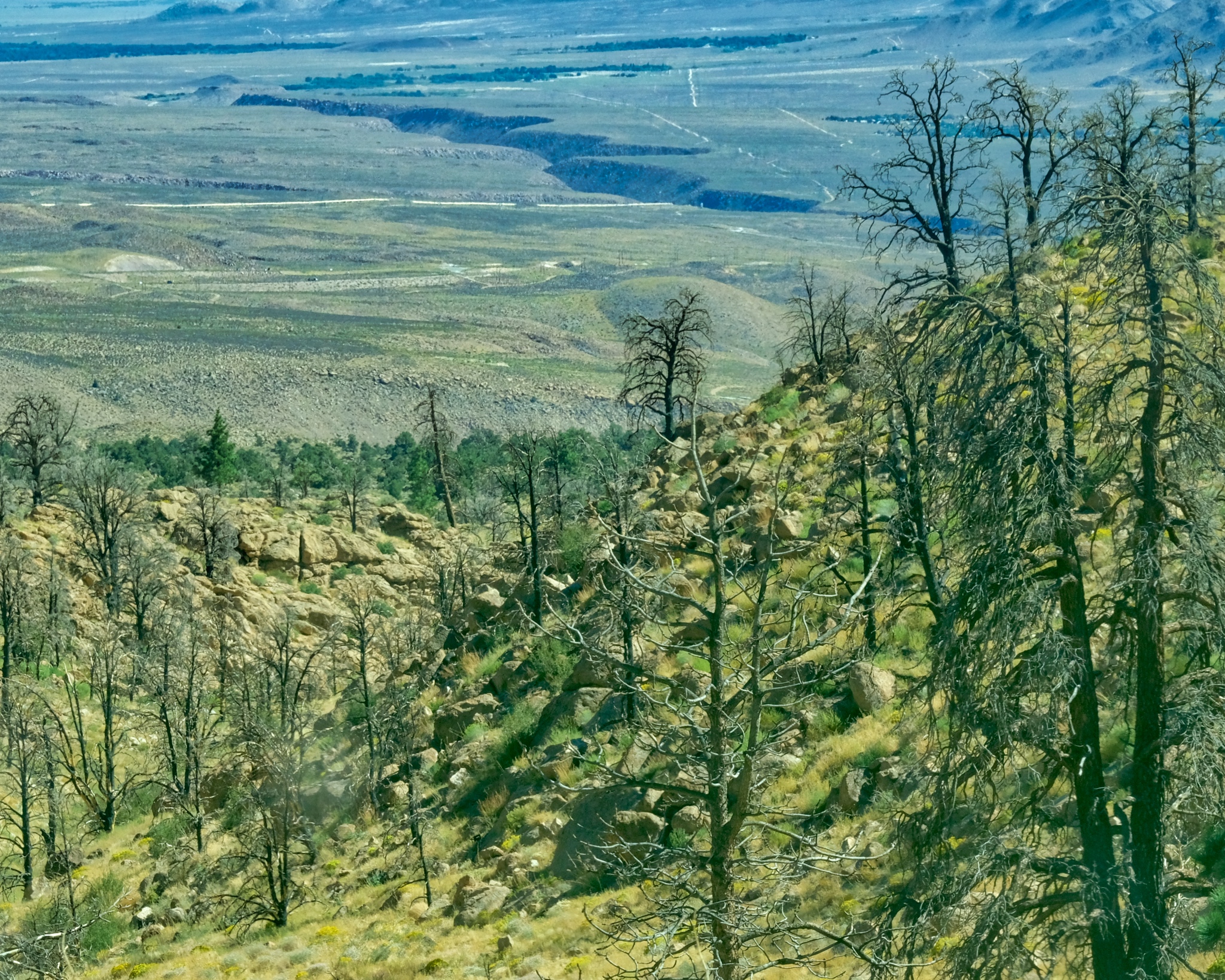 Near Swall Meadows where I would base myself for my next adventure: camping up in The Buttermilk Country.
Near Swall Meadows where I would base myself for my next adventure: camping up in The Buttermilk Country.
Road Trip USA: The New Jersey Shore
 Saturday, December 22, 2018 at 11:59AM
Saturday, December 22, 2018 at 11:59AM 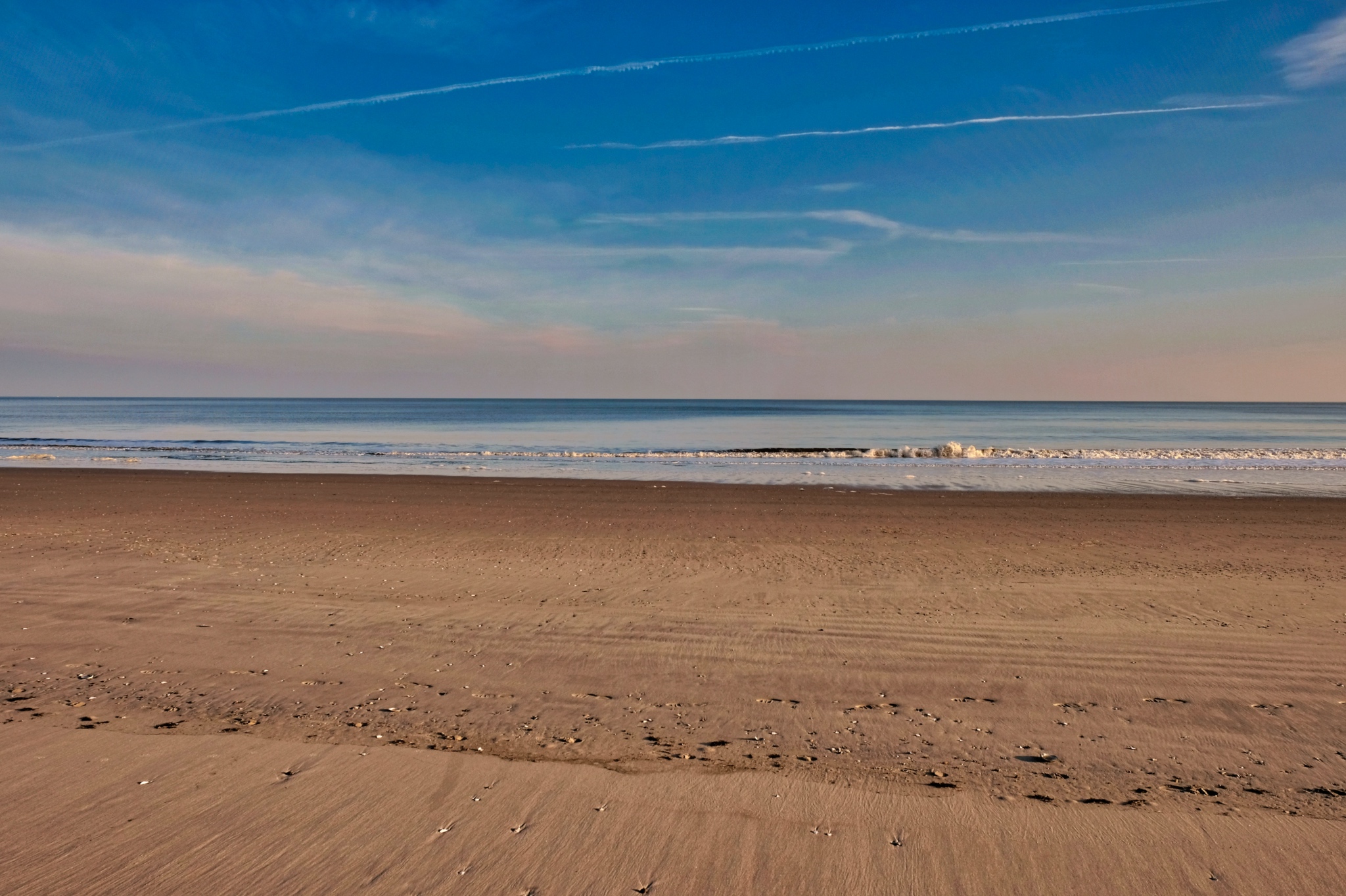 I have good friends who are semi-retired and live year round in Ocean City, New Jersey. I spent a wonderful five days visiting them.
I have good friends who are semi-retired and live year round in Ocean City, New Jersey. I spent a wonderful five days visiting them.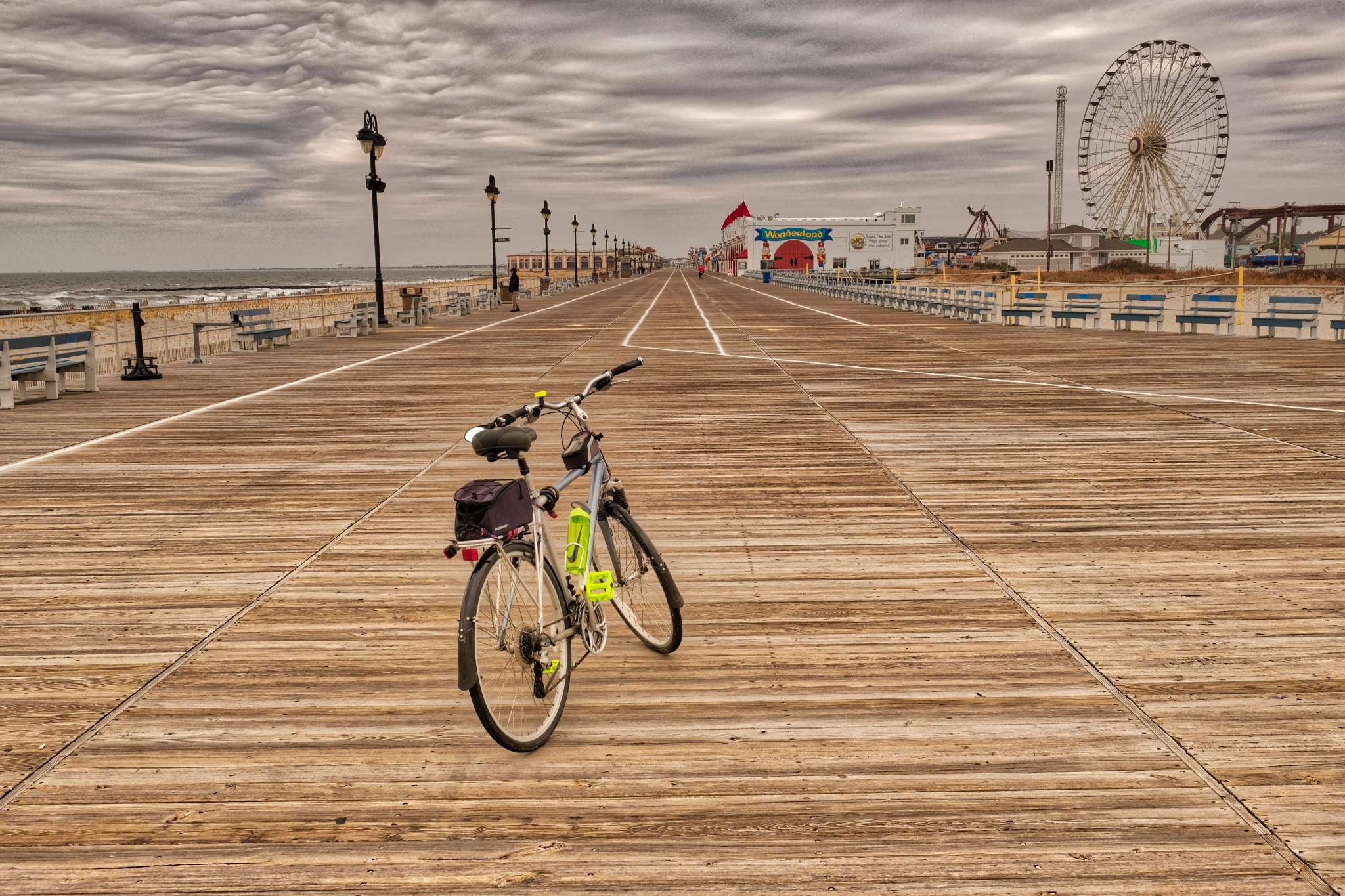 I brought my bicycle with me so that I could ride the many miles of Ocean City boardwalk.
I brought my bicycle with me so that I could ride the many miles of Ocean City boardwalk.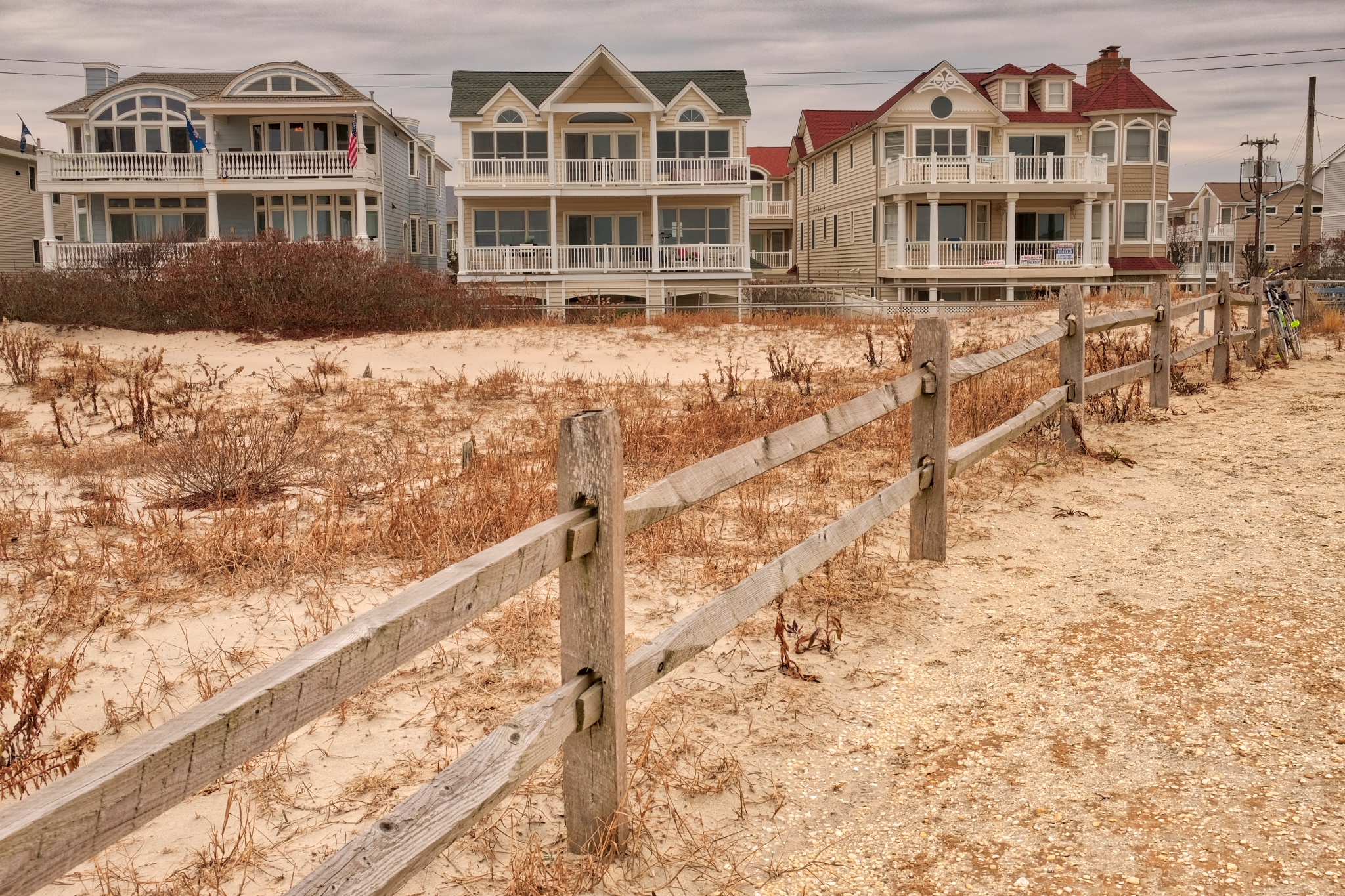 Although Ocean City is a very old beach resort (for mostly rich folks from Philadelphia), many of the old beach houses were torn down and replaced with these fanciful 'kit' beach houses. About 80% of these are vacant during the off-season.
Although Ocean City is a very old beach resort (for mostly rich folks from Philadelphia), many of the old beach houses were torn down and replaced with these fanciful 'kit' beach houses. About 80% of these are vacant during the off-season.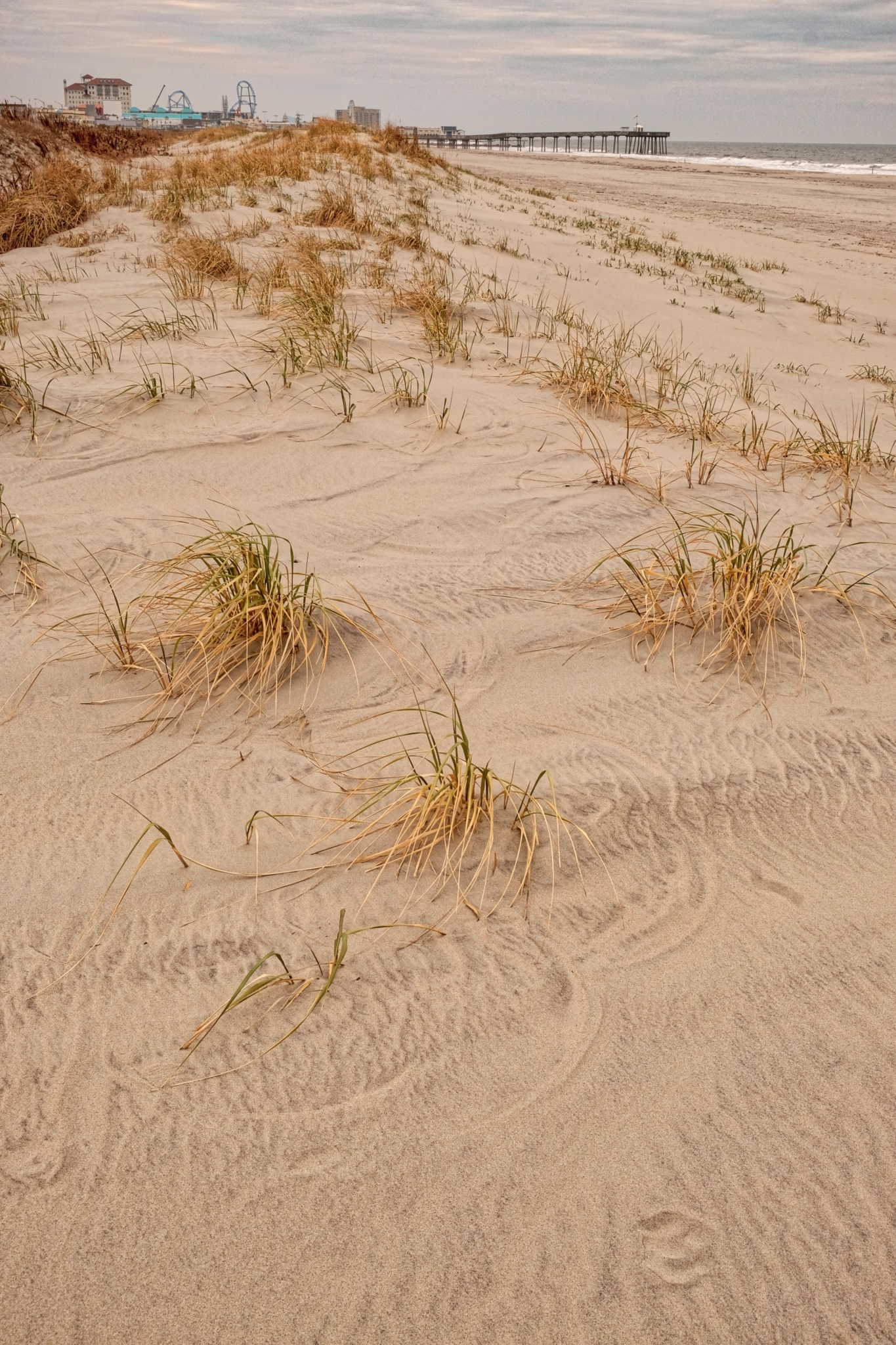 Ocean City has a nice beach. There used to be a major pier, but it was washed away during Hurricane Sandy . . . which also inundated Ocean City streets. The pier in the background is the private pier of the Ocean City Fishing Club.
Ocean City has a nice beach. There used to be a major pier, but it was washed away during Hurricane Sandy . . . which also inundated Ocean City streets. The pier in the background is the private pier of the Ocean City Fishing Club.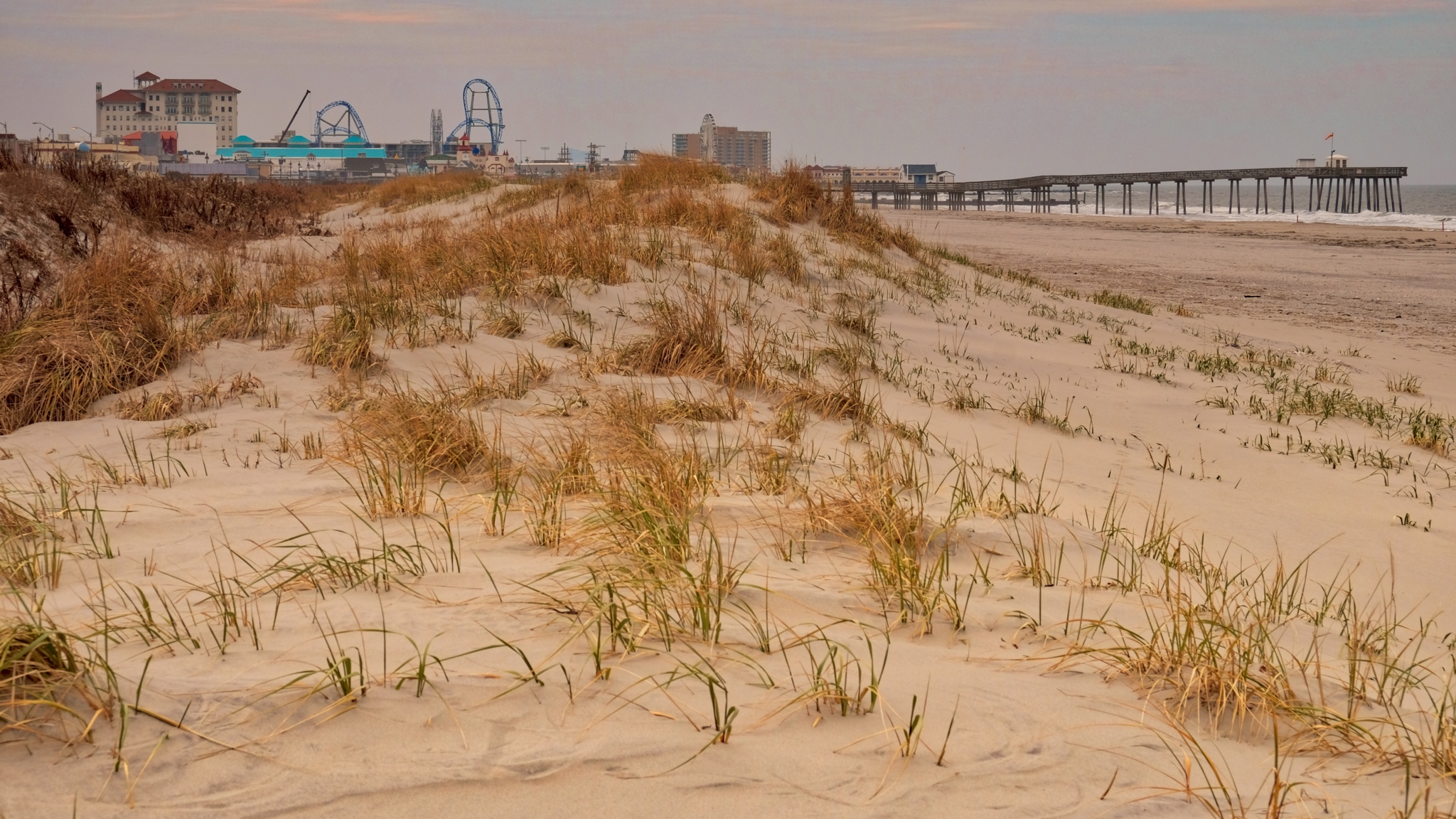 Ocean City has a few attractions, including a very fine boardwalk. The town is 'dry' - alcohol is not sold in stores, so it has gained a reputation as a family beach.
Ocean City has a few attractions, including a very fine boardwalk. The town is 'dry' - alcohol is not sold in stores, so it has gained a reputation as a family beach.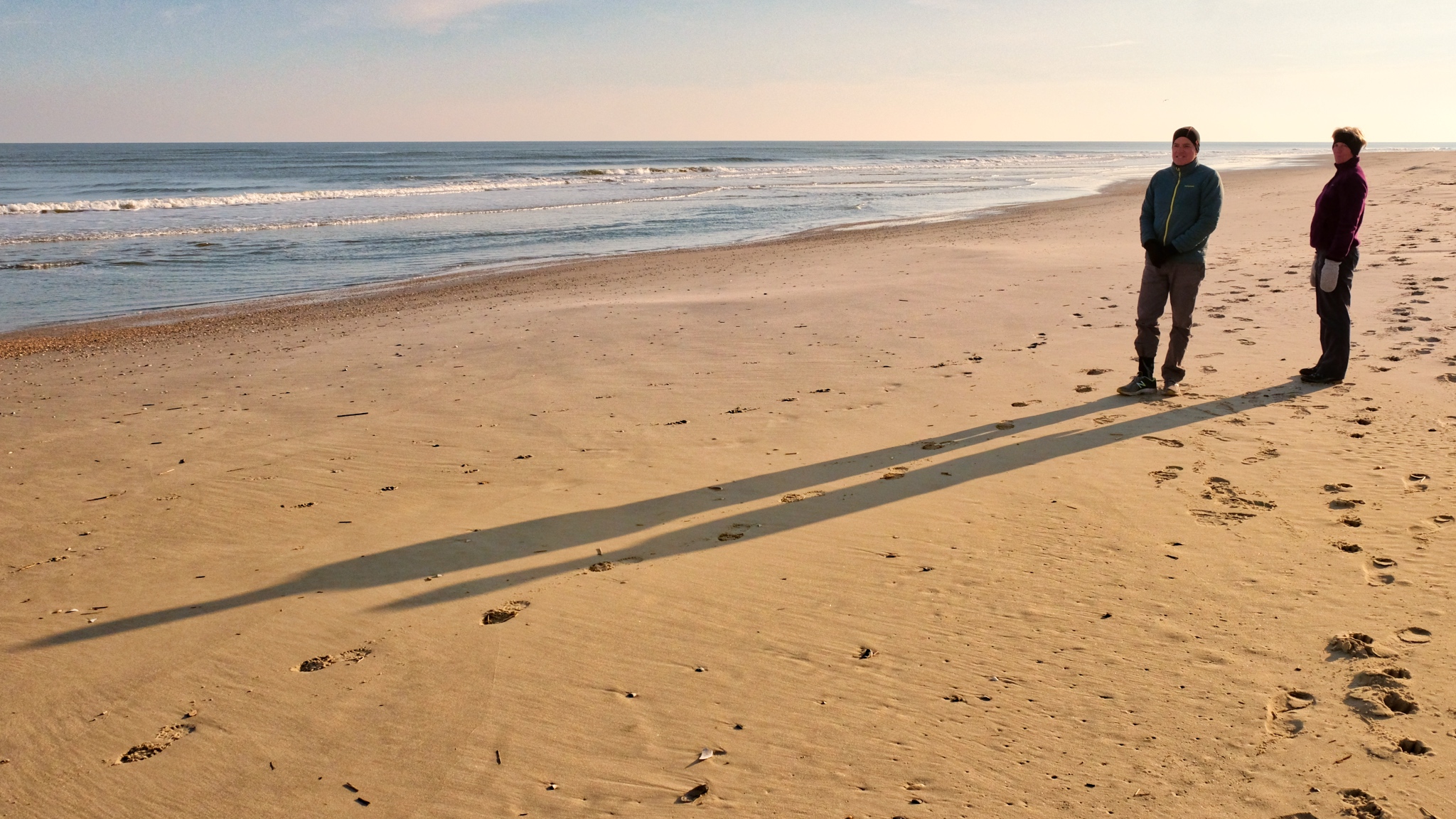 We had the beach to ourselves every day.
We had the beach to ourselves every day.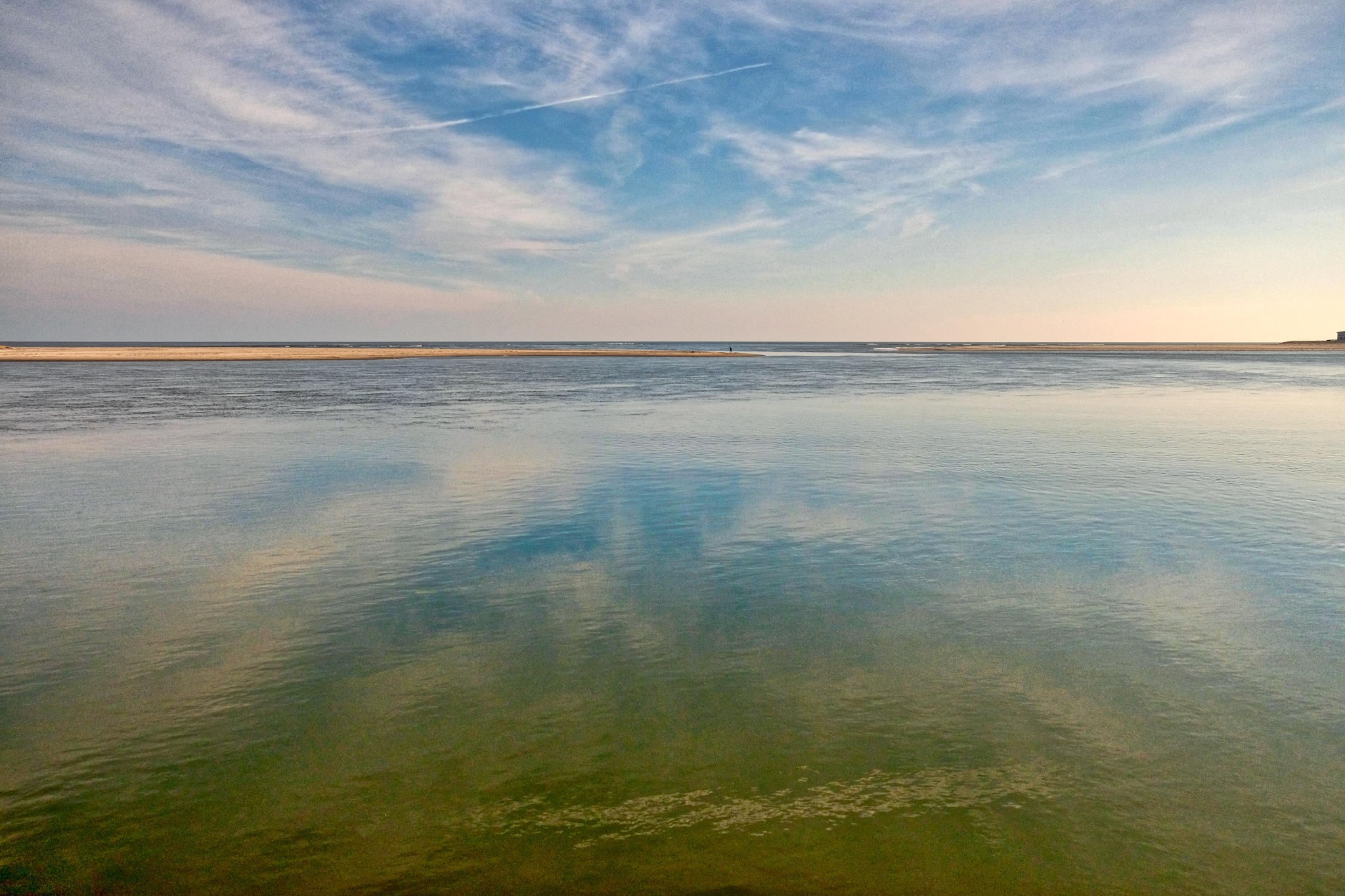 I had the good luck to be here between storms . . . and wind. Quite mild and calm days for December. We took a nice bike ride to a nearby island and saw this inlet along the way.
I had the good luck to be here between storms . . . and wind. Quite mild and calm days for December. We took a nice bike ride to a nearby island and saw this inlet along the way.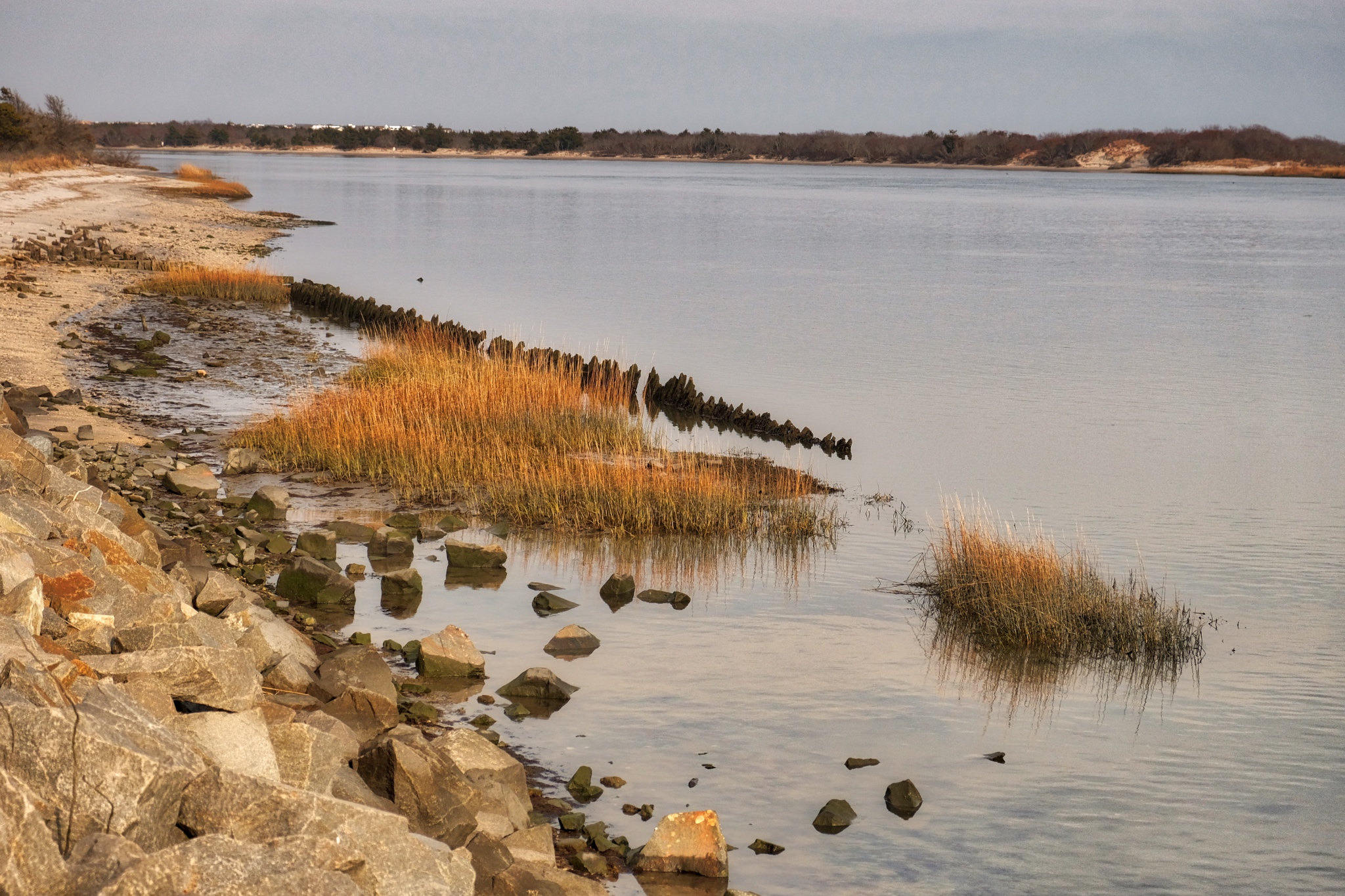 Much of the area to the west of Ocean City is designated as a wildlife reserve.
Much of the area to the west of Ocean City is designated as a wildlife reserve.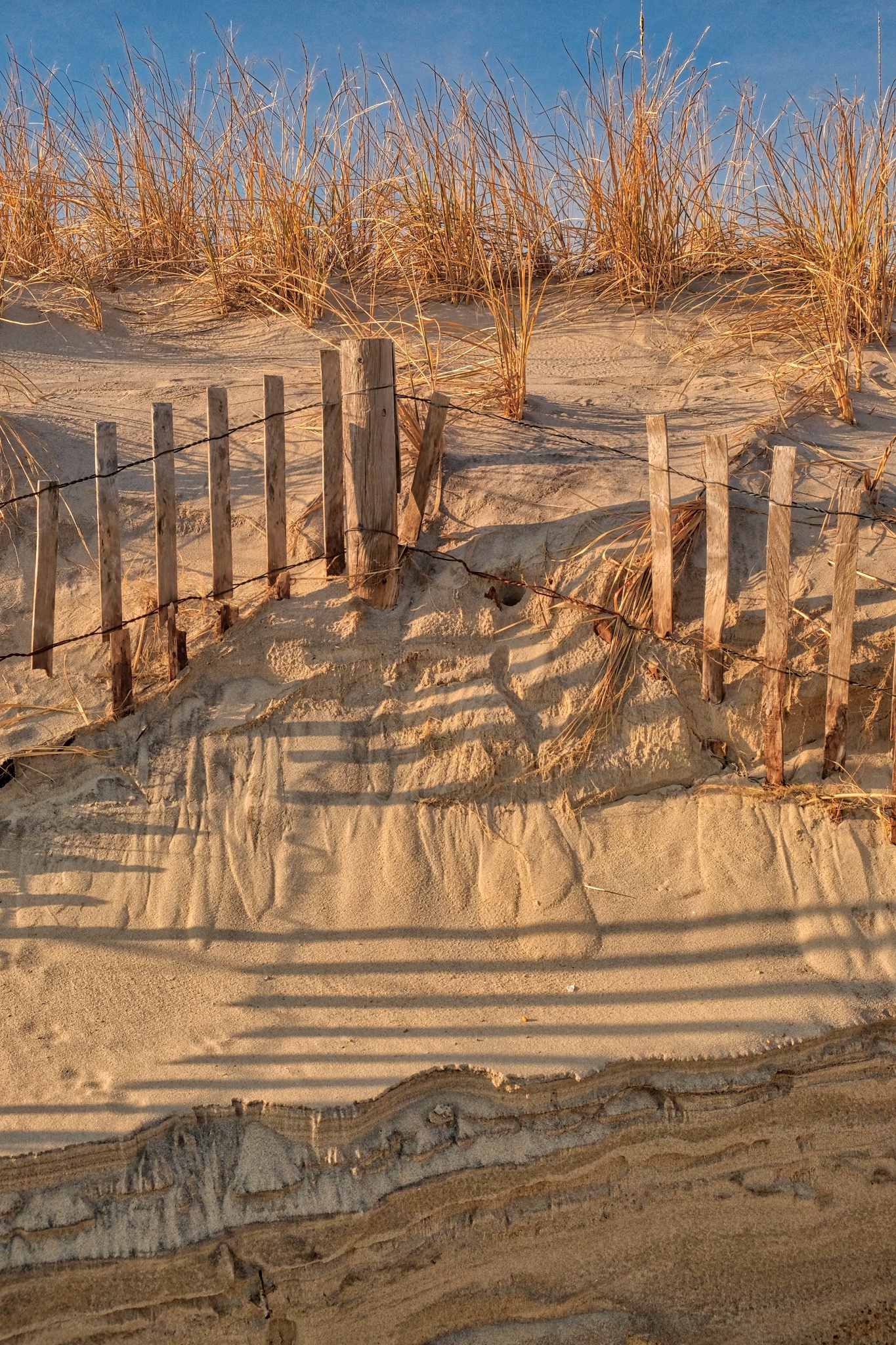 Beach erosion is still an issue. Successive hurricanes and 'noreasters' severely depleted the sands. The local government dredged the seabed and sprayed sand back to make a new beach. It will have to find it's new 'natural' levels.
Beach erosion is still an issue. Successive hurricanes and 'noreasters' severely depleted the sands. The local government dredged the seabed and sprayed sand back to make a new beach. It will have to find it's new 'natural' levels.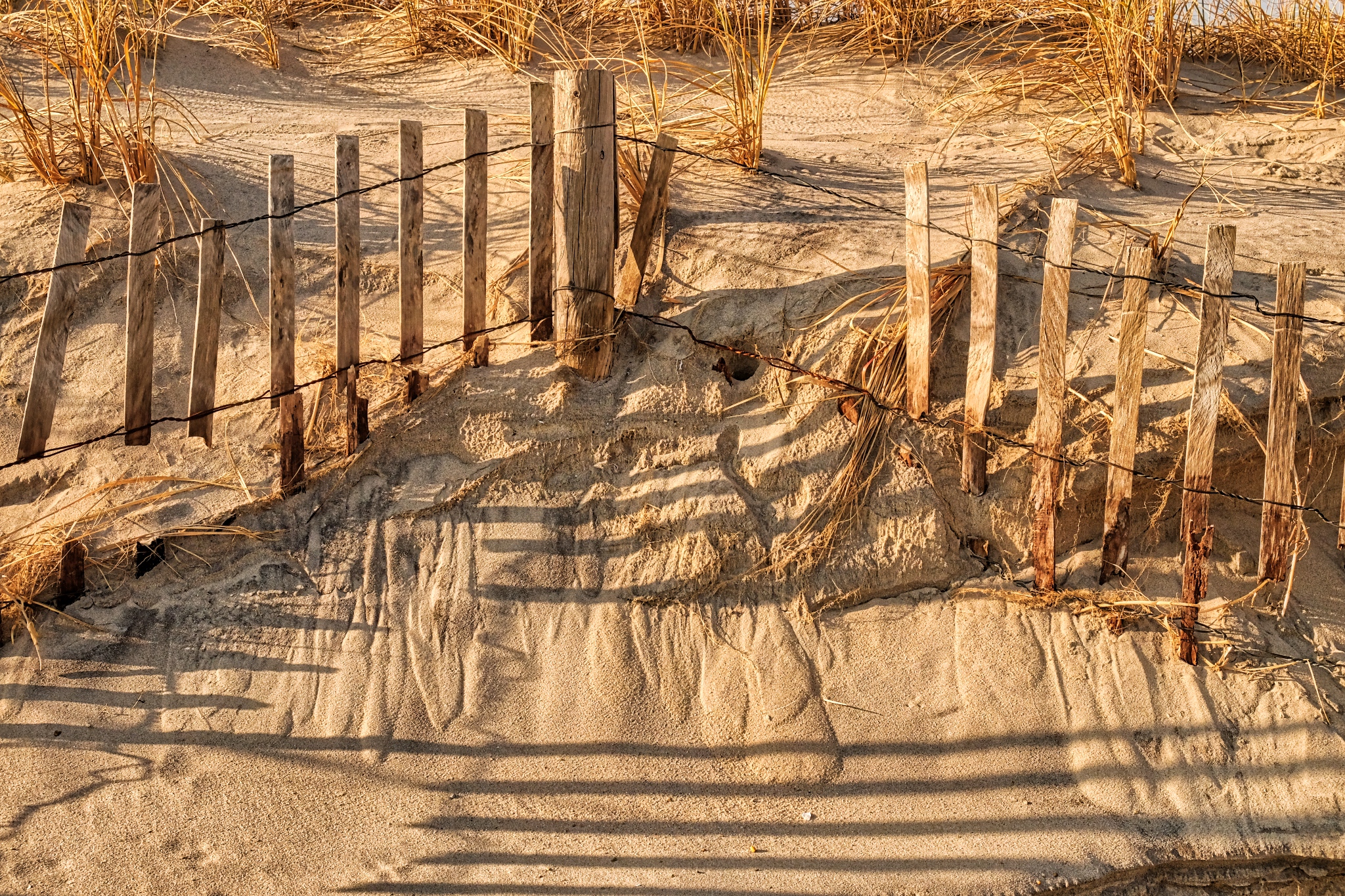 Wonderful patterns, shapes, and shadows in the beach dunes.
Wonderful patterns, shapes, and shadows in the beach dunes.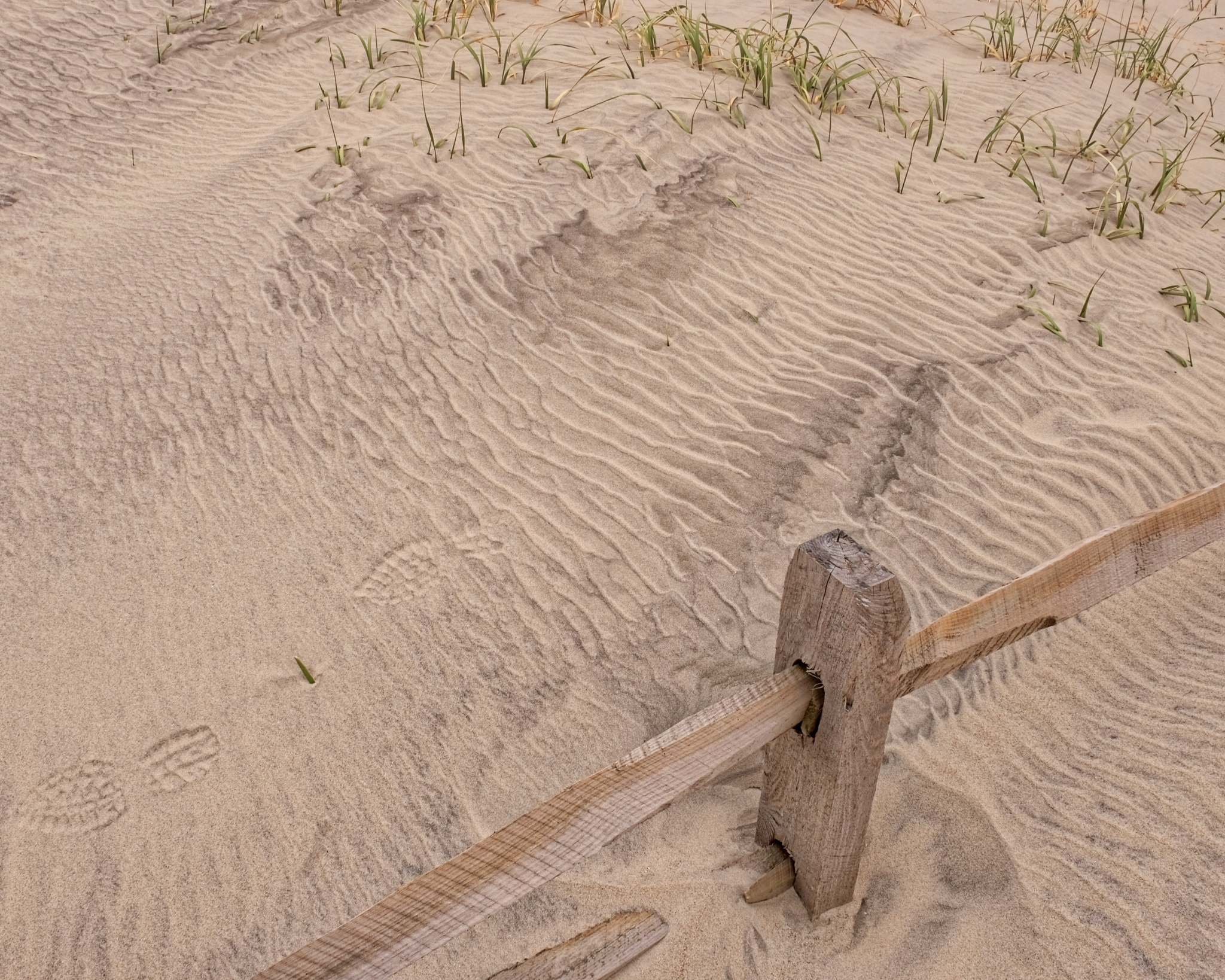 Wind patterns in the sand.
Wind patterns in the sand.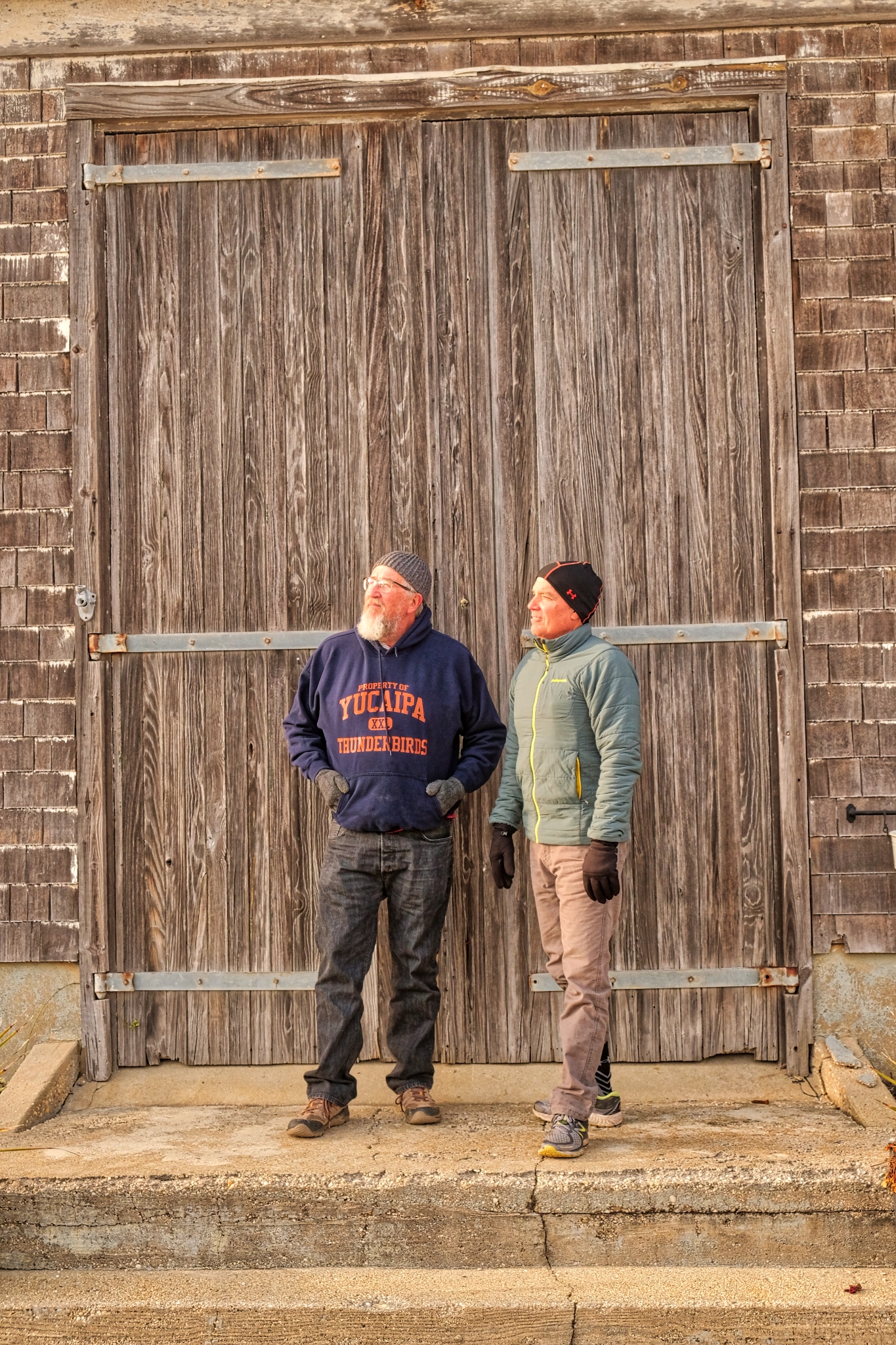 With my good buddy, Bud.
With my good buddy, Bud.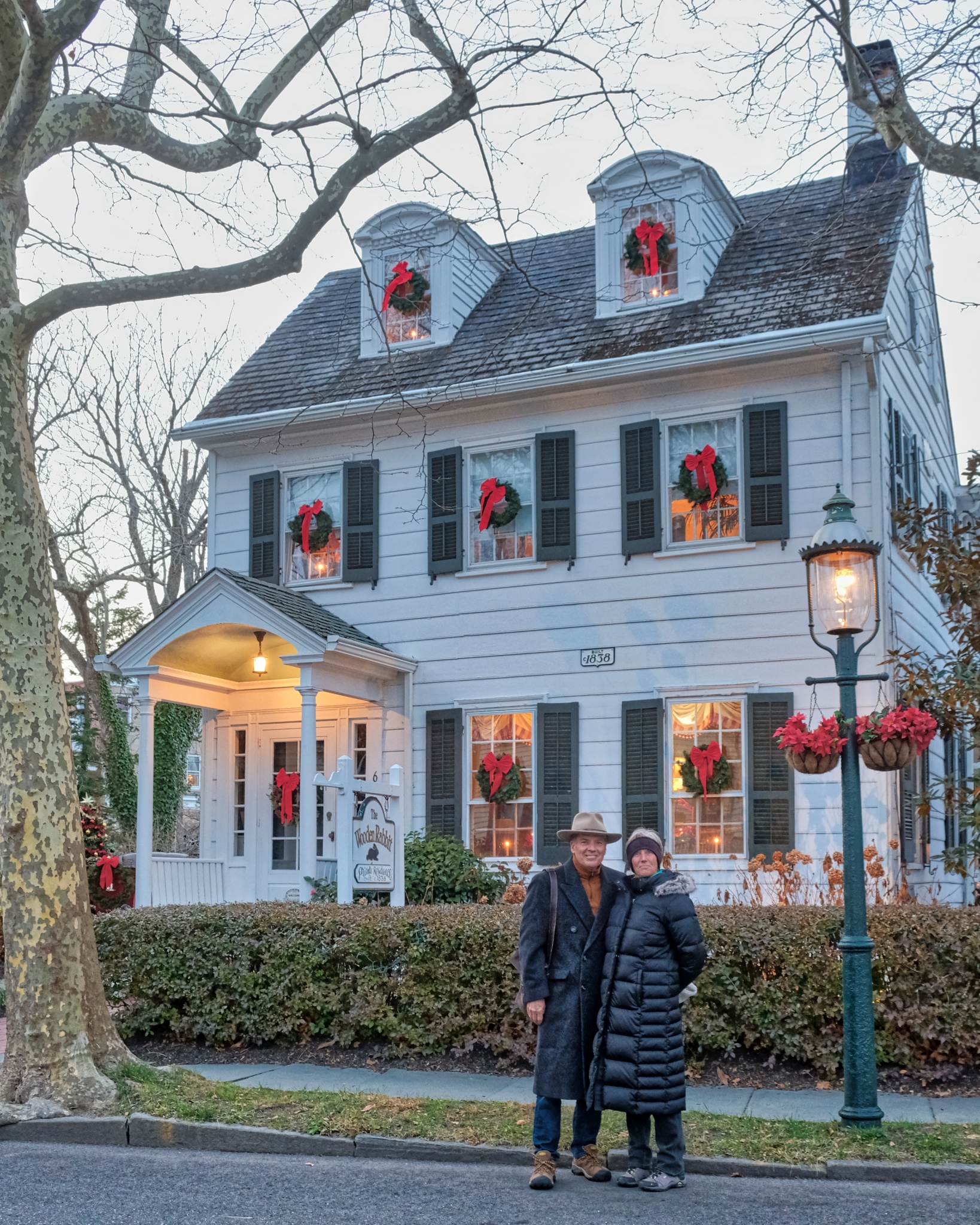 My friends and I drove 20 minutes south to the lovely colonial seaside village of Cape May in the late afternoon to see the decorated old Victorian and Colonial houses.
My friends and I drove 20 minutes south to the lovely colonial seaside village of Cape May in the late afternoon to see the decorated old Victorian and Colonial houses.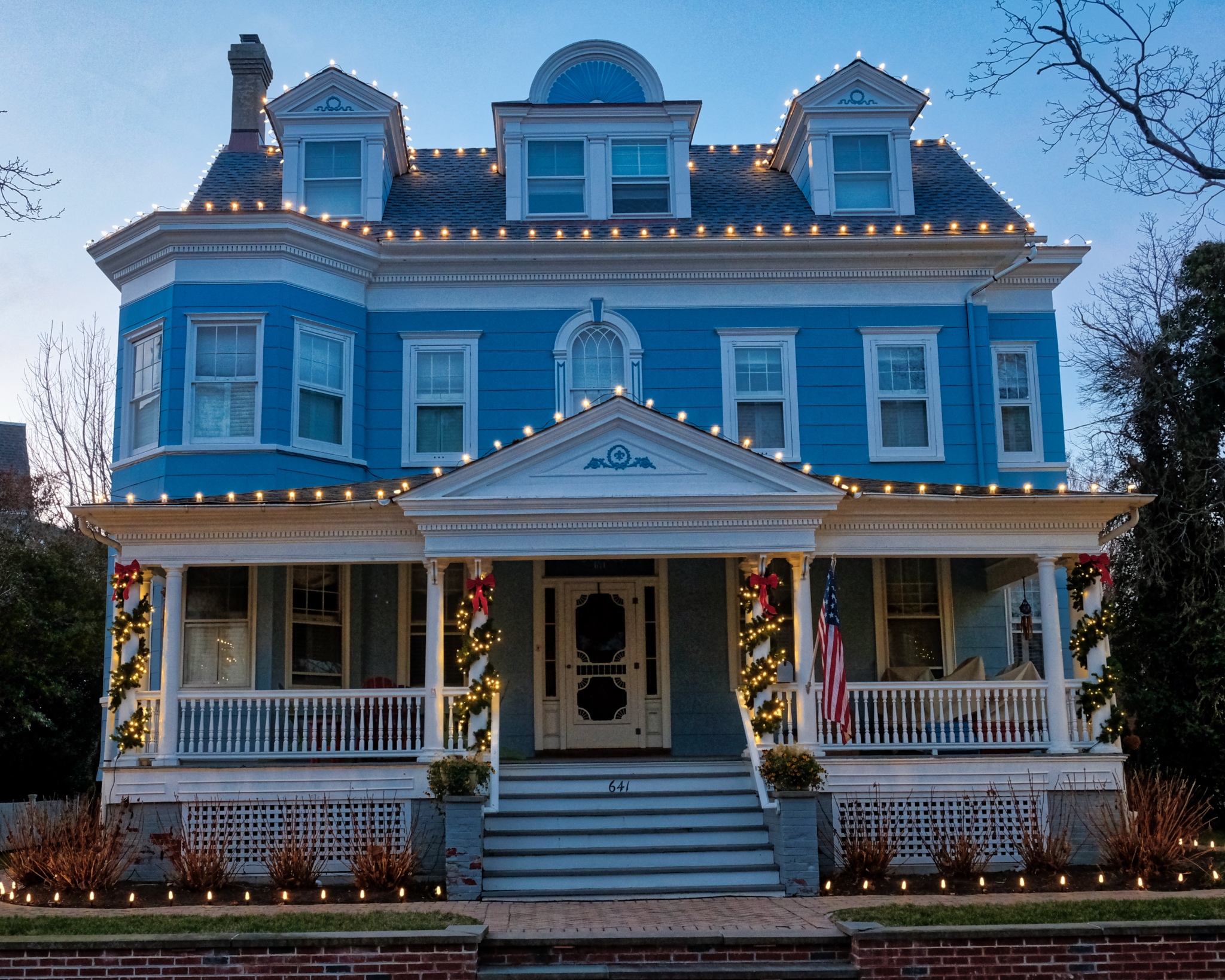 The sun had just gone down . . . and the houses were beginning to take on their night identity.
The sun had just gone down . . . and the houses were beginning to take on their night identity.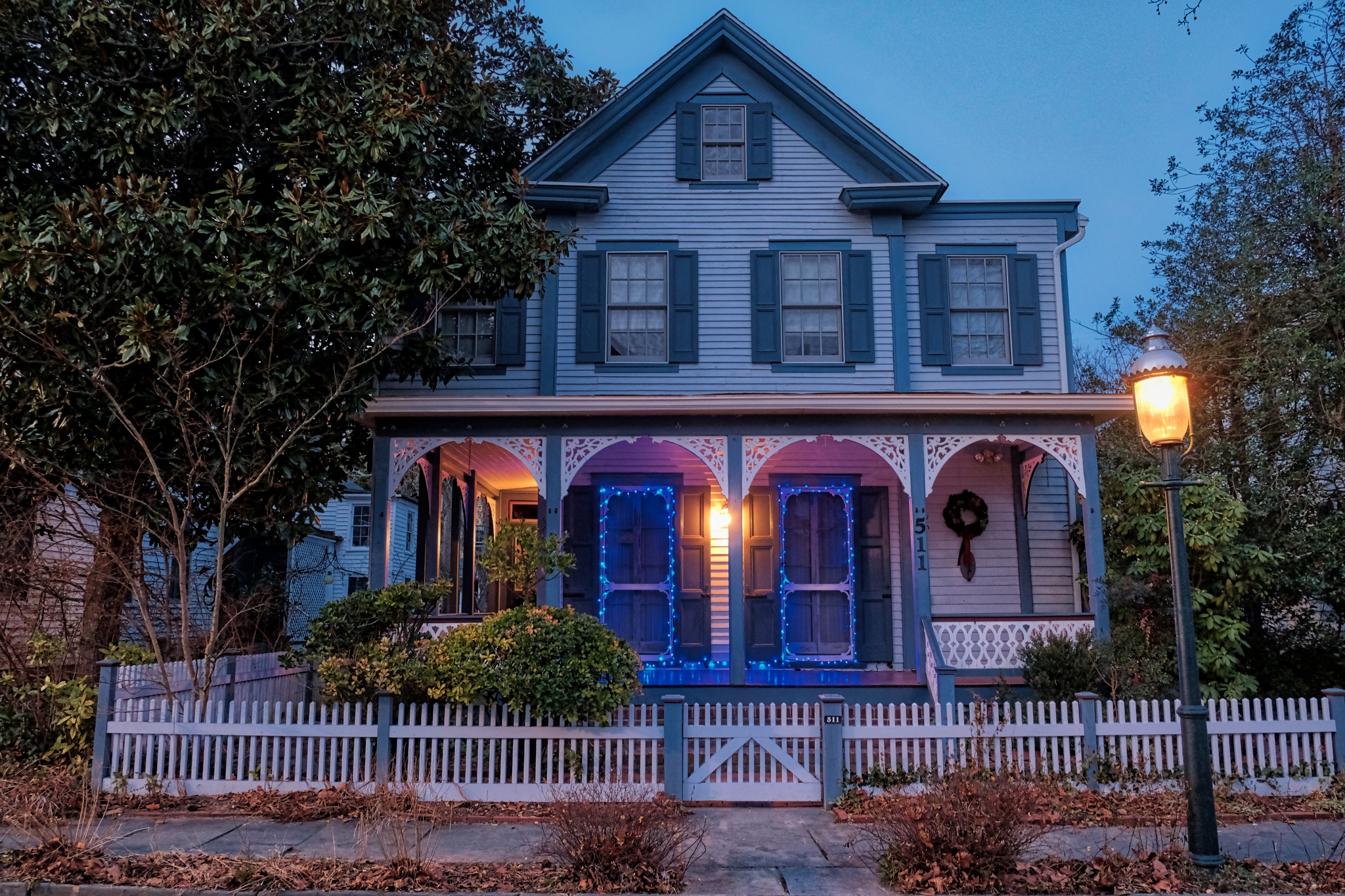 There are so many cute houses in Cape May. The Cape May Historic District has over 600 listed homes. Fantastic!
There are so many cute houses in Cape May. The Cape May Historic District has over 600 listed homes. Fantastic!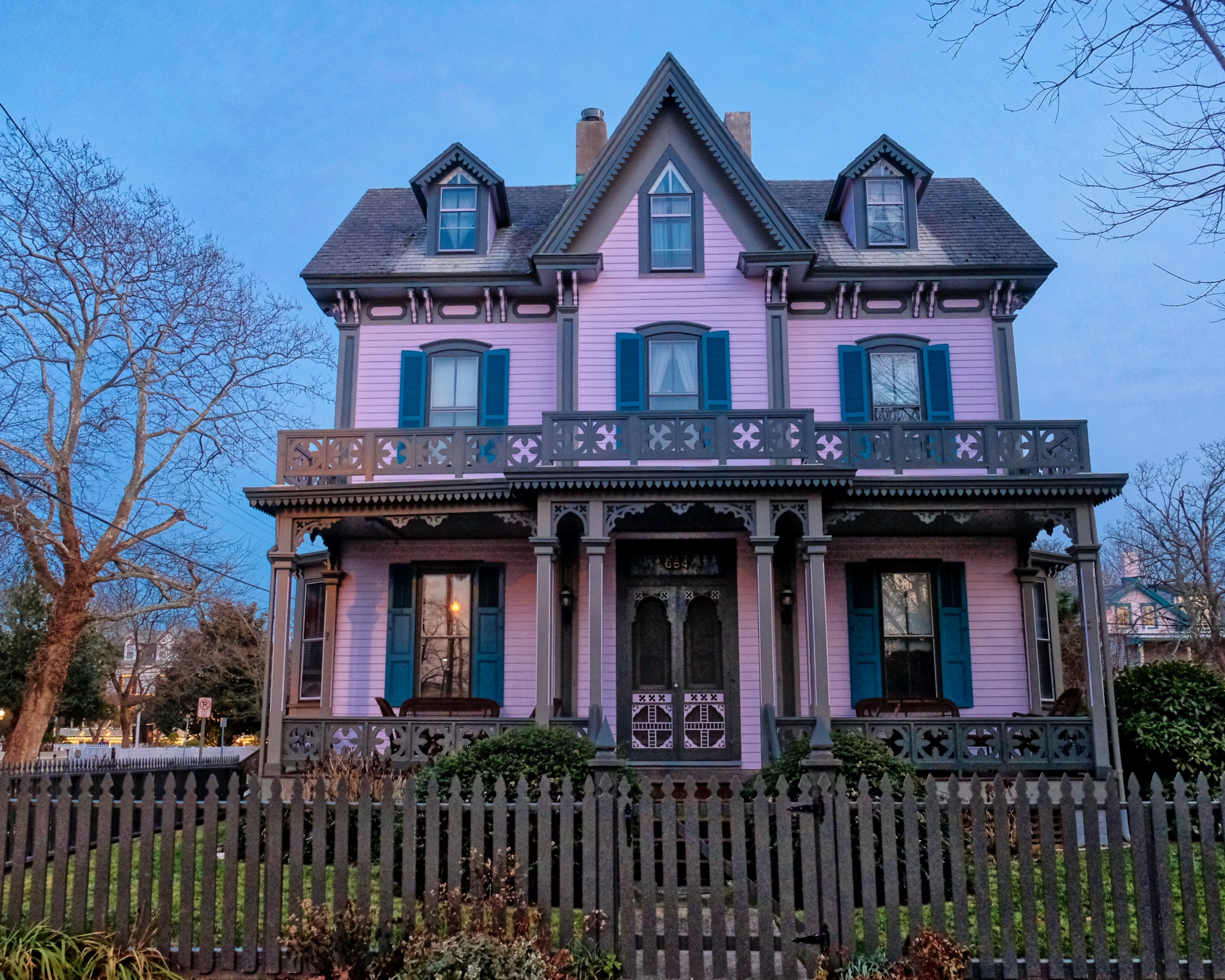 Cape May was first established as a village in 1632, on of the earliest settlements along the Atlantic coast. Most of the homes in the Historic District are of the Late Victorian Era Style.
Cape May was first established as a village in 1632, on of the earliest settlements along the Atlantic coast. Most of the homes in the Historic District are of the Late Victorian Era Style.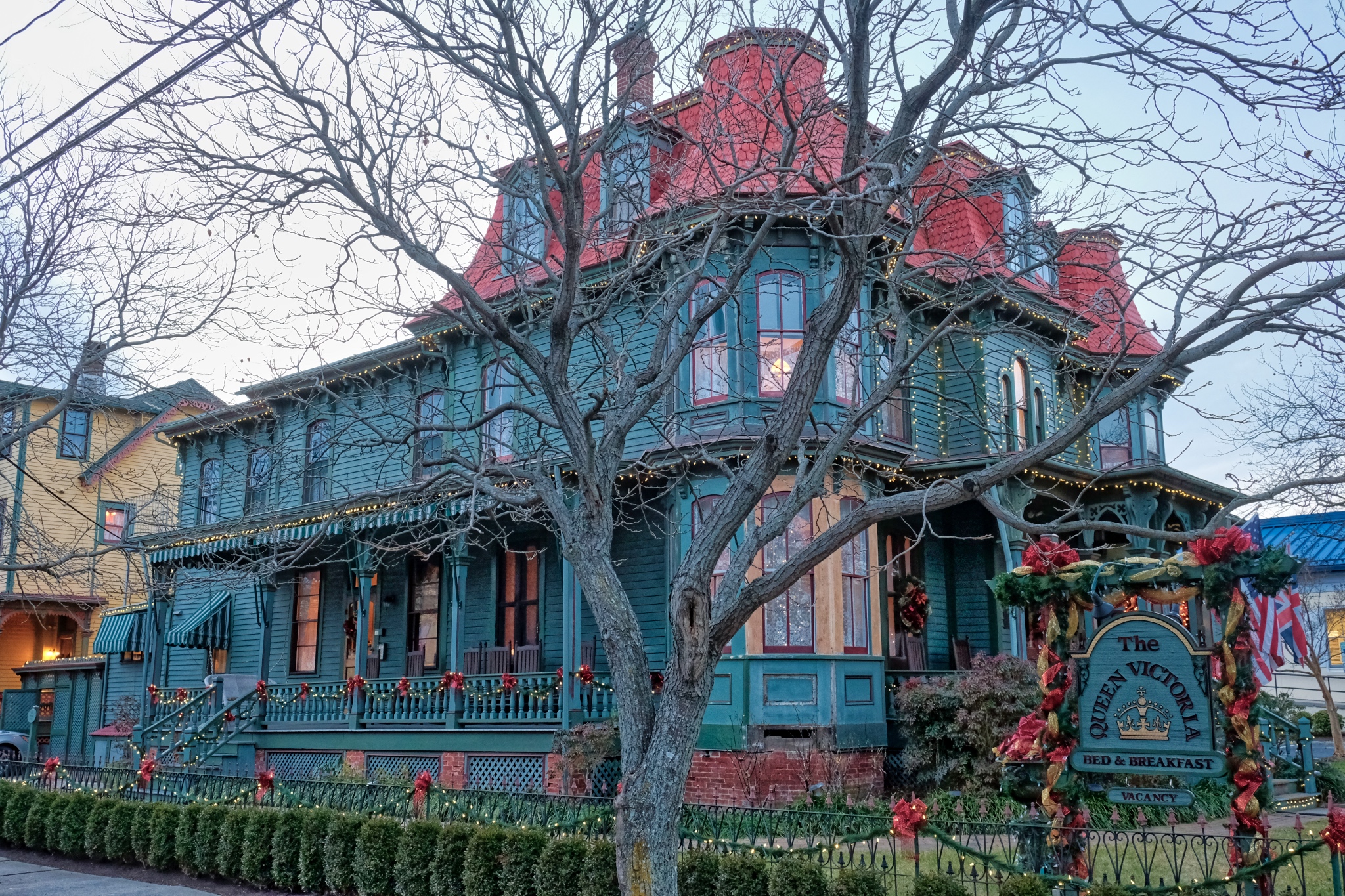 The beautiful Victoria B&B . . . .
The beautiful Victoria B&B . . . . The Queen Victoria B&B front door.
The Queen Victoria B&B front door.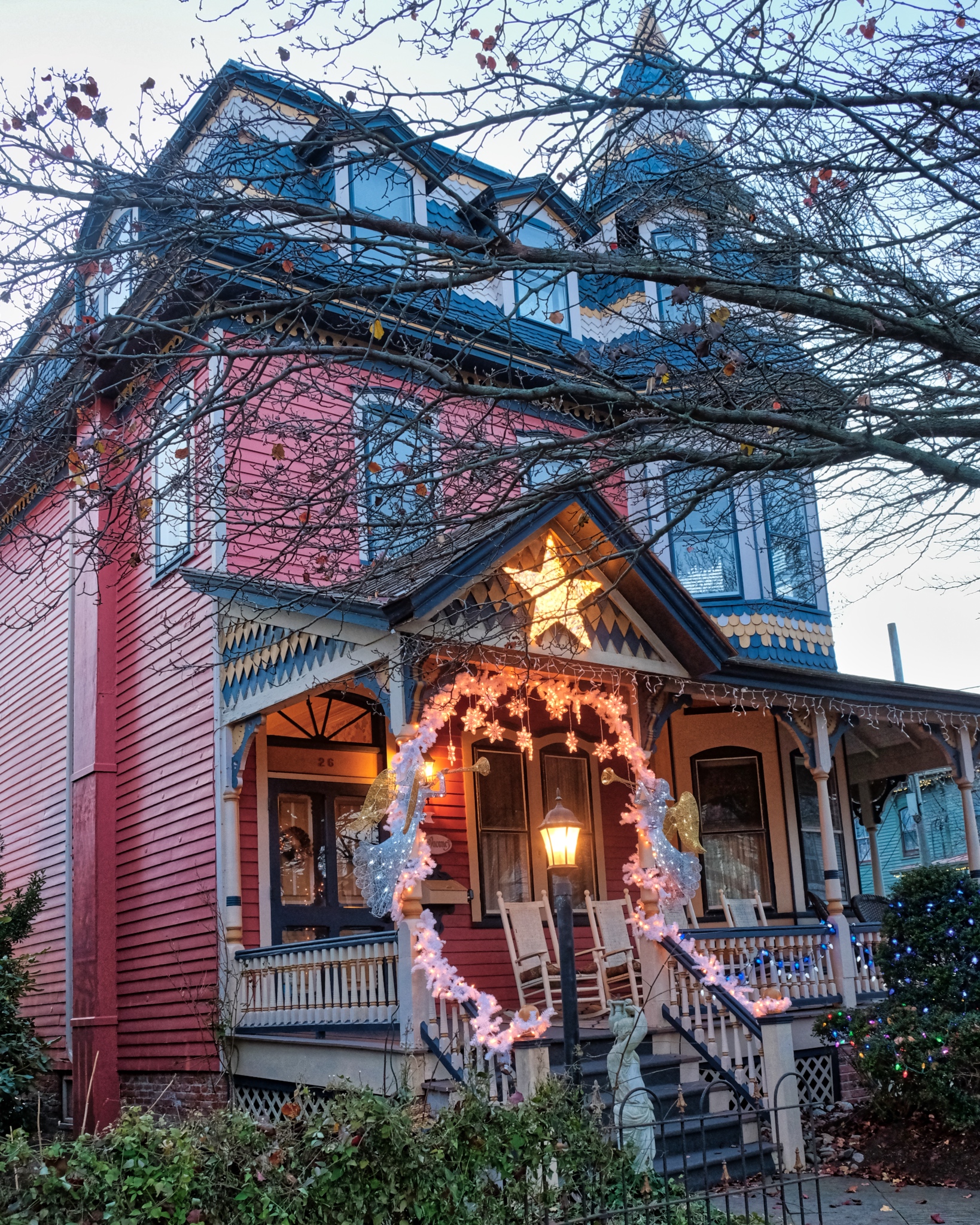 Lovely turreted Victorian mansion.
Lovely turreted Victorian mansion.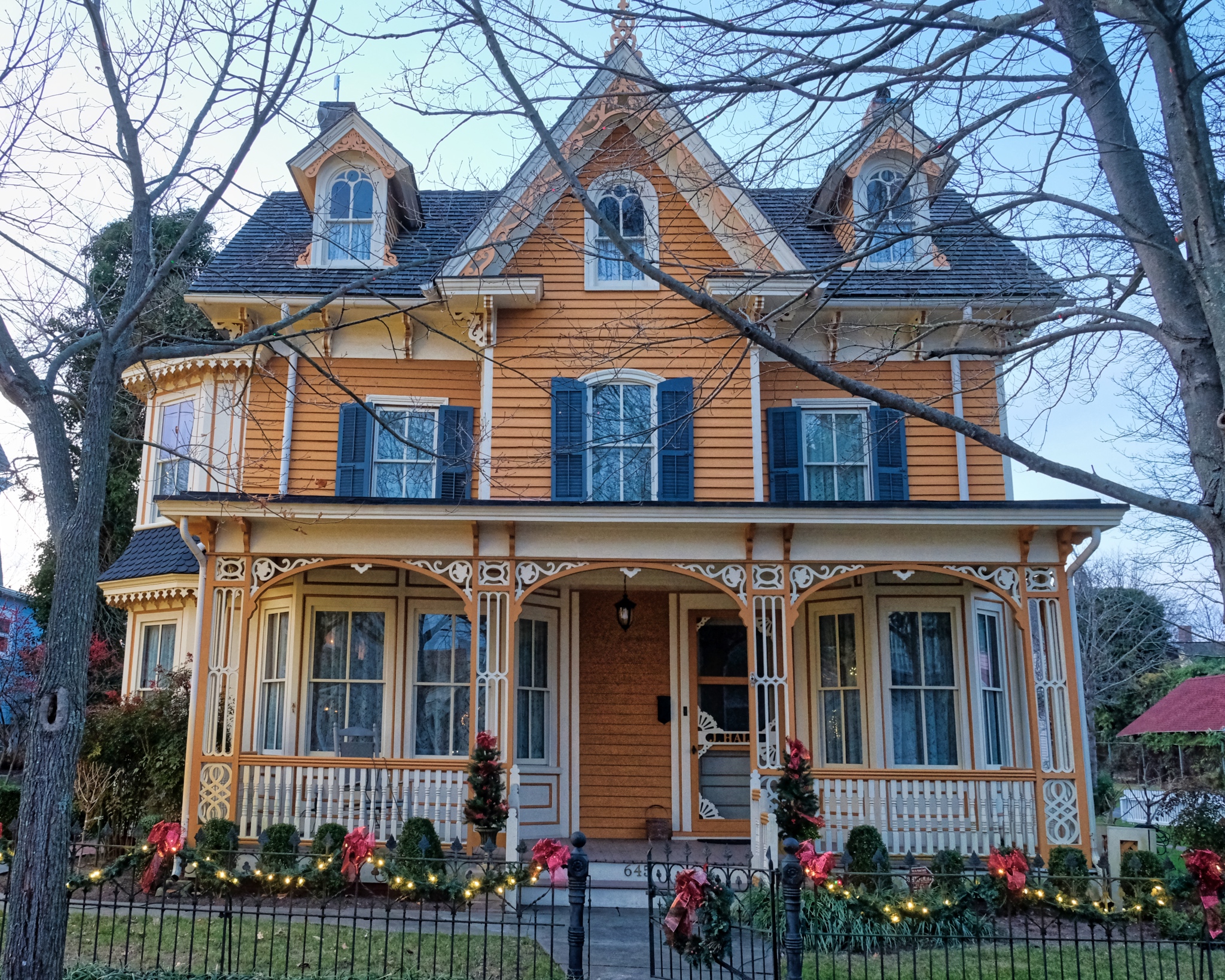 The pastel colors of the perfectly restored (maintained?) Victorians were so sweet.
The pastel colors of the perfectly restored (maintained?) Victorians were so sweet.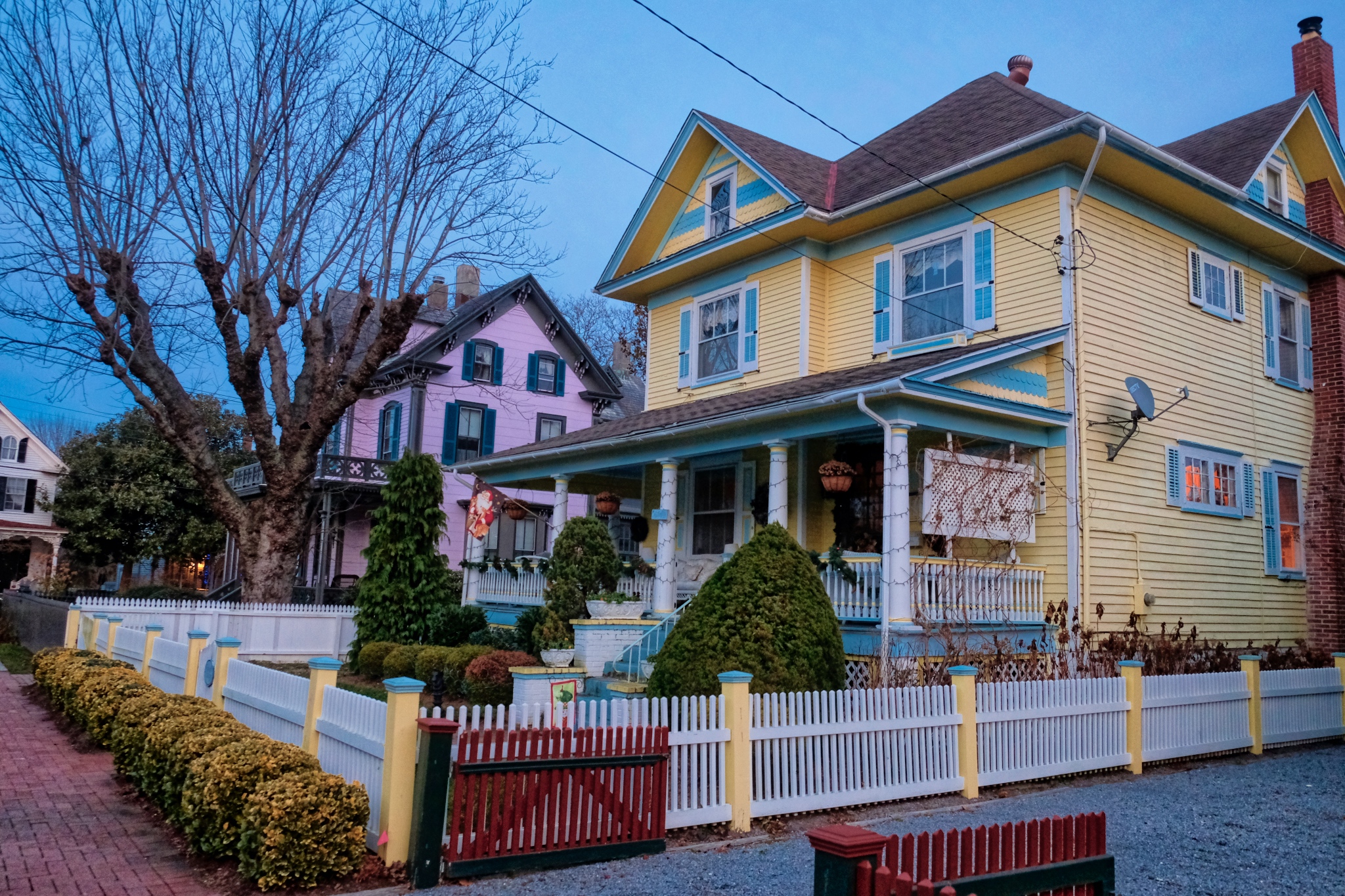 As the darkness continued to fall, the old houses began to light up in their Christmas charm.
As the darkness continued to fall, the old houses began to light up in their Christmas charm.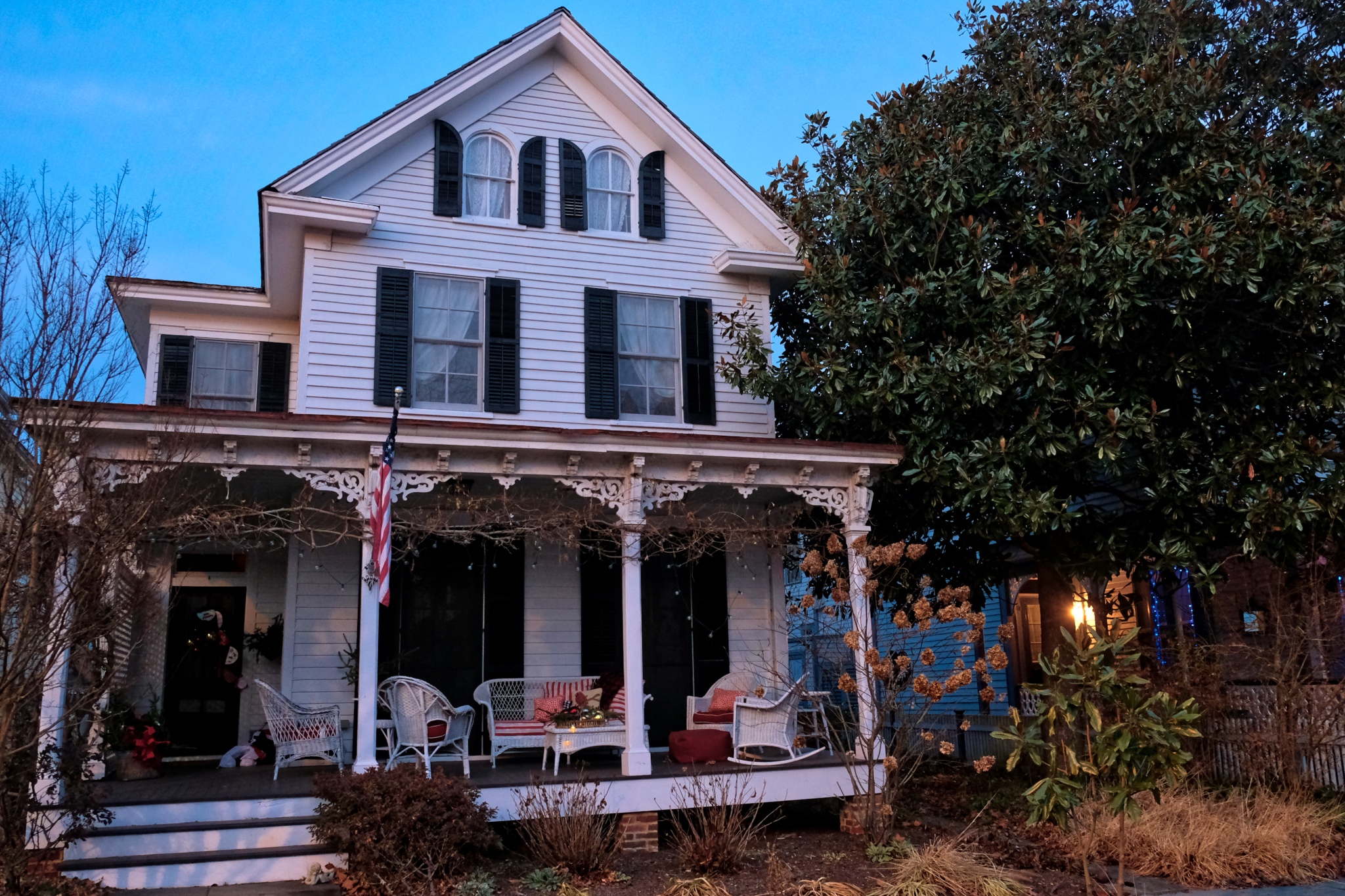 Although not as grand or ornate as some others in Cape May, I like this modest white house the most: it seems so inviting.
Although not as grand or ornate as some others in Cape May, I like this modest white house the most: it seems so inviting.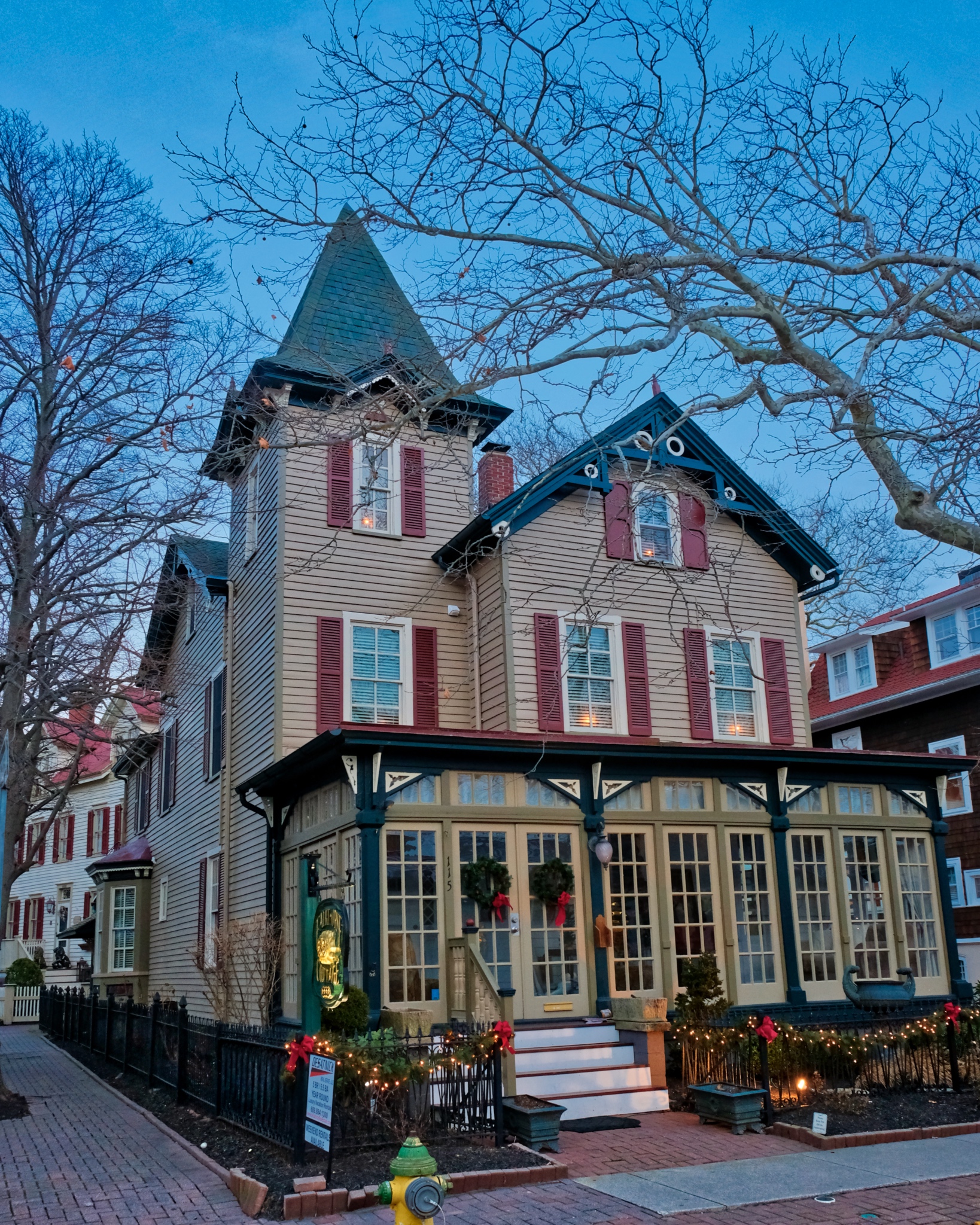 Another one of my favorites . . . that enclosed porch is just perfect!
Another one of my favorites . . . that enclosed porch is just perfect!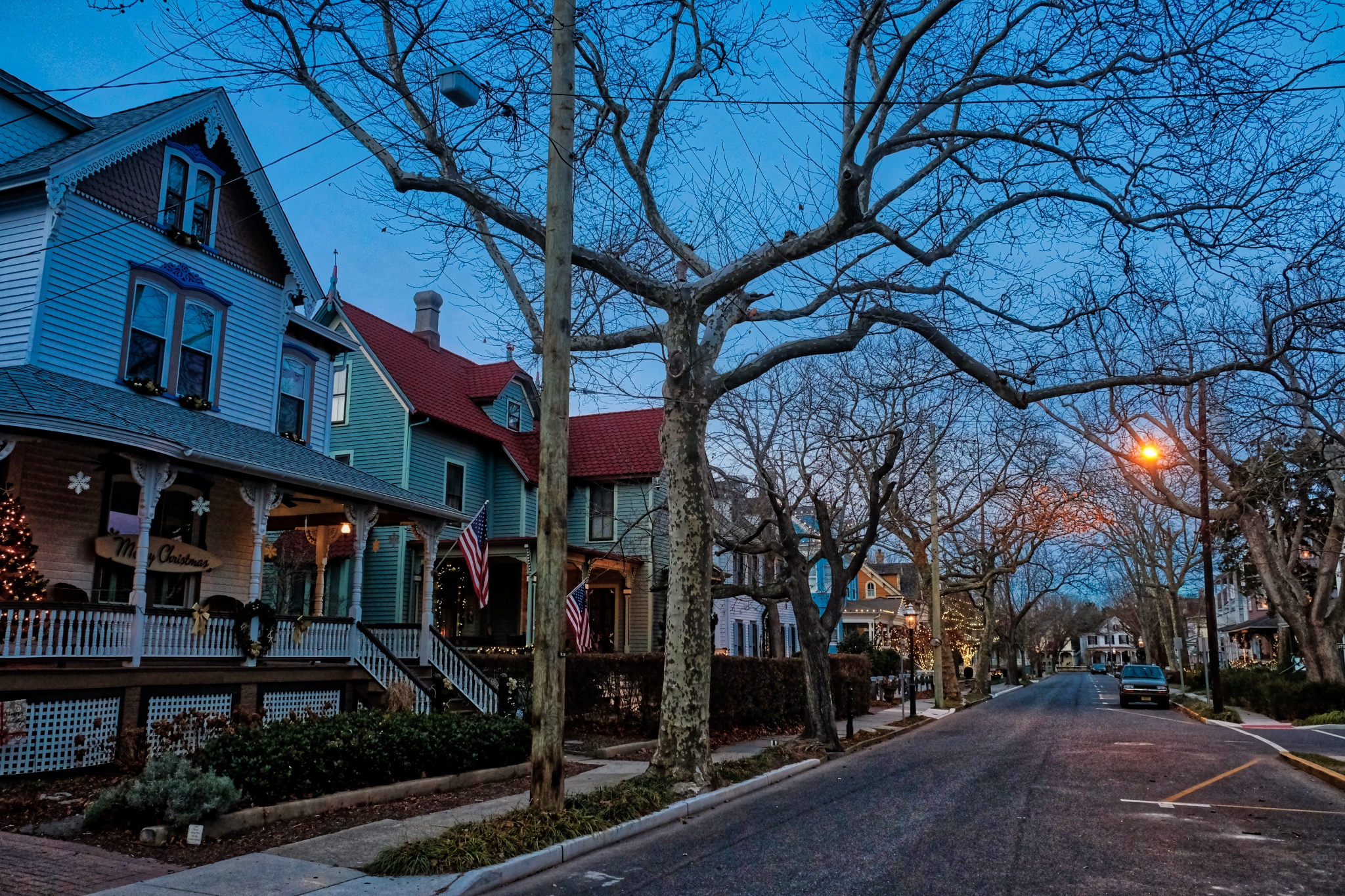 A typical Cape May street in the Historical District.
A typical Cape May street in the Historical District.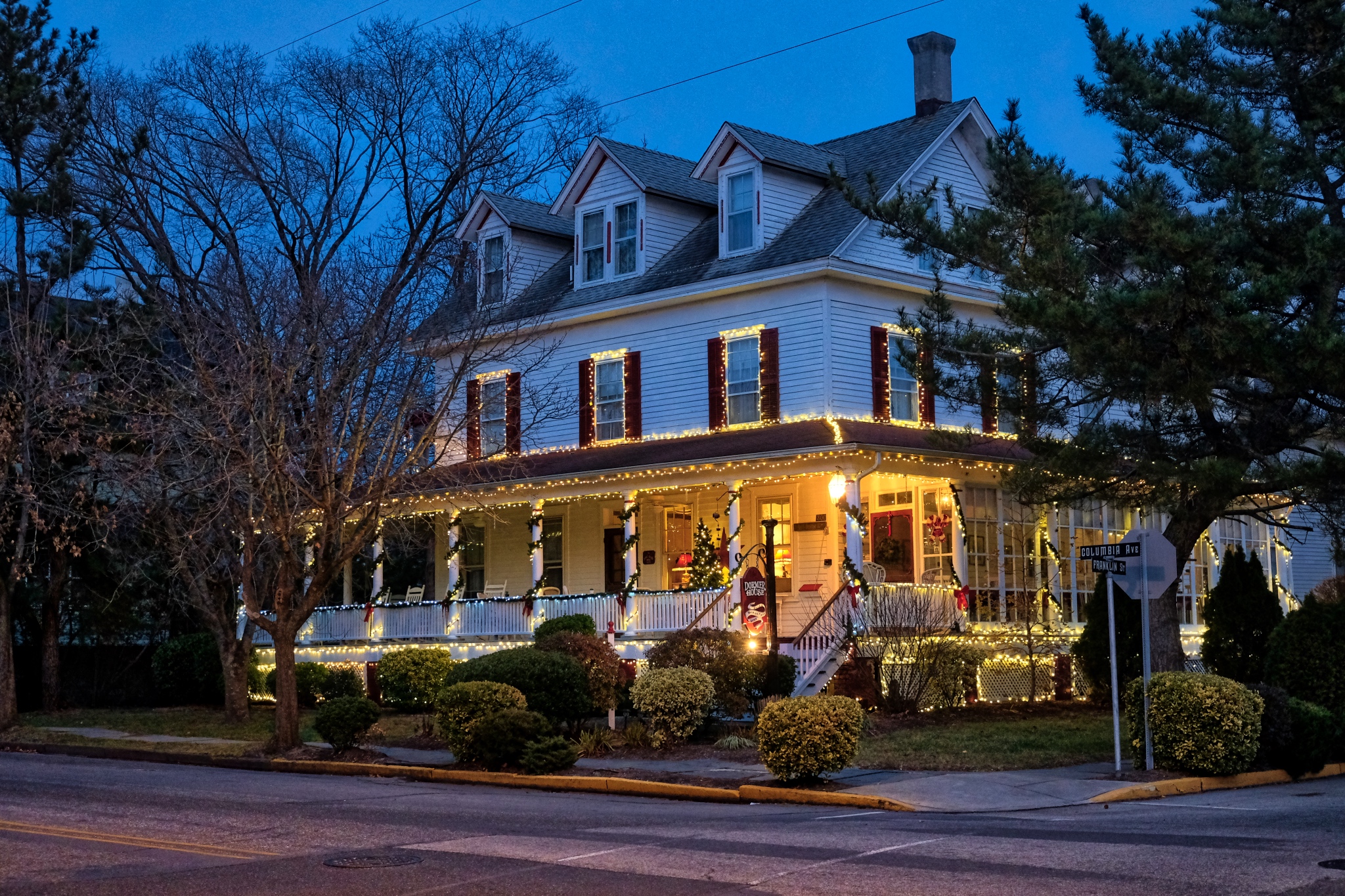 Photographers love the 'magic hour' - the first and last hour of sunlight, but we also love the 'Blue Hour' - the time just before dark when the sky is a deep blue.
Photographers love the 'magic hour' - the first and last hour of sunlight, but we also love the 'Blue Hour' - the time just before dark when the sky is a deep blue.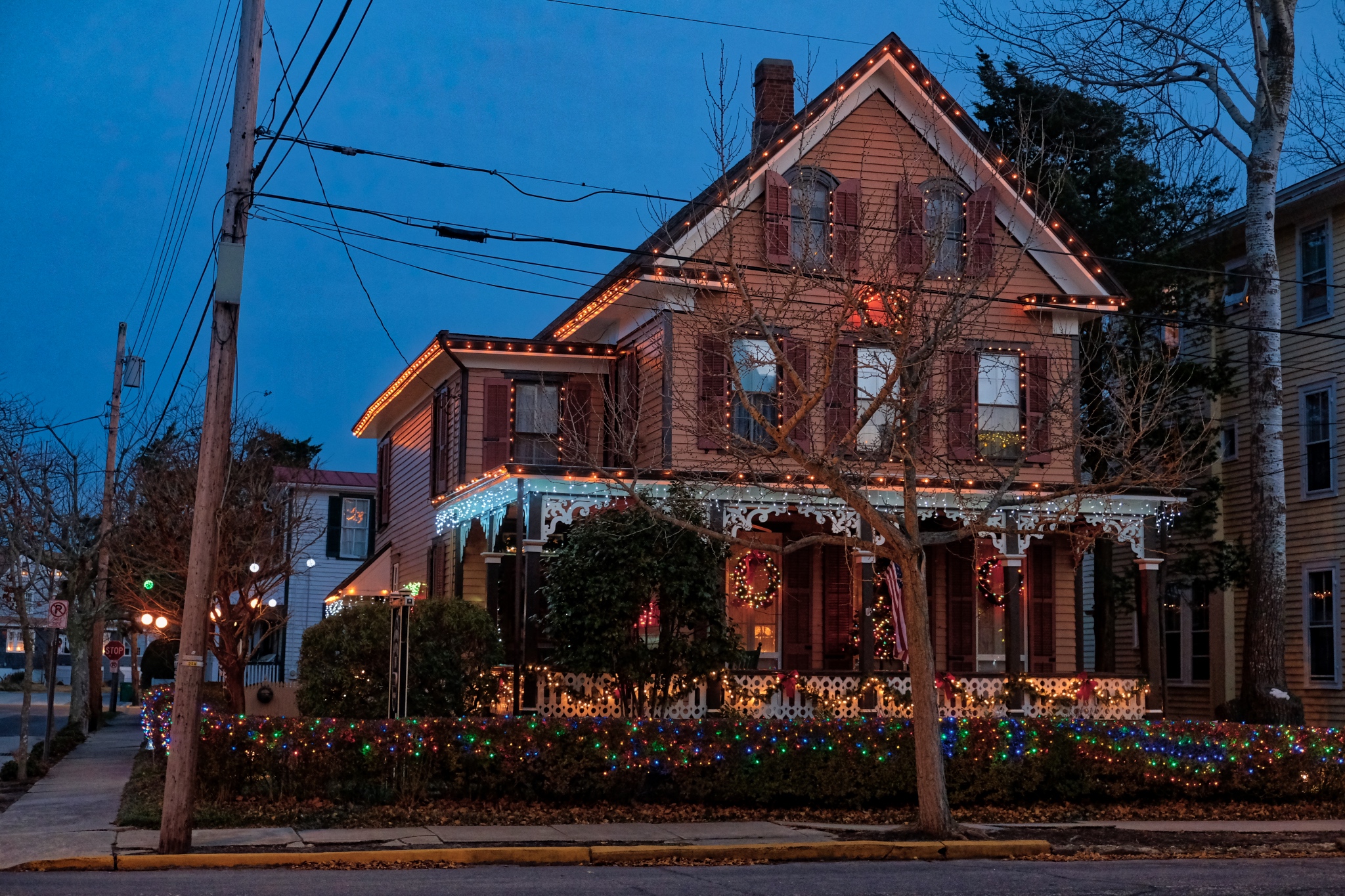 The holiday decorations were very nicely done . . . and NONE of those horrible inflatables!
The holiday decorations were very nicely done . . . and NONE of those horrible inflatables!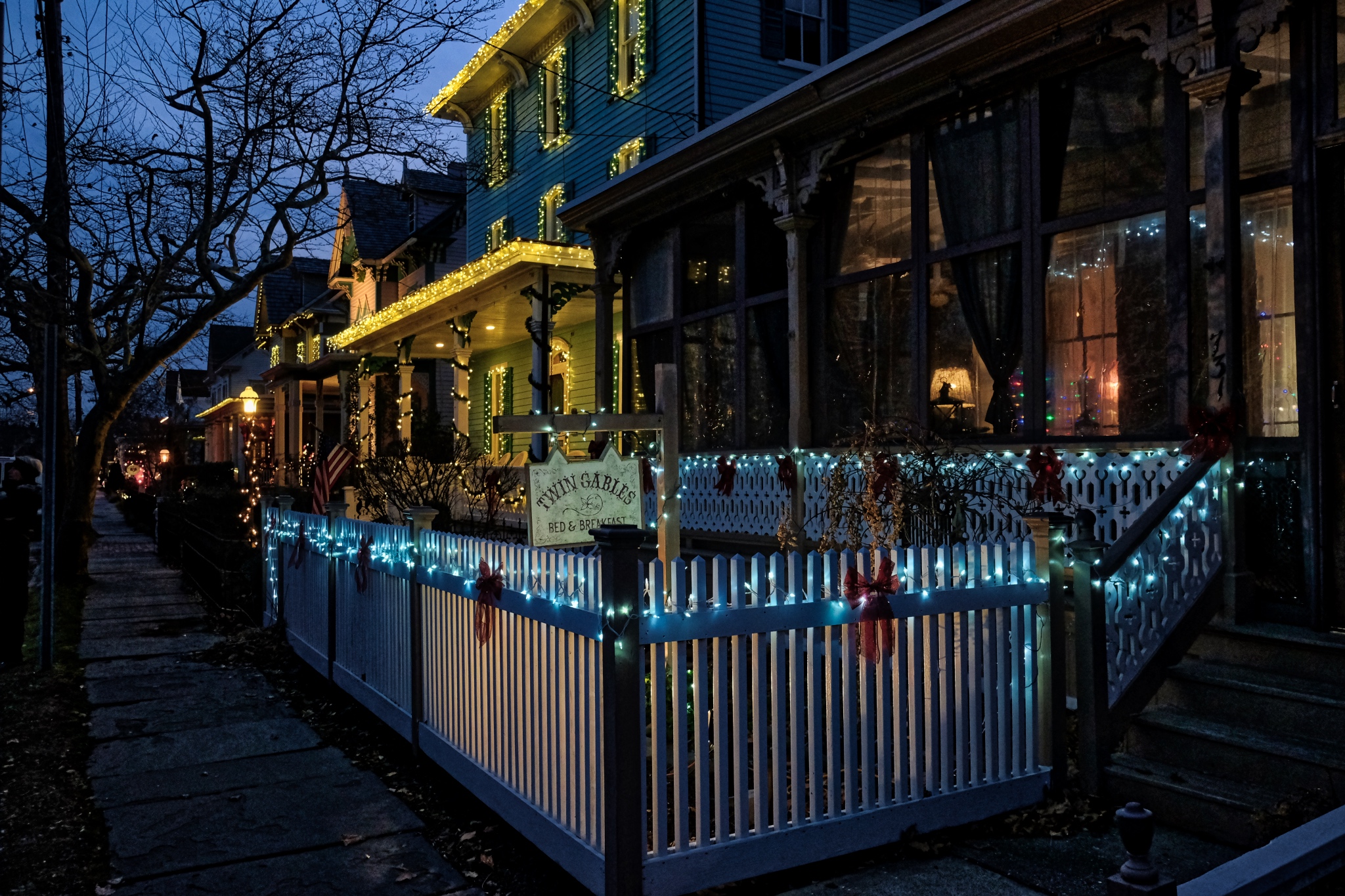 Such a lovely little town . . . "The way it used it be" . . . at least for the few who could afford it, even back then. My friends said this is "Philadelphia money."
Such a lovely little town . . . "The way it used it be" . . . at least for the few who could afford it, even back then. My friends said this is "Philadelphia money."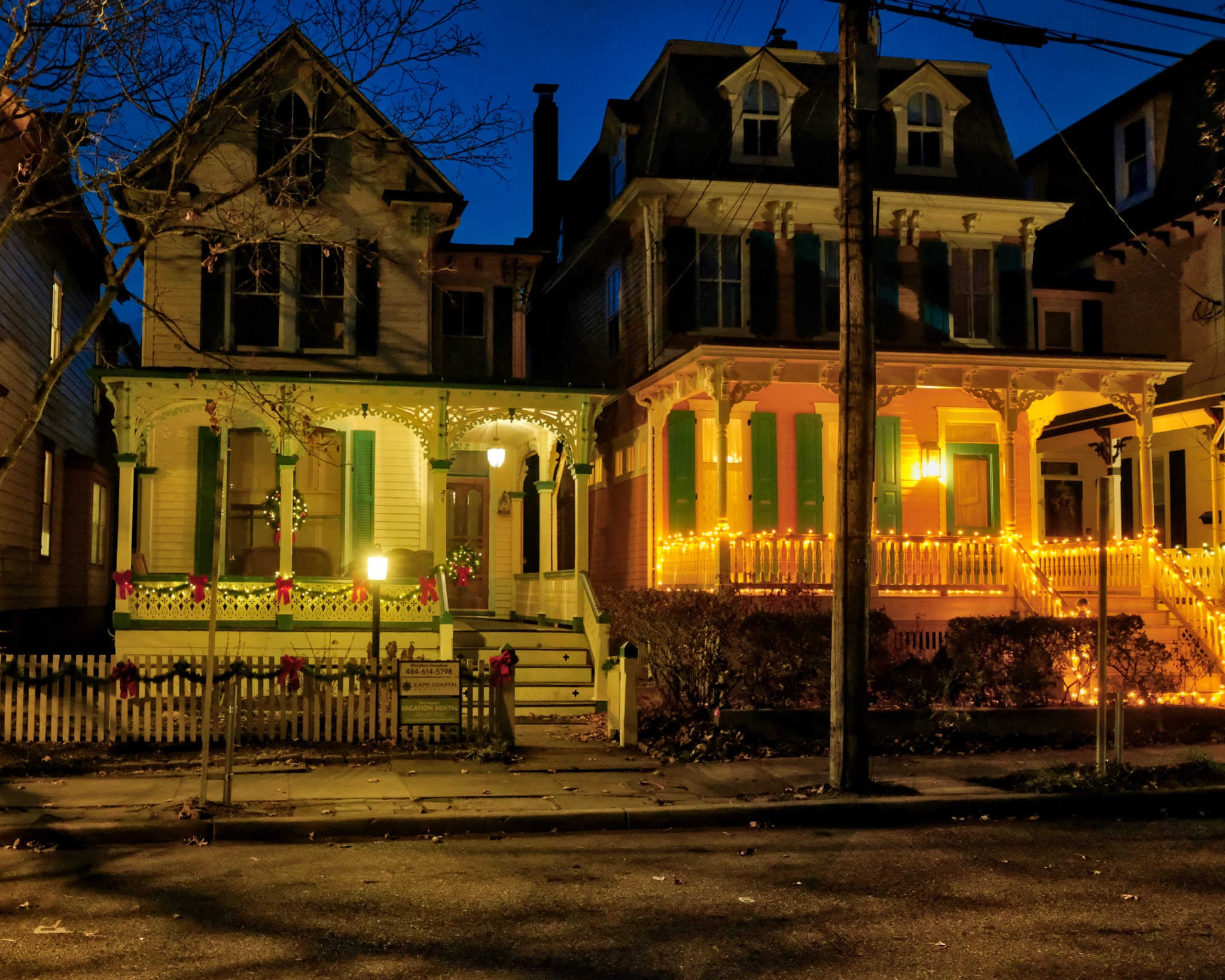 At times it seemed we were walking through a movie set . . . so perfect was the restoration . . .
At times it seemed we were walking through a movie set . . . so perfect was the restoration . . .  These two were gems: big porches on both floors!
These two were gems: big porches on both floors!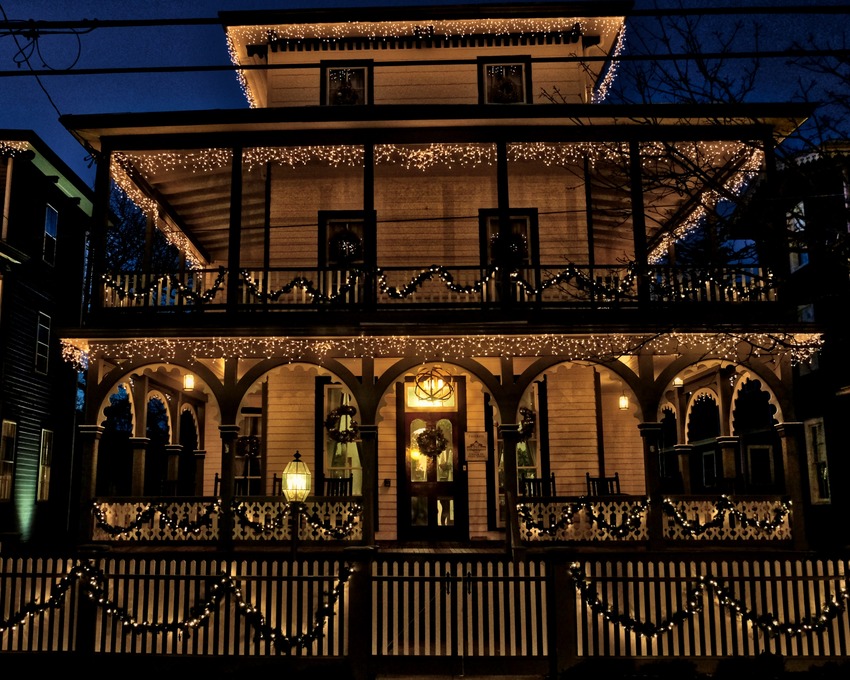 Such a fantasy house!
Such a fantasy house!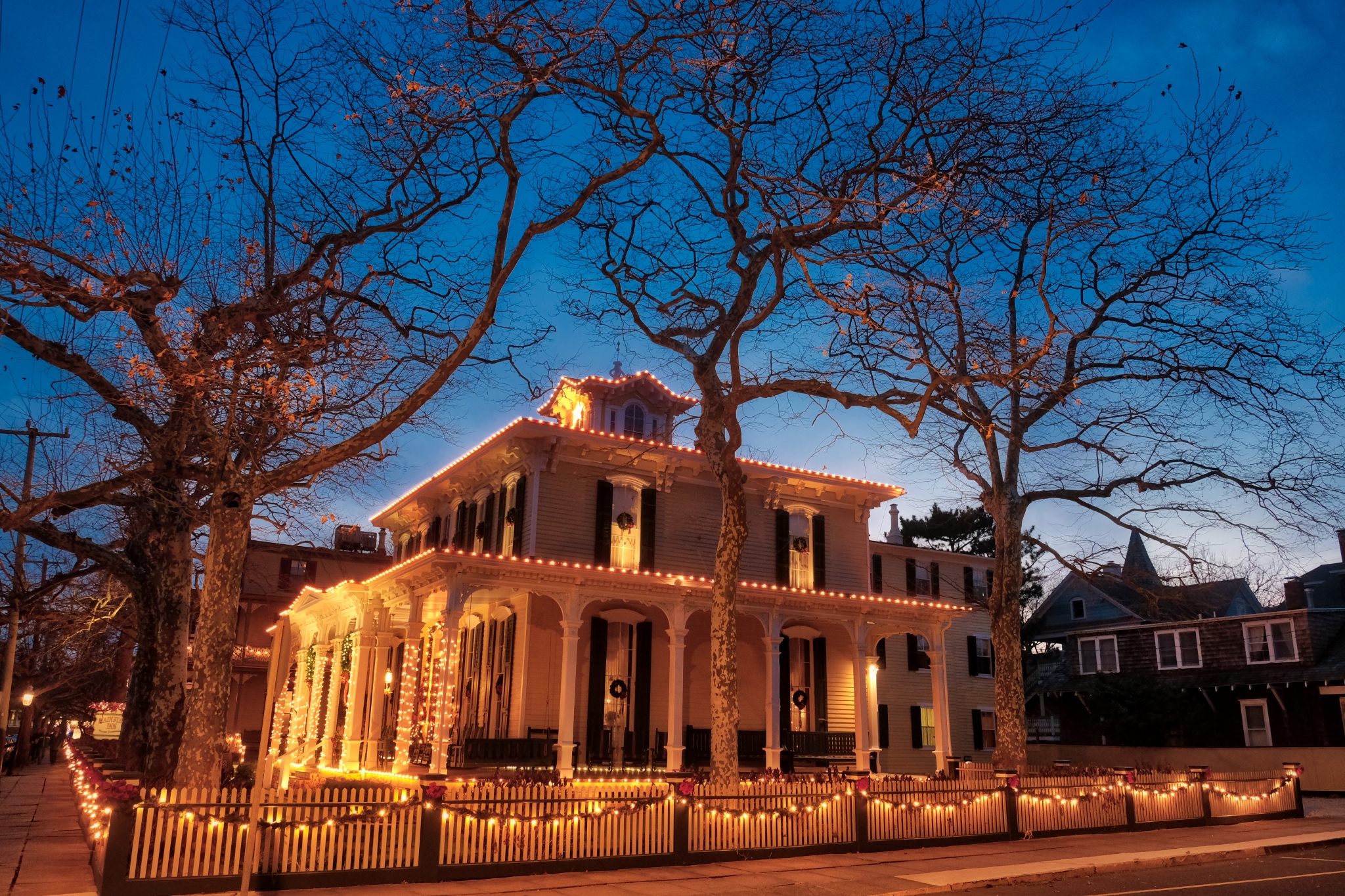 Cape May!
Cape May! 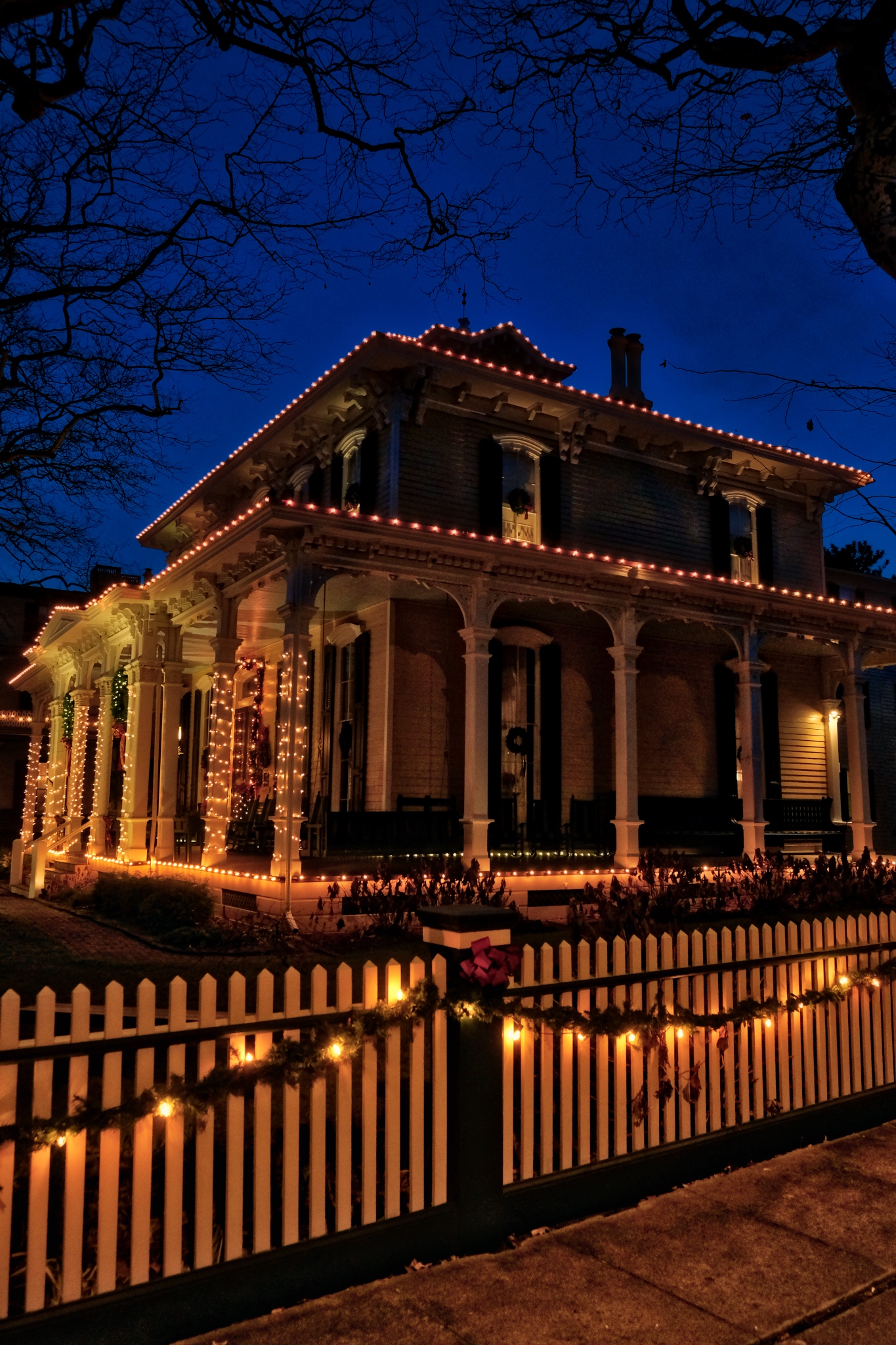 A beautiful gem in the blue hour.
A beautiful gem in the blue hour.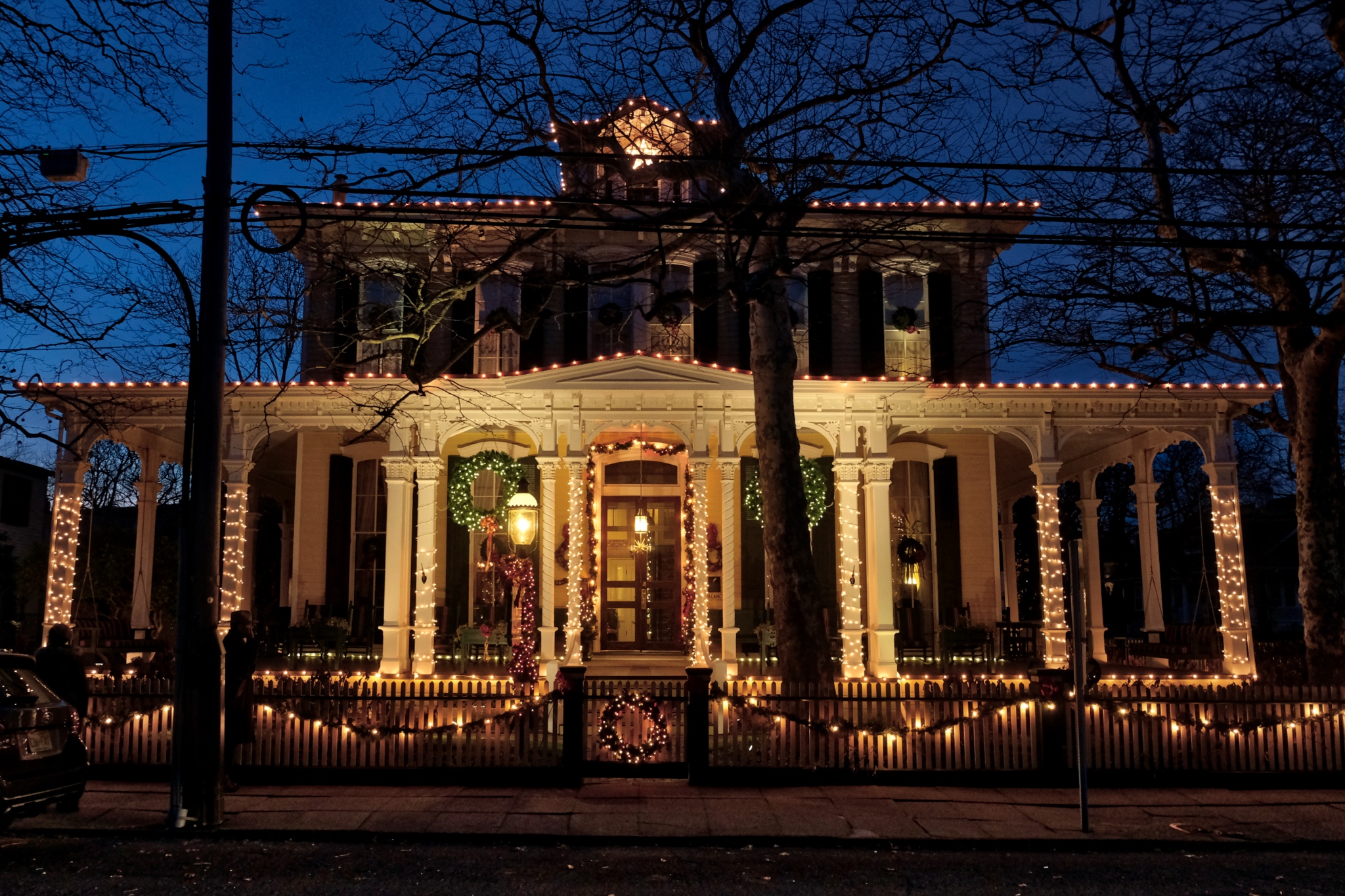 I could live here!
I could live here!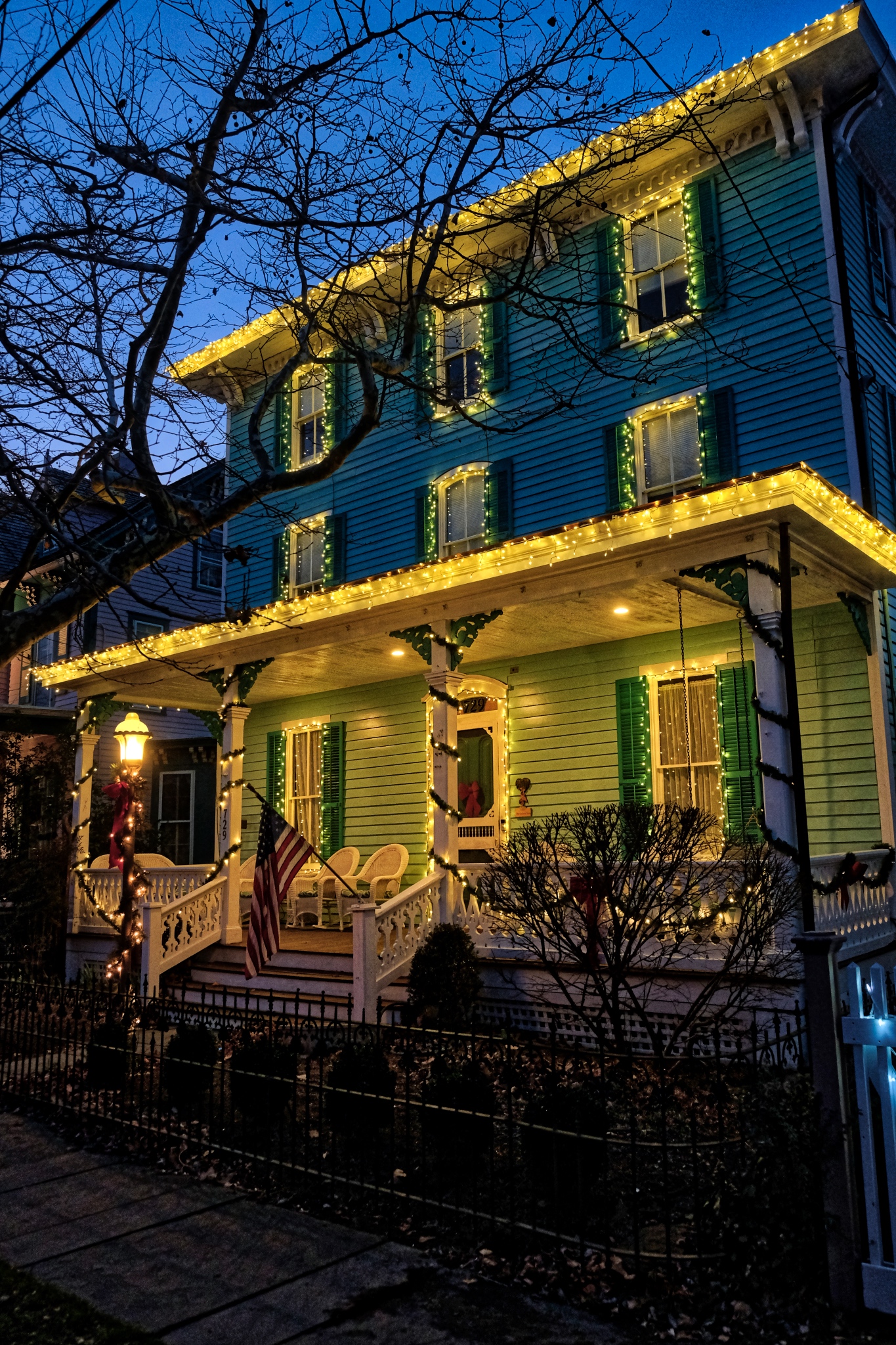 The old houses come in many colors.
The old houses come in many colors.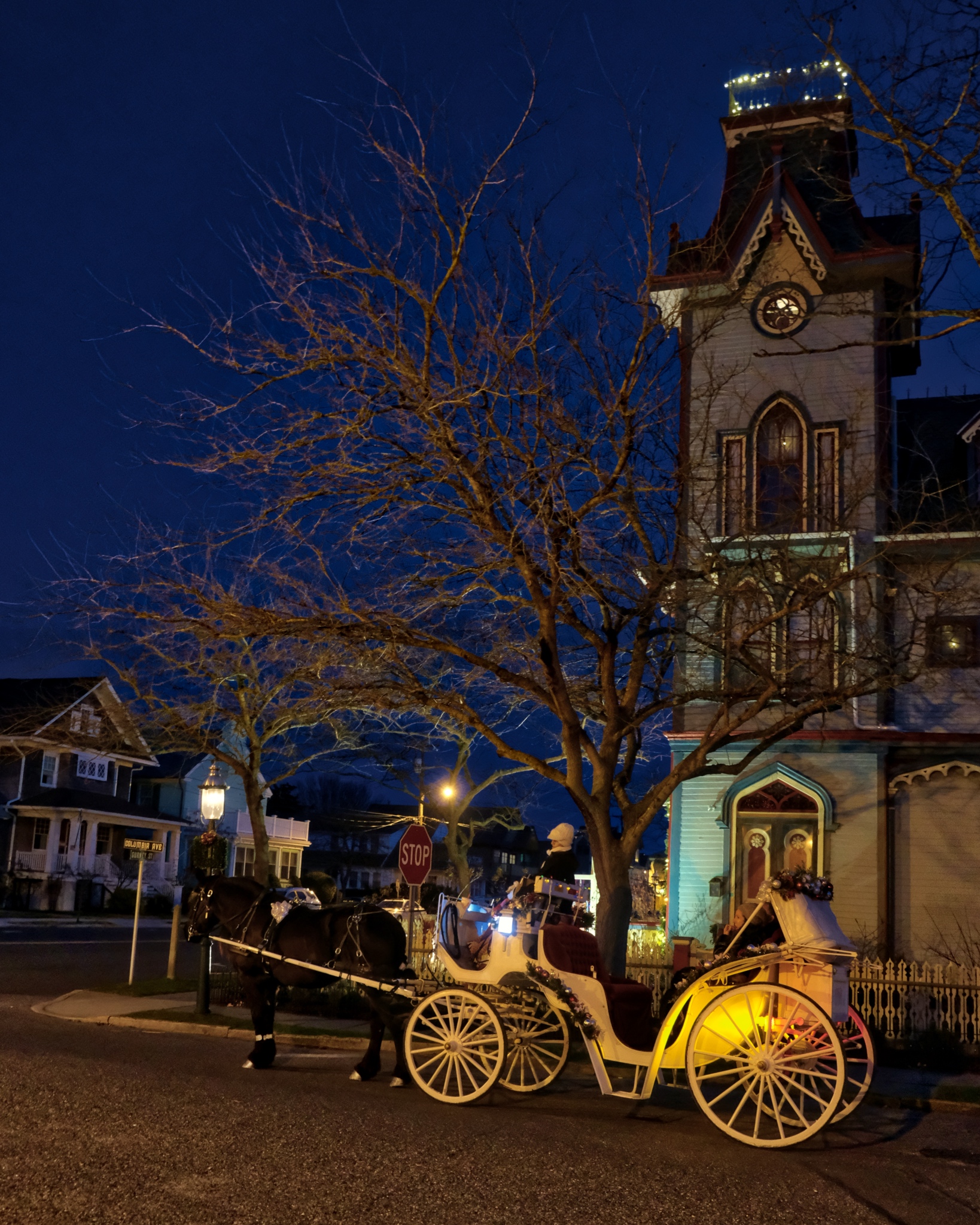 Tourists come to Cape May all year.
Tourists come to Cape May all year. 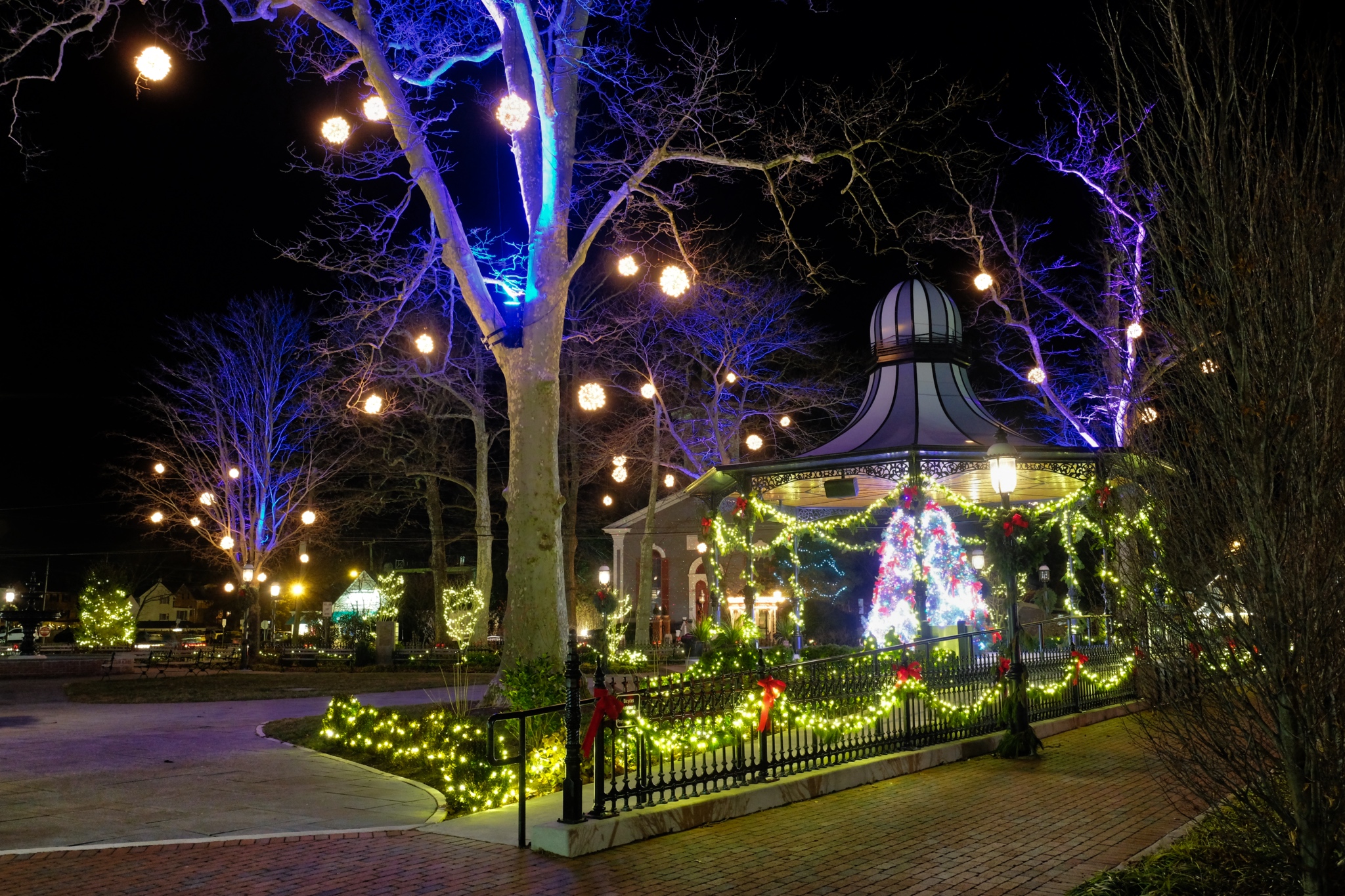 There is an old timey park in Cape May with a lovely gazebo.
There is an old timey park in Cape May with a lovely gazebo.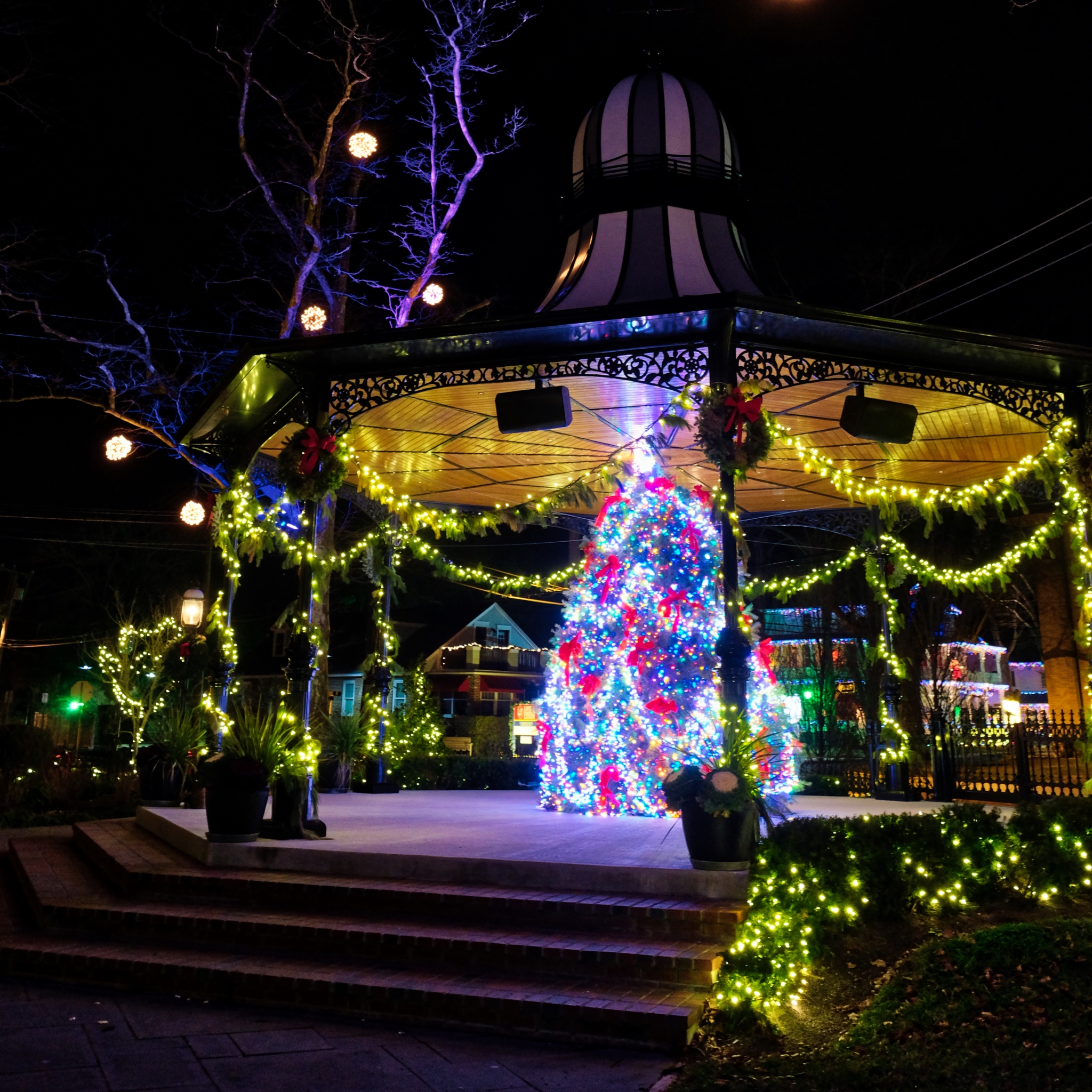 Such a festive feeling.
Such a festive feeling.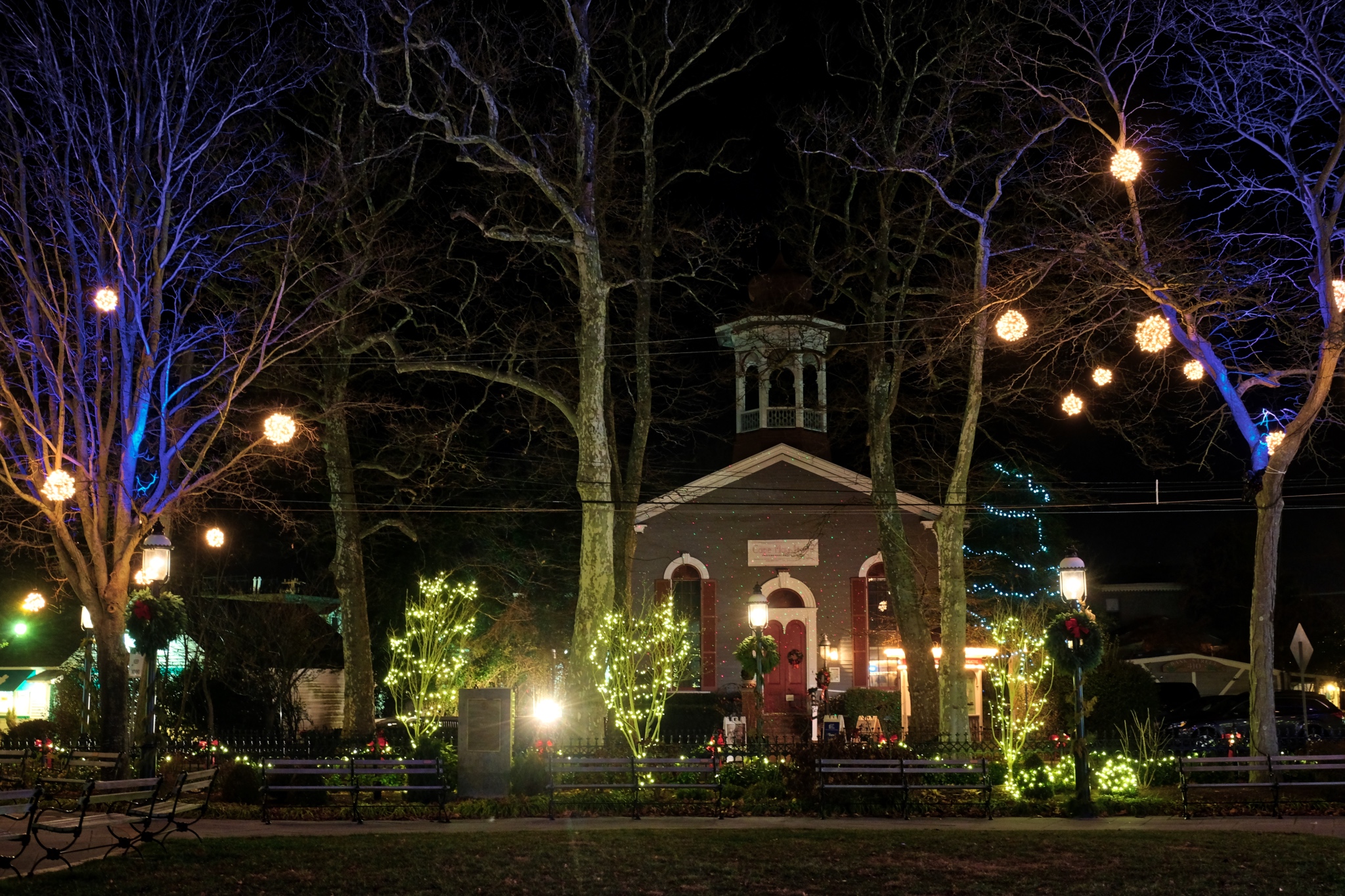 The buildings around the old town square.
The buildings around the old town square.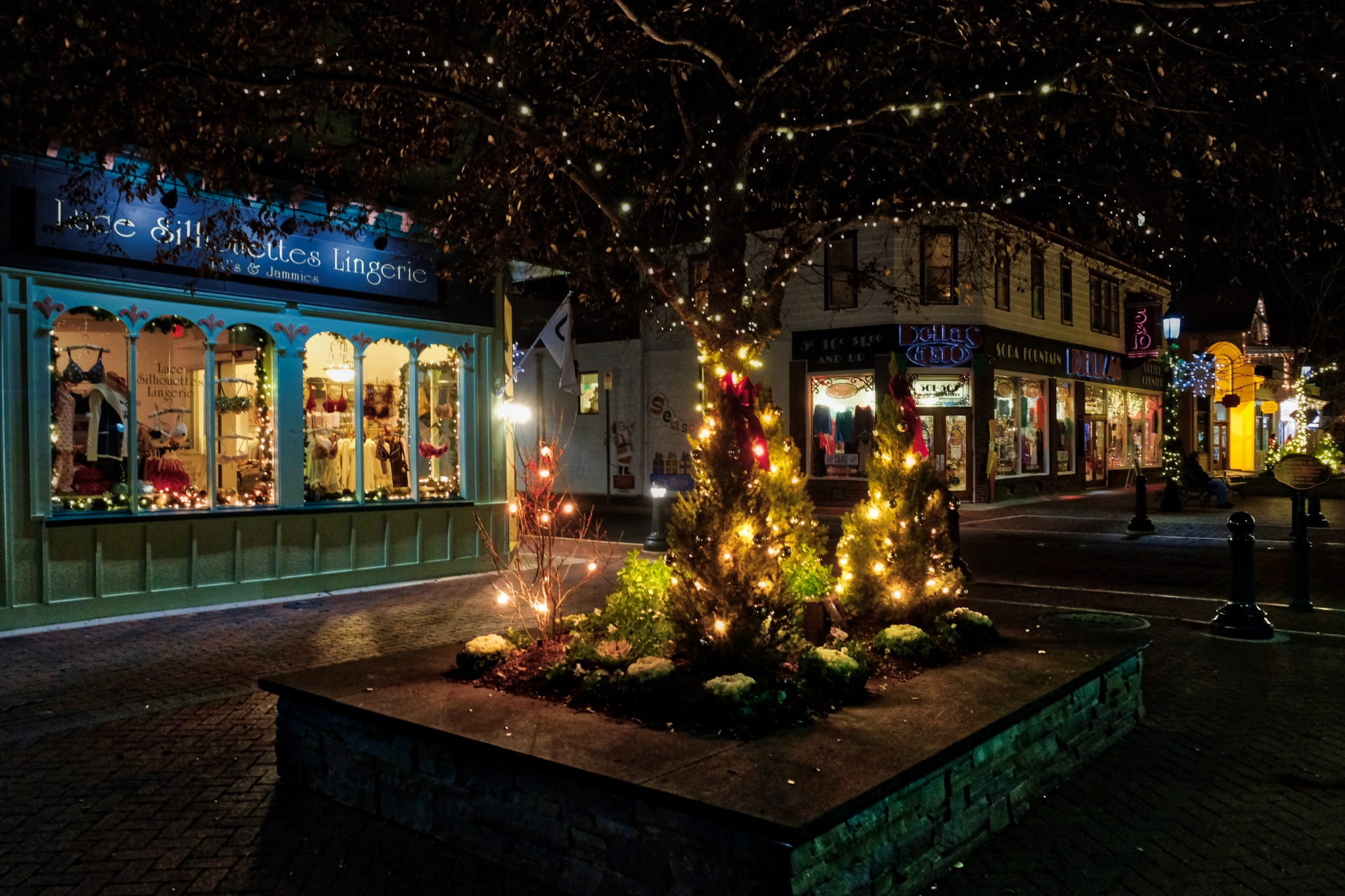 There is a nice walking street of old shops in Cape May proper.
There is a nice walking street of old shops in Cape May proper. The shop windows were dressed for the season.
The shop windows were dressed for the season. So pretty.
So pretty. My friend, Bud, doing some last minute shopping.
My friend, Bud, doing some last minute shopping.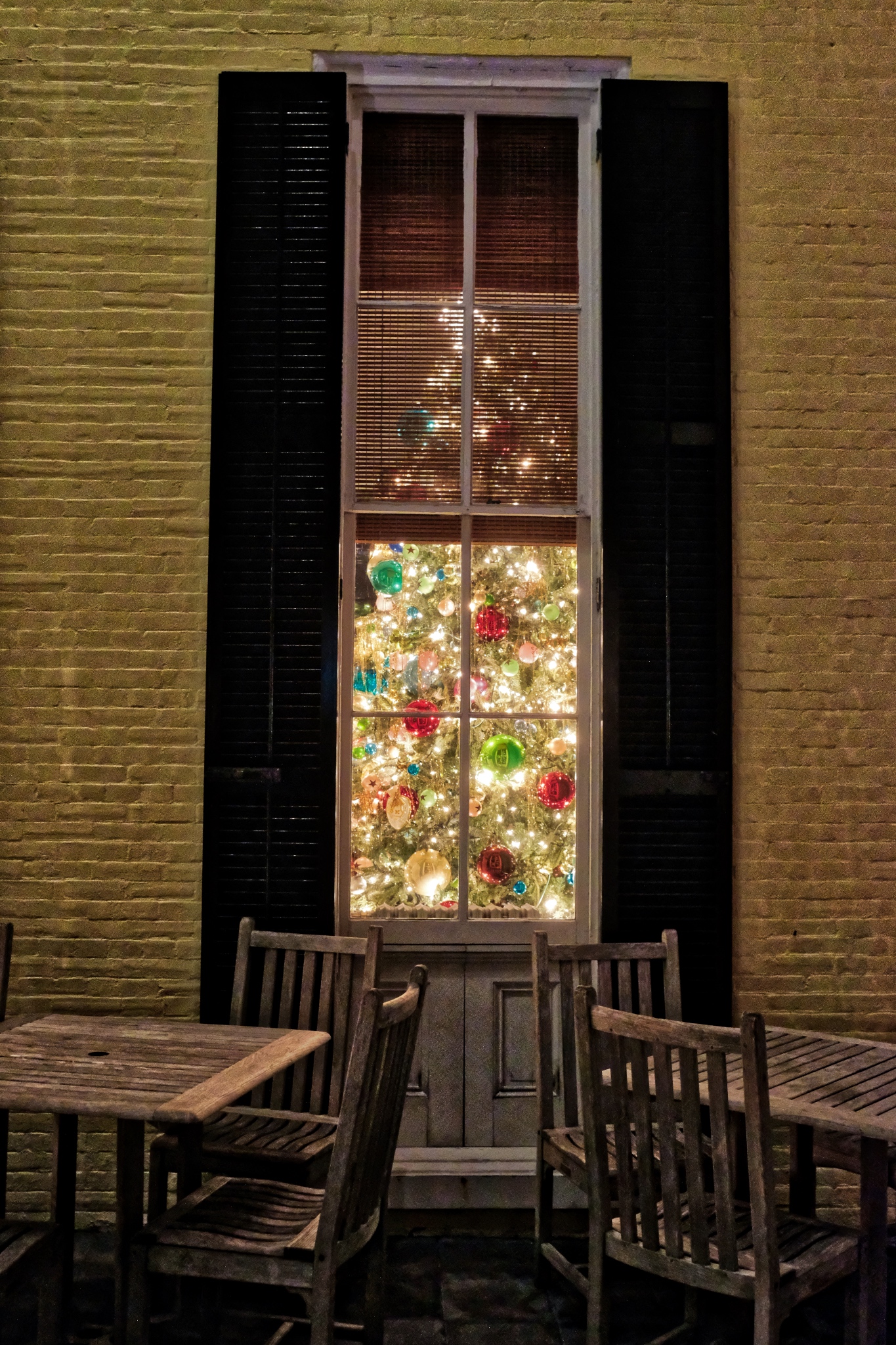 Christmas trees seemingly in every window!
Christmas trees seemingly in every window! The interior of this hotel was nicely festooned with Christmas regalia.
The interior of this hotel was nicely festooned with Christmas regalia. There was even a small Christmas Market in the garden of the old Heritage Hall Hotel. Yes, we had glüwine.
There was even a small Christmas Market in the garden of the old Heritage Hall Hotel. Yes, we had glüwine. There were many cute little shops around the town center.
There were many cute little shops around the town center.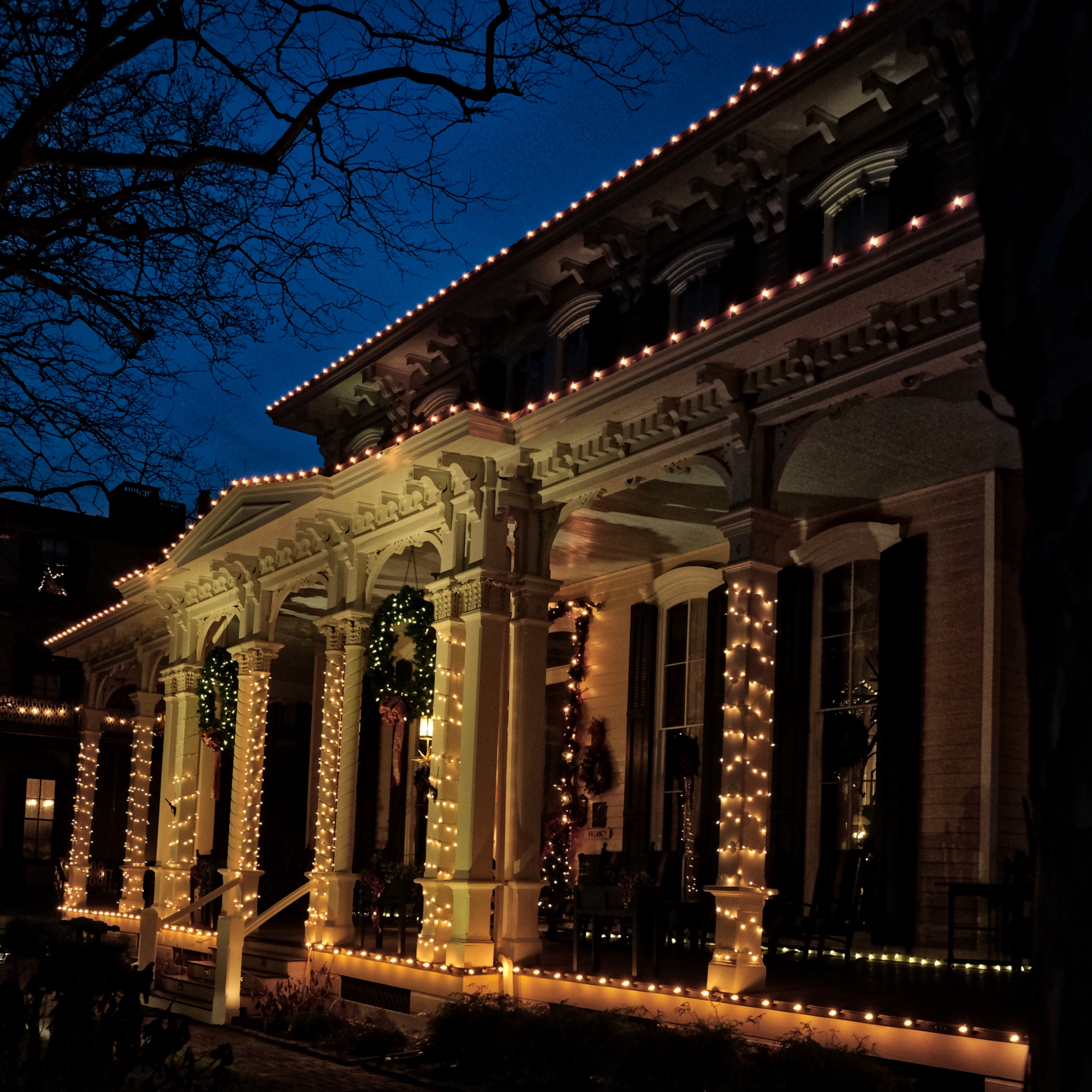 As sweet as the commercial area of Cape May was, the star of the city is the vast numbers of Victorian houses lit in Christmas decorations.
As sweet as the commercial area of Cape May was, the star of the city is the vast numbers of Victorian houses lit in Christmas decorations.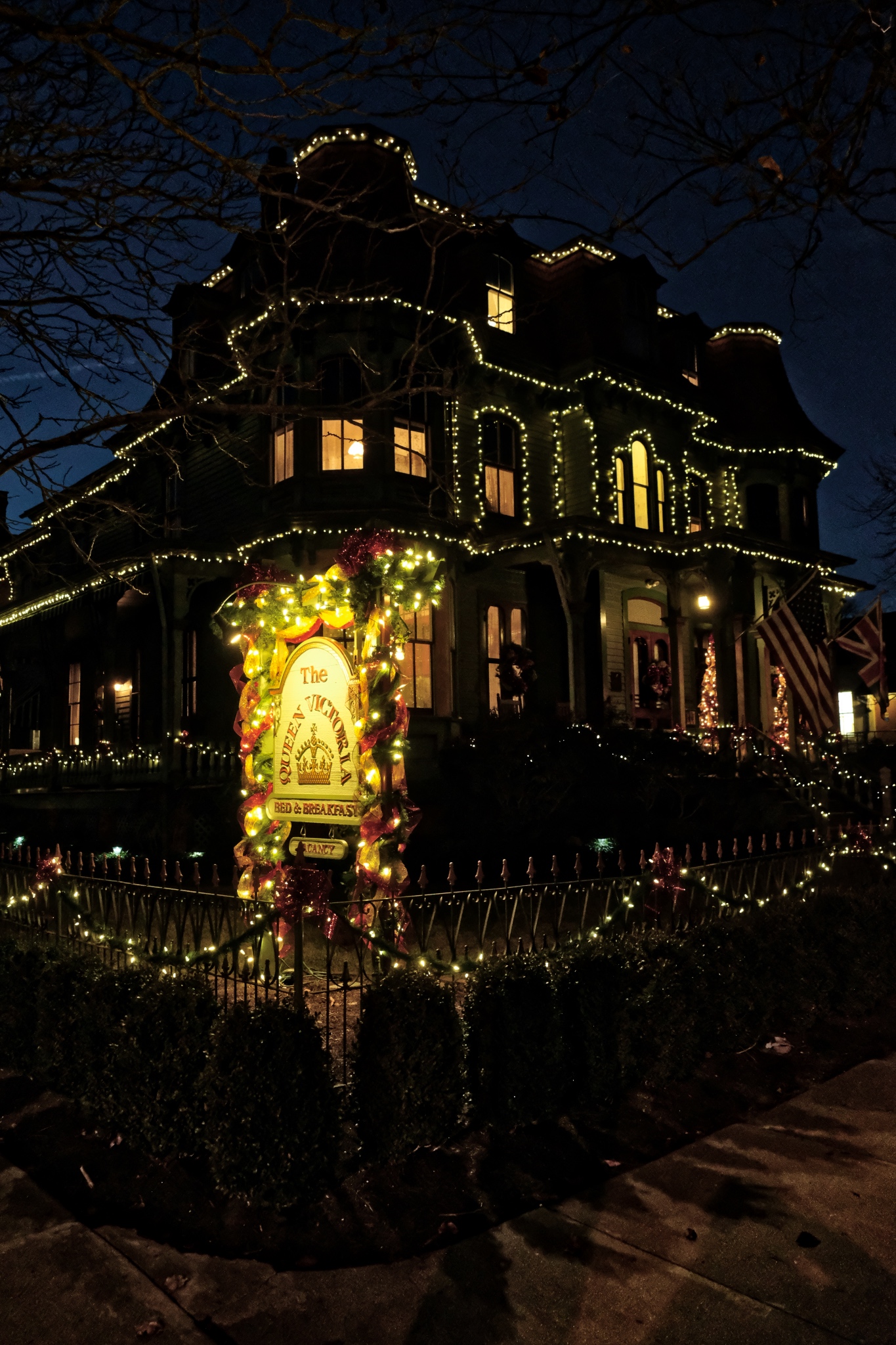 Gems in the night.
Gems in the night.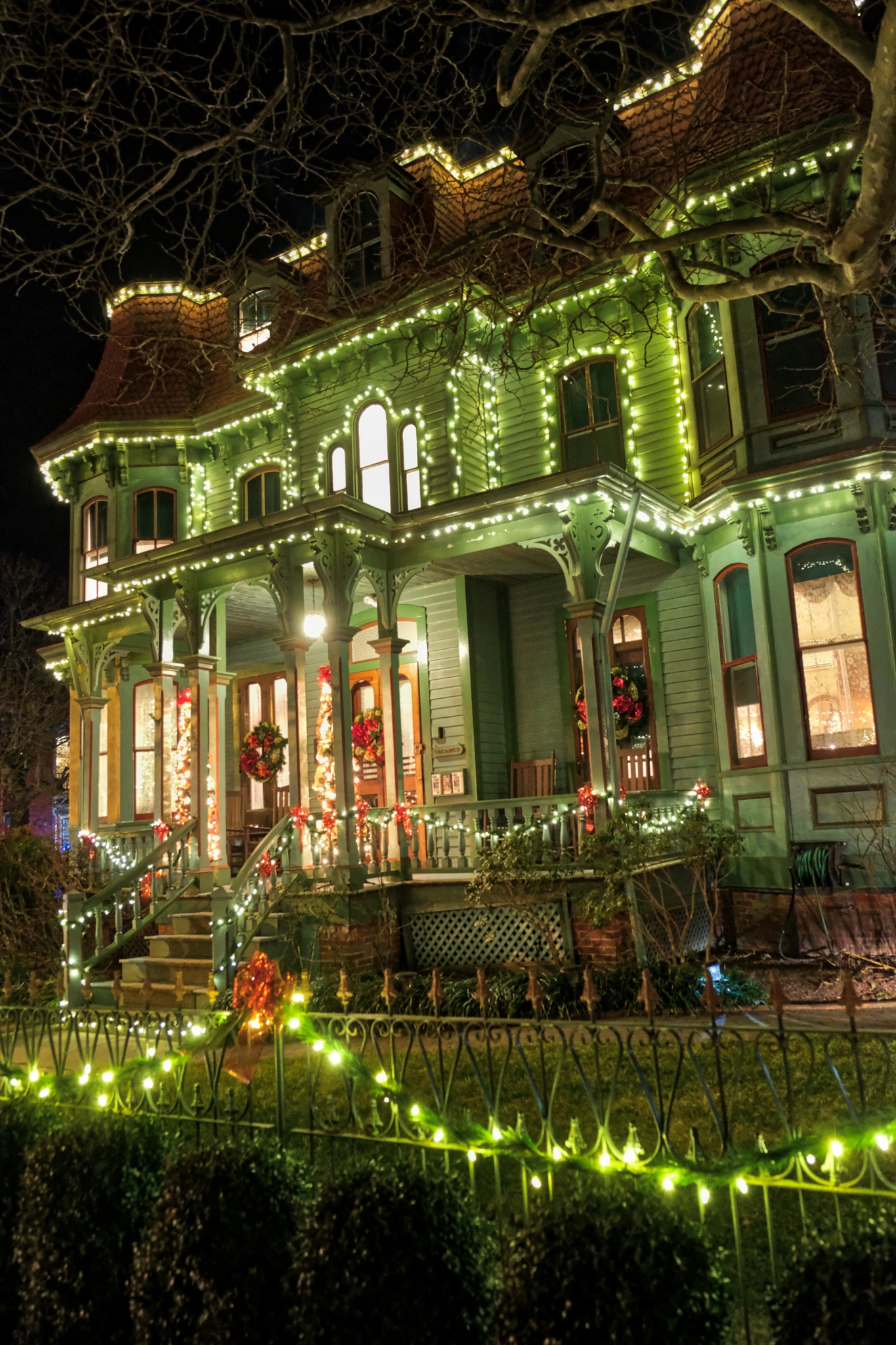 Lit up like Christmas, as they say.
Lit up like Christmas, as they say.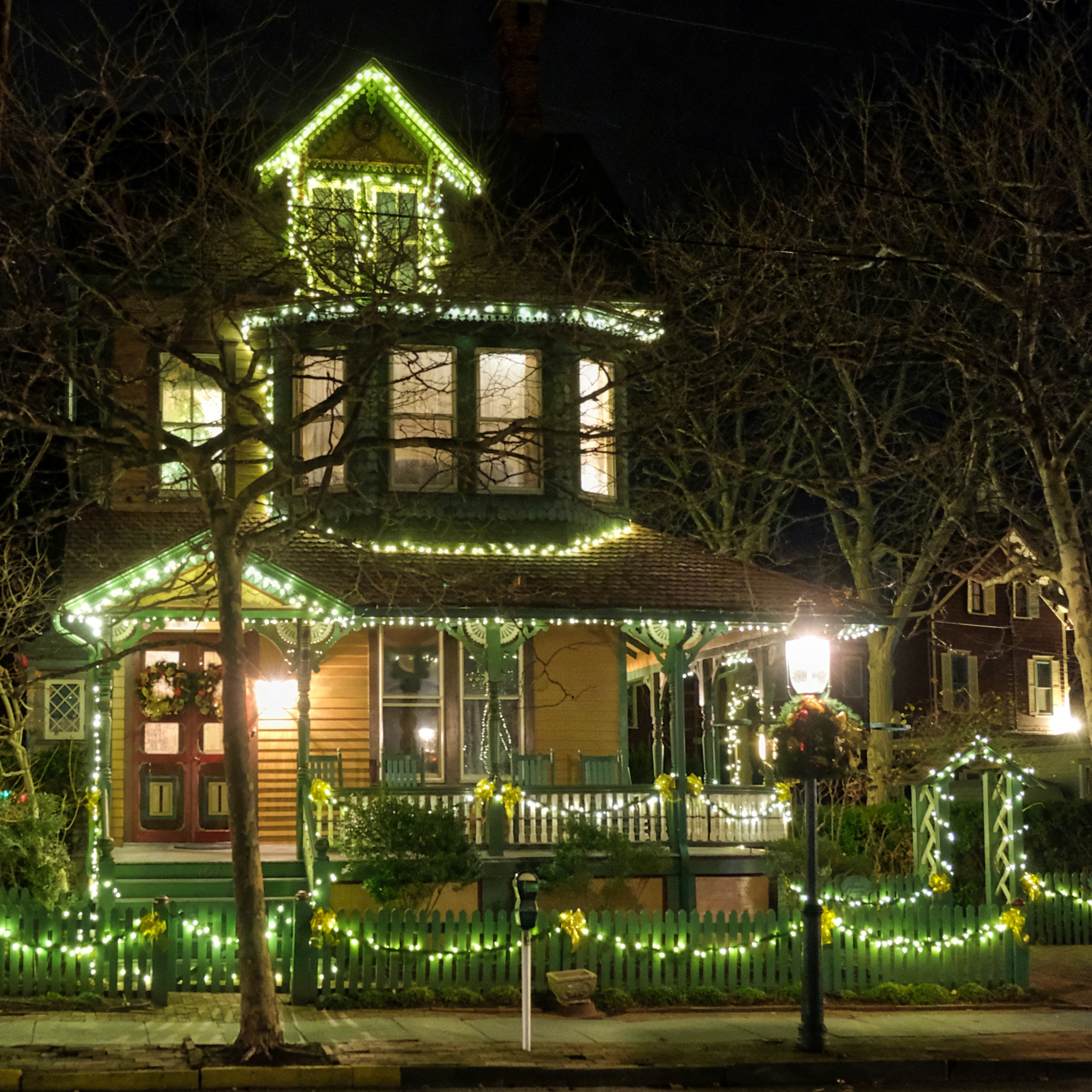 A dream house . . .
A dream house . . .  Another favorite of mine . . . this pink grand dame in all its glory!
Another favorite of mine . . . this pink grand dame in all its glory!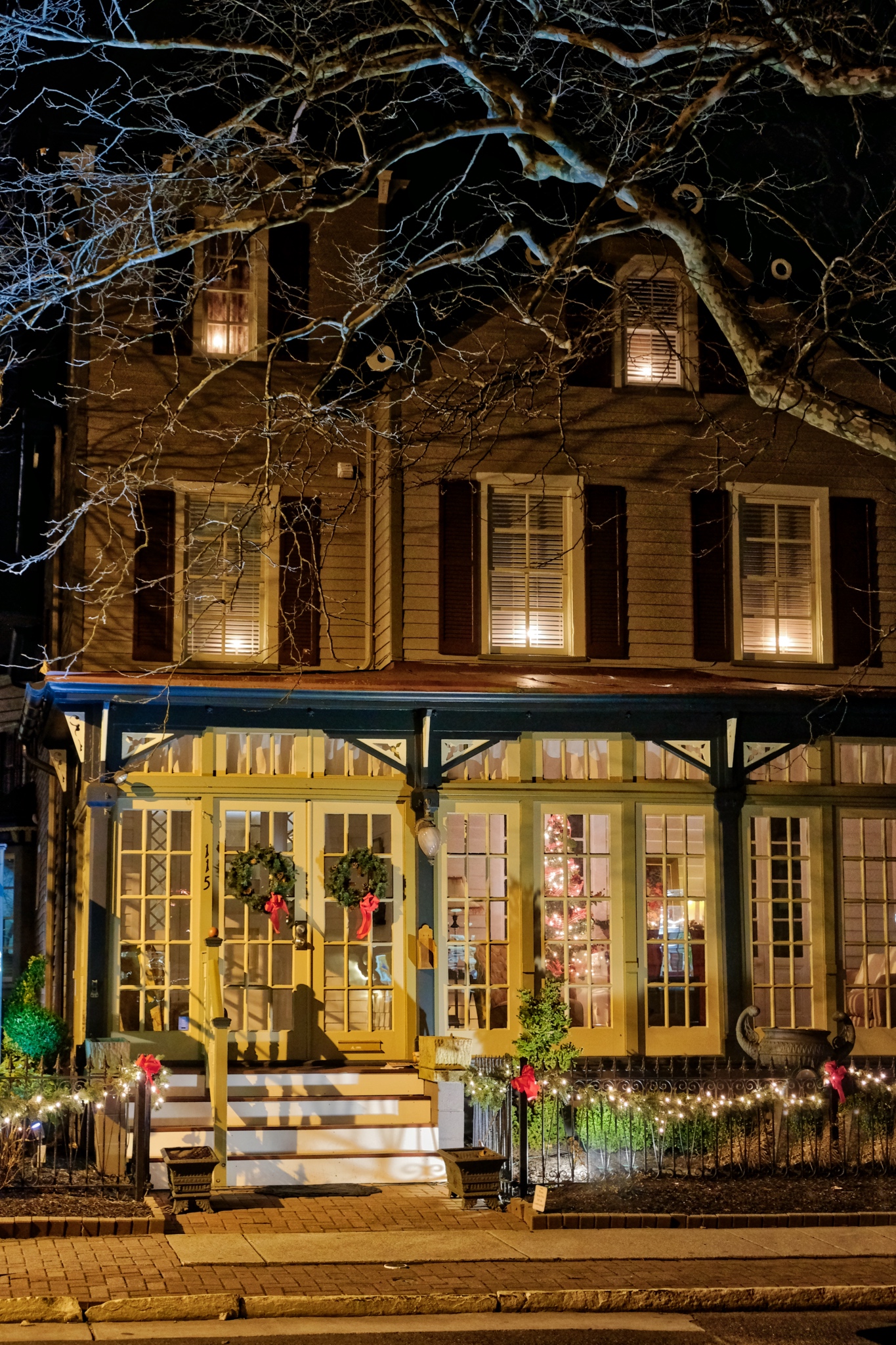 Seen earlier in the daylight, now a gem box of amazing color and form.
Seen earlier in the daylight, now a gem box of amazing color and form.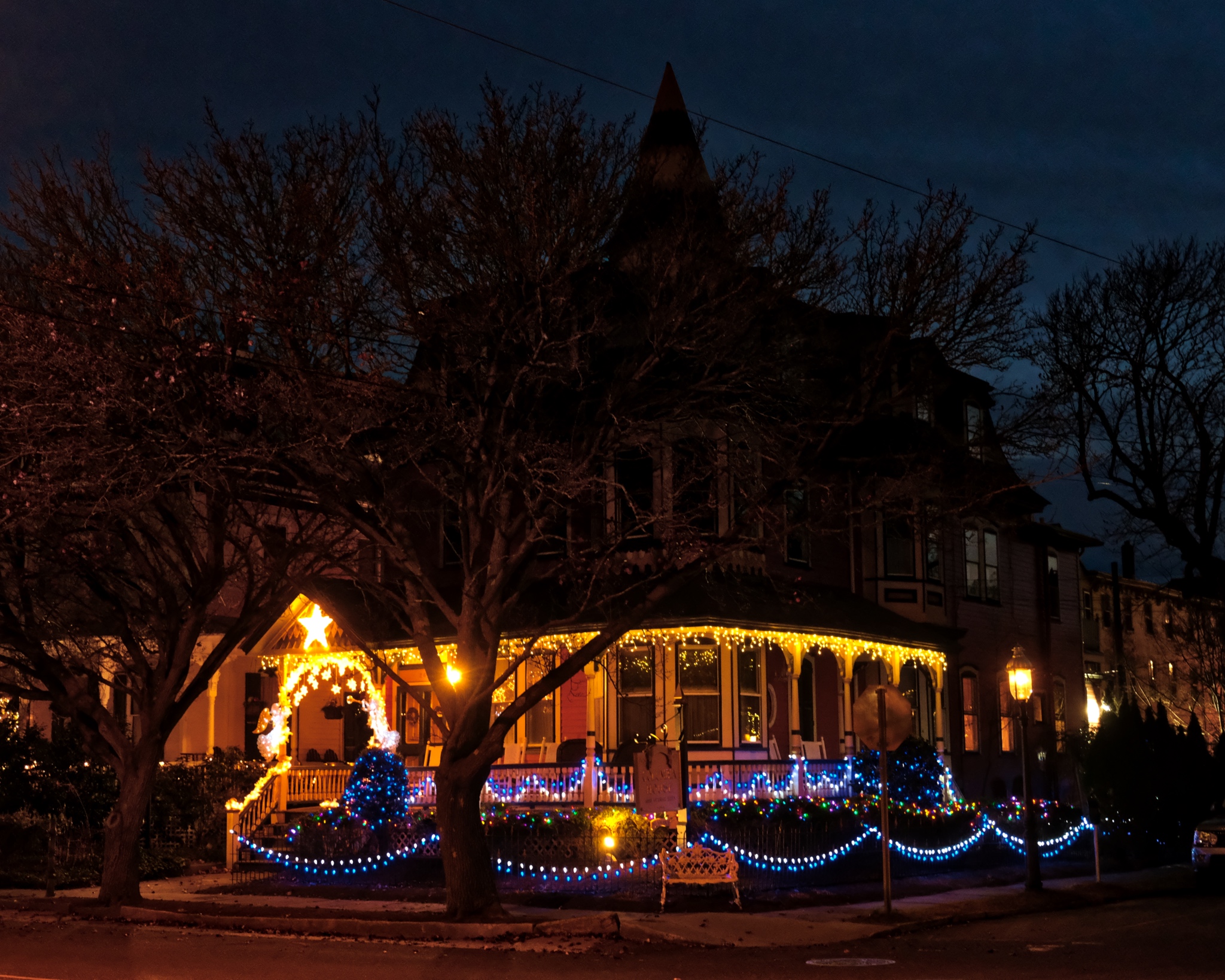 It was late (and cold!) when we finally left Cape May. I want to come back and stay in one of these old beauties. I have added an additional entry at the end of this blog focusing on just the front porches of these old Victorians (Bottom).
It was late (and cold!) when we finally left Cape May. I want to come back and stay in one of these old beauties. I have added an additional entry at the end of this blog focusing on just the front porches of these old Victorians (Bottom).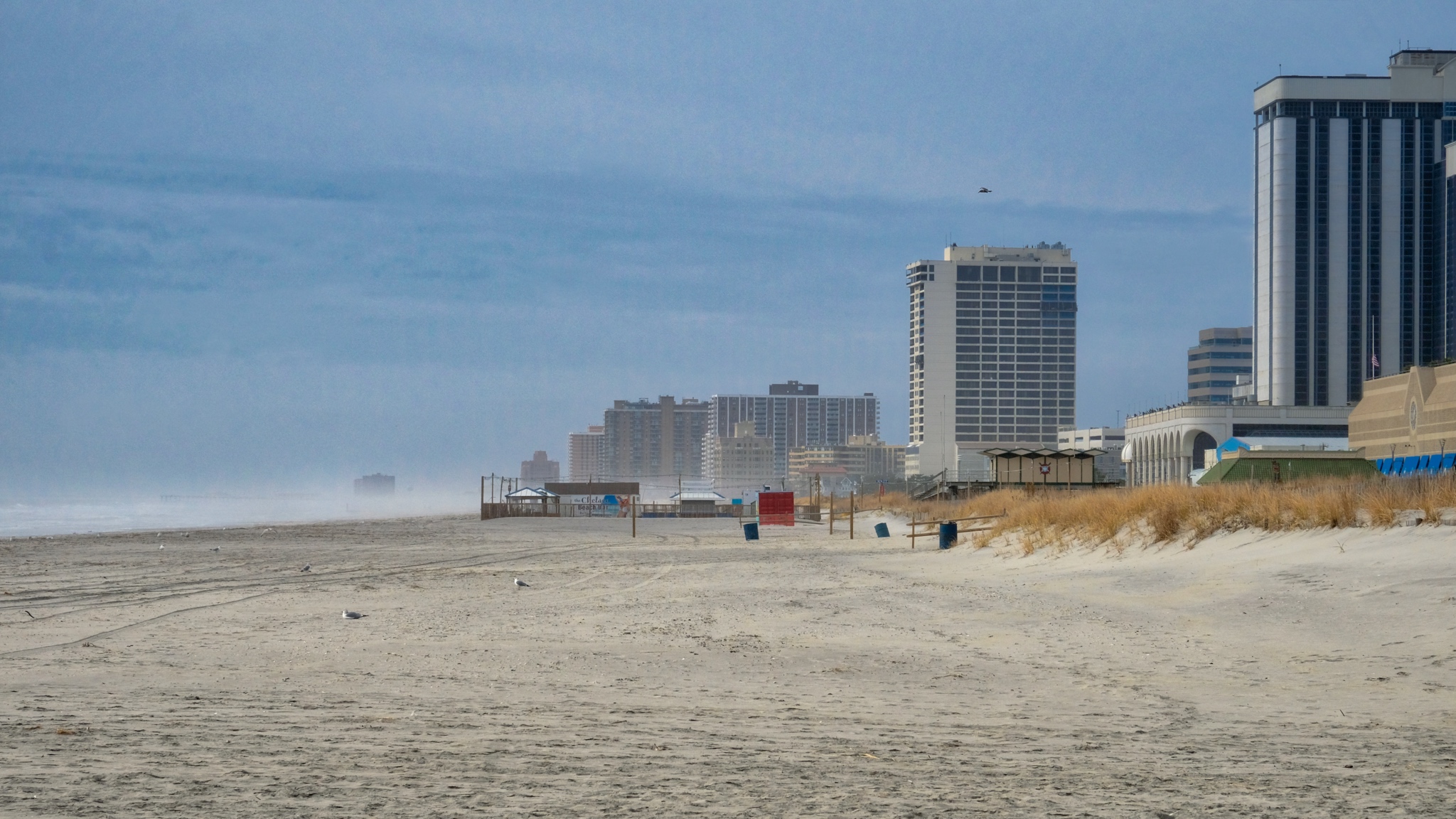 I drove north 30minutes from Ocean City one nice winter day. I brought my bicycle with me and had a nice 10 mile ride along he famous Atlantic City boardwalk.
I drove north 30minutes from Ocean City one nice winter day. I brought my bicycle with me and had a nice 10 mile ride along he famous Atlantic City boardwalk.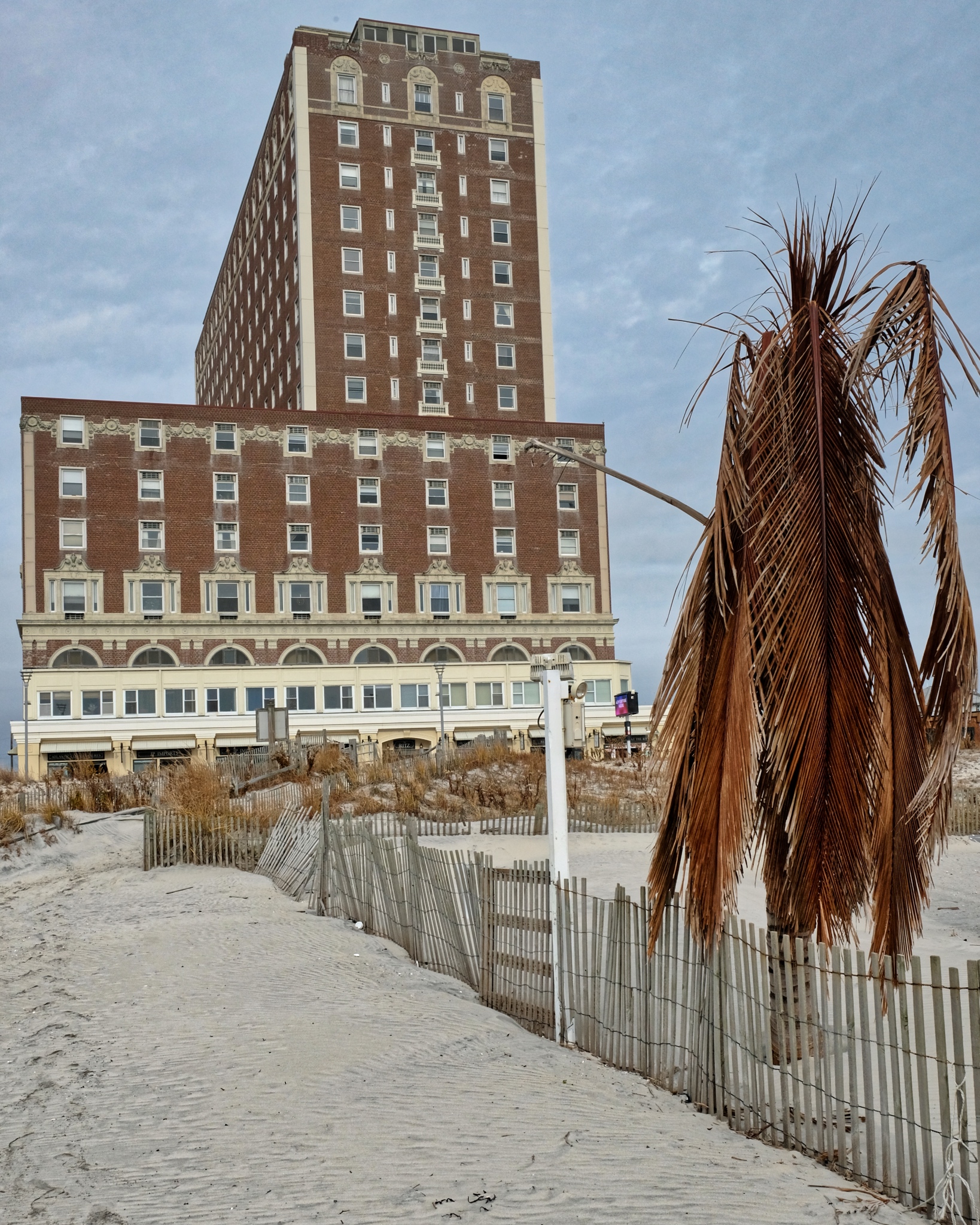 Atlantic City has been the dream retirement spot for eastcoasters for generations. . .
Atlantic City has been the dream retirement spot for eastcoasters for generations. . .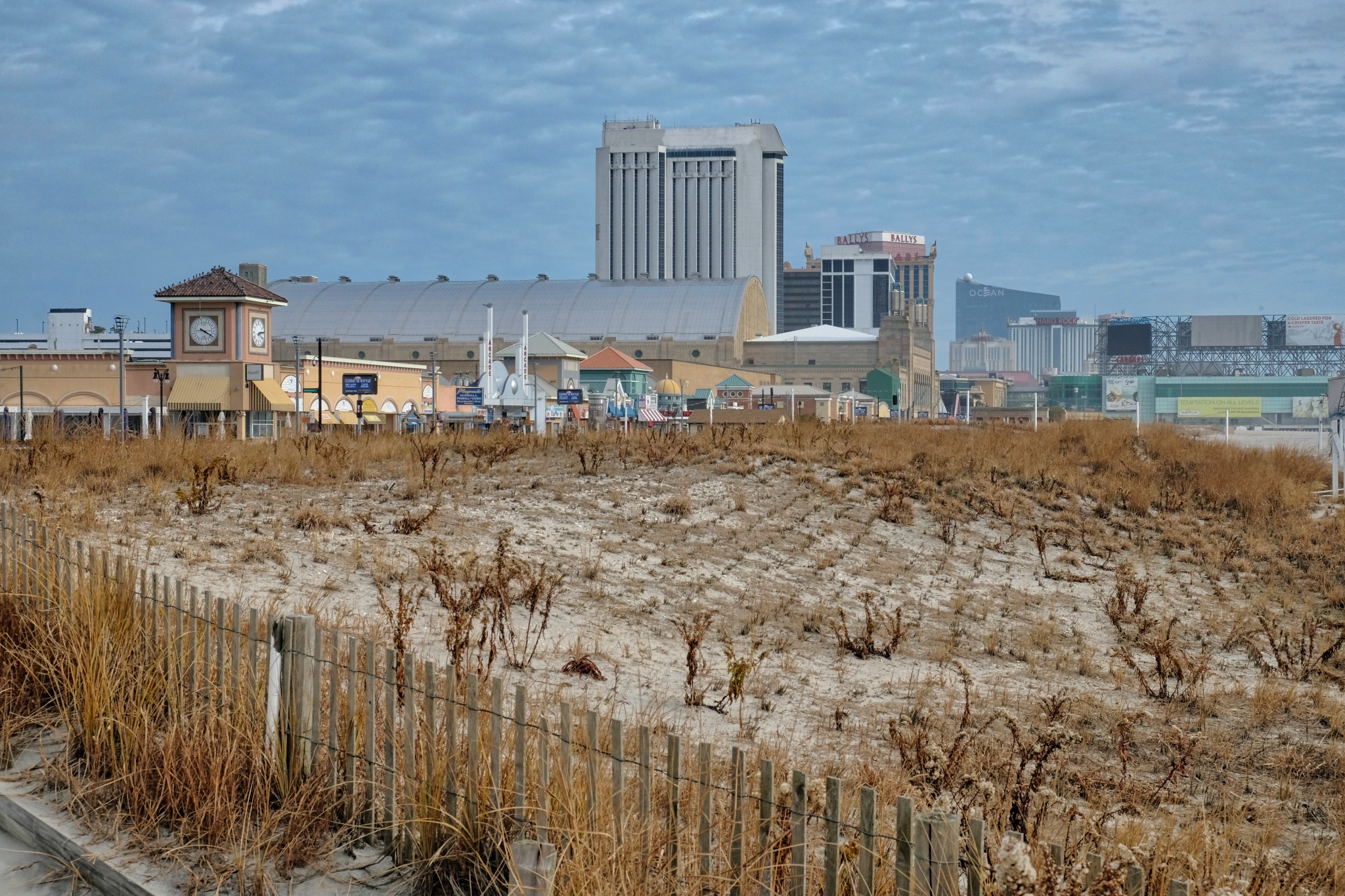 Hurricane Sandy and other major storms have played havoc with the Jersey Shore. After dredged sand was blown in, an attempt to stabilize the new beach.
Hurricane Sandy and other major storms have played havoc with the Jersey Shore. After dredged sand was blown in, an attempt to stabilize the new beach.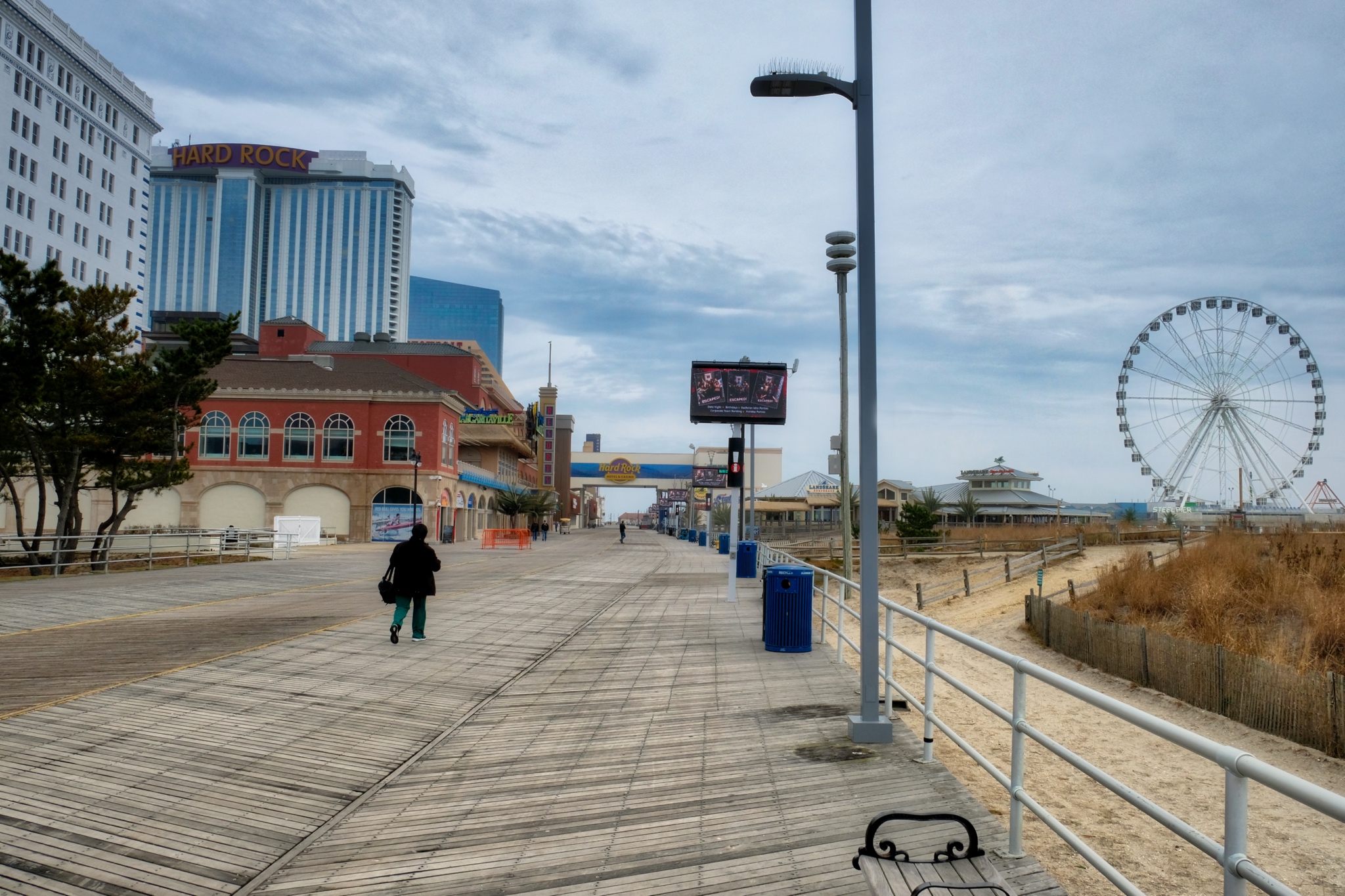 The boardwalk and most of the buildings seemed to be in a good state of repair.
The boardwalk and most of the buildings seemed to be in a good state of repair.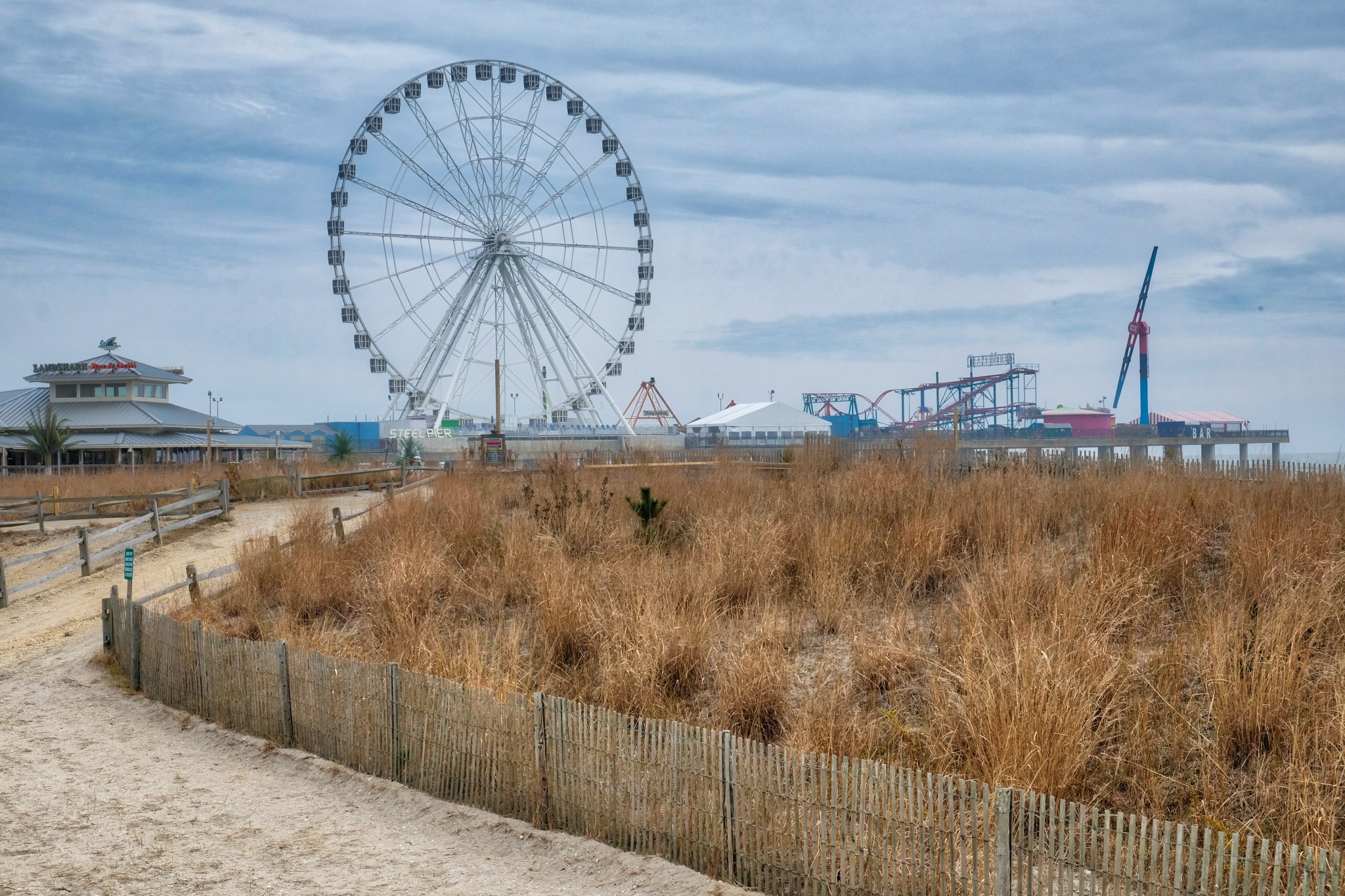 The famous pier at Atlantic City was closed for the season.
The famous pier at Atlantic City was closed for the season.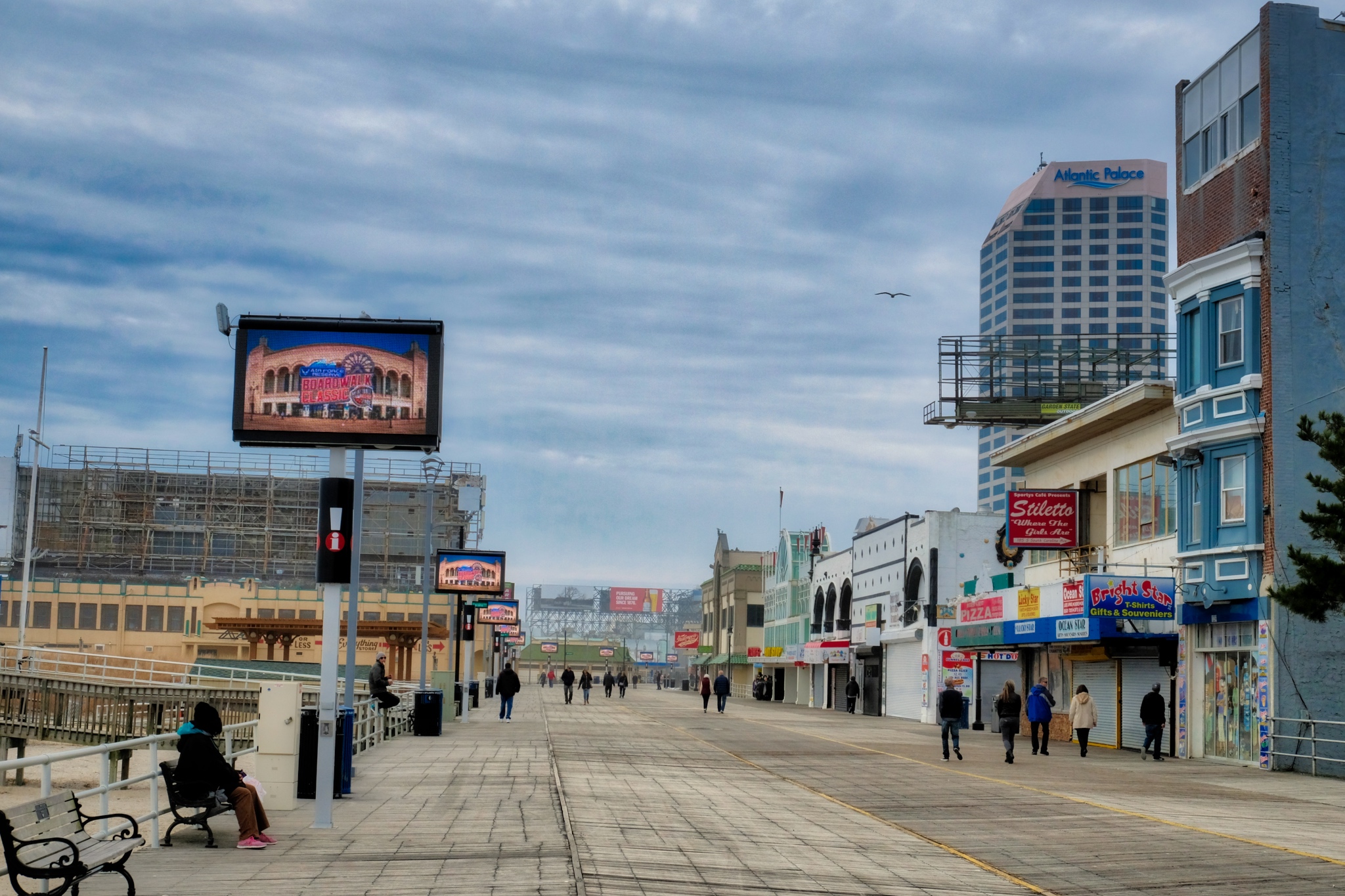 But, of curse, it is the Atlantic City boardwalk that attracts people, even on this cold and clear December day. I really enjoyed my 10 mile bike ride along this wooden bike path.
But, of curse, it is the Atlantic City boardwalk that attracts people, even on this cold and clear December day. I really enjoyed my 10 mile bike ride along this wooden bike path.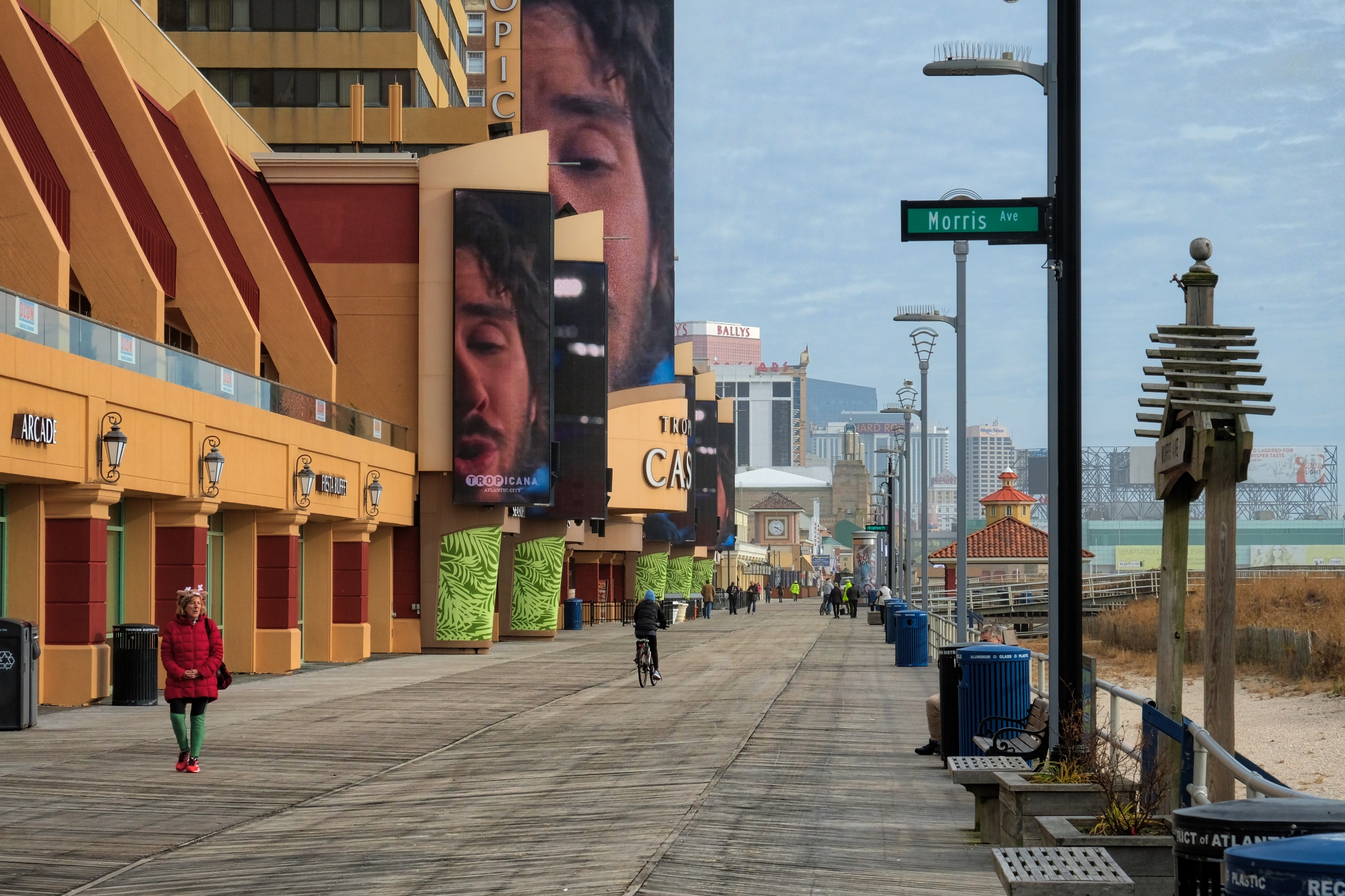 As I took a closer look at the large hotels, I was shocked to see so many of them boarded up . . . closed and abandoned. The economic collapse of 2008 and the establishment of Native American casinos in Pennsylvania had a major negative eeconomic impact on Atlantic City.
As I took a closer look at the large hotels, I was shocked to see so many of them boarded up . . . closed and abandoned. The economic collapse of 2008 and the establishment of Native American casinos in Pennsylvania had a major negative eeconomic impact on Atlantic City.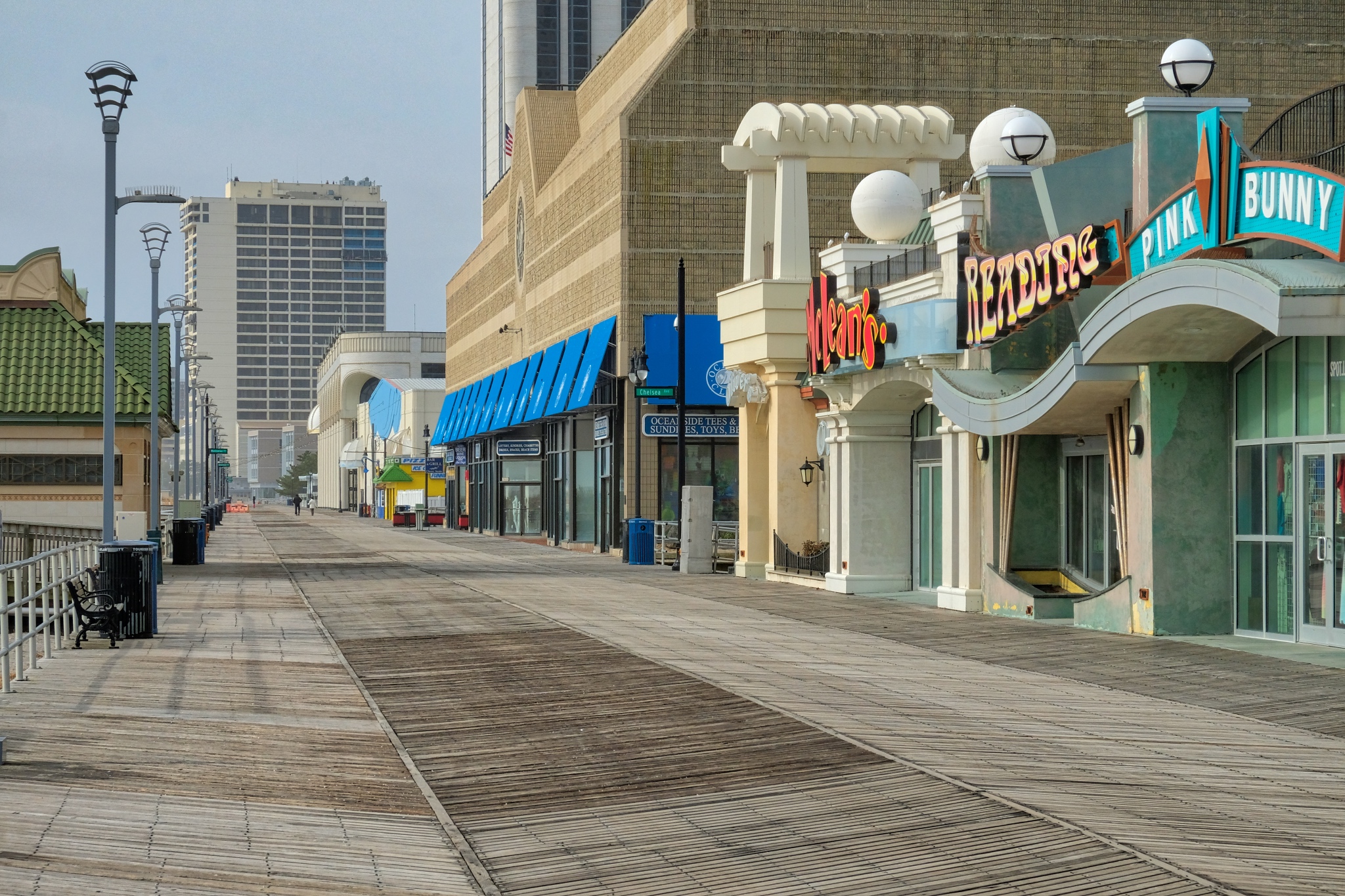 There were a few shops and a couple of cafes open to service the winter wanderers, like me.
There were a few shops and a couple of cafes open to service the winter wanderers, like me.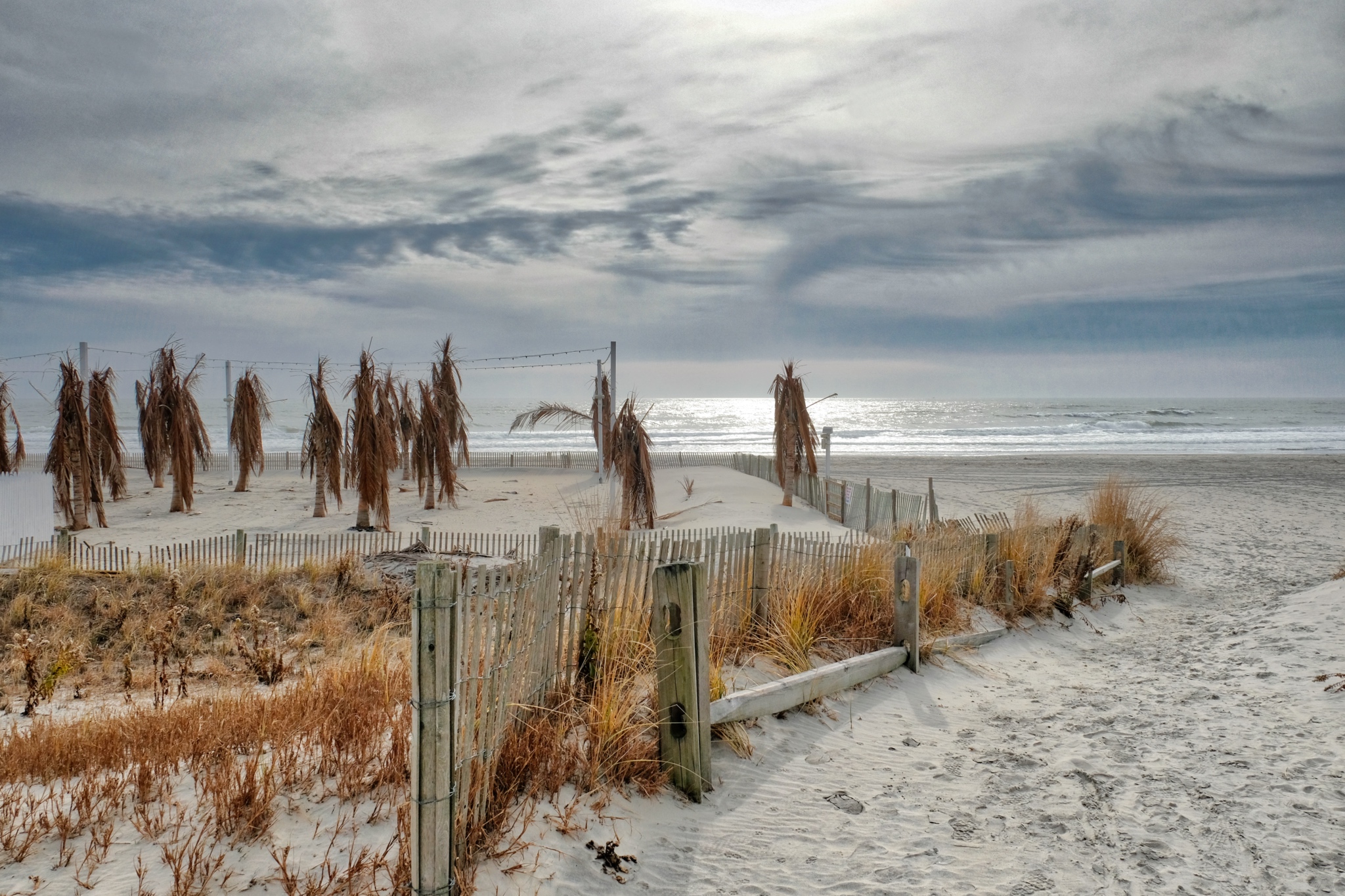 The weathered remains of a hotel beach party set-up . . . the last trace of the summer season. I rode my bike back five miles, loaded it into my camper, and drove back to Ocean City . . . good exercise for the day.
The weathered remains of a hotel beach party set-up . . . the last trace of the summer season. I rode my bike back five miles, loaded it into my camper, and drove back to Ocean City . . . good exercise for the day. Dr. Jeff Harper
Dr. Jeff Harper
The Victorian Porches of Cape May, New Jersey
 One of the most beautiful architectural features of Cape May, New Jersey are the front porches of the old Victorian houses.
One of the most beautiful architectural features of Cape May, New Jersey are the front porches of the old Victorian houses.
 These houses date form a period in cultural history when the front door mattered as the face of the family that lived inside.
These houses date form a period in cultural history when the front door mattered as the face of the family that lived inside.
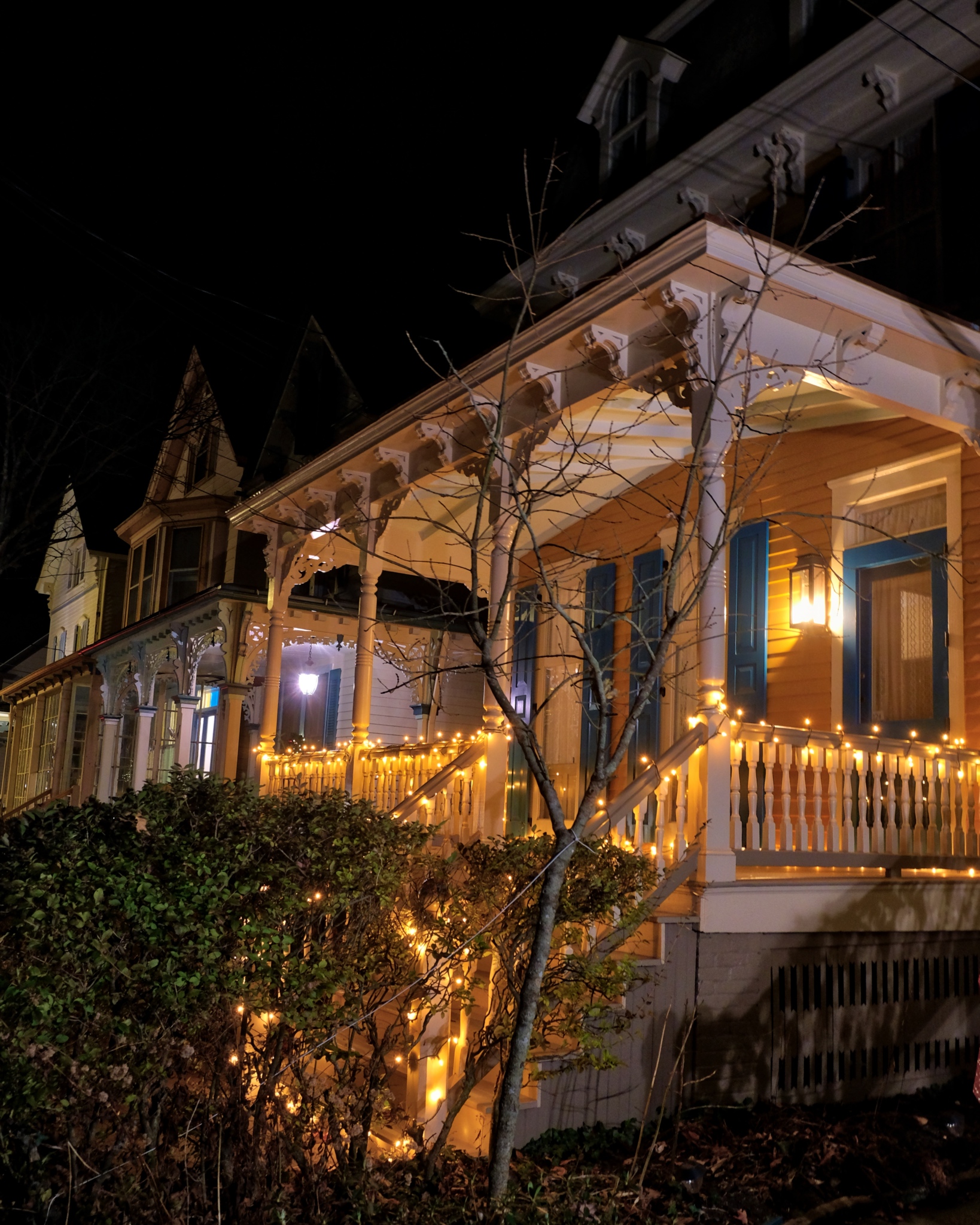 In summer the porch serves as a place to sit and greet your neighbors as they pass by. In winter, it serves as a stage to light the Holiday Season.
In summer the porch serves as a place to sit and greet your neighbors as they pass by. In winter, it serves as a stage to light the Holiday Season.
 Closed or open porches . . . they are such a beautiful feature one wonders why they ever fell out of fashion.
Closed or open porches . . . they are such a beautiful feature one wonders why they ever fell out of fashion.
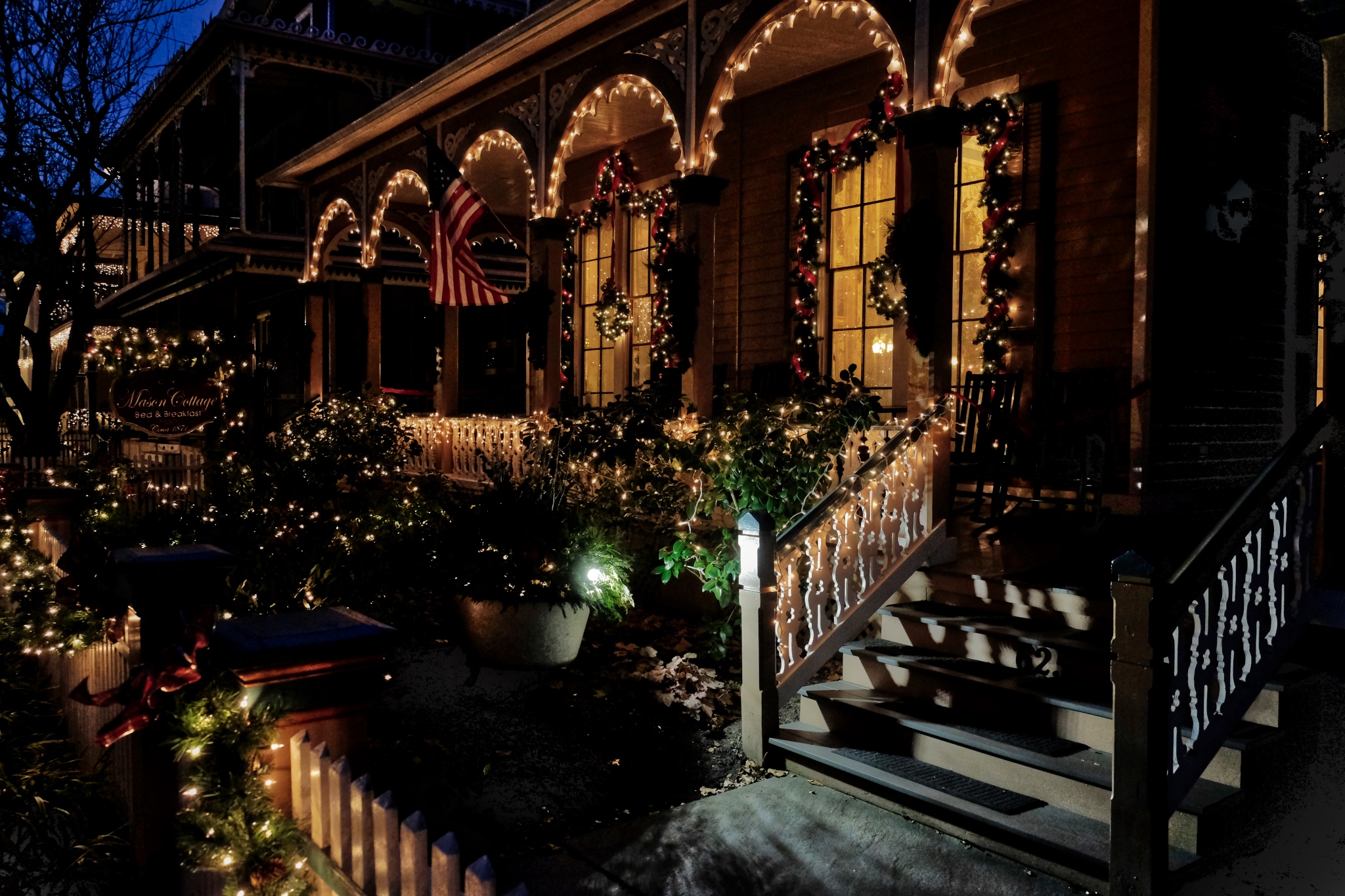 Please, step on in . . .
Please, step on in . . .
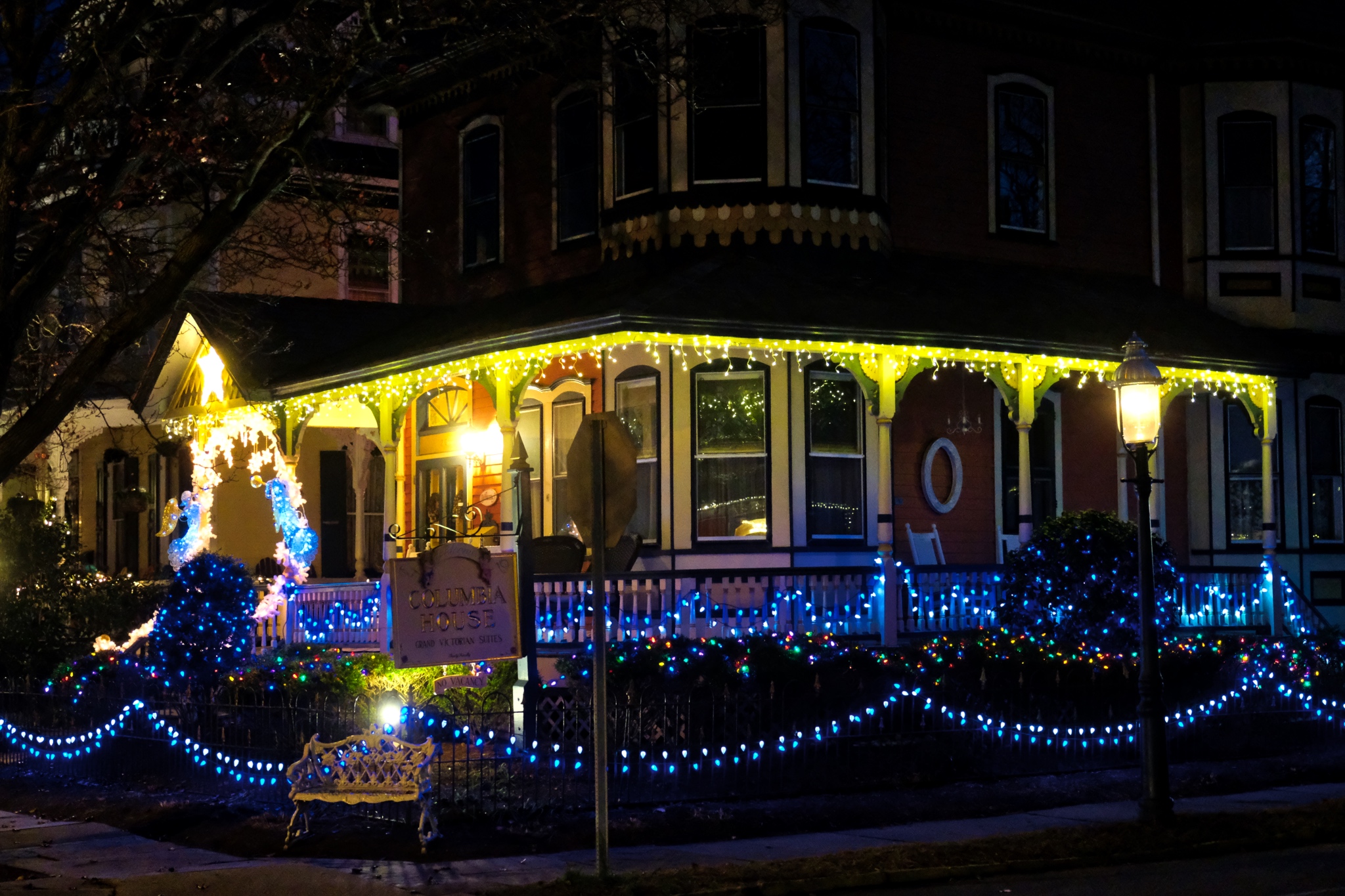 The many B&Bs in Cape May must be packed during the summer season . . . and the rocking chairs on the porches fully occupied.
The many B&Bs in Cape May must be packed during the summer season . . . and the rocking chairs on the porches fully occupied.
 Festive, to say the least.
Festive, to say the least.
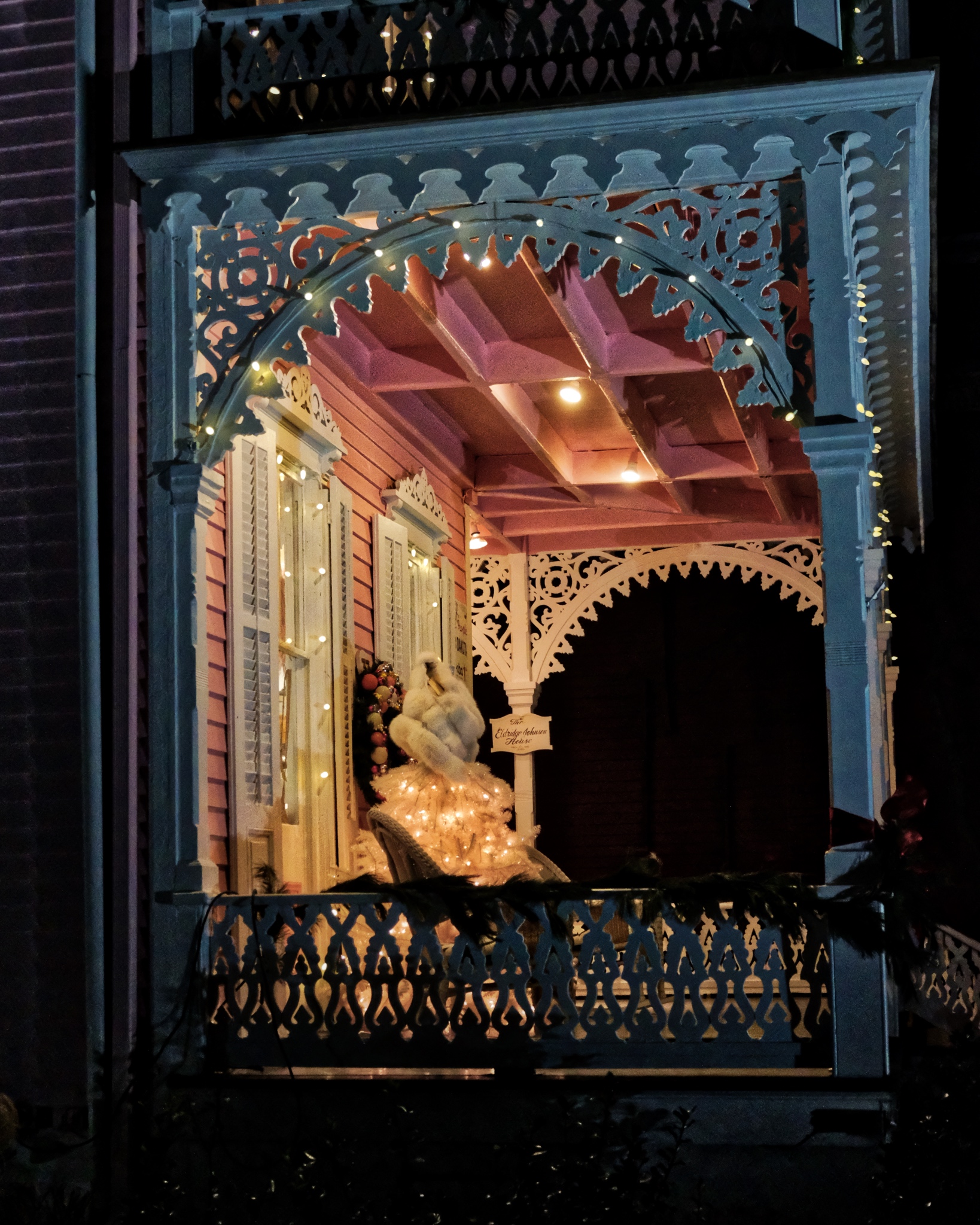 The Carpenter Victorian porch is just pure fantasy!
The Carpenter Victorian porch is just pure fantasy!
 Charming and bold colors.
Charming and bold colors.
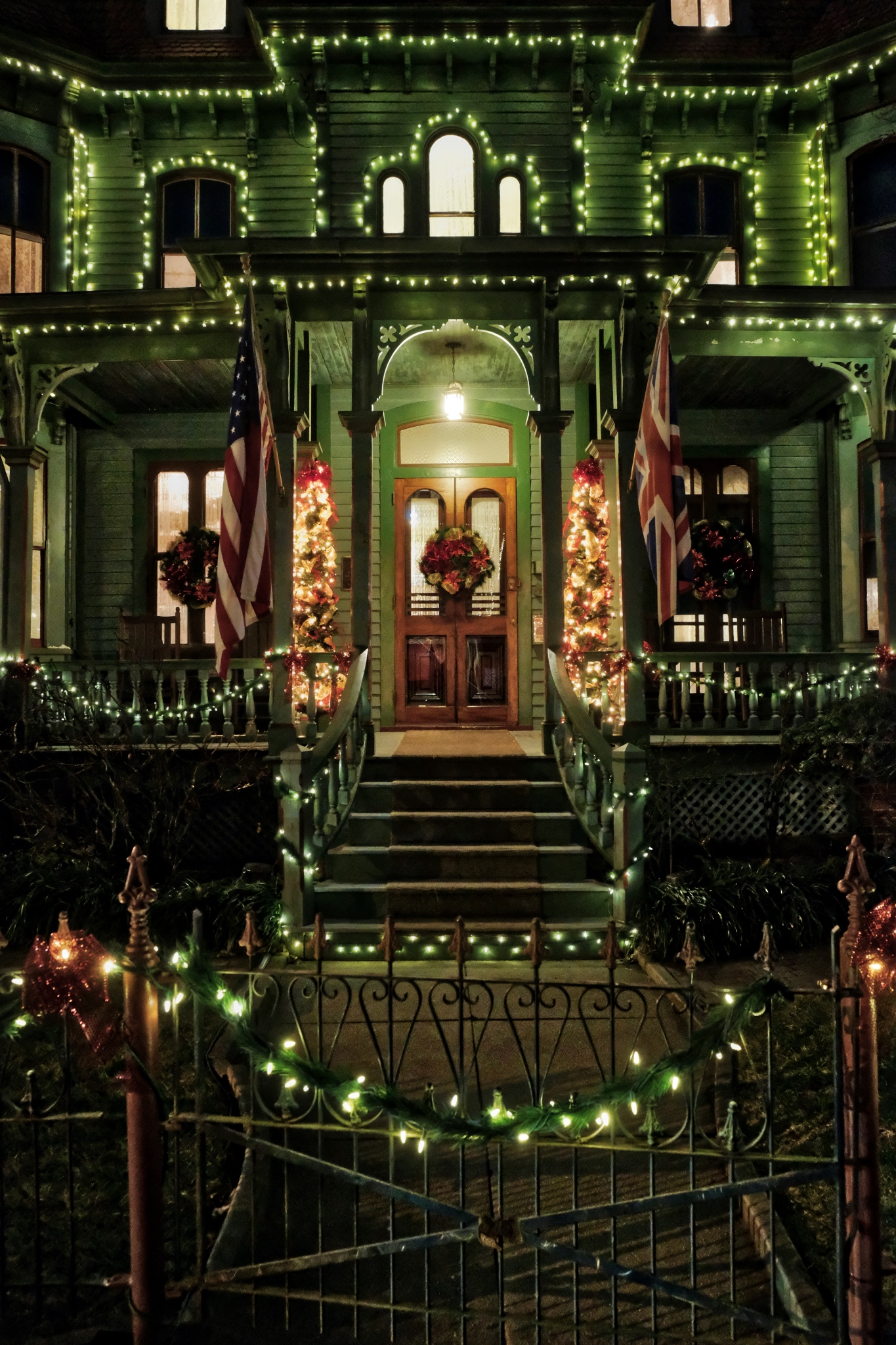 An old Victorian in all its Yuletide glory.
An old Victorian in all its Yuletide glory.
 Soooo inviting!
Soooo inviting!
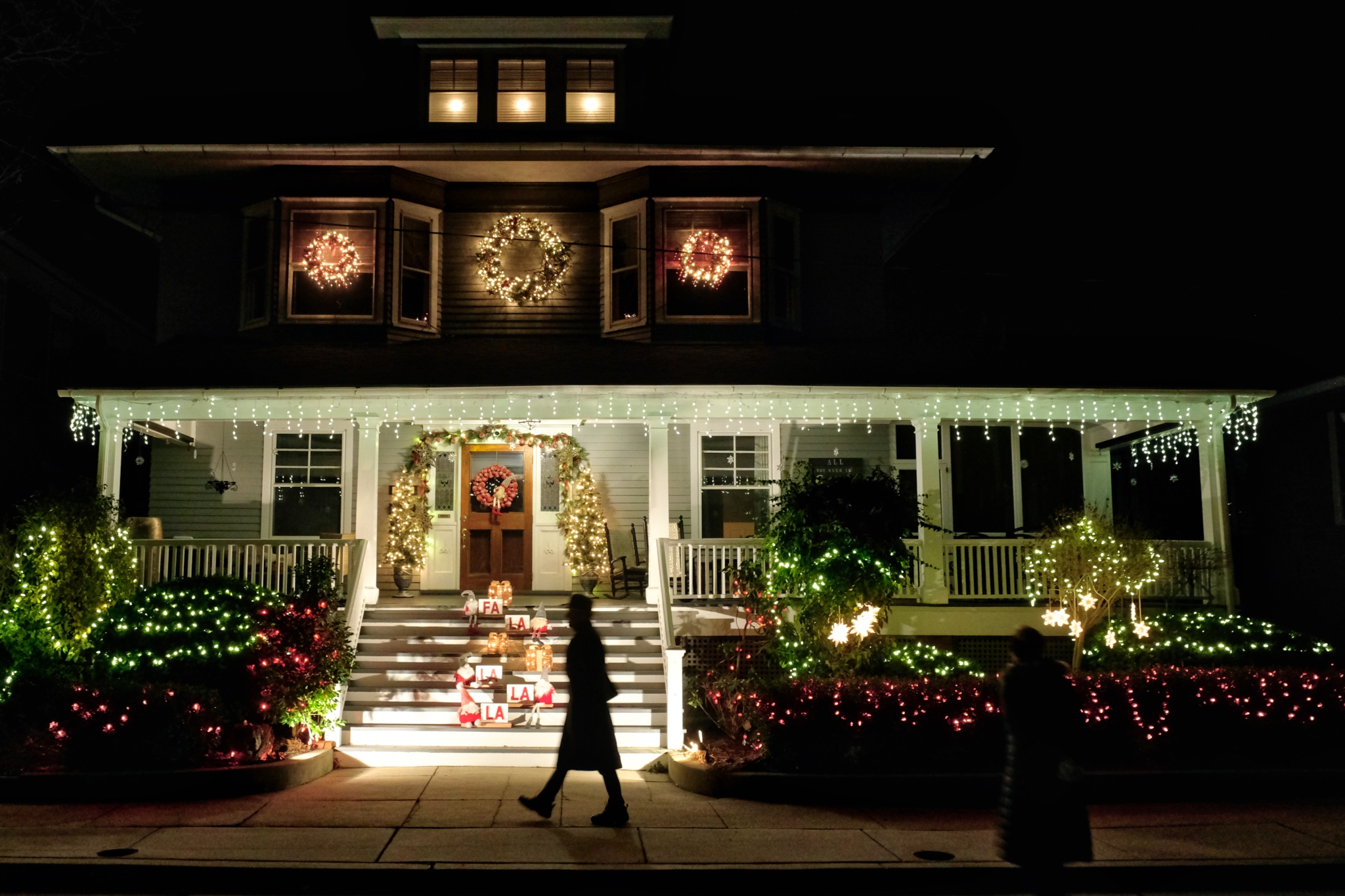 Porch Life has not vanished from the Earth . . . it lives on in Cape May, New Jersey!
Porch Life has not vanished from the Earth . . . it lives on in Cape May, New Jersey!
Road Trip USA: In and Out of Winnemucca, Nevada
 Monday, December 3, 2018 at 3:50AM
Monday, December 3, 2018 at 3:50AM September 2018
 After camping up on Steens Mountain in Oregon, I drove south on Oregon Highway 205. My destination was Winnemucca, Nevada, where I would stage for my planned camping out on Nevada's Black Rock Desert. I was dirty, my camper was dirty, and my clothes were dirty. I needed a few nights in an RV park . . . and I had a hankering for Mexican food.
After camping up on Steens Mountain in Oregon, I drove south on Oregon Highway 205. My destination was Winnemucca, Nevada, where I would stage for my planned camping out on Nevada's Black Rock Desert. I was dirty, my camper was dirty, and my clothes were dirty. I needed a few nights in an RV park . . . and I had a hankering for Mexican food.
 It was roughly 200 miles from my campsite in The Steens to Winnemucca through some of the most uninhabited countryside in the USA. The major wildfires that had swept through much of the western states left behind smoke and haze that obscured the landscape . . . and in some cases made it more interesting.
It was roughly 200 miles from my campsite in The Steens to Winnemucca through some of the most uninhabited countryside in the USA. The major wildfires that had swept through much of the western states left behind smoke and haze that obscured the landscape . . . and in some cases made it more interesting.
 This unforgiving high arid country left behind many abandoned homesteaders and miners' shacks, sheds, and farms buildings in the giant western landscapes.
This unforgiving high arid country left behind many abandoned homesteaders and miners' shacks, sheds, and farms buildings in the giant western landscapes.
 If these walls could talk . . . certainly applies here.
If these walls could talk . . . certainly applies here.
 I had fun stopping, getting out of the truck, taking a photo, driving on a few feet and getting out again . . . . These scenes are so photogenic, I didn't want to miss a shot!
I had fun stopping, getting out of the truck, taking a photo, driving on a few feet and getting out again . . . . These scenes are so photogenic, I didn't want to miss a shot!
 The road went on and on through the dry, smoky landscape. Oregon Highway 205 became Nevada Highways 292 and 140 before joining US Highway 95 into Winnemucca.
The road went on and on through the dry, smoky landscape. Oregon Highway 205 became Nevada Highways 292 and 140 before joining US Highway 95 into Winnemucca.
 An old abandoned farmstead. This one looks like it wasn't abandoned all that long ago. What was the story of this house? Its history?
An old abandoned farmstead. This one looks like it wasn't abandoned all that long ago. What was the story of this house? Its history?
 There were a few wide spot in the road towns along the road to Winnemucca.
There were a few wide spot in the road towns along the road to Winnemucca.
 My camper ECU was acting up . . . the engine developed a radical rich condition . . . lots of black smoke. I diagnosed the problem as a temperature sender. I stopped to let the engine cool down and reset the ECU. It was an opportunity to take a walk around in the parched land.
My camper ECU was acting up . . . the engine developed a radical rich condition . . . lots of black smoke. I diagnosed the problem as a temperature sender. I stopped to let the engine cool down and reset the ECU. It was an opportunity to take a walk around in the parched land.
 It was quiet and still. Cars would come by on the highway only every 10-15 minutes.
It was quiet and still. Cars would come by on the highway only every 10-15 minutes.
 It had been dry here for a long time. Other travellers along this highway had driven off the road into the desert too.
It had been dry here for a long time. Other travellers along this highway had driven off the road into the desert too.
 Yes, the desert is not a welcoming place.
Yes, the desert is not a welcoming place.
 Bone identification is not my academic field of study . . . sheep or cow?
Bone identification is not my academic field of study . . . sheep or cow?
 Back out on the highway and toward distant mountains. I thoroughly enjoy these long desert drives . . . and have missed them in my tropical, equatorial life.
Back out on the highway and toward distant mountains. I thoroughly enjoy these long desert drives . . . and have missed them in my tropical, equatorial life.
 Such lovely layered mountain ridge silhouettes in the wildfire haze.
Such lovely layered mountain ridge silhouettes in the wildfire haze.
 I pulled over to the side of the road whenever I would see these old decaying sheds.
I pulled over to the side of the road whenever I would see these old decaying sheds.
 One of the joys of long desert drives is having the scenery suddenly change as you drive up and over a mountain pass.
One of the joys of long desert drives is having the scenery suddenly change as you drive up and over a mountain pass.
 Another abandoned homestead. This old ranch house was literally 60 miles from the nearest store and gas station.
Another abandoned homestead. This old ranch house was literally 60 miles from the nearest store and gas station.
 Such rough construction. The summer temperatures out here are blistering . . . and the winter sees deep snow for months at a time.
Such rough construction. The summer temperatures out here are blistering . . . and the winter sees deep snow for months at a time.
 My camper was running well now . . .
My camper was running well now . . .
 Dry desert just north of Winnemucca, Nevada.
Dry desert just north of Winnemucca, Nevada.
 And on I went . . . down the highway of mirages.
And on I went . . . down the highway of mirages.
 I eventually arrived in Winnemucca (pop.7,600), bought gas, went to a self-wash car wash, found a Mexican restaurant (and had a GREAT meal), checked into the Model T Casino RV Park (I bought the t-shirt!) I stayed there two nights while I resupplied the camper with food and water, ice, washed the clothes, cleaned out the camper (bought a small vacuum), took a shower, bought a new temperature sender for the truck, and watched a few NFL games on the big screen TV in the casino bar. A very nice stop.
I eventually arrived in Winnemucca (pop.7,600), bought gas, went to a self-wash car wash, found a Mexican restaurant (and had a GREAT meal), checked into the Model T Casino RV Park (I bought the t-shirt!) I stayed there two nights while I resupplied the camper with food and water, ice, washed the clothes, cleaned out the camper (bought a small vacuum), took a shower, bought a new temperature sender for the truck, and watched a few NFL games on the big screen TV in the casino bar. A very nice stop.
 There was a great sunset both nights in Winnemucca.
There was a great sunset both nights in Winnemucca.
 The view from my RV park.
The view from my RV park.
 I would come back to this same RV park when I returned from my extended camping in the Black Rock Desert.
I would come back to this same RV park when I returned from my extended camping in the Black Rock Desert.
 Steens Mountain (Frenchglen Hotel) to Winnemucca, Nevada.
Steens Mountain (Frenchglen Hotel) to Winnemucca, Nevada.
_________________________________________________
Golconda, Nevada
 US Interstate Highway 80 heading East toward the Bonneville Salt Flats.
US Interstate Highway 80 heading East toward the Bonneville Salt Flats.
 While driving east I was having some trouble with my old Chevy pick-up . . . the ECU was acting up and I knew I needed to replace the temp sender and fitting. I had a new one in the truck, but had been too lazy to change it. I pulled off at Golconda, Nevada and waited for the engine to cool off . . . and in the meantime I walked around this little old mining town with my camera. It was worth the stop.
While driving east I was having some trouble with my old Chevy pick-up . . . the ECU was acting up and I knew I needed to replace the temp sender and fitting. I had a new one in the truck, but had been too lazy to change it. I pulled off at Golconda, Nevada and waited for the engine to cool off . . . and in the meantime I walked around this little old mining town with my camera. It was worth the stop.
 I pulled up under a tree in front of the old Golconda School (circa, 1888), opened the hood, and headed down the street, camera in hand.
I pulled up under a tree in front of the old Golconda School (circa, 1888), opened the hood, and headed down the street, camera in hand.
 Golcanda, population 216, is an old mining town with very little activity left in the mining sector. Corrugation!
Golcanda, population 216, is an old mining town with very little activity left in the mining sector. Corrugation!
 One of my favorite photographic subjects is corrugation and dilapidation . . . Golconda had both.
One of my favorite photographic subjects is corrugation and dilapidation . . . Golconda had both.
 There were lots of old farm implements sitting around in the brush.
There were lots of old farm implements sitting around in the brush.
 It seemed like about half of the houses and businesses were closed, abandoned.
It seemed like about half of the houses and businesses were closed, abandoned.
 Some beautiful ensembles of junk, old cars, weathered surfaces, and light . . .
Some beautiful ensembles of junk, old cars, weathered surfaces, and light . . .
 A failed scooter business . . . .
A failed scooter business . . . .
 Like a movie set . . .
Like a movie set . . .
 A closed store out on Old Texas Highway 40 heading out of town.
A closed store out on Old Texas Highway 40 heading out of town.
 Closed, vacant, the people and stories gone.
Closed, vacant, the people and stories gone.
 I couldn't resist these marvelous shapes, surfaces, and shadows.
I couldn't resist these marvelous shapes, surfaces, and shadows.
 Gone from use.
Gone from use.
 A fire burned the rear of the old store . . . but at sometime after it had been abandoned.
A fire burned the rear of the old store . . . but at sometime after it had been abandoned.
 WOW! These surface textures are amazing . . . and beautiful in a strange way.
WOW! These surface textures are amazing . . . and beautiful in a strange way.
 Sad and forlorn, still and silent . . .
Sad and forlorn, still and silent . . .
 A straw rake imbedded in a tumbleweed . . . with white picket fence.
A straw rake imbedded in a tumbleweed . . . with white picket fence.
 Lots of old, abandoned automobiles about . . . and a surprising number of panel trucks.
Lots of old, abandoned automobiles about . . . and a surprising number of panel trucks.
 I'm surprised the hot rodders haven't been by and 'picked' this nice Chevy panel. I'd love to have it . . .
I'm surprised the hot rodders haven't been by and 'picked' this nice Chevy panel. I'd love to have it . . .
 I know these towns . . . the hot, quiet, lonely days . . .
I know these towns . . . the hot, quiet, lonely days . . .
 I do not fully understand why I find great beauty in these old places . . .
I do not fully understand why I find great beauty in these old places . . .
 I walked back across the mainline rails to the school and my camper. Such a beautiful location for a town.
I walked back across the mainline rails to the school and my camper. Such a beautiful location for a town.
 The pride of the town, the restored, and nationally listed, Golconda School.
The pride of the town, the restored, and nationally listed, Golconda School.
 Winnemucca to the Bonneville Salt Flats.
Winnemucca to the Bonneville Salt Flats.
Road Trip USA: Bonneville Salt Flats, Utah
 Friday, November 30, 2018 at 4:16AM
Friday, November 30, 2018 at 4:16AM World of Speed, September 14-17, 2018
 Out on the great Bonneville Salt Flats in Utah in mid-September to attend the World of Speed land speed record event. It was a great experience.
Out on the great Bonneville Salt Flats in Utah in mid-September to attend the World of Speed land speed record event. It was a great experience.
 This is what I came all this way to see . . . pure speed . . . and enough room to run flat out! Bonneville land speed racing is a very special and rarified form of mortorsport.
This is what I came all this way to see . . . pure speed . . . and enough room to run flat out! Bonneville land speed racing is a very special and rarified form of mortorsport.
 American 'Hot Rods' have their roots on the dry desert lake beds of California and the salt flats of Utah. Early hot rodders would strip their cars down so they were as light as possible and modify their engines for maximum power and then take them out to the salt flats to "see what she'll do."
American 'Hot Rods' have their roots on the dry desert lake beds of California and the salt flats of Utah. Early hot rodders would strip their cars down so they were as light as possible and modify their engines for maximum power and then take them out to the salt flats to "see what she'll do."
_______________________________
 The Bonneville Salt Flats have been used to set land speed records since 1896. I always wanted to go to the salt flats and my road trip offered me the chance to attend.
The Bonneville Salt Flats have been used to set land speed records since 1896. I always wanted to go to the salt flats and my road trip offered me the chance to attend.
 I arrived at the race track in the late afternoon after having driven from Winnemucca, Nevada, just as they were closing the salt for the night. Only racers with race entered race cars are allowed to camp on the salt.
I arrived at the race track in the late afternoon after having driven from Winnemucca, Nevada, just as they were closing the salt for the night. Only racers with race entered race cars are allowed to camp on the salt.
 The Bonneville Salt Flats are famous all over the world. A steady stream of cars would show up and people would get out and wander around on the salt.
The Bonneville Salt Flats are famous all over the world. A steady stream of cars would show up and people would get out and wander around on the salt.
 There was still quite a lot of action on the salt. Race cars were being towed to and from the starting line for some reason.
There was still quite a lot of action on the salt. Race cars were being towed to and from the starting line for some reason.
 The first actual race car I saw from behind the entry gate was this nice early 50s Chevrolet.
The first actual race car I saw from behind the entry gate was this nice early 50s Chevrolet.
 I was getting excited. There are many, many different classes of land speed race cars . . . all the way from 100cc sidecar motorcycle to wheel-driven and jet powered 500++ mile per hour streamliners.
I was getting excited. There are many, many different classes of land speed race cars . . . all the way from 100cc sidecar motorcycle to wheel-driven and jet powered 500++ mile per hour streamliners.
 There is a 'long course' and a 'short course.' The long course pits were about three miles from the starting line. A row of cars leaving the salt as it began to get dark.
There is a 'long course' and a 'short course.' The long course pits were about three miles from the starting line. A row of cars leaving the salt as it began to get dark.
 A strong wind came up out of nowhere as the sun set.
A strong wind came up out of nowhere as the sun set.
 I love desert sunsets, but this one was among the best I have seen.
I love desert sunsets, but this one was among the best I have seen.
 I stayed the night in my camper just outside of the entrance.
I stayed the night in my camper just outside of the entrance.
 I was awakened early by the sound of unmuffled race engines as racers were driving to the starting line in preparation for a day of speed. I loved this car: my very first car was a 1957 Chevrolet station wagon like this, but in all white.
I was awakened early by the sound of unmuffled race engines as racers were driving to the starting line in preparation for a day of speed. I loved this car: my very first car was a 1957 Chevrolet station wagon like this, but in all white.
 I drove across the salt to the pit area and set up camp for the day, offloaded my bicycle and rode it around the pits for a look see. I camped next to this big 4X4 truck owned by a Belgian family who were driving from Alaska to Patagonia!
I drove across the salt to the pit area and set up camp for the day, offloaded my bicycle and rode it around the pits for a look see. I camped next to this big 4X4 truck owned by a Belgian family who were driving from Alaska to Patagonia!
 The pits were full of every kind of race car imaginable. From these 'antique' street roadsters to . . .
The pits were full of every kind of race car imaginable. From these 'antique' street roadsters to . . .
 . . . to futuristic, sophisticated land speed streamliners.
. . . to futuristic, sophisticated land speed streamliners.
 Working on a B/Competition Coupe in the pits. Basic tools and a simple trailer. They could only muster a troubled 174mph run on a 265mph class record.
Working on a B/Competition Coupe in the pits. Basic tools and a simple trailer. They could only muster a troubled 174mph run on a 265mph class record.
 This V4F/Competition Coupe did much better, setting a new record in their class of 159.5mph (bettering the old record of 156.5mph). The 'V4F' class designates a "Pre-1935 American made four cylinder flathead" engine. Fantastic performance for such an old engine technology.
This V4F/Competition Coupe did much better, setting a new record in their class of 159.5mph (bettering the old record of 156.5mph). The 'V4F' class designates a "Pre-1935 American made four cylinder flathead" engine. Fantastic performance for such an old engine technology.
 This race car would look right at home on a drag strip. But look closely and you can see that the chassis is much more sturdy than your typical 1/4 mile dragster. These cars have to run at top speed for three miles . . . and then another mile or two to shut down . . . and not always on a smooth salt flat (although this year it was 'perfect' according to the racers). However, this team experienced true heartbreak: Utilizing a 430 cubic inch HEMI on nitromethane, they ran a 359.11mph against a class record of 360.07mph!! They missed the record by less than 1 mile per hour!!!
This race car would look right at home on a drag strip. But look closely and you can see that the chassis is much more sturdy than your typical 1/4 mile dragster. These cars have to run at top speed for three miles . . . and then another mile or two to shut down . . . and not always on a smooth salt flat (although this year it was 'perfect' according to the racers). However, this team experienced true heartbreak: Utilizing a 430 cubic inch HEMI on nitromethane, they ran a 359.11mph against a class record of 360.07mph!! They missed the record by less than 1 mile per hour!!!
 A streamliner team all the way from New Zealand with an F/Gas Streamliner (N/A 183ci, or 2.5L). They set a new class record at 304mph (the old record was 298mph). Congratulations Kiwis!
A streamliner team all the way from New Zealand with an F/Gas Streamliner (N/A 183ci, or 2.5L). They set a new class record at 304mph (the old record was 298mph). Congratulations Kiwis!
 Like drag racing, you can roam the pit area at a salt flats race and get up close to the race cars.
Like drag racing, you can roam the pit area at a salt flats race and get up close to the race cars.
 I like to follow a few cars and teams across an event. These 'geezers' (like me!) were here with a brand new race car that looked like a very old 'belly tank' lakester. I can tell you from my own racing experience, having a race car and being on a race team is a HUGE and consuming drama . . . and a fantastic life experience.
I like to follow a few cars and teams across an event. These 'geezers' (like me!) were here with a brand new race car that looked like a very old 'belly tank' lakester. I can tell you from my own racing experience, having a race car and being on a race team is a HUGE and consuming drama . . . and a fantastic life experience.
 Being towed to the starting line staging area . . . hoping everything is just right for the perfect pass down the Long Course.
Being towed to the starting line staging area . . . hoping everything is just right for the perfect pass down the Long Course.
 Time to buckle in for the big event. This is an exciting moment for the whole crew. This is what you have lived for.
Time to buckle in for the big event. This is an exciting moment for the whole crew. This is what you have lived for.
 After being pushed up to a speed that the first gear can handle, he is off down the track . . . WOW!
After being pushed up to a speed that the first gear can handle, he is off down the track . . . WOW!
 After the thrill-of-a-lifetime run (a test pass) . . . towed back to the team pit for refinement, adjustment, maintenance, and readying for the next pass. The test pass netted them a troubled 116mph on a 279mph class record.
After the thrill-of-a-lifetime run (a test pass) . . . towed back to the team pit for refinement, adjustment, maintenance, and readying for the next pass. The test pass netted them a troubled 116mph on a 279mph class record.
 The rules allow some pretty radical modification: look closely and you can see that this is a Ford Model T roadster . . . with a really, really long nose (and a supercharged engine). They ran 190.99 on Sunday.
The rules allow some pretty radical modification: look closely and you can see that this is a Ford Model T roadster . . . with a really, really long nose (and a supercharged engine). They ran 190.99 on Sunday.
 Special tires with low rolling resistance and capable of very high speeds.
Special tires with low rolling resistance and capable of very high speeds.
 Some of these land speed race cars are really impressive. This one has an engine of just 1.65L (100 cubic inches) . . . supercharged on nitromethane fuel, and classified as a motorcycle with a side car (it has three wheels).
Some of these land speed race cars are really impressive. This one has an engine of just 1.65L (100 cubic inches) . . . supercharged on nitromethane fuel, and classified as a motorcycle with a side car (it has three wheels).
 The rear end final drive gearing is so 'steep' that the cars cannot move from a standing start; they require a push up to about 60 miles an hour to begin their timed run.
The rear end final drive gearing is so 'steep' that the cars cannot move from a standing start; they require a push up to about 60 miles an hour to begin their timed run.
 Off on a timed run . . . through three timing intervals . . . at one, two and three miles! I am so impressed with this car . . to go 304 miles an hour (489.2 kph) on 100 cubic inches!!!!
Off on a timed run . . . through three timing intervals . . . at one, two and three miles! I am so impressed with this car . . to go 304 miles an hour (489.2 kph) on 100 cubic inches!!!!
 Raising your children the right way!!!
Raising your children the right way!!!
 Not something I expected to see out on the salt flats: a bicycle with unbelievably tall gearing.
Not something I expected to see out on the salt flats: a bicycle with unbelievably tall gearing.
 Yep, that's right, this woman will pedal her bicycle behind this land speed dragster to try and set the assisted bicycle land speed record.
Yep, that's right, this woman will pedal her bicycle behind this land speed dragster to try and set the assisted bicycle land speed record.
 She will be pulled up to about 160mph while pedaling and then be cut loose to see if she can stay within the faring.
She will be pulled up to about 160mph while pedaling and then be cut loose to see if she can stay within the faring.
 It takes a very big fuel injected Chevy engine on methanol to get up to the speeds they will need to set the record.
It takes a very big fuel injected Chevy engine on methanol to get up to the speeds they will need to set the record.
 This is what she saw . . . . at 186 miles an hour . . . the record she set!
This is what she saw . . . . at 186 miles an hour . . . the record she set!
 A classic salt flats roadster. I loved this car.
A classic salt flats roadster. I loved this car.
 In the staging lanes. A V8? No, a 4 cylinder. Some of these land speed cars have been raced for many years, with many different engine combinations, and hold multiple records in multiple classes.
In the staging lanes. A V8? No, a 4 cylinder. Some of these land speed cars have been raced for many years, with many different engine combinations, and hold multiple records in multiple classes.
 The purple roadster had this 4 cylinder engine.
The purple roadster had this 4 cylinder engine.
 Running in the G/FMR class (G= 93-122 cubic inches, FMR = Fuel Modified Roadster) it ran 181.8mph for a new class record (the previous record was 181.2mph).
Running in the G/FMR class (G= 93-122 cubic inches, FMR = Fuel Modified Roadster) it ran 181.8mph for a new class record (the previous record was 181.2mph).
I would love to make a high speed pass down the salt . . . but NOT in this race vehicle!
 Yes, a human being squeezes into this contraption HEAD FIRST, only inches from the hard salt surface.
Yes, a human being squeezes into this contraption HEAD FIRST, only inches from the hard salt surface.
 The driver, in fact, becomes part of his car: he is wearing a carbon fiber 'turtle shell' on his back which he will use to slide on in case the car tips upside down. Insane.
The driver, in fact, becomes part of his car: he is wearing a carbon fiber 'turtle shell' on his back which he will use to slide on in case the car tips upside down. Insane.
 Getting in involves first sticking your legs back into a pair of padded tubes on either side of the engine. No kidding.
Getting in involves first sticking your legs back into a pair of padded tubes on either side of the engine. No kidding.
 The next step is for you to duck your head into the front of the race car as your crew members push down on your back, forcing your head forward in the process. No kidding!
The next step is for you to duck your head into the front of the race car as your crew members push down on your back, forcing your head forward in the process. No kidding!
 Next, your crewman tightly straps you in so you cannot move an inch. You are now part of the car itself.
Next, your crewman tightly straps you in so you cannot move an inch. You are now part of the car itself.
 You are now ready to go 130 miles an hour while peeking out of the front window, your chin almost resting on the salt. No thank you.
You are now ready to go 130 miles an hour while peeking out of the front window, your chin almost resting on the salt. No thank you.
 Can you imagine this guy's excitement as his crew member guides him to the starting line! They snapped the top panel on and he was off. He set the 100cc sidecar record at 130 miles an hour. Impressive, to say the least.
Can you imagine this guy's excitement as his crew member guides him to the starting line! They snapped the top panel on and he was off. He set the 100cc sidecar record at 130 miles an hour. Impressive, to say the least.
 This healthy, turbo-charged, injected big block Corvette was trying for 300mph . . . . he went an impressive 294mph on a 264mph record on Saturday.
This healthy, turbo-charged, injected big block Corvette was trying for 300mph . . . . he went an impressive 294mph on a 264mph record on Saturday.
 A 'run-whatcha-brung' Buick V-6 powered Jaguar 4-door sedan. I was surprised when they joined the 200 Mile Per Hour Club with a run of 209mph (eclipsing the old record of 194mph). Class XX0/BGCC = "Speciality Cylinder Head", Blown Gas Competition Coupe. Congratulations to these guys!!!
A 'run-whatcha-brung' Buick V-6 powered Jaguar 4-door sedan. I was surprised when they joined the 200 Mile Per Hour Club with a run of 209mph (eclipsing the old record of 194mph). Class XX0/BGCC = "Speciality Cylinder Head", Blown Gas Competition Coupe. Congratulations to these guys!!!
 A vintage 'Lakester' class racer.
A vintage 'Lakester' class racer.
 They ran a 155mph on a tough to beat 221mph record. Some racers are not really going for the Land Speed Record, but for personal bests. A class I/Fuel Lakester can only have an engine up to 61 cubic inches.
They ran a 155mph on a tough to beat 221mph record. Some racers are not really going for the Land Speed Record, but for personal bests. A class I/Fuel Lakester can only have an engine up to 61 cubic inches.
 Readying for a record setting run?
Readying for a record setting run?
 There were four 400mph-capable streamliners on the salt for the week-end. Unfortunately this AA/Blown Fuel Streamliner could not find the combination - it ran a respectable 303mph on a 417mph record.
There were four 400mph-capable streamliners on the salt for the week-end. Unfortunately this AA/Blown Fuel Streamliner could not find the combination - it ran a respectable 303mph on a 417mph record.
 Off it went . . . .
Off it went . . . .
 And away it went . . . faster and faster. This photo shows the mile marker orange cones (1, 2, and 3). It is very difficult to estimate distance on such a flat and white surface, but those orange mile markers are exactly one mile apart. I love this photo.
And away it went . . . faster and faster. This photo shows the mile marker orange cones (1, 2, and 3). It is very difficult to estimate distance on such a flat and white surface, but those orange mile markers are exactly one mile apart. I love this photo.
 Here is another streamliner, but at speed just past the finish line. This AA/Fuel Streamliner went 417 on this run against a 448mph record (which would be lowered soon after his run). One of the other 400mph-capable streamliner went 451mph, but I do not have a photo . . . I was wandering in the pits at the time.
Here is another streamliner, but at speed just past the finish line. This AA/Fuel Streamliner went 417 on this run against a 448mph record (which would be lowered soon after his run). One of the other 400mph-capable streamliner went 451mph, but I do not have a photo . . . I was wandering in the pits at the time.
 For me, and many others at the event, this Ford Galaxy was the star of the event. Owned and built by an 84 year old body shop owner from La Pine, Oregon (pop. 1,653), they won the hearts and minds of everyone there.
For me, and many others at the event, this Ford Galaxy was the star of the event. Owned and built by an 84 year old body shop owner from La Pine, Oregon (pop. 1,653), they won the hearts and minds of everyone there.
 The driver/builder's 84 year old wife buckled him in before the run.
The driver/builder's 84 year old wife buckled him in before the run.
 And his wife wished him luck.
And his wife wished him luck.
 And off he went in his 472 cubic inch big block Ford . . . .
And off he went in his 472 cubic inch big block Ford . . . .
 A 147.9mph on a 226.3mph was not close, but I am sure he had a great time. I talked to him afterward and he said he could not find any traction on the salt . . . he lacked the technique . . . it was his very first time at the salt flats with a race car!!!
A 147.9mph on a 226.3mph was not close, but I am sure he had a great time. I talked to him afterward and he said he could not find any traction on the salt . . . he lacked the technique . . . it was his very first time at the salt flats with a race car!!!
 Although there is a separate Bike Week for motorcycles, there were a few on hand . . . and I guess they let anybody run. This yellow BSA just missed the record with a 149.4mph against a 150.1mph record . . . just 1/2 mile per hour short of the record.
Although there is a separate Bike Week for motorcycles, there were a few on hand . . . and I guess they let anybody run. This yellow BSA just missed the record with a 149.4mph against a 150.1mph record . . . just 1/2 mile per hour short of the record.
 A great variety of machines ran: this scratch-build turbo Harley had trouble and aborted his run early.
A great variety of machines ran: this scratch-build turbo Harley had trouble and aborted his run early.
 This very professional streamlined motorcycle ran 169mph before mechanical problems set in.
This very professional streamlined motorcycle ran 169mph before mechanical problems set in.
 But the undisputed headliner of the meet was the Vesco Turbinator II streamliner.
But the undisputed headliner of the meet was the Vesco Turbinator II streamliner.
 The press was everywhere around this car. There was great expectation that they were going to set the wheel-driven land speed record that day!
The press was everywhere around this car. There was great expectation that they were going to set the wheel-driven land speed record that day!
 Pre-staged . . . last minute instructions from the crew before starting the engine.
Pre-staged . . . last minute instructions from the crew before starting the engine.
 The Turbinator II is powered by a turbojet helicopter engine driving a shaft through a rear end and, ultimately, through the pnumatic tires. It was loud and it gave off a lot of heat.
The Turbinator II is powered by a turbojet helicopter engine driving a shaft through a rear end and, ultimately, through the pnumatic tires. It was loud and it gave off a lot of heat.
 And off it went in a great hurry . . . it vanished into a dot on the horizon in no time at all! They did it! 486mph average for a new wheel-driven land speed record . . . and I was there to see it.
And off it went in a great hurry . . . it vanished into a dot on the horizon in no time at all! They did it! 486mph average for a new wheel-driven land speed record . . . and I was there to see it.
 Two weeks at the same place the TeamVesco Turbinator II set the record again at 503mph. Amazing.
Two weeks at the same place the TeamVesco Turbinator II set the record again at 503mph. Amazing.
 There were so many cool race cars at Bonneville . . . and I took a million photos. I will leave a few more of my favorites:
There were so many cool race cars at Bonneville . . . and I took a million photos. I will leave a few more of my favorites:
 Competition Coupe.
Competition Coupe.
 Yes, another modified T-bucket, but with rear engine and streamlining.
Yes, another modified T-bucket, but with rear engine and streamlining.
 With only 91 cubic inches, it ran 180 miles per hour against a very tough 201mph record!
With only 91 cubic inches, it ran 180 miles per hour against a very tough 201mph record!
 I will treasure my memories of this race forever . . . a 'Bucket List' checked off!
I will treasure my memories of this race forever . . . a 'Bucket List' checked off!
 This photo epitomises the essence of land speed record racing at the Bonneville Salt Flats.
This photo epitomises the essence of land speed record racing at the Bonneville Salt Flats.
